-
Posts
2731 -
Joined
-
Last visited
-
Days Won
354
Content Type
Profiles
Forums
Articles
Posts posted by Stephen
-
-
5 minutes ago, Guest said:
Hi,
I'm not sure if you covered it but I noticed the two different winglet types, how do you change those?
Yes there is two winglet versions. You can change them over by opening the "winglets" folder and changing over the main E175.acf file and the "wing.obj" file in the "Objects" folder (make sure you save the original winglet ".acf file and object file first!") and you will have the new version.
-
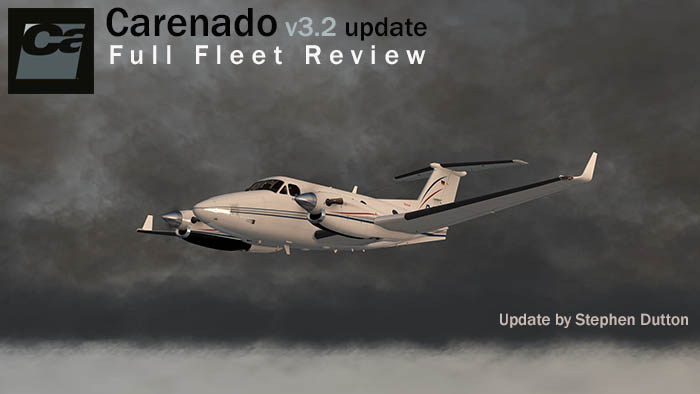
Aircraft Update : Carenado v3.2 X-Plane Fleet Overview Carenado updated their X-Plane Fleet of aircraft to v3.0 in early 2015 to cover the X-Plane version update of v10.30 which included the new GNS430/530 GPS systems. With the release of X-Plane v10.40 (which is officially still in progress to date at v10.45) Carenado have done another quieter version update to v3.1 since late October 2015 and then another to v3.2 early in this 2016 New Year to bring all the aircraft relevant and currently up to date with X-Plane. On the surface there was no really big changes like with v10.30 turnover, but their was a lot of small fine-tuning details done to aircraft in the Laminar Research update below the surface. These are incorporated in this v3.2 fine tune with .2 update covering the SASL v2.4 plugin changes that affected Apple's "El Capitan" system software, but more importantly there was of a lot of internal housekeeping done to make the series overall more compatible with one another (in older released aircraft they were updated to current standards). v9 aircraft was finally removed from all Carenado aircraft, dds texture files were also removed and all were replaced with .png files that give far higher quality and give much more better framerate and also removed the poor transparency issues that have been slightly annoying right across the Carenado range, if you know where to look all the v3.2 aircraft are all round better performers in texture quality and framerate performance. The new halo lighting was adjusted to current standards and sounds were better synchronized with X-Plane’s internal sound infrastructure. Most notable throughout the v3.2 changes has been the standardization of the manipulators to two versions, one the scroll wheel version with a switch off in the menu and the Christmas Tree version known as "SuperManipulator" that is scrollable in every direction. But overall there was more going other than the obvious changes noted when you refly the v3.2 aircraft. That became very obvious as I sorted through my list to update the aircraft over the Christmas/New Year break. I had a good barometer as I had around Aug/Sept 2015 done a bit of nostalgic flying with just wanting to catchup with some old favorites. You become not very aware of how much change is really taking place around you in X-Plane until when you pop yourself under the yoke of an older (but at the time of release excellent) aircraft. Two in question were the wonderful dual-tail C337 Skymaster and the V-Tailed V35 Bonanza. Both were awful and felt really dated. So when the C337 and the V35 were updated to v3.2 I wanted to assess the differences. The results are huge and the aircraft are very much now in context with the current standards. My current favorite the excellent F33A Bonanza also feels a worthy difference in all areas, from quality (textures), sounds, flight characteristics and the aircraft feels genuinely tighter. Bonus REP (Reality Expansion Packages) are also now available from Simcoders for the F33A and the CT210 Centurion II with more to follow. The biggest noted changes are to the more older aircraft of the Carenado fleet, nothing will bring them totally up to date as they were designed and textured in another era, but what can be revised has been done so, so they feel far better than they have a right to do so. No doubt that most changes listed here were in v3.0 last year, but it is the cohesion and intergration of all the changes that is significant in the v3.2 releases across all the fleet of aircraft that is to be noted. So here are the current lineup aircraft with v3.2 changes. Officially Carenado have not noted the v3.2 listed, as there is still a few aircraft to the New Year 2016 that have not been released, I will note them here when they are updated. If they are not listed then there is no v3.2 update for that aircraft, v3.2 update is for compatibility with Apple's "El Capitan" MACos compatibility, but both v3.1 and v3.2 change logs are noted below because v3.2 does have extra version changes on some aircraft as noted. If you already have any aircraft in the list then go to your X-Plane.OrgStore or Carenado account and update the aircraft to the v3.2 version (Just check the v3.2 aircraft has been updated). Mooney M20J 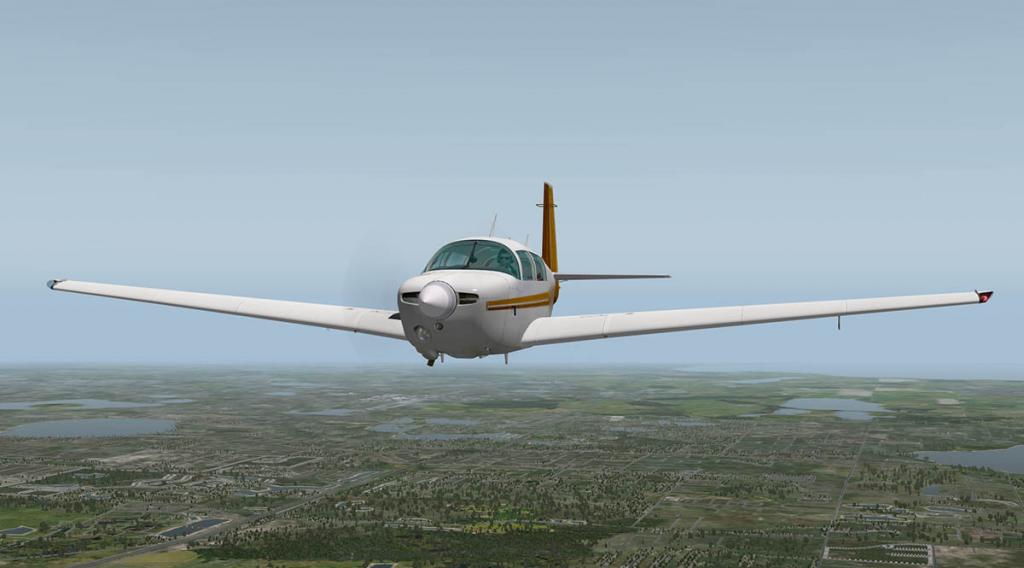
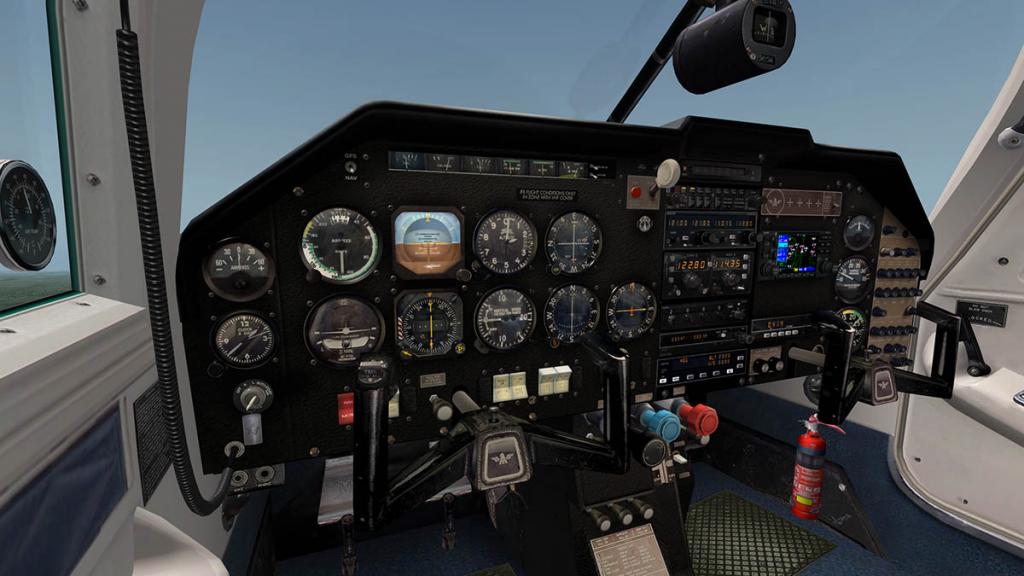
As noted the older the aircraft the more significant the feel of the changes in v3.2. The Mooney is the oldest of the lot, and v3.2 has brought the old girl back to life. For the pilots who lived with the aircraft in their heyday, they will fall in love with the aircraft all over again. v3.1 changes: -Broadened FOV to 150
-Linked volume to internal sound infrastructure
-Created mute button, which is synchronized with X-Plane’s internal sound infrastructure
-Deleted .dds files, due to poor appearance, and some transparency issues.
-Fixed lights to be 10.40+ compliant (Halo size remastered, so it doesn’t look huge on large monitors)
-Flight dynamics tweaked (Removed auto-toe-brake infrastructure, since X-Plane 10.40 now has it built-in, and could cause conflicts with plugin).v3.2 changes: -SASL plugin v2.4 updated for "El Capitan" MACos compatibility Mooney M20J US$26.95 : X-Plane.OrgStore _______________________________________________ Saratoga PA32R 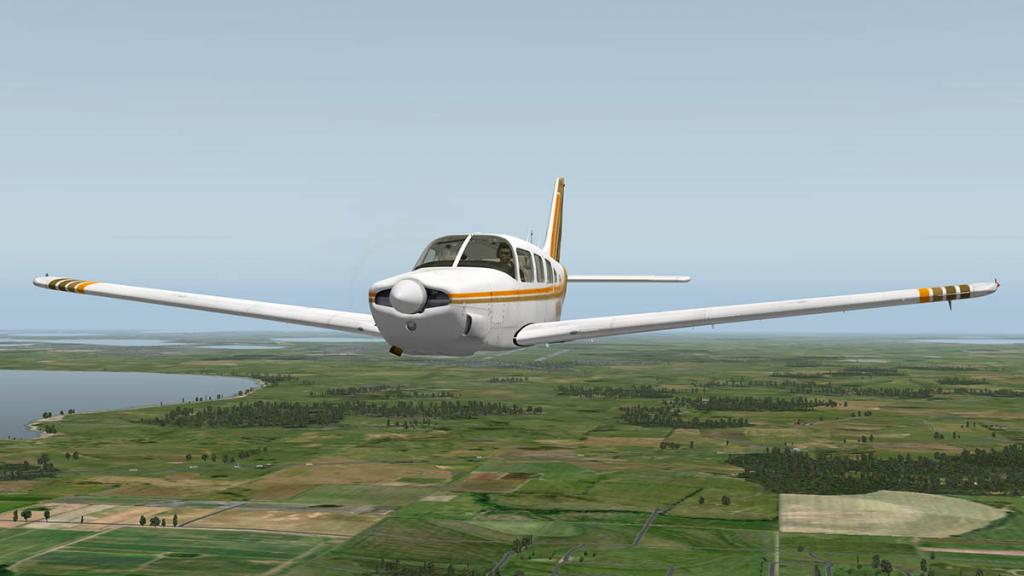
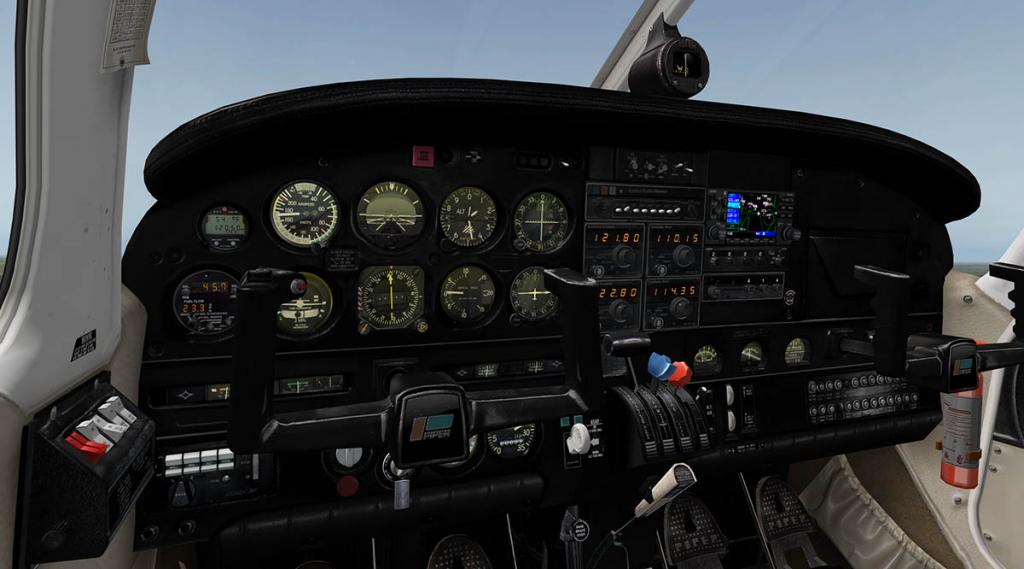
A big bruiser of a single-engined aircraft is the PA32R, with no autopilot aids to help you fly the aircraft either. The PA32 is another very early release from Carenado that has benefited from an upgrade. v3.1 changes: -Broadened FOV to 150
-Spool-up time from idle to full throttle more accurate.
-Linked volume to internal sound infrastructure
-Created mute button, which is synchronized with X-Plane’s internal sound infrastructure
-Deleted .dds files, due to poor appearance, and some transparency issues.
-Fixed lights to be 10.40+ compliant (Halo size remastered, so it doesn’t look huge on large monitors)
-Flight dynamics tweaked (Removed auto-toe-brake infrastructure, since X-Plane 10.40 now has it built-in, and could cause conflicts with plugin).v3.2 changes: -SASL plugin v2.4 updated for "El Capitan" MACos compatibility Saratoga PA32R US$26.95 : X-Plane.OrgStore _______________________________________________ Piper PA28 181 Archer II 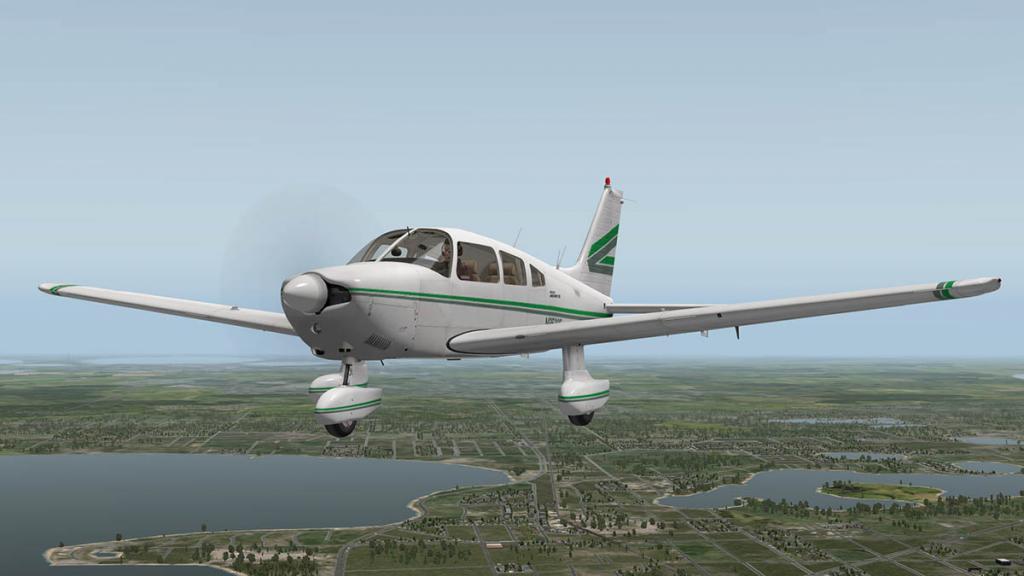
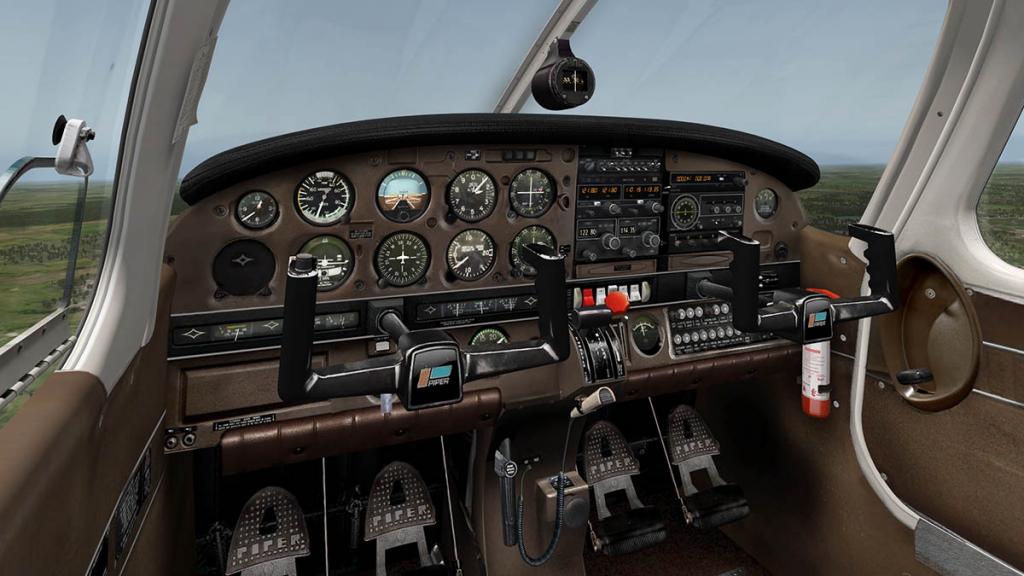
The very popular trainer and weekender aircraft the Piper Archer ll is a very popular machine with 32,000 aircraft produced, another great upgrade here in v3.2 with a lot of extensive changes and a hidden autopilot added (via keyboard shortcut). If in the air although I needed a lot of trim (nose down) to keep the aircraft level, but once trimmed the Archer ll was a nice aircraft to fly. -Broadened FOV to 150
-Linked volume to internal sound infrastructure
-Created mute button, which is synchronized with X-Plane’s internal sound infrastructure
-Deleted .dds files, due to poor appearance, and some transparency issues.
-Fixed lights to be 10.40+ compliant (Halo size remastered, so it doesn’t look huge on large monitors)
-Flight dynamics tweaked (Removed auto-toe-brake infrastructure, since X-Plane 10.40 now has it built-in, and could cause conflicts with plugin).
-Added option to make windows 100% transparent (in Options menu)
-Tweaked Startup Procedure
-Tweaked stall characteristics and stall horn
-Added Autopilot as hidden pop-up (activatable via keyboard short cut: xap/panels/3)v3.2 changes: -SASL plugin v2.4 updated for "El Capitan" MACos compatibility -Fixed internal startup engine sounds.
-Set glass parts to hide correctlyPiper PA28 181 Archer II US$26.95 : X-Plane.OrgStore _______________________________________________?????????????? Cessna 152 II
A development of the late 1950's C150, the C152 ll is one of the most basic trainers flying. v3.2 has seen a huge improvement in this aircraft in handling (great before) but overall the upgraded quality also shows. newly installed hidden autopilot is not really needed on the tiddler C152 but welcome.
v3.1 changes:
-Broadened FOV to 150
-Spool-up time from idle to full throttle more accurate.
-Linked volume to internal sound infrastructure
-Created mute button, which is synchronized with X-Plane’s internal sound infrastructure
-Deleted .dds files, due to poor appearance, and some transparency issues.
-Fixed lights to be 10.40+ compliant (Halo size remastered, so it doesn’t look huge on large monitors)
-Flight dynamics tweaked (Removed auto-toe-brake infrastructure, since X-Plane 10.40 now has it built-in, and could cause conflicts with plugin).
-Added Autopilot as hidden pop-up (activatable via keyboard short cut: xap/panels/3)v3.2 changes: -SASL plugin v2.4 updated for "El Capitan" MACos compatibility Cessna 152 II US$24.95 : X-Plane.OrgStore _______________________________________________ Cessna 172 IIN Skyhawk 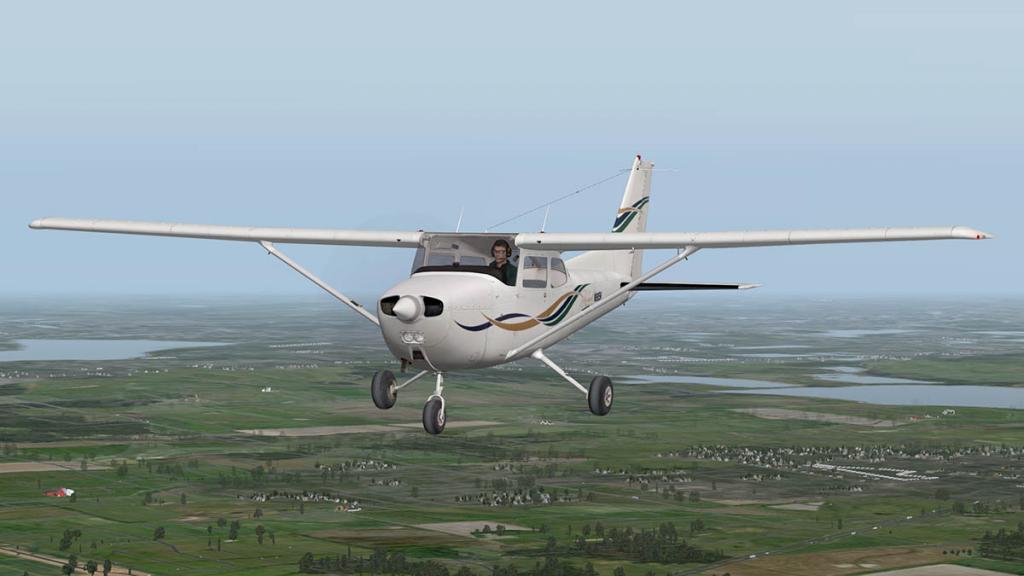
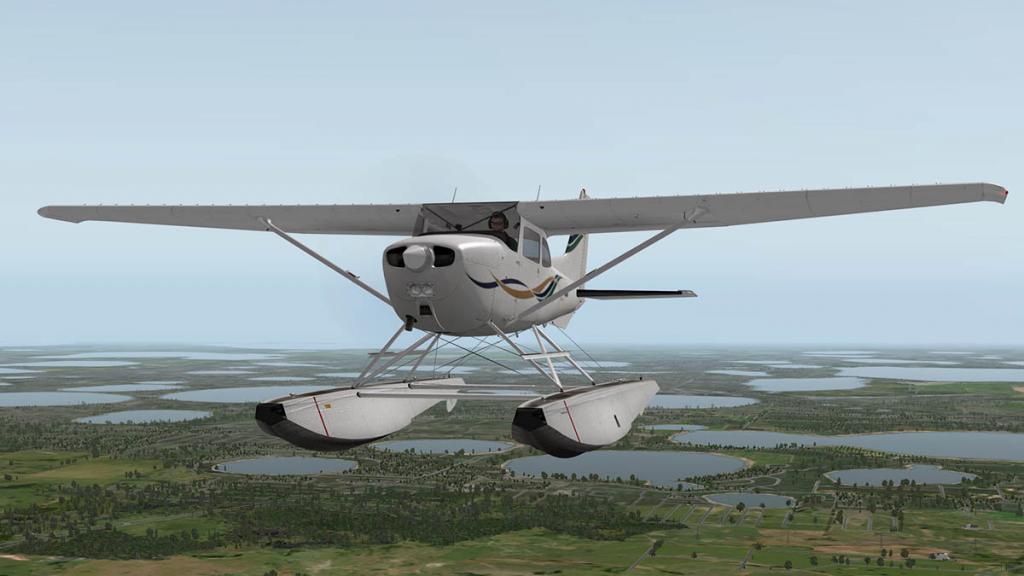
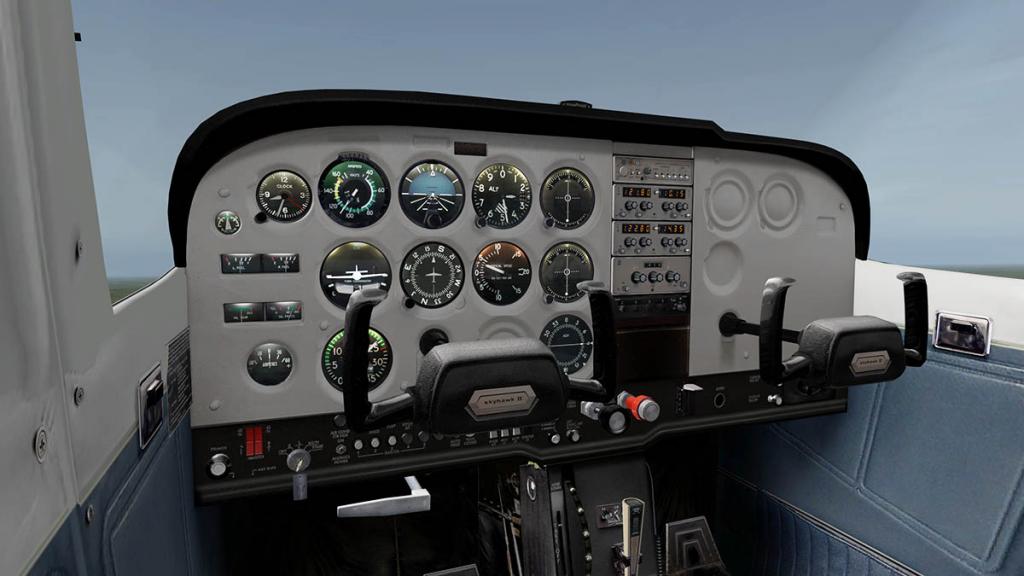
43,000 C172 Skyhawks have been built and Cessna are still churning them out like no tomorrow. Like the baby C152 it is a simple basic trainer aircraft, but you get a float version included to add in for more versatility. Another aircraft that has benefited from the 3.2 update is the C172ll, which feels, looks and flies far better than the earlier C172 versions. Now the C172 has the added hidden autopilot via the keyboard. v3.1 changes: -Broadened FOV to 150
-Startup procedure, now won’t add mixture and will also require a little throttle for engine to start
-Nose gear contact point
-Spool-up time from idle to full throttle more accurate.
-Linked volume to internal sound infrastructure
-Created mute button, which is synchronized with X-Plane’s internal sound infrastructure
-Deleted .dds files, due to poor appearance, and some transparency issues.
-Fixed lights to be 10.40+ compliant (Halo size remastered, so it doesn’t look huge on large monitors)
-Flight dynamics tweaked (Removed auto-toe-brake infrastructure, since X-Plane 10.40 now has it built-in, and could cause conflicts with plugin).
-Added option to make windows 100% transparent (in Options menu)
-Added Autopilot as hidden pop-up (activatable via keyboard short cut: xap/panels/3)v3.2 changes: -SASL plugin v2.4 updated for "El Capitan" MACos compatibility Cessna 172N II Skyhawk $24.95 : X-Plane.OrgStore _______________________________________________ Next are a trio of Beechcraft Bonanzas... F33A Bonanza 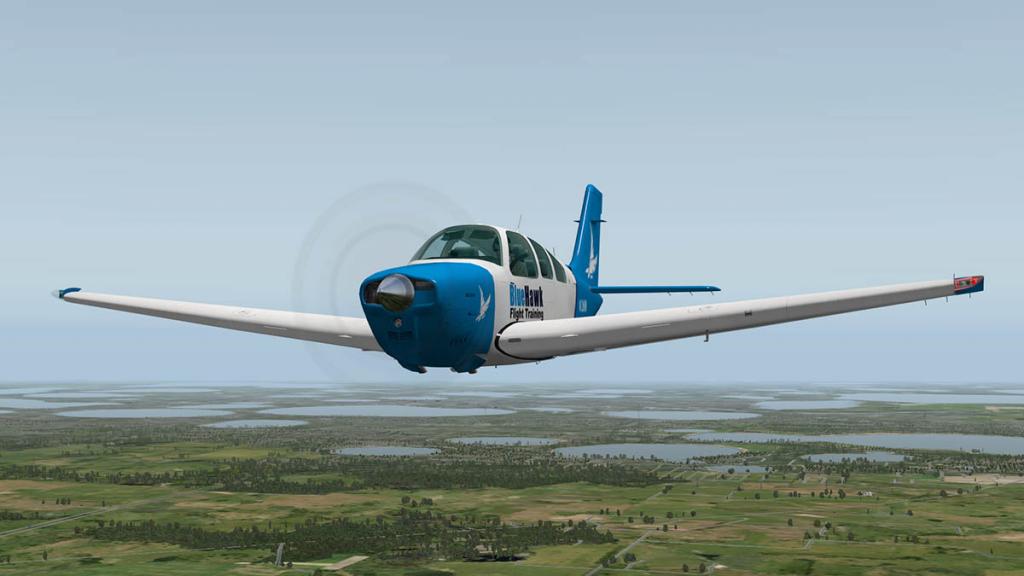
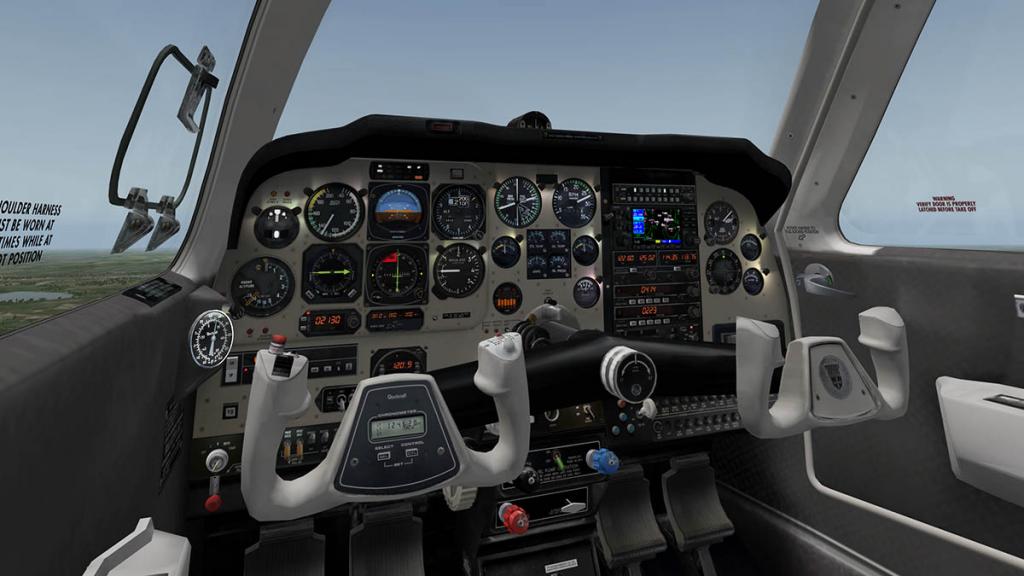
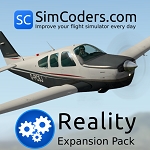
v3.1 changes: -Broadened FOV to 150
-Spool-up time from idle to full throttle more accurate.
-Linked volume to internal sound infrastructure
-Created mute button, which is synchronized with X-Plane’s internal sound infrastructure
-Deleted .dds files, due to poor appearance, and some transparency issues.
-Fixed lights to be 10.40+ compliant (Halo size remastered, so it doesn’t look huge on large monitors)
-Flight dynamics tweaked (Removed auto-toe-brake infrastructure, since X-Plane 10.40 now has it built-in, and could cause conflicts with plugin).v3.2 changes: -SASL plugin v2.4 updated for "El Capitan" MACos compatibility -Tweaked Hobbs meter 1/10th Hr. ring -Tweaked HPa baro ring to turn over in sync with larger numbers. F33A Bonanza US$26.95 : X-Plane.OrgStore - SimCoder REP Package $US19.95 _______________________________________________ V35 Bonanza 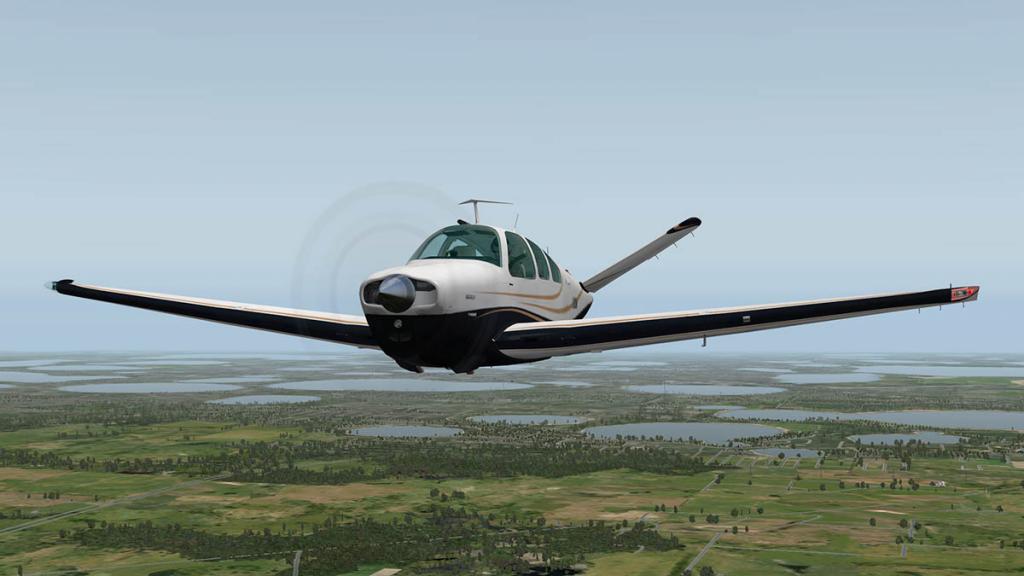
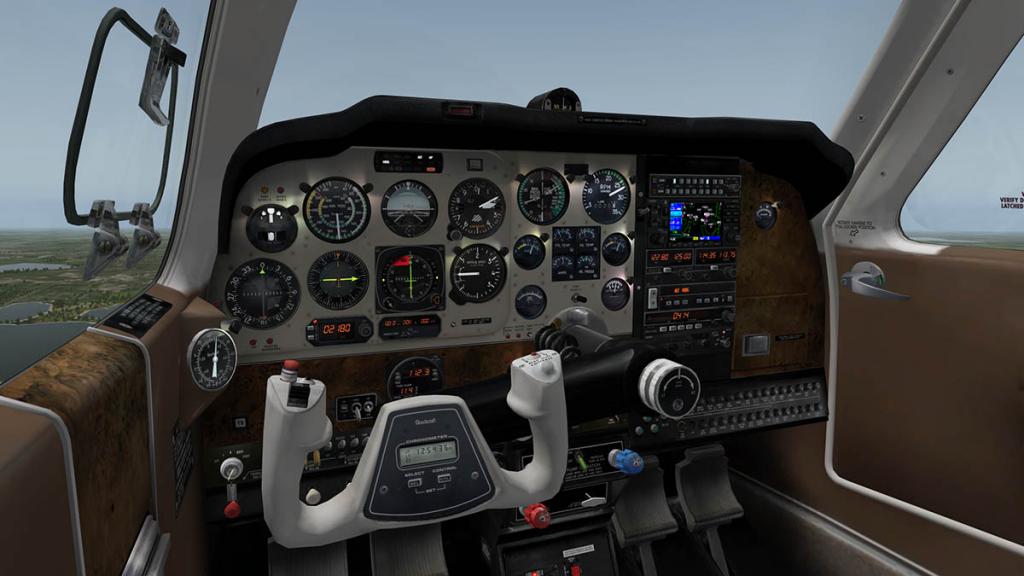
The V stands for V-Tail in this variant of the Bonanza series. Unusual to fly (in other words tricky) but rewarding. The V35 is very different than the F33A from the pilots point of view, single yoke and reduced avionics kit makes the V35 feel more old-fashioned. v3.2 update has thankfully transformed the aircraft to the same quality and flying standards as the other two Bonanzas. v3.1 changes: -Broadened FOV to 150
-Spool-up time from idle to full throttle more accurate.
-Linked volume to internal sound infrastructure
-Created mute button, which is synchronized with X-Plane’s internal sound infrastructure
-Deleted .dds files, due to poor appearance, and some transparency issues.
-Fixed lights to be 10.40+ compliant (Halo size remastered, so it doesn’t look huge on large monitors)
-Flight dynamics tweaked (Removed auto-toe-brake infrastructure, since X-Plane 10.40 now has it built-in, and could cause conflicts with plugin).v3.2 changes: -SASL plugin v2.4 updated for "El Capitan" MACos compatibility V35 Bonanza US$26.95 : X-Plane.OrgStore _______________________________________________ A36 Bonanza 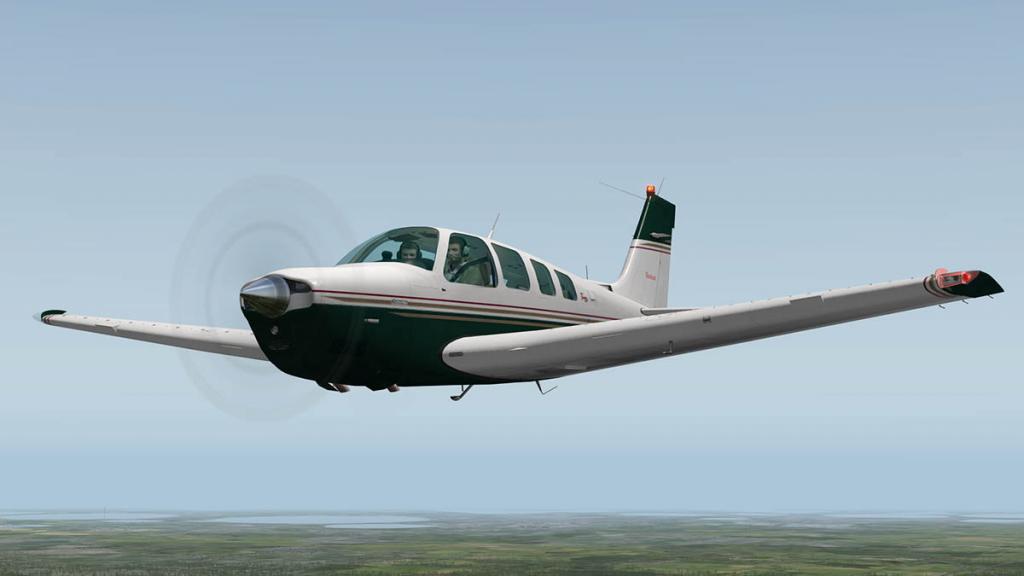
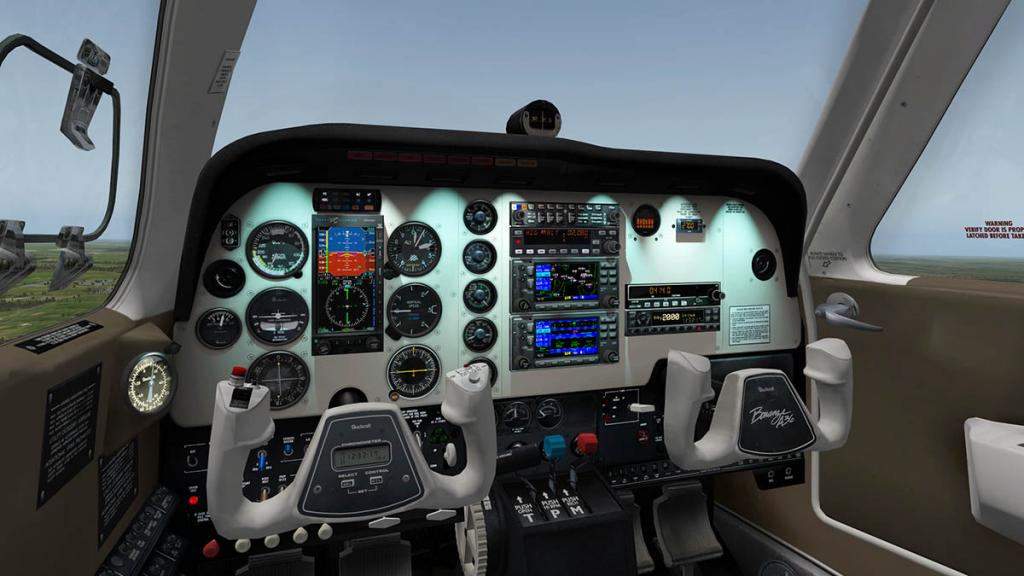
The A36 is quite a significantly different aircraft than the other two Bonanzas. First it is longer by 10 inches (extra windows) has more power in 300 hp (224 kW) (the F33A has 285hp) but the biggest differences are in the cockpit. Both yokes are now separated (not mounted on a central crossbar) and there is the comprehensive Aspen Avionics EFD1000 PRO PFD avionics suite. In feel and flying it is a very different style of Bonanza aircraft, but the A36 is still an excellent single-engined GA. (listed also is v3.0 for Aspen EFD1000 changes) -Added scroll wheel support to knobs, so now knobs have click/drag/scroll functionality all in one (see documentation folder for explanation on how these work).
-Installed X-plane 10.30 GNS430, along with all 3D cockpit manipulators and assets
-Eliminated noise during load with engines running and reduced Doppler-related pitch intensity (noticeable before during fast camera switching)
-Fixed playback issue relating to above sound fix.
-Implemented auto-toe-brake for those without hardware toe brakes. (Automatically senses toe-brake hardware and disables plugin-based system, to avoid conflicts)
-tweaked flight dynamics
-Used new v10.30+ force datarefs to tweak engine torque effects (more future proof and tweakable)
-Pre-compressed livery files to .dds for faster livery load times
-Implemented COM2 Audio out for online use of Com2 radios for broadcasting
-Removed v9-related files
-Fixed Aspen EFD1000 to work in all French areas and airports
-Made Aspen EFD1000 more future-proof by allowing future 5-digit airport codes to be parsed out for use in moving map.v3.1 changes: -Broadened FOV to 150
-Spool-up time from idle to full throttle more accurate.
-Linked volume to internal sound infrastructure
-Created mute button, which is synchronized with X-Plane’s internal sound infrastructure
-Deleted .dds files, due to poor appearance, and some transparency issues.
-Fixed lights to be 10.40+ compliant (Halo size remastered, so it doesn’t look huge on large monitors)
-Flight dynamics tweaked (Removed auto-toe-brake infrastructure, since X-Plane 10.40 now has it built-in, and could cause conflicts with plugin).v3.2 changes: -SASL plugin v2.4 updated for "El Capitan" MACos compatibility -Re-programmed clipping (dynamic cropping) for Aspen EFD1000 pop-up window, using SASL 2.4's new
-Re-programmed functionality to save last known Aspen window size and position.
-NOTE: to change default positions and size, please make sure the plane (or plugin) is NOT RUNNING in X-Plane, before editing the "AspenConfig.txt" file.A36 Bonanza US$26.95 : X-Plane.OrgStore _______________________________________________ CT210M Centurion II
The CT210M Centurion is the non-strut turbo version with the 310 hp (231 kW) TSIO-520-R engine. In other words it is a fast sweet little aircraft.
The v3.1 update was basic but worthy, however the SimCoder REP package really enhances the aircraft except for starting the thing which is painful.
Full CT210M and REP review here: Aircraft Update - CT210M Centurion II v3.1 by Carenado + Reality Expansion Pack by SimCoders
v3.1 changes:
-Broadened FOV to 150 (Useful for multi-monitor use, where 120 didn't cut it).
-Linked volume to internal sound infrastructure (No more detached control over plugin-based audio and X-Plane internal audio. Now, X-Plane's settings transfer to plugin-based sounds).
-Created mute button, which is synchronized with X-Plane’s internal sound infrastructure
-Deleted .dds files, due to poor appearance, and some transparency issues.
-Fixed lights to be 10.40+ compliant (Halo size remastered, so it doesn’t look huge on large monitors)
-Flight dynamics tweaked (Removed auto-toe-brake infrastructure, since X-Plane 10.40 now has it built-in, and could cause conflicts with plugin).
Additionally, the CT210 received the following updates:
-Added pop-up autopilot
-Tweaked landing gear sound
-improved panel night lightingv3.2 changes: -SASL plugin v2.4 updated for "El Capitan" MACos compatibility CT210M Centurion II US$29.95 : X-Plane.OrgStore - SimCoder REP Package $US19.95
_______________________________________________
CT206H Stationair HD Series
An aircraft I really loved from first (flight) sight. Lovely panel with a large screen GNS 530 GPS looks amazing in flight and in use. The v3.2 update gives the aircraft a nice touchup and all round better feel and better quality. Now the CT206H comes with the new Carenado Garmin G1000 twin-panel display option for more versatility and detail.
Standard panel version review here: Aircraft Review : CT206H Turbo Stationair HD Series by Carenado
v3.1 changes:
-Added SuperManipulator support
-Broadened FOV to 150
-Linked volume to internal sound infrastructure
-Created mute button, which is synchronized with X-Plane’s internal sound infrastructure
-Deleted .dds files, due to poor appearance, and some transparency issues.
-Fixed lights to be 10.40+ compliant (Halo size remastered, so it doesn’t look huge on large monitors)
-Flight dynamics tweaked (Removed auto-toe-brake infrastructure, since X-Plane 10.40 now has it built-in, and could cause conflicts with plugin).
-Made spill lights (Taxi and Landing) work with HDR off.v3.2 changes: -SASL plugin v2.4 updated for "El Capitan" MACos compatibility -Fixed "first load" bug for "C" and "O" popup menus (Standard Panel only) -Addressed Linux bug (Standard Panel only) CT206H Stationair HD Series US$29.95 : X-Plane.OrgStore - CT210 G1000 Extension Pack $US14.95
_______________________________________________
CT182T Skylane G1000 HD Series
The CT182T is Carenado's first fully equipped Garmin G1000 avionics package. Released in September 2015 the CT182T already was v3.1 compliant, so only v3.2 changes are noted.
Exclusive features of the G1000 include:
- Exclusive Carenado G1000 (PFD and MFD)
- Terrain Awareness map mode
- Different declutter levels
- Advance menus and cursor with scroll wheel, click/hold or /drag
- Aux- Trip Planning Window
- Checklist mode
- Crisp, vector-based water data
- Pop-up windows can be resized and moved around the screen
- Pristine scroll wheel support
- FPS-friendly terrain map
v3.2 changes:
-SASL plugin v2.4 updated for "El Capitan" MACos compatibilityCT182T Skylane G1000 HD Series US$34.95 : X-Plane.OrgStore
_______________________________________________
C337 Skymaster HD Series
Horrified that my beloved C337 Twin-Engined Skymaster was feeling so out of date. The earlier v3.1 update was thankfully very welcome and all the worries were put to rest as the Skymaster soared again. An amazing hybrid of an aircraft is the push-puller C337 and the detailed panel is one of the best in the business.
v3.1 changes:
-Broadened FOV to 150
-Linked volume to internal sound infrastructure
-Created mute button, which is synchronized with X-Plane’s internal sound infrastructure
-Deleted .dds files, due to poor appearance, and some transparency issues.
-Fixed lights to be 10.40+ compliant (Halo size remastered, so it doesn’t look huge on large monitors)
-Flight dynamics tweaked (Removed auto-toe-brake infrastructure, since X-Plane 10.40 now has it built-in, and could cause conflicts with plugin).
-Updated engine behaviour for more realism during startupv3.2 changes: -SASL plugin v2.4 updated for "El Capitan" MACos compatibility C337 Skymaster HD Series US$29.95 : X-Plane.OrgStore
_______________________________________________
Beechcraft type 58 Baron
A powerful Twin is always a good thing to fly. The Baron B58 is such an aircraft, and has a very nice panel and avionics to suit. Excellent KFC225 Autopilot and two GN430 GPS units give you good systems to fly distances. The v3.1 update covers the basics and brings the aircraft up to date and freshens the B58 into a very good twin.
v3.1 changes: -Broadened FOV to 150
-Spool-up time from idle to full throttle more accurate.
-Linked volume to internal sound infrastructure
-Created mute button, which is synchronized with X-Plane’s internal sound infrastructure
-Deleted .dds files, due to poor appearance, and some transparency issues.
-Fixed lights to be 10.40+ compliant (Halo size remastered, so it doesn’t look huge on large monitors)
-Flight dynamics tweaked (Removed auto-toe-brake infrastructure, since X-Plane 10.40 now has it built-in, and could cause conflicts with plugin).v3.2 changes: -SASL plugin v2.4 updated for "El Capitan" MACos compatibility -Fixed glideslope needle
-Changed ADF1 radio tuner, to not enter negative numbersB58 Baron US$27.95 : X-Plane.OrgStore
_______________________________________________
Cessna 340 ll HD Series
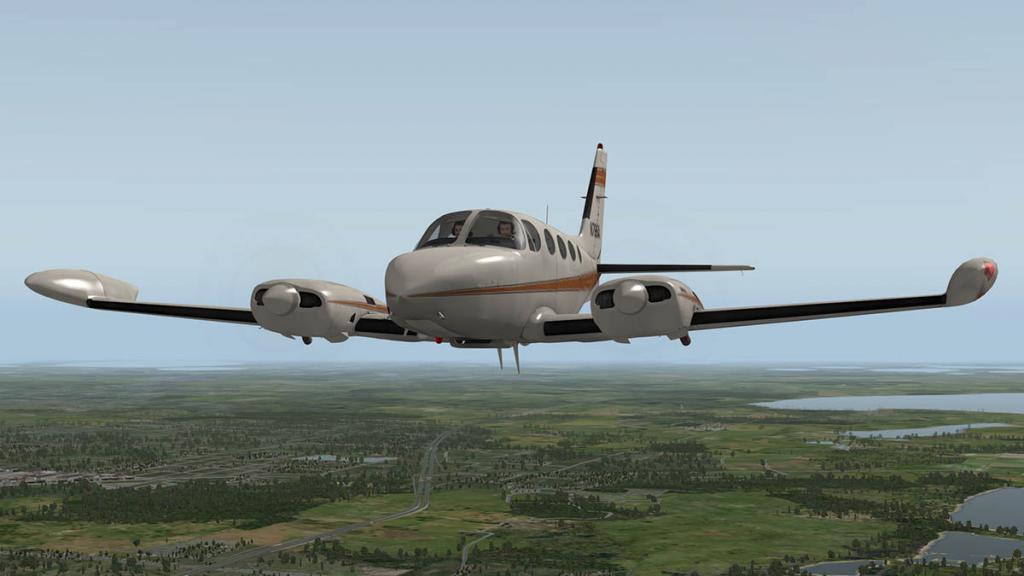
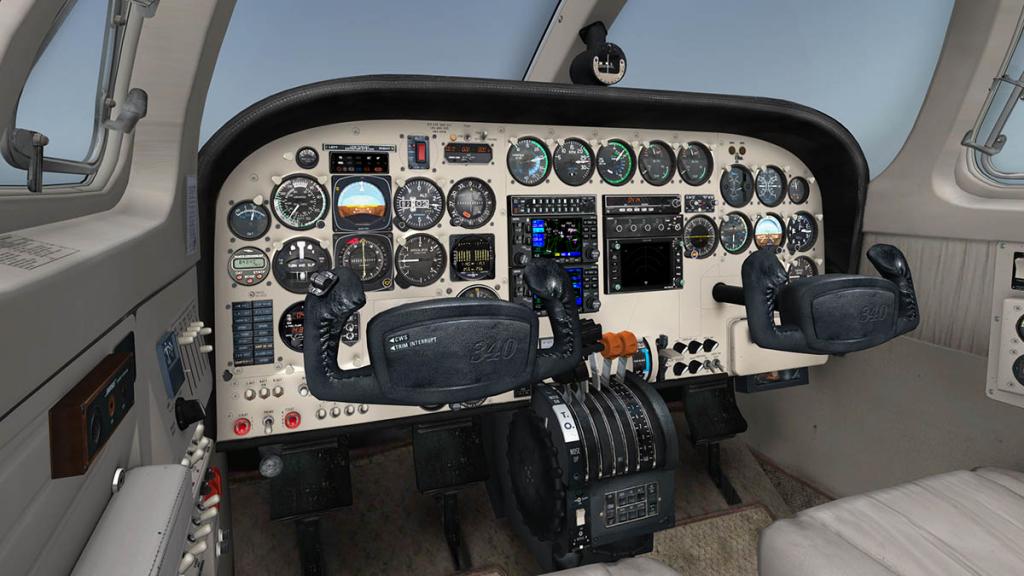
Bigger and a more powerful Twin is the C340 ll. It is pressurised as well which means it can fly higher and faster over distances of 1600 miles. In v3.1 the aircraft has had quite a bit of an overhaul and it comes out of the changes a much more rounded and usable aircraft. Overall the C340 ll feels far more solid in quality (It wasn't bad in the first place) and detail is now more intricate and the C340 ll is nicer to fly. v3.1 changes:
-Broadened FOV to 150
-Linked volume to internal sound infrastructure
-Created mute button, which is synchronized with X-Plane’s internal sound infrastructure
-Deleted .dds files, due to poor appearance, and some transparency issues.
-Fixed lights to be 10.40+ compliant (Halo size remastered, so it doesn’t look huge on large monitors)
-Flight dynamics tweaked (Removed auto-toe-brake infrastructure, since X-Plane 10.40 now has it built-in, and could cause conflicts with plugin).
-Fixed “divided by zero” error in Fuel Flow meter
-reduced engine side cant, due to anti-torque measures already being taken care of via plugin.v3.2 changes: -SASL plugin v2.4 updated for "El Capitan" MACos compatibility Cessna 340 ll HD Series US$29.95 : X-Plane.OrgStore
_______________________________________________
PA46 Malibu Mirage 350P HD Series
The PA46 Mirage is designed to have all the attributes of a light jet without the cost. It is powered by the powerful Lycoming TIO-540-AE2A 350 hp (260 kW) engine with a top speed of 234 kn (269 mph; 433 km/h). The aircraft was released by Carenado in March 2014, not old in X-Plane years. So the aircraft was still very good. The v3.1 update did however do a little fine tuning around the edges and brought the aircraft to the current standard, and yes it feels all the better for the changes and a slightly lighter framerate gain as well.
Release Review: Aircraft Review : Piper PA-46 Malibu Mirage HD Series by Carenado
v3.1 changes:
-Broadened FOV to 150
-Linked volume to internal sound infrastructure
-Created mute button, which is synchronized with X-Plane’s internal sound infrastructure
-Deleted .dds files, due to poor appearance, and some transparency issues.
-Fixed lights to be 10.40+ compliant (Halo size remastered, so it doesn’t look huge on large monitors)
-Flight dynamics tweaked (Removed auto-toe-brake infrastructure, since X-Plane 10.40 now has it built-in, and could cause conflicts with plugin).
-Updated engine behaviour for more realism during startupv3.2 changes: -SASL plugin v2.4 updated for "El Capitan" MACos compatibility -Tweaked V/S scroll manipulator for easier use. PA46 Malibu Mirage 350P HD Series US$29.95 : X-Plane.OrgStore
_______________________________________________
Pilatus PC12 HD Series
Certainly the best Carenado release of the year in 2015. The PC-12 is an extraordinary machine and no one liked it? Lately it has found more and more converts and its future as a classic aircraft will hopefully be finally realised. Overwhelming quality and a challenging machine to fly, the PC-12 is one of my must go to aircraft.
v3.2 changes are extensive and include a full aircraft tuning update. Lighter quality textures help with the framerate as well. Only blotch is the still too bright non-adjustable panel lighting.
Release Review: Aircraft Review : Pilatus PC12 HD Series by Carenado
v3.1 changes:
-Broadened FOV to 150
-Linked volume to internal sound infrastructure
-Created mute button, which is synchronized with X-Plane’s internal sound infrastructure
-Deleted .dds files, due to poor appearance, and some transparency issues.
-Fixed lights to be 10.40+ compliant (Halo size remastered, so it doesn’t look huge on large monitors)
-Flight dynamics tweaked (Removed auto-toe-brake infrastructure, since X-Plane 10.40 now has it built-in, and could cause conflicts with plugin).
-Tweaked spinners to look more chrome
-Pedestal night lighting (text) improved under certain weather conditions
-Improved texturing of baggage compartment curtain
-closed off baggage compartment graphical glitch
-Fixed “divided by zero” error in digital Fuel Flow gauge
-improved standby battery logic
-air conditioner/heater logic implemented.
-added Fuel Shutoff lever logic (Firewall)
-added ECS Shutoff lever logic (Firewall)v3.2 changes: -SASL plugin v2.4 updated for "El Capitan" MACos compatibility -Implemented autopilot "Up" and "Dn" buttons for use with "IAS" mode. (Increase/decrease target airspeed). -Fixed looping air conditioning sound thud. -HSI night illumination with HDR disabled fixed. -Fixed Door Handle -improved standby bus light logic Pilatus PC12 HD Series US$34.95 : X-Plane.OrgStore
_______________________________________________
C208B Grand Caravan HD Series
The Cessna 208B Grand Caravan is overwhelmingly the largest selling Carenado aircraft in X-Plane, it is hugely popular as well. I call mine "The Mistress" because I always wanted to slip away with her and just have a lot of fun (flying not hanky panky). But I was throughout 2015 feeling the old girl was showing her age, yes the Caravan actually felt tired. With poor manipulators and average performance I was finding the aircraft below par. So like a few other aircraft here the v3.1 update was hopefully the tonic the Caravan needed to continue our love affair, thankfully it was extensive and the aircraft is all the better for the update changes and fine-tuning... just don't tell the wife!
SuperCargoMaster addon is a must have, but you have to have the main C208B to install it.
v3.1 changes:
-Broadened FOV to 150
-Spool-up time from idle to full throttle more accurate.
-Linked volume to internal sound infrastructure
-Created mute button, which is synchronized with X-Plane’s internal sound infrastructure
-Deleted .dds files, due to poor appearance, and some transparency issues.
-Fixed lights to be 10.40+ compliant (Halo size remastered, so it doesn’t look huge on large monitors)
-Flight dynamics tweaked (Removed auto-toe-brake infrastructure, since X-Plane 10.40 now has it built-in, and could cause conflicts with plugin).
-Plugin-enhanced - FPS-optimized model.
-Night light effects - Prop disc effect
-New plug-in controlled 3D soundsv3.2 changes: -SASL plugin v2.4 updated for "El Capitan" MACos compatibility C208B Grand Caravan HD Series US$29.95 : X-Plane.OrgStore - SuperCargoMaster Expansion Pack $US7.95
_______________________________________________
The King Airs...
C90B King Air HD Series
The Cessna KingAir series of aircraft is one of the great aviation success stories, and Carenado have produced three of the very best for X-Plane. The C90B is smallest of the range, but a very powerful aircraft.
Carenado introduced a chrome feature in 2015, and in the v3.1update the C90B gets the new shiny treatment. All Carenado KingAir's are quite heavy on frameweight, so the redo of textures and efficiency gains are more noticeable on these aircraft, and that quality of fine tuning of textures has seen better changes to the the smaller text detailing (sharper) around the cockpit.
v3.1 changes:
-Broadened FOV to 150
-Linked volume to internal sound infrastructure
-Created mute button, which is synchronized with X-Plane’s internal sound infrastructure
-Deleted .dds files, due to poor appearance, and some transparency issues.
-Fixed lights to be 10.40+ compliant (Halo size remastered, so it doesn’t look huge on large monitors)
-Flight dynamics tweaked (Removed auto-toe-brake infrastructure, since X-Plane 10.40 now has it built-in, and could cause conflicts with plugin).
-Tweaked spinners to look more chrome
-Pedestal night lighting (text) improved under certain weather conditions
-Improved texturing of baggage compartment curtain
-closed off baggage compartment graphical glitch
-Fixed “divided by zero” error in digital Fuel Flow gaugev3.2 changes: -SASL plugin v2.4 updated for "El Capitan" MACos compatibility C90B King Air HD Series US$34.95 : X-Plane.OrgStore
_______________________________________________
Beechcraft King Air 200 HD Series
You can't ignore the workhorse B200, it is an awesome machine. Multirole you can find so many variations to fly this aircraft over huge distances (over 2000miles) and living in Australia I have all flying space to spare.
The B200 get the same changes as the B90C in v3.2 with the same results and that makes it a better more solid aircraft all round.
Release Review: Aircraft Review : B200 King Air HD Series by Carenado
v3.1 changes:
-Broadened FOV to 150
-Linked volume to internal sound infrastructure
-Created mute button, which is synchronized with X-Plane’s internal sound infrastructure
-Deleted .dds files, due to poor appearance, and some transparency issues.
-Fixed lights to be 10.40+ compliant (Halo size remastered, so it doesn’t look huge on large monitors)
-Flight dynamics tweaked (Removed auto-toe-brake infrastructure, since X-Plane 10.40 now has it built-in, and could cause conflicts with plugin).
-Tweaked spinners to look more chrome
-Pedestal night lighting (text) improved under certain weather conditions
-Improved texturing of baggage compartment curtain
-closed off baggage compartment graphical glitch
-Fixed “divided by zero” error in digital Fuel Flow gaugev3.2 changes: -SASL plugin v2.4 updated for "El Capitan" MACos compatibility -Tweaked startup auto arm, igniters, fuel in time, and spool up time compared to real videos. Beechcraft King Air 200 US$34.95 : X-Plane.OrgStore
_______________________________________________
Beechcraft 1900 HD Series
The B1900D is your go to aircraft for short regional point to point flying. X-Plane regional flying is now one of the most comprehensive in the simulator and if you don't have the B1900D you are missing out on the very best aircraft for the segment in history.
v3.2 brings the same fine-tuning as the other KingAirs and it is a far more worthy aircraft for it. Once the King of the below average frameweight machines, the B1900D has progressed to something now as normal with constant work over updates on the heavy early textures, in other words it is now a very flyable and worthy machine.
Release Review: Aircraft Review : Beechcraft 1900D HD Series by Carenado
v3.1 changes:
-Broadened FOV to 150
-Linked volume to internal sound infrastructure
-Created mute button, which is synchronized with X-Plane’s internal sound infrastructure
-Deleted .dds files, due to poor appearance, and some transparency issues.
-Fixed lights to be 10.40+ compliant (Halo size remastered, so it doesn’t look huge on large monitors)
-Flight dynamics tweaked (Removed auto-toe-brake infrastructure, since X-Plane 10.40 now has it built-in, and could cause conflicts with plugin).
-Tweaked spinners to look more chrome
-Pedestal night lighting (text) improved under certain weather conditions
-Improved texturing of baggage compartment curtain
-Fixed “divided by zero” error in digital Fuel Flow gaugev3.2 changes: -SASL plugin v2.4 updated for "El Capitan" MACos compatibility -HSI night illumination with HDR disabled fixed. Beechcraft 1900D HD Series US$34.95 : X-Plane.OrgStore
_______________________________________________
As noted at the start of this update overview is the main thing that came across during the creation and flying for this update review. Is that all these aircraft are in v3.2 specification very mature and not so varied as before in their differences in quality and performance. In the HD (High-Definition) Series you can expect a very level balance throughout any of the aircraft in quality, performance and operation (simulator and aircraft) and all are very current with the X-Plane v10.40 requirements. And that is no mean feat considering the sheer breadth of the aircraft available for X-Plane from Carenado going into 2016.
Stephen Dutton
12th January 2016 (revised)Copyright©2016: X-PlaneReviews -
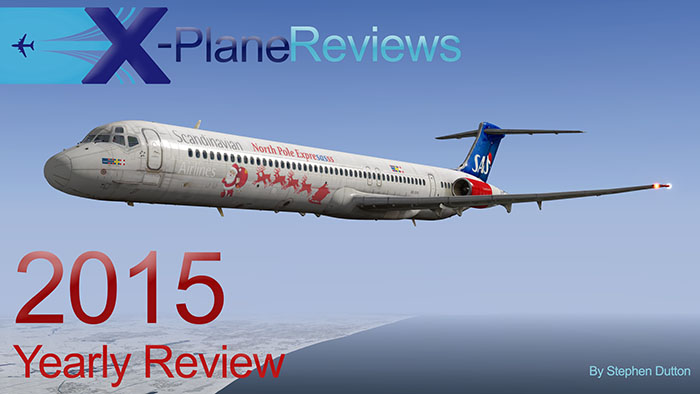
X-PlaneReviews - Yearly Review 2015 “So this is Xmas, And what have you done, Another year over, And a new one just begun, And so this is Xmas, I hope you have fun, The near and the dear one, The old and the young… A very Merry Xmas, And a happy New Year, Let's hope it's a good one, Without any fear (Happy Xmas “War is Over” John Lennon).
How many years since that recording was made? 44 years believe it or not and it feels that not much has changed with the world, so how would have John Lennon felt today, maybe like then it is simply a fruitless campaign, there is just too much hate around us that it still overwhelms the love.
But thankfully that hate does not spill over into our X-Plane world (except on some forums), but there is certainly a lot of love around here for all of us in creation, cooperation and the love of sharing shows that it can be done when you focus and love something as much as we do with our digital and online flying, we get it right so why can’t everyone else…
Overall it was another standout year for the simulator, there was no real highpoints or low points, but just a steady stream of releases and great ideas. Cohesion is certainly covering the simulator and it feels now more solid than ever, but that also depends on the huge amount of add-ons in plugins that you can hang off X-Plane now, personally myself I don’t throw everything into the box, as the main reason is I need a pretty solid platform for reviews, so when thoroughly tested and proven and mostly if it can add in a real benefit and then and only then does it go into the plugin folder.
One major annoyance that I have found this year is the growing amount of developers that will only create “Windows” only applications (they say they will do Mac/Linux version but never do). One issue is that this treatment means they won’t get any exposure from this site (meaning sales) but X-Plane is a multi-platform simulator and not FS based windows sim, noting I should use “windows” is defeating the idea as Mac/Linux users still don’t have access… the total reality of this approach is the losers are the developers themselves as their sometimes brilliant work is usually mostly not taken up as a global application in the simulator and is usually then left sidelined and waysided in the process, it is not easy I admit to convert Windows code to Mac/Linux based code, but that is what the simulator is built on and more Macs than ever are being sold today as desktop systems, it is your loss dev’s not mine.
Laminar Research
As usual the beta run from Laminar Research is usually the high point in changes to the simulator. This year it was the v10.40 run that was very successful in being very solid in it’s underlying foundations.
The highlight was of course the extended scenery and the option to load area in 4×3 DSFs (tiles) for less blurry long distance viewing. LR at the same time provided a new way of loading the DSF’s and with more multicore processing to get faster load times for more area being loaded. The result was a transformation of your X-Plane landscape that was wonderful to behold (if ages in coming) and certainly made the simulator far more competitive.The global airport domination carried on with now thousands (2,306) of 3-D default airports in situ ready and waiting for your personal use. However my original fears came back in receptive horror that every airport I landed at then had double objects and nothing looked anything like normal, so “Global Airports” are now always out of my custom scenery folder more than being actually in it (usually in there just for beta upgrades) so it is of simply no use to me? Laminar Research notes that it is the responsibility of the add-on developers to make sure there is no conflict, but I always thought that was a huge big ask from the first off anyway and that is certainly turning out to be so, the fix needs to come internally.
There was some nice changes in v10.40 and some really backward steps in the lighting, before you had small tight lights but now huge blobs of lights all over aircraft and airports. If there is one area I hate it is in the lighting, awful stuff, I understand that with the change of view the light definition source becomes larger or smaller, but the overall lighting look is a severe backward step in mostly very few are adjusting their lighting to the new format.
Touches were made to the weather (winds aloft and METERS, GPS, new failures, views and multi-core AVI based Video was restored and certainly a lot of great bug fixes were addressed and overall the X-Plane simulator runs far more smoother and more cohesive, and in context 10.40 was a very good clean upgrade.
But, but and more but’s in the main context 10.40 didn’t really deliver in the other areas that are well overdue for attention, Clouds are still a major feature of the X-Plane 10 launch feature list, but are still as we start to pass the middle section of the beta run an area that has had the least amount of focus and is causing the most anguish to simulator users. Light clouds are fine but when they get grey or go darker you are hit with a total wall of framerate pain. No one is immune and users have been drove to desperation in creating lighter textures, adding weather add-ons and mostly screaming at their computers in frustration as aircraft will not fly in these conditions, why have all these glorious weather options when you can’t use any of them? And the moon (that jagged piece of crap in the sky), and the stars are still, still reflecting on the ground as you fly? Water and certainly your tropical waters are basically still in the X-Plane stone-age and not to mention the poor ATC (ATC is finally getting attention in v10.45) but as a warning to Laminar Research in that if these areas are not addressed soon, then users will get more and more vocal and certainly their patience will certainly finally wear out in waiting for any relief from the cloud pain… ditto for night textures as well.
Plugin Add-ons
Again the creative of you all brought out some great ideas and refined older ones, there was hundreds of great ideas but like mentioned not many actually came through to the mainstream (see “Windows only” above) Lots of Soundsets, Planners, Checklists, Cloud and Water options (see above) FMC helpers, Ebags and a great selection of library management tools.
A few did stand out. Headshake and Expansion Packs from SimCoders were great and realistic additions, in Headshake it needed to be finely tuned to your needs, but when done was a great advantage to flying.
FSFlightSchool created far more interesting tutorials, and are certainly worthy for getting your flying skills just right
JARDesign brought out a great plugin that created animated “Ground Support” called “Ground Handling Deluxe”, certainly a plugin in its infancy, but its potential is enormous in the X-Plane landscape.The standout plugin application was not one that was released in 2015, but certainly matured in mid-year and that was “WorldTraffic” from Classic Jet Simulations (Greg Hofer). I started out the year in 2015 in wanting to conquer the WorldTraffic world, and even I admit it was tough going in setting it up and creating the ground and air routes, but suddenly with the v2.0 release in September it all fell finally into place and the airports were also suddenly groaning under the weight of movement and traffic. WT sits there in the background buzzing away and now I can’t get enough of it.
Scenery
Freeware Scenery
In Freeware MisterX6 dominated all with his excellent KSFO - San Fran City, KSAN (San Diego), KLAX - Los Angeles (upgraded), KPHX - Phoenix and KPDX – Portland International. tdg went awol in the middle of the year, but still delivered some stunning and efficient scenery. And the usual suspects kept the home fires burning brightly… overall it was a very good year for good quality freeware scenery, in this area X-Plane still delivers really great work, so a slap on the back and lots of accolades to all those who put in the hours is always certainly a worthy cause.
An annoying trend developing in 2015 was developers now creating many versions of the same airport in various degrees of quality, to a point it is waste of time and lots of work done for nothing, If you can design a better version than the current version then fine, but why create an inferior one? I like the approach of LIRF - Roma in that the earlier original version by Wehrlipub was passed on to Seaman and he added and kept the scenery moving and improving ever on upwards with updates, and this approach this creates great progressive scenery instead of the hundreds of stalled projects that litter the downloads section.
Freddy De Pues decided enough was enough and noted that 2015 was his last year in creating scenery, so the whole kit and caboodle was handed over to Nicolas of X-Plane.Org fame to relist and host in the saving of a great legacy of work for future generations, thanks Fred, we will miss your input.
Payware SceneryThe United Kingdom got the best of the payware scenery this year with EGCC - Manchester from Icarus first out of the box in 2015 which was excellent and so was a big hole filler in EGLL-Heathrow from Aerosoft. PilotPlus delivered huge in EGHI - Southampton and EGGD - Bristol and the quirky EGTR - Elstree, the lighting in all was sensational, but overall all were good quality solid scenery releases. Tom Curtis recovered from cancer to deliver upgrades to Glitter Gulch (Las Vegas) and a cityscape for his huge San Fransisco “Golden Gate+South Bay” sets.
Southern American State airports were in vogue in 2015 with KAUS - Austin (great first scenery from Airportech), KTUS - Tuscon, KDAL - Dallas Love Field (last two are actually freeware), KRSW - South Florida (Aerosoft), KATL - Atlanta (Butnaru) all delivering great destinations. Overall Butnaru was quieter this year with the fore mentioned KATL and KFLL Fort Lauderdale as his only two releases with a new rejigged updated ORD (O’Hare) just released with also new name in “Nimbus Simulation Studios.
MB Sceneries (formerly SkyHighSim) delivered an outstanding LYBE - Belgrade, and DAI - Media revised all their main sceneries and debuted LEBL - Barcelona.
Newcomer Richard G Nunes provided some interesting scenery in the first set out in the central country area of Brazil with SBDN - Presidente Prudente Airport then the Brazilian Monolith of SBGL - Rio De Janeiro with a presiding Jesus Statue (Christ The Redeemer) in October.
Drzewiecki Design created some really great (and needed) scenery for X-Plane in 2015, but it was all let down by poor and difficult installation design and on my Mac sceneries there was bad pink staining on all the water boundary edges (Windows is supposed to be okay).
Overall the quality of scenery is still improving with the now required inclusion of animated vehicle traffic as a default and rather than a feature, lighting design was one of the real advances as developers really created some amazing effects with little or no framerate penalty, textures were very good as well. The only area that had issues is still night glass transparency in just being grey or not in reflecting real glass well.
So any payware that did not deliver animated vehicles, good lighting, perfect textured runways and taxiways and great building textures are now the default and required to be considered as payware quality, thankfully very few actually under delivered in these quality areas.Notable this year was that as these complex highly detailed object sceneries are still going higher in quality, they are also reaching a border line in framerate. Remember that the processing is not just there to deal with the actual scenery, but surrounding the scenery is not only filled with heavy autogen (and usually other airports) but also usually a very heavy complex (payware) aircraft. This is not now the light processing scenery of X-Plane Christmas past, but the really heavy X-Plane processing effort that is required for today’s Christmas present and yes you can buy a computer that can process this lot, but not everyone can afford that upgrading cost on a yearly basis, certainly if you are an Apple devotee in their high cost and lower performance yields.
X-Plane is certainly more efficient (clouds aside) and aircraft developers have certainly done a major effort in scaling back errant frame weight (some like the new FlightFactor Boeing 763ER is amazingly light in performance), so that leaves the Scenery Developers to make sure that not only should the scenery be the best you can provide in objects and high-resolution textures, but take more into account that the scenery has to be highly efficient as well. Many do the works as Aerosoft’s EGLL - Heathrow was excellent for the amount of objects that is in the product, and it shows how far they have come since their EHAM - Schiphol that is still a ram crusher of immense proportions. It is not now that the problem exists, but in the Christmas future and non-efficient scenery will be sidelined which means no sales if users can’t access it.A final note on scenery in 2015 was the explosion of object libraries are all welcome of course but two things became really annoying. One was the constant updates (some even days apart) that usually crashed the installed scenery and you had to totally redownload the latest library version to get it all to work again, yes we love your enthusiasm and certainly your contribution to the cause, but just package less and more importantly note the new upgrade of the library. Which brings to the second note on object libraries, certainly a cull is needed and place to have them all accessed from one area and listed in categories. Too many now have only a few objects in them, and I would prefer less with better quality objects certainly with aircraft. (OpenSceneryX is sadly now the worst offender for poor resolution aircraft textures)
Aircraft
Freeware Aircraft
It was noticeable this year the growing gap between freeware and payware aircraft, with their full on bangs and whistles even cheap payware aircraft were overall a better download. That is not to say there was no good freeware because there was like Beber’s Rafale C, and the AN225 by rihardstuka. The line though now is a 3-D cockpit… personally if there isn’t one in there now I will pass.
Notable in freeware was ex-payware which was usually old but there was some good stuff if you liked that sort of design or aircraft, highlights of course in this vein was Mr3d’s Zero which is a masterpiece, and the Yak55. One aircraft in all it different versions was the Pilatus PC6 Turbo Porter of which I like to fly around mountainous areas and DDen’s Shavrov Sh-2. Overlooked I think is the Eclipse 400 from XPFR.Payware Aircraft
It was again a full busy year in 2015 for excellent add-on aircraft, detailing and quality again went up a notch, features abounded as well but mostly notably in the areas of G-Effects and deep menus with full maintenance procedures (we will have to outsource soon. Overall it is the sheer quality of product and range that is available to you now, just think only a few years ago and how we squealed over even the smallest release (bigger than a new Star Wars movie!).
Special feature of the year was the Holy Grail of Shiny Objects and Chrome for X-Plane. Dden brought out an early version for the Challenger 300, but FlightFactor created perfection with the Boeing 767-300ER, that was so realistic you were totally blown away by the detail.
Lightsports
Lightsports or ultralight aircraft were very abundant this year, The Cruz PiperSport from Alabeo was a cool small aircraft and Alabeo threw in the excellent DiamondStar DA40 as well. The Tecnam P2002 from DMAX was a fun machine. The Cirrus SR20 will appear in two categories it is small but “light” enough? We will move that one to the GA section. And finally the double act of the Aquila 210 and A211G that was an impressive debut from PicusX.
General Aviation
No category is more crowded and more competitive than the General Aviation (GA) area (yes even more than Airliners which there are less but far bigger releases), and 2015 was a bumper year in GA releases, all good and all very top quality.
Overall Carenado had a quieter year than they usually do with the full range of their aircraft having an v3.0 upgrade at the start of the year, and another to close the year off with v3.1 (to cover the X-Plane 10.40 upgrade). Most of the main Carenado GA releases are now Alabeo brand releases, but in reality there is nothing to separate them now from the usual Carenado releases of only a few years ago in quality and price. I have noted the PiperSport and DA40, but I really liked (far more than I thought I would) Alabeo’s C404 Titan, a simply great cruiser and a lovely aircraft, and the lovely Alabeo C207 Skywagon was a blast from the past
Carenado’s 2015 focus was on creating a viable advanced Garmin G1000 system and that system debuted on the CT182T Skylane G1000 HD Series in September, it is a complicated self focusing system but it has huge potential. VFlyteAir also released a G1000 system in the Cirrus SR20 Perspective® G1000 which was a very good and interesting machine.
RW Designs Beechcraft Duke was different from the usual GA standard and Aerobask’s ViperJet was really out there in design and speed, but still a GA in everyday use.
The standout GA however came from nowhere in AirfoilLab’s amazing Cessna 172SP Skyhawk. This aircraft shook the establishment to the core, as it was full of clever features and special effects. Not all of them worked mind you out of the box but in the basics as a great trainer it really totally delivered. On a side note it was as already noted the extension of these ideas to SimCoders in their Reality Expansion Packs for the Carenado CT210 and the F33A… no doubt both AirfoilLab’s and SimCoders will be interesting areas to watch in 2016.
Helicopters
2015 was a poor year for our rotary right seat pilots, well nothing was released all year after a very productive 2014. Only X-Trident gave us some great updates to their excellent AB412… otherwise an empty basket, 2016 has to be better.
Classic and Utility Aircraft
RW Designs did a release in February and a nice upgrade in November to their DH6 Twin Otter, a better aircraft than it looks on the surface. Shade Tree Micro Aviation updated their DHC-2T Beaver Turbo and a good clever upgrade that was. STMA also took over Heinz Dzuirowitz’s Beech 18 after his surprising passing in May and updated that classic aircraft in November.
The highlight of releases this year in Classic Aircraft was the excellent SoulMade Simulations DHC-2 Beaver, and what an exquisite aircraft that was and a really top notch simulation of a great old timer, one of the very best of the year.
Regional Aircraft
Airliners are now THE releases of the year, but they are releasing so many that they needed to be broken into different categories, “Regional” aircraft are so popular that we will note now them apart from the heavy, heavies…
STMA started off the year with the Pilatus PC12/47G update, but hot on its heels was another Pilatus PC12-HD from Carenado. The Carenado PC12’s version’s reception was lukewarm, and that was a bewildering and perplexing train of thought? The aircraft was one of the best from Carenado in quality, sheer brilliant design (a cockpit to die for) and even a great special effect in a working stick shaker. Later in the year users finally started to warm to the aircraft and that was one of the big head shakers of the year. Dreamfoil Creations then surprised everyone with their release of the amazing EMB-110 Bandeirante. Better known for helicopters this was Dreamfoil Creations doing a fixed-wing aircraft? Well the situation was not what it seemed as it was not created by Conex but Lidimar Santos under the Dreamfoil banner, the surprise was not that the aircraft was coming as it was in the development pages for ages, but how brilliant it actually was when it landed, and how hard it is to fly really well, one of the other standouts of the year.
Airliners
The “Heavy” category in X-Plane is always the battle royal of effects, FMC’s, systems, quality textures and the sheer bloody “mine is better than yours” boasting rights. In effect there was no clear winner in 2016, as three contenders battled it out for the top honours, another in the IXEG Boeing 737 Classic is still in release limbo on this yearly summary posting, but I don’t think it would change the final outcome anyway.
We will cover the smaller contenders first. Peter Hager released the Airbus A319 mid-year, but it didn’t have much of an impact, personally I have flown Peter Hager’s Airbuses more this year than ever and don’t miss the extensive set up time that you need in JARDesign’s Airbus A320neo. It is accessibility more than absolute functionality that wins here, time is short when you need to be in the air and flying a route for a review, and Peter’s Airbus is usually the best way to do that, in saying that a more better set up in the 3-D cockpit would not go astray, and his A380 Series is certainly really feeling its age now.
Two developers that made a big impact on the Airliner scene in 2014, came back a little less green and far more experienced in 2015 was DW Design and X-Crafts. No doubt both these talented developers grew at phenomenal rates to deliver aircraft more mature and far better than both their debut aircraft. DW Design was even more ruthless in re-starting his A330-300 v2 from almost total scratch and delivering a really nice clean aircraft that is far better than it looks on the surface. X-Crafts also totally recreated his original E-195ER to release the smaller E-175 and did not fall into the trap of just merging everything over (keeping the best bits) and making a smaller aircraft from the original E-195ER version which was good anyway. In view the E-175 looks absolutely the same as the E-195ER, but it isn’t and it is a really nice good little aircraft when you spend the flying hours in that aircraft, quality is outstanding and the new FMC is a brave start into the complex and hardest section of all in FMC programming… both parties have learnt that the developer game is certainly not an easy one, users only see the end results, but it is a very hard game to do from scratch and the learning curve is absolutely straight up vertical, but both have certainly delivered and deserve the plaudits they deserve.
The third of the top honours goes to Rotate’s McDonnell Douglas MD-88. In all honesty it would have never been the aircraft of the year as a first developer release was never going to achieve that, but third is no slouch either given the competition. This is a glorious machine, it provides every area of sensual satisfaction of flying on a computer. Before you start a comments war in “are you really kidding me!” there are here several points to be made.
First the MD-88 is a completely new initiation for the developer and for what it delivers, it is not in the now but in the future that can its real impact be totally accessed. No new developer is going to deliver totally top absolutely pitch perfect product out of the box, as that is not possible anyway (just ask DW Design and X-Crafts on that issue), and to a point as a purchaser you are putting a bit of faith into a developer to deliver the full context of to fulfill the full goal of an aircraft’s full potential. The developers that have achieved this (coming next) are the ones that sit at the top of heap and they deserve to be there.
So that brings us to the next thrown around question of “is the Rotate MD-88 worth $US60?” many (most) say “no” and many say “yes”, I am firmly in the “yes” camp. It is worth the investment, because that is what you are buying is an investment… and this is certainly not an aircraft for a quick flight around the block and to then announce to the world “this is rubbish” and give another throw of an aircraft into their already discarded list of so called “rubbish” into their broken toybox. I got totally angry at this comment on the X-Plane.Org because it shows the users absolute incompetence and ineptitude in understanding of what simulation flying is really about, and that incompetence can hurt a developers sales through just pure ineptitude of their own flying and assessment skills, in other words they are an “Idiot”.It took me three days just to basically access the MD-88 and never mind a few clips around the paddock. And still I have not fully accessed the aircraft to its full capabilities (note I did a preview not a review of the MD-88), these aircraft need a long period of accumulation and a deep understanding of their complex systems, just like the real aircraft do in the real world. No doubt at this release point is Rotate’s MD-88 not absolutely perfect, it is far from that point, but it can’t be anyway.
No matter how much beta testing is done, things are very different in the actual open world in X-Plane with thousands of users and three different platforms and computer systems and the sheer amount of work required to deliver that in context. But still many still squawk at the top of their high pitch screams that they want their money back… The deal is here now on the developer to close the gaps and fill in the blanks, yes the MD-88 is worth US$60, but only after a few updates and changes that in most cases that usually takes about three to six months, and even twelve months is acceptable and then you can ask for your refund. But you won’t do that because the aircraft will be what you wanted in the first place and usually better, that is part and parcel of what simulation is about. And absolutely no doubt some aircraft are total dogs straight out of the box and you have every right to get a refund. But for the pro’s then let them do their job, as it is their reputation that is on the line here. If they don’t deliver or walk away leaving a totally unfinished product then they can’t ask for your investment the next time around, it is a two way deal.Two of the top releases for 2015 were JARDesigns Airbus A330-243 and FlightFactors Boeing 767-300ER (IXEG’s Boeing 737Classic is still a no show to date, even if it was released right on Christmas it would probably be pushed into 2016 as we will be by then all be drunk around the Christmas Tree anyway).
In reality it is a classic Airbus v Boeing aircraft choice of personal preferences. It is a sliver of margins on which aircraft is better and both deserve the accolades of the sheer complexity and features they both provide and both certainly highlight of the level of skill and complexity that the new heights that X-Plane simulation has achieved.
Both come out of former great products that shows both developers are so willing to push the boundaries and make the next one better and bigger than the last. In JARDesign’s case it was the A320neo that is an airbus aircraft through and through, and in FlightFactor’s case it was a hard step up from their Boeing 757 series that was the best aircraft in X-Plane for two years running. But both developers did push the envelope even way past those already huge successes, and that to a point is why they are both so good. The guys at the top keep on pushing the boundaries and keep on improving even the small stuff, as they say… “It is not getting to the top, as that part was easy the hard part, it is just staying there”. And not only do they keep improving with new aircraft but also keep your older investments up to date and current with X-Plane that is what you pay for in your US$60 investment at this level.
If pushed I would declare the FlightFactor Boeing 767-300ER the winner by a slice, but it is a draw in reality.
Some developers where very quiet this year. FlyJSim was notably absent, and we miss their excellent aircraft. Khamsin only had his Pacific Island release and Dawson Designs has sorta of slipped off the radar, at least Ddenn is back with the Bombardier Global 6000 in development, but PMDG is still deep in beta testing with its DC-6B (come on guys the water is not that hot over here).
Overall it was a another masterful year in 2015, so busy now and a lot of changes to the better. X-Plane is still growing, still delivering great simulation and giving us a lot of great moments and satisfaction. We all want more out of the simulator… of course we do, but I see the journey and not the destination of part of why we are all in here together and no doubt again 2016 will deliver even more in great aircraft, scenery and add-ons to keep us more than happy with our deepest love of aircraft and aviation.
This is the last post of the 2015 year and X-PlaneReview’s will be back on the 5th January 2016 with a special review to really kick off 2016 with a blast. And thankfully my computer survived the onslaught better this year without popping off or totally destroying its internals.
I have to thank Joe Charman again for his huge contribution this past year and his contribution to X-Plane, thanks Joe and to all the many people behind the scenes that usually get a frantic email for help and support. The incredible developers that provide me with their amazing work and the valuable information to make these reviews work and happen. I am as always in awe in what they do. Finally to Nicolas Taureau and the backing of the guys of the X-Plane.Org that keeps the site running smoothly (a lot of changes were done this year) and give me great advice and assistance.
To wrap up this review of 2015 and the year, I will now list my Best of the Year 2015:
Best Aircraft (any Category): FlightFactor Boeing 767-300ER and JARDesign A330-243
Not a whisker between them, both great aircraft for X-Plane 2015
Honourable Mention : None (split between the two winners)Best Regional (new Category) : Embraer EMB -110 Bandeirante by Dreamfoil Creations
Great design and a great aircraft to fly, The EMB-110 really delivered
Honourable Mention : Embraer E175 by X-Crafts
A huge step forward and a lovely flying aircraftBest Classic Aircraft : SoulMade Simulations DHC-2 Beaver
Just a beautiful aircraft and worthy aircraft of its heritage.
Honourable Mention : DHC-2T Beaver Turbo by Shade Tree Micro Aviation
STMA just keep flying on…Best General Aviation Aircraft : Cessna 172SP Skyhawk by AirfoilLabs
Moved the line forward in design and ideas.
Honourable Mention : CT210 Centurion II with G1000 avionics by Carenado
Pushing the envelop in avionics, the future.Best Helicopter : Sadly none
Honourable Mention : AB412 by X-Trident for great updates and featuresBest Scenery Payware : EGCC - Manchester by Icarus
EIDW- Dublin was a great debut for Icarus and Manchester was a greater sequel
Honourable Mentions : EGLL - Heathrow by Aerosoft for payware, in a great scenery desperately needed in the X-Plane universe and PilotPlus in EGHI - Southampton and EGGD - Bristol and EGTR - Elstree which was great solid quality scenery.
Best Scenery Freeware : KSFO, KSAN (San Diego), KLAX, KPHX (Phoenix) and KPDX (Portland International) by MisterX6
All masterpieces, thank god he only does freeware.Best Plugin : Ground Handling Plus by JARDesign
The potential of Ground Handling Plus is stratospheric, basics are all in there to totally change the look of your ramps.
Honourable Mention : WorldTraffic by Classic Jet Simulations
WT came of age in 2015, amazing plugin when running full throttle… get with WT in 2016Best Moment of the year 2015 : Realising that the Rotate MD-88 would actually run on my computer without actually crashing it.
Worst Moment of the Year 2015 : Heinz Dzuirowitz’s passing, one of the great X-Plane originals
Biggest distraction of 2015 : Reloading crashing library scenery and editing poor photo underlay textures.
Person of the Year 2015 : Eugeny Romanov JARDesign
Delivered huge in 2015, a masterpiece aircraft in the A330-243 and a great clever addon in the Ground Handling Plus plugin
Honourable Mentions : Roman Berezin and Daniel Klaue
Roman Berezin and the FlightFactor Group deliver great consistent professional product for X-Plane and Daniel Klaue is the grand wizard who is always helping others and leading us on the way to X-Plane nirvana, like every other year you don’t see what Dan does, but you fly it all the time.Personal Favourites of 2015 : The X-Trident Bell AB412, Carenado F33A Bonanza, Dreamfoil Embraer EMB -110, Carenado C208B Caravan, Avro RJ100, FlyJSim Boeing 727 Series, JARDesign A330-243, Ddenn Challenger 300 and FlightFactor Boeing 757 and 777 series aircraft (Boeing 767 and MD-88 are too late in the year to be considered for 2015)
So to all the X-Plane flyers, thank you for your constant support for X-Plane Reviews and have a great Christmas and a Happy New Year 2016!…
… more to come in 2016!
“ And so a very Merry Xmas, And a happy New Year, Let's hope it's a good one, Without any fear…. War is over, if you want it, War is over, if you want it…. Yeah! Merry Christmas!”Yearly Review by Stephen Dutton22nd December 2015Copyright©2015: X-PlaneReviews
- Joe and airfighter
-
 2
2
-
2 hours ago, Guest Guest said:
Can you display the speed tape type EADI line on the FF767 instead of the old EADI? Would be nice since instrument scan is a bit different. Would like to use it for training.
No you can't get to use the speed tape on this aircraft. I actually inquired about that, this B767 version does not have that feature. I think the -400 was the only one that did (but don't quote me on that). SD
2 minutes ago, Stephen said:No you can't get to use the speed tape on this aircraft. I actually inquired about that, this B767 version does not have that feature. I think the -400 was the only one that did (but don't quote me on that). This is the wrong Aircraft thread anyway for that comment, it is the B757 thread? SD
-
Yes Guest and we keep deleting them as that behavior is not acceptable on these forums. Show your real face and we can then talk about it, until then your comments go in the bin.. SD
-
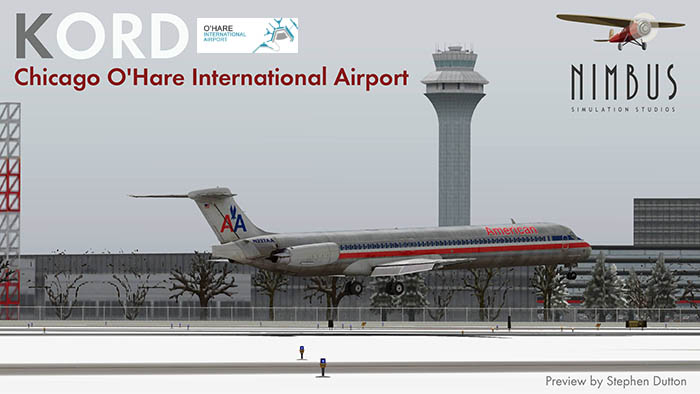
Scenery Update Preview : KORD Chicago O'Hara Intl (version 1.0.2) by Nimbus Simulation Studios Nimbus Simulation Studios have released a heavily revised version in version 1.0.2 of their KORD Chicago O'Hara Intl Airport. "Nimbus Simulation Studios" and "revised"? Yes this KORD is "Butnaru's" actual original 2013 scenery but with now a new name and a new look. This more than an upgrade, as the basic original KORD (Terminals and inner infrastructure) was already very good, but the airport textures in runways and taxiways and the empty outer boundaries were average but fine for that period. Today the expectations on scenery for X-Plane are high, as users demand detail and (lots of) features for their money, the days of just developing an airport with just good 3-D objects are long gone. So it is refreshing to see Butnaru in revisiting his older work and bringing them up to the standard we expect. All his past work was excellent, but still many in certain need of a refresh like we have here with KORD v1.0.2. 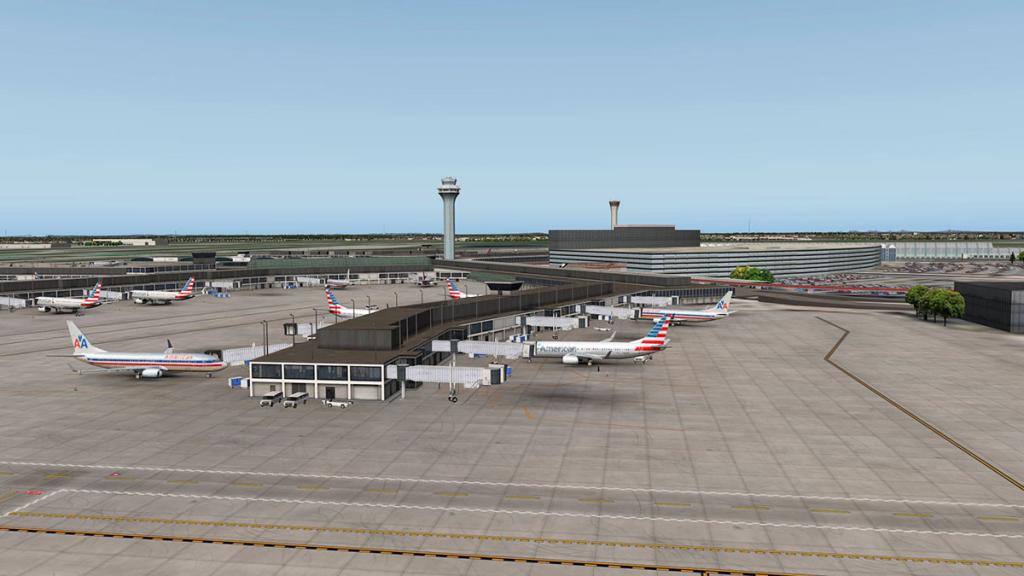
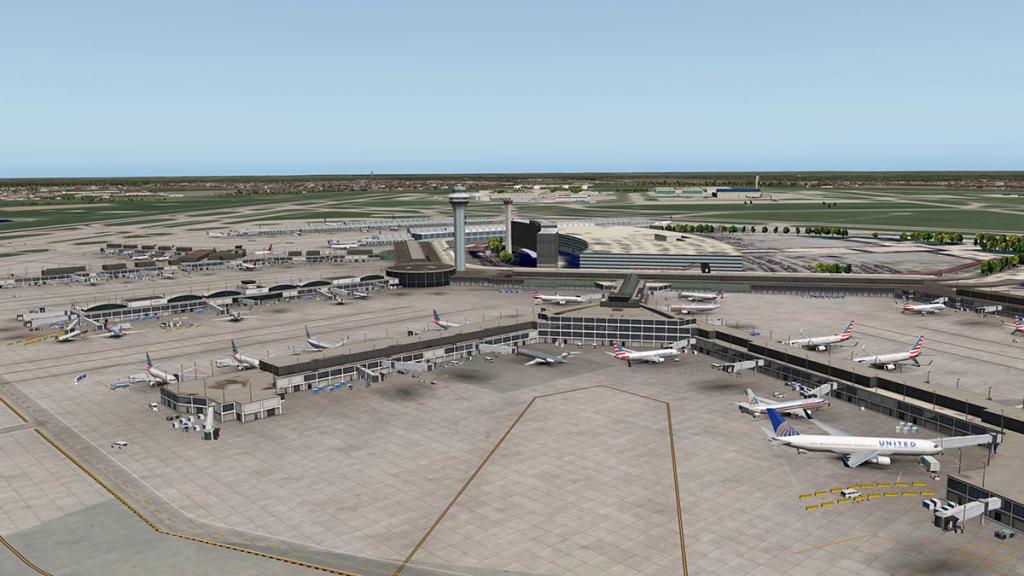
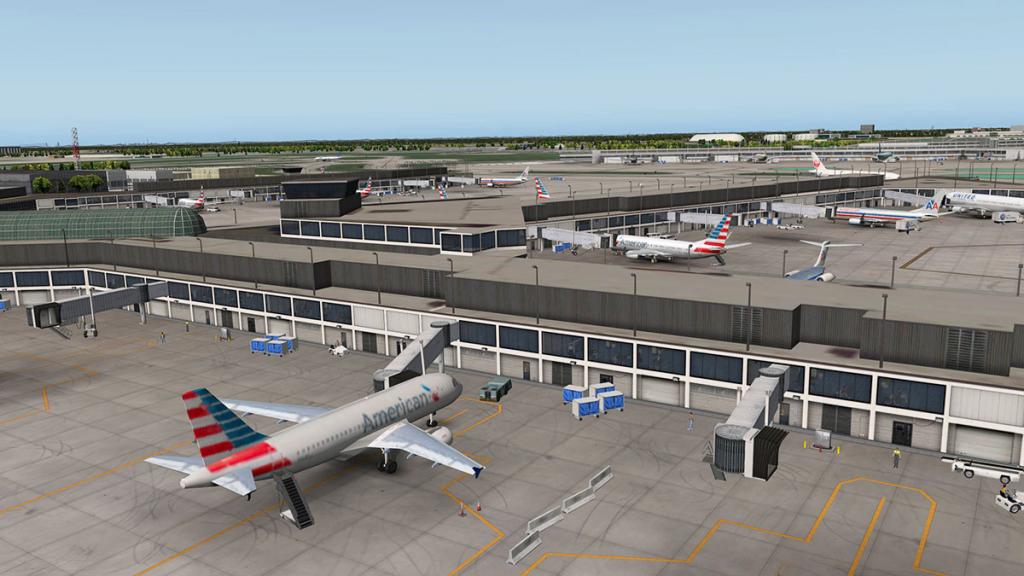
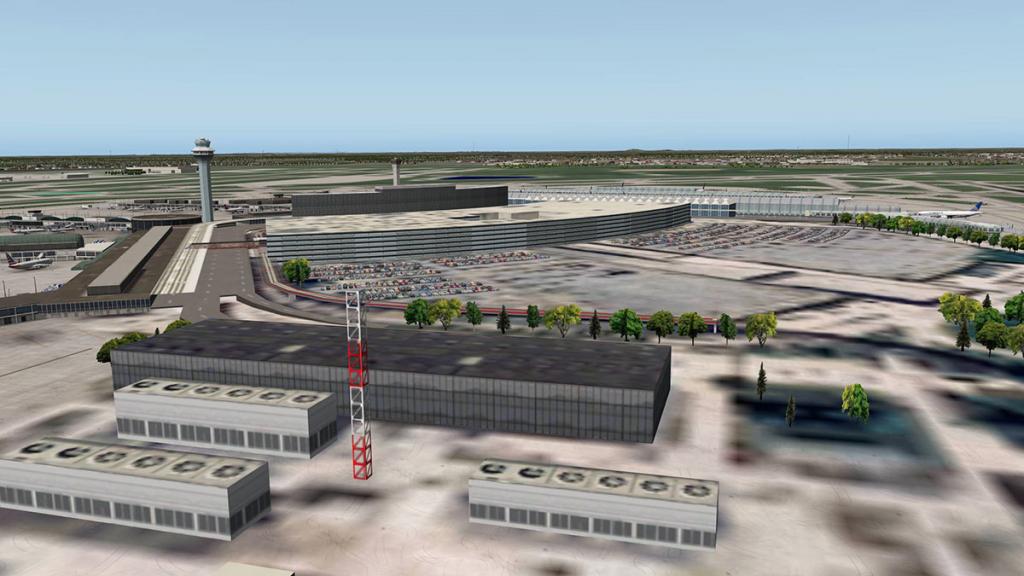
The original excellent internal terminal areas have been retained and ground support equipment detailing has been enhanced. Walking people are a Butnaru's speciality and they are everywhere (even walking around inside the terminals!) and a lot of that open flat photographic USGS (Images) underlay has thankfully been filled in and notably in the carpark areas. The photo underlay still blandly pokes out here and there, but overall the scenery visually is a huge step forward. 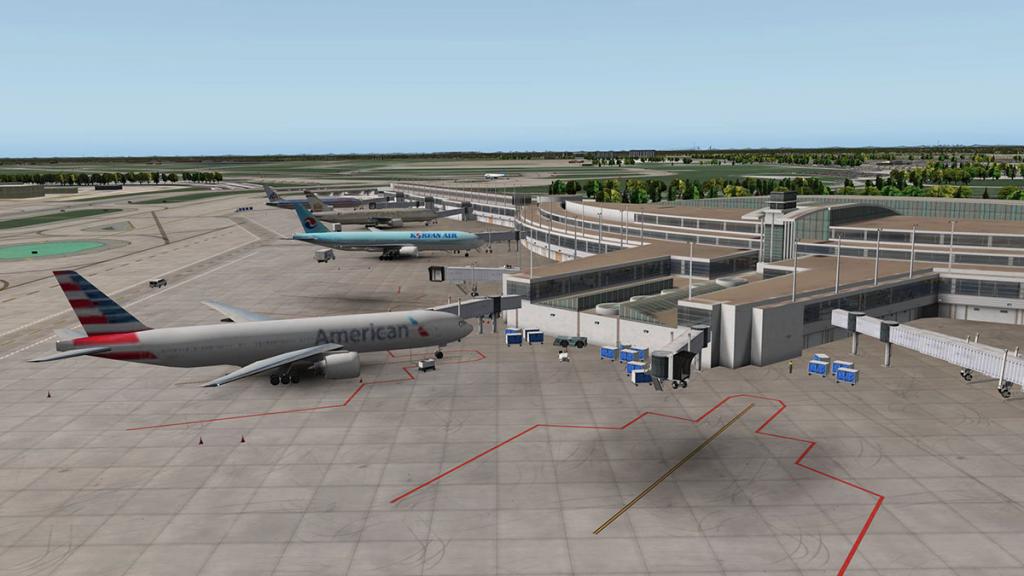
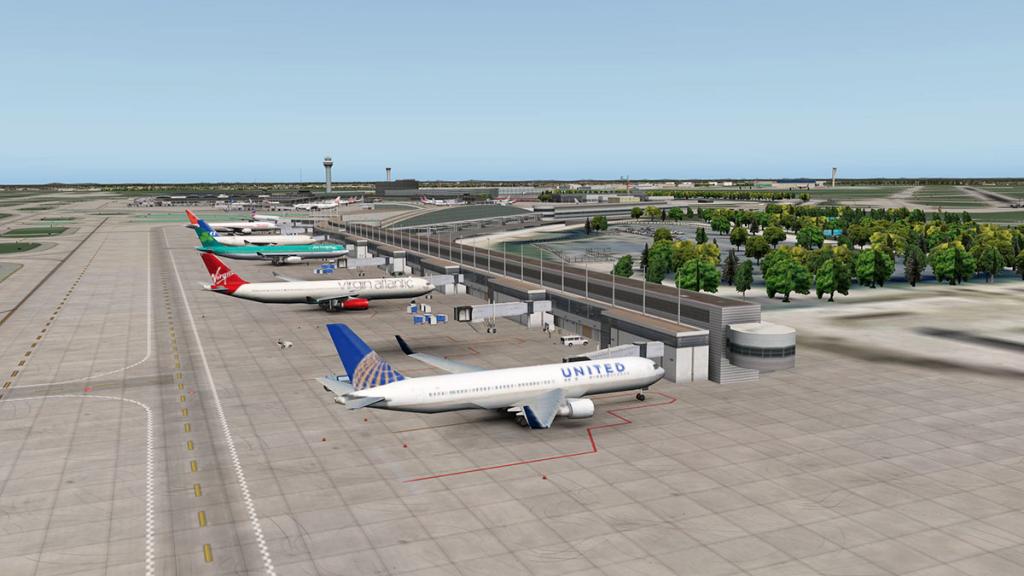
Overall this KORD scenery does look and feels fuller, more complete and the extended details now compliment the earlier good terminal work. 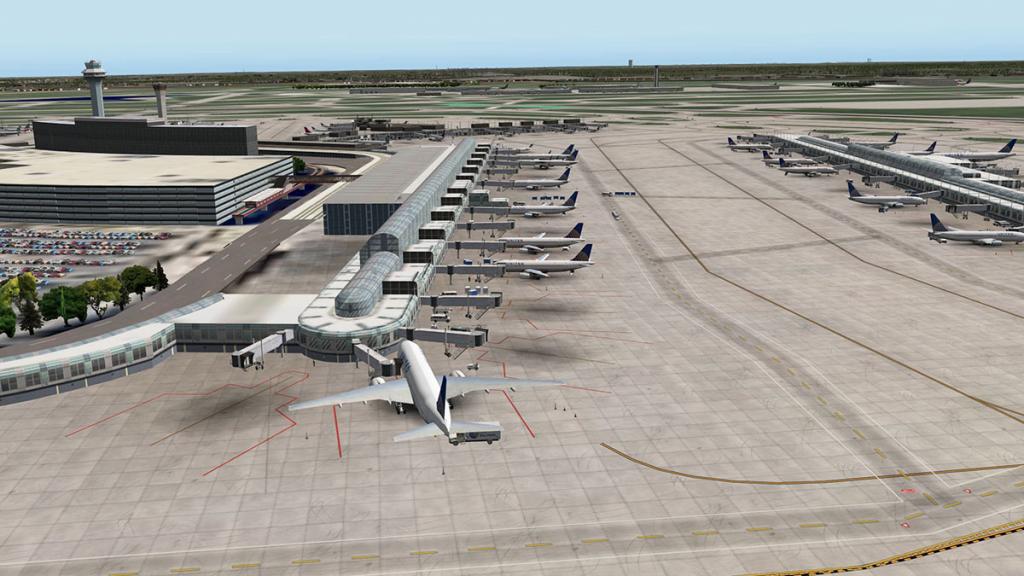
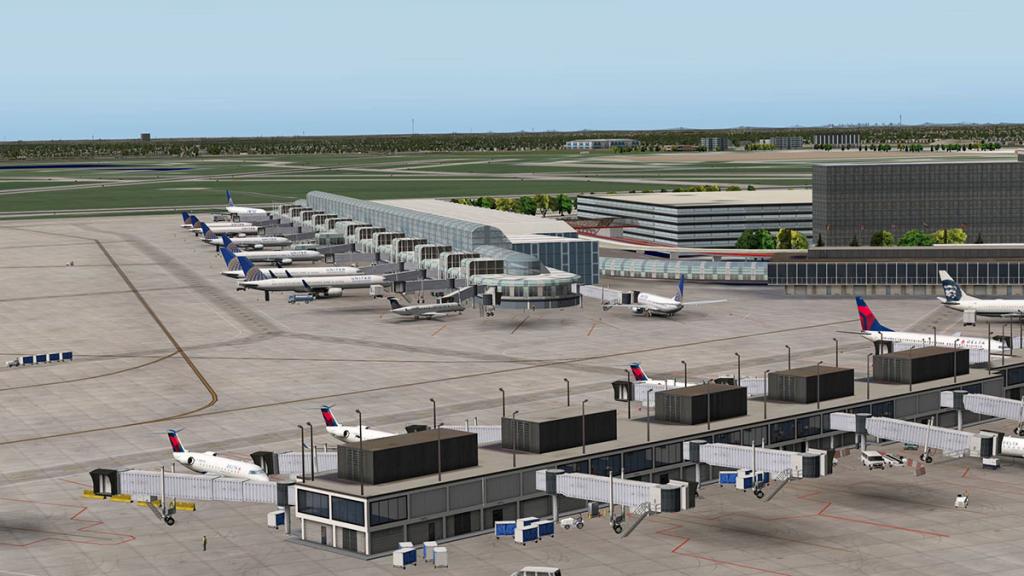
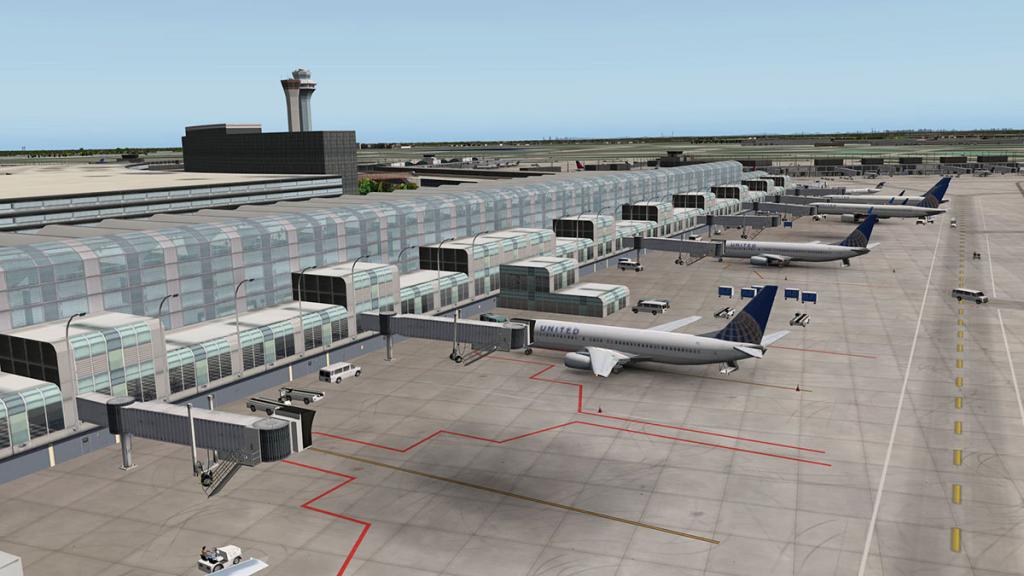
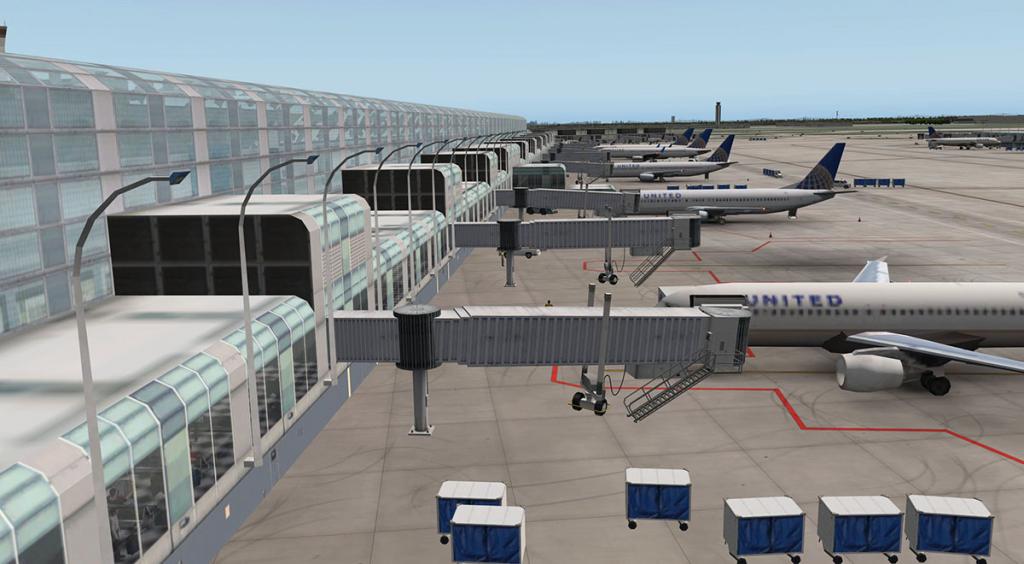
Ground animations are everywhere now also, giving you a buzzier feel on the ground, and no doubt this airport is calling out for WorldTraffic... traffic. 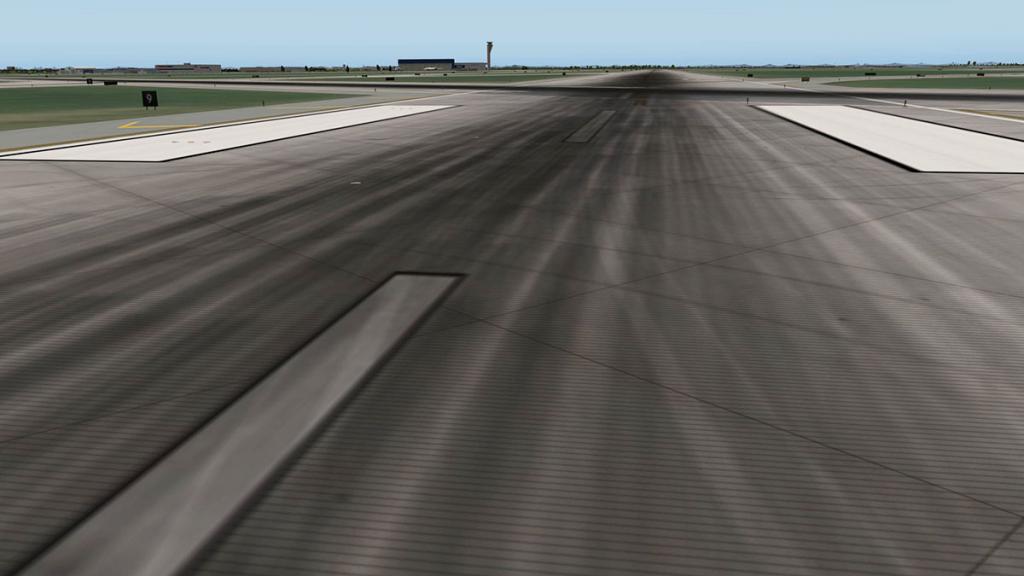
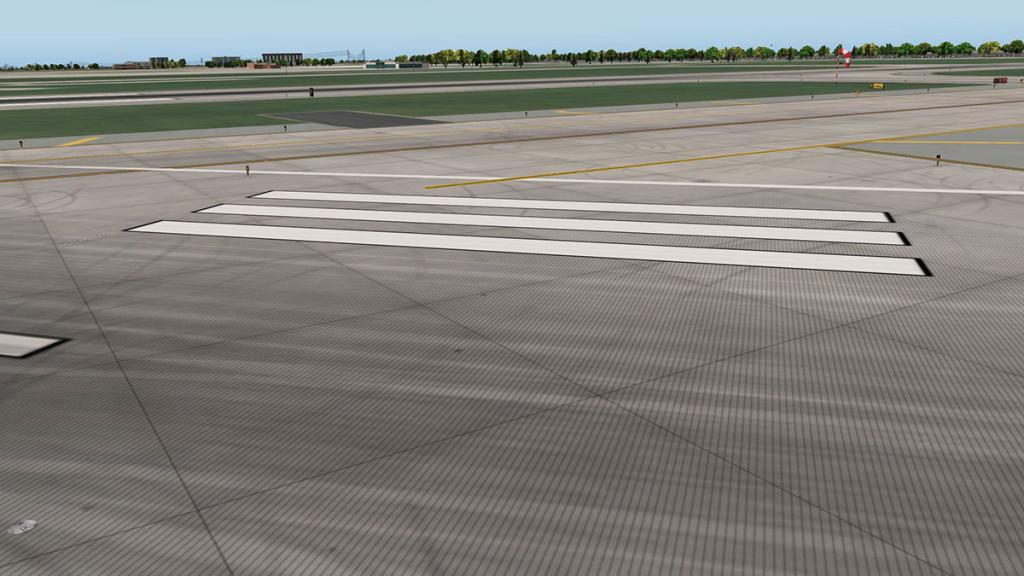
Runway and taxiway texture and detailing look far better and more realistic than the originals, they maybe are the same? but the detailing looks too new to be so. The scenery is now also all HD (High-Definition) and the quality shows in all areas, maybe that is the difference. 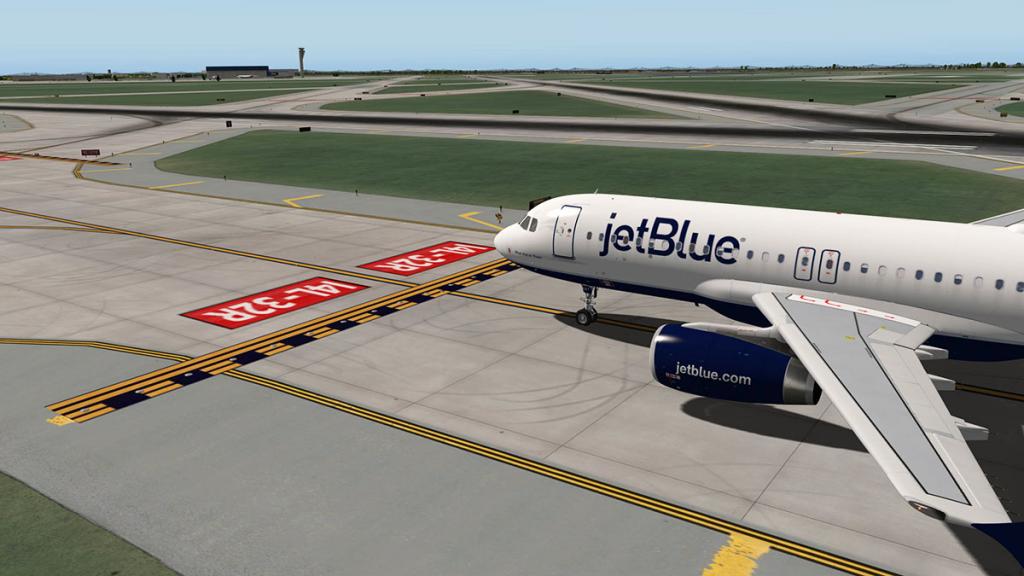
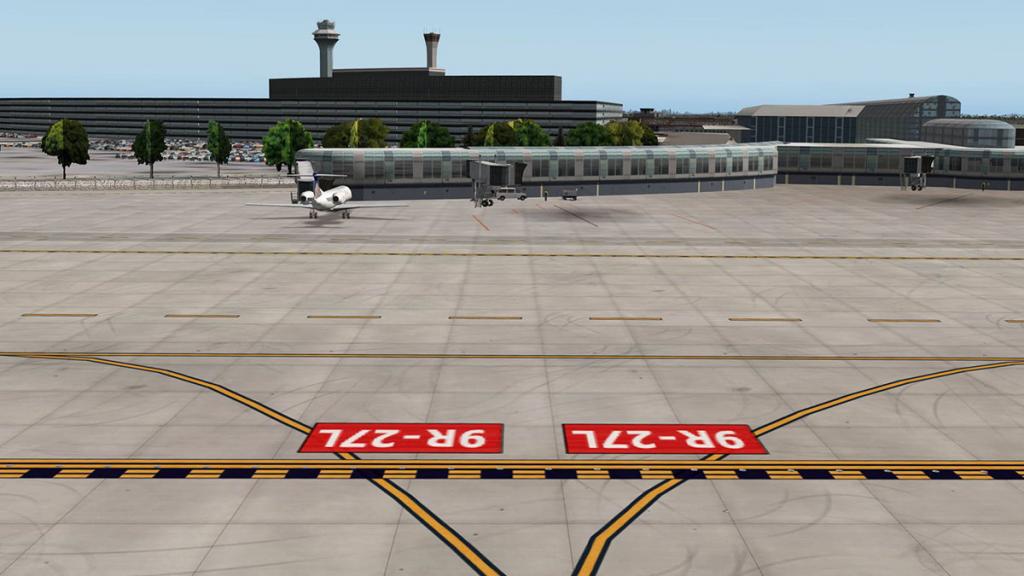
Highly realistic now, Textures feel and look great from the ground and also is the view from the cockpit. Butnaru was the first to incorporate a 3-D aircraft bridge taxiway link on taxiway's A and B by RWY32R's start point within the original KORD (Runway Contours... off) and it worked well back then. it looks now even better intergrated here, but the very empty and notable not even textured roads with no vehicle animation under the bridge taxiway link renders the positive changes back into a negative. 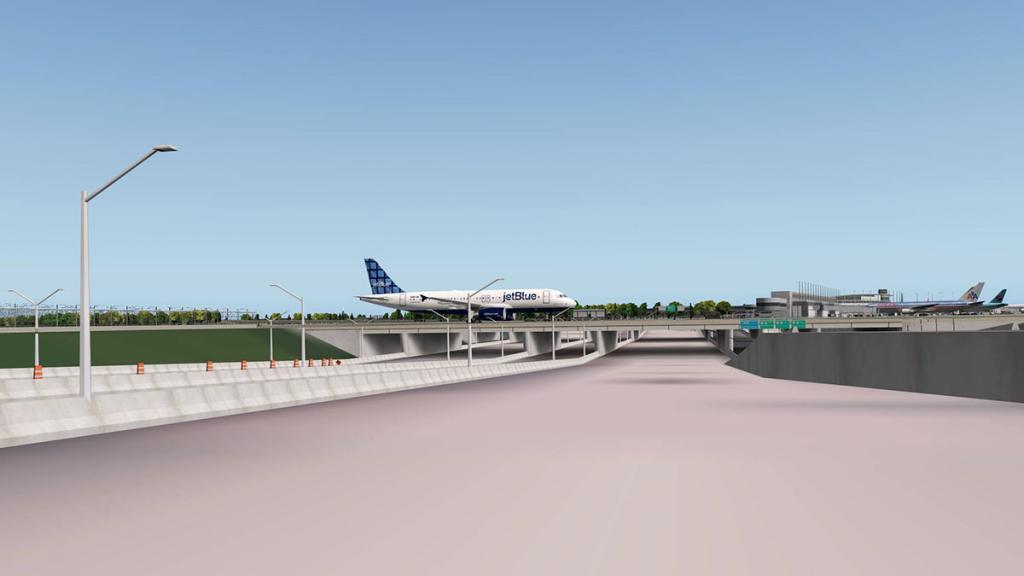
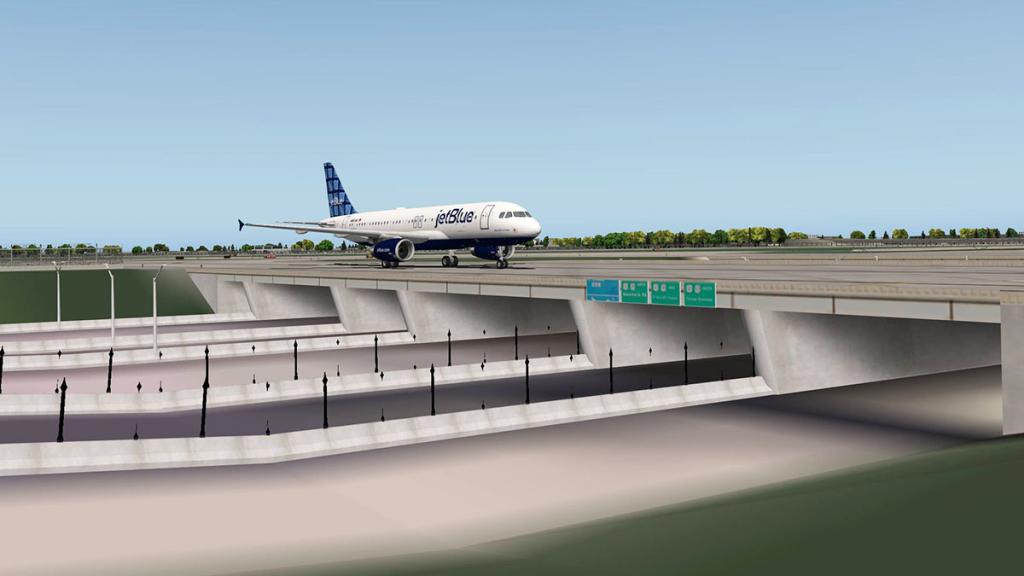
From above you can see the more completion of the whole scenery and the differences in the (awful) quality of the original textures. 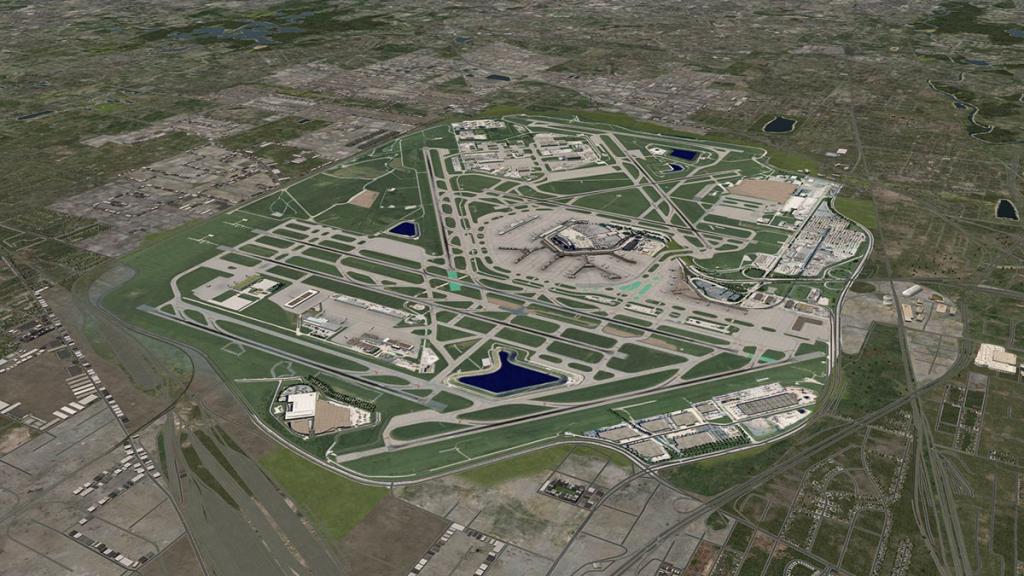
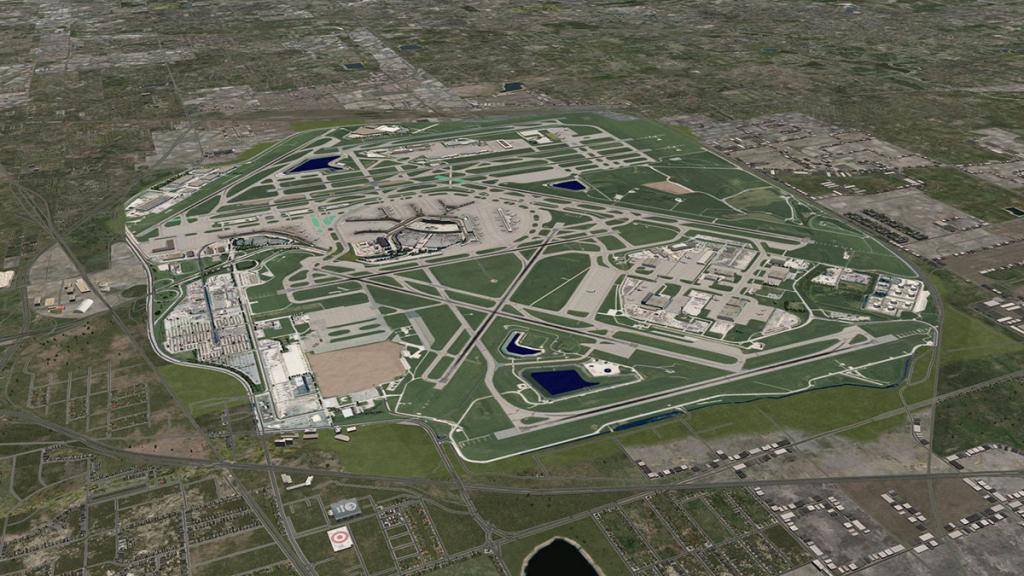
New 2015 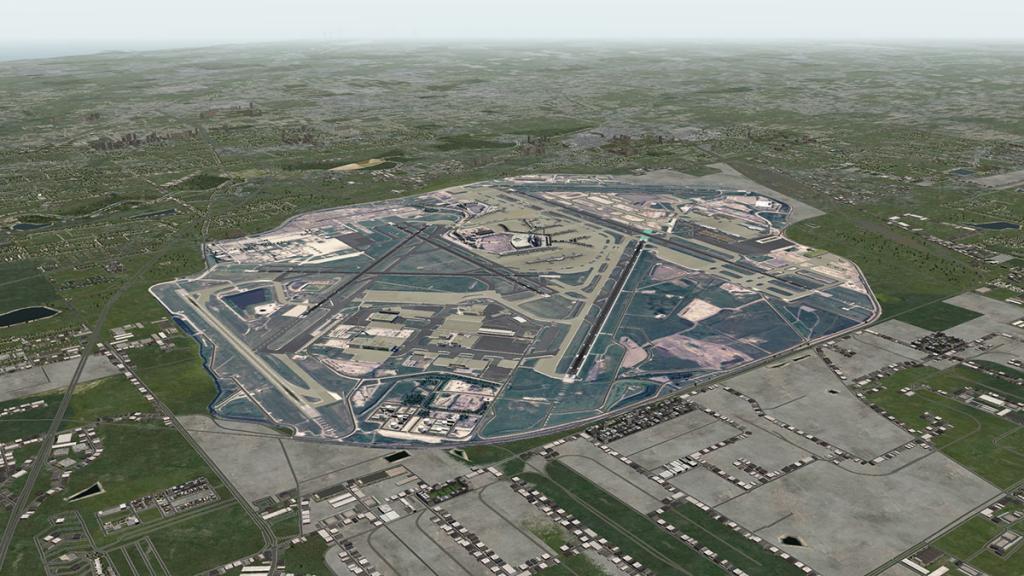
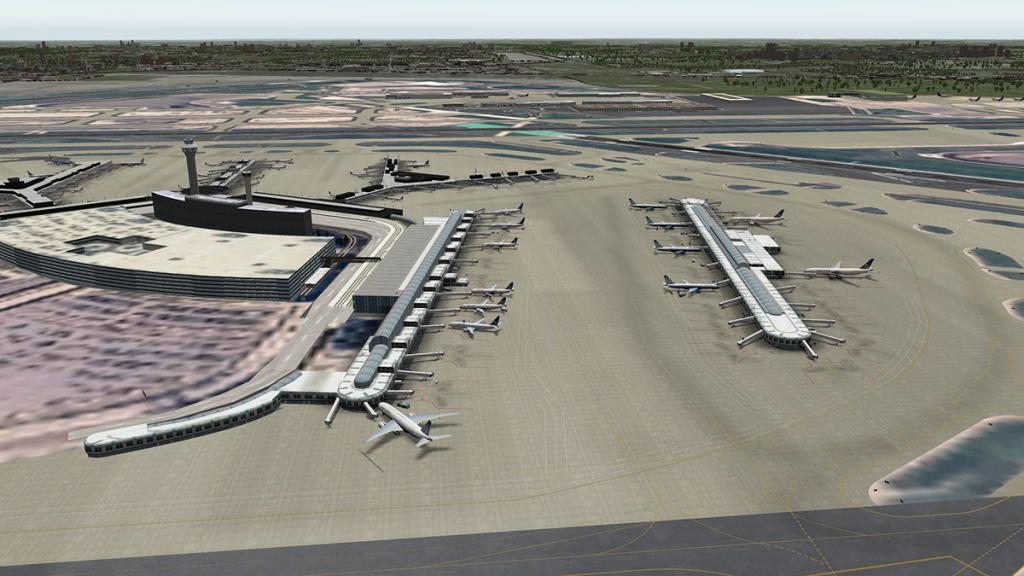
Old 2013 The poor photo 2013 colouring was one of the reasons why I didn't use KORD very much over the years, I didn't much like it then, and I can still see why now. Airports have to have to at least reach a certain level of at least being realistic, I am not in a moment saying or asking for complete perfection, but poor resolution and colouring that is easily rendered (Photoshop anyone) of which I have had to redo myself lately is not worthy of payware product. Thankfully the new KORD is excellent and everything benefits from the better resolution and correct colour changes to the scenery. Like noted the runway and taxiway areas have hugely benefited from the changes. 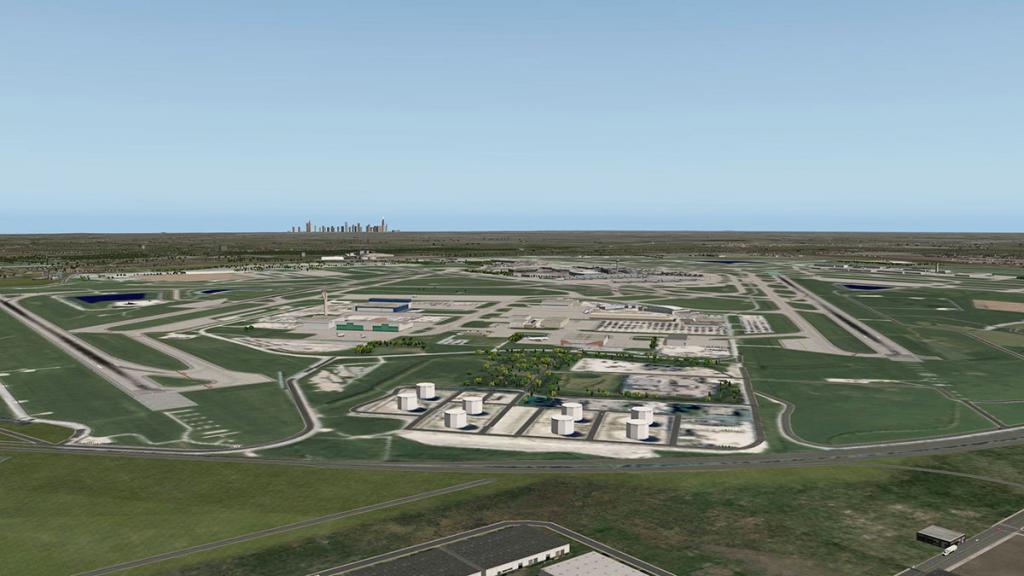
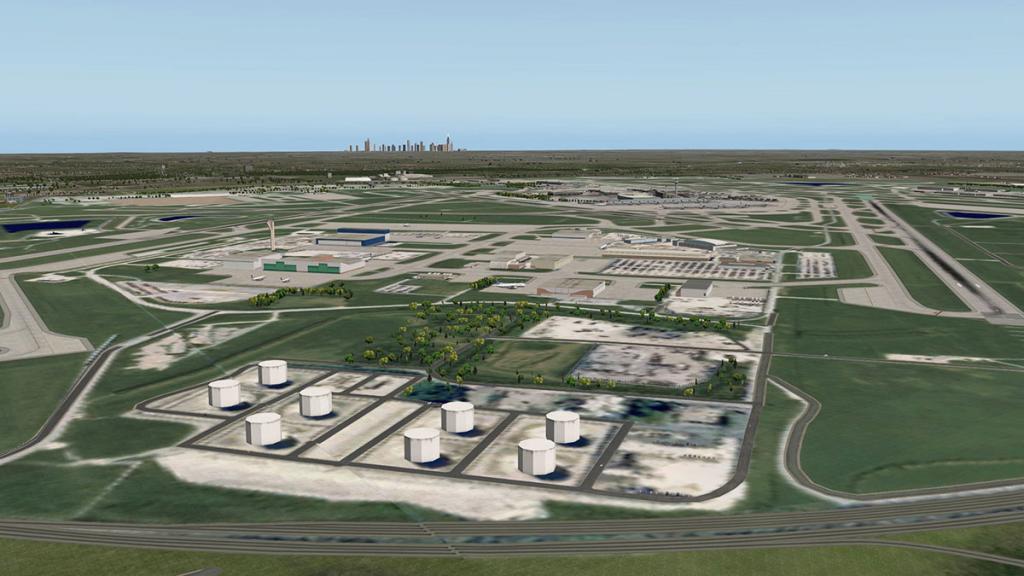
The green belts around the runways are a little too green compared to the surrounding X-Plane default landscape, but in reality KORD does standout from the its background in the real world as well. Overall the base textures are a huge improvement.
You get a really special feature with the new KORD, and take note here other scenery designers...
Winter Textures
Chicago is not really known for its lazy balmy summers and hot tropical nights, more of a white stranded, frozen, grounded, infuriating and snowbound scenario is usually the case with any news reports.
Last years release of default X-Plane winter_package by xflyer totally changed all that. You can use "Simple Seasons" to change the textures over but it is a bit of a messy business, but I found that JSGME or Generic Mod Enabler (It works fine under WINE for MAC users) is a perfect solution. (newly built in X-Plane scripts in 10.40 should hopefully fix this problem in the future)
You get a full set of winter textures with this KORD v2 for both Summer and Winter periods...
The winter KORD textures are a bit whiter than the default textures, but overall they work extremely well, the great thing that Butnaru has done is fill in the small details like the edges of the taxiways and runways, buildings and aircraft all have snow on their upper layers.
So it is extremely highly realistic, as shown when I did a landing at KORD in the AA (Rotate) MD-88.
Pull the weather in close around you and then get the lowest visibility distance that you can dare and go for it. It is set a little brighter (clearer) here so you can actually see something, but "hey" this is great winter flying as the KORD airport textures really work for you... this is a real Chicago arrival.
They are not easily changed over; as there is quite a lot of files to resite. My solution was to create two separate KORD's for both Summer and Winter...

Just take one scenery out and replace it with another, and swap the MOD's over and you have an instant winter. I personally love winter textures as they give you a whole new dimension to online flying.
Night Lighting
Lighting is good, but not highly detailed. Butnaru is a broadstroke sort of scenery developer more than a intimate detailed artist. So everything is there that you need and use, but not in a very highly detailed way.
There is a nice variation in lighting colour, but not any really high detailing like rows of lights in a carpark for example.
Working down on the ramps it is not bad at all as it is all well lit. Terminal buildings have great depth as the internal areas at night are well created with a lot of internal detail.
Documents
You get full sets of SID and STAR (DP) charts and "TAKEOFF MINIMUMS AND (OBSTACLE) DEPARTURE PROCEDURES" information... But no Airport ground diagrams or gate position charts?
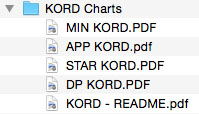
Overall this is certainly a great update to a scenery that begged for a good upgrade. KORD Chicago O'Hare is one of the most used in online flying in America and so X-Plane users deserved a good scenery to use. And yes as Butnaru's newly named "Nimbus Simulation Studios" has certainly delivered here and the stand out feature are those excellent winter textures that makes this scenery... oh so Chicago.
__________________________________________________

Yes! the updated KORD Chicago O'Hara Intl (version 1.0.2) by Nimbus Simulation Studios is NOW available from the new X-Plane.Org Store here :
KORD - Chicago O'Hare International Airport -HD
Price is US$24.95
NOTE: Owners of the previous KORD Airport by Butnaru are entitled to a $10 upgrade price - $15 - and should contact [email protected] to get their coupon code
Features KORD v1.0.2:
High Definition Airport- High resolution ground textures
- Terminals with 3D interiors
- HDR lights
- Numerous custom objects with high-res textures
- Night lighting
Seasonal Textures- Both Summer and Winter textures are included
Animated Airports-
GroundTraffic (plugin by Marginal)
-
Autogates
- 9 runways
- Cargo area
- Terminals 1, 2, 3 and 5 fully modeled with all concourses
- South and North Tower
- More than 100 gates modeled
_____________________________________________________________________________________
Requirements
X-Plane 10.30+ (any edition)Windows, Mac or Linux1Gb+ VRAM Video Card - 2Gb VRAM Video Card RecommendedNote: Make sure you have v1.0.2 on download_____________________________________________________________________________________Preview by Stephen Dutton21st December 2015Copyright©2015: X-PlaneReviews(Disclaimer. All images and text in this review are the work and property of X-PlaneReviews, no sharing or copy of the content is allowed without consent from the author as per copyright conditions)
-
8 hours ago, Guest said:
Hi all,
Only PW4000 engines installed. I'm missing CF6 or RB211 and no weight option for Kg.
Regards.
Jovabra
If you have purchased FlightFactor aircraft before, you would know that in their updates they are usually (paid) Engine updates and Cargo versions. SD
-

Aircraft Release : Aqulia A210 & A211G by Picus X
AQUILA Aviation by Excellence AG is founded by Peter Grundhoff, Alfred Schmiderer und Markus Wagner in 1996, and their first design was an all composite two seater light aircraft called the A210, with the official official engineering and certification name of the Aquila AT01.
A 210 is powered by a Rotax S3 flat four air and water cooled piston engine, creating 73.5 kW (98.6 hp) and driving a two blade propeller. It is supported by Tri-cycle landing gear with speed fairing and has a top speed of 241 km/h (150 mph; 130 kn). It first flew in March 2000.
Picus X is a new X-Plane developer that have released not one but two versions of this aircraft in the original A210 and the A211G. These aircraft come in a package bundle of the two aircraft (they can be bought separately, but you get a far better deal in the bundle) from the X-Plane.OrgStore.
A210
A211G
If you are a keen observer you will notice that externally both aircraft are identical... not a single difference between them.
Where they do differ is internally... in the cockpit.
A210
The original A210 has the standard dial cockpit, with the standard six instruments fore and centre. Instrument avionics consist of X-Plane standard Garmin GNS430, GMA 340 radio and communication unit and a GTX 330 Transponder with automatic ALT or GND mode and Splash Screen. Engine dials include Hobbs Meter, Fuel Capacity & Cylinder Heat Temp, Voltmeter and Oil Temp, Ammeter and Oil Pressure. There is a very strange needle display for the 2xfuel tanks. far right are the banks of fuses.
A211G
On the A112G all the engine instruments and everything central panel and right panel are the same as the A210, but the standard six dials have now been replaced by a Garmin G500 which is an integrated avionics system. It provides two displays, called the GDU 620 system. This is the First Garmin G500 adaption for an X-Plane payware aircraft.
Garmin G500 Avionics features include:
- Custom 3D analog gauges with in-depth modelling (e.g. floating fuel needles) and HD textures
- Picus X G500 with fully functional Primary Flight Display (PFD) and partly modelled Multi Function Display (MFD) incl. initialization and AHRS alignment
- Picus X G500 includes moving map (based on the basic X-Plane® functions)
- Picus X G500 includes WX forecast
- Picus X G500 includes up to 5 customisable approach charts
- Picus X GTX 330 Transponder with automatic ALT or GND mode and Splash Screen on startup
- Picus X GMA 340 radio and intercom
- X-Plane® GNS430 with custom 3D bezel
- Garmin Splash Screen on startup
Menus include:
There is a good set of three menus that are accessed by the pX logo on the left lower part of your screen. Menus include:
Options - Presets (views) - Magic functions
Fuel & Load - Mass & Balance
Checklist
Options, includes static elements, opening and closing the canopy, Two types of Wheel Fairings (Tundra - Standard, below)
There is a Flight Instructor Mode (view from the right seat, 3D pilot on the left seat), and you can set the prop to neutral.
"Magic Functions" will Start your aircraft up to flight for you and then at the end of the flight do the reverse in shut it down again... It will also perform a Run-Up Test Sequence.
"Fuel & Load" allows you to load the aircraft via the menu in Fuel (both wing tanks), Pilot, passenger and baggage. And the CoG (Center of Gravity) aircraft balance and weight will be shown on the graph on the right.
Checklist is excellent and covers all "Normal Procedures" in before flight - Takeoff - after takeoff... to shutdown. Both full Normal and Emergency checklists are provided in the documents.
Aircraft Modeling is very clean composite, but well done. If you like Aerobask Aircraft then this right up your street in design and execution.
Aircraft features include:
- Correct physical model and airfoil parameters for laminar wings, ailerons, rudder, elevators and prop
- Correct engine parameters and limits
- Correct pitch deflection angles for the prop blades along with realistic weight and torque
- Detailed exterior with HD textures (e.g. place cards, screws, dirt)
- Detailed interior with HD textures (e.g. modelled seat belts and shoulder harnesses, leather seats, carpets)
- Night VFR with 3 independent HDR lighting options (instrument backlights, panel, dome light)
- Custom 3D gauges with in-depth modelling (e.g. floating fuel needles) and HD textures with original place cards mounted
- Functional Davtron chronometer with UTC, local time and stop watch
- Floating menu with 3D view presets, floating Checklists for inflight use
- Fuel, Mass & Balance menu with real time altering and calculation
- Magic Functions for Engine Startup Sequence, Run-Up-Test Sequence, Shutdown Sequence
- Choke modelled (required for engine startup if cylinder head temperature is below 50° C)
- Prop strike damage modeled (toggled, if aircraft touches ground with less than 5° negative pitch)
- Functional Emergency Location Transmitter (ELT) on impacts larger 4.0 G
- Animated exterior (e.g. Vibrating exhaust tube depending from engine RPM, G-loaded shock absorbers)
- Static Elements (pitot tube cover, winglet covers, chocks)
- Animated pilot with Sennheiser headset and Rayban sunglasses (depending on sunlight)
- Removable key with slinging key chain
- Original Rotax 912S sound including advanced starter, ignition and shutdown noises
- Custom tire squeal sound, independent for each tire touching ground
A quick flight confirmed this Light Sport Aircraft (LSA) is certainly a hold between a few fingers around the stick sort of of flying machine, you need a very light touch and feel the aircraft through very small inputs... and yes it is very nice to fly. This machine is VFR (Visual Flight Rules) so there is no Autopilot or aircraft servo control. But you can still use the Garmin GPS as a guide to follow a route and the waypoints with distance are shown directly in front of you (A211G).
Sounds are really top-notch and excellent, and they include:
- Original Rotax 912S sound incl. starter, startup and shutdown
- Original Aquila stall warning sound
- Original ELT sound (very loud!)
- Custom tire squeal sound, independent for each tire touching ground
- Custom avionics fan
- Custom flaps servo sound
- Custom canopy sound (open/close)
At night the cockpit is very good with two adjustment features, with a red lighting strip that highlights the panel.
The rocker switches are all white, which is not very realistic, and the external fuselage is also has a white sheen in the dark, which I don't like, but otherwise the lighting is fine.
Liveries
Both A210 and A211G liveries are excellent and sadly can't be swapped around if you want a different livery on another aircraft, Blanks on both aircraft are included. Highlights are the excellent Airline training colours which are clever.
A210
A211G
So if you like Light Sport Aircraft (LSA) or Ultra Light Aircraft then (ULA) these duo from PicusX are excellent, very similar in the vein of Aerobask Aircraft `and have loads of original features. Highly Recommended.
_______________________

Yes! the Aqulia A210/A211G by PICUS is NOW available from the new X-Plane.Org Store here :
Price is US$27.95
Developer PicusX - PICUS X
_______________________________
Requirements
Windows, Mac OS, Linux (please refer to the requirements of X-Plane®)X-Plane® 10.40 (64-bit only!) or higherMulti Core Processor at least 2.5 GHzRAM at least 4 GBVRAM at least 1 GB630 MB free hard disk space for both models of the airplaneThe Aquila comes with SASL 2.4.0 includedCurrent Version: 1.0 (initial release December 11th, 2015)Note: Make sure you have v1.0.2 on download_______________________________Preview by Stephen Dutton16th December 2015Copyright©2015: X-PlaneReviews
-
9 minutes ago, Guest said:
Hi, Great review! Just wondering where you got the Jetstar A320 static aircraft from?
Thanks,
Patrick
I made the JQ and VA liveries myself as there isn't any, sorry I can't share because of copyright on the objects... SD
-

Aircraft Review : Boeing 767-300ER Professional by VMAX and FlightFactor After the huge success of the late 1950's and throughout the 1960's for the Boeing Commercial Airplane's Company with their Boeing 707/727/737 and Widebodied Boeing 747 aircraft, it was always going to be a challenge for Boeing and keep their lead in the aviation production business to develop and create the next advanced series of passenger jets. Other manufacturers went down the Twin-Aisle three-engined designs that was signified by the McDonnell Douglas DC-10 and the Lockhead L-1011 Tristar. Originally Boeing with the code-named 7X7 looked to be going down that route of three engine design, but the Airbus A300 from Europe changed the design to the more common current layout with Twin-Aisle, Twin-Engined aircraft as engine design and power had now progressed to allow big twins to have the power and range over their three engined counterparts in that now highly competitive mid-medium to large-size, long-range market. Still Boeing backed its card hand both ways, not only announcing the Boeing 767 as their Twin-Engine Design to cover the Twin-Aisle market, but to also build a Single-Aisle aircraft in the Boeing 757 code-named 7N7, and both aircraft have a commonality design that was shared over the two different types of airframes, in the thinking that airlines would buy and operate both types with a single commonality rating with a small conversion to the larger Boeing 767. Three variants of the Boeing 767 were planned: a 767-100 with 190 seats, a 767-200 with 210 seats, and a trijet 767MR/LR version with 200 seats intended for intercontinental routes. The 767MR/LR was subsequently renamed 777 for differentiation purposes which was when finally launched a vastly different aircraft for a different market. The prototype Boeing 767 aircraft, registered N767BA and equipped with JT9D turbofans, rolled out on August 4, 1981. By this time, the 767 program had accumulated 173 firm orders from 17 customers, including Air Canada, All Nippon Airways, Britannia Airways, Transbrasil, and Trans World Airlines (TWA). On September 26, 1981, the prototype took its maiden flight under the command of company test pilots Tommy Edmonds, Lew Wallick, and John Brit. This version in the FlightFactor/StepToSky release is the The 767-300ER, the extended-range version of the 767-300. Which entered service with American Airlines in 1988. The type's increased range was made possible by greater fuel tankage and a higher MTOW of 407,000 lb (185,000 kg). Design improvements allowed the available MTOW to increase to 412,000 lb (187,000 kg) by 1993. Power is provided by Pratt & Whitney PW4000, General Electric CF6, or Rolls-Royce RB211 engines. This aircraft is the Pratt & Whitney PW4000 version. FlightFactor/StepToSky FlightFactor and Roman Berezin has no need of introduction for most fliers in X-Plane Simulation. Their Boeing 777 WorldLiner and Boeing 757 Series have made them the very best of the Boeing designed (and official product) available for X-Plane. Their foray into Airbus territory with their Airbus A350-900 also shows the design group's versatility. Here with the Boeing 767-300ER FlightFactor still uses the talents of avionics designer Phillipp Munzel, but are also now joined by StepToSky designers Denis Maslov and Alexander Khudekov, but the full development team is thirteen highly specialised individuals coming together to create this highly developed iconic aircraft the.... Boeing 767-300ER 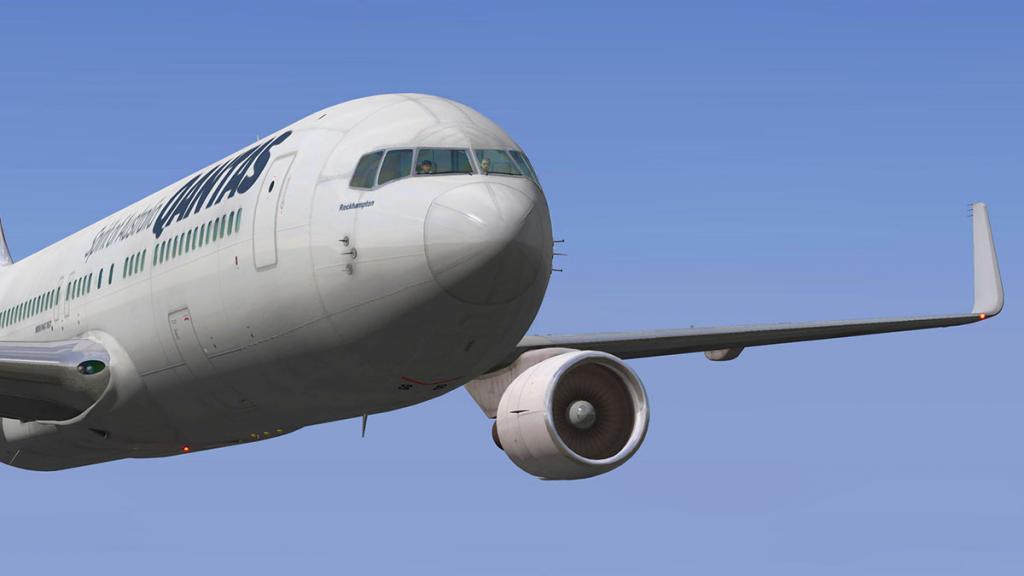
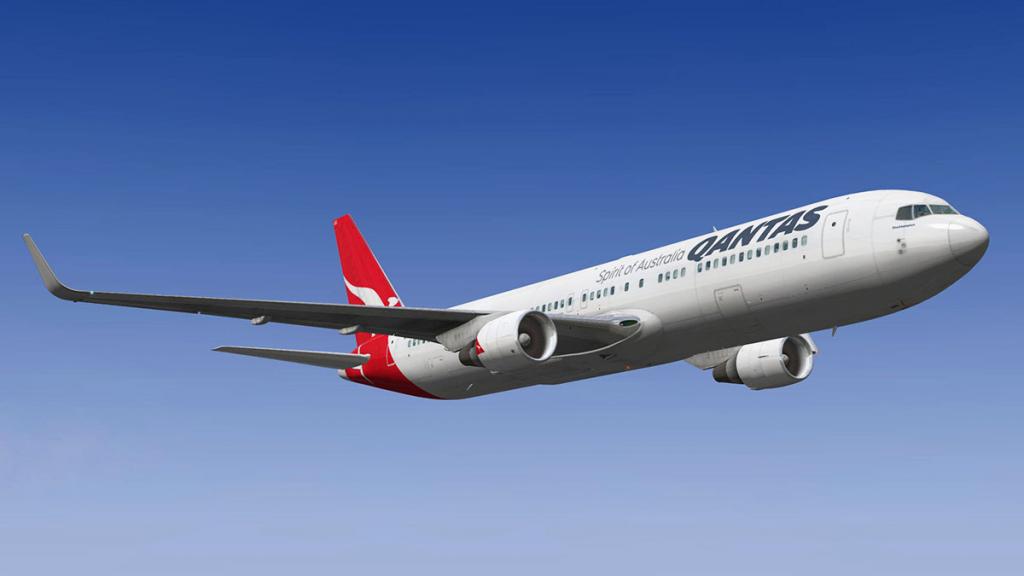
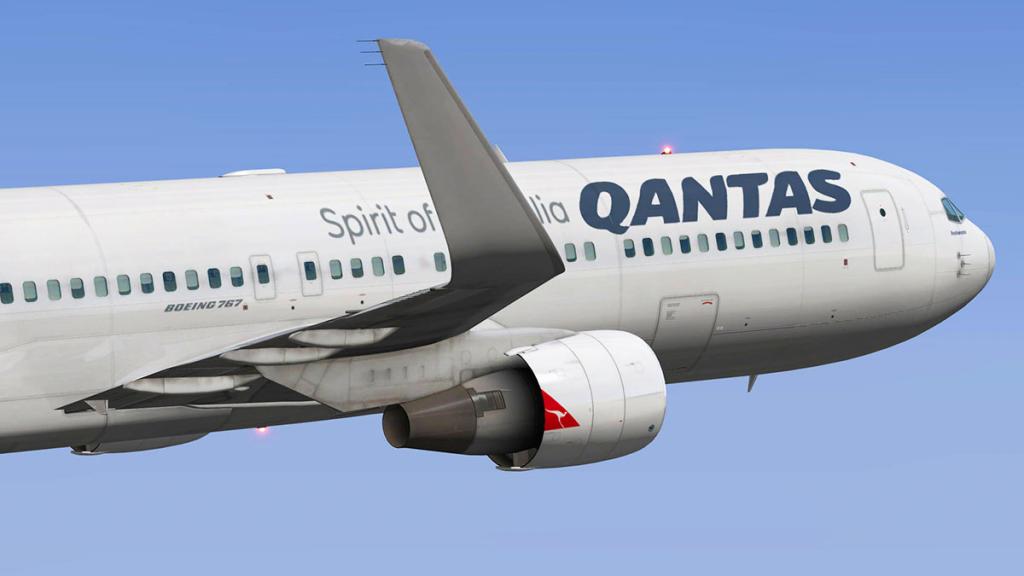
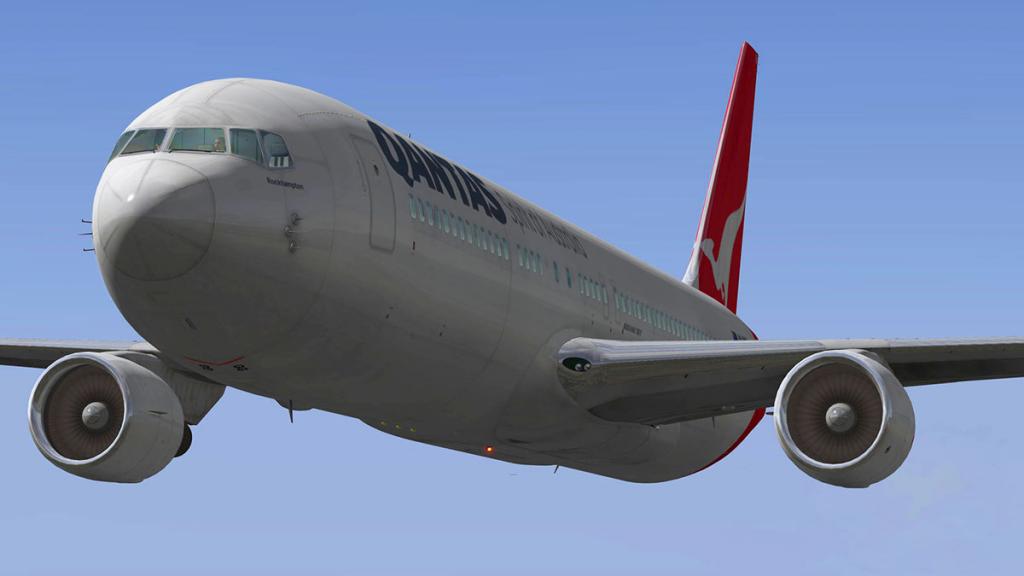
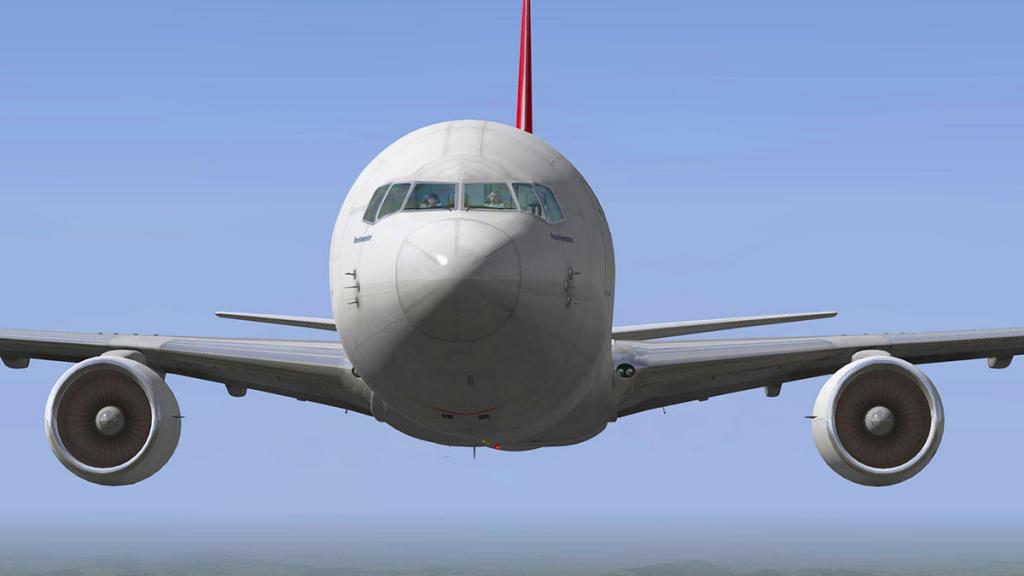
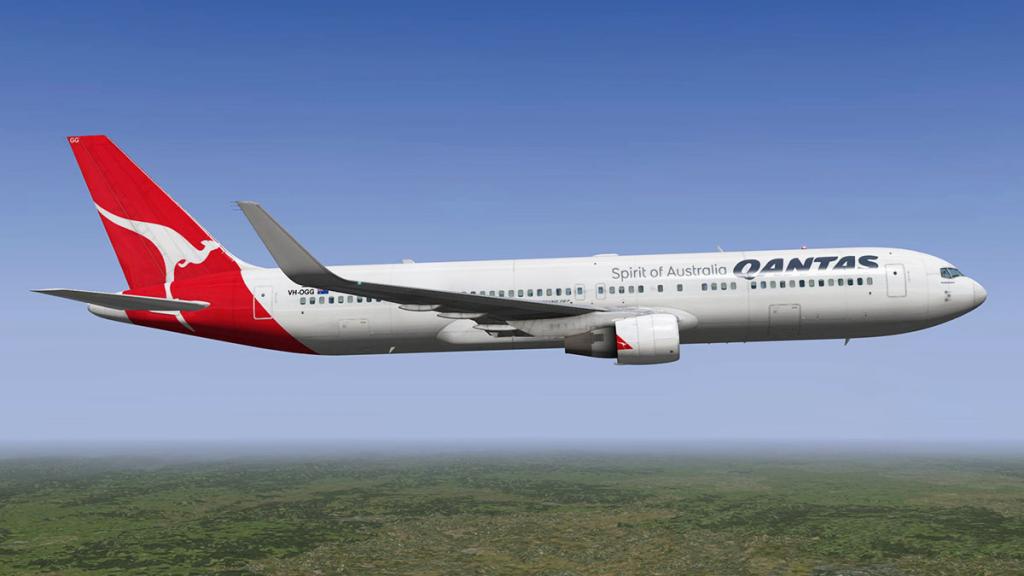
Review You couldn't cover every aspect of this review with a simple walkaround the aircraft and point to point flight like I usually write, because different points of the flying pointed to different areas to be explored. So this review covers three sector flights, not the quite Golden Triangle of some of the busiest air routes in the world between BNE-Brisbane (Queensland) to ADL- Adelaide (South Australia) to SYD - Sydney (New South Wales) and finally back to BNE.... MEL - Melbourne (Victoria) missed out because I wanted the longer stretch sector to Adelaide and the longer one back to SYD. When in service (All Boeing 767 aircraft have only earlier this year have been retired by QF Qantas) in the past three decades with Qantas these routes were its main service points (and also PER-Perth) and I have flown on a lot of flights on this aircraft over these routes. So there is a little mixture in the look of some images in this review here as they are taken not in order as I usually do, but overall throughout the three distinct flying sectors. External 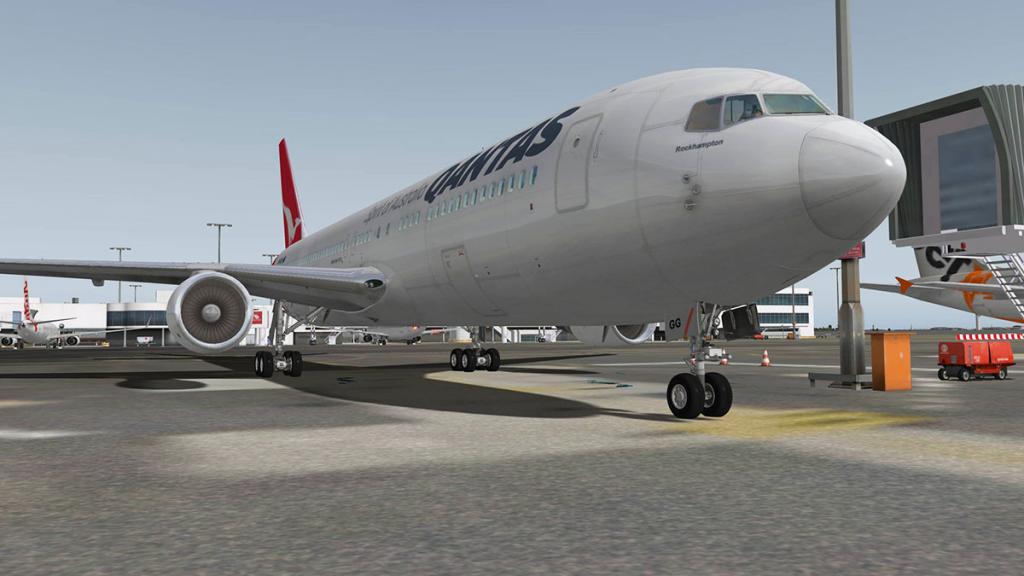
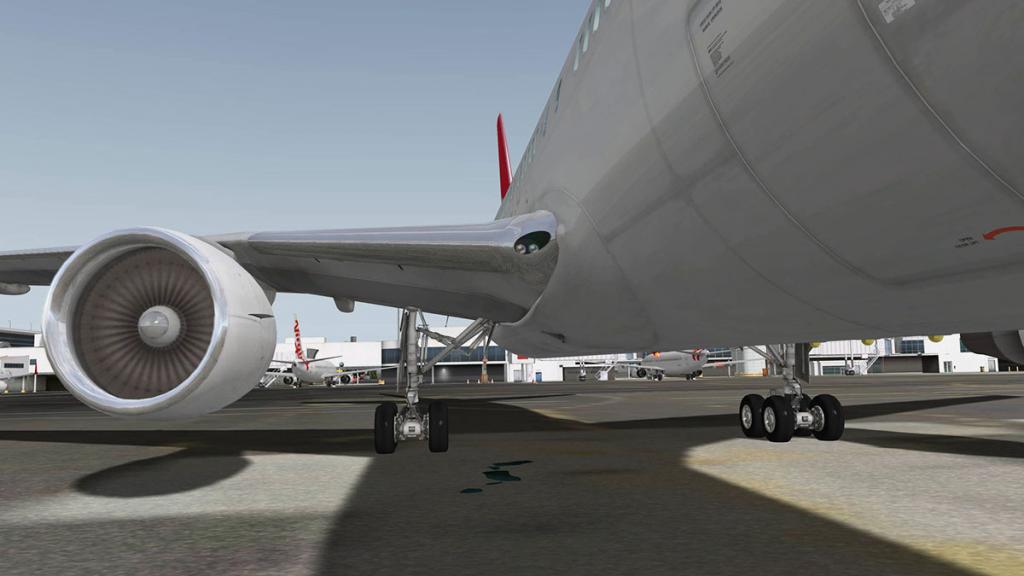
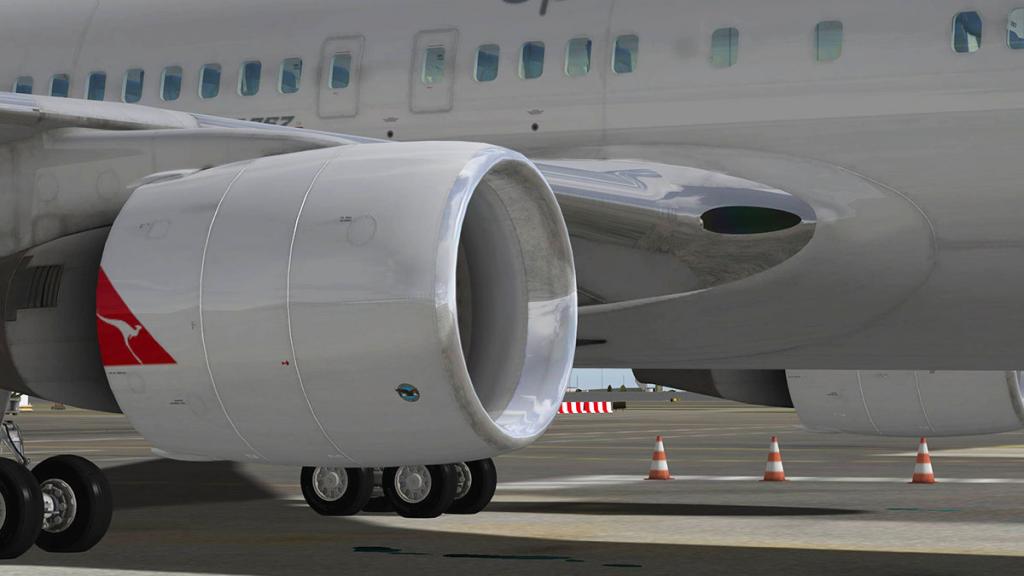
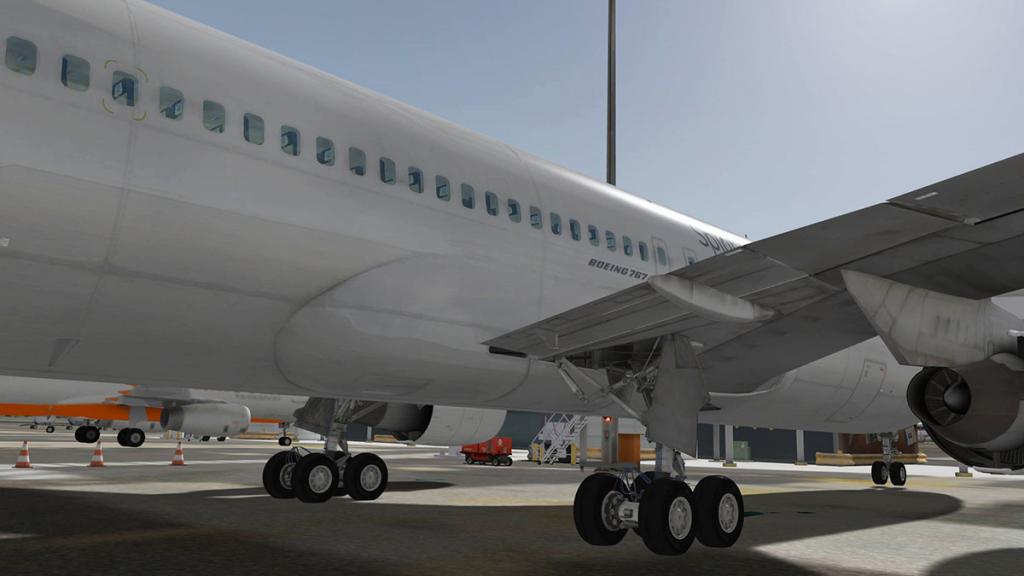
There is a distinctly different feel to the Boeing 767, yes it looks like FF's Boeing 757 and B777 series aircraft and that design feel is certainly strongly still prominent. But there is a different technique at work here in the way the aircraft's outer-skins are presented. The design of the fuselage is simply exemplary, but what you are looking at is in fact two fuselage's in objects. The usual standard inner version, but now also another object fuselage built over it. This outer object creates a brilliant shine over the aircraft (a sort of holy grail in X-Plane) and gives you (another X-Plane holy grail) great chrome surfaces. These reflective chrome areas are noticeable around the inner front wing surfaces and in the front areas of the engine inlet cowling surfaces. Certainly static images do not give these reflections a good representation of their quality and shininess, but they are very, very good. Externally the aircraft is excellent, how much detail do you want? how much more can you include in small detailing details? To highlight the sort of detailing you have here we will focus on an area, which is the wings and undercarriage (to cover every detail would take a small manual). 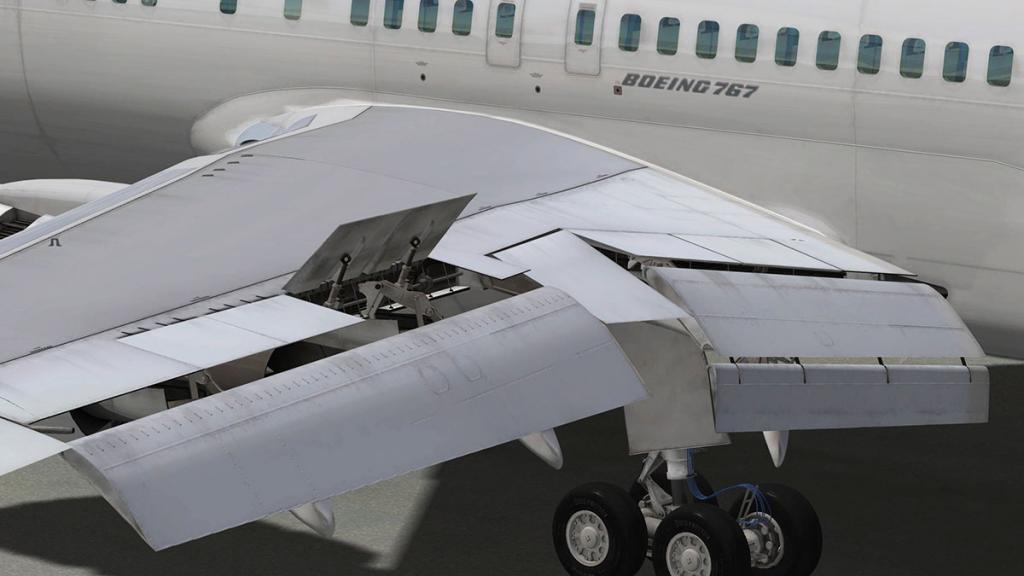
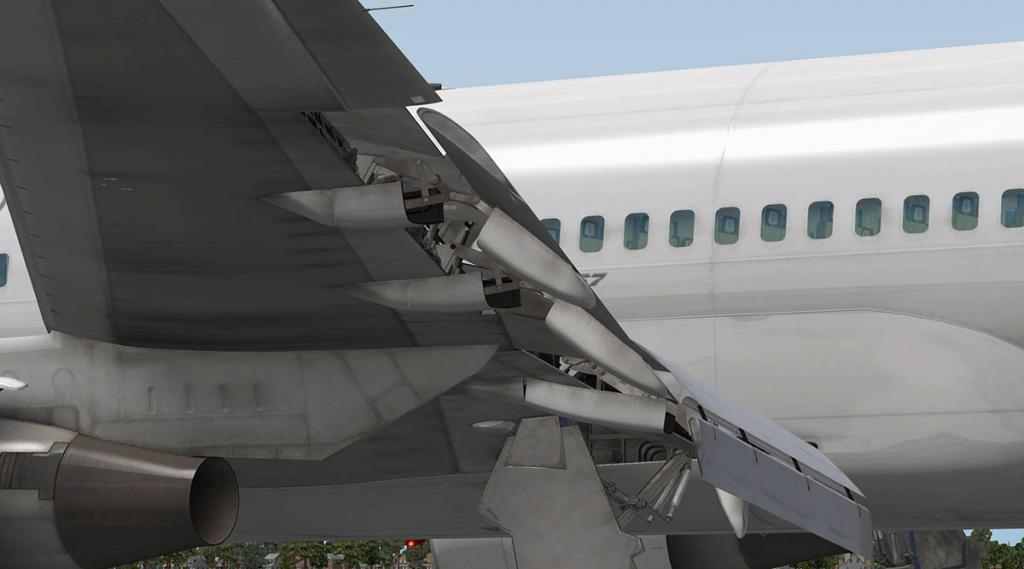
leading edge and trailing edge wing design is excellent, fully detailed and animated. The B767 uses a unique inner flap arrangement called a "Hinged Beam Four Bar Linkage" with Fowler flap, because of the interference of a drag problem the linkage has a shallow but wide fairing which was small enough to allow it to fix the drag problems. A variation was used on the Boeing 777 in the "upsidedown/upright four bar linkage" flap system. The Boeing 767 wings are swept at 31.5 degrees and optimized for a cruising speed of Mach 0.8 (533 mph or 858 km/h). Each wing features a supercritical cross-section and is equipped with six-panel leading edge slats, leading single-and double-slotted flaps, inboard and outboard ailerons, and six spoilers. Inner wing detailing is overwhelming, only when the wing is fully extended do you get the full detailing shown, amazing detail is what you get for your money today. The B767 here is one of the best yet. 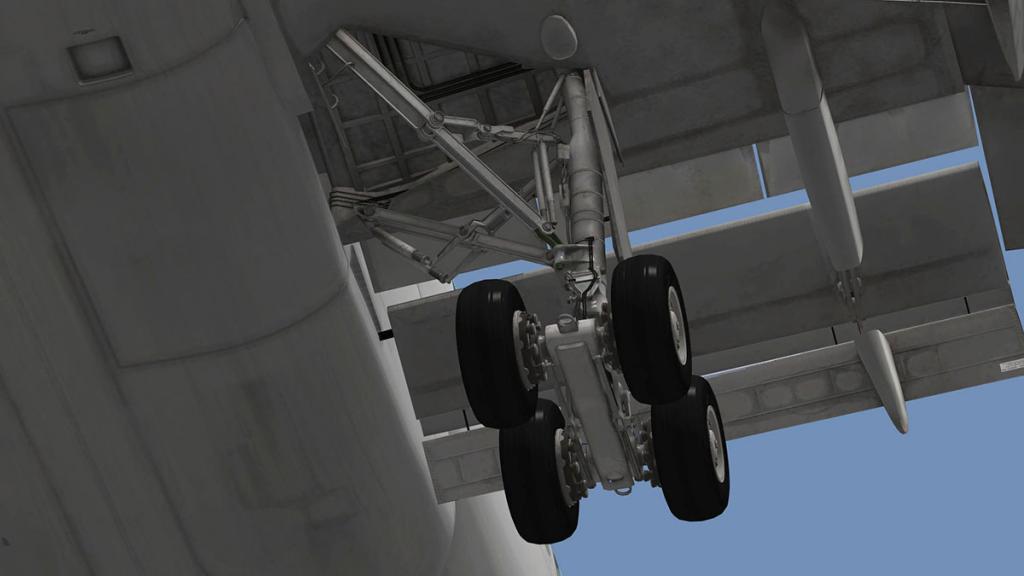
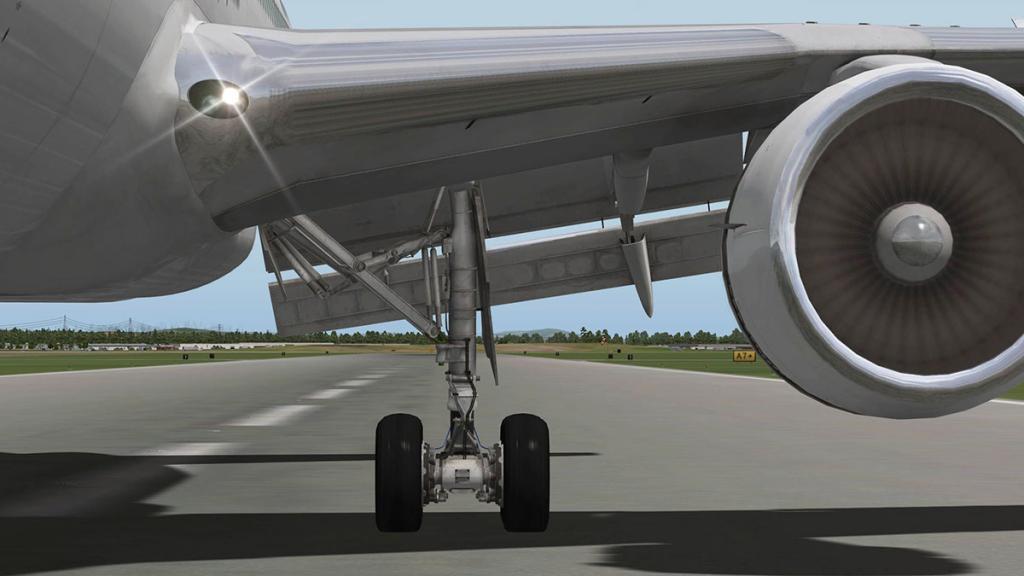
As is the undercarriage design, complex and fully animated you get every link, pipe, nut and bolt in perfect harmony, it is simply a miniature version of the real gear system, but the real aspect of this undercarriage quality is in the motion of their working sum of parts, put the aircraft down in a heavy side wind and you see the whole system working to its maximum, the gear compresses and wheels work with the tarmac, and even the Hydraulic piping will flex and move to the gear movement. You can spend hours with replays watching the motions in action. 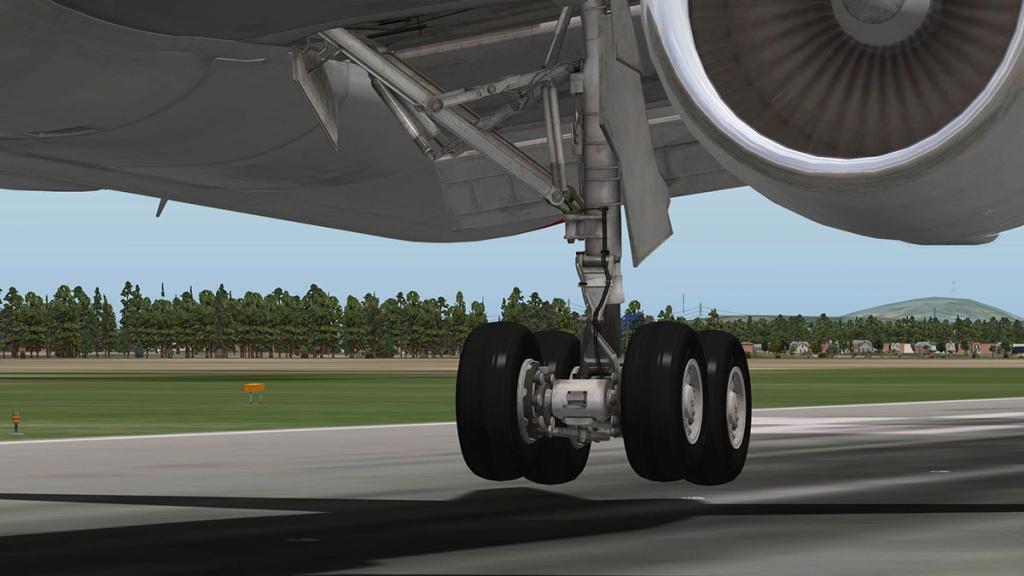
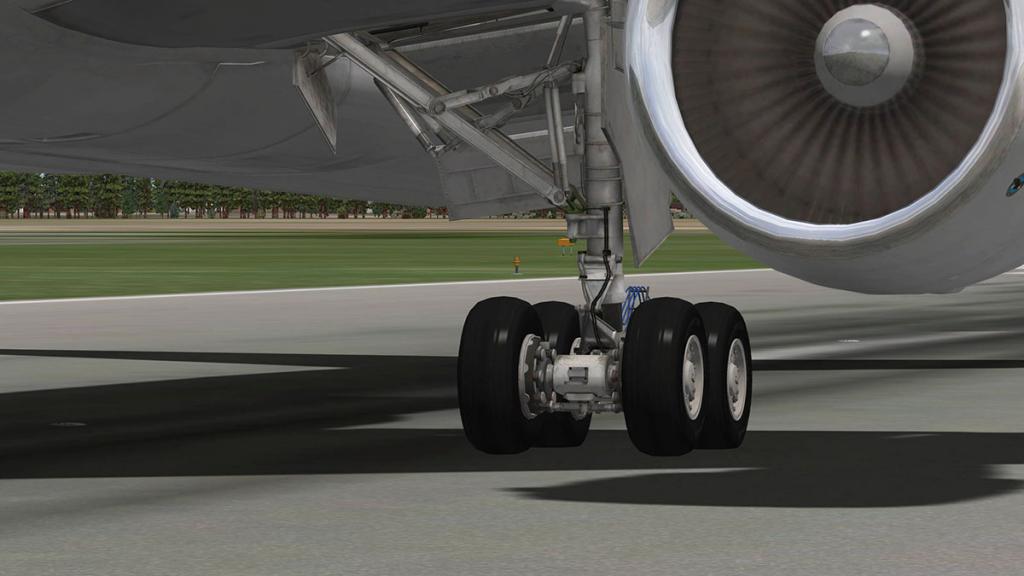
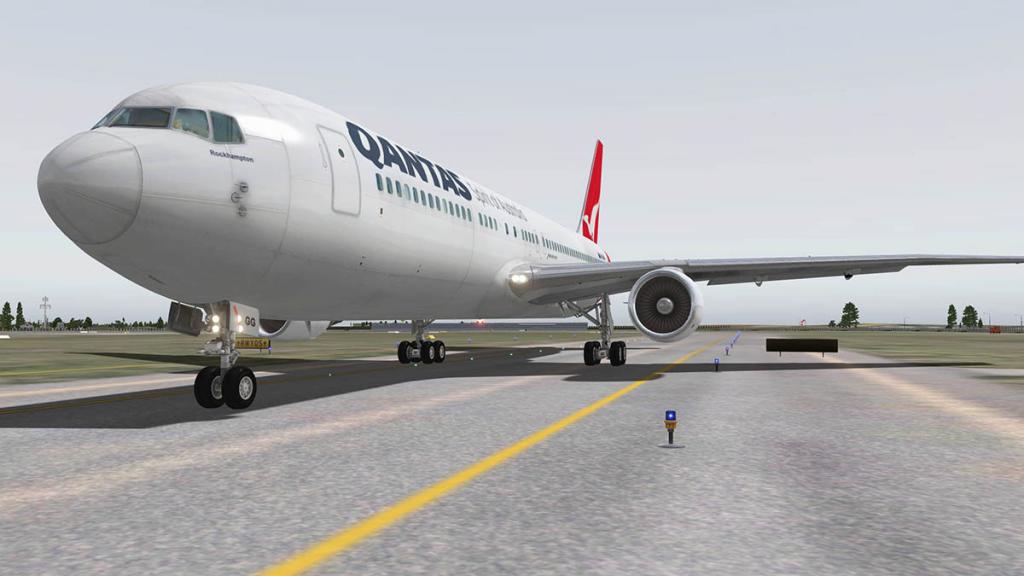
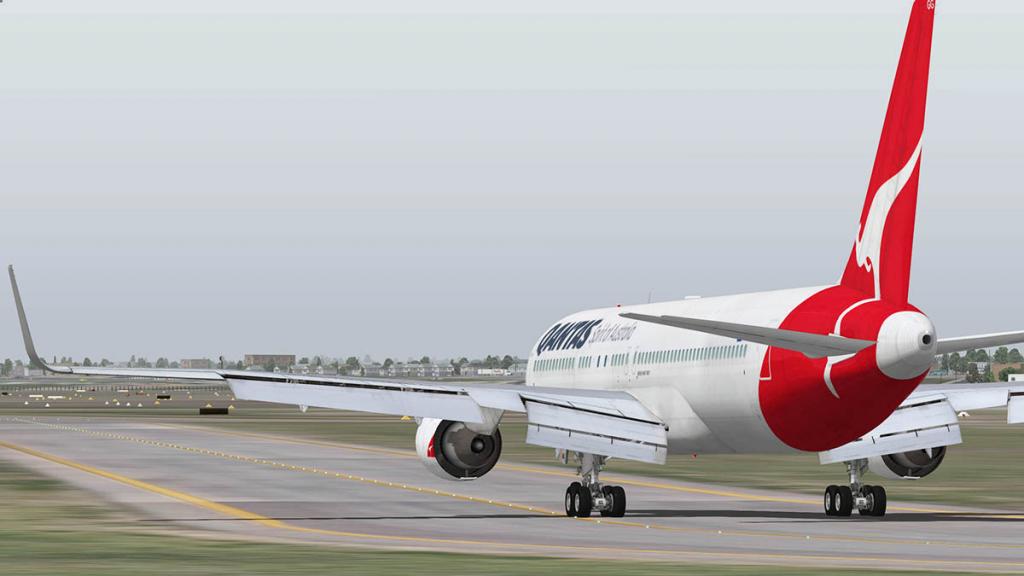
So external design is extraordinary good, every fuselage join, rivet, and body construction is perfectly realized, smaller items like pitot tubes, aerials, rudder and flap joints are all there to look for and see, only slight blemish is the front strut lights can shine through the doors, which is common theme with most X-Plane aircraft (noting a Laminar Research issue and not a developers one). There is the choice between the old original straight edge wing design and the newer upturned Aviation Partners blended winglets. Internal 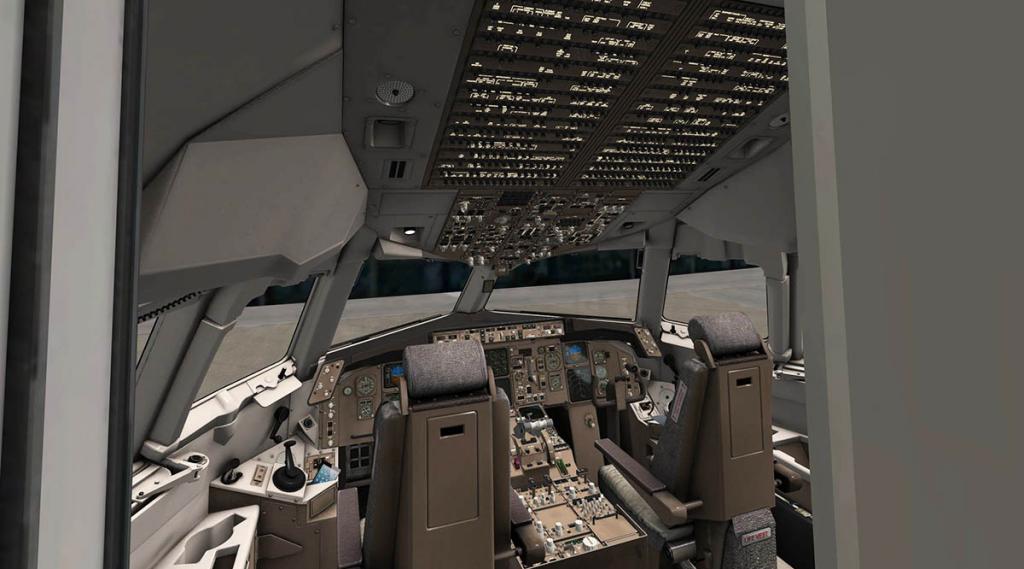
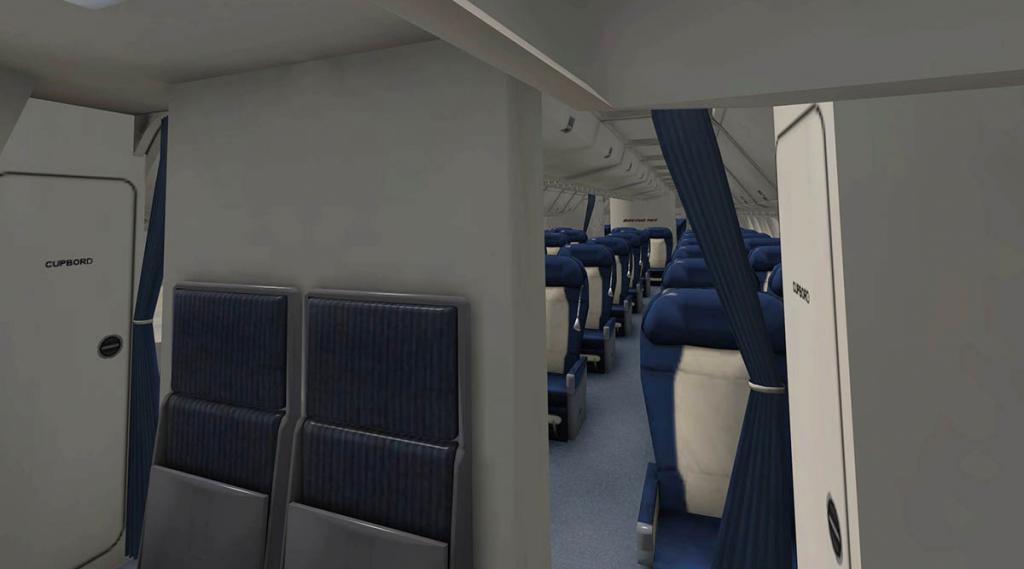
Internally it is a quick glance left into the cockpit, but let us have a look at the cabin first. 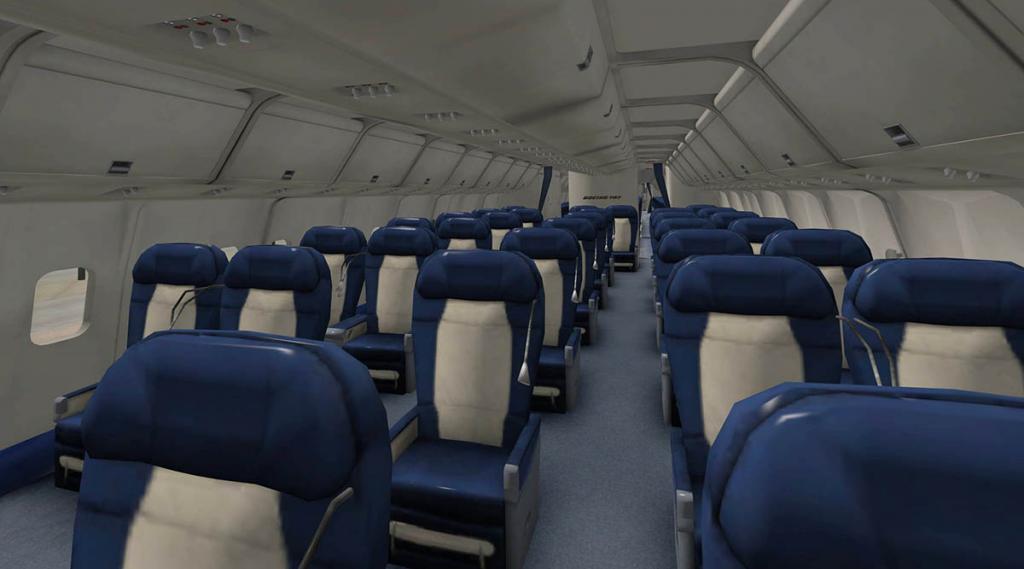
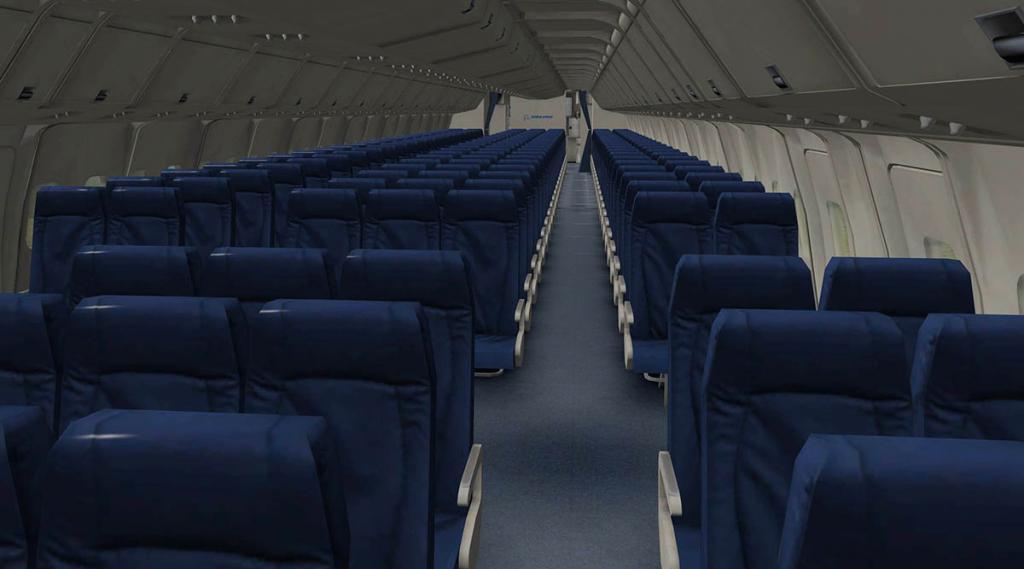
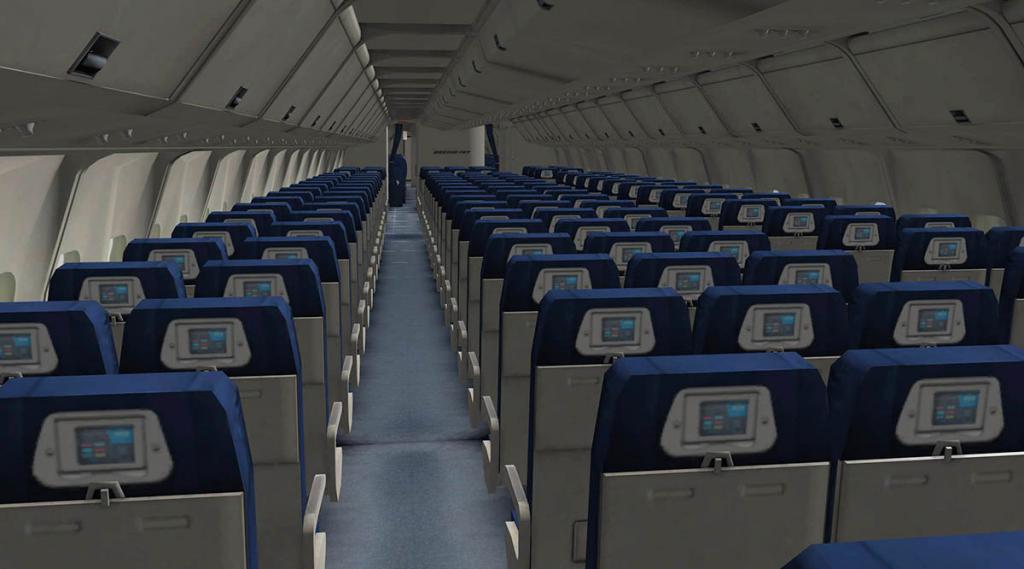
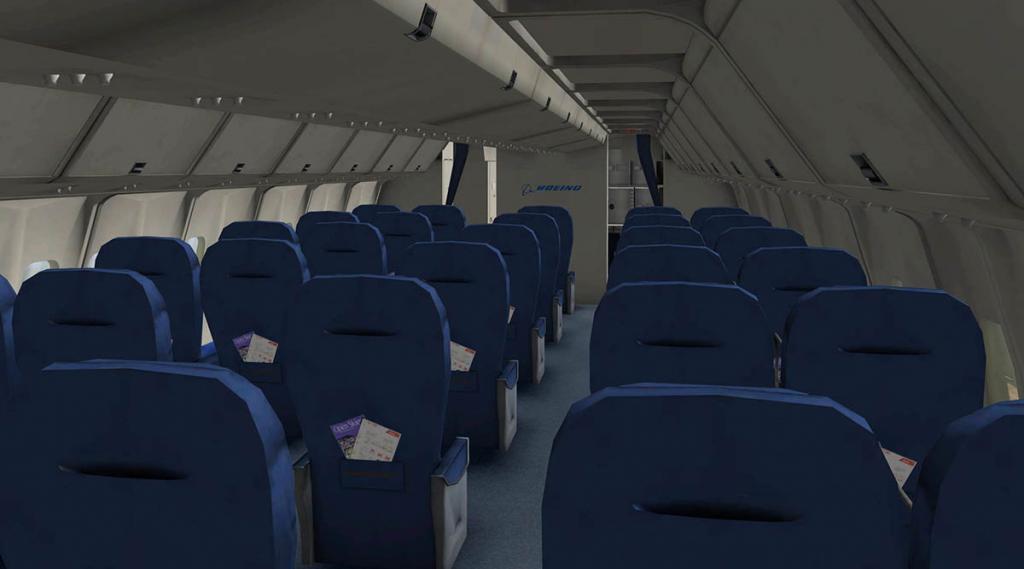
Two class cabin in five across in two - one - two first/business and seven across two - three - two in the main economy section, all blue seating is very 80's in seating design. Cabin is well designed and laid out, the fittings look the period that the aircraft was built in and the overhead lockers are tiny compared to the huge bins we have today. Overall the cabin is excellent. 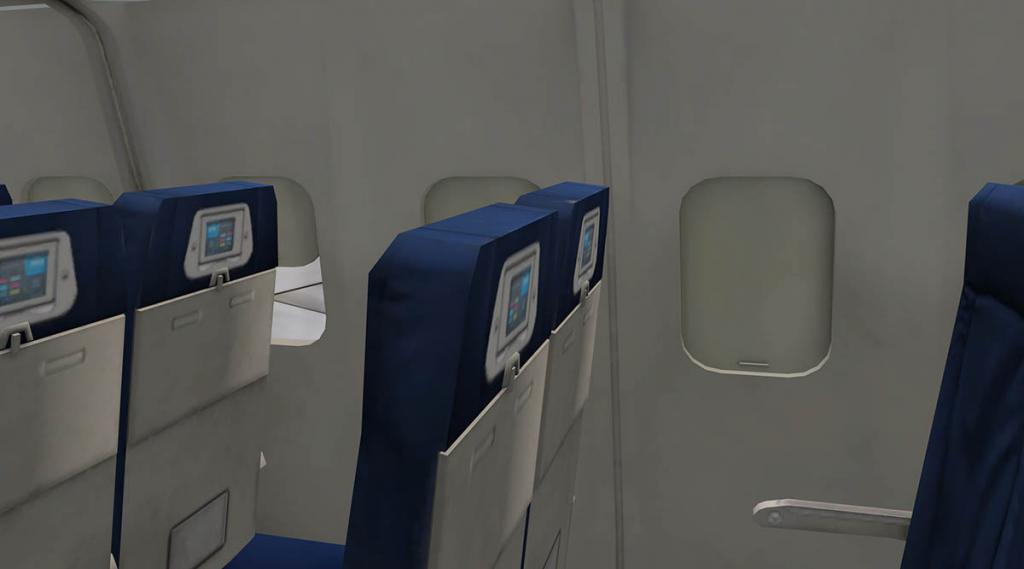
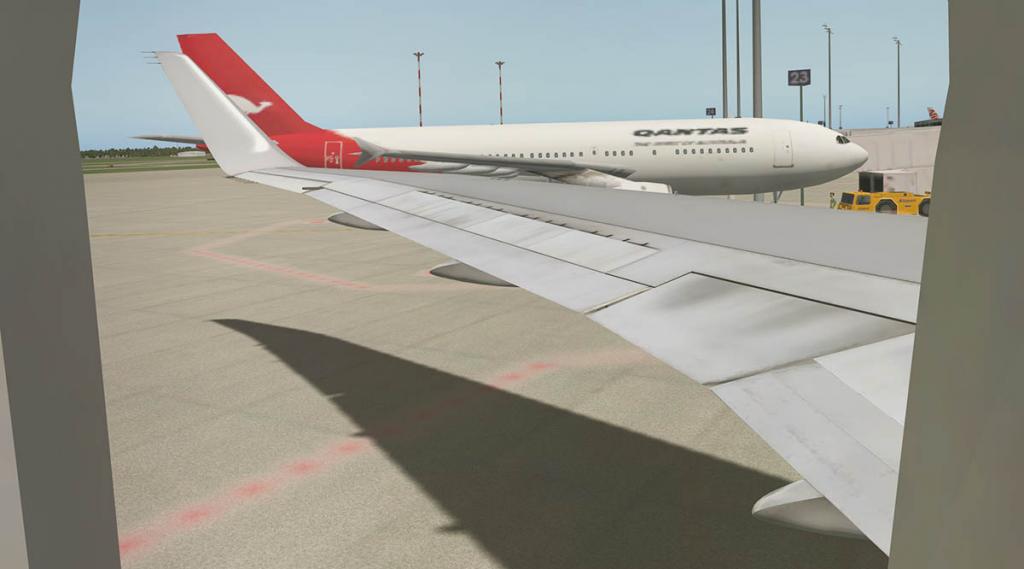
Cabin has "Dynamic windows" (shades) that open and close to the angle of the sun like on the FF B757, but here you have the option of turning them off (thank you), for the windowhuggers the view out is excellent, early versions of the FF B767 had very dark orange opacity window view, but thankfully for the release they have been made a lot clearer and more enjoyable. Cockpit first look. 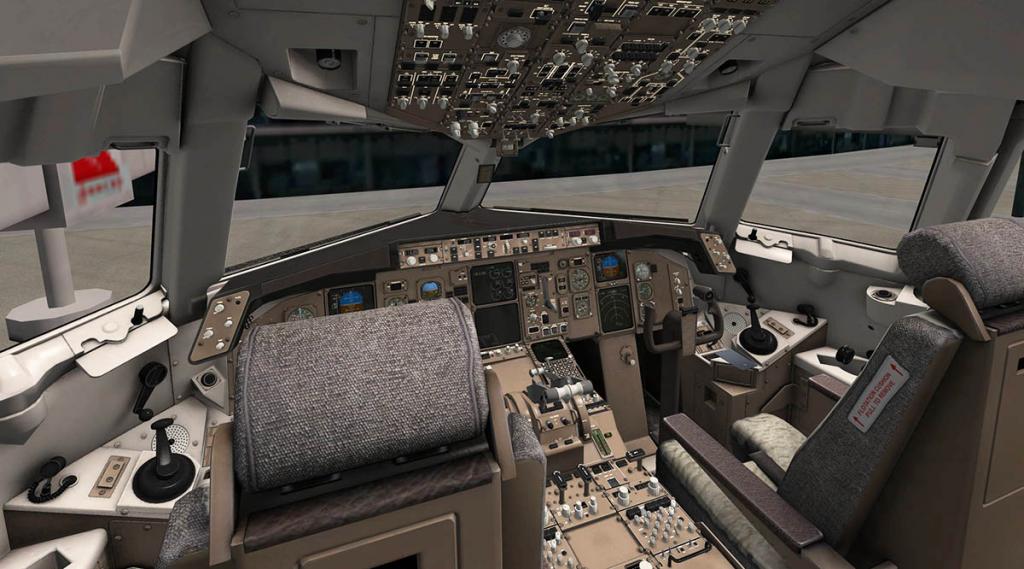
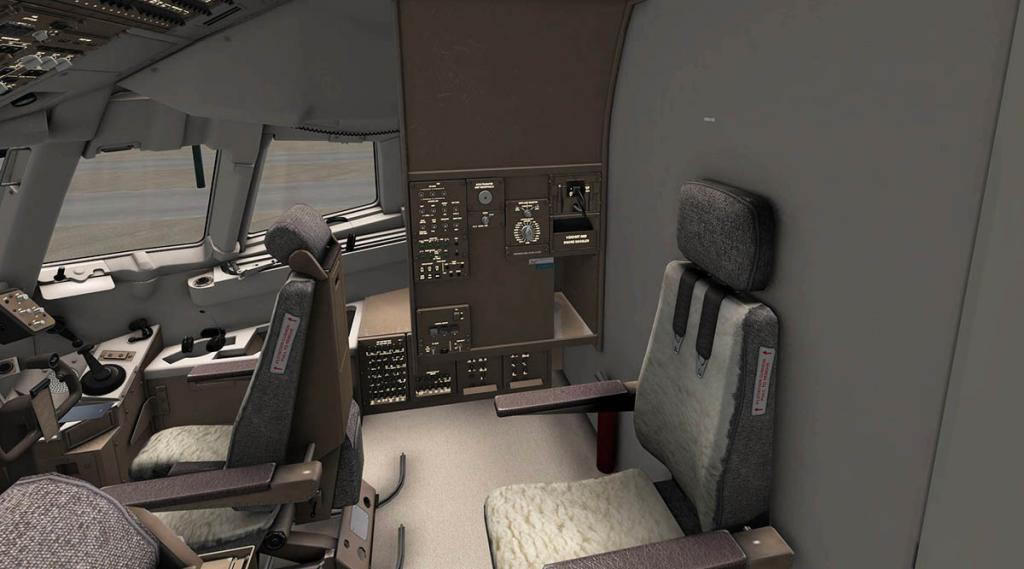
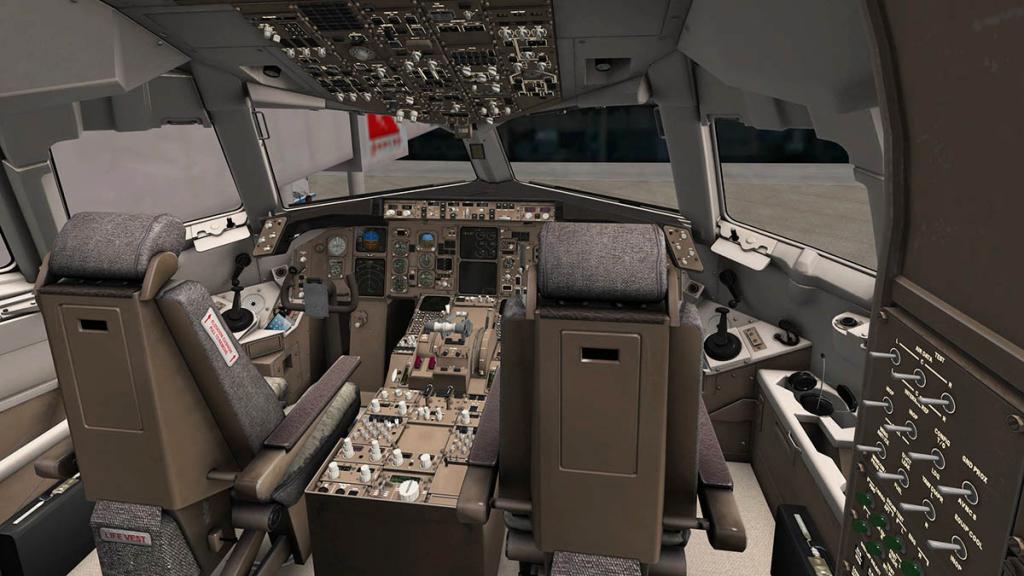
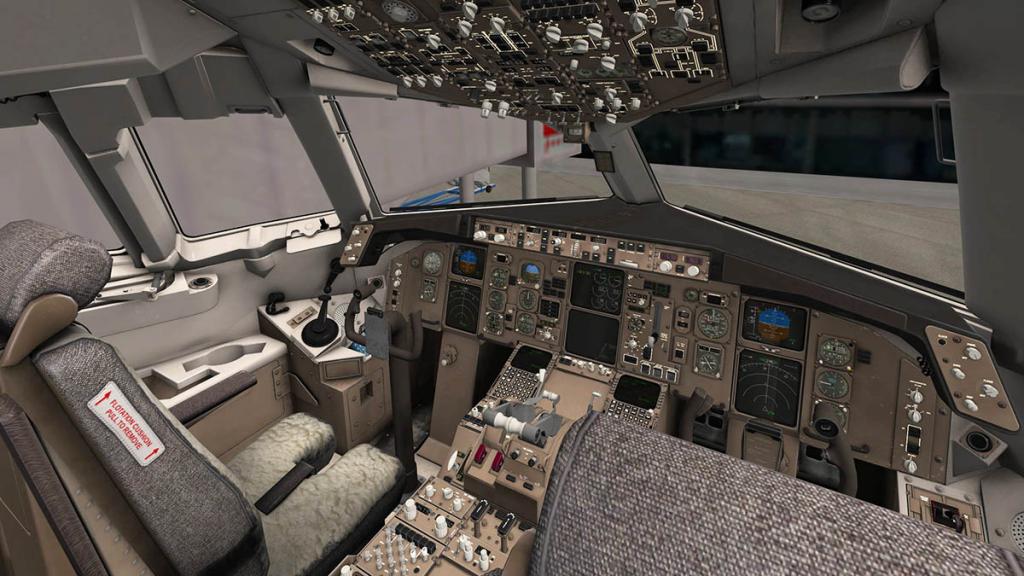
The cockpit experience is astounding, this aircraft is not fully "cold and dark" because it is waiting for a transition crew to take it on to Adelaide.
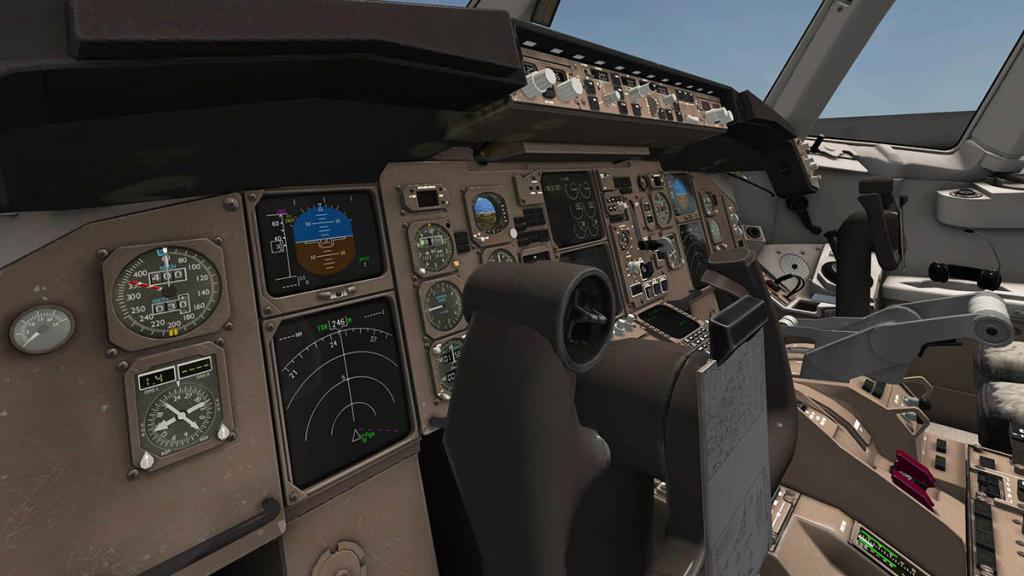
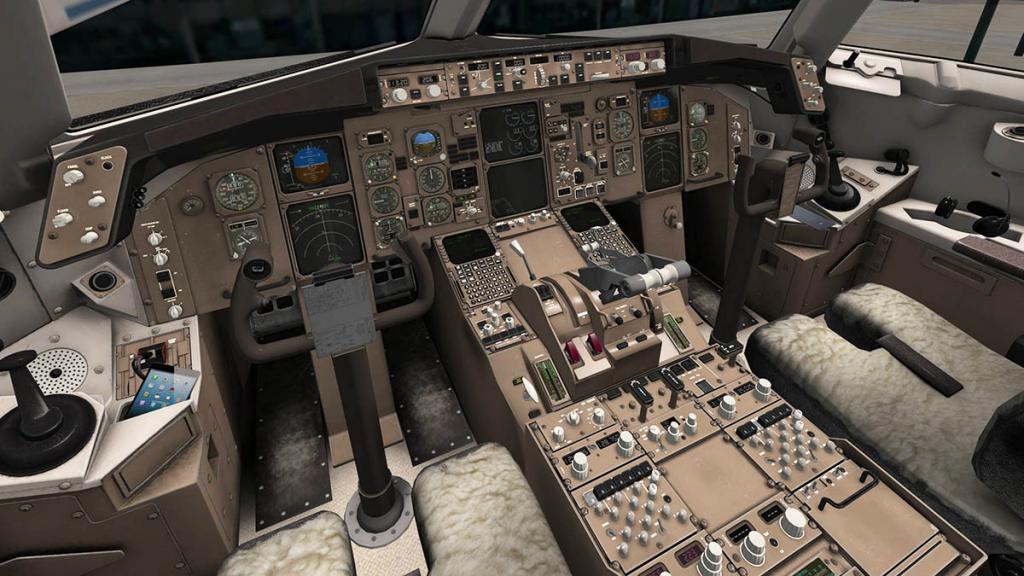
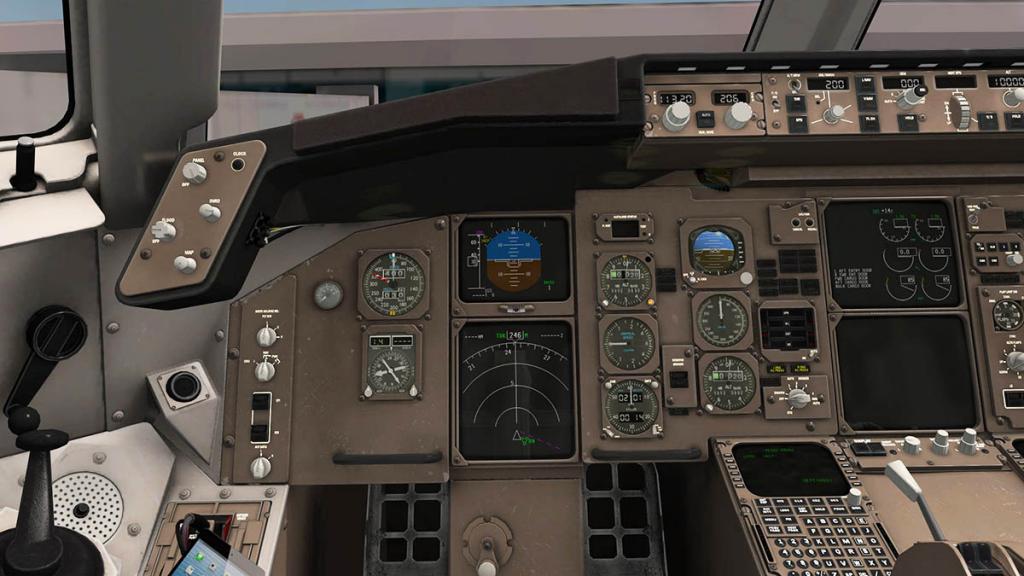
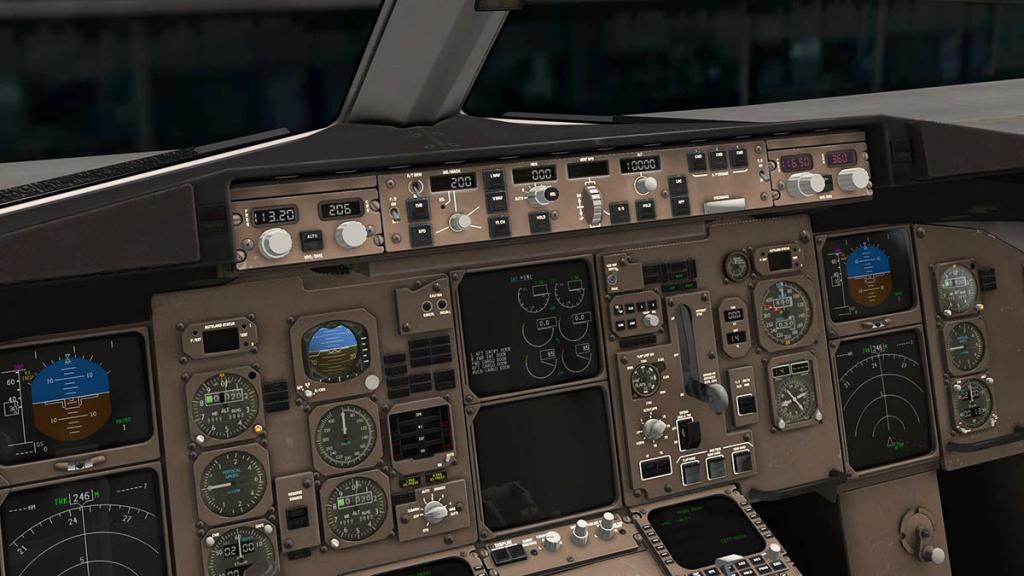
The surrounding cockpit does feel different, but sit in the captains seat and it all suddenly becomes very familiar. If you already have the FlightFactor Boeing 757 Series you will find this view and all the controls, knobs and switchgear just like home, everything is the same and the only changes are the ones you can't see which is the aircraft's weights, fuel loads and fuel burn, all round the aircraft is of course heavier than its cousin in 99790 kg (220,000 lb) for the Boeing 757 which has a Max - takeoff weight to the higher 179168 kg (395,000 lbs) GTW for the Boeing 767-300ER. 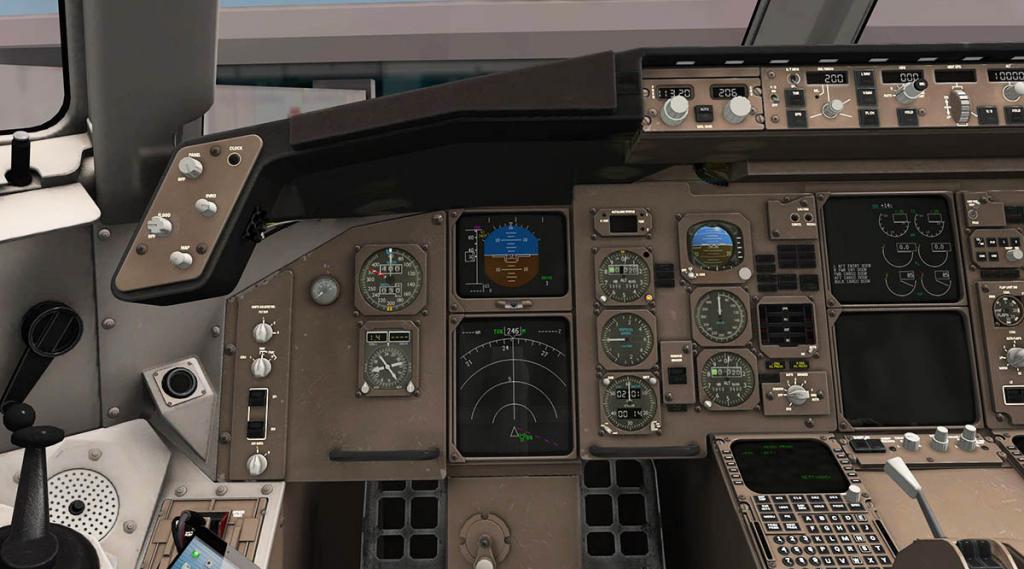
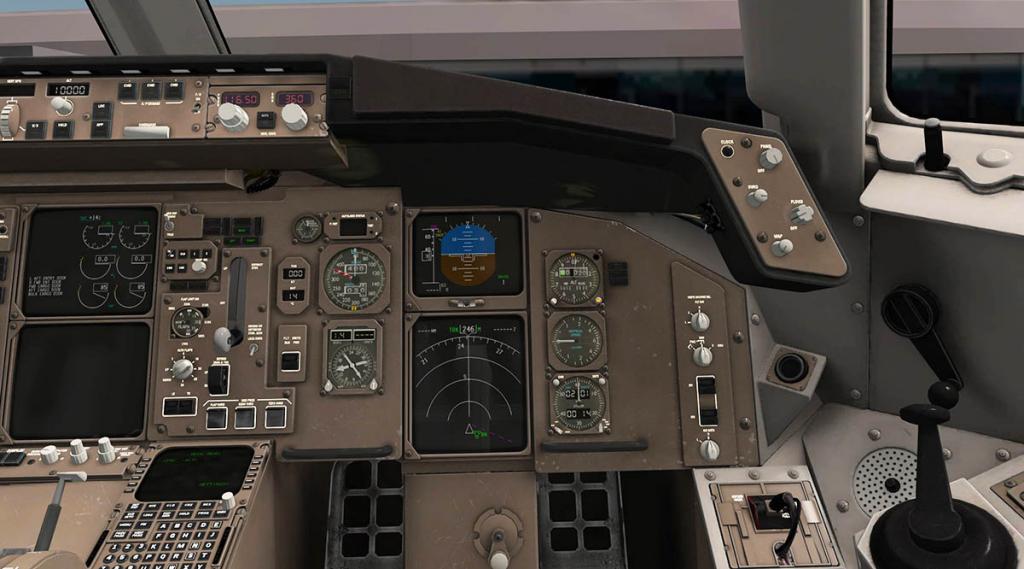
From a pilots instrument perspective this is not a complicated aircraft, there are only the same basic tools that you would find on even a regional turboprop aircraft. It is in the setting up detail that makes this aircraft a professional machine. This aircraft had some of the early glass style cockpits, not the full sized panels you see today, but the early style cathode ray tube (CRT) designs. These screens were and are fitted here usually two CRT's and the top smaller one is for the PFD (Primary Flight Display) and lower CRT is is for the MAP/NAV display. Two more larger CRT's cover the aircraft's performance and status are situated mid-panel. The rest of the instruments are standard clockwork gauges and dials. We will get a better understanding of the PFD/NAV displays when flying, so I will pass over them for now. But the standard gauges and dials are on the Pilot's/Captain's side far left is the main Airspeed dial (KNOTS/MACH) combined and below is the Radio Distance Magnetic Indicator (RDMI) that shows DME-VOR/ADF distances and with dual needles display (switchable). Right of the CRT's is the "Autoland Status" which can be switched to Auto1/Auto2/Manual on the OHP. Below is the Altitude indicator with barometric settings. Lower is the Vertical Speed Indicator from 0 - 6000fpm, bottom is the timer/clock. Centre are three standby/backup dials in Artificial Horizon, Airspeed dial and Altitude indicator. Autobrake setting knob is here as well. First officer right side position has exactly the same instrument layout, but there are a few extra dials and displays in a "Brake Pressure" dial, TAS/Cº display, Gear up/down lever, Flap position display (1, 5, 10, 20, 25, 30 degrees) and engine thrust parameter limits selection panel (also known as "thrust management". As noted the panel looks complicated but it is really quite a simple layout. 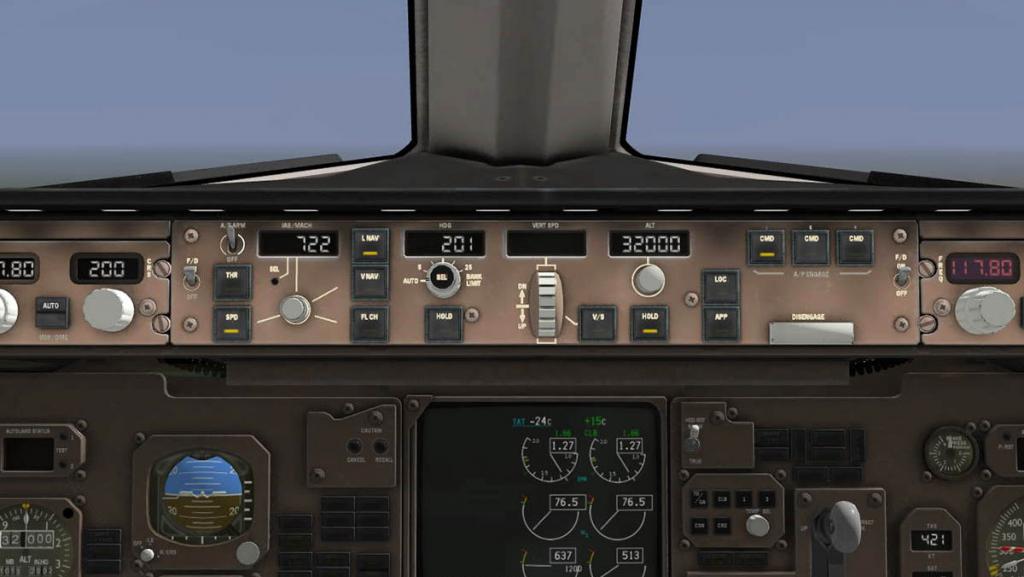
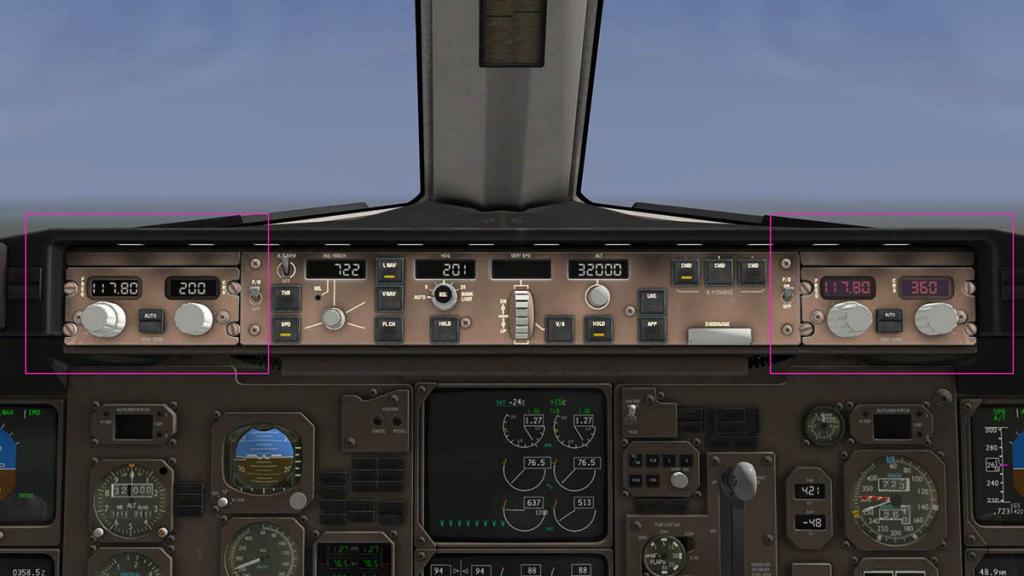
Autopilot (AP) is very standard Boeing, so if you have flown any Boeing flightdecks then you would be very familiar with the layout, like the B757 each end of the AP is a frequency setting (VOR 1/NAV 1) left and VOR2/NAV2 right) both CRS (Course) setting knob are here as well. 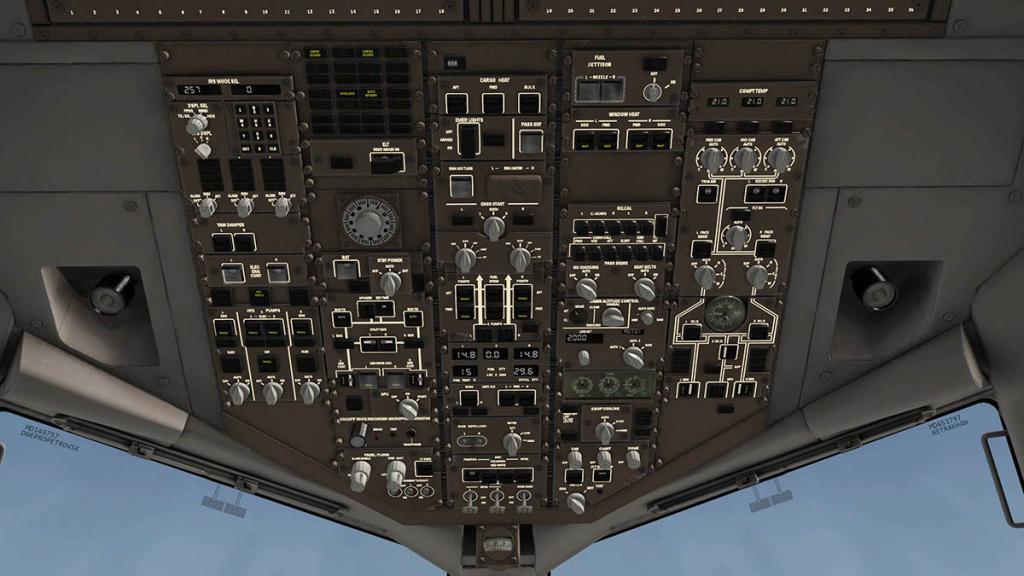
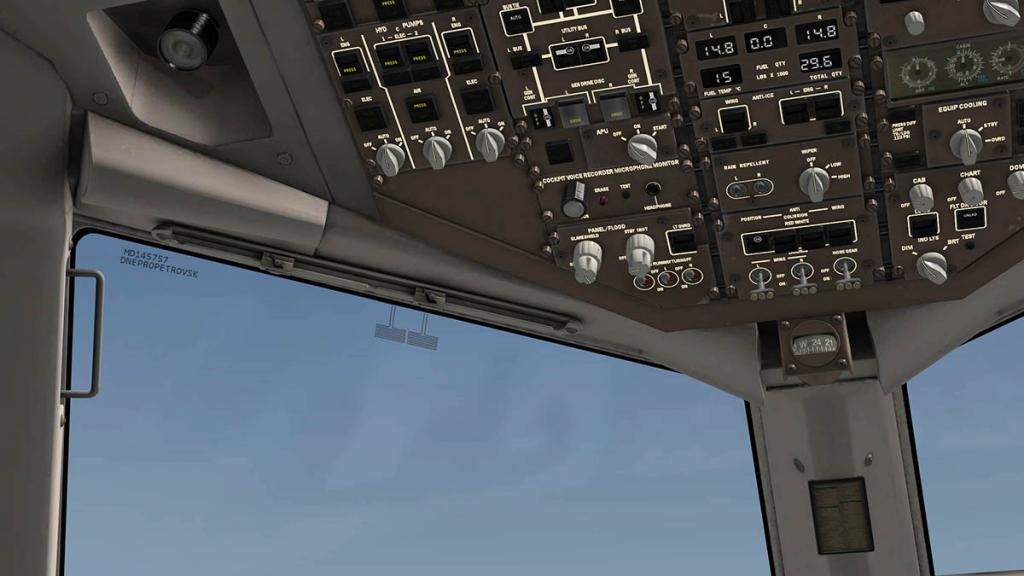
There is slight (very slight) differences on the OHP (OverHead Panel), but the familiarity aspect is very strong. All areas on this FlightFactor aircraft are covered in systems and switchgear, the panel is very comprehensive in detail. Main panels are Electrical, APU (Auxiliary Power Unit), Hydraulics, Electronic Engine Control (EEC), Inertial reference, Oxygen, heating (external and internal), Air-Conditioning, Bleed and Pneumatic air, Cooling and anti-ice, call panel, Fuel and aircraft lighting. 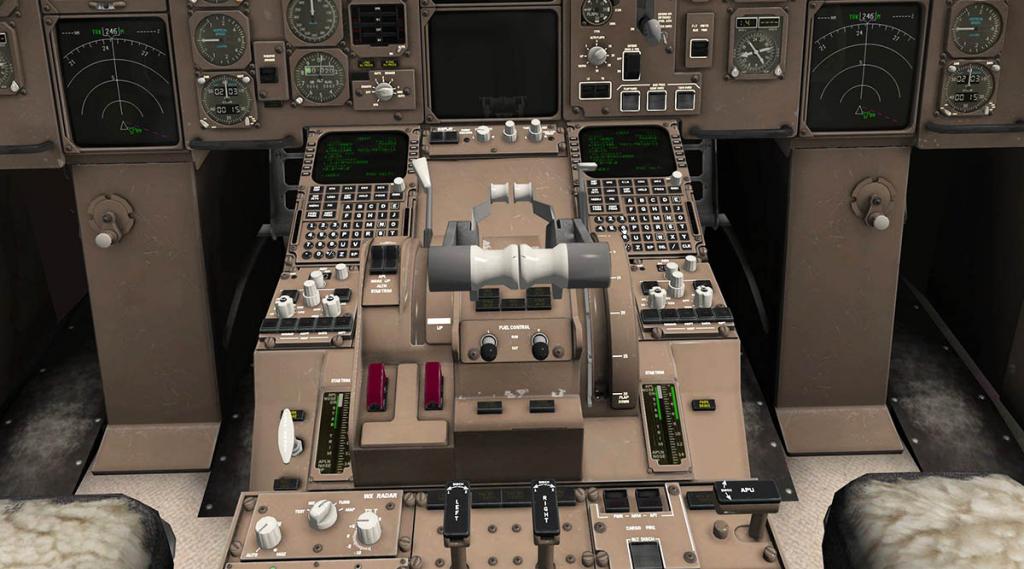
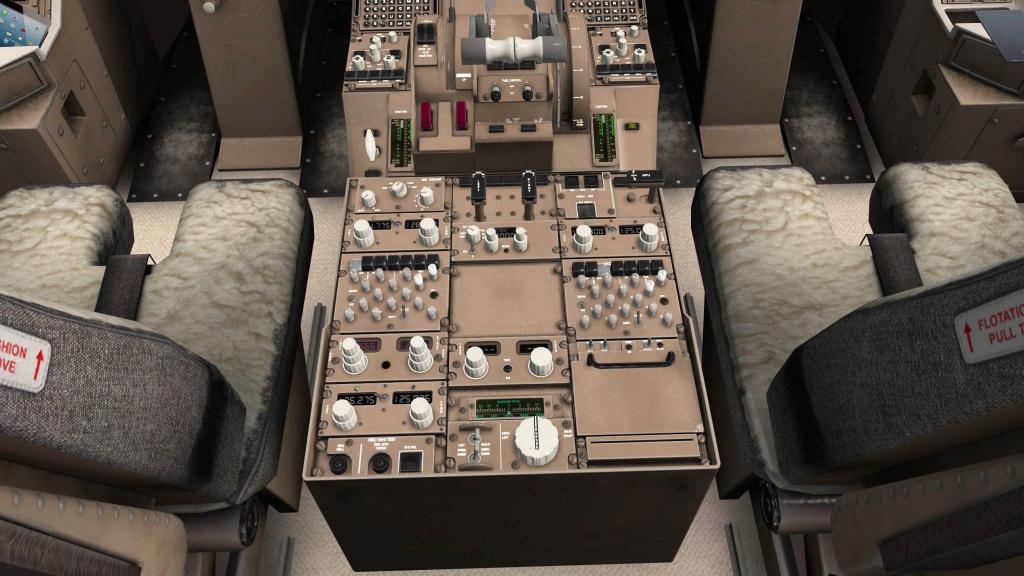
Pedestal (or Aislestand) is well laid out as well, The central Throttle (engine reverse), Stab trim, flap lever, speed brake lever of course dominate the panel, The two start/cutoff fuel control switches are buried at the rear of the throttle set. EFIS (electronic Flight Instrument System) panels are available for both Captain/First Officer and again a replication and use of exactly the same units on the B757. Engine, Cargo and APU fire controls and main radio communications panels are mid-section, rear is the ADF/NDB frequency dials and that difficult to find VOR1/ILS frequency radio set (click lower knob to activate). far rear is your Aileron/rudder trim wheels/knob. There is a right side rear service panel, that is for observers and monitoring general aircraft systems. MCDU and Flightplanning 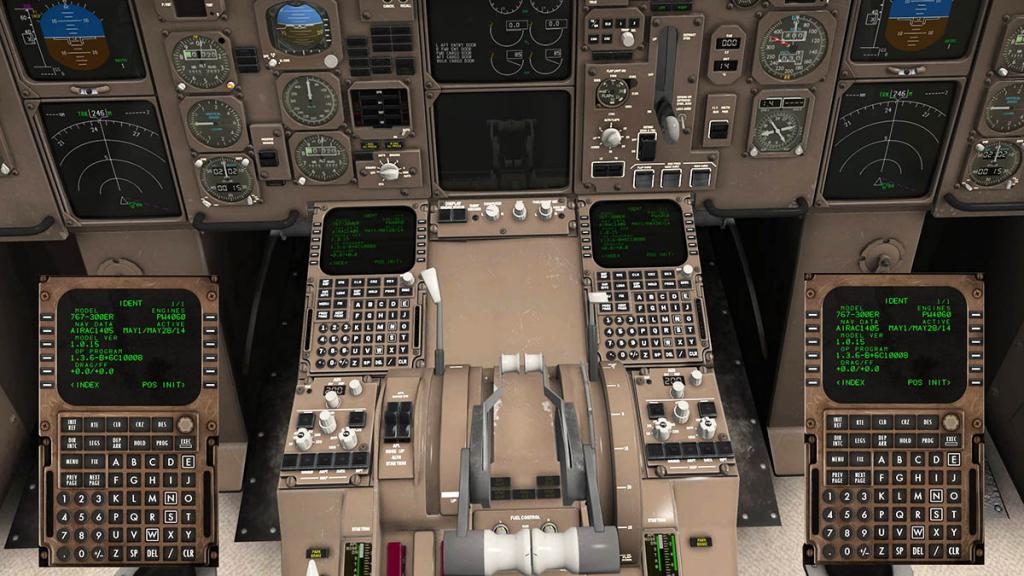
MCDU (Multipurpose Control Display Unit) in the Boeing 767-300ER is one of the best in X-Plane. Bulletproof and well designed, you can easily programme in your aircraft's operating parameter's and route planning. Both Captain/First Officer MCDU's pop out for ease of use and are independent of each other. You can use it on your iPad as well and there is comprehensive instructions provided on the way to connect X-Plane to your iPad or if you already have that installed for the B757 system, the same one will work here also. 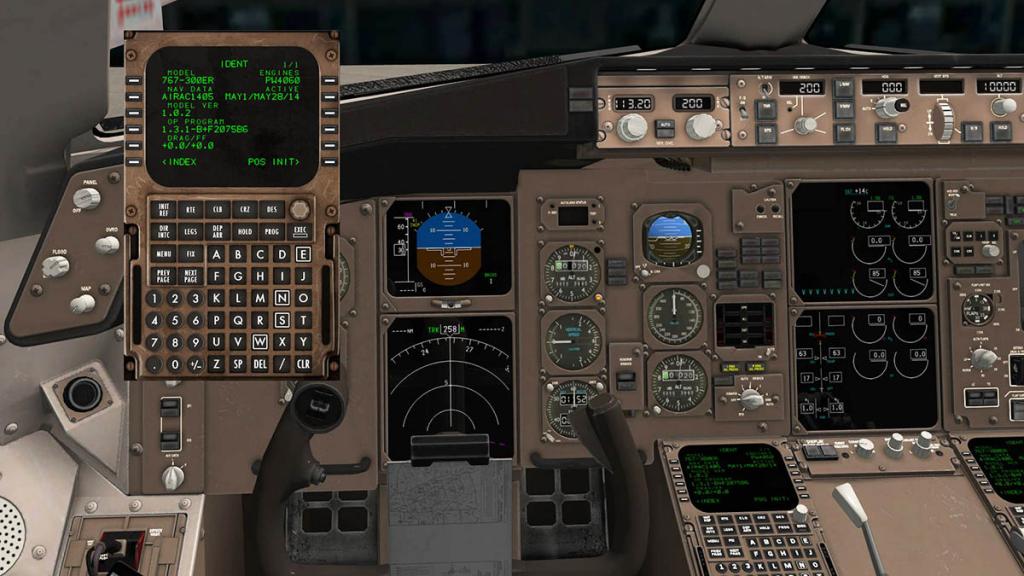
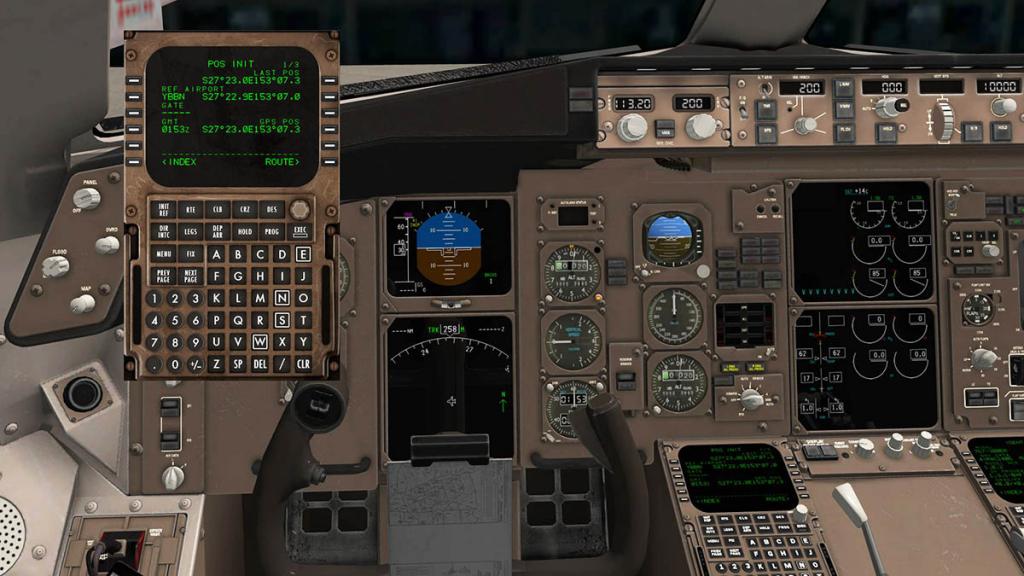
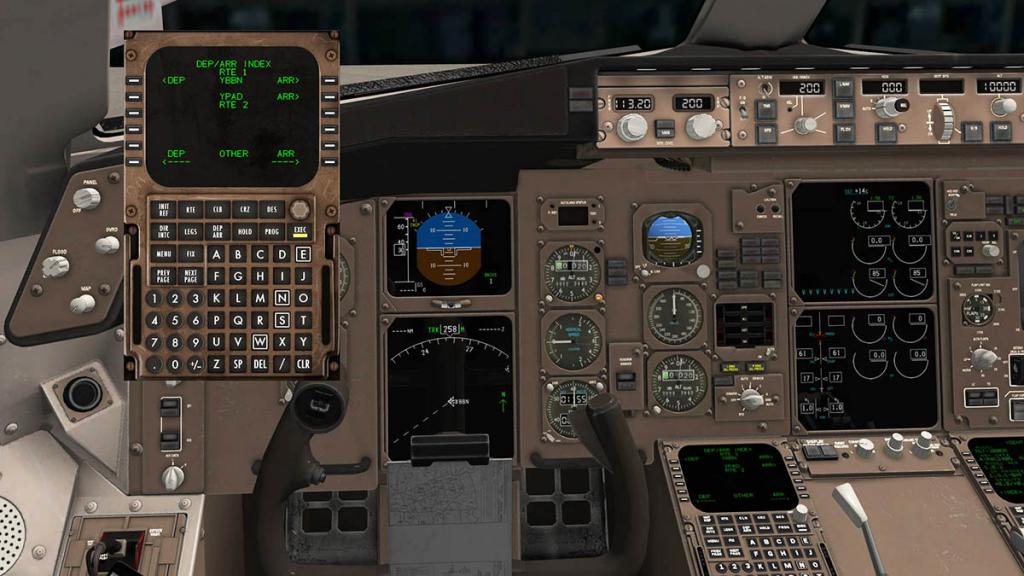
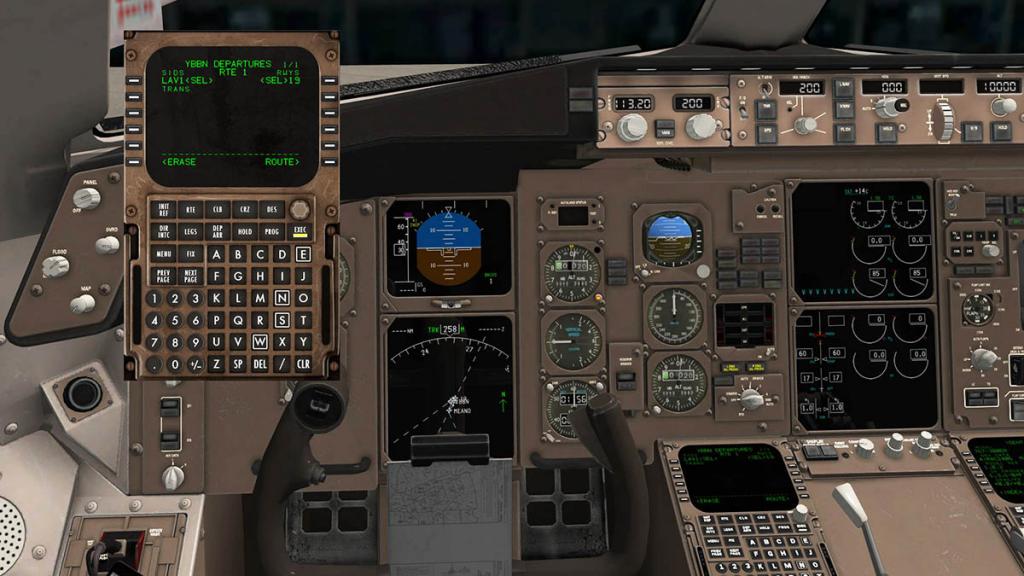
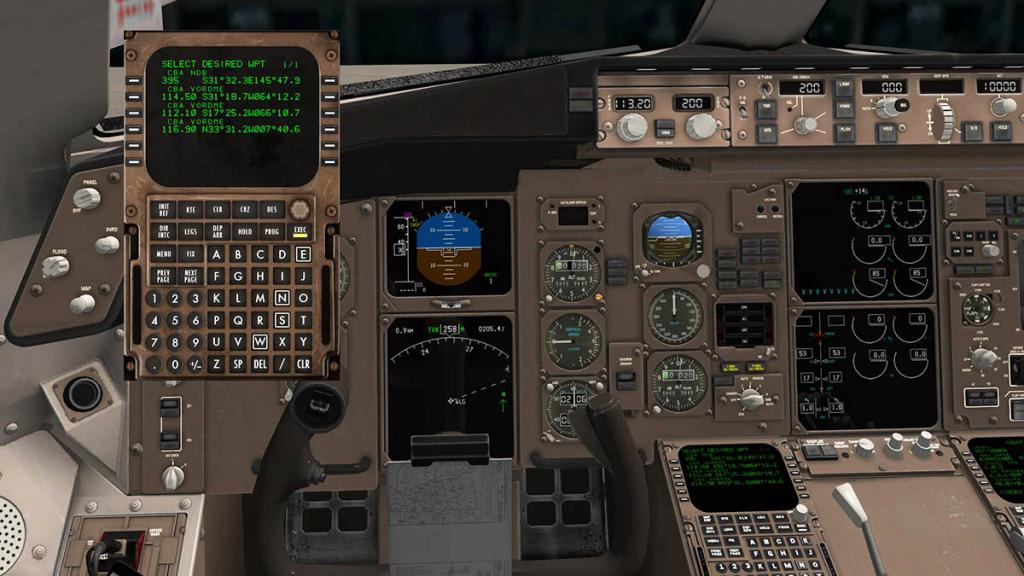
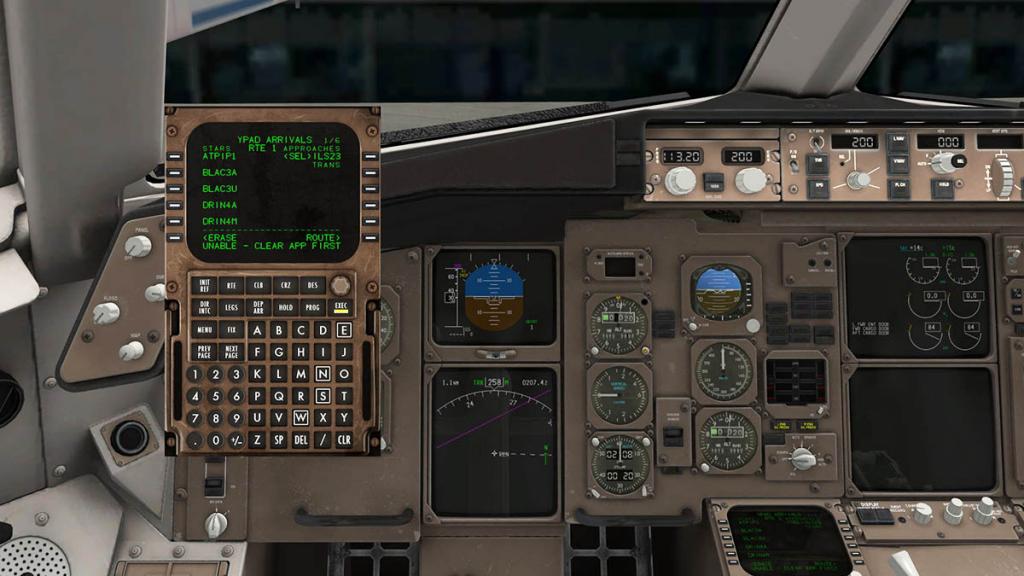
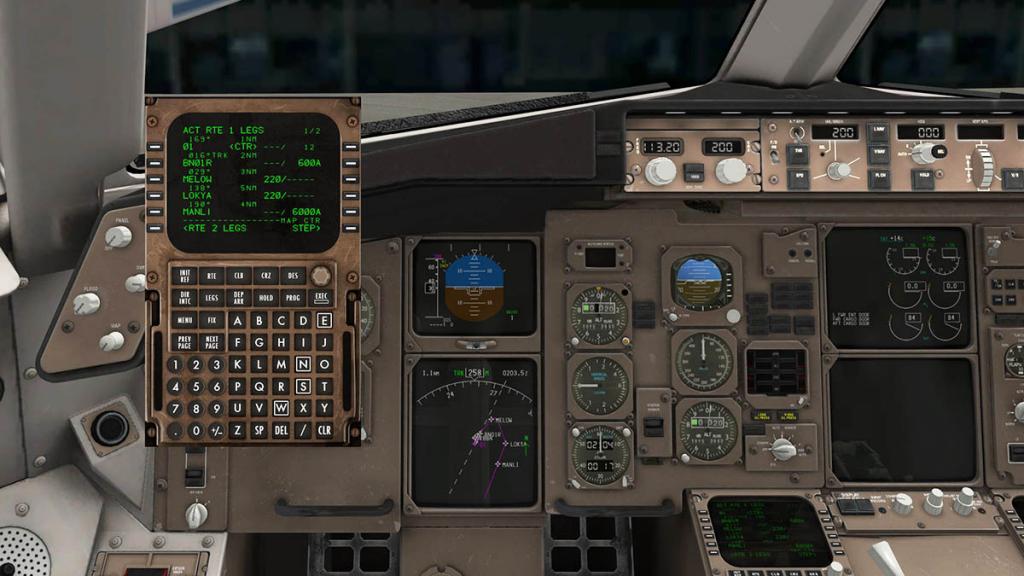
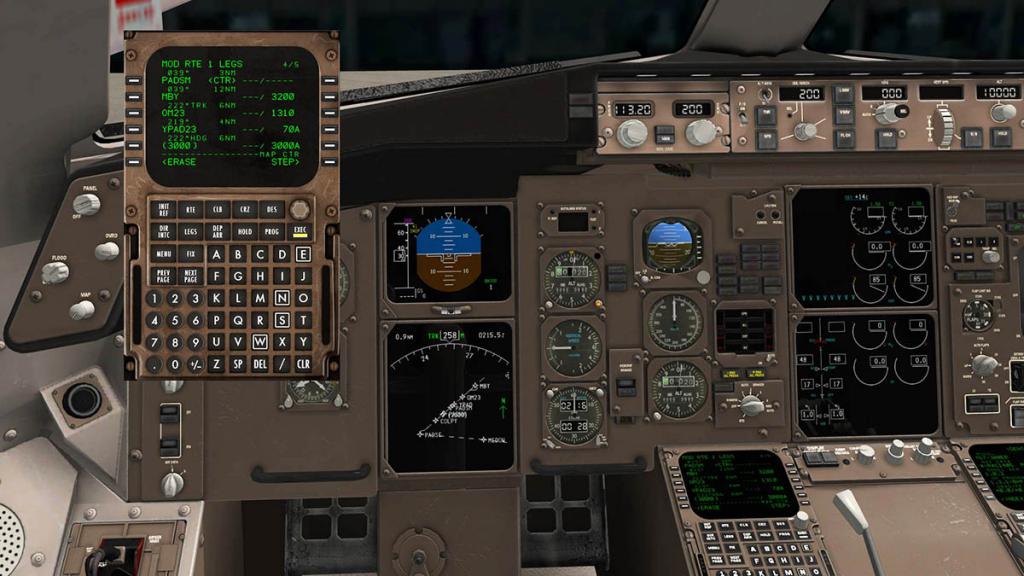
Setting up the route is very easy, select your departure (YBBN) and arrival (YPAD) airports, select your RWY 19 and SID (Standard Instrument Departure) and "Trans" point in my case LARAVALE "LAV", sometimes you may be required to select from a selection of NAV-AIDS to select the right one is to look at the co-ordinates. Then input your route waypoints and I tend to go for DME-VOR and NDB fixes for ease of input and distance measuring. On ARR (Arrival) you select RWY23 your STAR (Standard Terminal Arrival Route) which is the opposite of your SID and here it is "BLACK SIX" (A note is that I usually have to edit a STAR section to get the best approach, shouldn't have to, but I usually do?), when done then EXEC or activate the FlightPlan, you can save your route and also use flightplans you created in the FF B757 by moving them to the Plugins/767Avionics/routes file (the routes are in the same place on the B757). You can check your route by in the EFIS select PLN mode for the NAV/MAP display and press "SELECT" R6 Key to move down the list. 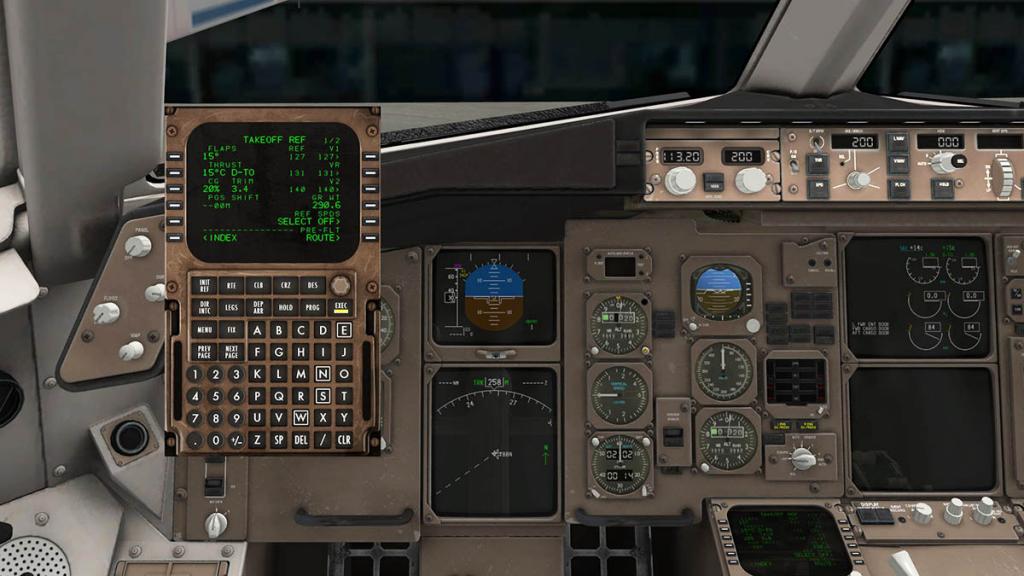
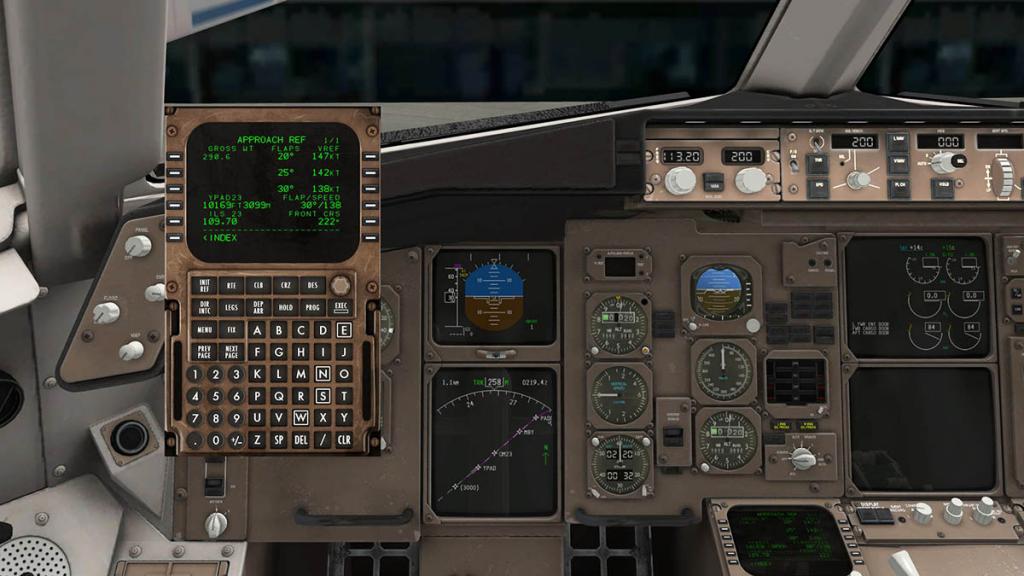
To get the best performance out of these aircraft it comes down to the way you programme and set up the aircraft with weights and balances, you get help of course which we will come to in a minute. But the professional serious pilots of you out there know the good nitty gritty is in the minor details of flight planning. To show the serious depth of programming in performance with the FF Boeing 767 it is how much detail is now available for you. It is certainly important to set up your aircraft's weights and fuel before doing the final calculations in the FMC (Flight Management Computer), if not it can alter your flightplan and it will need re-editing to fit in the new settings, worse it can ruin a STAR approach and you will need for serious editing to get the correct flow to lineup with the runway. But get the W&F numbers right and there is bounty of information at your disposal. 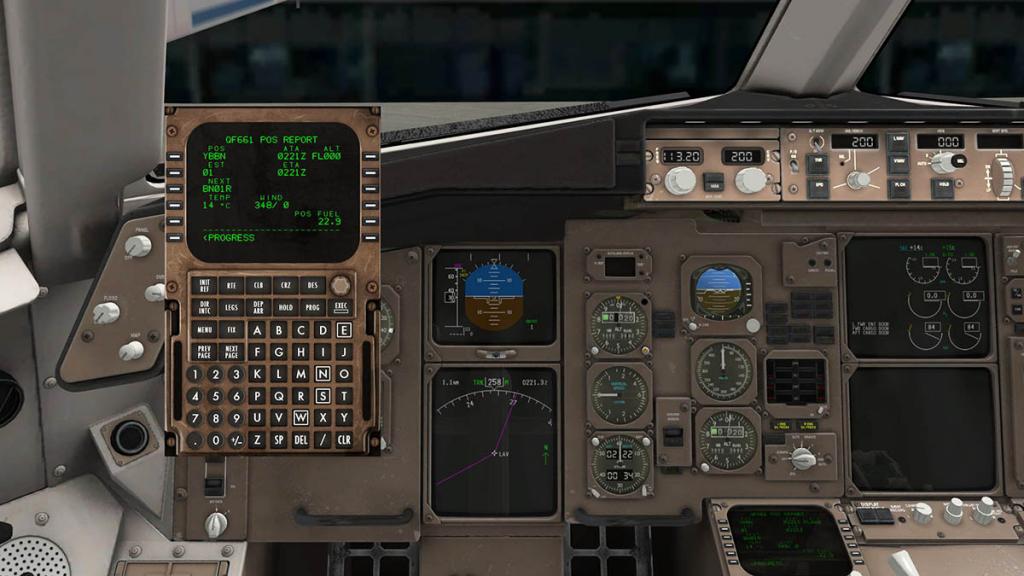
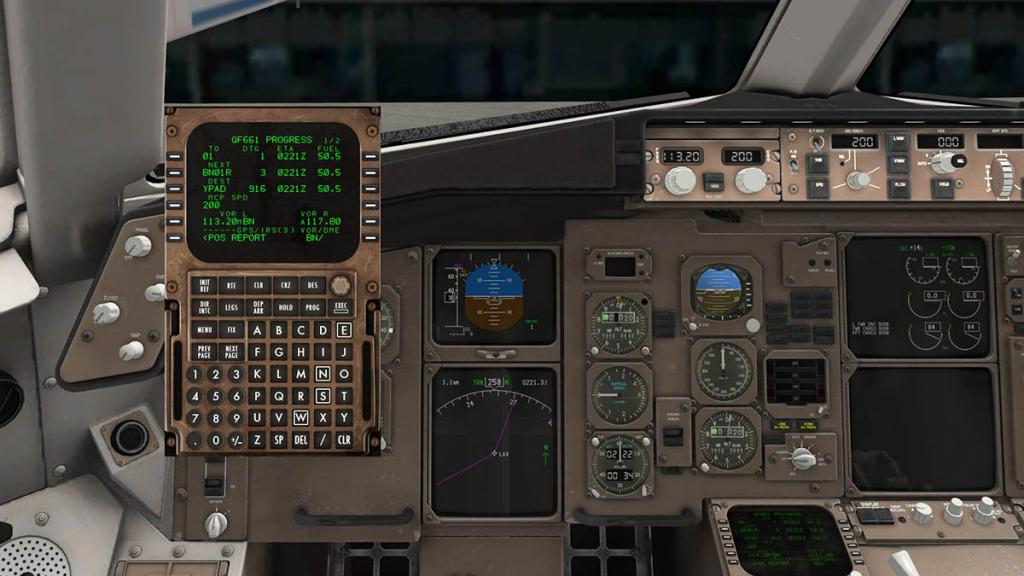
One such area is the option of using "ECON" performance. this data will fly the aircraft at the best "Economy" performance to save fuel and give you the information covering the best Climb (CLB), Cruise (CRU) and Descend (DES) and best flight altitude and speeds, transitional speeds and it is clever stuff. 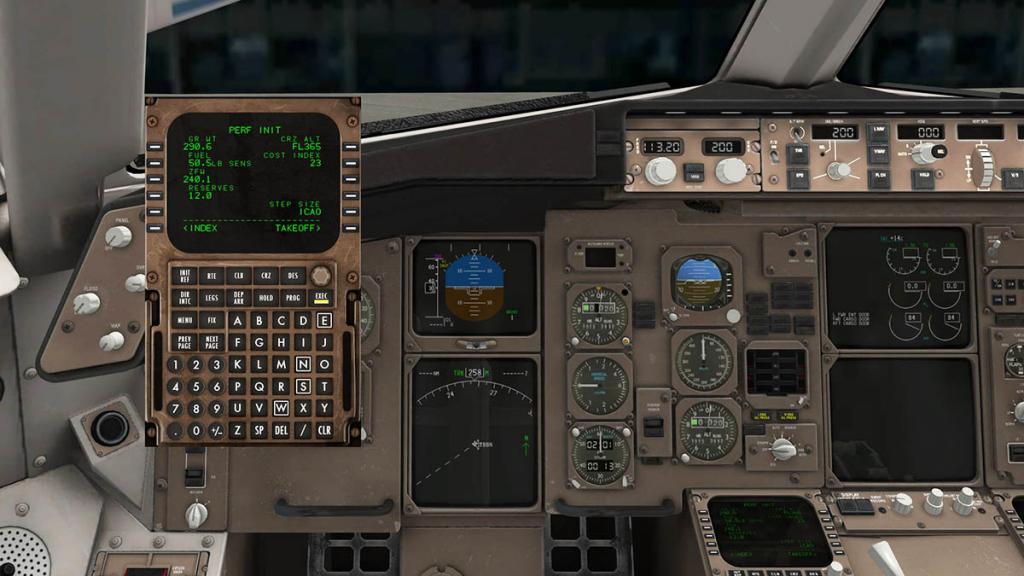
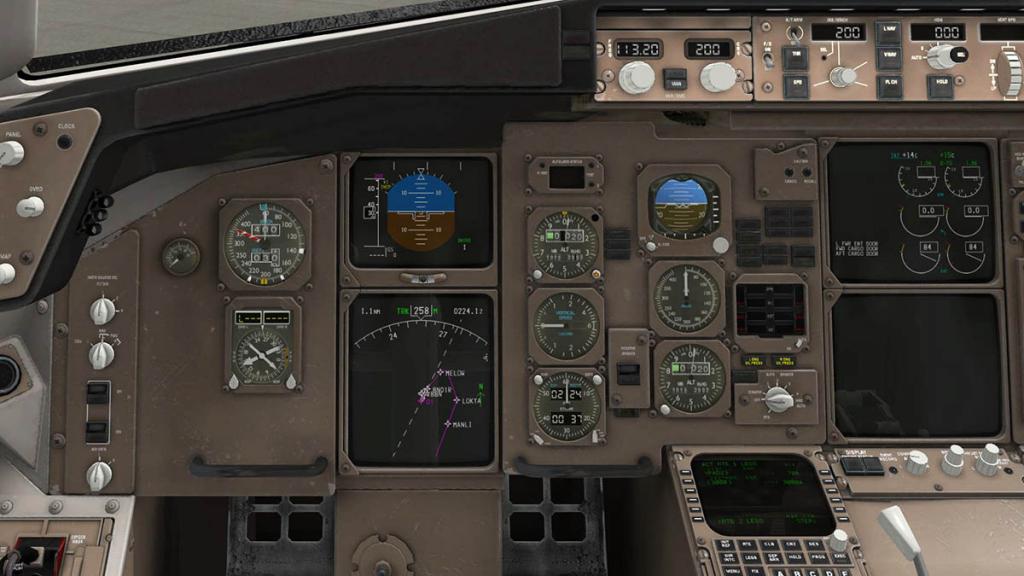
Positional reports (even when sitting at the gate!) and Progress data is all at your disposal and is updated right to the conclusion of the flight. 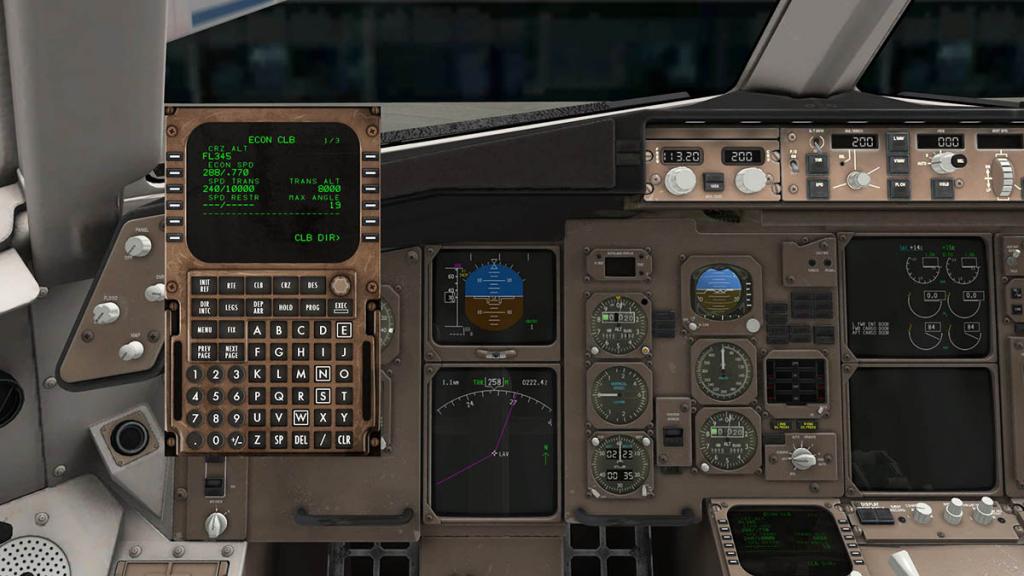
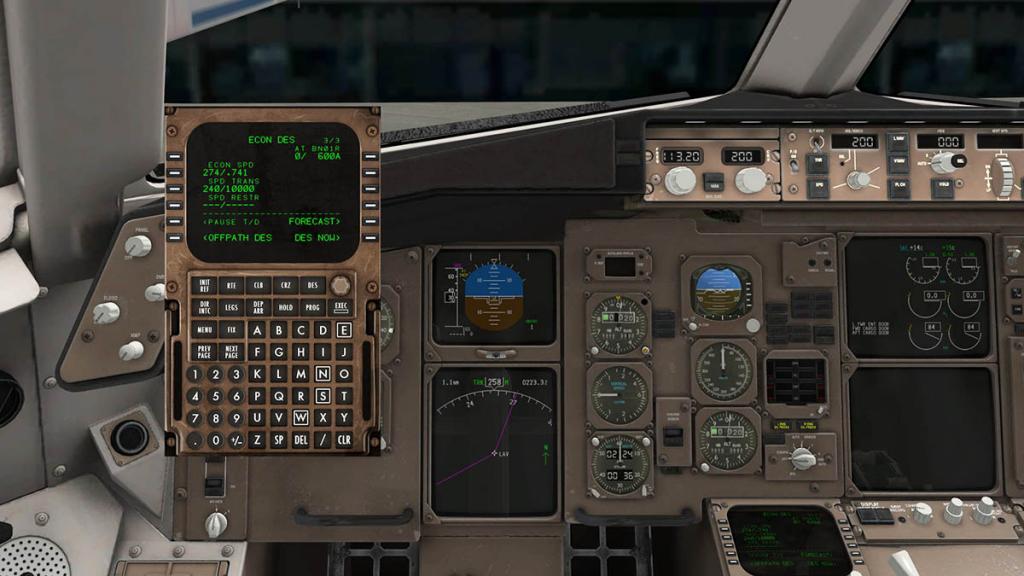
But it is in the real details of the FMC that is excellent, the small things that make this FMC certainly the very best one out there in X-Plane 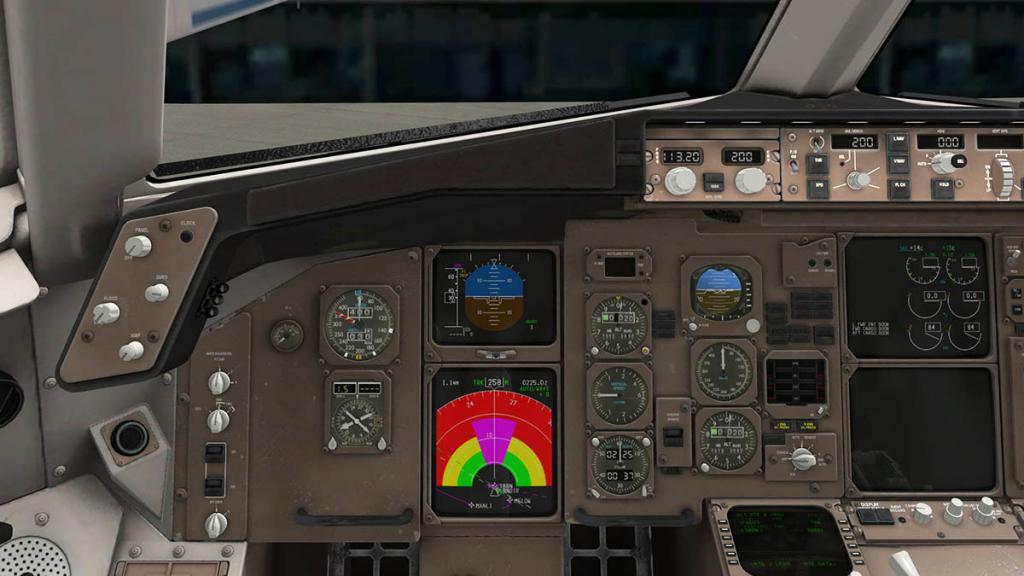
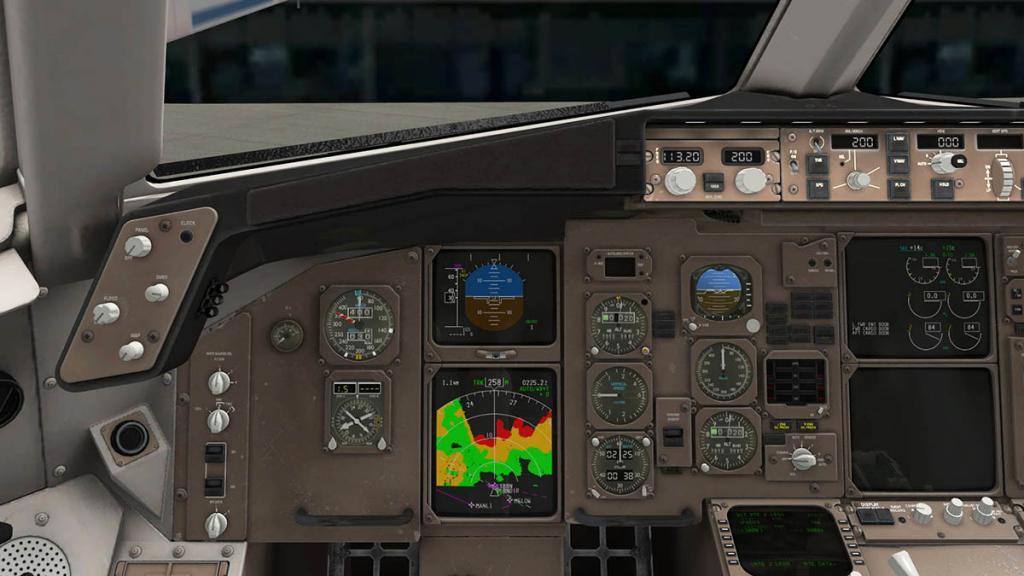
Weather and terrain radars are not new, but this version is more adjustable and more powerful than the standard X-Plane version, you can test the unit as well to see if it is active and adjust the beam up or down to to get the best perspective that you require more on them later. Menus 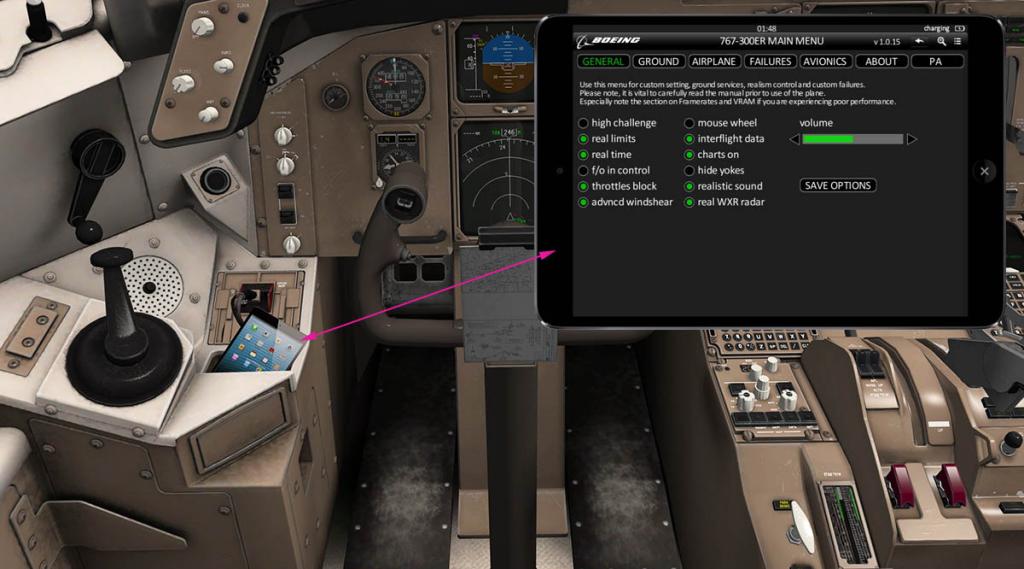
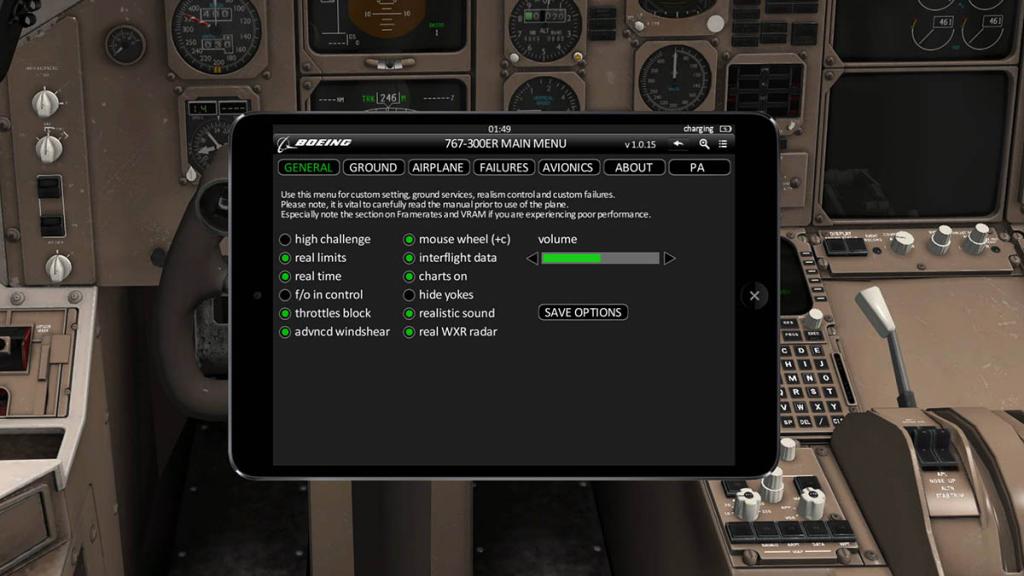
Another FlightFactor aircraft and another different Menu design. But this is a better version than the X-Plane menu bar approach of the B757, as this B767 version is based around the iPad or Electronic Flight Bag as many are called. You select the iPad by the smaller version in a pocket on the left of the Captain's position, and it pops up on the top right of your screen, X-Plane menu and key access (recommended) can also be used. The iPad can be moved around the screen but be careful as it can disconnect you from the cockpit controls unless when moved you re-click on the cockpit area background. The iPad has seven different tabs in : General - Ground - Airplane - Failures - Avionics - About and PA (Passenger Announcements) Main tab is "General". This tab selects all the general settings of the aircraft to select more realism or just general flying details. Items you can selects are: - High challenge – sets the frequency of custom failures (none, low, high)
- Real limits – set the structural limits of the aircraft
- Real time – set the time periods needed for some physical processes f/o in control – the pilots default position is the right seat
- Throttles block – sets the special throttle block option
- Advanced windshear – sets the windshear simulation so it can appear in specific weather conditions
- Mouse wheel – alternates between 4 modes of mouse wheel usage (zoom, rotate, click-rotate, click-rotate-click)
- Interflight data – sets the option to remember data between different flights (e.g. oil qty, oxygen qty and others)
- Charts on – turns on the chart on yoke option (read bellow)
- Hide yokes – hides the yokes
- Realistic sound – sets the volumes of in-cockpit systems to realistic levels (instead of a mode familiar sim levels)
- Real weather radar – alternates between a familiar full square radar and a realistic tilt-level based system
All settings and preferences can be saved, which is a huge bonus when resetting up for a new flight. Main aircraft volume can also be adjusted here as well.
Second tab is "Ground". Ground is split into two areas upper for external operations and lower for aircraft weight and balance management.
This is a very comprehensive tab, with a lot of settings and configurations. You have a lot of ground support vehicles, stairs, buses, fuel truck, de-ice truck, Air Start Unit (ASU), Loader (LSU) and gate configuration to park at a airbridge.
On early FlightFactor aircraft these ground vehicles were really good, but now they are really feeling their age. They actually now look odd at western airports as they seem more eastern European in design, X-Plane has moved on with more current designs and the de-ice truck looks a little hokey... You can save and recall your favorite support vehicles configuration. Push back is built in here and we will get to that in a moment. Ground "Maintenance" is needed to reset the interflight data – oxygen and hydralic fluid quantities, starter usage counters etc. To make it easier the (very) top of the overhead panel there is a special flight counter which tells you how many flight have passed from the last maintenance. The lower panel is a very comprehensive way to set up the aircraft. You can set up your "passenger load", "Cargo" and "Fuel Weight". and you get the final weight and balance numbers to reflect your choices. CoG (Centre of Gravity) can be set automatically, but I found it to biased to the rear and making the aircraft nose light? The fuel truck has to connected to load in fuel, but when ready if you push the "LOAD/UNLOAD" button the aircraft will load up to your preferences. This can take a little time and with a lot of noise going on behind you, but it is very authentic. If you want to just change the cargo and passenger loads you can just do that by pressing the "RETOUCH LOAD" button. But there was one slightly annoying thing with this arrangement. And that if you are not resetting the aircraft from "cold" then you have to "UNLOAD" everything in passengers and cargo (or wait ten minutes) before you can then load up your new flight preferences and wait another ten minutes while everything is reloaded that is all going on board, meanwhile you can't finish programming the MCDU/FMC data because the final weights are not yet completed? It is I'll go and get a cup of coffee time while you are doing all this unloading and reloading business. In normal arrival and departing conditions it is fine, but in starting a new simulation it is a bit of a waiting game... All custom weights and balances preferences can be saved and recalled. But it is a very powerful setup system, and better than past FF aircraft arrangements. Next menu tab is the "Airplane" menu 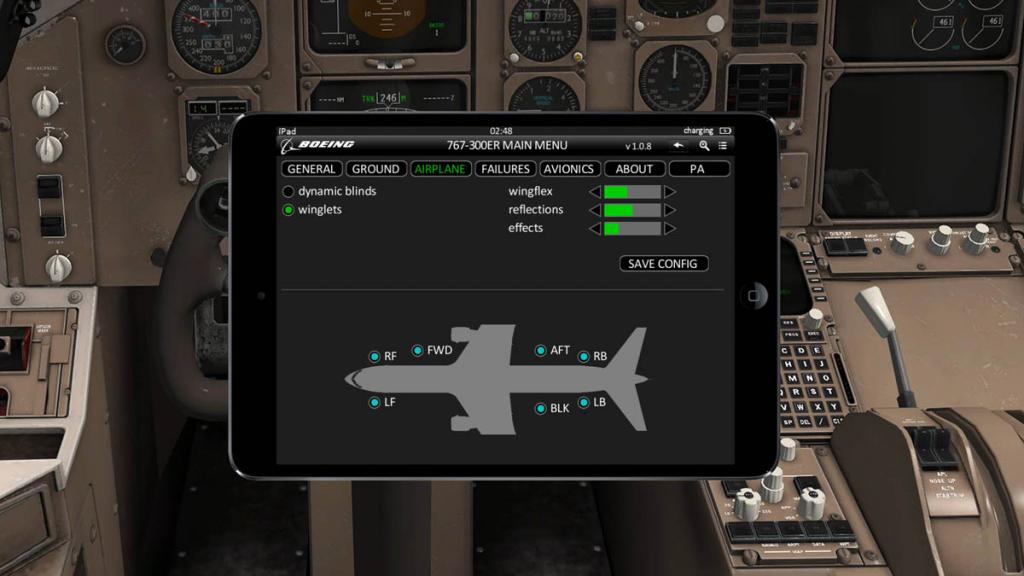
This menu selects the aircraft items. On the left is the option of the movable cabin window blinds we mentioned and the option of standard wing tips or the newer winglets... 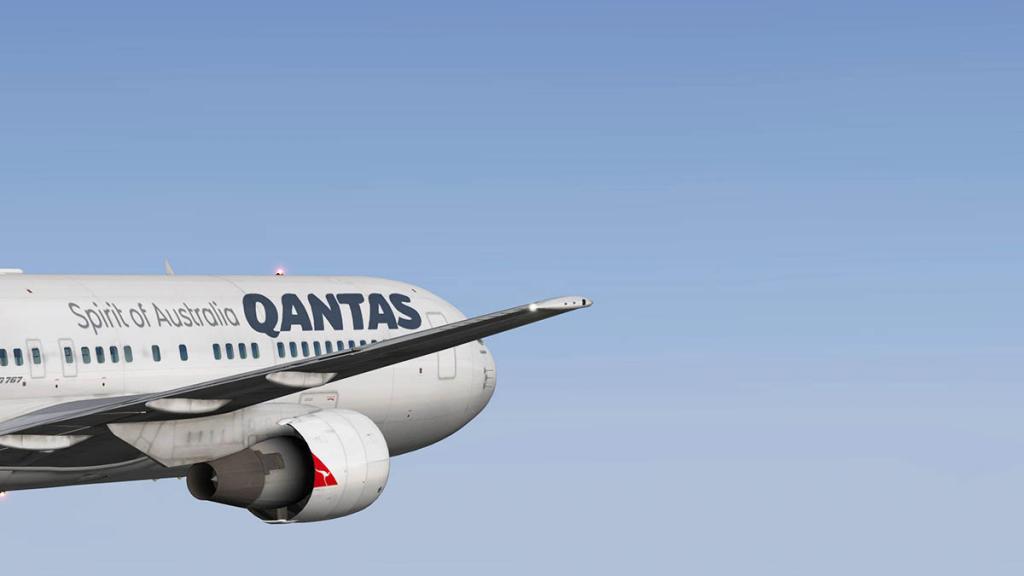
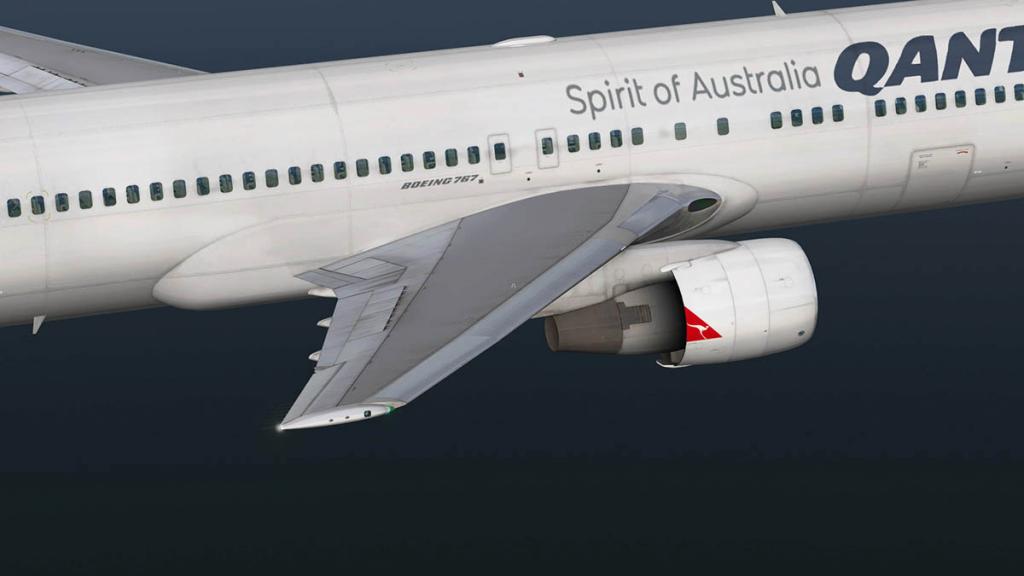
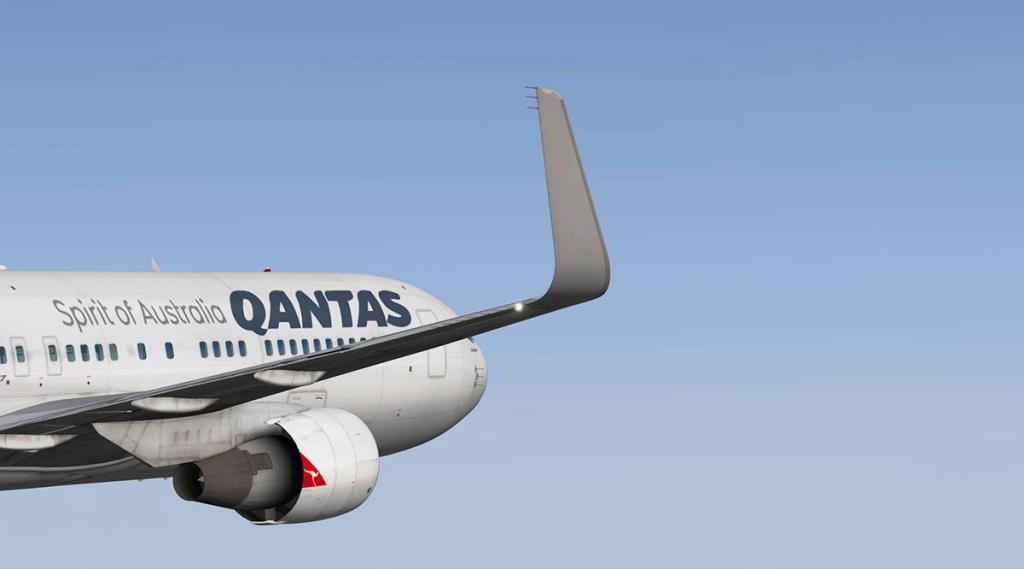
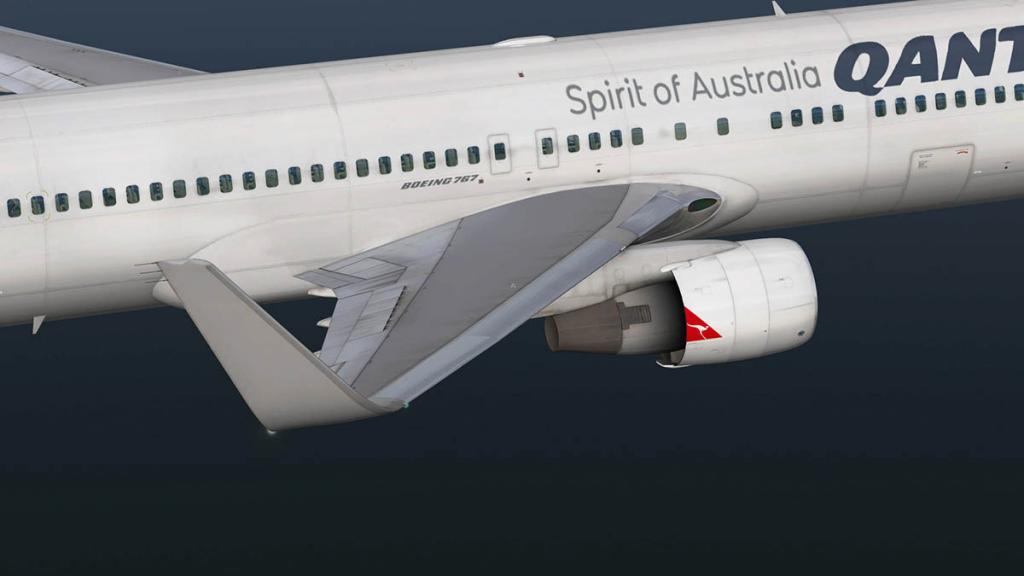
Either choice is great, and the detail on the non-winglet version is still to a high quality. Three menu selections covers the "Wingflex" and this does not need to be set very high as it will be a little to flexible, only a small amount on the left is recommended, "Reflections" again you don't need a lot of glossy reflections as it looks odd with a sheen across your screen that looks unnatural at mid to high settings. "Effects" can be set low as well. All settings can be saved and are configured the same the next time you load up the aircraft. 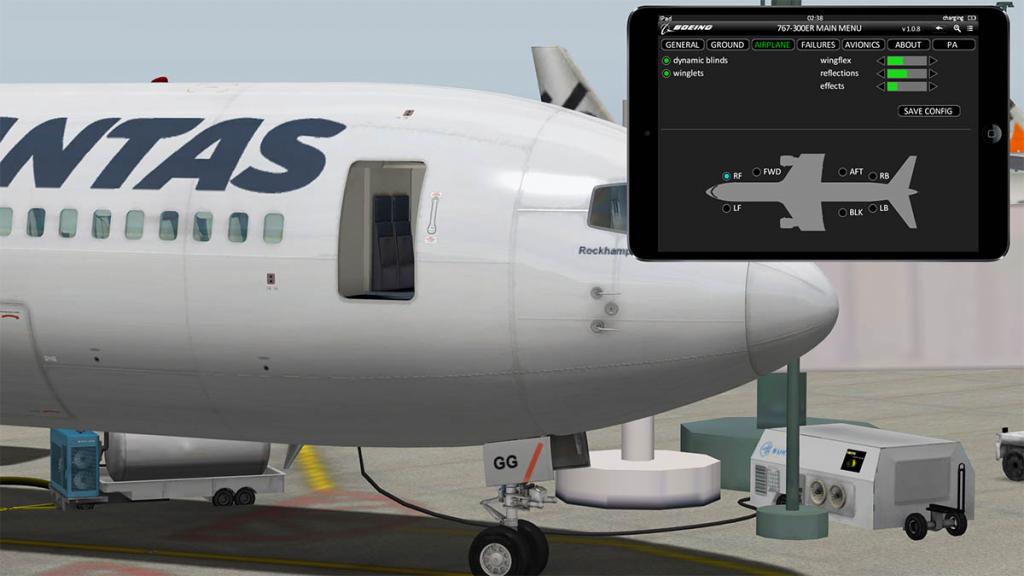
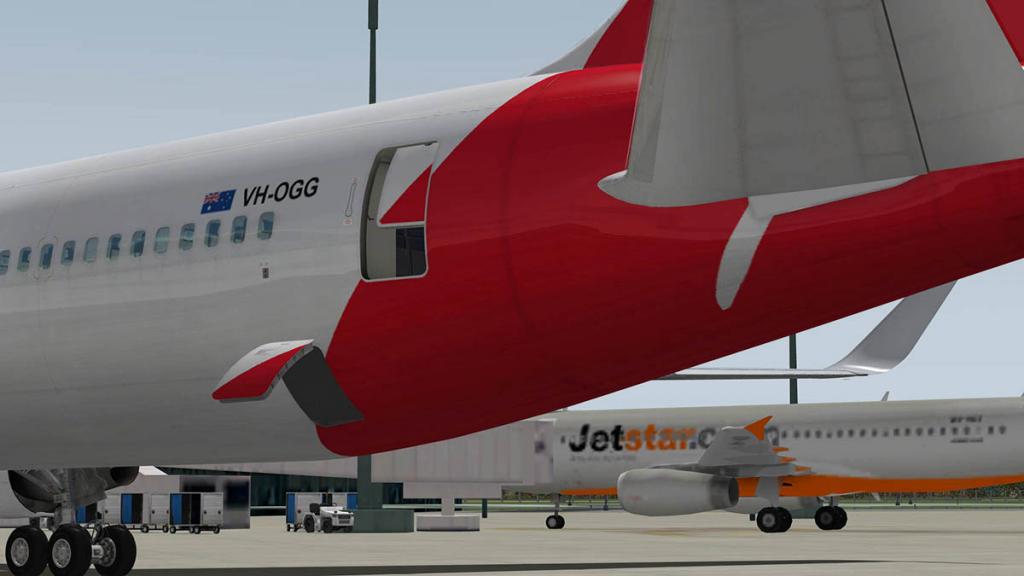
Lower panel is the aircraft doors. spot click all passenger and cargo doors including that small lower cargo hold for oversized and last minute baggage. This Boeing 767 has a great upward sliding door animation that is extremely authentic. small great touchs that make this aircraft really great. Next tab is "Failures". 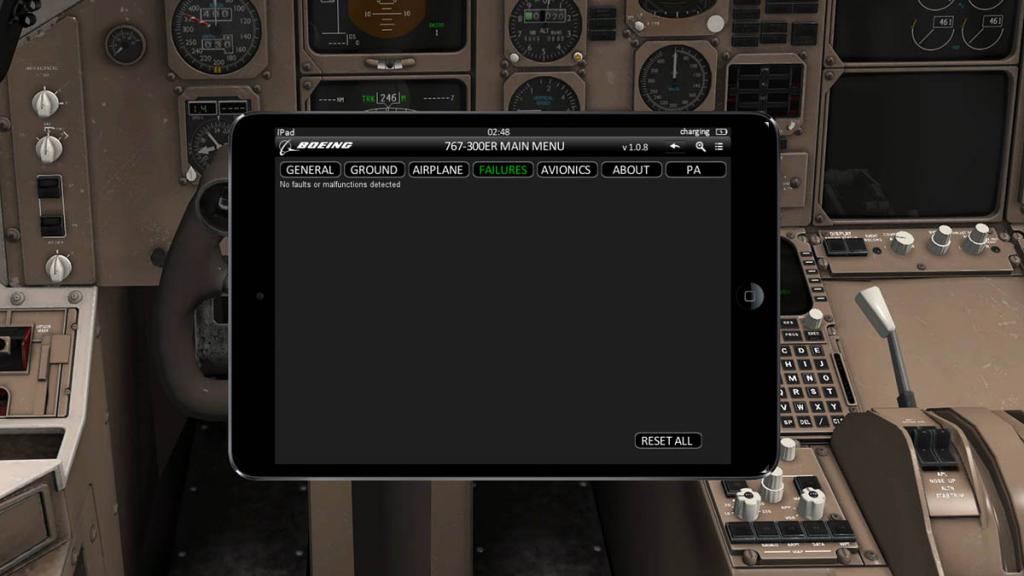
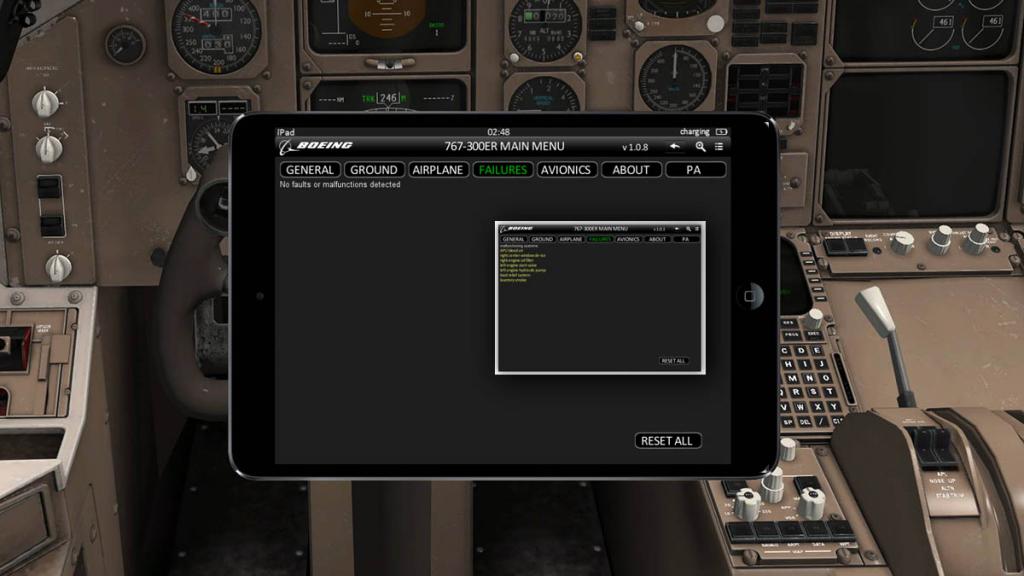
As you use the aircraft it will start to produce failures that have to be rectified via the "Maintenance" selection... I didn't clock up enough brownie points to set this in motion... Next is "Avionics" 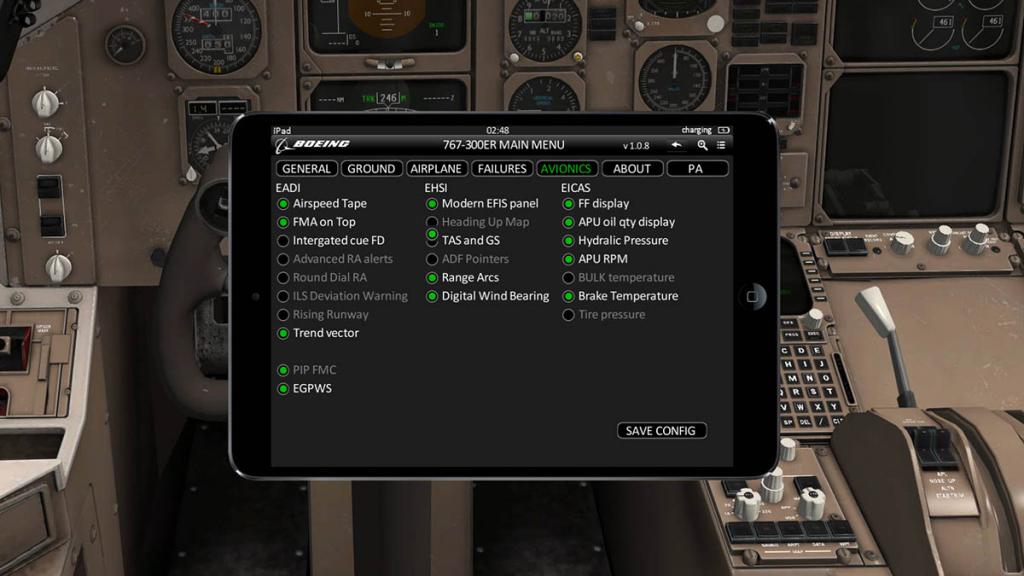
Another big tab of settings, but at this point the dark ones noted here are not yet functional. EADI options include (PFD), EHSI (ND) and EICAS displays options. EADI
- Airspeed tape – this will set the airspeed tape in the EADI (PFD)
- FMA on Top – this will set the FMA on TOP for the airspeed tape. This options is hard connected to the airspeed tape options
- Integrated cue FD – this will alternate between the integrated cue flight director and the crosshair FD
- Advanced radio altitude alerts – this set the advanced RA alerts
- Round Dial RA – this set the round dial RA
- ILS deviation warning – this sets the ILS deviation warning
- Rising runway – this sets the rising runway option
- Trend vector – this sets the trend vector option on the airspeed tape (requires the airspeed tape option to operate)
EHSI
- Modern EFIS panel – sets the EFIS panel type (with or without TERR and some other options). Automatically set the EGPWS type
- Heading up map – enables the heading up map
- TAS and GS – sets the true airspeed and ground speed readouts
- ADF pointers – sets the ADF pointers
- Range arcs – enabled the range arcs
- Digital wing bearing – enables the wing bearing indicator
EICAS
- FF display – enabled the fuel flow readouts
- APU oil qty display – enables the APU oil quantity readout
- Hydraulic pressure – enables the hydraulic press readouts
- APU RPM – enables the APU RPM readout
- BULK temperature – enables the bulk cargo compartment temperature readout Brake temperature – enables the bake temperature readout and warning boxes
- Tire pressure – enables the tire pressure indication
PIP FMS
This setting will alternate between the classical style FMS and the newer PIP type. See the FCOM for more detail EGPWS – this will alternate between the old style enhanced GPWS system which generates the warning text and has only the standard look-ahead display and a newer system which also has the peaks mode.
Lots of detail and settings available, you can see why you need time on the airframe to get the best settings configured to your own perspective. In the "About" tab everyone takes a well earned bow, it take a lot of talented people to create a modern X-Plane aircraft in today's highly detailed simulation world... This is were your money goes. 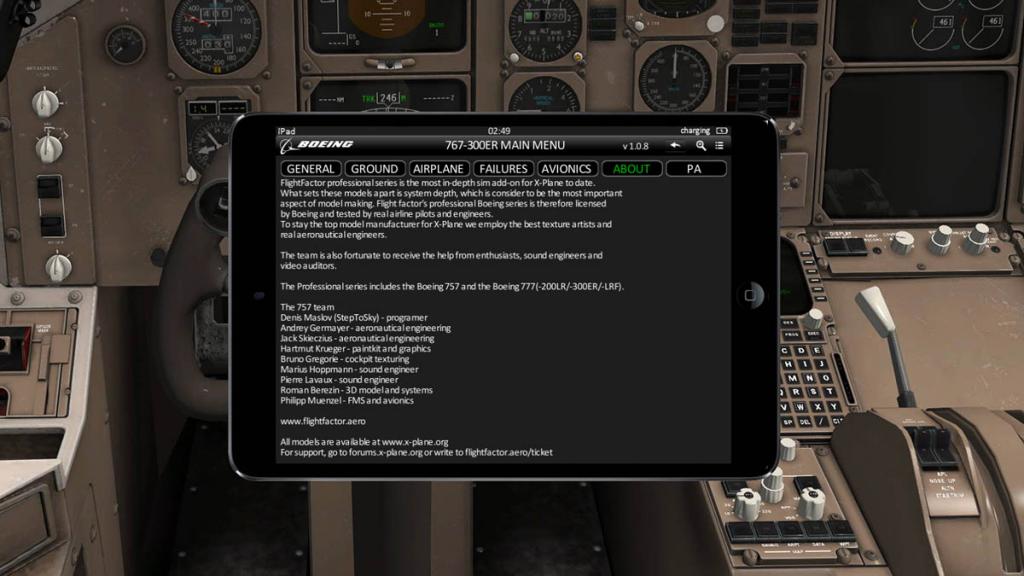
The last tab is the "PA" (Passenger Announcements) 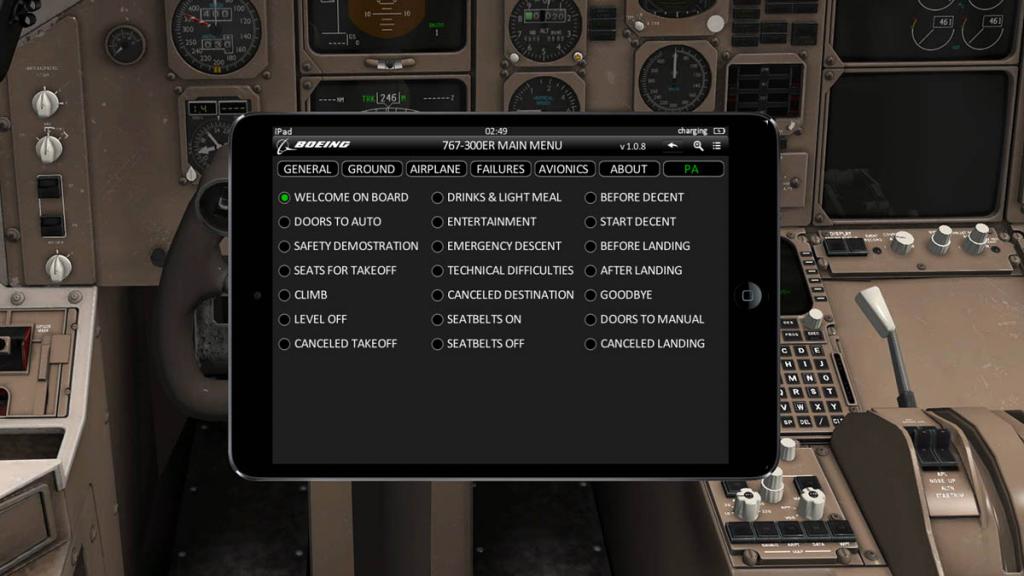
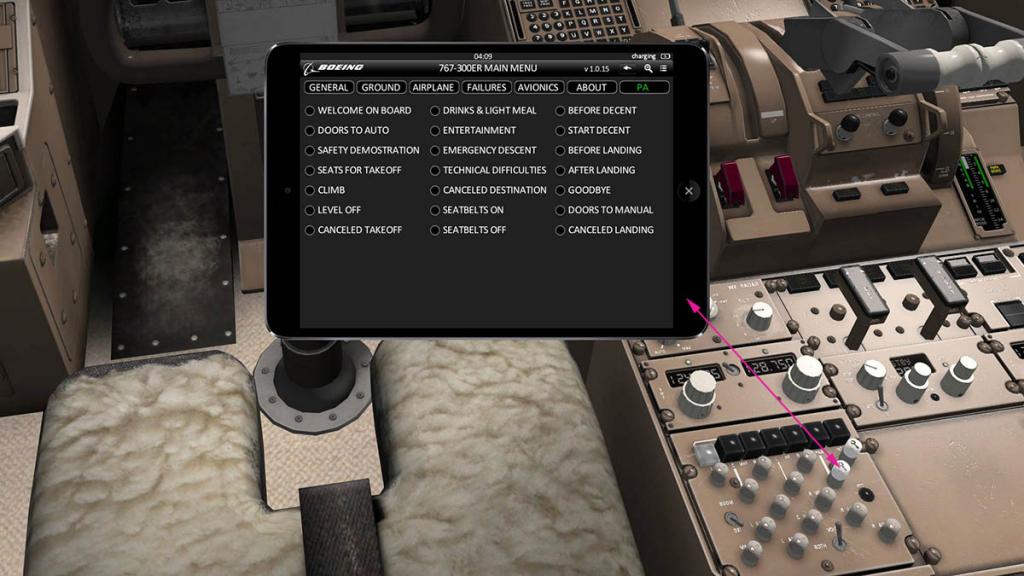
Released on the FF Boeing 757 series, these are quality (meaning very long) announcements, which are great to use and use them a lot I do. Just watch you are not disconnected to the aircraft when you select the tab, and you can kill an announcement or change the announcement volume by the knob on the radio panel. Checklists and Tutorial 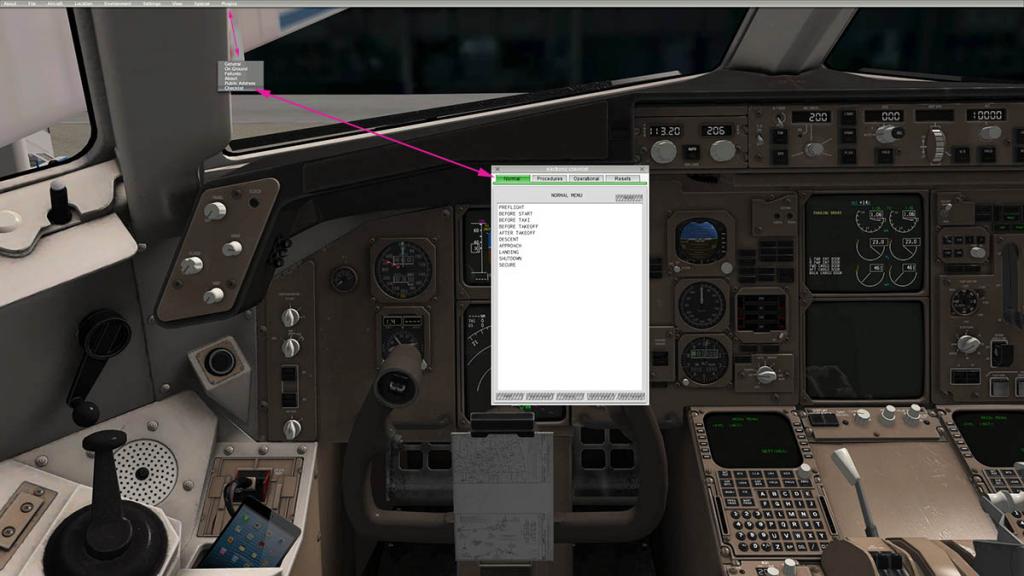
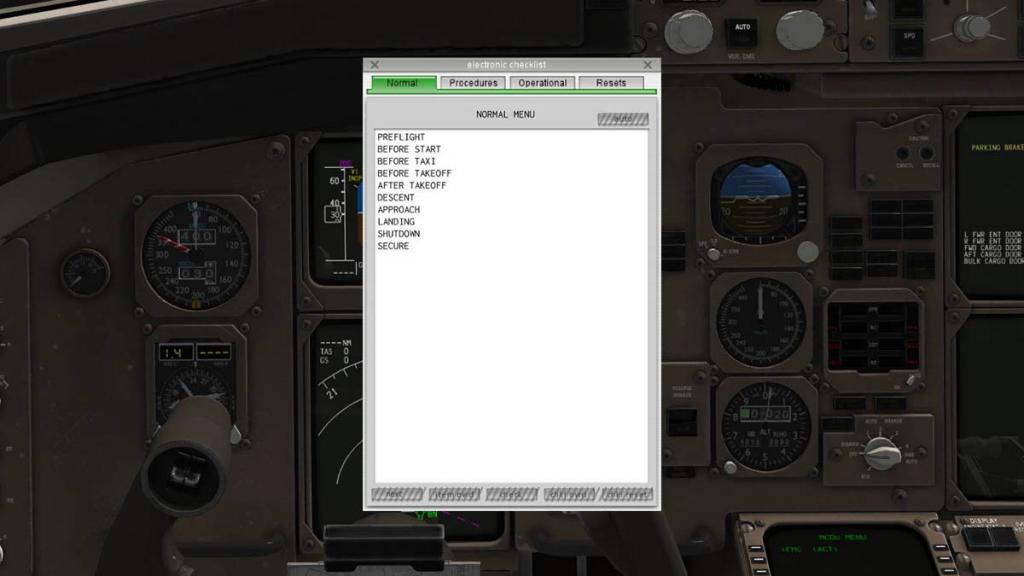
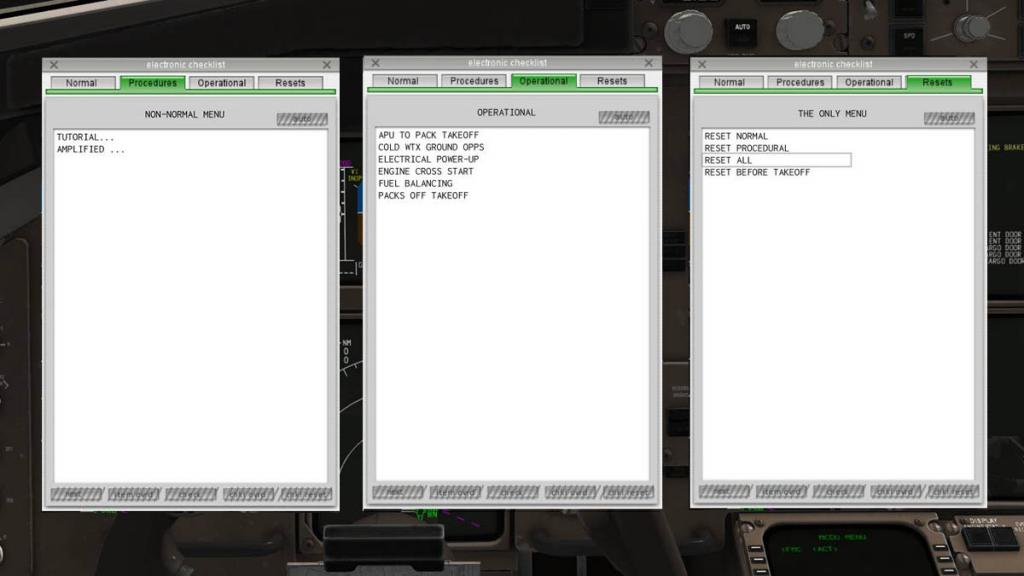
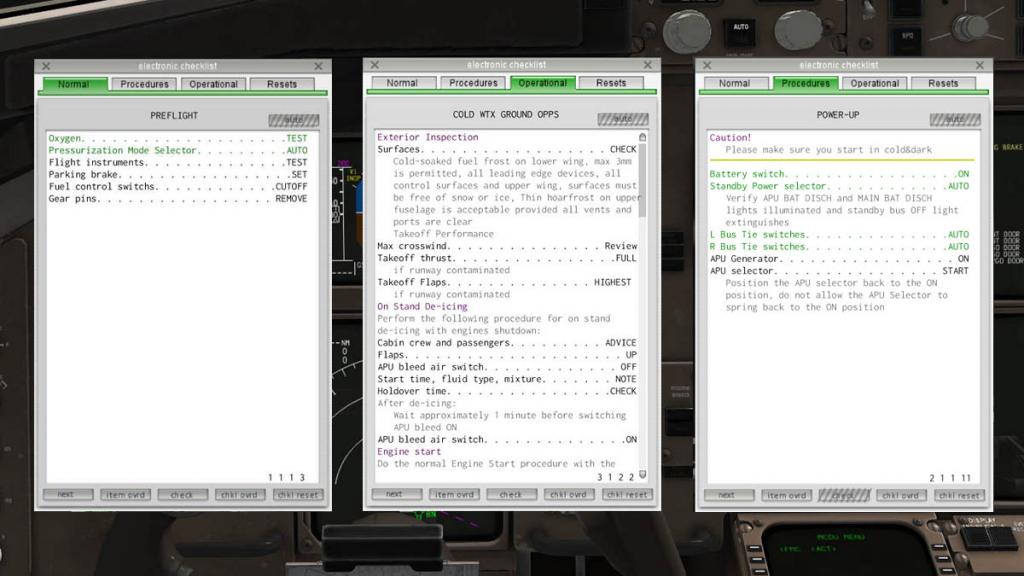
The Checklist and Tutorial menus are not on the iPad, but still like the system on the B757 which is on the X-Plane/plugin menu bar. But nothing is missing here and very good they are. You get a full startup and flight checklists that turn green when items are completed, and auto start functions are here as well and a complete reset page to clear the checklists for a new flight... four tabs represent: Normal - Procedures - Operational - Resets. Flying the FlightFactor - SteptoSky Boeing 767-300ER You would think that starting up a huge airliner would be a long procedural business, in fact it is quite the opposite. 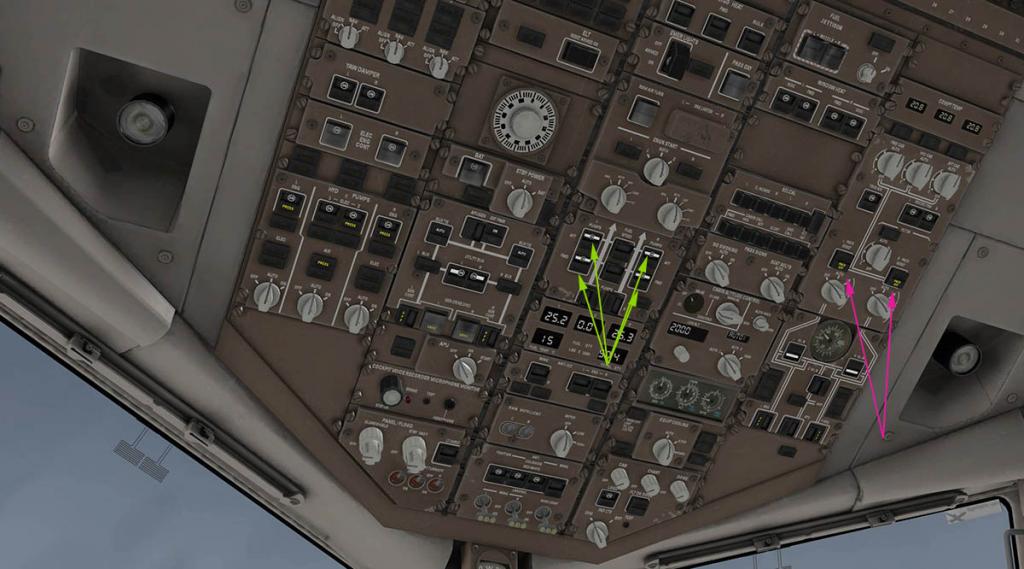
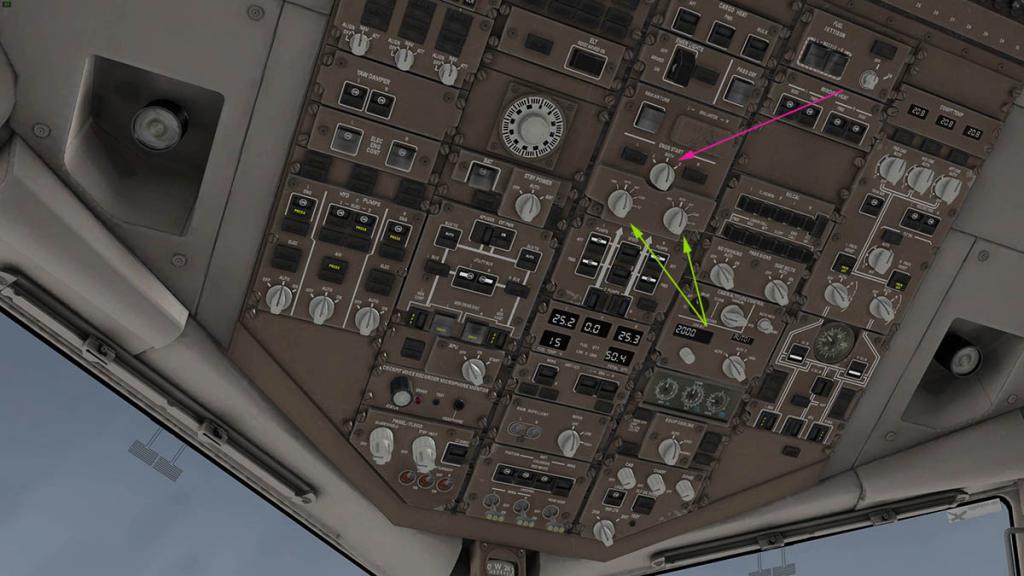
Warning beacons on (red), main fuel pumps on, Cabin Air-Conditioning off (for engine bleed) and to note I am using the ground start air-compressor not the on board APU. Then select Ground (GND) start and finally the "Engine Start" switch to either 1 or 2, I need at least one engine running to take over from the GPU external power. 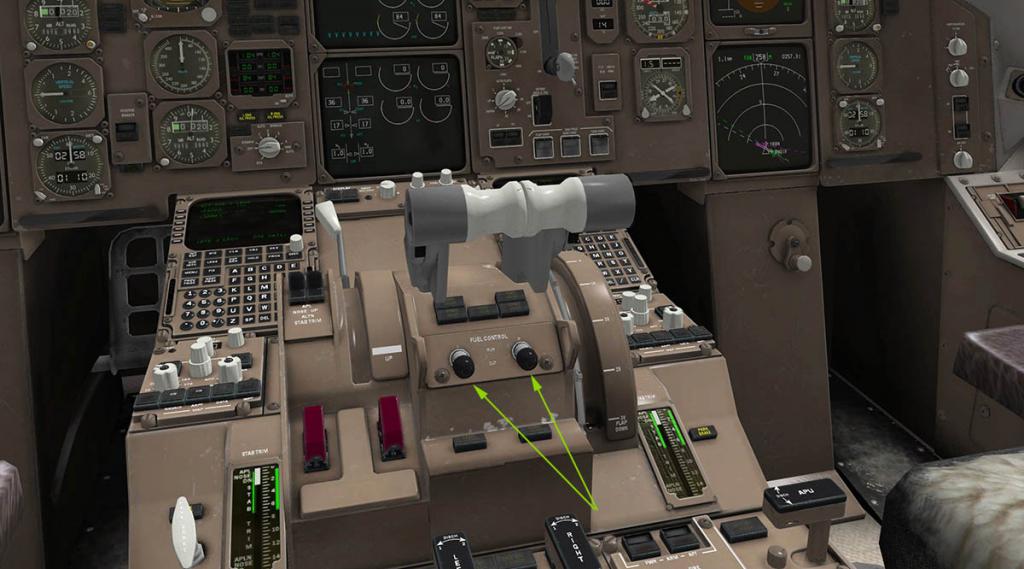
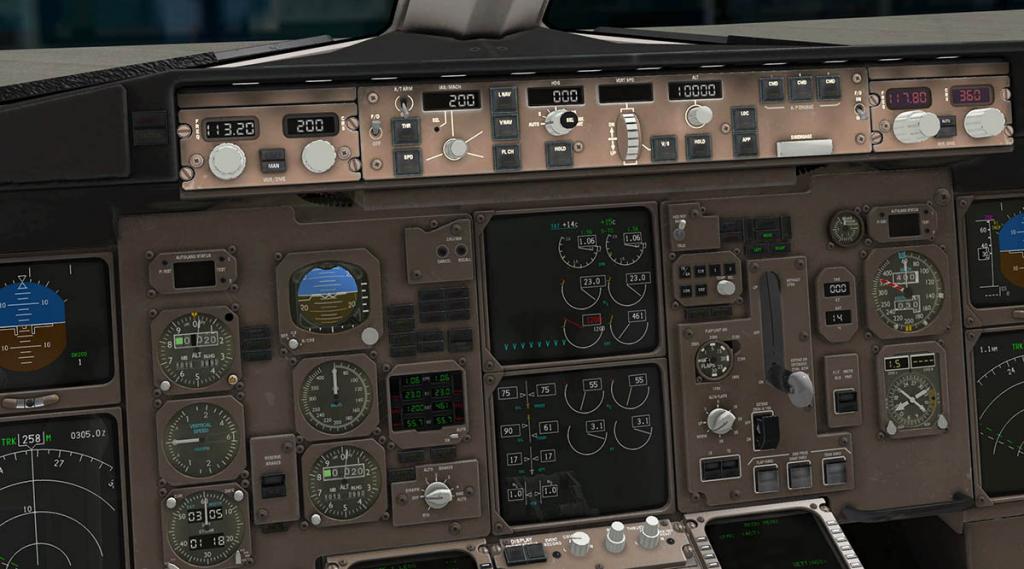
The centre MFD panel "Engine Indication and Crew Alerting System" (EICAS) will come alive on the start up engine, let N2 build to 25% and then flip in the "Fuel Control" (flow) switch and the engine will then complete the startup process to idle. When both engines are running then clean up the bleed/Air-Con and turn on the aircraft's engine power supply (DC) and disconnect the external GPU and High-Pressure Units. Startup sounds are extremely good and APU and air-conditioning sounds are constant in the aircraft, and it is weird when you finally shut down the aircraft later on how quiet or noisy it actually is. The pushback truck is built in and a very good one it is... 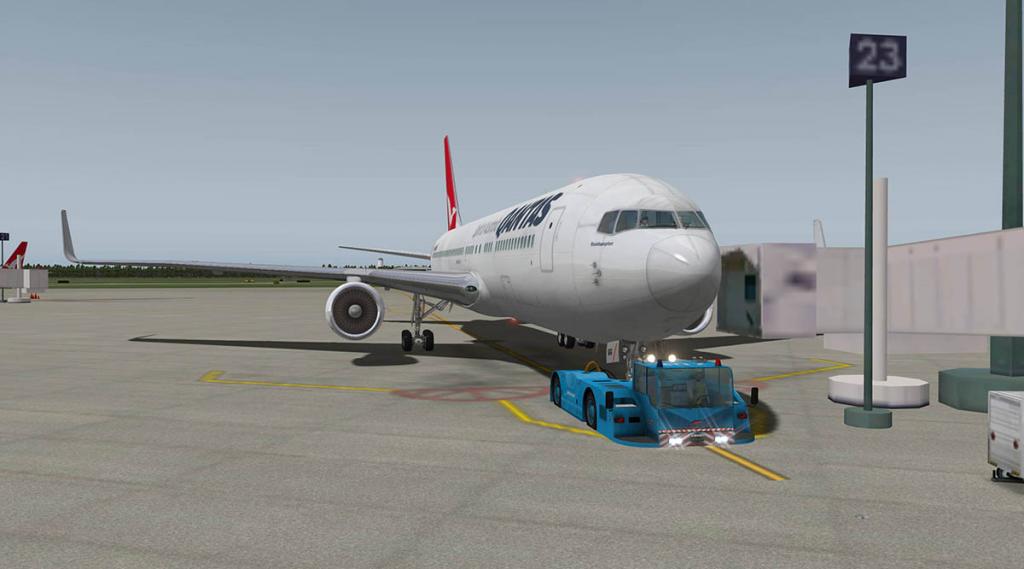
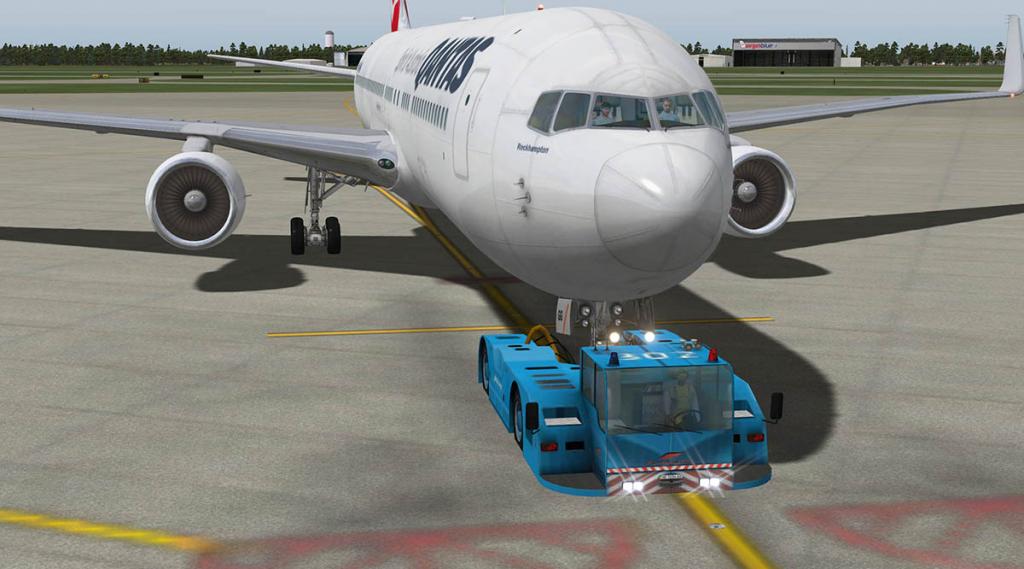
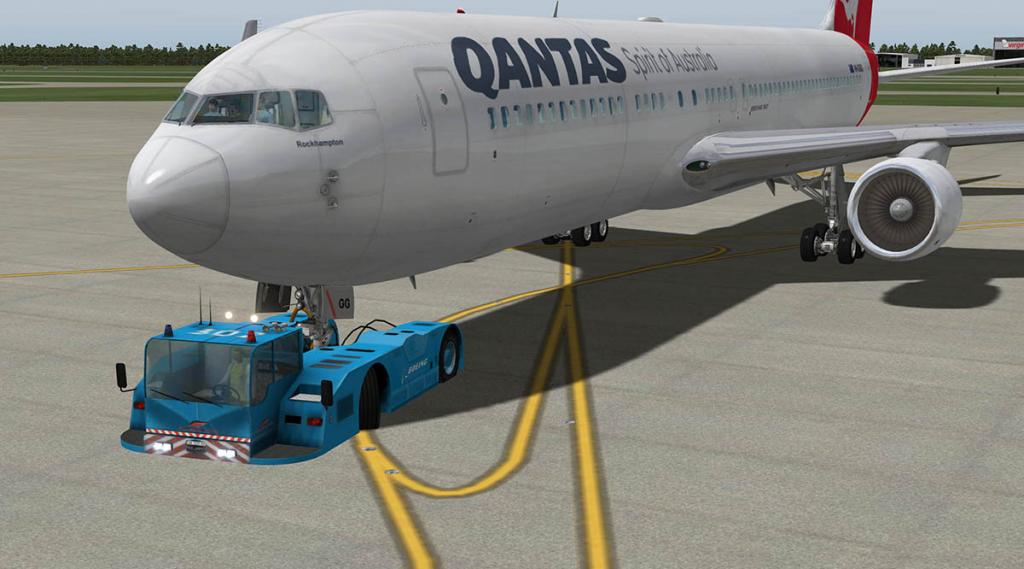
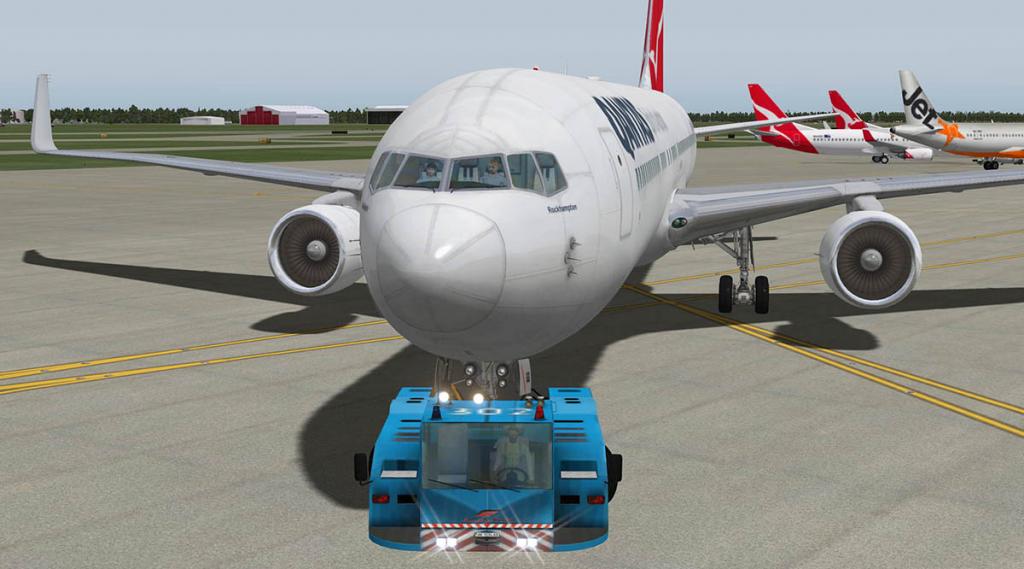
Select push or pull and let off the brakes to move. You have full throttle and yaw control if you use the keys or a joystick and throttle system, so placing the aircraft correctly for departure is easy. Only slight visual issue is the truck does not fully turn on the front gear, so the aircraft tends to drag the truck sideways? But the turning wheels on the PB truck are a nice touch. YBBN - YPAD 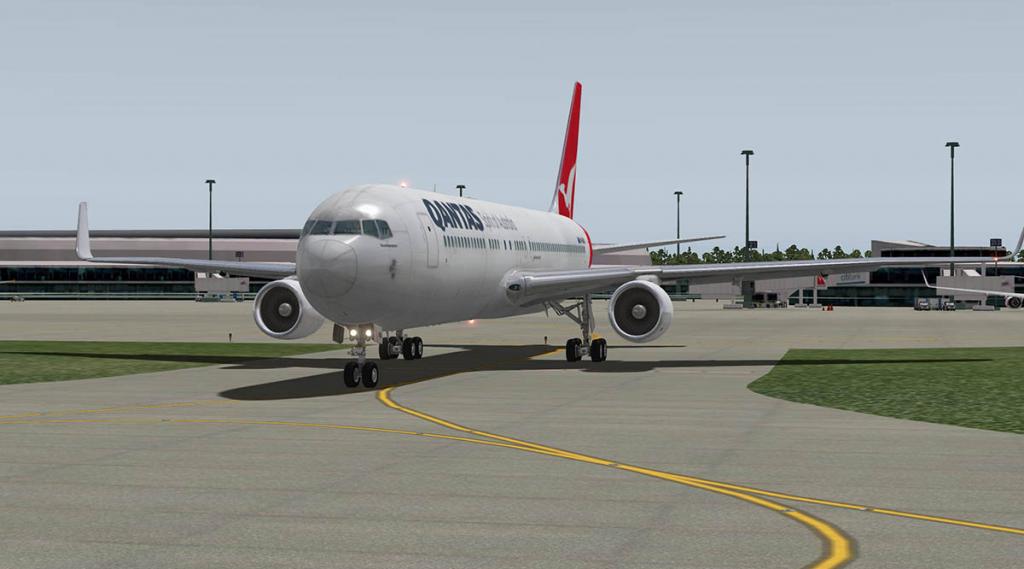
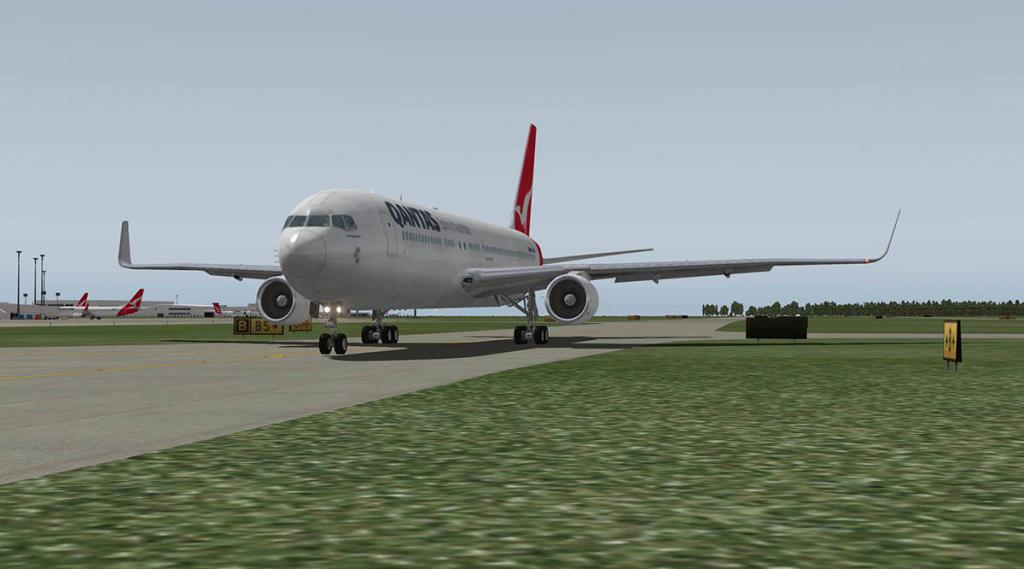
On the taxiways the aircraft is nice to manoeuvre around but watch that length it is a big aircraft on tight taxiways and hard turns, however the perfect taxi speed is easily found... anyway you are to busy enjoying the "PA" announcements to the passengers. 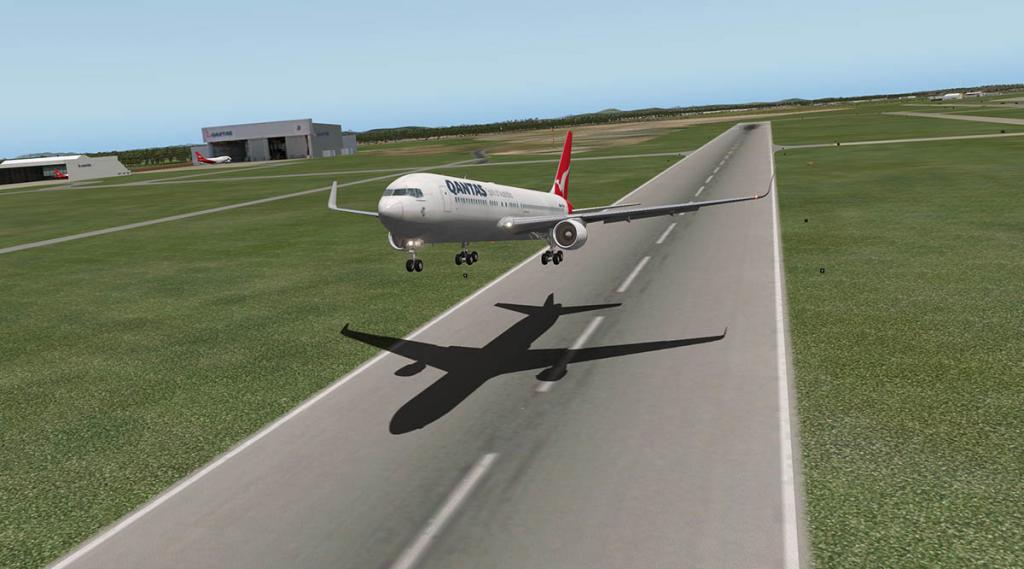
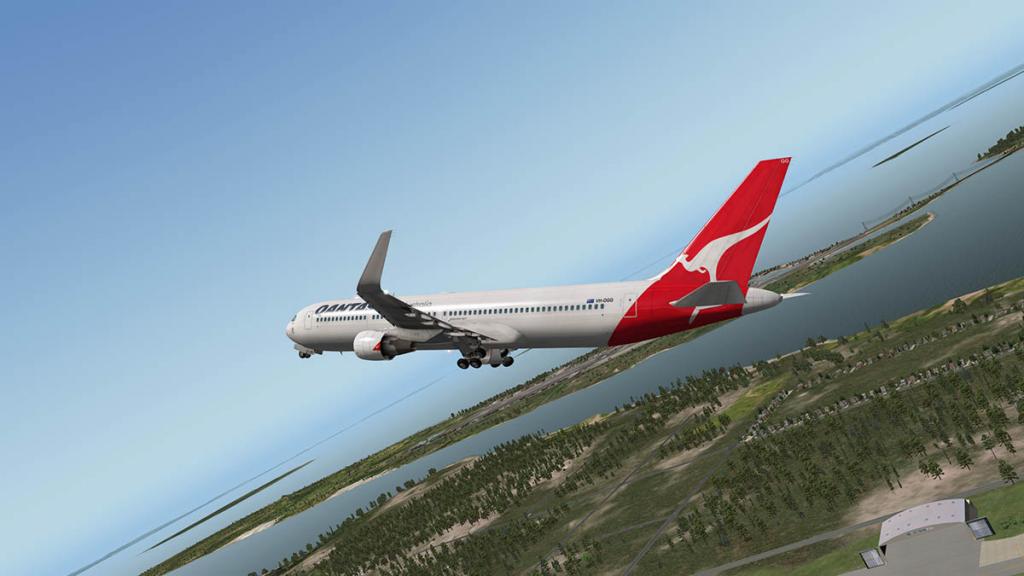
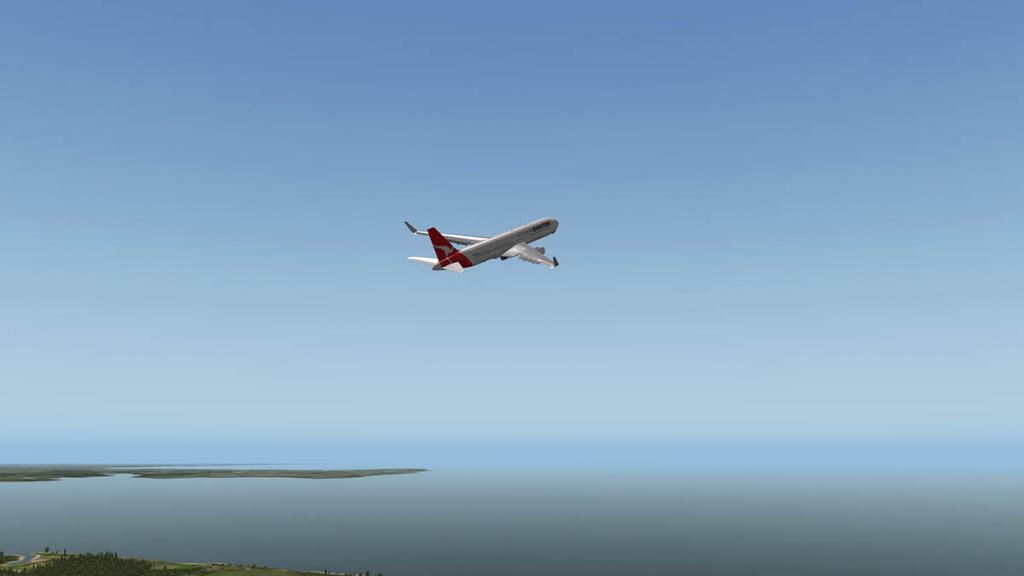
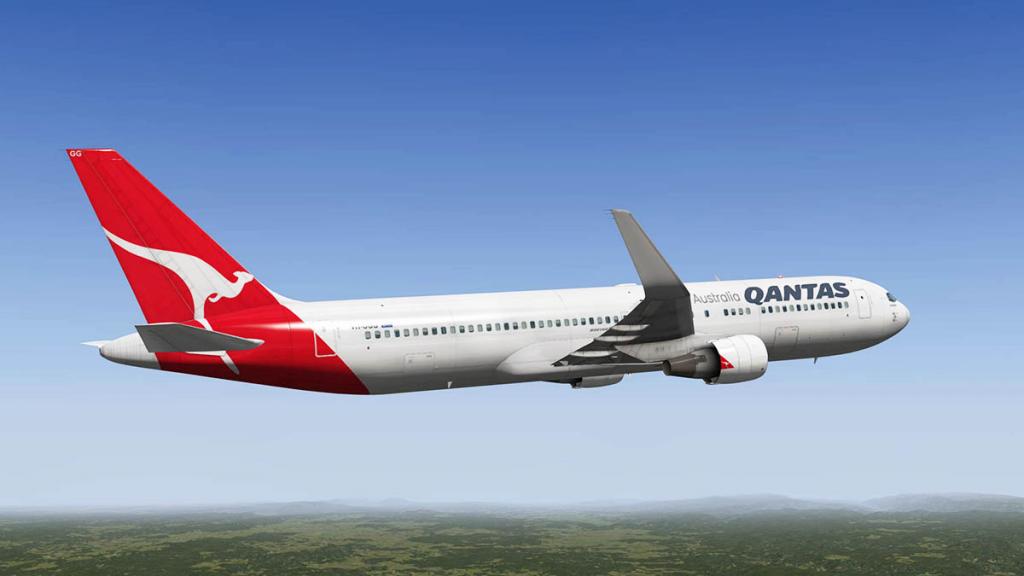
ATC clearance and 15º flap selected and your rolling by pressing the THR (Thrust button), on rotate Flaps up a notch and gear up, switching to SPD and Autopilot (AP) on and LNAV/VNAV are selected. The aircraft has plenty of power and I have a high takeoff weight, so climbing above 2000fpm is not a problem for this aircraft. 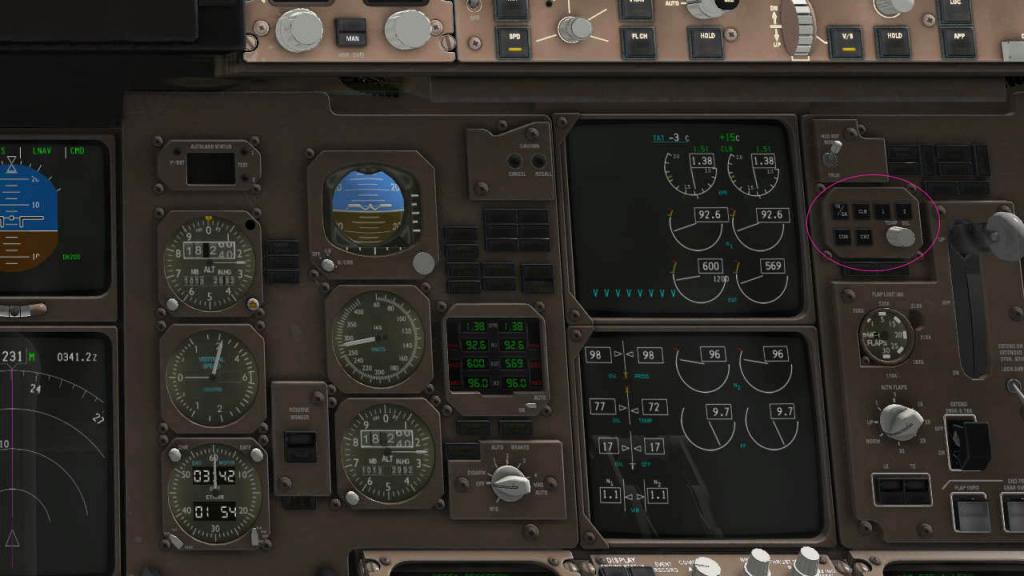
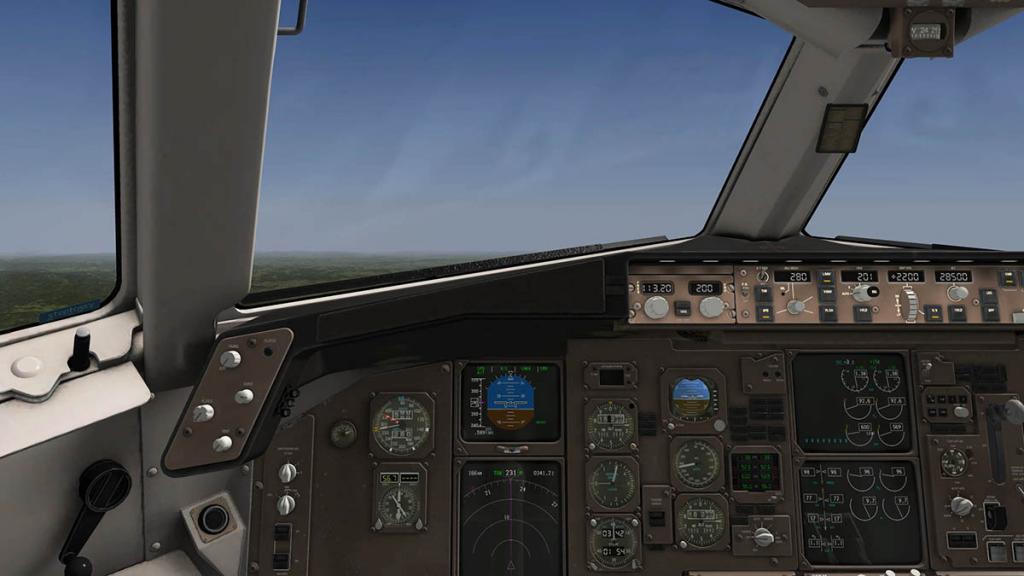
Your friend is the "Thrust Mode Management" panel in setting TO/GA, CLB, CON, CRZ and DERATE 1 & 2. If you programmed the MCDU correctly the Thrust Management will control your engines for the maximum performance and you certainly do feel the differences. 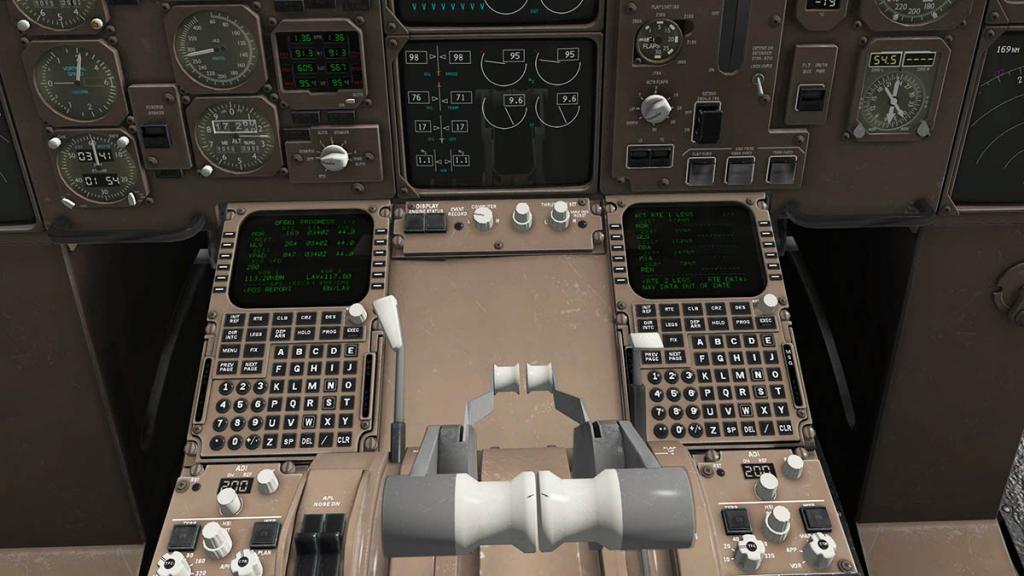
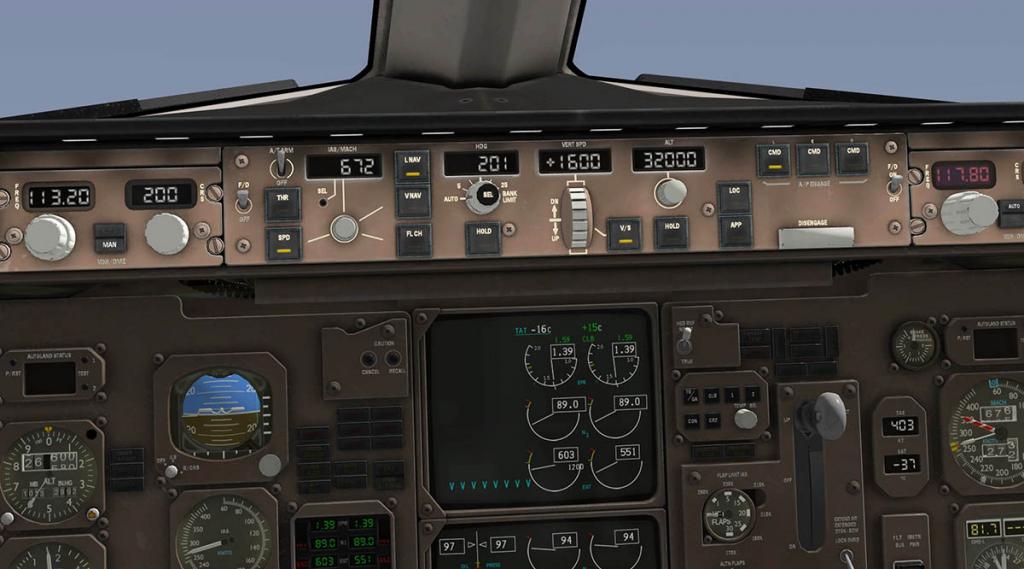
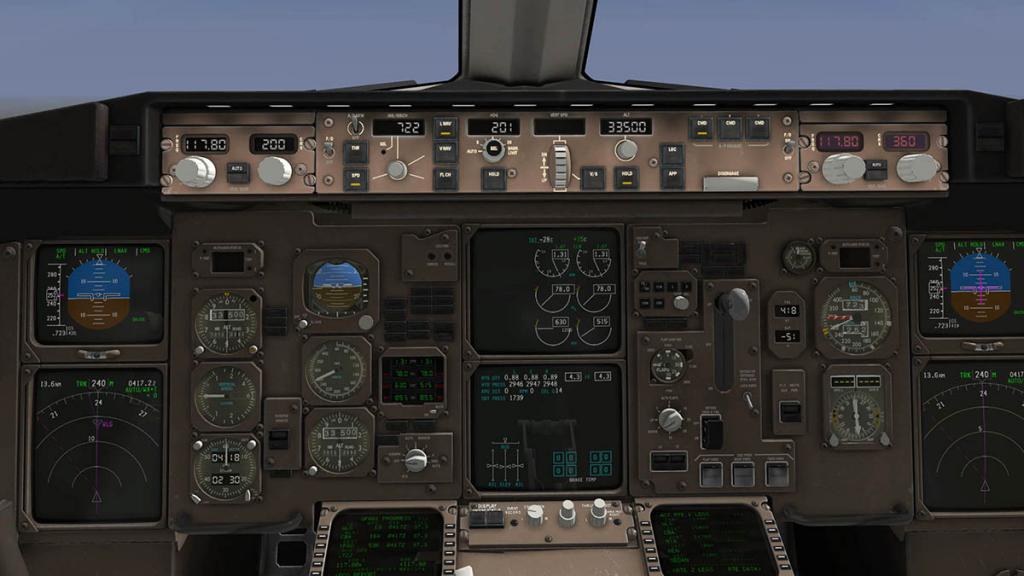
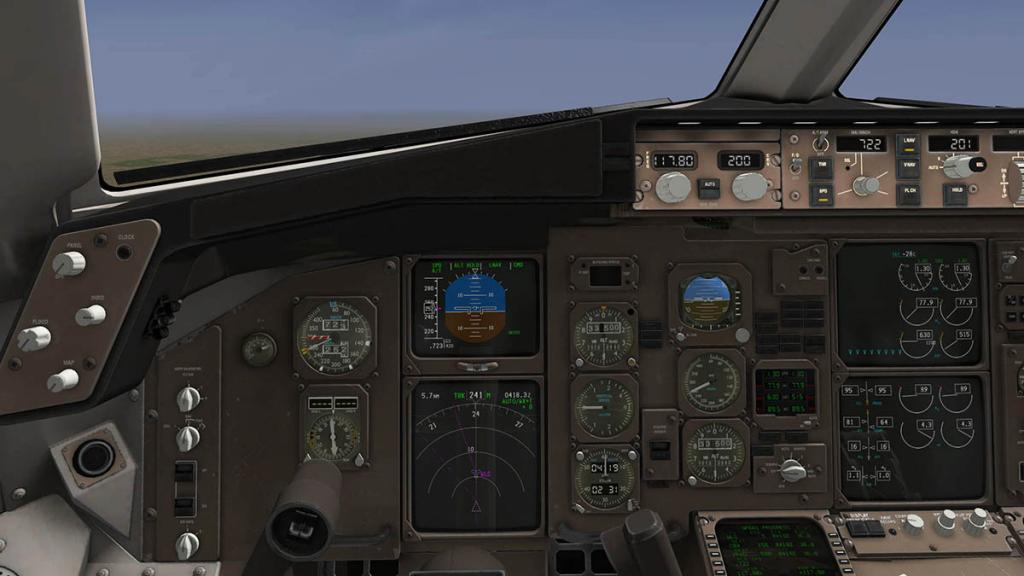
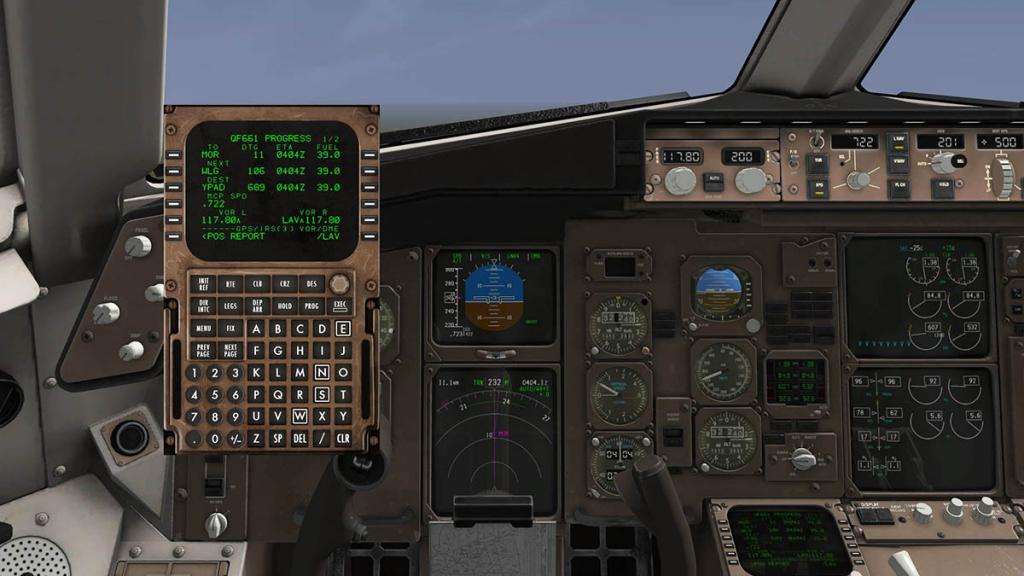
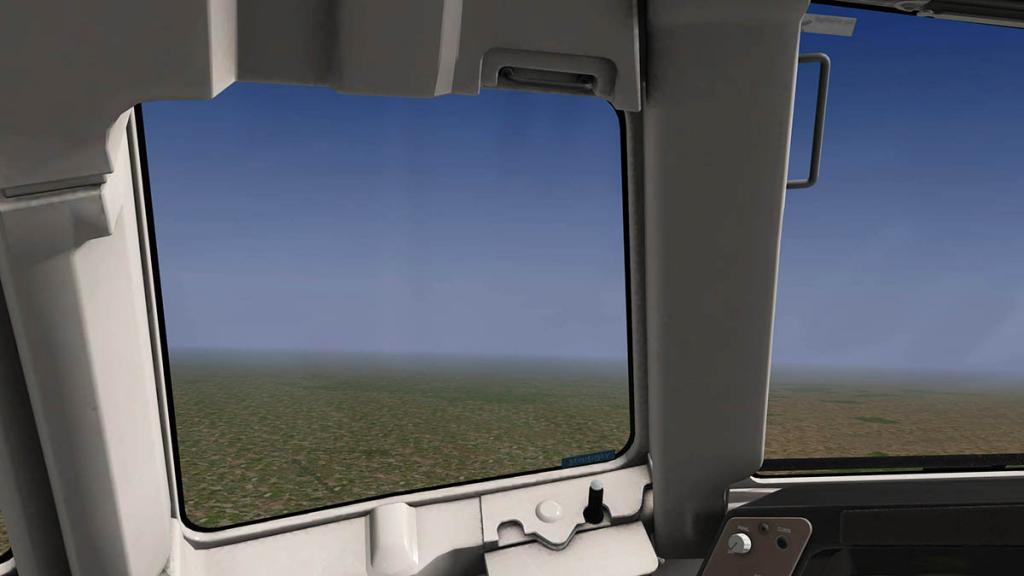
The sheer amount of information in route data and engine data available to you is extraordinary. PROGRESS page gives you perfect updates on the route and DIRECT TO is available when required. Finally at cruise you can breath out and relax. One major thing that you feel is the absolute complete environment of this Boeing 767-300ER. The way you look through those lovely port-holed windows but mostly via the aural connection of the aircraft. I have flown on many aircraft and on the B767 many times and this aircraft is the one that really captures that feeling and the very sounds like the real aircraft... it sends goosebumps up your spine in the reality of it all. I have not been a big fan of FF external sounds (very clicky), but with the "realistic sounds" option on they are a lot better here. but internally they are excellent. Only slight annoyance is still that FF cabin communication "pinging" that you can't seem to keep happy. 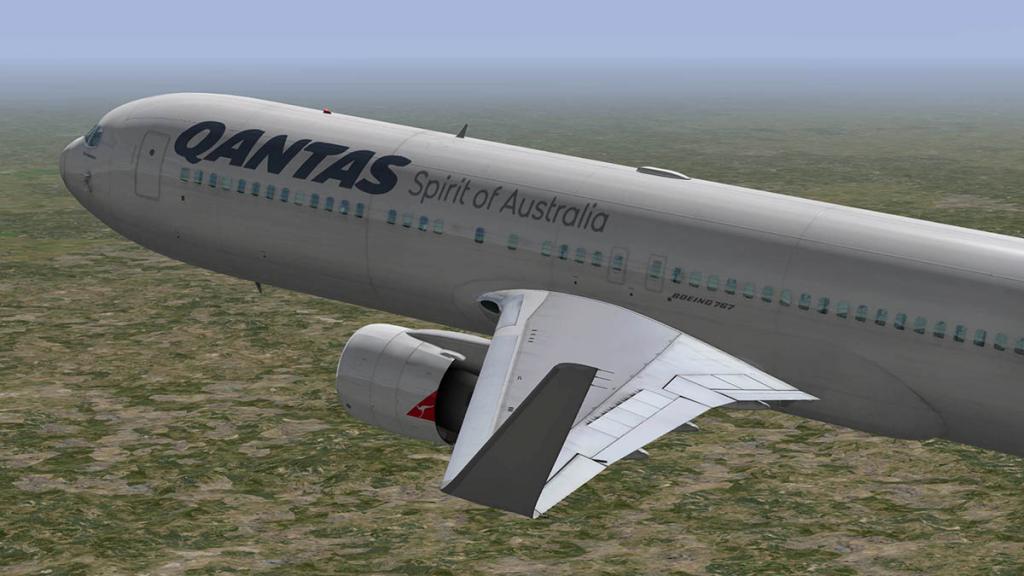
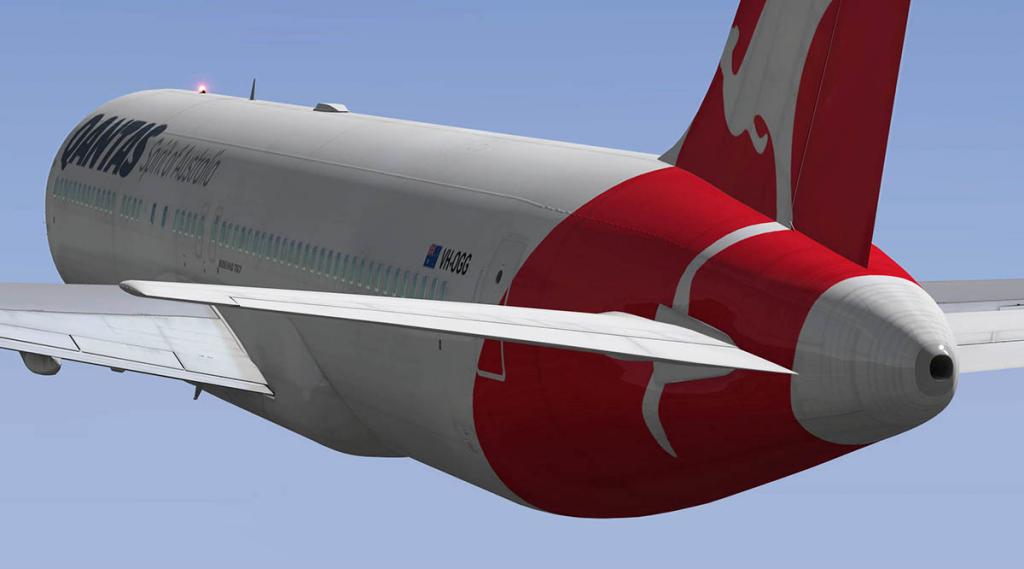
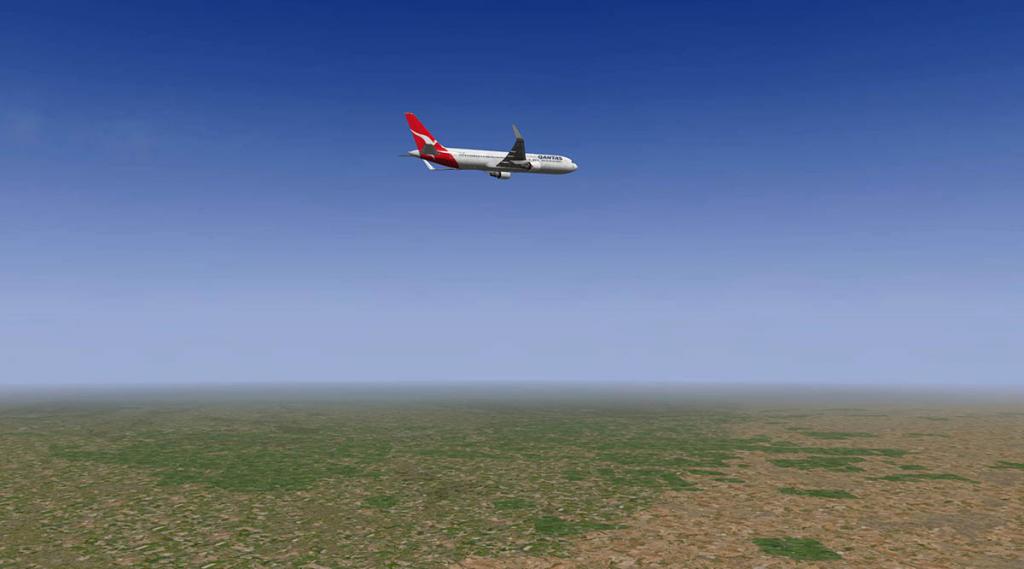
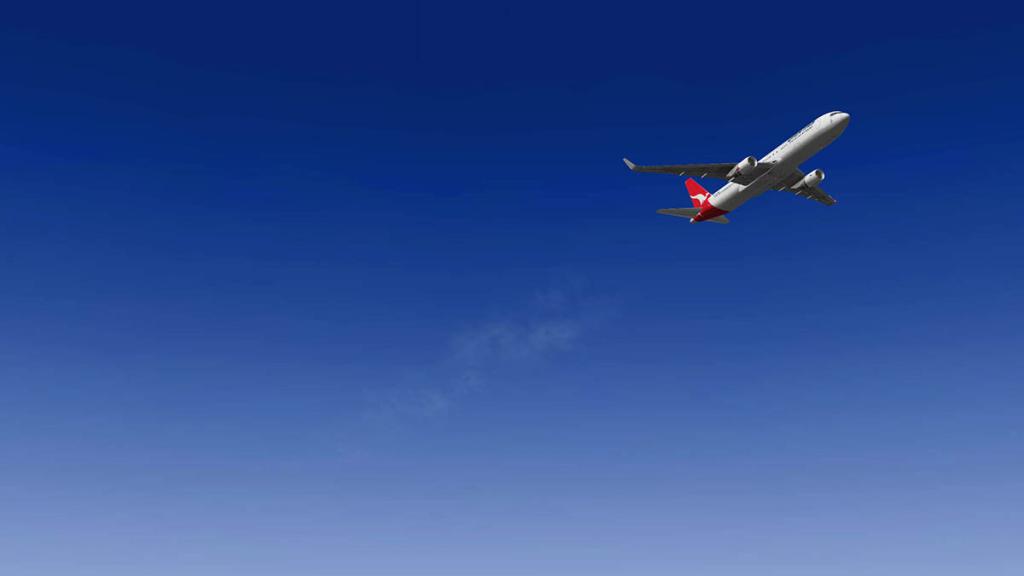
So is the FF B767 different from the FFB757? From the cockpit yes it does even though the panel layout is the same, and it is a very different aircraft in many respects, more depth and the FF B757 was very good there. The B757 feels darker and far older than the brighter surrounds of the lovely B767 cockpit. 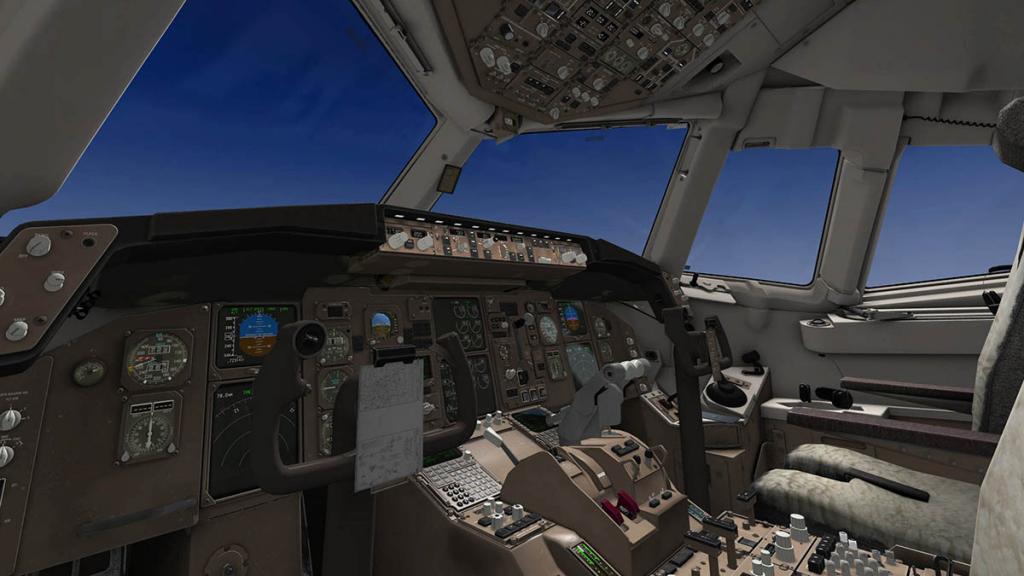
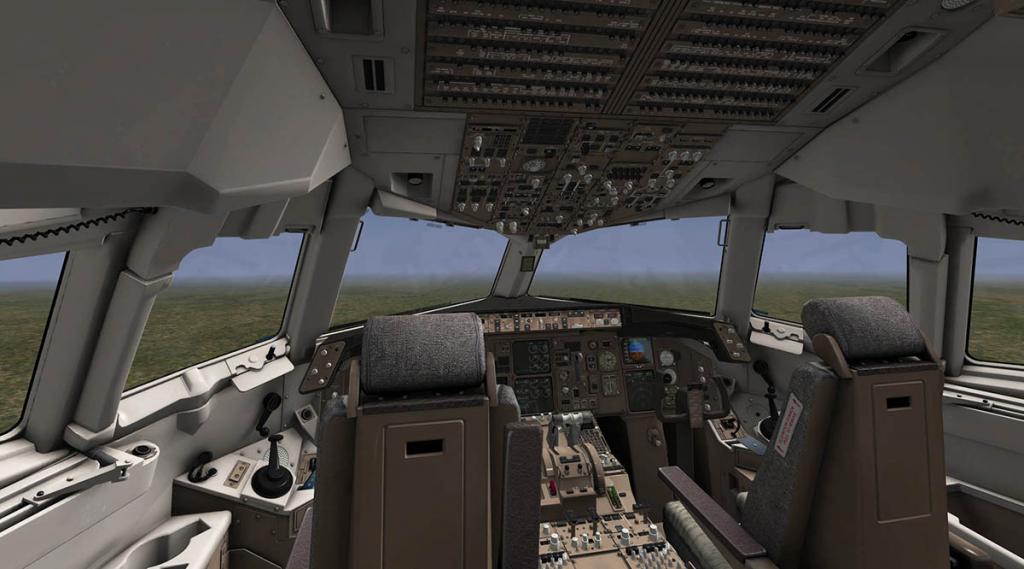
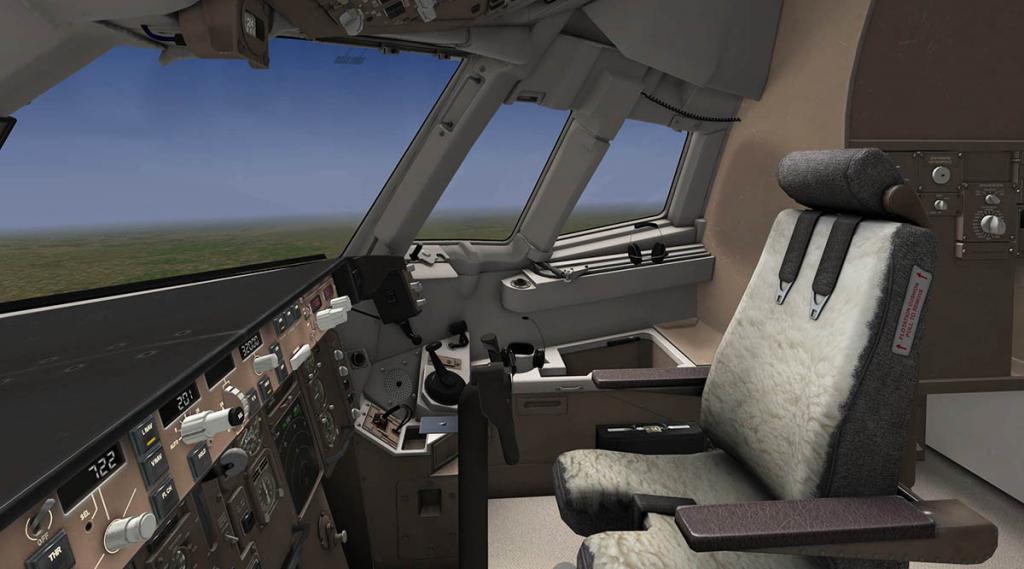
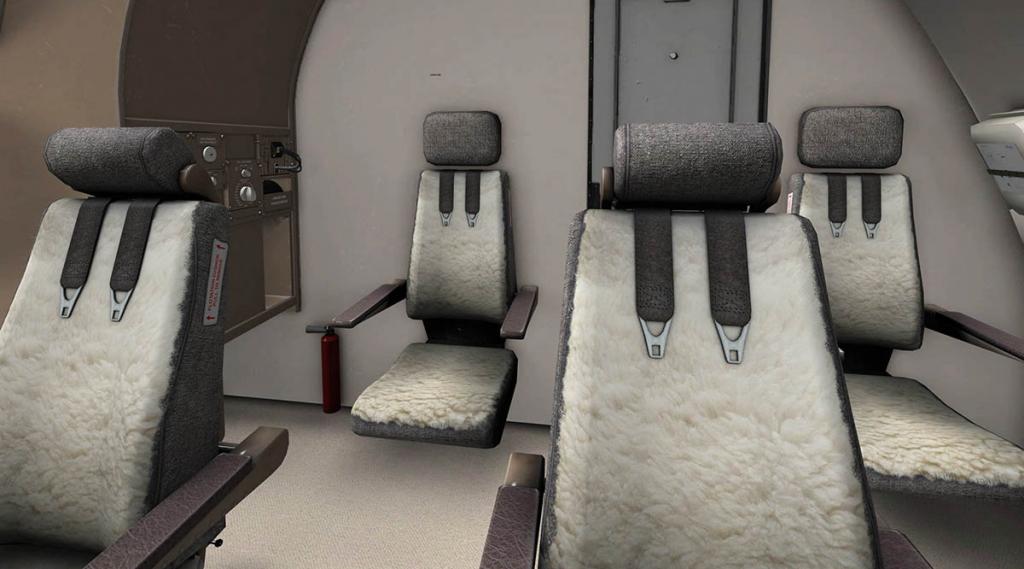
It is 2h 30min flightime between BNE to ADL, but it felt longer with the "real time" option on, and yet the clock is right. 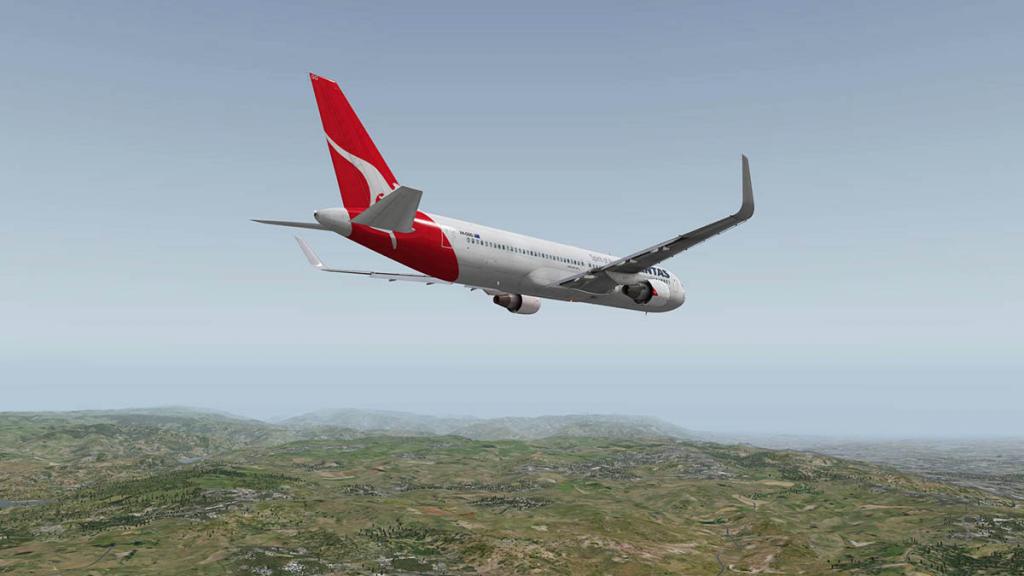
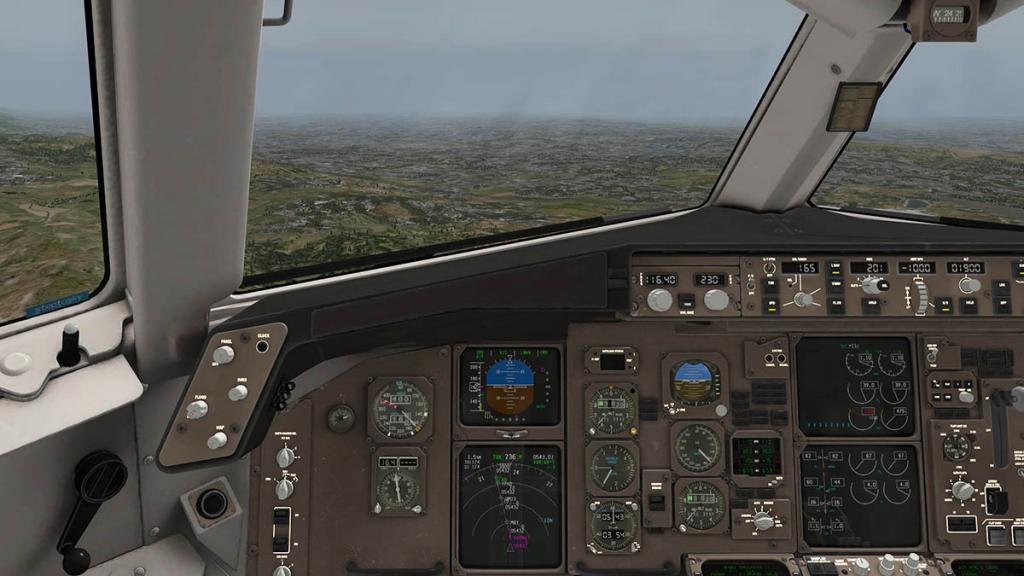
Pretty soon you are coming over the Adelaide Hill's on the "Black" STAR approach path to RWY 23. FF created the best aircraft noises and this B767 does not disappoint on landing, throttle changes are excellent and wind noise with gear extraction is amazingly realistic, almost distractingly so, you are working hard on the pre-landing procedures and these great sounds are surrounding you with detail... realism par excellence. 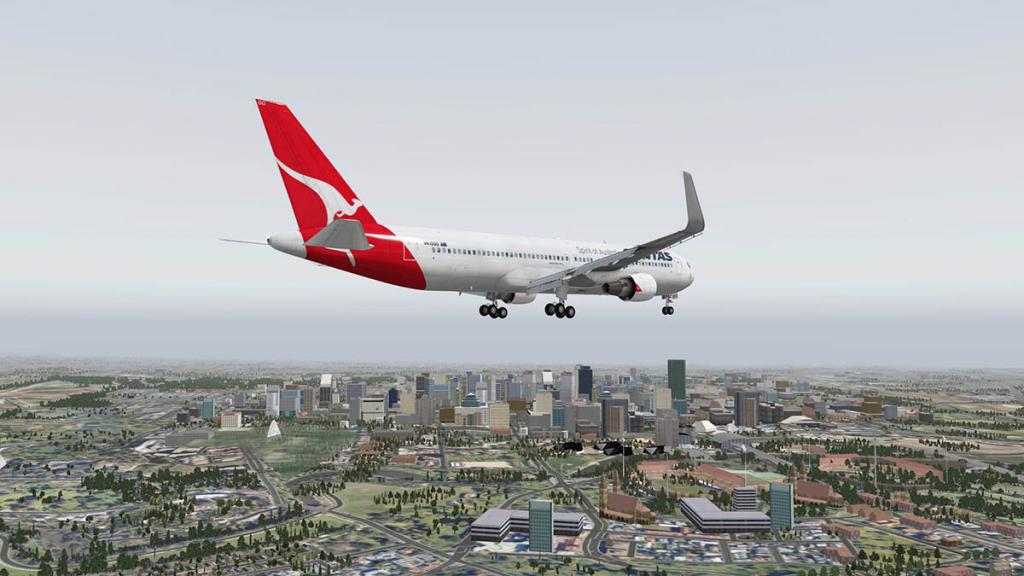
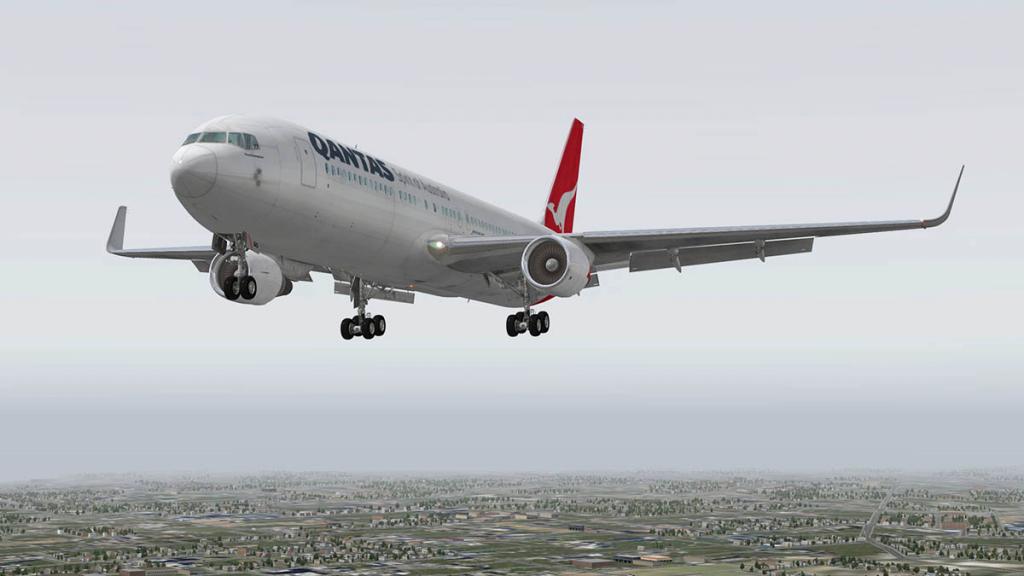
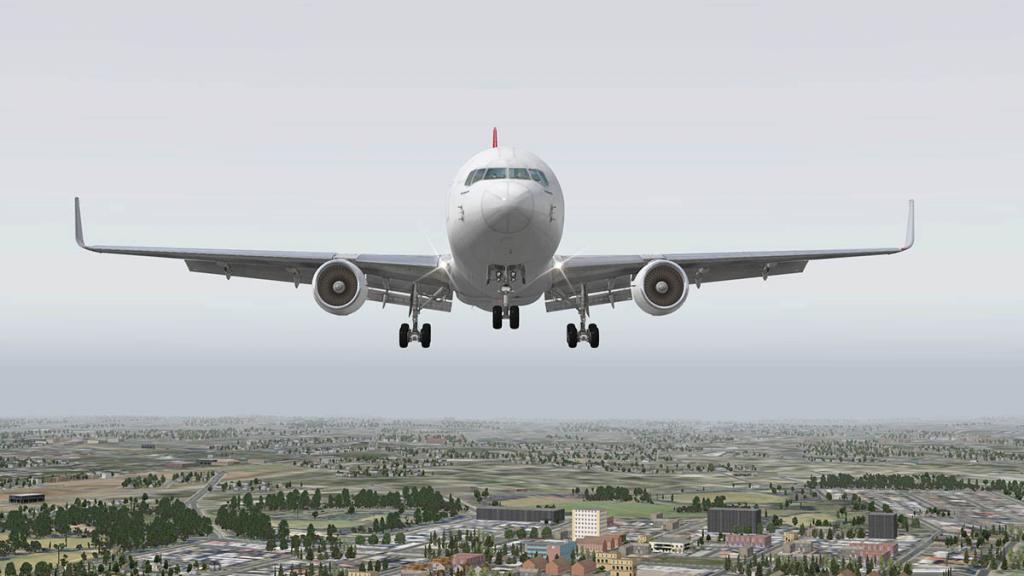
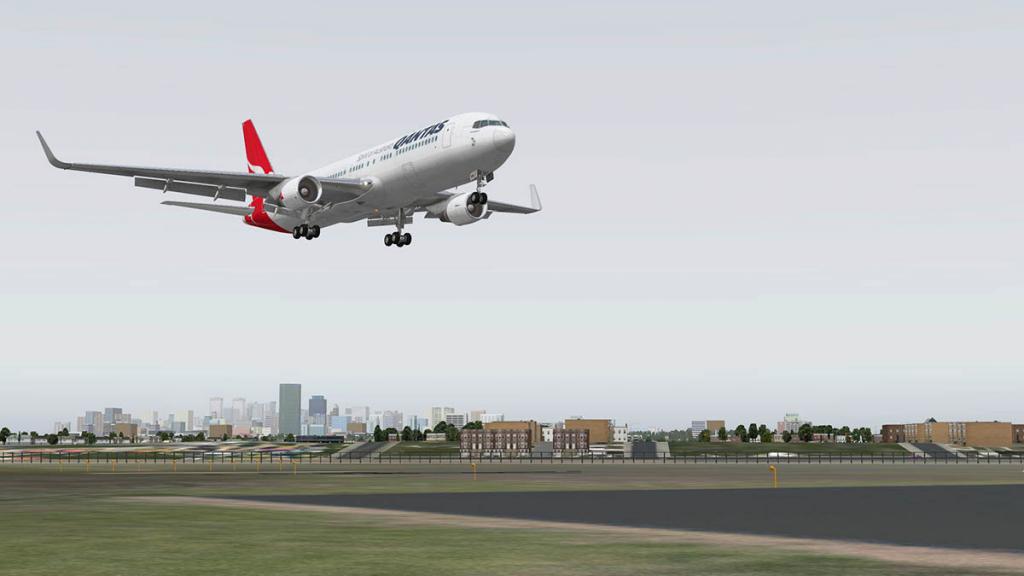
You are working hard but the aircraft delivers, one natural thing is that the Boeing 767-300ER is just a very nice aircraft to fly, perfectly balanced and you love being at the controls... 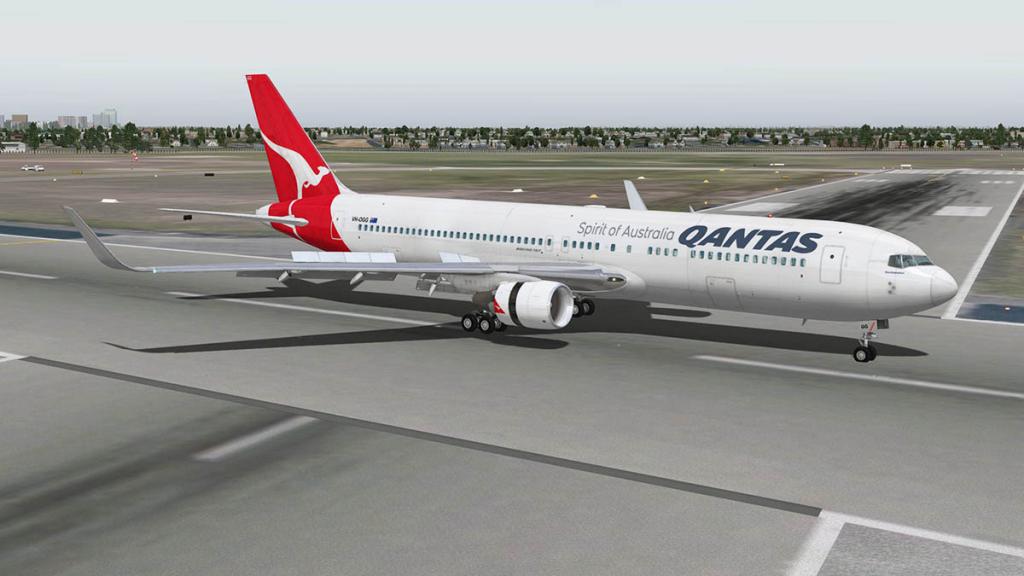
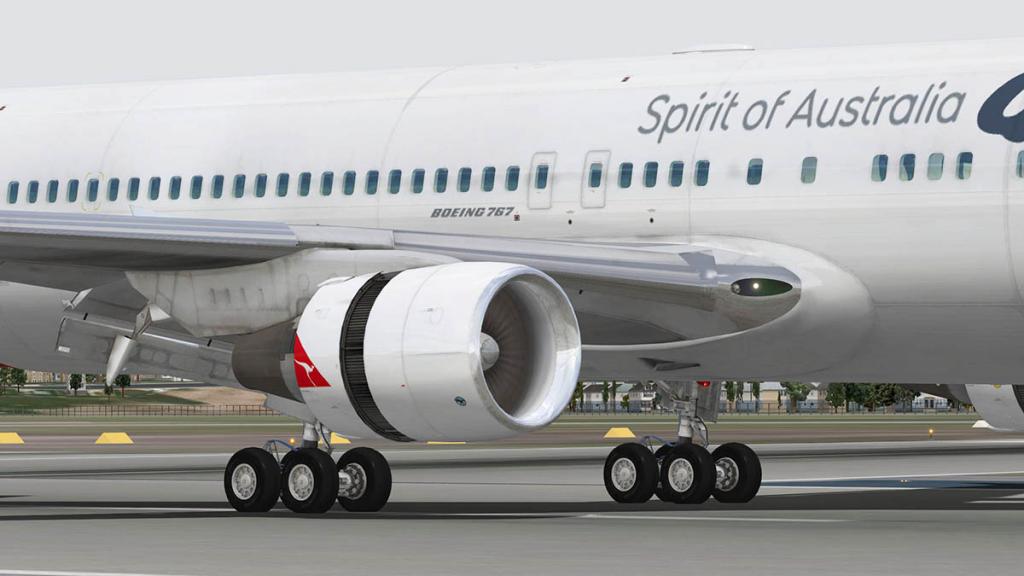
Landing sounds are exceptional, thrust reverse can be set up so your add-on throttle will allow you to control the amount of thrust you need to stop, but pull the thrust back and close the doors before rubbing off to much speed as you will lose too much momentum as the reset period to forward thrust is quite high, if you want a bit more realism I recommend SimCoders free "HeadShake", but use it sparingly and at minimum settings.
Back on the ground and you clean the aircraft up and say goodbye to the passengers, the B767 has such a great visual impact in X-Plane, just a damn nice aircraft.
At Gate 14L the unloading of the aircraft works for me, but while the noise is going on behind me the reloading was now starting to start and I am working hard to finish off the reprogramming the MCDU for the next sector to SYD (Sydney), a top up with fuel is also needed but turnaround time is 45 minutes and you have a lot of work to get through...
YPAD - YSSY
Departure from YPAD is via RWY 23 and this is a great opportunity to test out the terrain radar which is a major feature and independent of the standard X-Plane version. The system notes the high ground to the left of the aircraft, and the radar in the nose is adjustable up or down to give you the feedback you want, the sweep of the radar beam on the CRT is really well done and is highly realistic.
There is one notable aspect in that the PFD instrument has no Altitude or V/S tape, there is the speed tape but you are looking to use the standard clockwork dials for the Altitude and V/S information. This EHSI (Electrical Horizontal Situation Indicator) is a little disconcerting at first as you are so used to having both items fore and centre, but you do get used to it and it makes the display less busy to use, there is still a wealth of data and information in there and the Localizer deviation scale and pointer (Horizontal) and Glideslope deviation scale and pointer (vertical) still appear on landing. Pitch, and Rate of Roll displays are excellent as is the Flight Director cues.
Lower MAP/NAV screen is highly configurable from the EFIS (electronic Flight Instrument System) panels and have all modes including VOR, APP (Approach),MAP and PLAN, switchable to the ROSE mode for heading flying. The display will also show the above Terrain/Weather displays.
Weather
On the face of the displays the Weather radar looks like the current default X-Plane version, but it is not. This weather radar is a totally new thing in X-Plane all together. It creates extrapolated 3D weather data and shows cross-sections using tilt and gain. Also shows windshear and turbulence visual data. It is controlled by "weather Radar" panel on the pedestal and this negative and positive look down feature into the weather is excellent.
Rain and wind effects are very good, the raindrops drip realistically down the window and then go horizontal as the speed grows, the wipers will clear away the drops and only have them reappear as the wiper moves past and returns. Combined with the radar you get a great all round poor weather conditions till you break through the cloud ceiling and altitude.
Route information to YSSY is again top notch. Note the T/D (Top of Descent) point which I found exactly spot on for my descent speed of -2000fpm.
One sector to go at YSSY back to BNE and it was another offload... reload and re-programming the MCDU and weights and balances for the lighter load and shorter distance flight back to Queensland.
YSSY - YBBN
Enroute you can can access pages within pages of data. Helpful is "Wind Forecasts" for different wind altitudes, and that wind data is also translated to the flight PROGRESS (page 2) data. Aircraft cruise (CRZ) ECOM data (page 2) is also available. So you can see that the correct programming of the MCDU is critical in many areas of flight for performance and visual data, this is one very intelligent aircraft. that flies to very specific inputs and weights and balances.
We are almost around the triangle and landing back in Brisbane is only a 20min away, and as the light is falling, let us look at the aircraft's lighting.
Lighting
FlightFactor was one of the pioneers of great internal aircraft lighting and the Boeing 767 here is very good. The only odd visual note is that the panel is more yellowish than the AP panel. It does give it a different visual look and you can certainly find that right point for having limited reflections for takeoff and landing in the dark in four different lighting adjustment knobs. On saying that if you turn up the lighting inside the cockpit the window reflections are excellent and highly realistic.
Overhead in two forward spot (chart lights) and two rear main (Storm) lighting fills the cabin with great working light in flight or setting up on the ground. Power overhead (OVHD) lighting gives you full cockpit illumination.
Rear Cabin is brightly lit and very realistic, feels very good and adjustable too.
External lighting is slightly compromised by Laminar Research's blobby v10.45 lighting, but with HDR on you have a lot of different lighting tools at your disposal.
Night view from the cockpit is amazingly realistic, your in the zone and to deep into your landing procedures to look out of the windows, you work hard in here, but the feedback and realism gives you an adrenaline rush...
Finals and the cockpit again fills with the huge noise of rushing winds and gear down lights.
Forward lighting is very good and the runway is well illuminated.
You have three sets of turnoff lighting and with the main, taxi and turnoff lights running you light up the whole area around the cockpit...
The view for taxiing is excellent and the lighting is powerful in selecting the right line around tight taxiway turns.
There is excellent wing/Ice lighting, but a strange deal on the tail logo light. There is a logo button, but the tail lights don't work? Then on the ground turn on the wing lighting and it comes on, turn off the wing lighting and the logo stays on? weird? It is not centre either on the logo...
Three sectors and four ports and it is a big day flying, no doubt the Boeing 767-300ER is one challenging but hugely rewarding aircraft.
Liveries
You get (noted as "Free") liveries, including: American Airlines, Air France, Garuda Indonesia, British Airways, Star Alliance Lufthansa (a strange choice) and Canadian Westjet.
There are also nine livery packs available at $US10.00 per pack, noted are: Asia 1 & Asia 2, Europe 1, Europe 2 & Europe 3, Middle East, North American, Oceania and South America, that is altogether over 100 + liveries for the aircraft...
Summary
The basic conclusion to this Boeing 767-300ER Professional is that in every way and every department it is a step forward in X-Plane simulation. Three areas stand out though, the sheer depth and complexity of the aircraft and its systems, it is certainly another level again and the amount of data you have at your disposal is breathtaking. The aircraft's design quality and the weather (Radar and Terrain), over gloss and chrome features are other stand out features.
Third is with all this huge amount of detail, design and the sheer amount of code that must be in the aircraft and yet.... yet it is so frame-rate friendly, so light on your computer, that alone is a significant amount of genius.
Negatives... minor but there are a few niggles, It takes a long time to set up for flight, there is a lot of inputting and detailed areas to cover, so it is not a jump in and fly aircraft by any standards, but creating routes and saving them can really help in reprogramming the MCDU, but your work is certainly cut out in there. The ground vehicles are looking a bit out of date and wrong in a modern airport context, a bit 60's Eastern Bloc. That cabin crew constant communication "pinging" drives you mental, yes you are required to satisfy its needs but a lot of "pinging" 500ft out from landing it is more like "just shut up and sit down"
The biggest point to make is that many uses will note that the Boeing 757 has everything the Boeing 767 has and certainly why bother as the cockpit is the same anyway. That is like saying here that my brother or sister is the same as me because they come from the same parents. They are totally different aircraft, and in fact the familiarity is actually a bonus as you don't need to relearn that side of procedural process, but in every other way, in feel, in use and certainly in the depth of the simulation they are quite different aircraft, and you will fly them for different reasons.
Overall it is the feeling that no aircraft comes closer to the real aircraft in feel and sounds than this one does, start it up and fly, and your memories come flooding back of being on the real machine, up there high... yes it is that realistic.
The best heavy aircraft in simulation in X-Plane, well that is a big call for this excellent Boeing 767-300ER, but certainly it again raises the standards to another level again in every area, it is not in the first look that it really delivers but in the minute detailing of systems and programming and flight performance, in that area it is simply outstanding.
______________________________________________________________________

Yes! the Boeing 767-300ER Professional by VMAX and FlightFactor is NOW! Available from the new X-Plane.Org Store here :
Price is US$64.95
Features
Flexible Options
- A very flexible architecture : You chose the set up
- Different options for many avionics instruments including two types of FMC.
- Options to composite your own EICAS, EADI and EHSI displays.
- Most of the options included in the real 767
Checklists and 'Autohelper'
- Full electronic interactive checklist with automatic action detection.
- Automatic mode 'Helper' who performs all the actions for you, you just CHECK the items.
- A tutorial which shows the user what to do and when.
Perfected Flight model
- Accurate flight model, as close as it gets to real performance. Tested by real pilots and translated to X-Plane
- A dynamic and customizable center of gravity that depends on actual cargo and passenger load
Fully Functional Professional FMS and EFIS System
- Custom Flight Management Computer, integrated with other plane systems.
- Custom programmed LNAV logic for terminal procedures from updatable database.
- VNAV-managed climbs and descends.
- Optimum cruise performance and step climb calculation.
- Two independent analogue instrument sets for captain and first officer.
- Two independently simulated EFIS (EADI/EHSI configuration) for captain and first officer.
- Dual-FMS with two independently working CDUs.
- Working instrument comparators.
- Triple IRS and triple symbol generator systems with realistic instrument source switching.
- Dual air-data computers with custom failure modes and source switching.
- Independent 2 nav and an ils recievers.
- Realistic inertial, radio and GPS position updating, you can see the individual inaccuracies of those systems.
- Triple-channel autopilot with realistic dependencies.
- Fail operational and fail passive auto land with mode degradations based on system failures.
- Load company routes generated by Professional FlightPlanner X (or other compatible programs) directly into the FMC.
- FMC can be used on external touchscreen or tablet, optimized for the Retina iPad.
Custom Systems and Failure model
- Detailed and deep simulation of almost every system in the real aircraft.
- Custom air and pressure system.
- Electrical system with all AC and DC busses modeled - see which system depends on which bus.
- Hydraulic system that uses a little fluid when treated correctly and a lot of fluid if used incorrectly.
- Multistage custom failure system - over 200 more failures than X-Plane.
- Ability to fix failure by following proper procedure.
- Persistent failure and maintenance system. Aircraft wear and misuse will carry over to your next flight.
Warning system and radars
- Fully functional GPWS with all the modes the real plane has.
- Fully functional terrain radar, with custom database (just like the real plane), a look-ahead warning system and many other features.
- Weather radar that works like the real thing. Including tilt and gain functions, ground clutter, turbulence detection and windshear prediction.
3D Modeling
- Accurate dimensions based on exterior drawings provided by Boeing.
- Very detailed exterior modelling with high resolution textures.
- Very high resolution 3D cockpit with every switch functional.
- Spatial rain simulation with high detail.
- Very detailed passenger cabin graphics including galleys.
- Additional graphic features: real working oxygen masks both in cockpit and cabin, dynamic window blinds that react to sunlight etc.
- New and improved wingflex.
Special effects
- Multilayer dynamic reflections on all glass objects.
- Reflective metal and plastic objects in the cockpit.
- Glossy exterior that reflects the outside.
- XP weather enhancements like custom windshear.
______________________________________________________________________
Installation : Download aircraft file size is 2.27gb - Liveries 426.20mb. Installed file size is 2.6gb
Authorisation key is required, and I highly recommend a desktop startup when Key activation is complete.
Notes: You will need a lot of time to programme the aircraft before actually flying it.
Documents : Both a Official Boeing B767 Operating Manual and FlightFactor aircraft manual and Remote CDU set up guide (iPad).
I also recommend to download this: B767_Flightdeck_and_Avionics guide 14.6mb for a more quicker overview than the extensive official manual.
B767_Flightdeck_and_Avionics.pdf

Requirements :
(Note aircraft is exceptionally good on framerate, playback is current with similar sized aircraft and features)X-Plane 10.40+ (any edition) running in 64bit mode.Windows 7+, Mac OS 10.9+ or Linux 14.04 LTS or compatible. 64bit mode1Gb VRAM Video Card Minimum. 2Gb+ VRAM Recommended. 3Gb+ VRAM Preferred______________________________________________________________________
FlightFactor Developer Support : FlightFactor 767 Professional______________________________________________________________________Review by Stephen Dutton
12th December 2015
Copyright©2015: X-Plane Reviews
Review System Specifications:
Computer System: - 2.66 Ghz Intel Core i5 iMac 27”- 9 Gb 1067 Mhz DDR3 - ATI Radeon HD 6970M 2048 mb- Seagate 512gb SSD
Software: - Mac OS Yosemite 10.10.4 - X-Plane 10 Global ver 10.42 (final)
Addons - Saitek x52 Pro system Joystick and Throttle : Sound - Bose Soundlink Mini : Headshake
Scenery or Aircraft
- YBBN - Brisbane International by tdg (YBBN - Brisbane Airport 1.0 - X-Plane.OrgStore) - Free
- YPAD - Adelaide International by Chris K (ISDG) (YPAD Adelaide Airport Photo Scenery 1.31 - X-Plane.OrgStore) - Free
- Adelaide City Scenery by Chris K (YPPF Parafield Airport and Adelaide City Photoreal) - Free
- MercuryMat and judeb
-
 2
2
-
14 minutes ago, Guest said:
for me the options and camera option doesn't work, when i press it nothing happens
Sounds like a bad aircraft installation? You don't say if it is an old version or the recently updated version, if old then download the latest v3.1 version. SD
-

News! - Sale! - Carenado sale now on till 20th Dec 2015 From now till the 20th December 2015 Carenado has a sale that sees 50% off their amazing aircraft, yes 50% off. So if you wanted that great GA aircraft then this is the only time once a year to put it into your hangar... So be quick and have a Merry Carenado Christmas! So go to your excellent:
 Store
Store
And have a browse!
Go Here:
Store.X-Plane.Org - Carenado 2015 Sale
Stephen Dutton10th December 2015Copyright©2015: X-PlaneReviews -
News! - Released - SimCoders Reality Expansion Pack Bonanza F33A
If you love your Carenado Bonanza F33A as much as I do... Then this is the pack for you. When Carenado updated their CT210 Cessna lately SimCoders brought out a "Reality" package to go with the aircraft. X-PlaneReviews did a full coverage of both releases here:
Aircraft Update - CT210 Centurion II v3.1 by Carenado + Reality Expansion Pack by SimCoders
These extensive reality packs extend the basic (If not good already) Carenado aircraft by adding in features like:
Realistic stall speeds & behavior
Realistic climb speeds
Realistic cruise speeds
Realistic Weight & Balance
Realistic taxi behavior
And the full features list is very comprehensive:
Complex Damages System
- Triggered by the pilot actions
- Based on real world data
- Target every system in the aircraft
- Meant to teach you how to correctly manage an airplane
Realistic IO-520 Engine Simulation
- Realistic propeller animations as never seen before on X-Plane
- Correct fuel consumption
- Oil System
- Injection Fuel System & Fuel Pump
- Starter
- Realistic startup procedure
- Realistic engine temperatures
- Vapor Lock Simulation
- Fuel Flooding simulation
- The engine parts are damaged if not managed correctly
Realistic Landing Gear
- The landing gear is damaged by hard landings and overspeed operations
- The brakes and tires are damaged if not managed correctly
Electrical & Avionics System
- Realistic Battery
- The avionics are damaged if on when the engine starts/shuts down
Learn with the in-flight tips
- A non invasive tip with a suggestion about the conduct of the flight is shown when you are not flying the airplane properly
- A non invasive tip with a suggestion on how to recover the problem is shown when you damage the airplane
Stunning sounds
- Realistic engine clicks and stutters
- Real starter sound
- Fuselage wind sound
- Landing gear wind
- Independent touch down sounds
- Real avionics sound
- Realistic open window wind sound
Interactive Walkaround
- Cockpit checks
- Aileron, rudder, elevator and flaps check
- Tire check and choks removal
- Tie-down removal
- Pitot tube check
- Engine cowl check
Interactive towing
- Push, pull and steer using the joystick
- Towbar simulation
Weight & Balance Tool
- Load the airplane and check the C.G. and weight limits at takeoff and landing
- The airplane behavior changes when the C.G. moves
Popup Kneeboard
- Complete normal operations checklist
- Complete emergency operations checklist
- Complete reference tables (speed, fuel consumption etc.)
- May be shown/hidden with mouse gestures
Simulation state saving
- Every single switch and lever position is restored when you reload the aircraft
- The battery may discharge if you leave it on and then close X-Plane
- When X-Plane is launched, the engine and oil temperature are restored basing on the
- time passed
Maintenance Hangar
- Engine maintenance tab
- Electrical systems maintenance tab
- Oxygen system tab
- Landing gear, brakes & tires tab
The Carenado F33A is certainly one of the very best general aviation aircraft available, I know because it is almost part of my aviation family, just a note to update to the latest version of v3.1 which is available now from Carenado and the X-Plane.OrgStore... if you want to check out the aircraft then go here:

Yes! the Bonanza F33A HD Series v3.1 by Carenado is now available from the new X-Plane.Org Store here:
Price is US$26.95
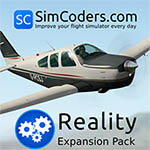
Yes! the Reality Expansion Pack for Bonanza F33A (REP) by Simcoders is now available from the new X-Plane.Org Store here:
- SimCoders Reality Expansion Pack for Bonanza F33A
Price is US$19.99
Developer site : SimCoders
______________________________________________________________________
Stephen Dutton
9th December 2015
Copyright©2015: X-Plane Reviews
-
1 hour ago, Guest Dont bother said:
This aircraft was such a rip-off, poor graphics, bad lighting, fmc does not work properly even if you try to follow the instructions they send with it. It is WAY overpriced. I put it in the 15 to 25 dollar range tops. Id still be upset if I paid that much. I was denied a refund and am stuck with this lousy excuse of a simulator aircraft. The 777 by jardesign Is 10x better all around and at close to the same price, even the a330 is a better aircraft for cheaper. Stay away from these developers
One comment is acceptable, but if more continue I will delete them all as spam!
-
5 hours ago, Guest N56TX said:
I want to be able to add it from plane maker to planes that i already have. like the article stated
Sorry since the article was written the files have been pulled off the .Org, I'll check it out. SD
-
6 minutes ago, Guest N56TX said:
So has this been released yet? if so how do i get it?
News! - UPDATED - CT182T Skylane G1000 HD Series by Carenado now available on the X-Plane.OrgStore

-
6 hours ago, Guest said:
Thanks for the excellent review...you put so much effort into these! This plane sounds really great. Do you know if it works with Haversine's "AirTrack" (for iPad)?
Sorry I don't know if it works with Haversine's "AirTrack" (for iPad), If the add-on uses the X-Plane basic simulator data for its information base then it should be fine, if it requires the developer to sync the aircraft's data to the add-on then I doubt it. SD
-

Aircraft Review - Embraer E175 by X-Crafts
In regional aviation for airlines the biggest revolution has been the replacement of 70-110 seat turboprops with economic new generation jet aircraft. Of these two aircraft companies have dominated in Bombardier Aerospace with their CRJ Series and coming C Series, but the real success story in this regional jet category is the Brazilian Embraer company with their E-Jet family of aircraft.
These fast efficient modern aircraft have revolutionised the hub and spoke system of aviation networks in that you can today step out of that modern long haul cabin and straight into a regional aircraft cabin of the same standard, space and quality and have the same speed factor than sitting in a droning turboprop for hours.(yes economics have again swung the pendulum back in favor of the ATR's and Q400's, but only over short distances).
The first delivered aircraft was an E-170 in 2004 to the Polish Airline LOT and the larger stretched version with two extra rows of seats (88 to 80) was the 21,810 kg (48,080 lb) E-175, that first entered service a year later with Air Canada in 2005.
X-Crafts Embraer Aircraft
X-Crafts came into X-Plane in August 2014 with their first release aircraft E-175 LR: Aircraft Review : Embraer ERJ 195 LR by X-Crafts
I was immediately impressed with the quality of X-Craft's design and excellent 3D modelling and an excellent looking aircraft it is. As this being a very first release it did note and require a small refining period, but by the time of an update to v1.2 in early Nov 2014, you were looking at a pretty nice looking aircraft at a great purchase price.
This Embraer release is the follow up aircraft in the smaller E-175. And outwardly it looks extremely similar to the bigger earlier E-195 LR, but it is not as this aircraft has been 95% remodeled from the ground up, and it is in the details that shows how far the difference is between the two aircraft, and the E-195 LR is still very good in the first place. The equation that is important to remember here is the amount of detail and quality you get for your money. Yes certainly a FlightFactor aircraft gives you an amazing amount of systems and general spectacular features, but it comes at nearly three time the cost of the X-Crafts aircraft and you are not skimming here as the aircraft is very high in quality and has a lot of very good features for a very nice price, it is a very nice aircraft to fly as well as we will find out... In X-Plane terms, the E-175 is an excellent, quality aircraft and amazing value compared to aircraft even only a few years ago.
Exterior
Sitting on the ramp the aircraft simply oozes quality, it is a nice sized and looking aircraft as well. but if you get in closer then the detailing starts to really jump out at you.
On an aircraft this size I don't think I have seen better detailing, it is extremely well done and detailed. Ribs, latches, handles and pitot probes are all expertly done. Door animation (latches as well) are excellent for all four fuselage doors and the two lower cargo hatches.
The beautiful (If you into great engineering) GE CF34-8E uprated 200 turbofans are astounding in quality and execution, and the central wing attachment strengthened areas are very well and realistically done.
Undercarriage construction, links, hydraulic pressure hoses, wheel supports and hubs are expertly created, it is all as good as it could get.
The detailing is carried on around the tail and rear elevators, the metal heat shroud for the rear mounted APU (Auxiliary Power Unit) is exceptional as is the detailing for elevator maintenance access panels.
Menu's
There are three "Menu" tabs in M, P and C on the left lower point of your screen.
M-Menu (main)
The top "M" menu popup covers opening and closing the four fuselage (Two front and two rear service) doors and the two lower Cargo hatches. Three other items cover the "Ground Objects" which include chocks, cones and pitot covers. GPU (Ground Power Unit) and pushback truck.
If the box is ticked off you get an "Alert" of the pushback truck is disabled, click the box and the pushback truck appears, we will cover the use of the "P" pushback truck later when we use it.
C-Checklist
There is a spiral bound checklist book (current fad at the moment).
There are eight tabs on the checklist manual covering "Before Start - Startup - After Start - Takeoff - Descent - Landing - Parking and Secouring" All procedures are very clear and precise, and so this is a handy guide to operating the aircraft.
Interior and Cockpit
On entering the E-175 the cabin is very well done and two class, only small point is the chairs feel a bit too big a scale and the distance between the chair height and the luggage bins is quite narrow, but you can't fault the detail, nice touch is the rows of seatbelt and no smoking signs above each row when activated. Both the forward and aft galleys are excellent and really well modeled and detailed, separate highly detailed food carts are the highlight here.
Like the outside in the cockpit at first glance it looks exactly like the earlier X-Crafts E-195 LR, but the subtle differences are there, it is better and more detailed, the five display panels are more cleaner, brighter, sharper (although that can bring out a little more anti-alias at lower resolutions because the lines are finer) It is certainly the new improved version of the last one, but overall the panels look and feel more complete and that feeling is carried through over the whole aircraft.
The Pedestal was beautifully done on the E-195, and that design has been carried through here as well, and even the rear FMS displays information when programmed, small but welcome details.
The five main display panels are switchable via the Reversionary Panel which swaps the displays between four different modes. PFD and the MAP/NAVIGATION displays are your main two screens for both Pilot and Second Officer, central screen covers the engine and aircraft parameters. There is only a backup Artificial Horizon and clock timer on the central panel with the Autobrake and Gear selection.
The aircraft and systems is powered by the Honeywell "Primus Epic®Integrated Avionics System" that covers every aspect of the avionics and flight management of the aircraft. As a nice touch the Honeywell logo pops up on the displays on startup.
Main engine items include N1, ITT (Turbine Inlet Temperature), N2 and FF (Fuel Flow Per Hour). Fuel QTTY (Quantity), Oil Pressure (PSI) and Temperature. Slate and Flap position indicator, LG (landing Gear) position and Autobrake settings, APU percentage (running) and Temperature. Aircraft data and alert/information displays, lower bottom is the aircraft "TRIMS" settings.
PFD (Primary Flight Display)
The main PFD is the standard glass cockpit primary display in having an Artificial Horizon with built in rate of turn and bank indicator. either side of the Artificial Horizon is the speed and altitude tapes with the vertical speed (V/S) on the right. The Horizontal ILS CDI (course deviation indicator) is ever present and the vertical indicator appears when the approach mode is armed. Across the top is the Flight Mode Annunciation (FMA). And this subdisplay indicates the autopilot modes that are active and armed.
Lower in the PFD is the navigation section that covers a compass rose (built in course/CDI) with VOR and DME overlays, navigation source mode indication, heading, VOR and COM radios frequencies, and NAV/FMS data.
Map - Navigation Display
There are two main displays for Navigation and Plan modes (route).
Popup menus give you access to Map Range (shown on display) and Nav-Aid/Fix indicators. Weather includes Light Storm and Alfa Atn. Top right menus give you access to seven pages of aircraft parameters covering - (Current) Status - Flight Controls (Ctrl) - Hydraulics - Fuel - Electrical - ECS (environment) - Anti-Ice. All displays can be adjusted for brightness via the far left knob lighting panel, which unlike the same on the E-195 in that all the knobs now work independently of each other.
Overhead Panel
The overhead panel (OHD) is surprisingly straight forward, in most actions are just automatic. All systems really take care of themselves with access needed only really to set fuel tank operation and aircraft lighting controls, even the GPU or APU access is controlled by the active unit.
Autopilot panel is nicely laid out and easy to use. Nice features are three way altitude adjustments to set large different altitude settings, making things quick and easy, a few more things we will come to on the AP when we fly the aircraft, but one item that needs pointing out is the VOR1 - VOR2 and FMS (Flightplan) selection. "FMS" is the button on the top, but the "VOR1" (ILS Landing) and "VOR2" selection is noted under "BRG"?
MCDU - Multi Control Display Unit
One of the features of X-Crafts E-175 is a MCDU/FMS unit. To be clear it is only loosely based on the Honeywell avionics system, it looks like the system and you access it the same way as well, but under the skin it is a very highly developed X-Plane default FMS, and that is best kept in mind when using it.
It works in the context of creating a flightplan with three elements, those are the:
SID (Standard Instrument Departure) - Route - STAR (Standard Terminal Arrival Route)
It may look like a standard MCDU flightplan formatting layout, but it is not. For one the three elements are totally separate until they are activated together as a complete flight plan, It is clever as well because you can change each element separately without affecting the other two. The central "Route" section is a standard X-Plane .fms flightplan and it is saved and loaded as such a file, but with each time you load in your saved .fms flightplan you will then have to create the SID and STAR elements from new.
Start page is the "MCDU INDEX" This is main central place menu you go to to do all the various elements of creating, changing, saving, loading flightplans, two other bottom keys allow you to access the AUTOPILOT and RADIO pages.
We start at the "STATUS" page by accessing the L1 (Left - key 1). This page shows you the current "Status" of the aircraft, It includes the general condition of the aircraft at this point in "position" Autopilot (on/off, AP Source, Next waypoint, Flightplan, Speed, AutoThust setting and NAV Radio settings.
To create a route then we start with the DEPARTURE point or airport, press the L2 key to create a start to your flightplan and create a SID.
Type in the lower scratchpad your DEP Airport, in this case "KRSW" SouthWest Florida Intl and input L5 Key. Select your departure runway by the R3 Key. All navigation on the MCDU is done via two sections of the lower input knobs, outer (larger) knob allows you to move up or down the list, smaller inner knob is used to select or activate your choice.
Select a SID by pressing R4 Key and again go down the list via the outer knob. If you reach the bottom of the list, the list will not scroll, so you have to go to the next list page by pressing the NEXT button or to go back to the previous page then press PREV, again press the centre inner knob to select your SID.
With the SID Stored it is time to load or create a route... You have two options in "ADD ROUTE WPTS" or LOAD (.fms flightplan)"
We will look a the LOAD First. The .fms flightplans are stored in the X-Plane "Output/FMS plans" folder, and you use the standard navigation of outer knob for moving up or down the list and inner knob for selection. The PREV and NEXT buttons navigate the pages of flightplans, and in fact is a far quicker system to find your flightplan quicker than using an endless scroll like most selection processes.
If you have loaded your route then you can go to the next step of ARRIVAL, if you need to create a route then you press ADD ROUTE WPTS
Creating Waypoints is easy. Select your chosen NavAid via the AIRP (Airport), VOR, NDB, FIX or Lat-Lon keys (FIX is default), then insert your NavAid/Waypoint ICAO code on the scratchpad and input via the L3 Key, you also have option to add in the altitude via the L5 Key, if correct then press SAVE R5 Key. On VOR/NDB you may be given a choice of waypoints to chose from, select the one you require. In all scratchpad inputs you have a reverse arrow <- on the bottom row of the MCDU to go back one space or DEL to clear the waypoint.
When you SAVE the next segment (WPT#) then appears, repeat till you have all your route segments completed, then use MCDU INDEX to go to main menu page.
Now the final element is the ARRIVAL STAR. Press on the MCDU INDEX page ARRIVAL R2 Key.
Input your ARRIVAL airport... KATL L5 Key, then SELECT RUNWAY R3 Key to select your arrival runway and activate via the inner knob.
You have a choice of FINAL approaches in ILS, RNAV or VOR/D and select the one you require.
Last approach choice is the STAR you require, select from the list and again activate via the inner knob.
Now you have created all three elements in the SID - ROUTE - STAR and to Execute the full flightplan you press EXEC to load the plan into the system. Press R1 Key (FLT PLAN) to see your Flightplan.
You can review your route on the MAP/NAV (PLAN) display and as you scroll down the list it will go through the various waypoints on the plan. If you want to you can input a route name and SAVE it to your "Output/FMS plans" folder. You can use any .fms X-Plane flightplan, but remember it can be only the centre section of the SID - ROUTE - STAR layout.
Editing any element in SID - WAYPOINTS (route) - STAR is selected by the assigned key on the MCDU INDEX page, and you again go back to the MCDU INDEX page and press EXEC to reload the flightplan.
Last two selections on the MCDU are the RADIOS R6 Key pages and AUTOPILOT L6K.
RADIOS is a full Radio Frequency page for Radio management. All frequencies are covered and there is a duplicate manual version on the middle pedestal, but inputting is so much easier here with the key pad.
Very nice to use it is as well... COM 1 and 2, VOR/NAV 1and 2 and your XPDR Transponder identity code and visual reference on page one and ADF/NDB frequencies on page two. The AUTOPILOT is just a general information page (no progress page) as yet.
Overall this is a hybrid MCDU, a very good one though and it works very well and it has been extremely well put together by Steve Wilson. And no doubt it forms the basis of a more featured system that was not possible because of current time constraints. But certainly the enhancement of a better map display and rather than the usual X-Plane red route marker would be the first enhancement I would execute. But the basics are in place and very clever it is in operation.
Flying the Embraer E-175
You can start the engine from either the GPU or the built in APU. The start sequence is mostly automatic and by just turning on the ignition switches and then the start switch for each engine. From the E-195 LR I didn't like the way both switches moved together, in one start sequence they still do, but like a lot of changes from the E-195 they are now independent operations.
Sounds are first rate, really authentic and the startup sequence is very good.
If you select the "Pushback" option from the "M" menu then you can activate the pushback truck via the "P" menu.
You need to design the pushback you want in, straight back, pivot right or left or to park the tractor, then you set your distance and press "Accept" to activate the plan, you then do a acknowledgement to "confirm" or "Abort", then click off the brakes and off the tractor goes...
It works very well, but we are used to throttle controlled, joystick manoeuvring trucks today, so I found it a bit restricting.
Power up and off the brakes and the aircraft nice to taxi...
To get the best clean takeoff and flight transition it is best to set up a lot of the AP (AutoPilot) ready before takeoff, but don't activate the AP.
FMS is selected and so is LOC for flightplan lock in, Setting and arming the V/S (Vertical Speed) which is set here at 2300fpm, both Flight Directors (FD) on and the speed set at 220knts and transition speed altitude set at 15,000ft. Don't activate the ATHR (AutoThrust) if you don't want to find yourself taxiing fast through the airport carparks (yes at full throttle it is scary). Flaps set to 2.
You can switch off the window tinting and excellent reflections, by pressing the left side window frame.
The activated flightplan will show the aircraft's position, this maybe before the actual airport. but that is normal.
Sometime like here if you have changed you runway direction and as KRSW does not have an available SID to the first waypoint of RODDE You sometimes have to do a -> DIRECT TO to the RODDE waypoint.
To active this you press the -> Arrow that is used for DIRECT TO functions... The MCDU will note the DIRECT is EXECUTED.
Using the DIRECT function is easy as well. Just use the outer knob to scroll down your flightplan list to select the waypoint/Fix you want to go DIRECT TO and press the arrow to activate.
Brakes off and power up to the yellow band and your rolling... power build very easily and I rotate at 165knts and have a positive climb.
The aim is to get the aircraft clean as soon as possible (Flaps housed and wheels up) before selecting the AP (Autopilot) button. If you have any flap lowered even at low speeds it affects the transition to V/S, and you will find yourself in a negative pitch and totally ruining your takeoff/climb phase, even the transition from manual flying to automatic can be problematic if your speed and flap position is wrong. Get it right and hit the already armed AP button and you just cruise upwards in a perfect linear climb and LOC straight into your flightplan. Just reset your speed for the right ATHR match and your aircraft will power its way in this case my 15,000ft speed transition altitude.
The E175 is a seriously nice aircraft to fly. The length proportions compared to the longer E-175 LR make the machine more balanced, in manual control it is a really nice aircraft, take out the weight of passengers and a heavy fuel load and it has almost personal jet performance... curve away from the airport while slightly climbing and you could turn yourself into a fighter pilot with a passenger jet... so balanced and great handling.
But today it is all business, passengers in the back and cargo hold full of weight, but the performance is still very good, you can easily climb (way) above the 2000fpm marker all the way to 30,000ft, but I am more gentler than that on my machines but still 1800fpm was no issue above the MACH change of 25,000ft.
Cruise
I personally love the way this aircraft looks in the air... picture perfect. The light captures it really well and it look great at any point day or night.
It is very easy to slip back and enjoy the view from FL320, you are just purring along and monitoring the aircraft. On the right and left of the panel are three buttons to show two popup screens of the MCDU and the Radio panel, but they are static and can't be moved around or resized.
Approach
Like most regional flights KRSW (South West Florida) to KATL Atlanta is 1h 20m which is a usual sort of flight of this nature.
Leading edge and flap extension is excellent with great animation and design, even small sections of the flap extensions open and close to clean up the system. Approach speed is around 136knts at full flap before ILS capture, but you have to watch you first two flap extensions as the wing is very efficient and the drag noticeable and will heavily adjust your pitch.
Final approach is around 125knts, and you have push the aircraft down a little to make a secure contact with the runway (RWY27R) and then make sure the nosewheel is hard in contact as well, as the aircraft can be a little light on the nose.
Thrust reversers are very effective, but make sure you pull back on the throttle and close the engine doors without lowering your speed too far, as the engines take a fair while to spool right back down for taxiing thrust. I found that a ATHR off approach is the best so for better speed control and the chance of the ATHR spooling the engines back up again...
Clean up the aircraft and you can head to the gate.
Lighting
Cockpit lighting is good, but there is only really three adjustment positions and no click area spot lighting.
But there is no denying it is a nice place to be at night, the cockpit feels and looks very good and very modern in design, it has been very well conceived and beautifully created.
The rear cabin lighting is very good, but attached to the cockpit overhead lighting, so when you dim the cockpit overhead lighting for landing it goes dark in the back? Highlight is the excellent row seatbelt and no smoking signs overhead.
Outside lighting is good if you can see past the X-Plane blobby lights (which I hate by the way) Aircraft looks very nice at night, but the logo tail lighting is connected to the Ice/wing lights, which I really don't like at all. They are for different uses.
Landing lights are two set inner wings and one on the nosewheel, a second light on the nosewheel is used for taxiing.
First impressions of the landing light reflections was "oh they are not that great, are they", but then they became very effective, so yes they are very good... but there are no runway turnoff lights, which is not to big a deal here as the lighting spread is quite wide.
Strobes and smaller lighting is very good with HDR on.
Liveries
Liveries, include a blank and seven airline colours in Alitalia (default) Delta, American Eagle, both White and dark blue US Airways, Flybe and Air Canada. Quality is outstanding and all liveries are 4K HD (fuselage 10000px/meter squared) quality.
Summary
I am going to admit I really like this aircraft, as from the start of X-Crafts entry into X-Plane the modelling quality has always been exceptional, and the E-175 here is a very high standard... It just always looks so good in the light and flying hard through the sky.
Yes there are quirks, and a few items that need a little refining over time (any aircraft is always needing a refining process), but the step even from the E-175 LR is noticeably higher, and as noted it looks the same outwardly but look and feel closer to the aircraft and you will see the quality and smaller detailing coming through.
Don't likes, not much but a few quirks like double lighting switches, more control of the pushback truck, oversized cabin seats and the default X-Plane map interface.
It is a really nice aircraft to fly, but you have to be and work at flying it really good... It can be a little difficult at lower flap speeds on takeoff more than landing, but time and a feel for the aircraft will eliminate those areas as you get really confident with it, then it all becomes automatic and the E-175 will become part of the fabric of your everyday flying.
The new MCDU based on the Honeywell avionics system is to be noted as very new, and a new approach to setting up the aircraft. Again get used to it and it is easy to program and use, but in a few areas and mostly in a visual sense the X-Plane base is evident and there is certainly a bit more room for a bit more future development and refining here... as I said it is very new here on this release but it will certainly become more powerful, deeper in systems and obviously will become very good going forward.
But if you like your flying regional, and like a gem of a great small 100 seater aircraft and one that is nice to fly, then it is really hard to go past the Embraer E-175 from X-Crafts... all round it is gem of a good machine.

Yes! the Embraer E175 by X-Crafts is NOW available from the new X-Plane.Org Store here : Embraer E-175
Price is US$34.95
Features
- Accurate dimensions based on drawings and documentation provided by Embraer ©
- Windows, Mac and Linux compatible
- Custom FMS
- Custom pushback plugin with animated tug
- On-screen checklist plugin - Plugin menu for door control, ground objects or GPU
- Tested by a real Embraer E175 pilot
CUSTOM FMS
- both the custom and stock FMS are available on the pedestal or as popup panels
- More details about the FMS below
INTERIOR:
- Amazing 3D modeling of cockpit and cabin
- High resolution textures
- High resolution Embraer style PFD, MFD, EICAS displays
- Pop-up screens, pop-up radios panel
- MFD with 8 synoptic pages and a new improved Navigation displa
- High resolution textures on panels - Text is crisp and clear to real
- Intuitive cockpit manipulation - I have always taken great care to make the cockpit as easy to use as possible. This means all clickable areas in the cockpit are very big so that you can easily click on any button, knob or lever in the cockpit
- Each switch, lever, knob, and handle is animated
- Detailed cockpit lighting - All cockpit lights are controllable
- Cargo area modeled
- HUD equipped
EXTERIOR
- 4K High resolution textures (fuselage 10000px/meter squared)
- Highly detailed landing gears
- Flap and speedbrakes mechanisms modeled
- Realistic Wingflex animation
- 2 versions of winglets available
- 9 Liveries included so far and more are on the way!
OTHER FEATURES
- compatible with UFMC, X-FMC
- compatible with JAR's Ground Handling Deluxe
- Night lighting, Nav and Strobe lights cast light on the surroundings
- Obviously a set of custom sounds
- 10 Liveries available
______________________________________________________________________
Installation : Download file size is 254.70mb to your X-Plane - GA Aircraft Folder. Installed file size is 576.90mb
Notes:
Documents : Both an extensive Manual and MCDU operating guide.
There is also a good video on how to use the MCDU by Steve Wilson: X-Crafts MCDU - Steve Wilson (mp4 download)

Requirements :
Windows, MAC or Linux.X-Plane 10.40+ (any edition)4Gb RAM - 1Gb VRAM
Current version: 1.0 (last updated December 2nd 2015)(Note aircraft is very good on framerate, playback is current with similar sized aircraft and features)______________________________________________________________________
X-Crafts Developer Support : ERJ - 175 by X-Crafts - X-Plane.Org______________________________________________________________________Review by Stephen Dutton
2nd December 2015
Copyright©2015: X-Plane Reviews
Review System Specifications:
Computer System: - 2.66 Ghz Intel Core i5 iMac 27”- 9 Gb 1067 Mhz DDR3 - ATI Radeon HD 6970M 2048 mb- Seagate 512gb SSD
Software: - Mac OS Yosemite 10.10.4 - X-Plane 10 Global ver 10.42 (final)
Addons - Saitek x52 Pro system Joystick and Throttle : Sound - Bose Soundlink Mini : WorldTraffic v2
Scenery or Aircraft
- KRSW - South West Florida Intl by Aerosoft (KRSW - SouthWest Florida Intl - X-Plane.OrgStore) - US$24.95
- KATL - Atlanta International by Butnaru (KATL - Atlanta International- X-Plane.OrgStore) - US$23.95
-

Aircraft Release: McDonnell Douglas MD-88 by Rotate
Rotate has released their version of the McDonnell Douglas MD-88. This aircraft is available on the X-Plane.OrgStore NOW!.
This is not a review but a preview and my very first impressions of the aircraft to give you guide on what the MD-88 is actually like and what is available on the aircraft.
One thing I will make clear is that the MD80-88 series is my holy grail aircraft (only the Vickers VC10 is above this series in desirability). I have watched countless hours of YouTube in cockpit videos of the MD-Series that have sent my family against me and would put me in court if they could... guilty as charged. So the release of an aircraft of this desirability could but won't make for a bias against the aircraft... in other words the aircraft had a lot to live up to, with almost impossible standards of what I wanted in X-Plane from this machine. And from the moment the first images appeared on Rotate's site (Rotate.Com) they drove me more and more delirious but also more and more worried of the amount of expectation of the aircraft matching my actual orbital expectations.
My biggest morbid fear was that the MD-88 would have everything I wanted, absolutely everything... but I wouldn't be able to actually fly it?
The aircraft textures are huge, in size and quality. Average size is around 200mb and first reports were as the aircraft was a frameweight killer, that would be a sink hole of pain for me. So the first big relief is that the MD-88 is very good on framerate and about the same as most other similiar sized and featured aircraft in X-Plane, so as to using it and flying the MD-88 I have only the same usual routine things to deal with that is just normal simulation use... a real phew! moment.
Yes it is a heavy aircraft on your frameweight, but usability is still easily possible, and there is a few tricks as well that can take a little more weight out of the aircraft if you are pushing the framerate boundaries, overall for what you get it is extremely good.
With that sort of quality large (I mean huge) livery texture files then the detailing here is off the planet, brilliant to excellent.
So there is no doubt Rotate's MD-88 looks the job, it is very, very good.
The cockpit is very highly detailed and has a sort of FlyJSim B727 feel about it, but that maybe because it is the same period design as the MD series was a follow on from the iconic 60's DC-9 aircraft.
The cockpit is that sweet period between the old analogue world and the newfangled electronic glass panels design, which is mostly analogue with the PFD (Primary Flight Display) and MAP/NAV screen in glass panel instruments. but it is beautifully done. This is the MD-80 series cockpit you dreamed about, and here you are finally in the drivers seat...
The overhead panel is a dream or a nightmare depending on which angle you to come to it on, Yes it is well laid out and functional, but boy there are so many switches and knobs that you will need a lot of time and focus to get the whole lot into your head, even now I am still feeling my way around the board, but the biggest advice I can give is that there is both a very good aircraft manual and excellent Tutorial Flight manual and I suggest you understand both well before doing any serious flying... The aircraft is complex, it has a lot of settings and switches and parameters to set up and adhere to, and you won't fly the MD-80 like a complete pro for many, many flights. It is complex and huge fun and a brilliant simulation. A note that not every single switch works, most aircraft systems are reproduced here so you are wanting nothing in that department, but some of the minor switches are just dummies, hopefully they will be activated in future updates.
The MD-88 aircraft was called "Mad Dog" for a reason, yes the initials make up the name, but the reasoning behind the name is that if you press the "Go-Around" button the aircraft as quoted "The throttles go all the way to full power, the nose shoots up, the airplane rattles and roars like never before." it is known to scare the living daylights out of any seasoned pilot... I haven't had the nerve to try that one yet.
Flight instruments are excellent, but the yoke hides the lower MAP/NAV display. The Autopilot is wonderful, but it is nothing like your standard Airbus or even Boeing standard layout... but in operation you will love its functionality.
Start up and shut down procedures are long, complex and hugely enjoyable if you are a procedure freak like me. I want realism, and you certainly get that here, but the lead up to flight times are long...
The FMC (Flight Management Computer is thankfully rock solid and very detailed and versatile. There is the odd SID/STAR editing, but that is par of course in most cases anyway, but there is no popup display.
One thing you do notice is that it is a very noisy cockpit, not the actual sounds which are excellent, especially the engine start up which turns up hairs on your neck... but the alerts and alarms, they are loud and they are frequent and even off putting when you are in critical stages of flight. But they note that the real MD-80 pilots got used to them and edited them out, but if any pilot would end up in the loony bin with strange loud noises in their heads it is these MD flyboys.
Full cabin is modeled and is very well detailed, very realistic. For the window-huggers (yes I am one) the view out is excellent.
For external features you get opening front and tail doors (beautifully animated and detailed) and three side cargo doors, and a GPU (Ground Power Unit) all controlled from the MCDU. but no pushback truck, chocks, visual checklist (there is a good printout checklist provided) or special effects like rain or misting which would have greatly enhanced the package.
Liveries
As noted the quality of the liveries are outstanding. Rotate's own livery is default, with Alitalia, Air Liberte, Two Delta's in the "Wavy Gravy" or "Flowing Fabric" version which satisfy none one as the modern version is the "widget' version (odd choice), the old Delta "Classic", SAS, Iberia, American Airlines (metal classic), Allengiant, German Wings and an old BIA (British Island Airways)
So did the Rotate MD-88 live up to my disproportionate even excessive exorbitant standards? Yes it did, in the end I am a realist in what it actually delivered. It is tricky to fly, noisy, lots of set up, lots of detail to get through, but isn't that the reason we fly these complex aircraft in the first place... I note it will take time to be totally immersed in this aircraft, but then again time is one thing that is free and let us note "it is the journey, not the destination" that makes it all worthwhile... even if it changes you slowly into a raving "Mad Dog".

Yes! the McDonnell Douglas MD-88 by Rotate is NOW available from the new X-Plane.Org Store here :
Price is US$59.95
Developer Rotate - Rotate.Com
Developer Support - MD80 - X-Plane.Org
____________________________________________________
Features
Custom Flight Management System (FMS) and Automatic Flight- Route, departures and arrivals procedures (SIDs and STARs)
- Save and load route to/from text file
- Performance management, cost index and optimal altitude and speed calculation
- Custom VNAV. Climb, cruise and descend management with altitude and speed restrictions
- Takeoff and approach speed management
- Custom Navigation Display
- Improved autopilot with specific horizontal and vertical modes
- All EPR performance modes
- Flight Mode Annunciator
- Aerosoft NavDataPro (2014) included (for updated database third party subscription is needed)
Detailed simulation of systems- Power plant
- Electrical
- Pneumatic and pressurization
- Slat/flap controls with dial-a-flap feature
- Takeoff trim computer
- Customized alert and failures
Hyper-realistic visuals- Highly detailed 3D cockpit, passenger cabin and exterior model
- Normal and specular maps for enhanced detail
- Thorough HD day and night textures
- Accurate animations, including wing flex animation
- All external and internal lights\
Liveries:- A set of ten ultra-high resolution liveries, including a paintkit
Custom sounds- 3D sound engine with stereo and doppler effects
- High quality multi-layered engine sounds
- Cockpit ambient and custom alerts
__________________________________________
Requirements
64 bit operating systemWindows Vista/7/8/10, OSX 10.8 and up, Linux Ubuntu 14.04 (or compatible) and upX-Plane 10.31+ (any edition) running in 64bit modeProcessor: Multi-core Processor 3.3GHz8 GB RAM -Hard Disk: 3.3 GBGraphics: 2GB VRAM (3 GB VRAM or more for best performance)____________________________________________Preview by Stephen Dutton8th December 2015Copyright©2015: X-PlaneReviews
-
18 minutes ago, Guest said:
Hallo Stephen,
my question is if the scenery includes also air traffic on ground and above the airport?
I saw the official video and it shows a lot of aircraft movements, but you didn't discuss this point........
Regards
ilankrt
I noted in the review
"Turn to taxiway N is required but you can't stay on this section. If you run the WorldTraffic 2.0 plugin from Classic Jet Simulations (highly recommended) there are some great sets of ground routes available for SBGL here: GroundRoutes_SBGL v1.0"
WorldTraffic is plugin that creates ground and air traffic, very good it is as well, but it is not included with the scenery, and only as an add-on plugin.
-

News! - Sale! - Black Friday Sales
Yes people it is that time of the year again and the wallet is going to get a big work through... Black Friday Sales are here and the goodies are just stacked up and waiting...
You will get 20% to 50% off some great selected products and many are ones that have passed through this review site over the last year.
So go to your excellent:
 Store
Store
And have a browse!
Go Here:
Note the excellent WorldTraffic is on sale, and future updates are included! (my choice).
Stephen Dutton27th November 2015Copyright©2015: X-PlaneReviews -
2 hours ago, Guest Shyu said:
Do we have KRHV?
There is no Payware version of KRHV - Reid-Hillview San Jose. But there is good KRHV version on the X-Plane.Org - here: http://forums.x-plane.org/index.php?app=downloads&showfile=17856
There is "global Airport" version as well so be careful they don't clash... SD
-
7 hours ago, Guest said:
I thought my money was well spent with this product. It's such a beautiful airplane I just stare at it parked on the ramp. Still learning to fly it but it's worth the patience. I know others will want more with no not complaints from me. They will help a great product get even better. Great job!!!
Yes lovely isn't it and DDen is bringing us next the amazing new Bombardier Global 6000, can't wait for that beauty. SD
-
News! - Now Released! - KRSW Aerosoft Southwest Florida Intl by Aerosoft
KRSW is now available at the price of US$24.95
Images have been released of KRSW - Southwest Florida Intl in Fort Meyers, Florida as Aerosoft's newest scenery release.
Features include:
- 10 cm/pixel aerial orthoimagery covering the entire airport (approx. 8.41 sq. km)
- 1 cm/pixel custom ground detail/markings
- True-to-life pavement, not repetitive textures
- Never-before-done, hand-placed pavement seams covering the entire airport apron, runway and taxiways
- Baked-in, ray-traced ambient occlusion on all major buildings
- Baked-in, ray-traced night illumination on the airport terminal building
- Specular reflections and all-HDR lighting (no hand-painted lighting)
- Accurate building heights, measured using LIDAR (Light Detection and Ranging) elevation data
- Designed using efficient modelling techniques and X-Plane 10-native methods for maximum performance without compromising on quality
- Animated jet bridges and marshallers at all gates (using the freely available AutoGate plugin by Jonathan Harris)
- Static aircraft as an option
- Animated and static ground vehicles
- Volumetric grass
- Road traffic
- Compatible with HD Mesh Scenery v3 by Andras Fabian
The Airport Southwest Florida International is located on the south-western coast of Florida and is the second busiest single-runway airport in the U.S. handling around 8 million passengers a year.
This model of the Southwest Florida Intl Airport for X-Plane 10 offers a highly detailed reproduction of the real airport thanks to its 10cm/pixel aerial image and 1cm/pixel ground layout. The developer made sure to use non-repetitive textures. Baked night illumination and ambient occlusion as well as HDR lighting complete the visual impression, while static aircraft, road traffic and both animated and static apron vehicles create a lively area. Additionally, the scenery is compatible with the AutoGate plug-in, adding animated jet bridges and marshallers at all gates, as well as with the HD Mesh Scenery by Andras Fabian.
______________________________________________________________________

Yes! the KRSW - Southwest Florida International Airport by Aerosoft is now available from the new X-Plane.Org Store here :
KRSW - Southwest Florida International Airport
Price is US$24.99

Southwest Florida International Airport XP
Price is Eur €20.13 (no VAT)
______________________________________________________________________
Requirements
X-Plane 10.40 + (any edition)
Windows Vista / 7 / 8 / 10; Linux; Mac
Multi Core Processor (CPU): Quad Core 3,0 GHz
Minimum 8 GB RAM
2 GB Free Hard Disc Space
2 GB of on-board, dedicated VRAM
Download-Size: 1.46GBStephen Dutton
Updated : 21st November 2015
Copyright©2015: X-PlaneReviews



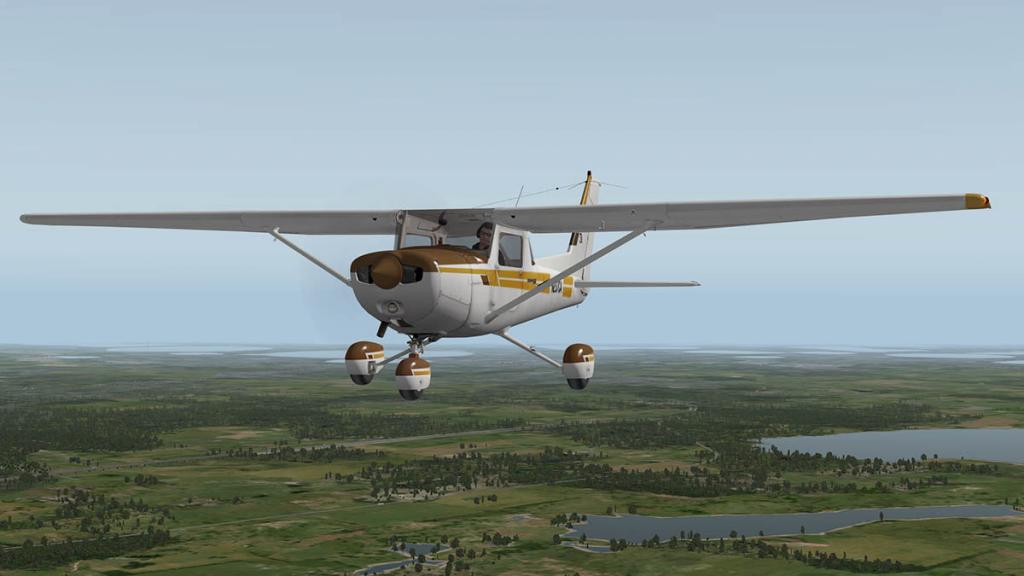
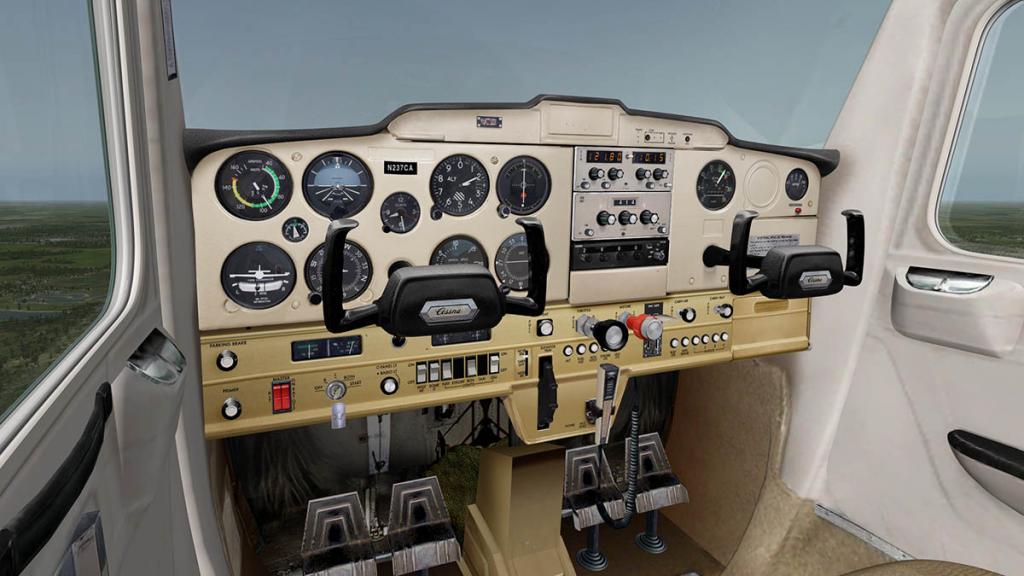
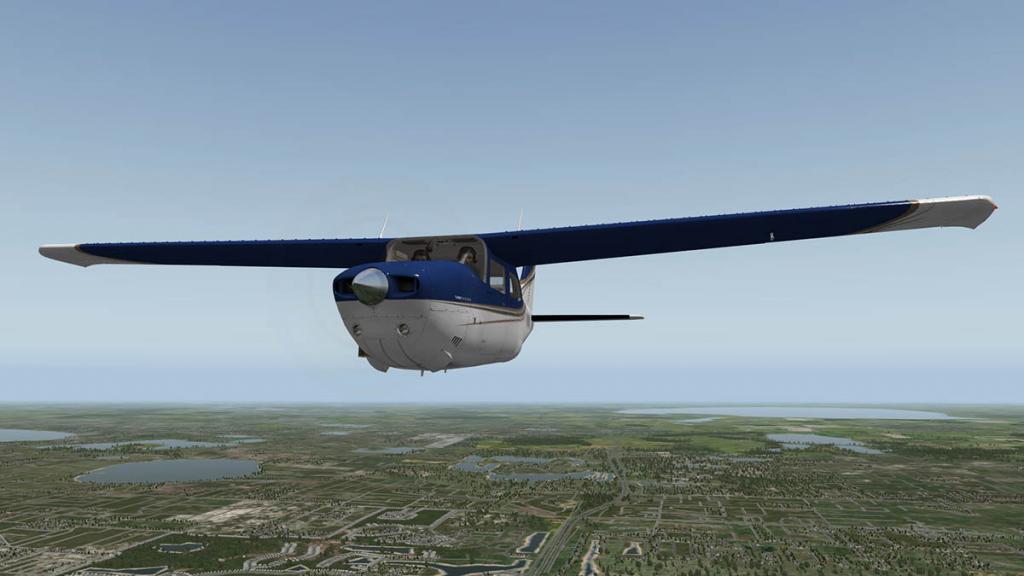
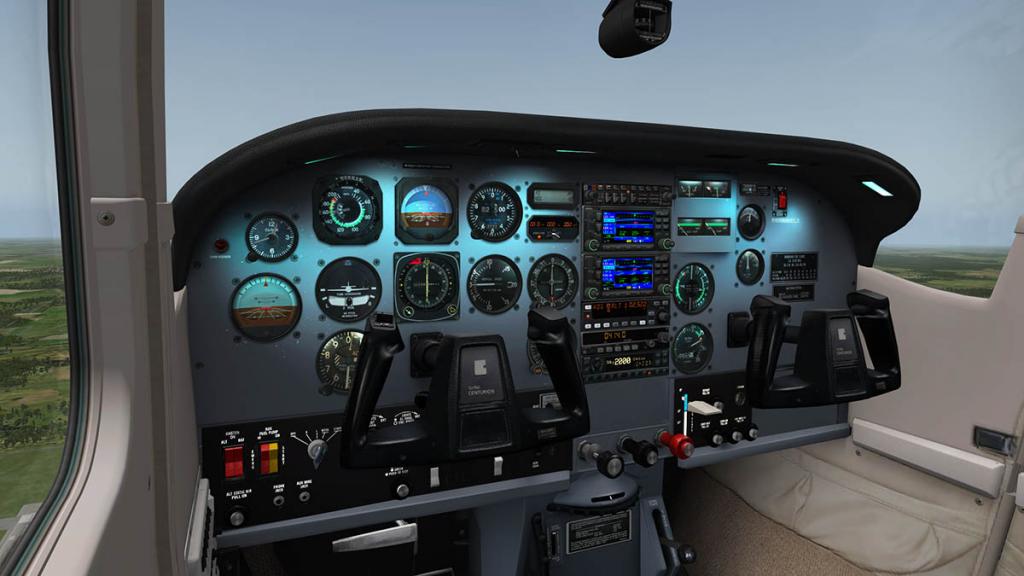
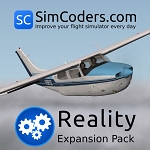
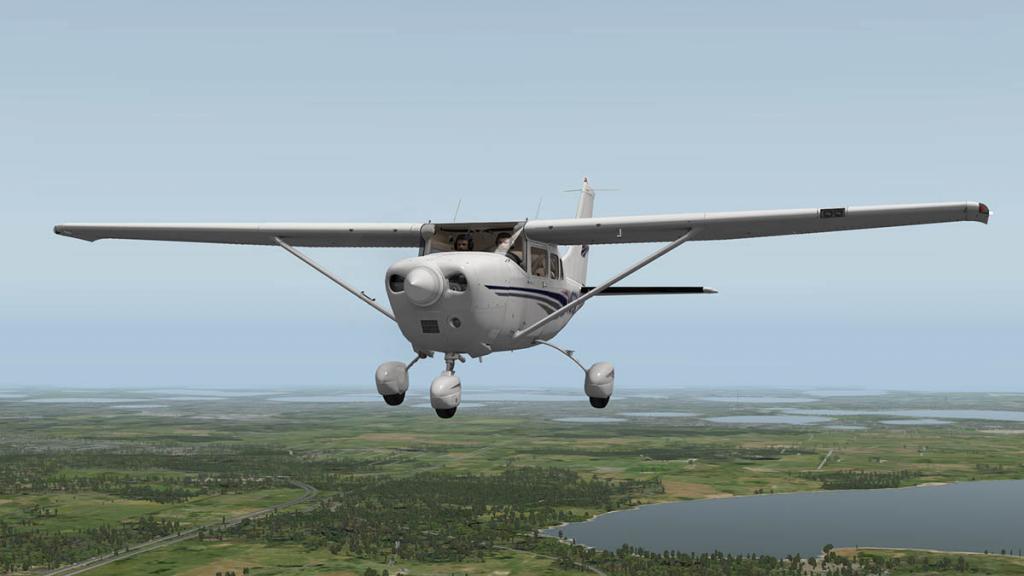
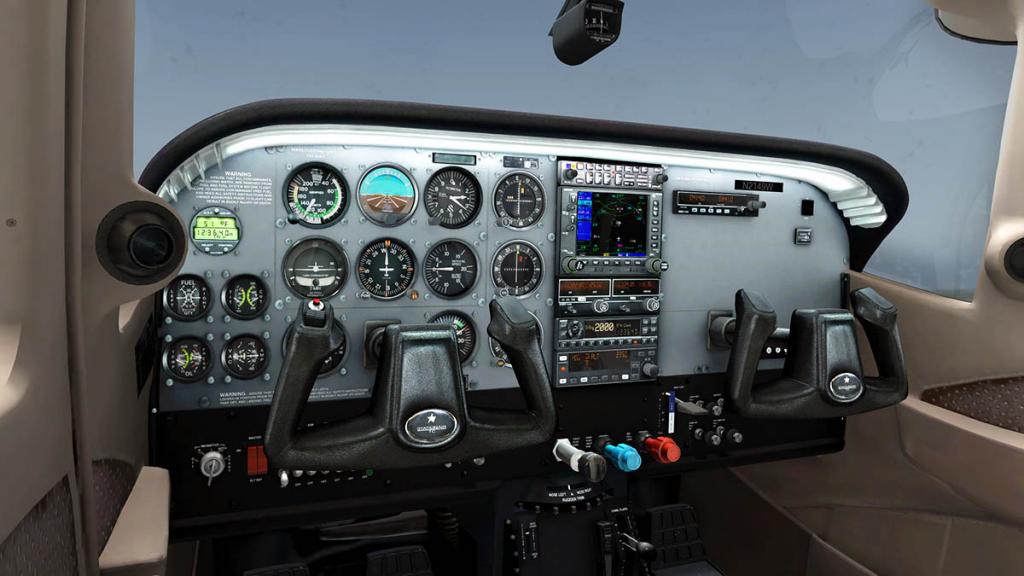
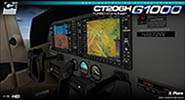
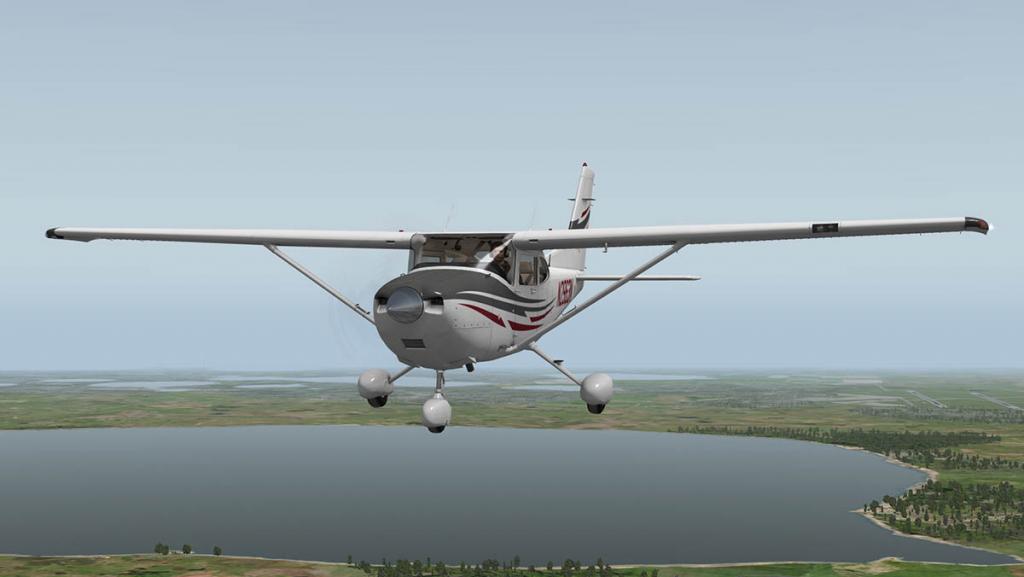
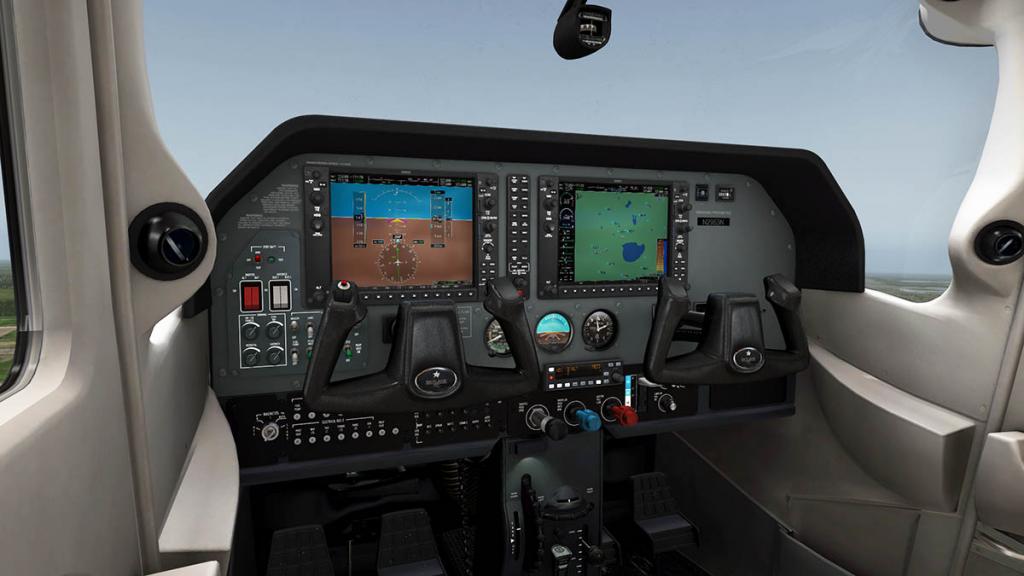
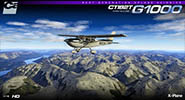
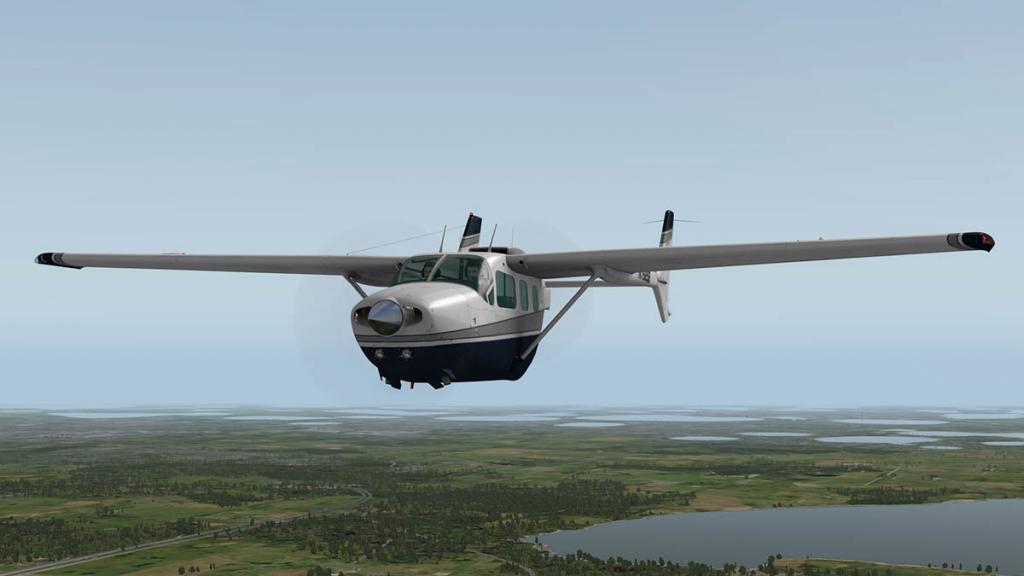
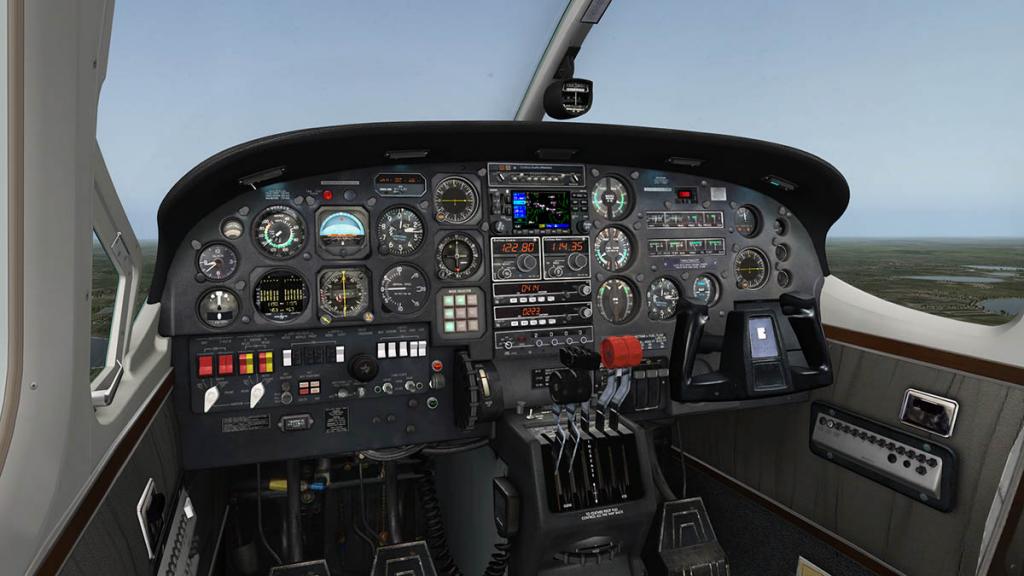
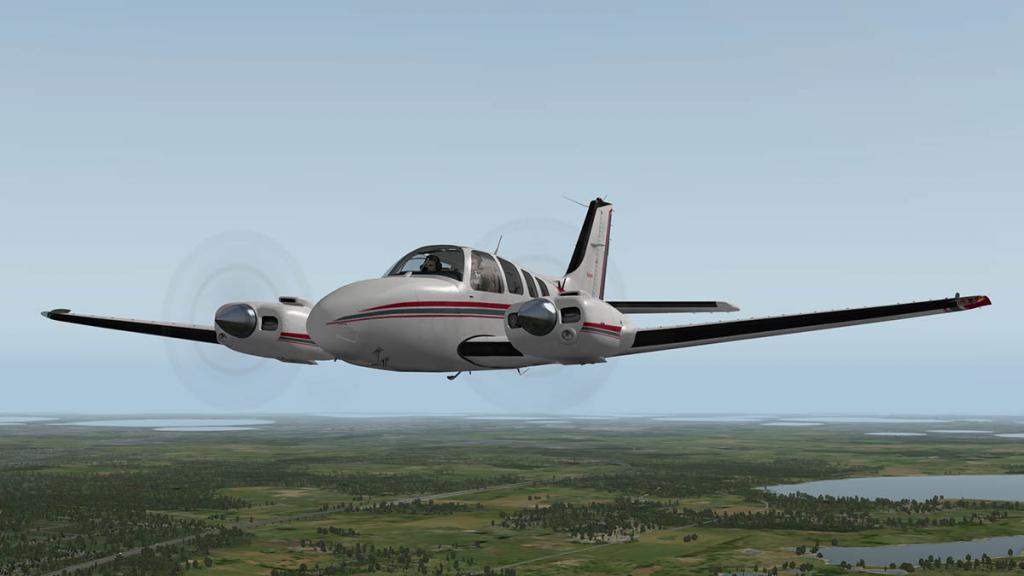
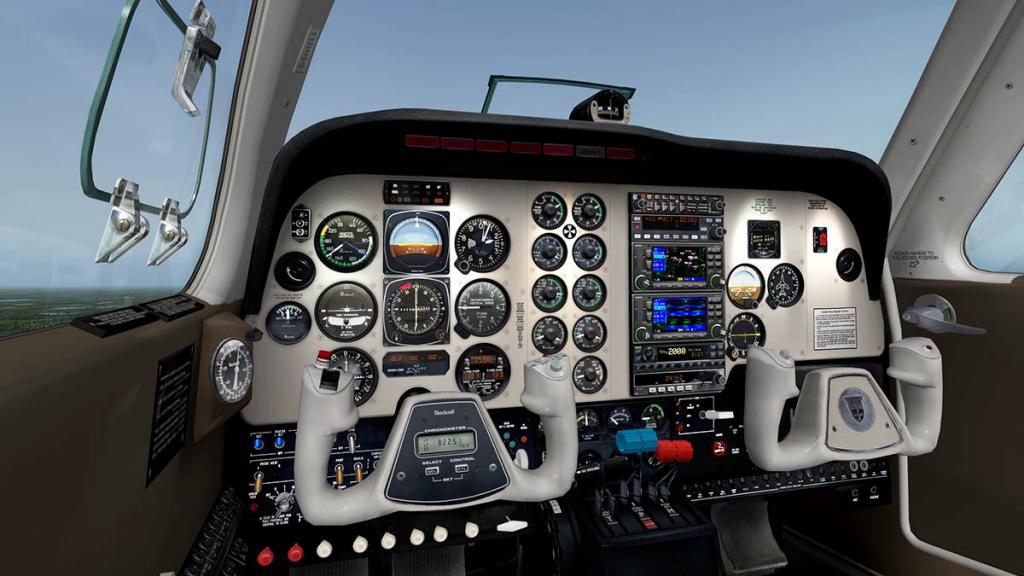
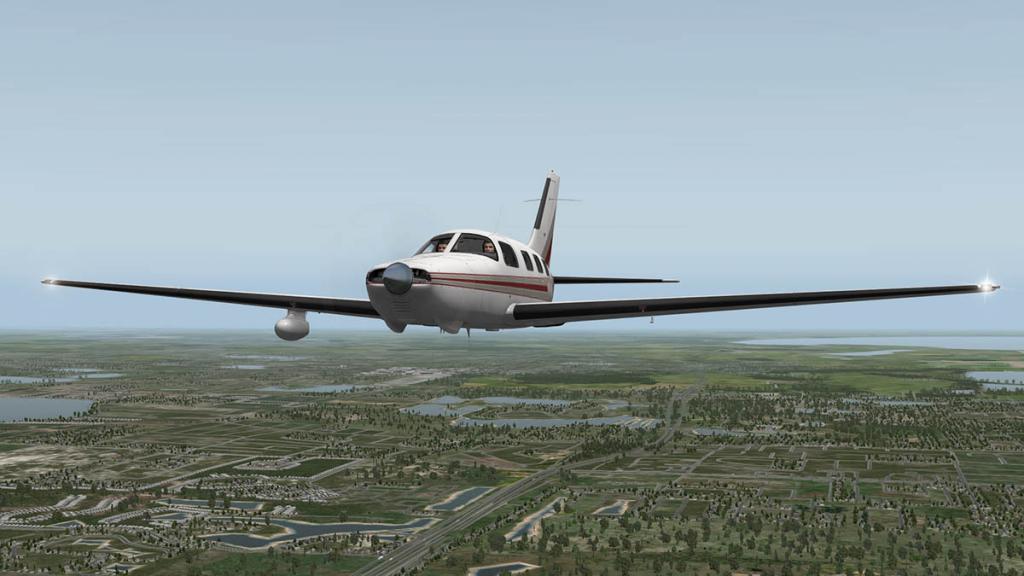
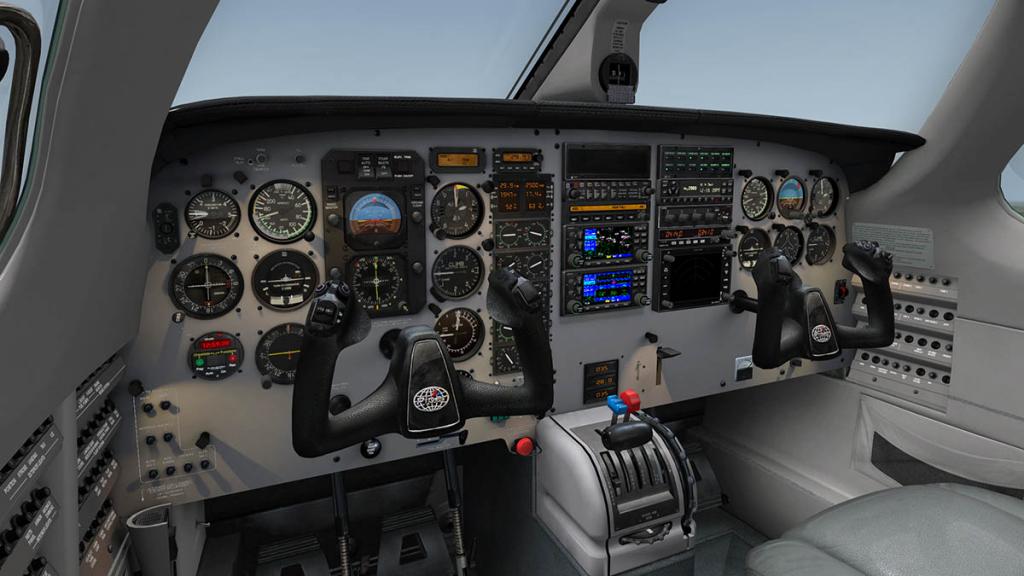
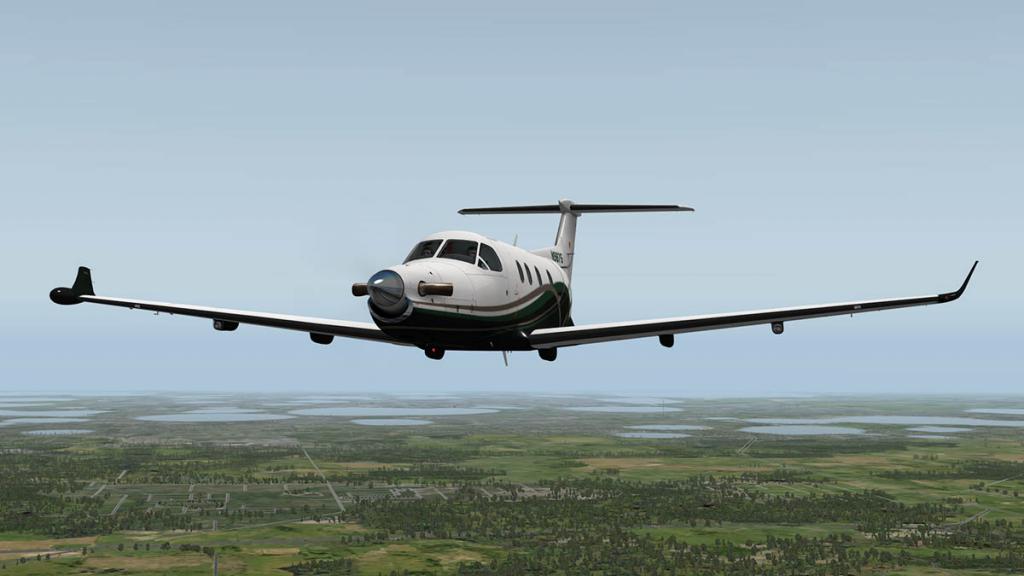
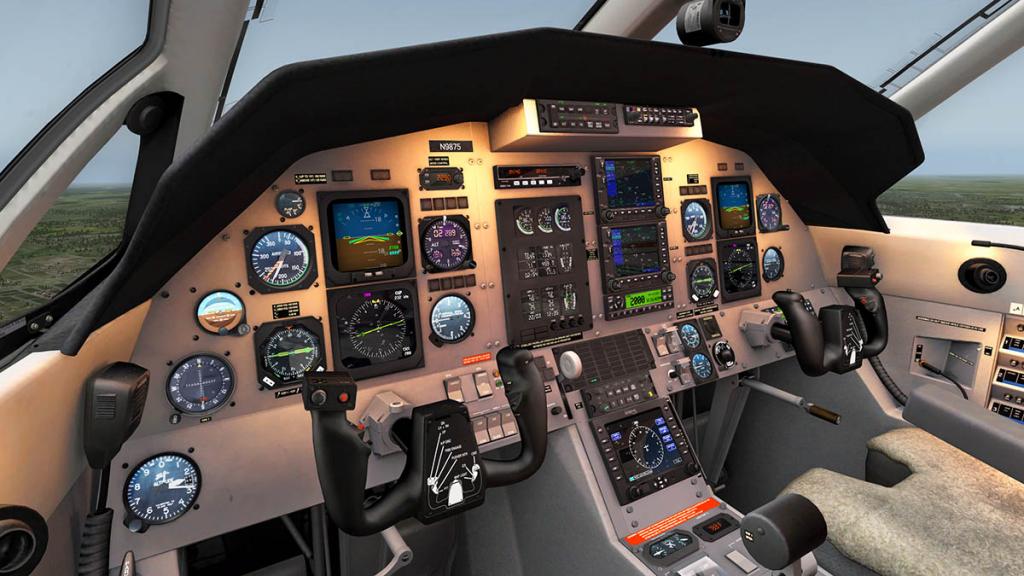
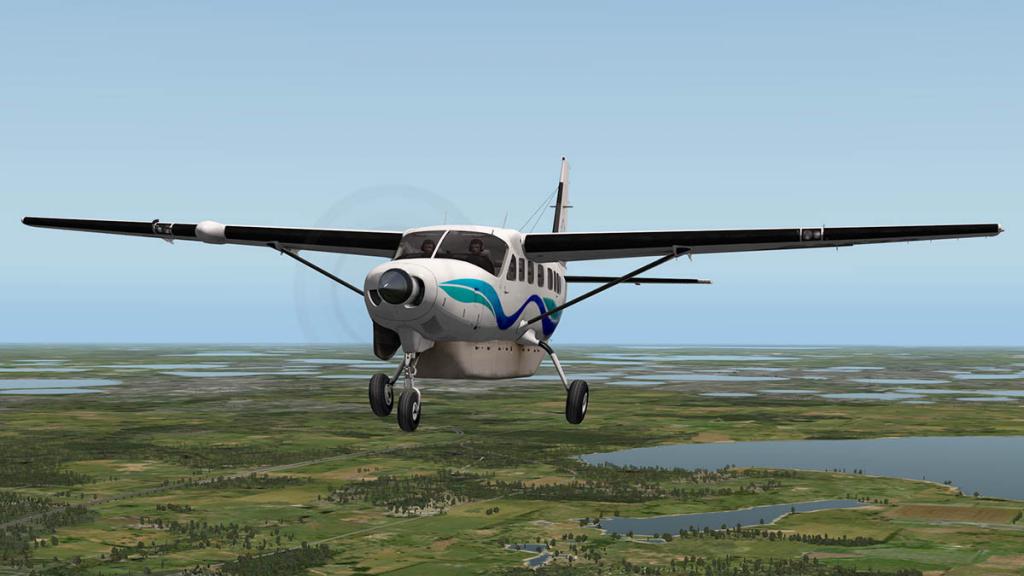
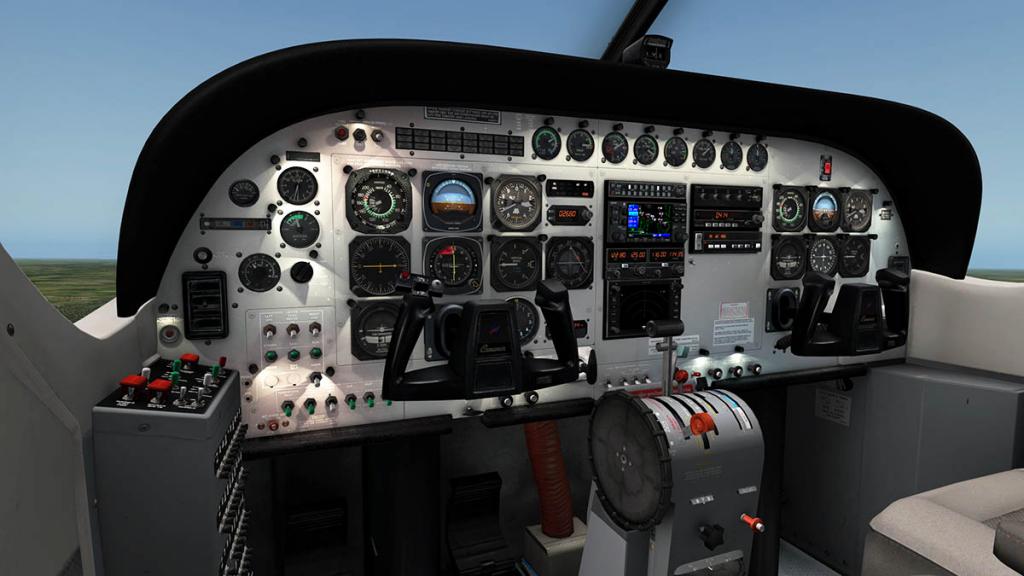

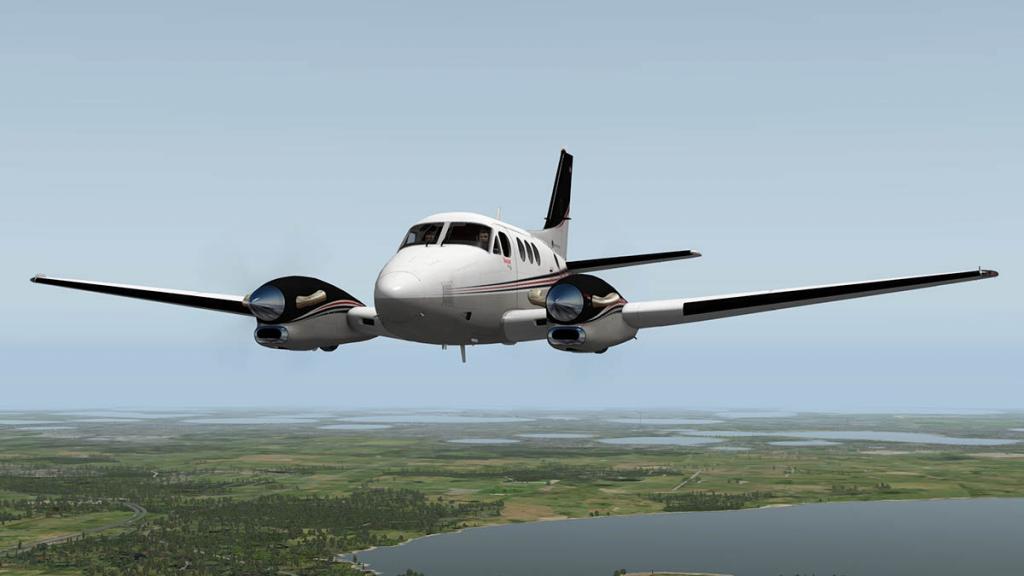
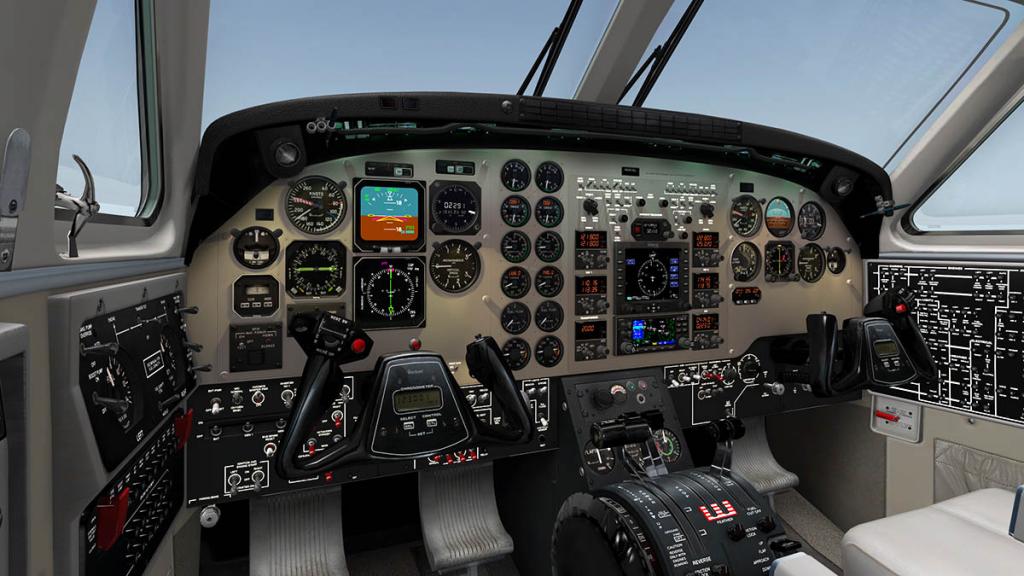
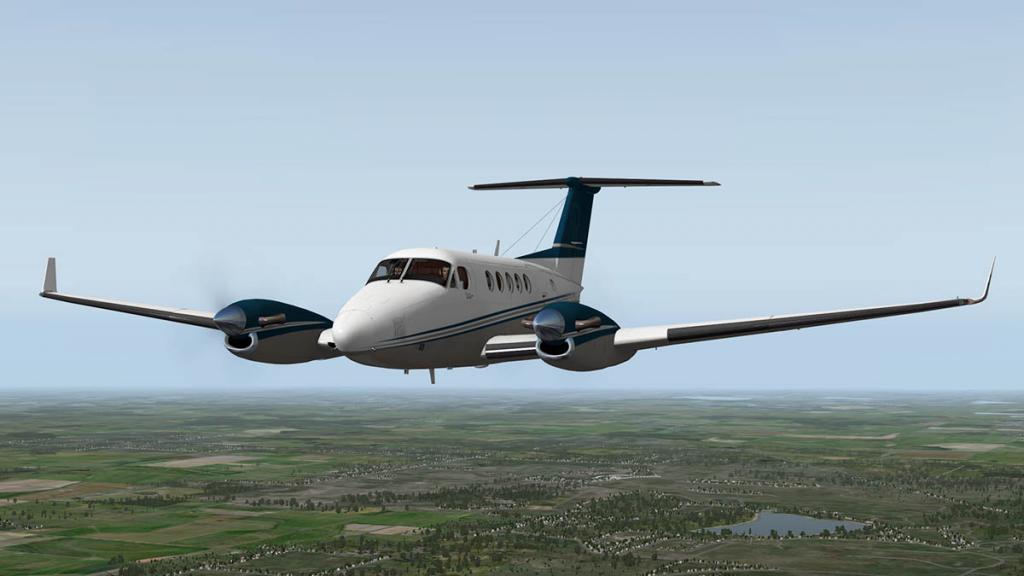
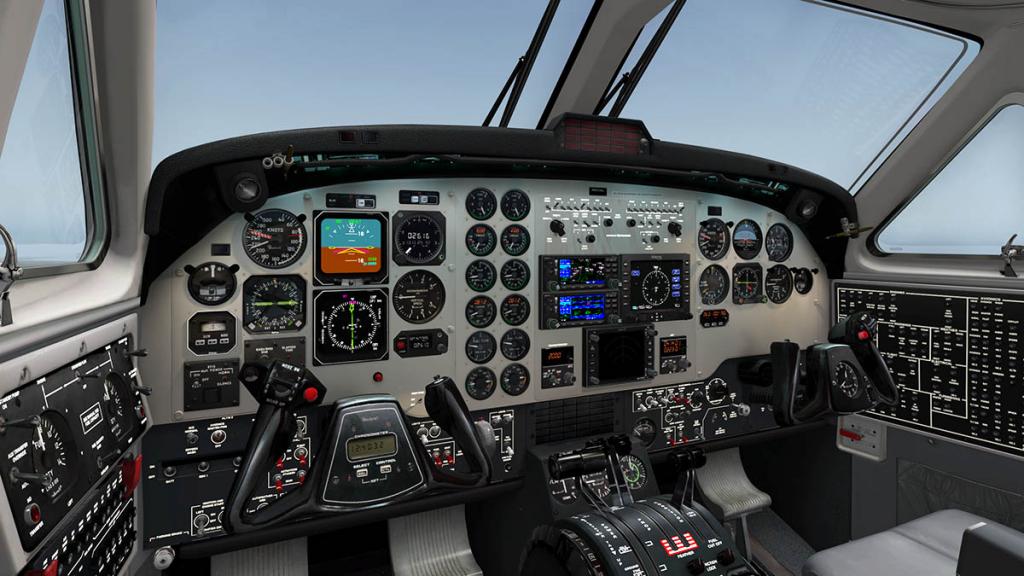
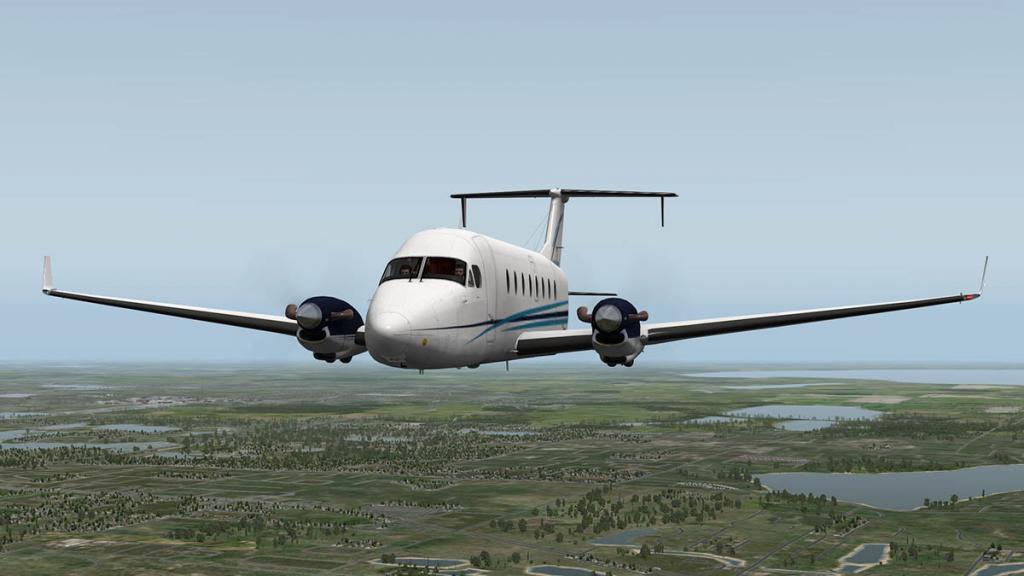
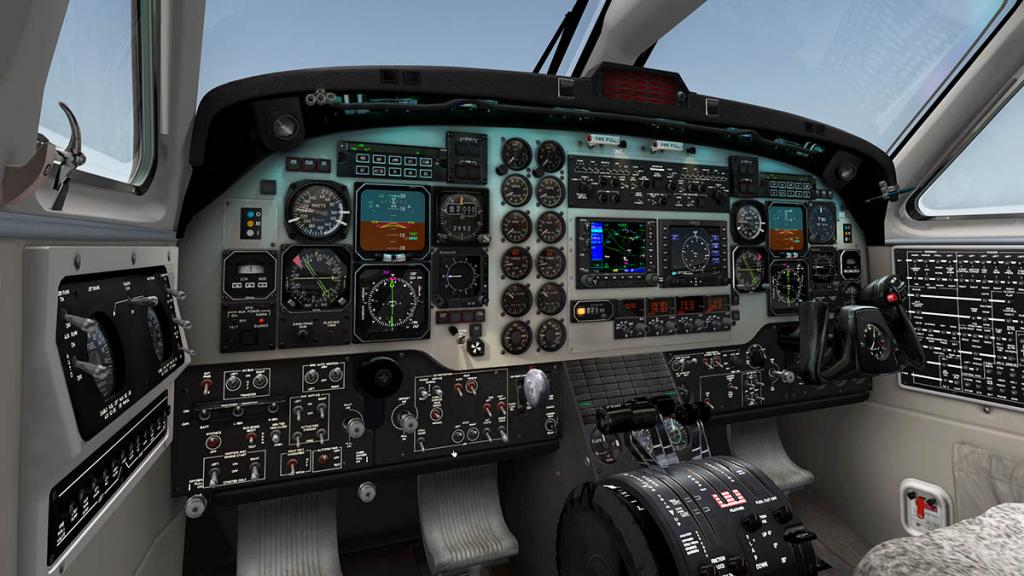

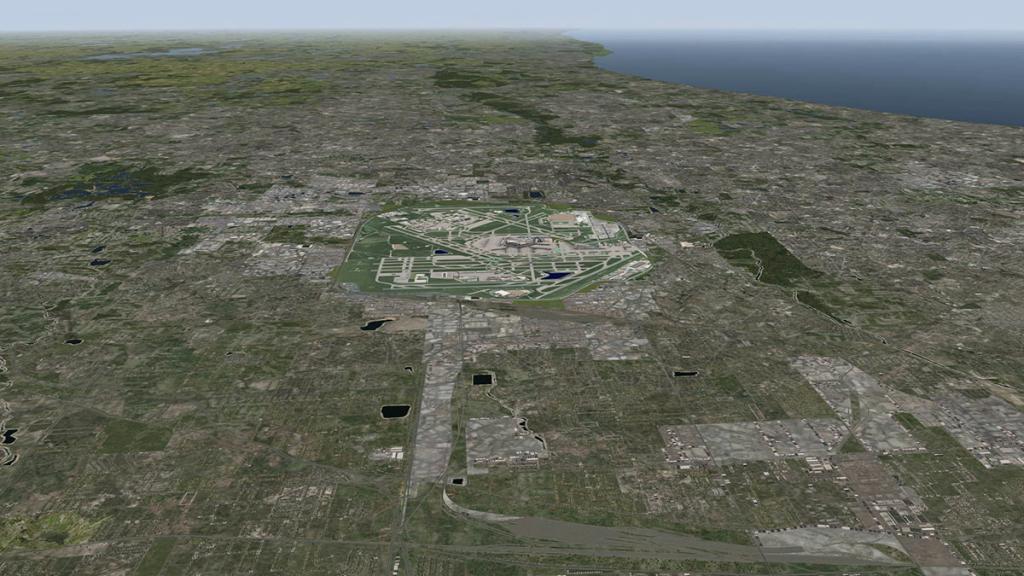
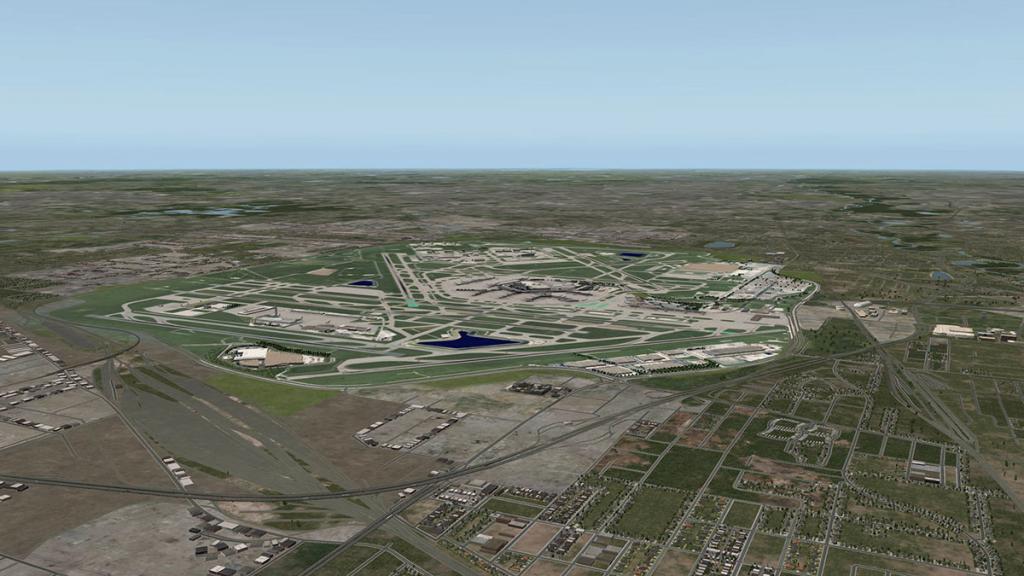
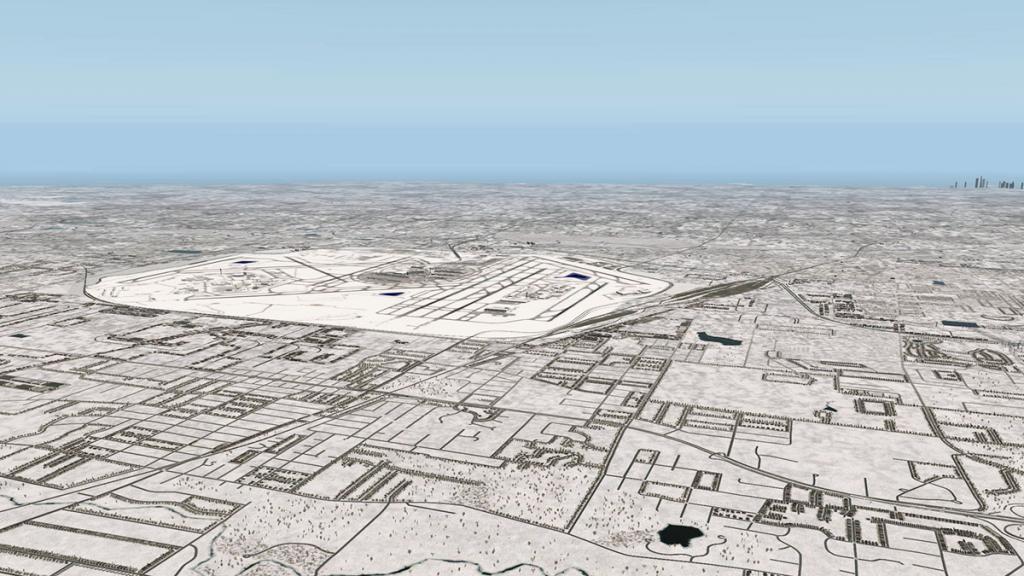
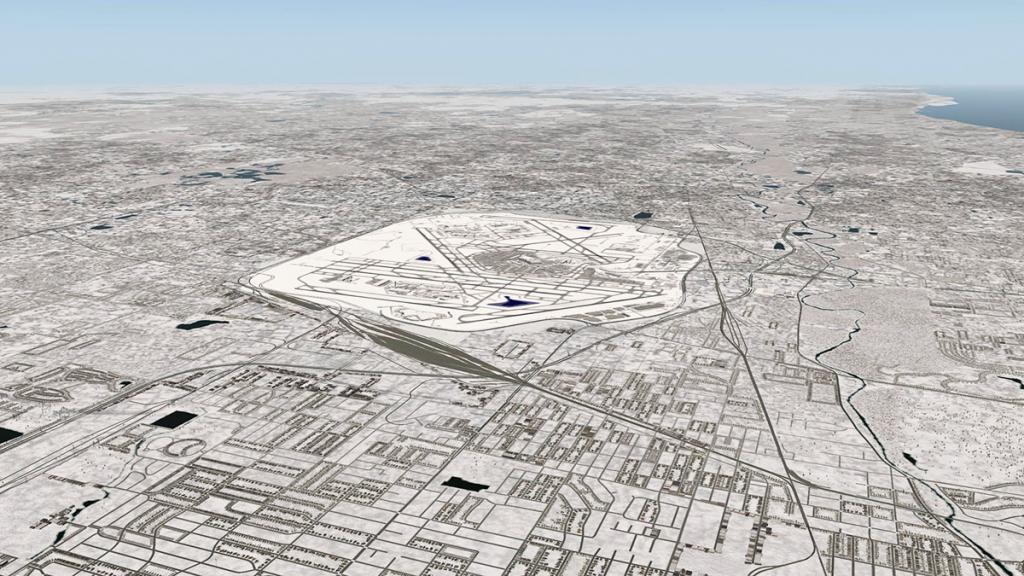
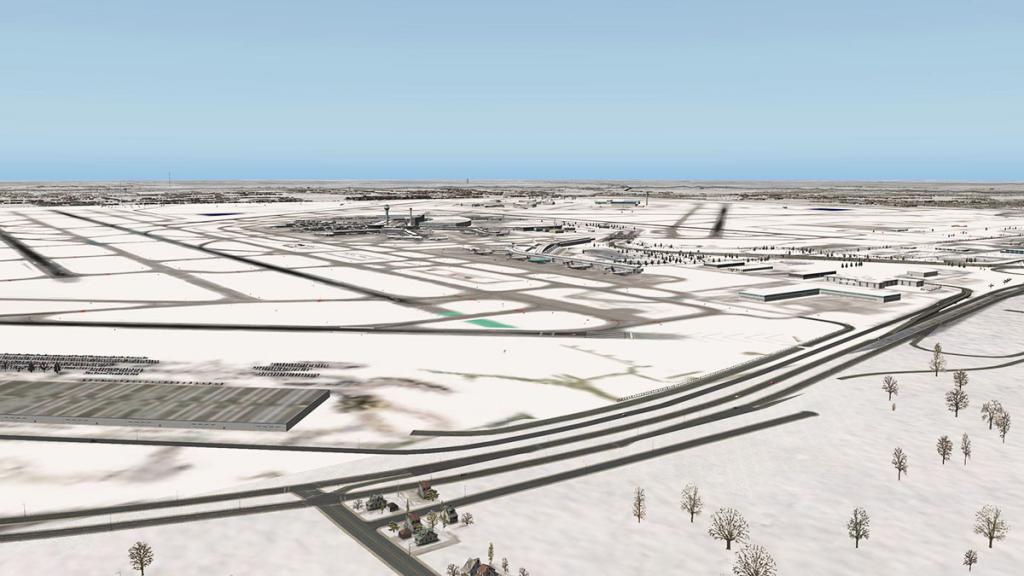
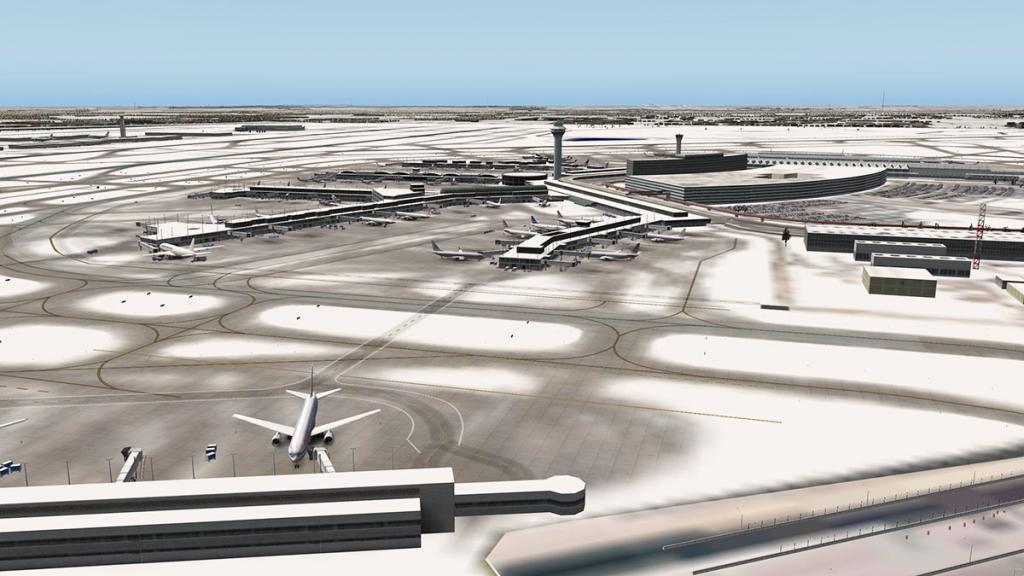
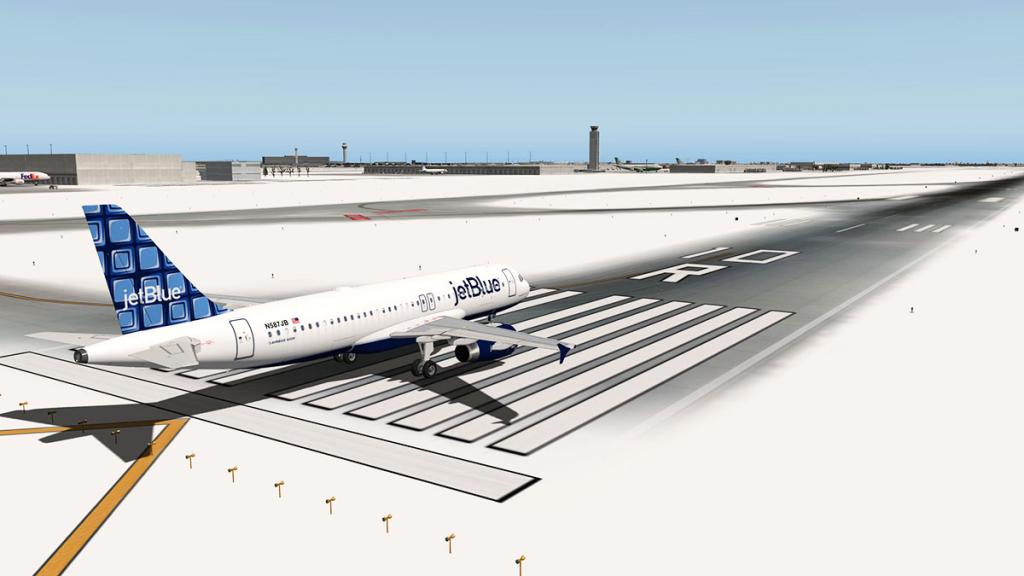
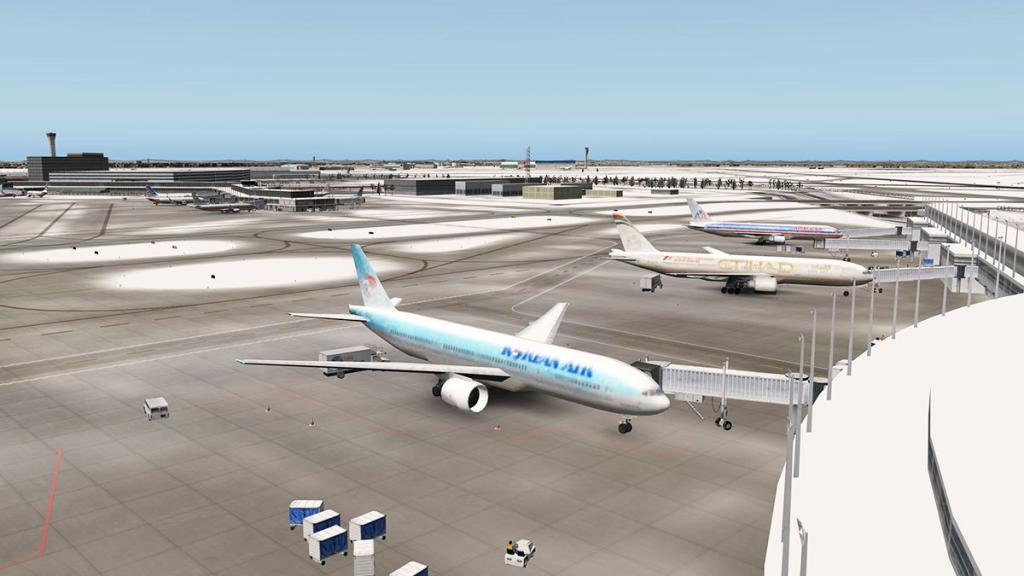
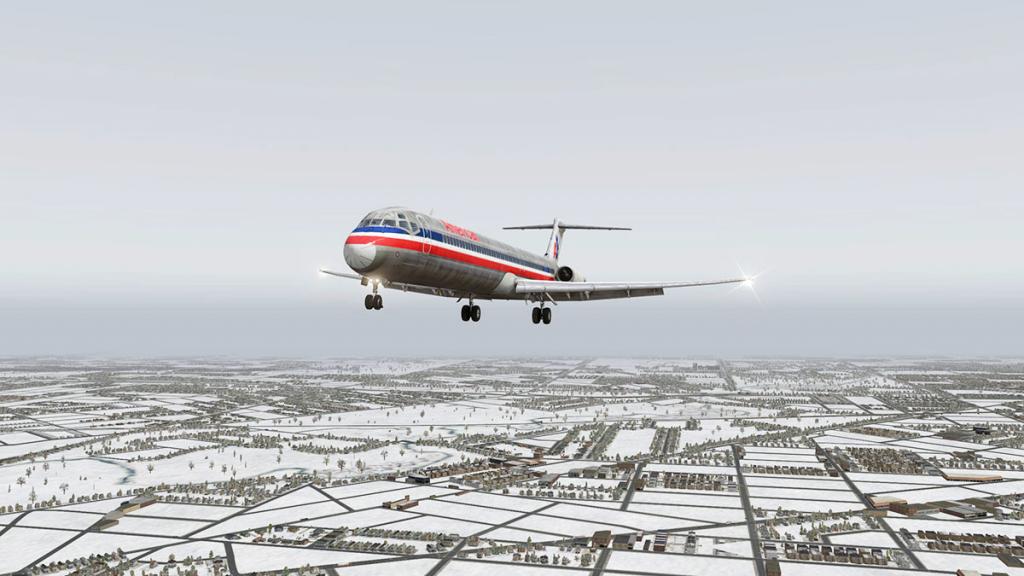
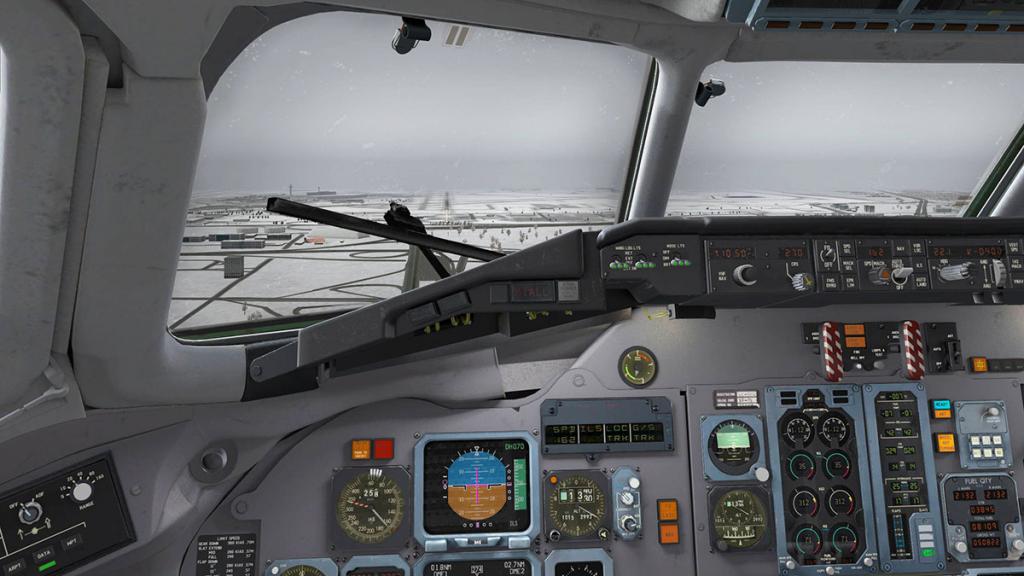
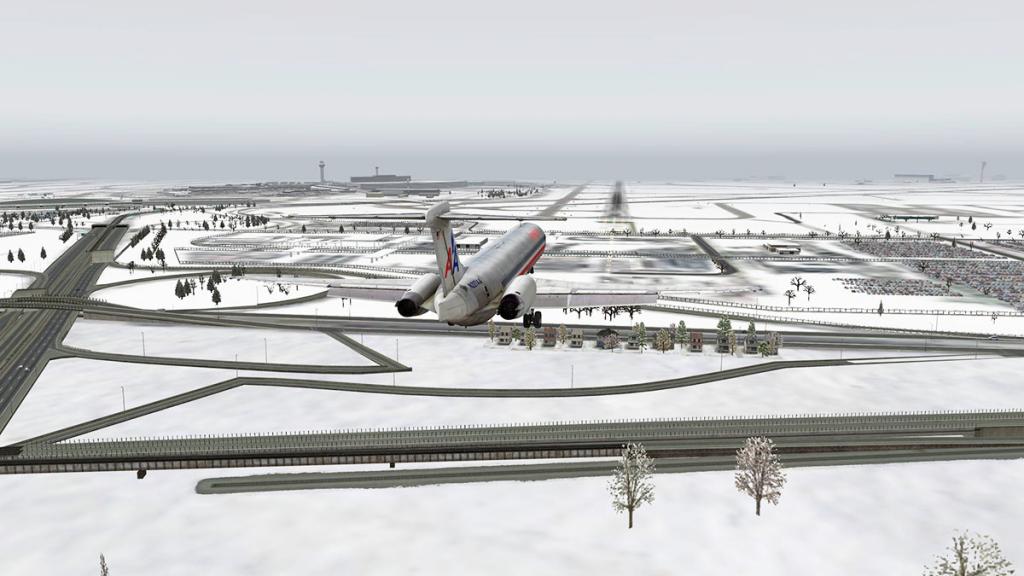
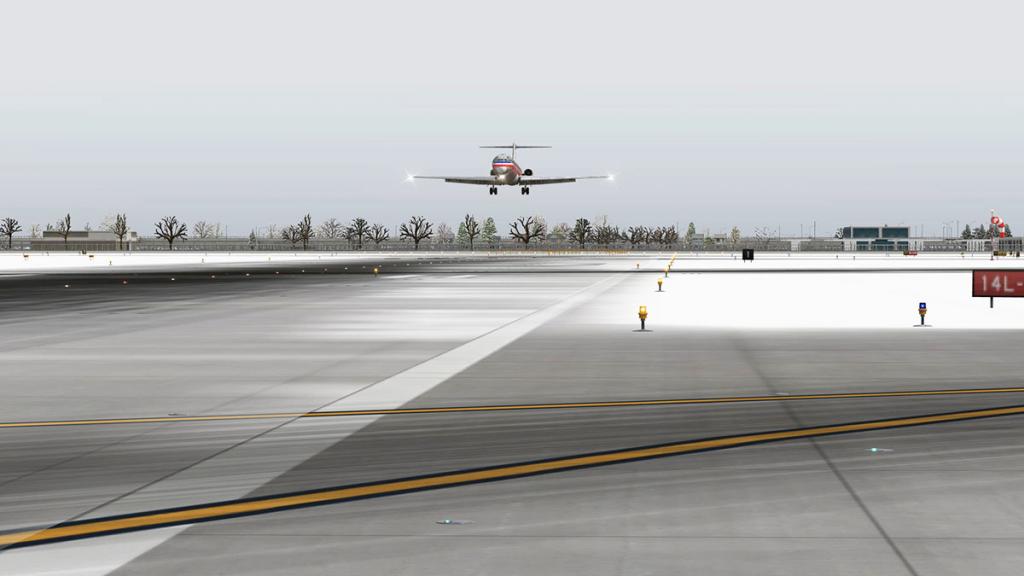
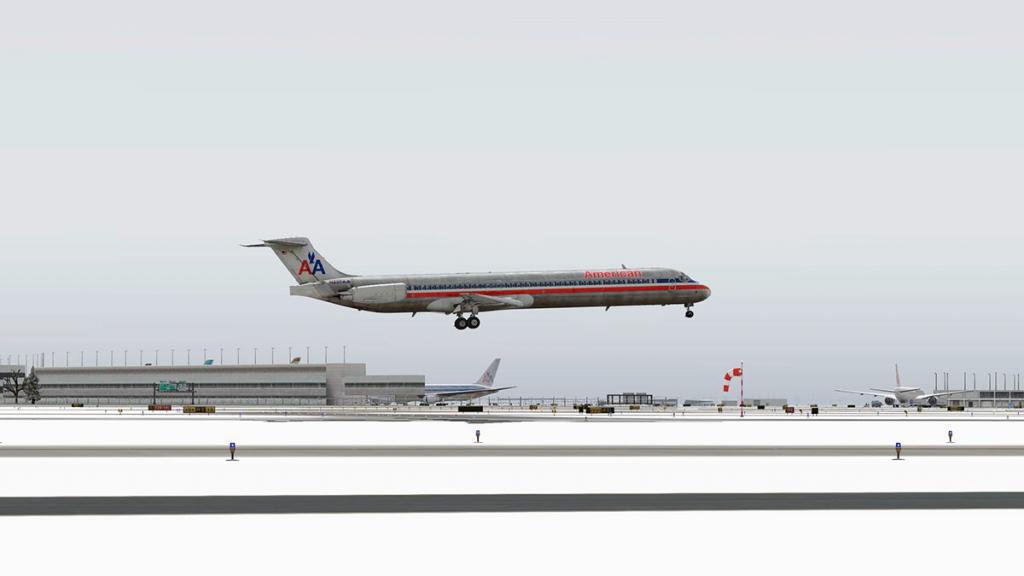
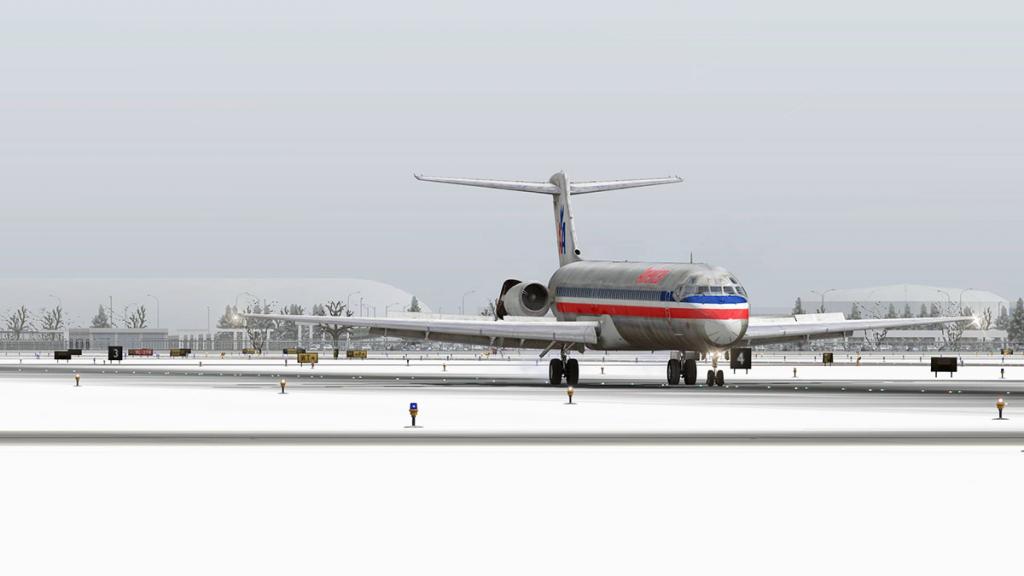
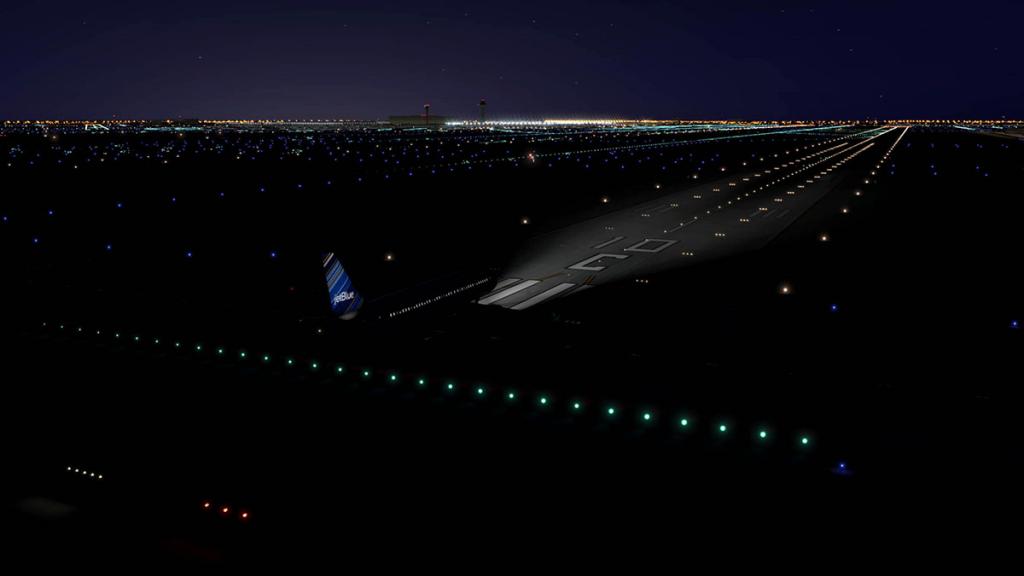
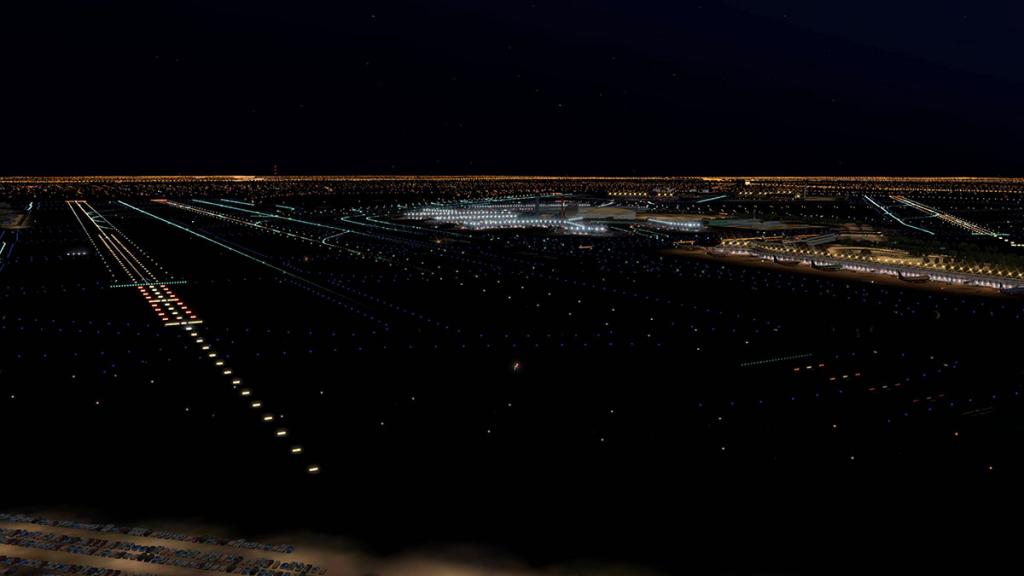
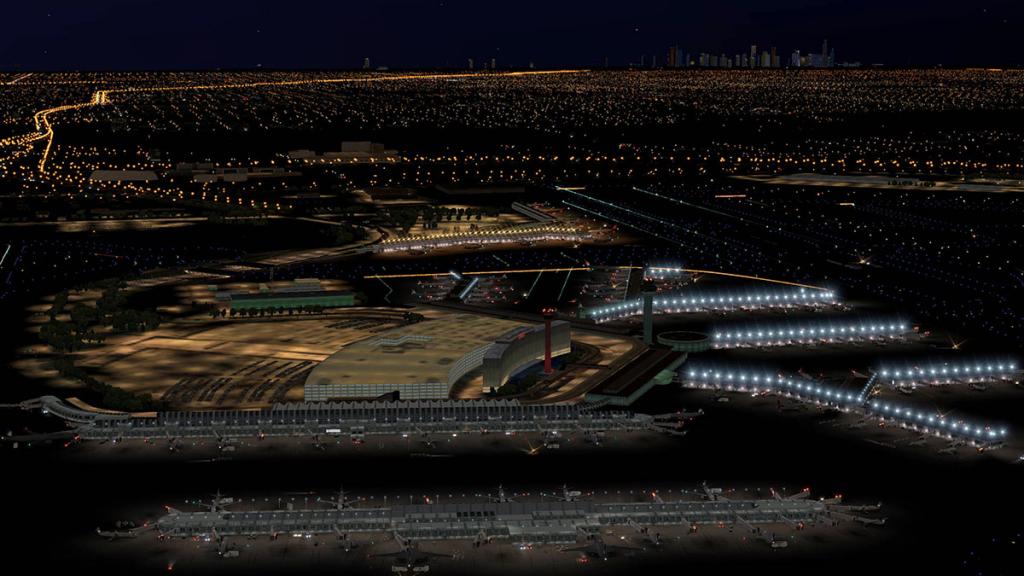
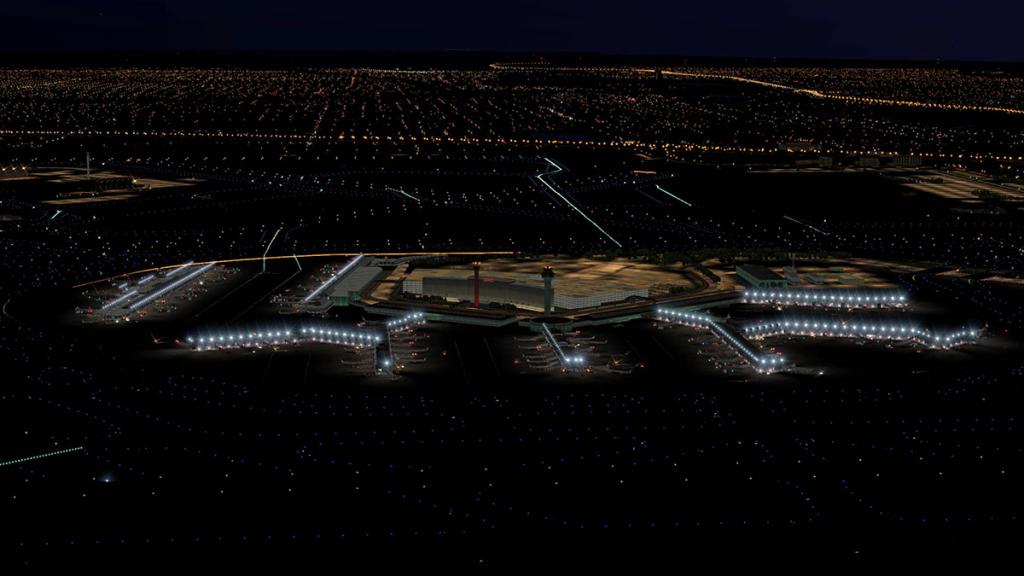
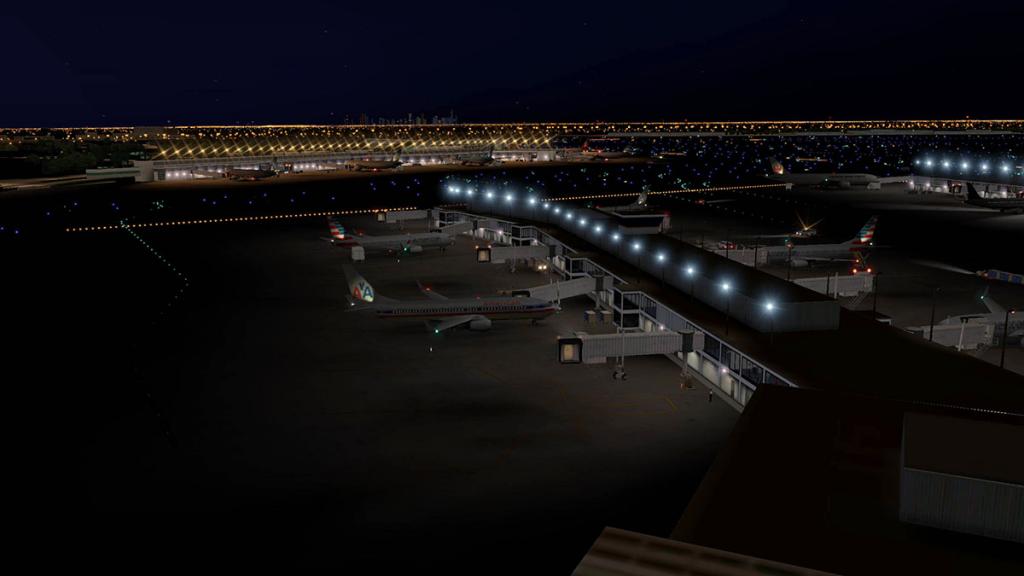
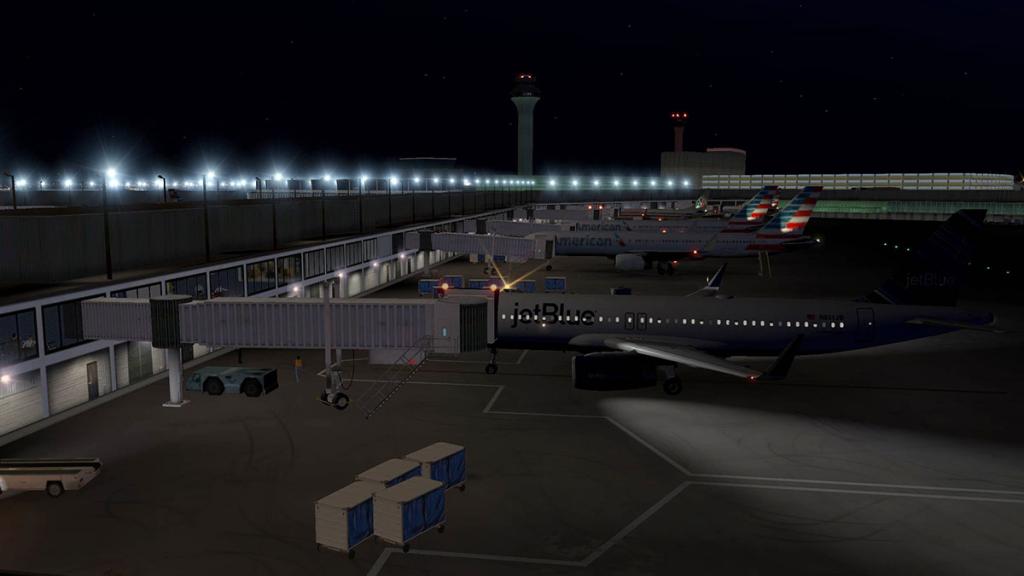
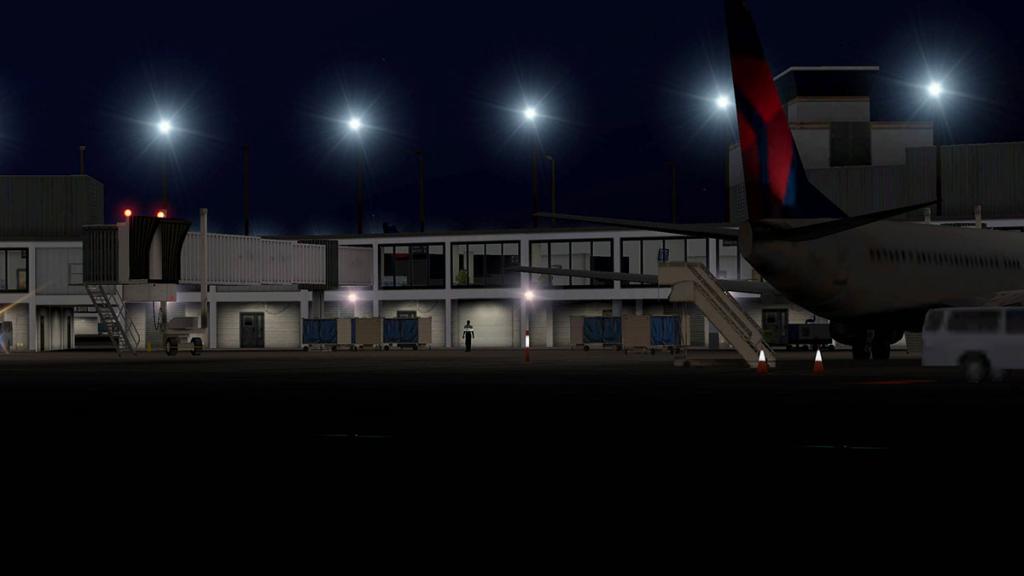
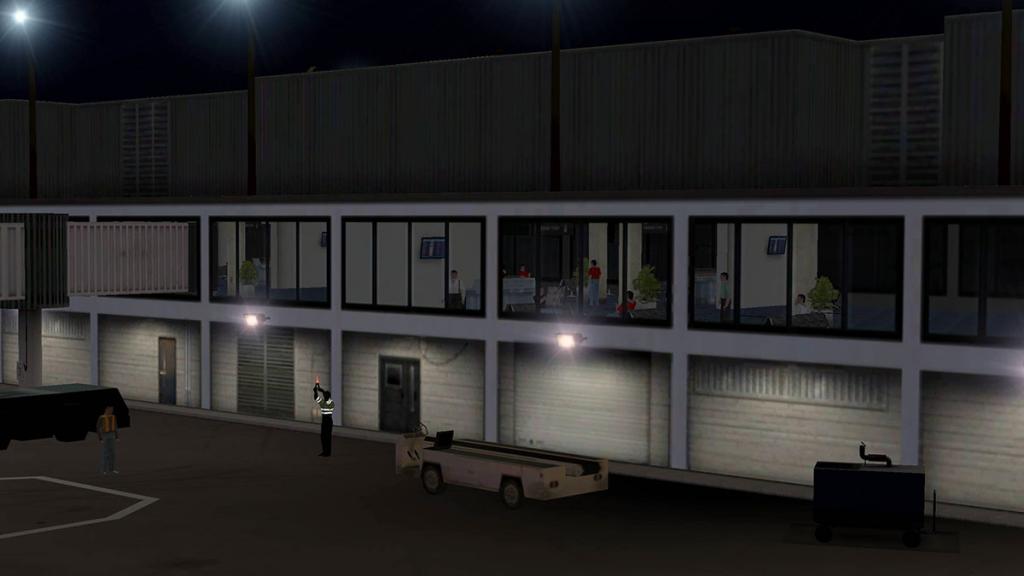


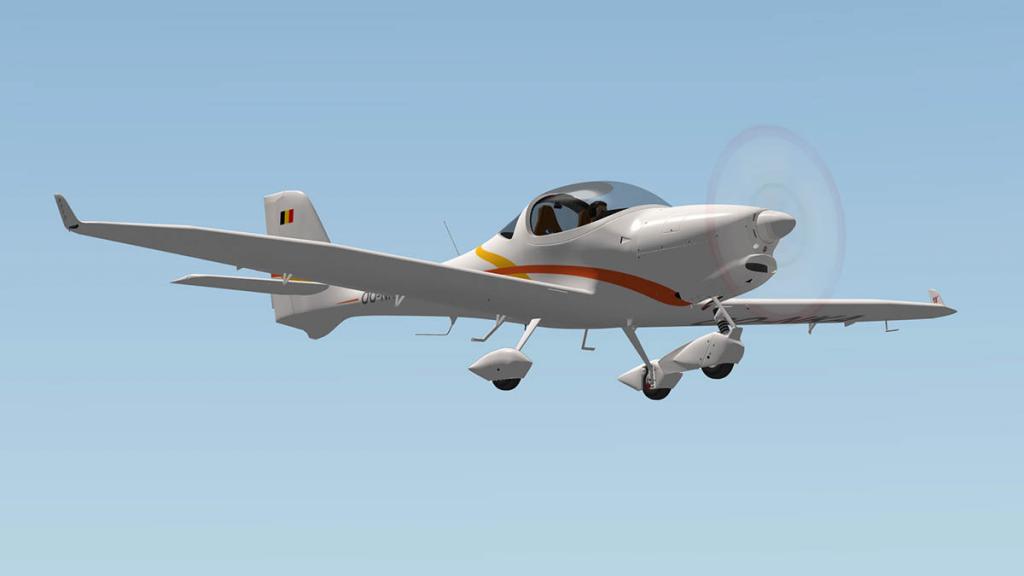
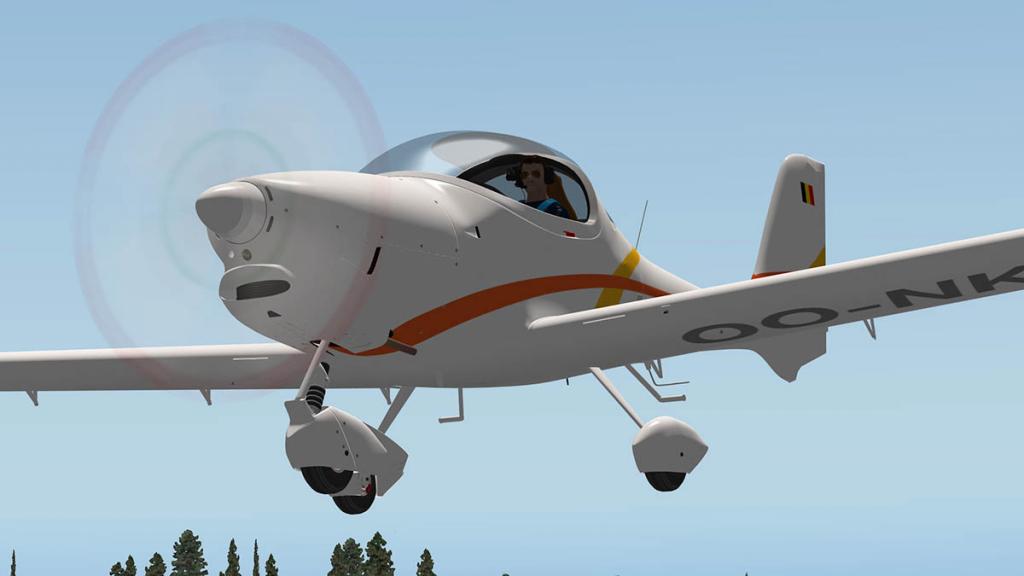
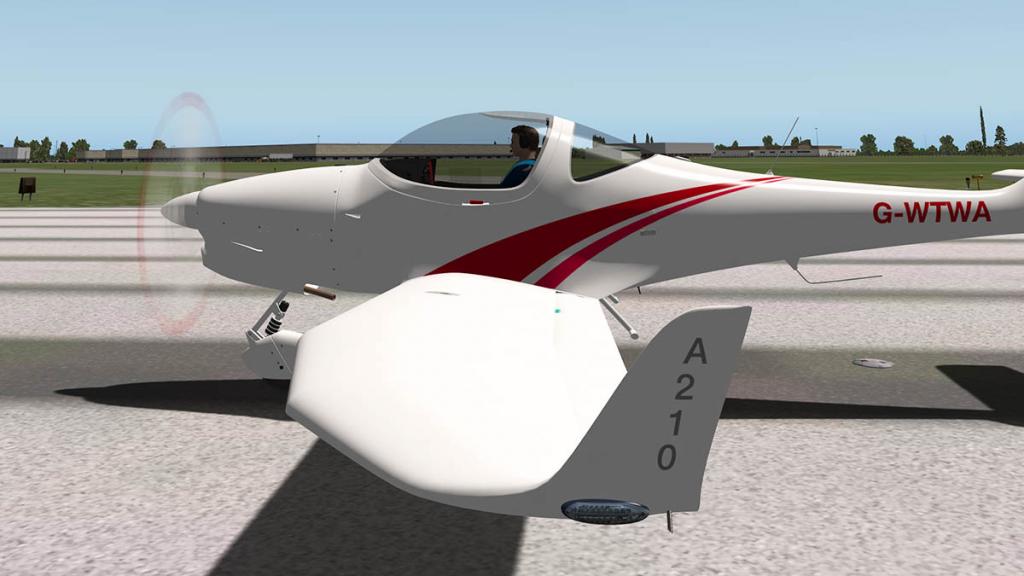
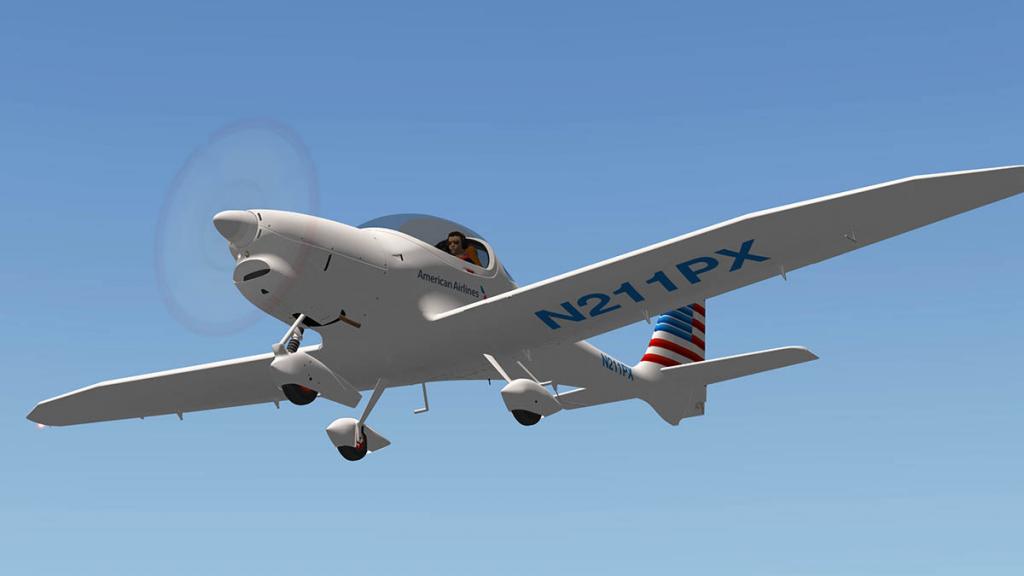

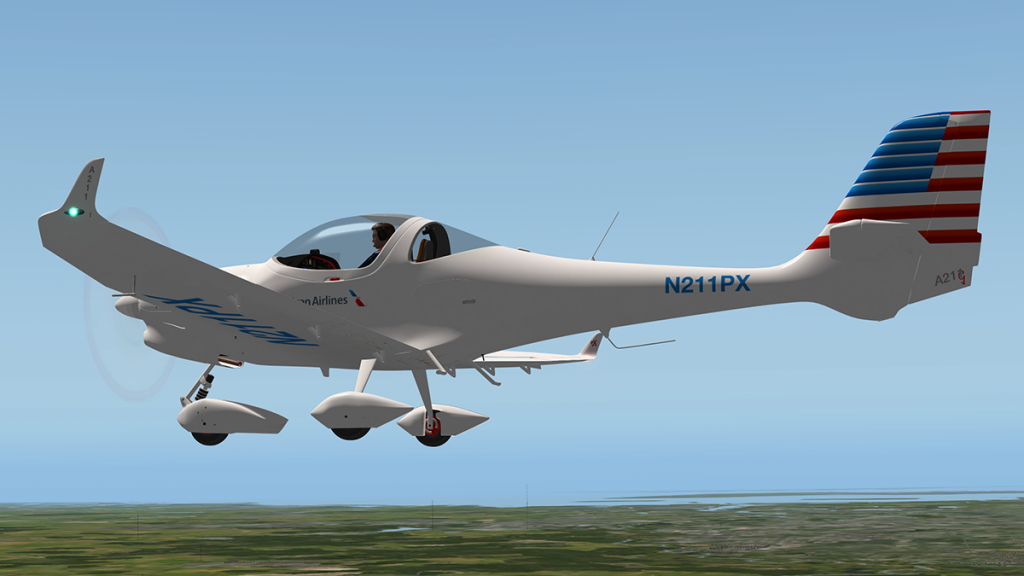
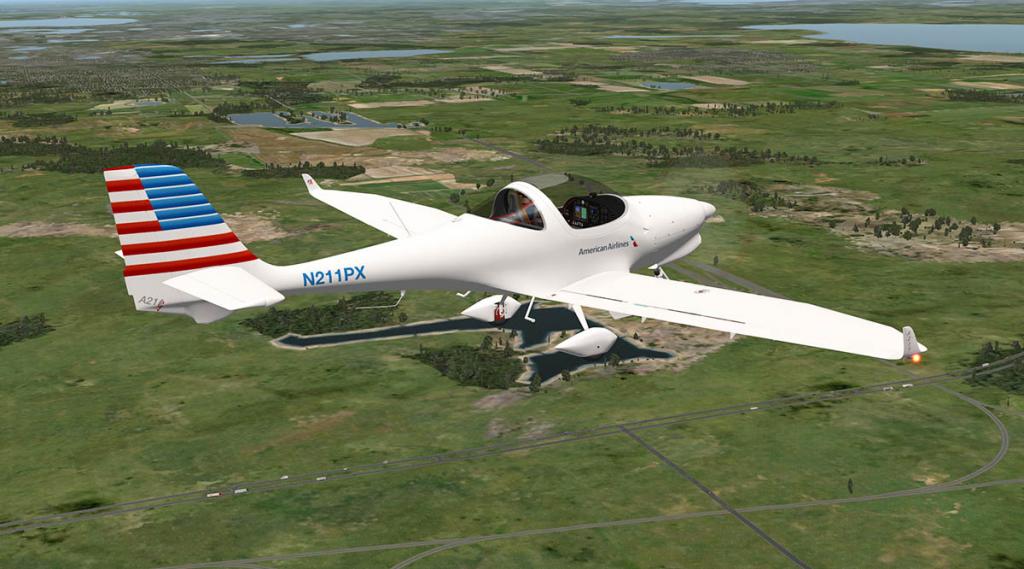
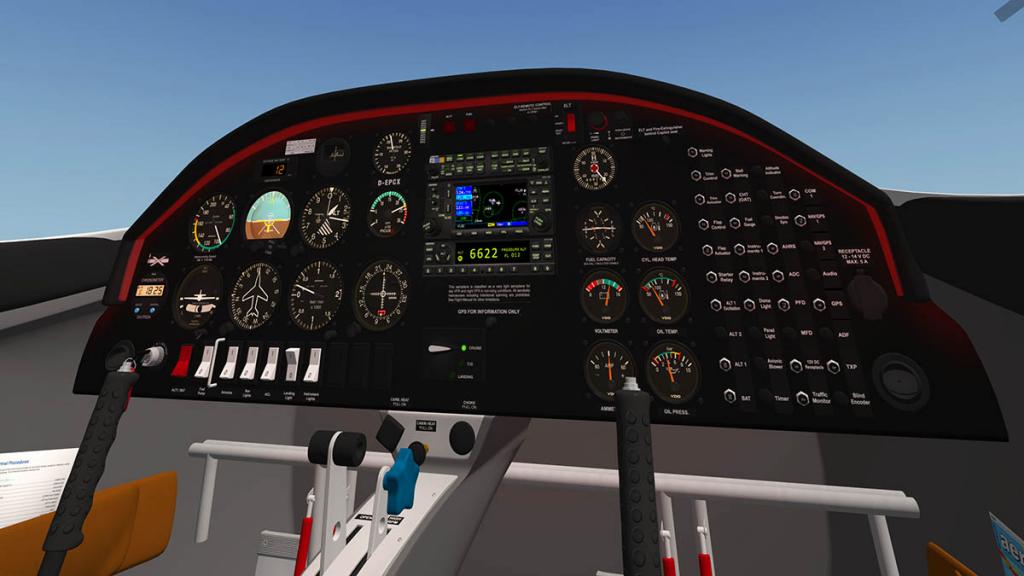
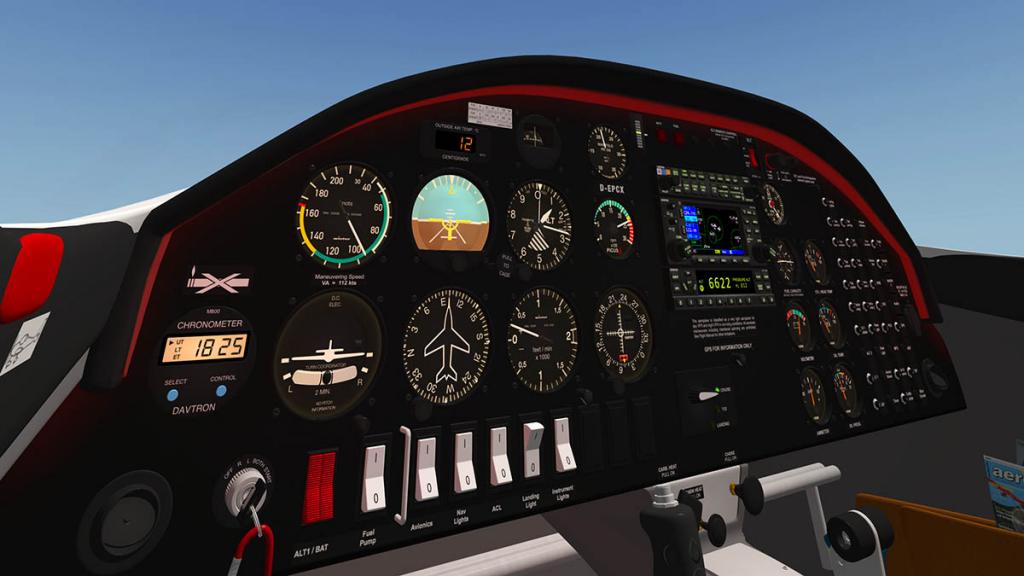
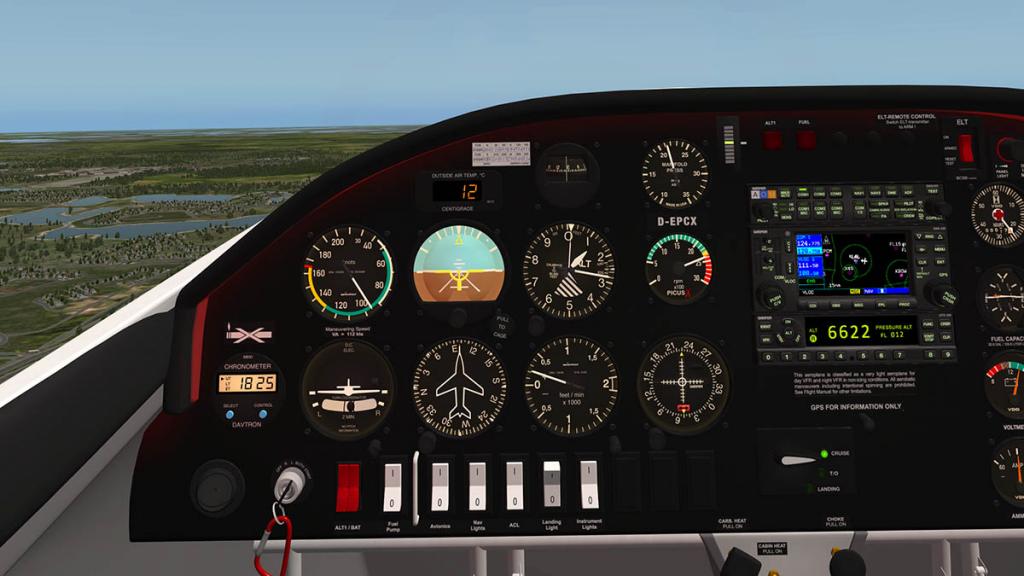


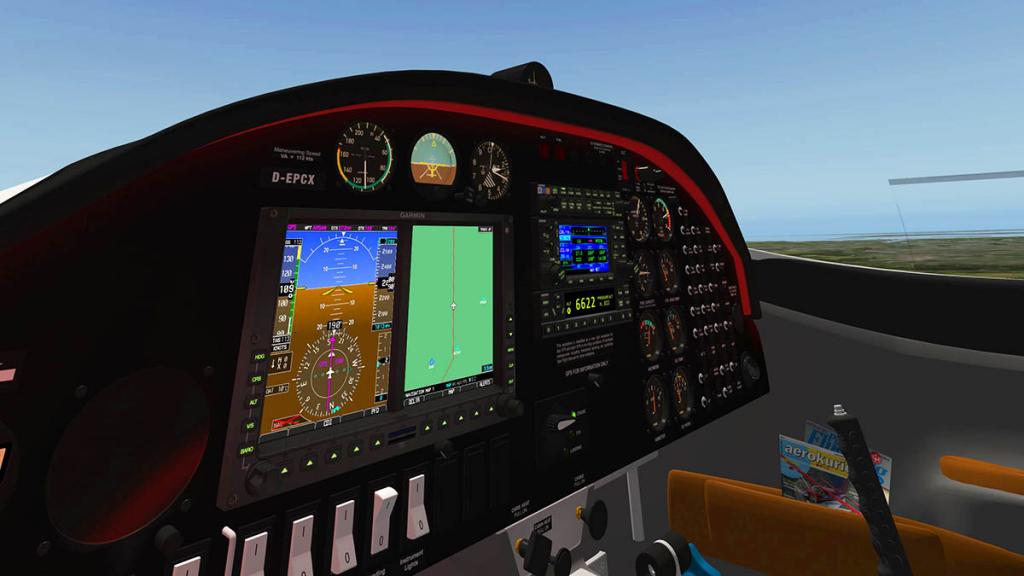



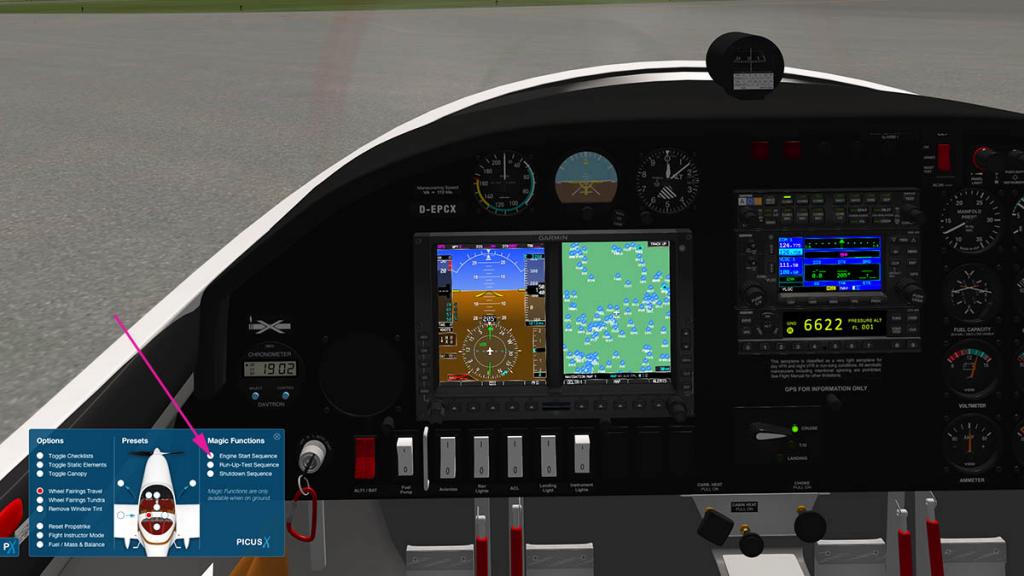
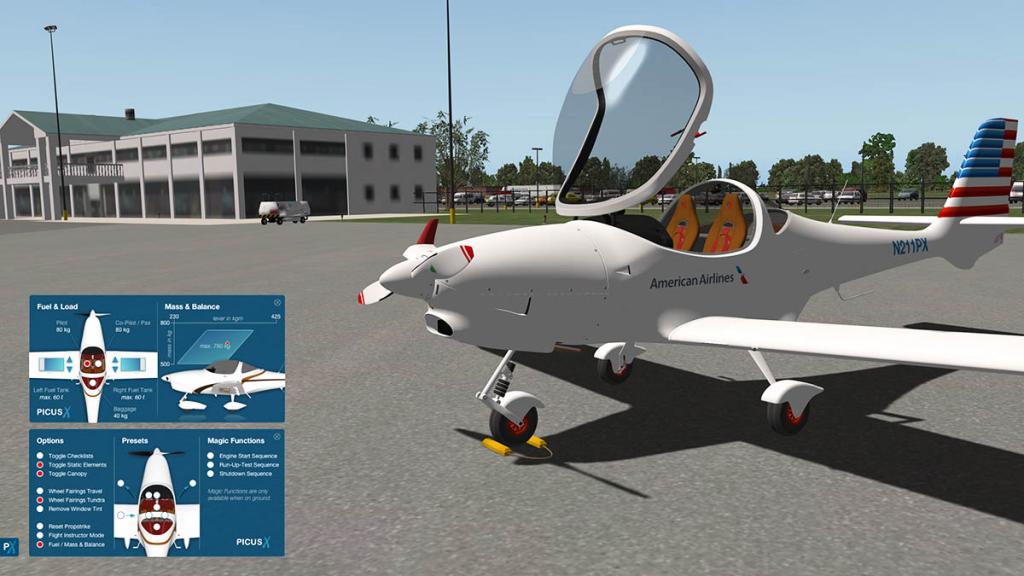
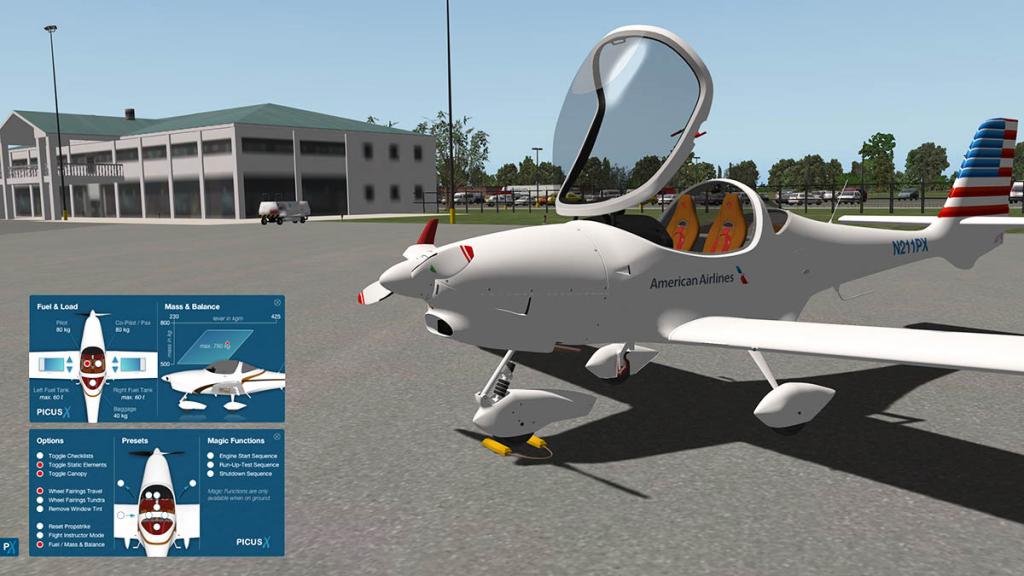
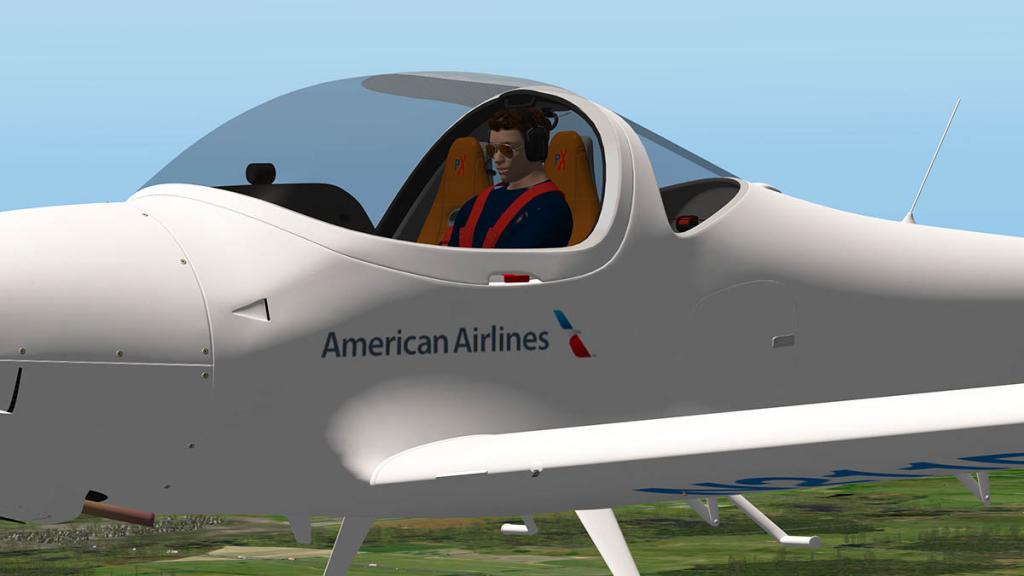
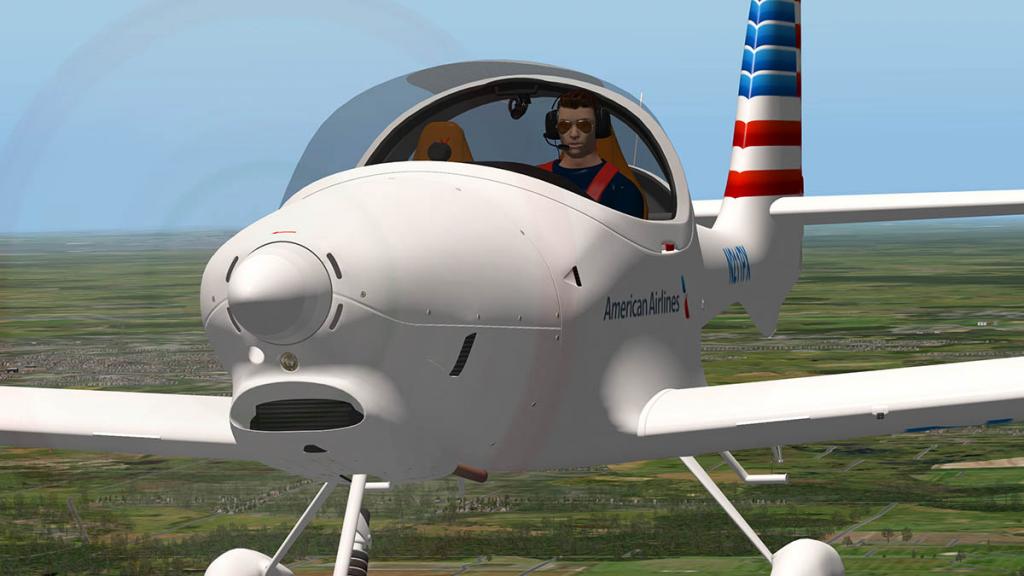
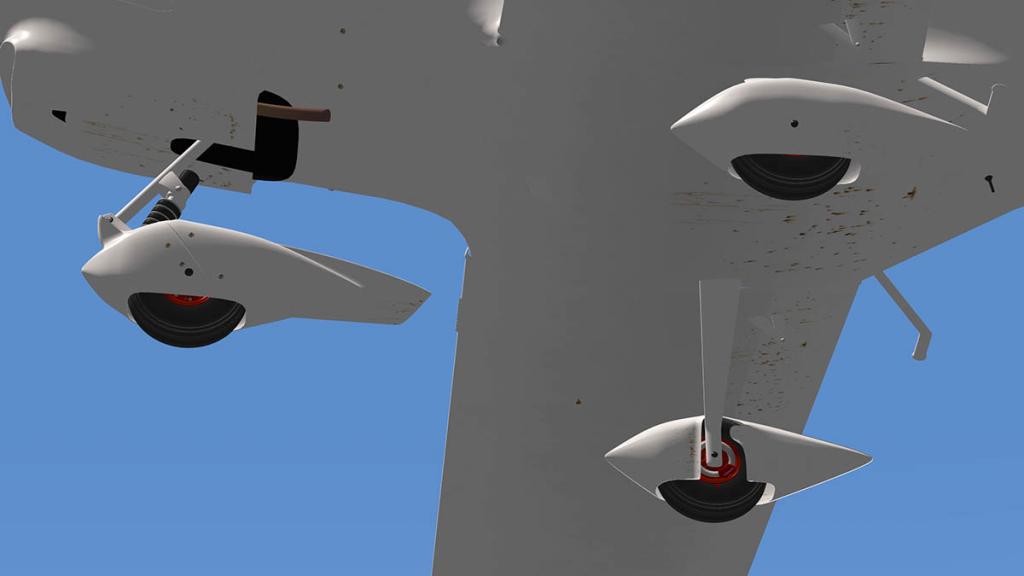
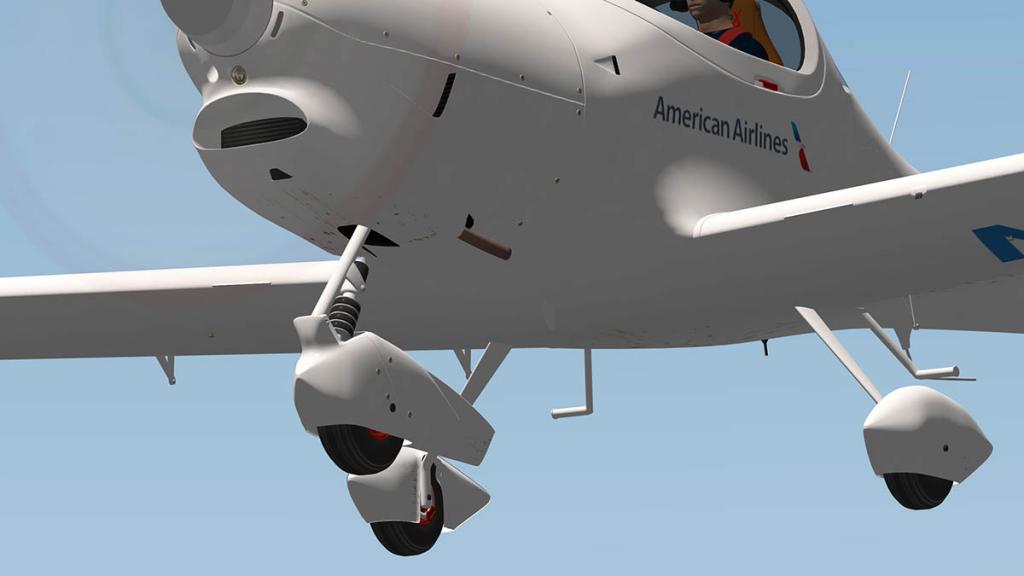
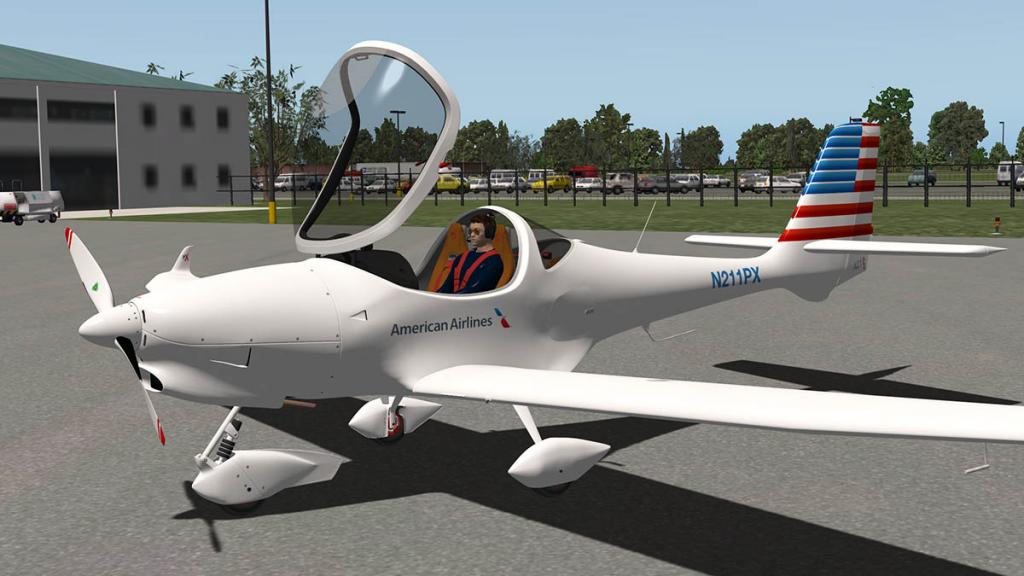
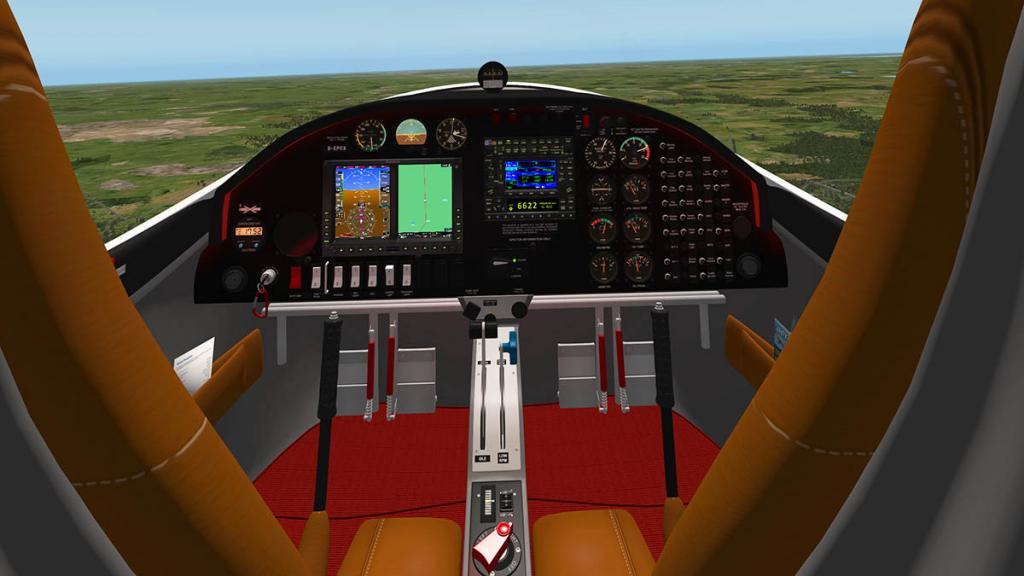

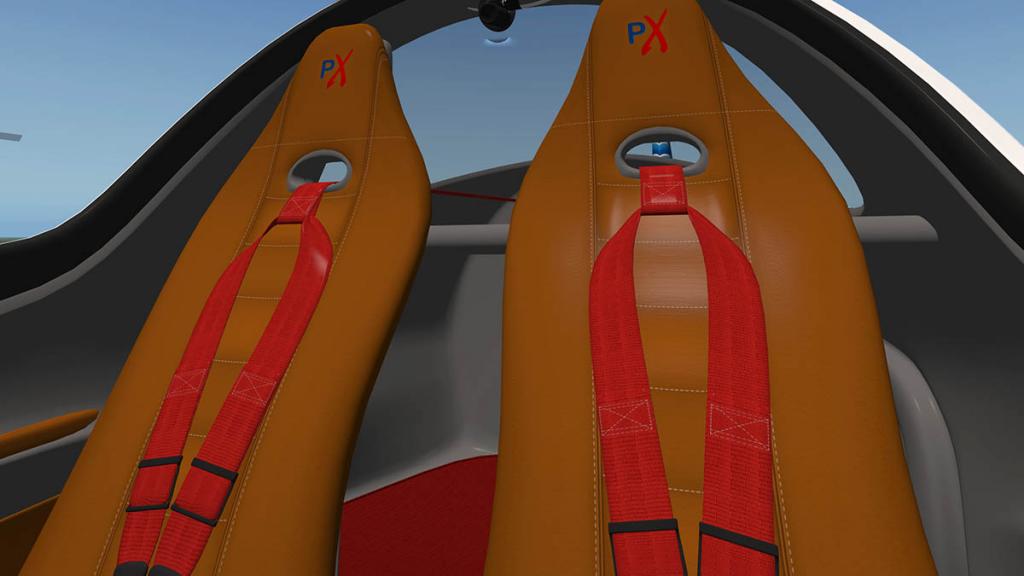
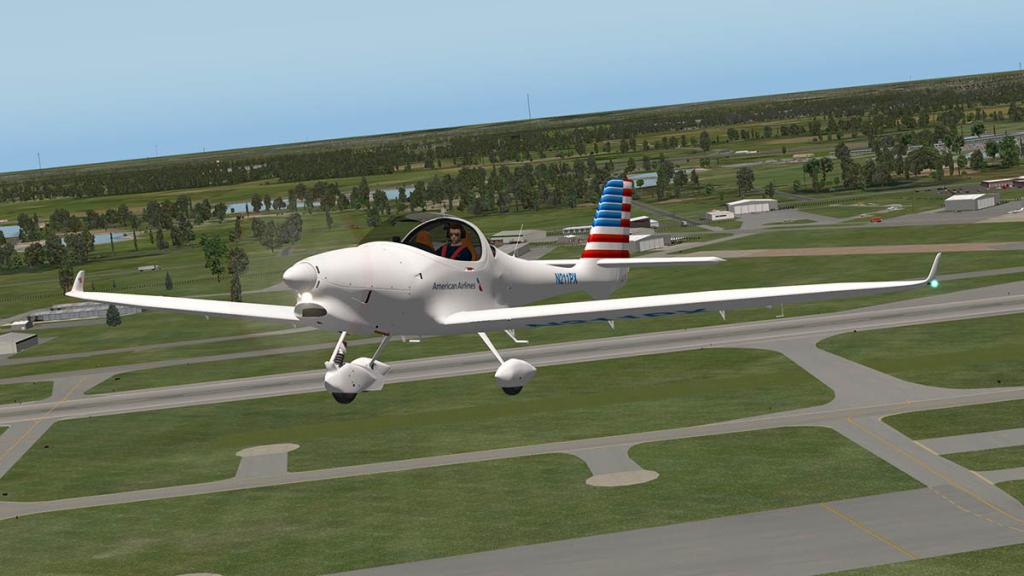
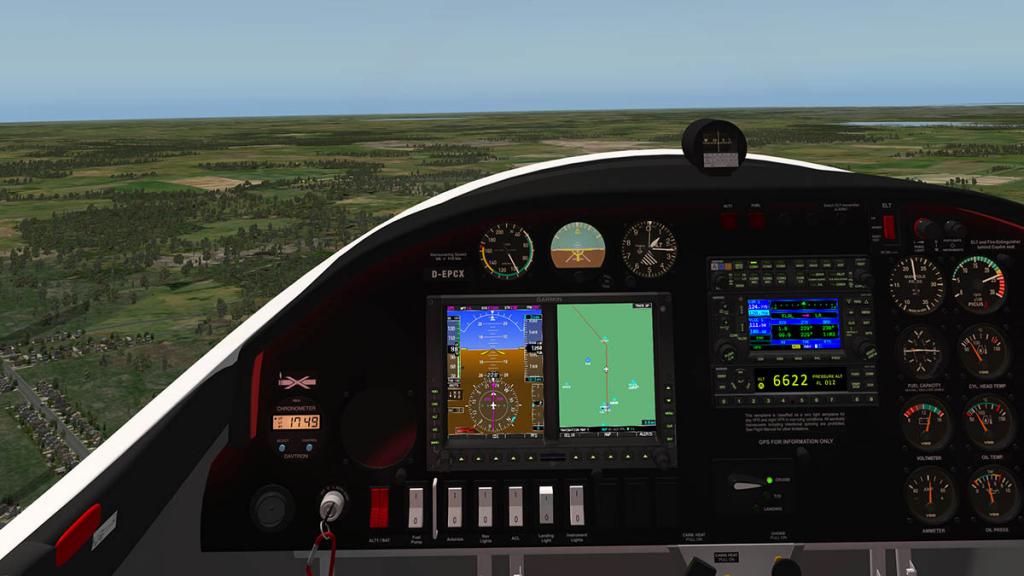
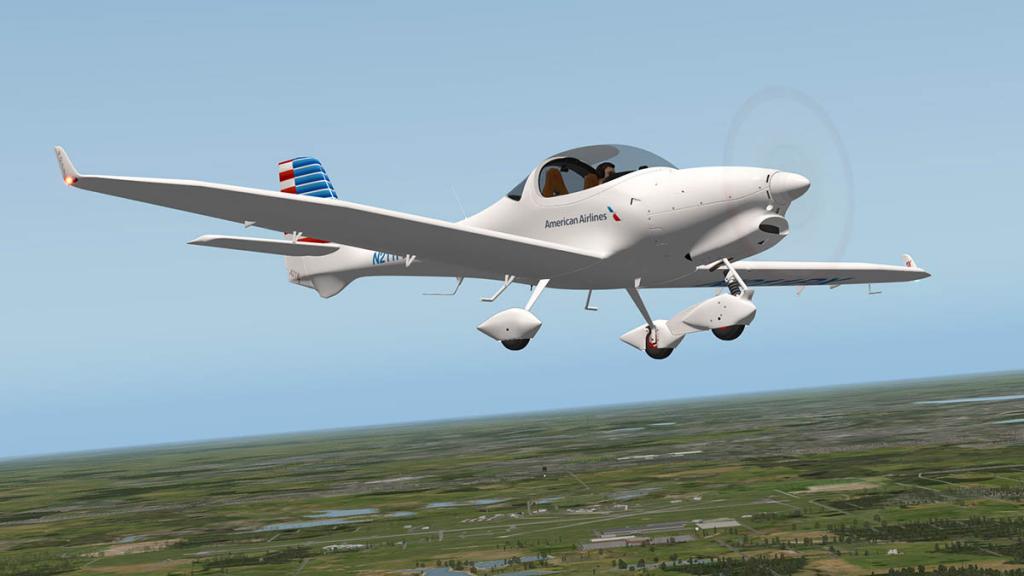
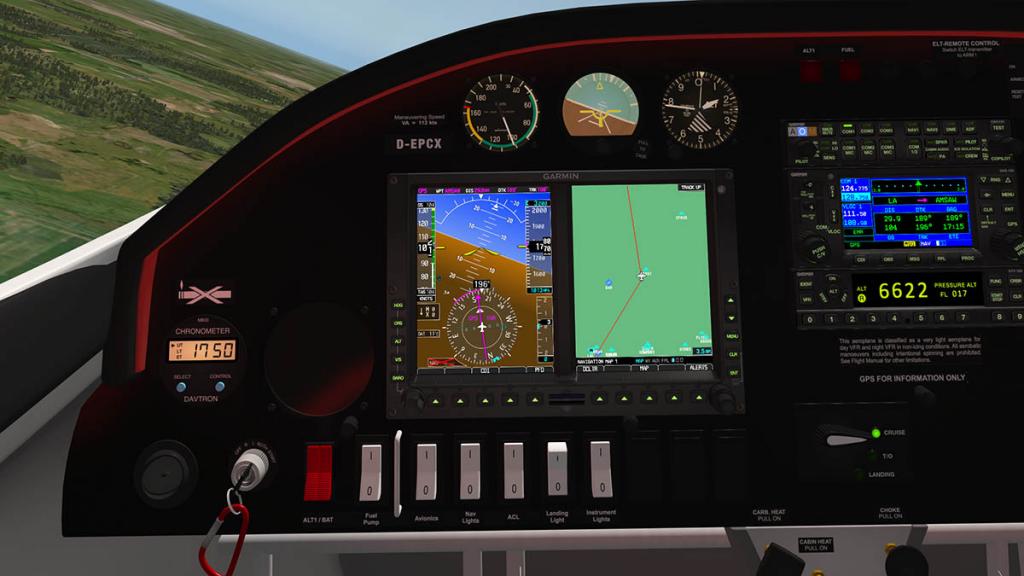
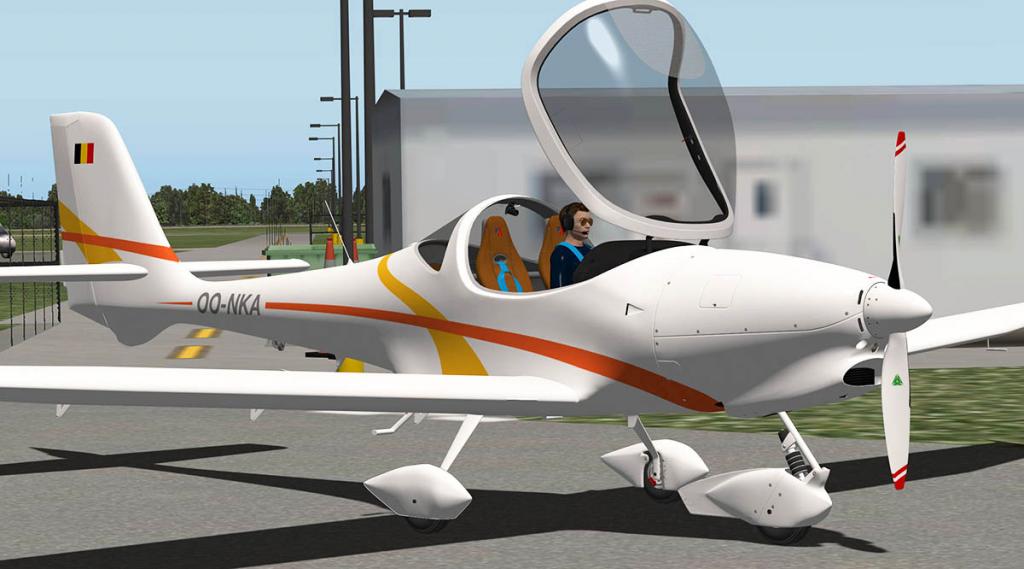
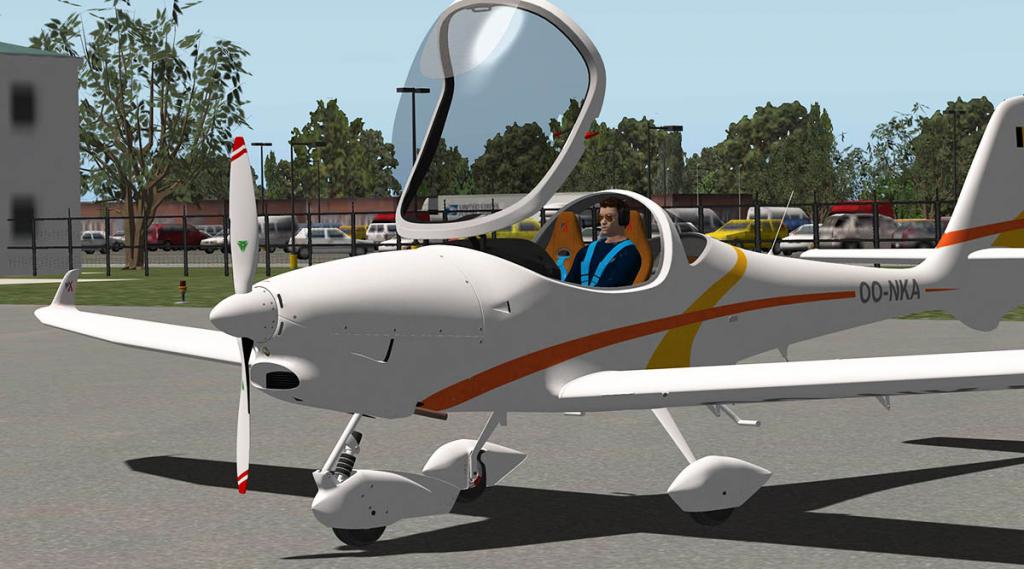
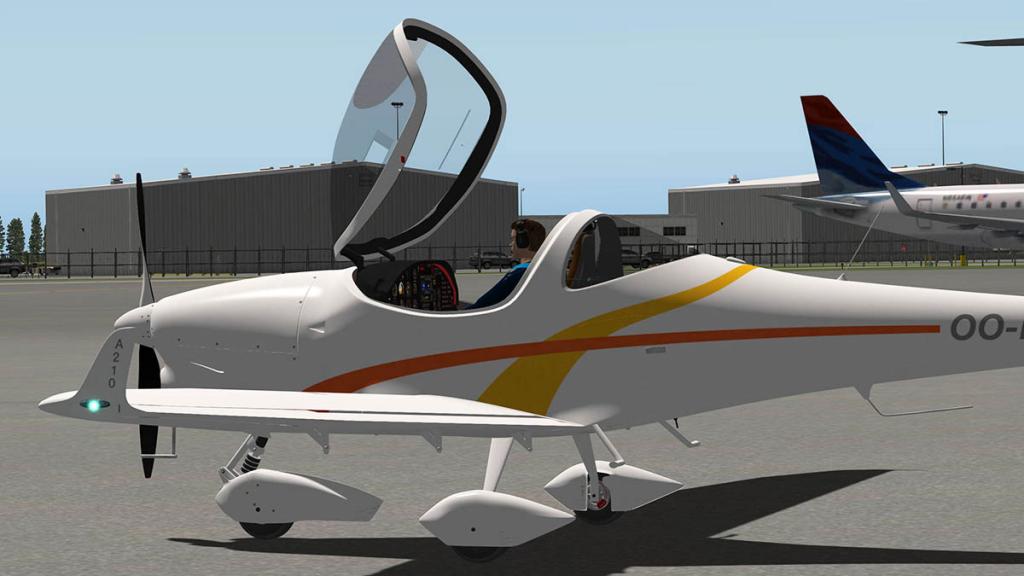
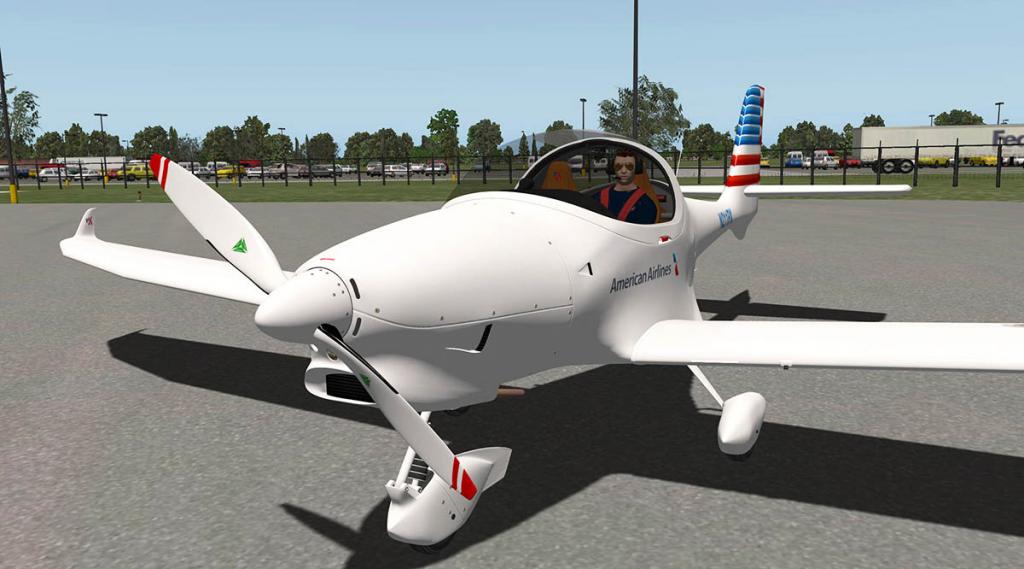
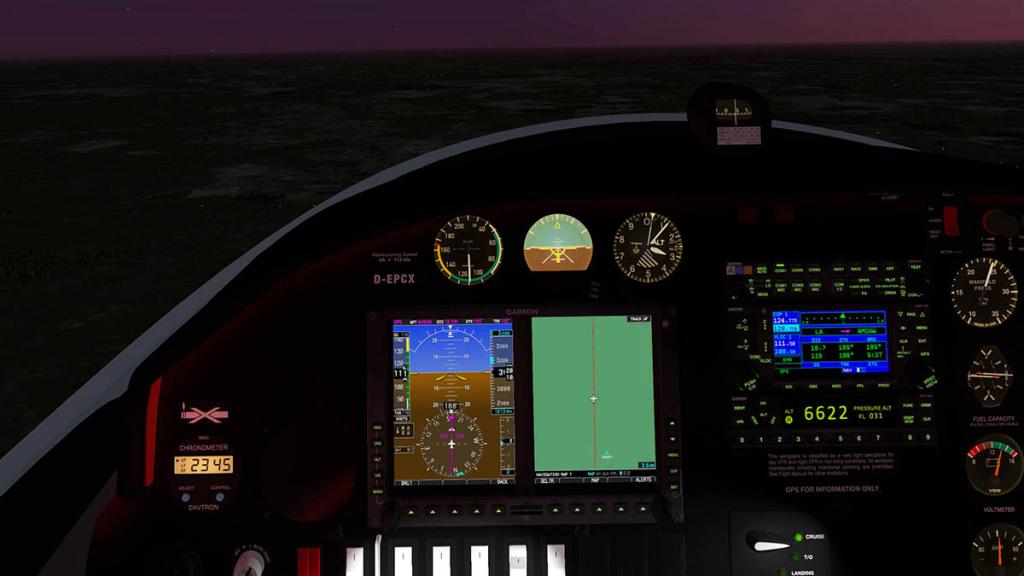
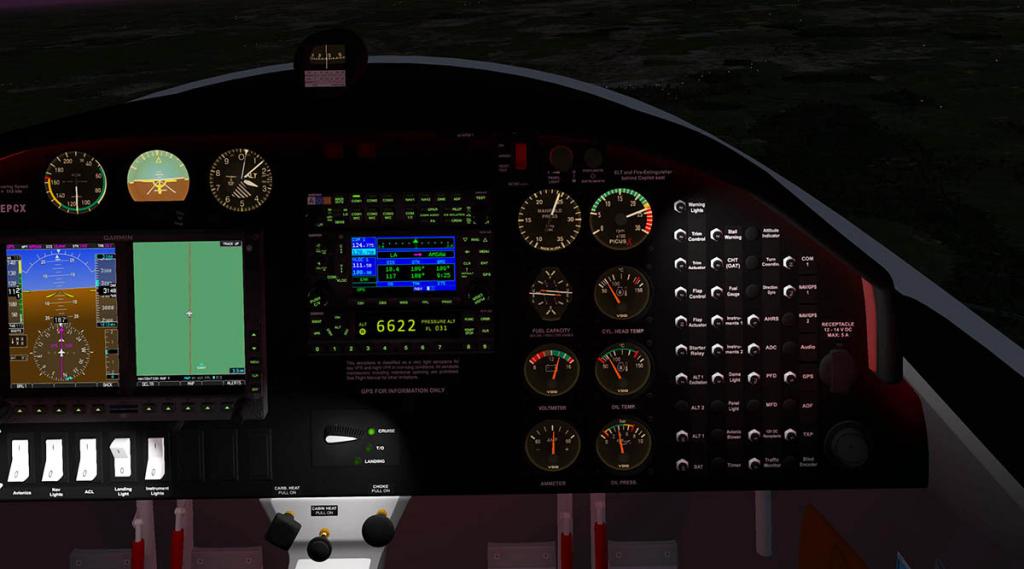

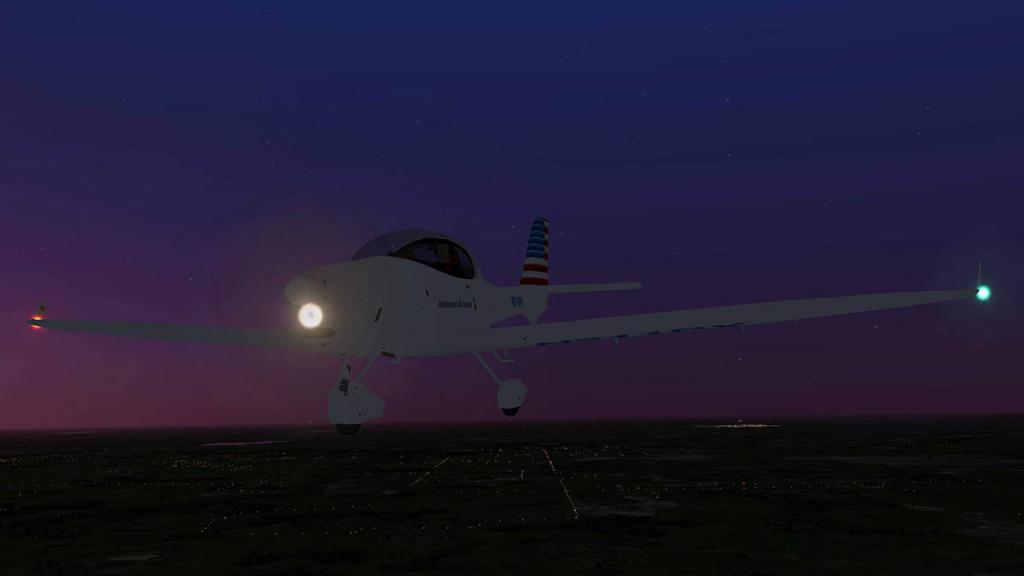
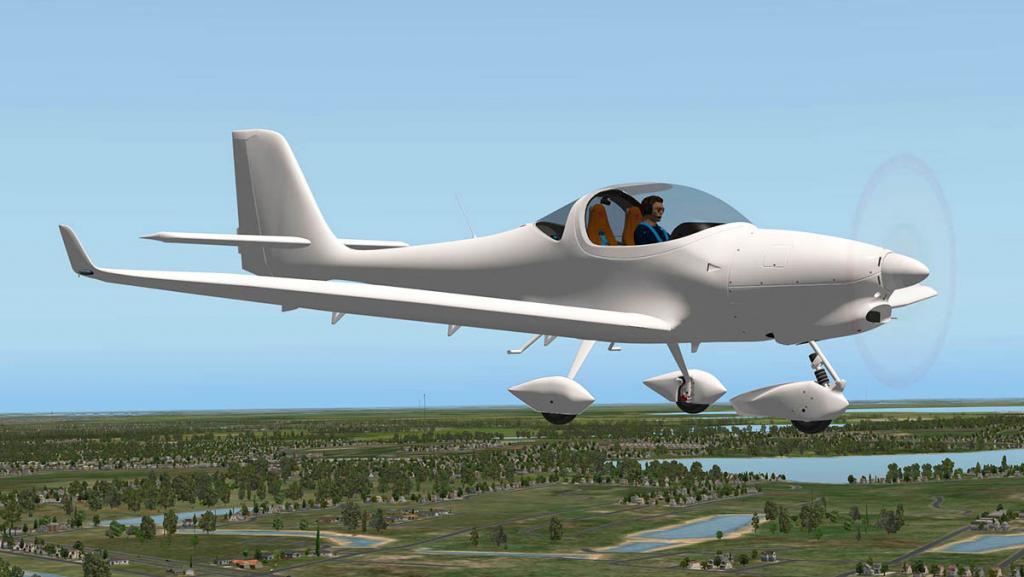
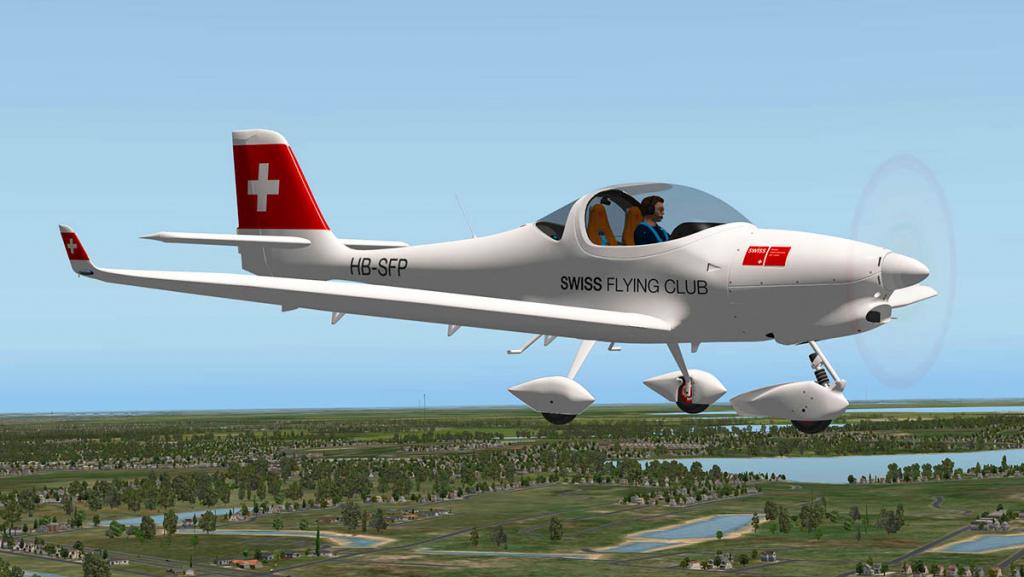
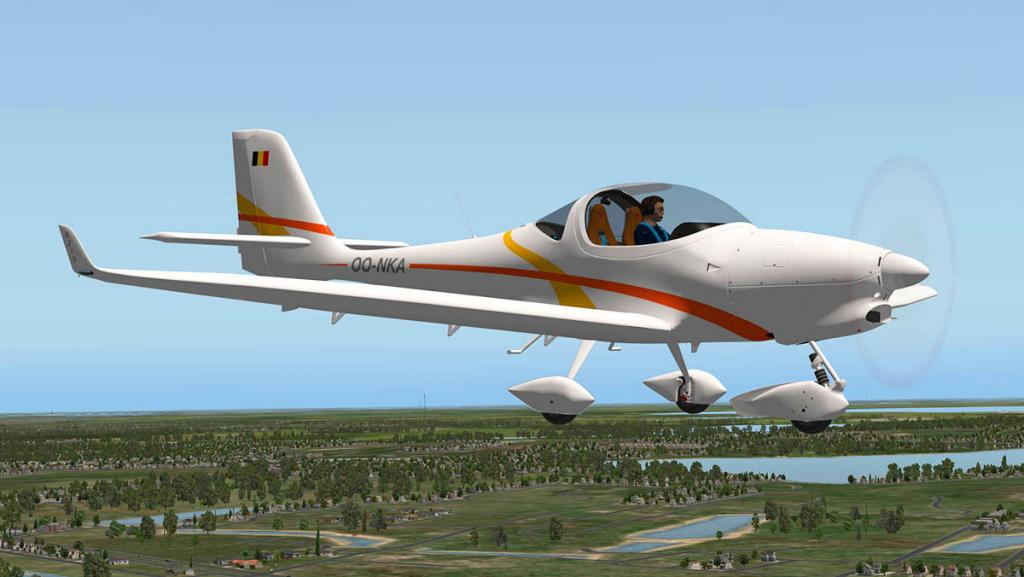

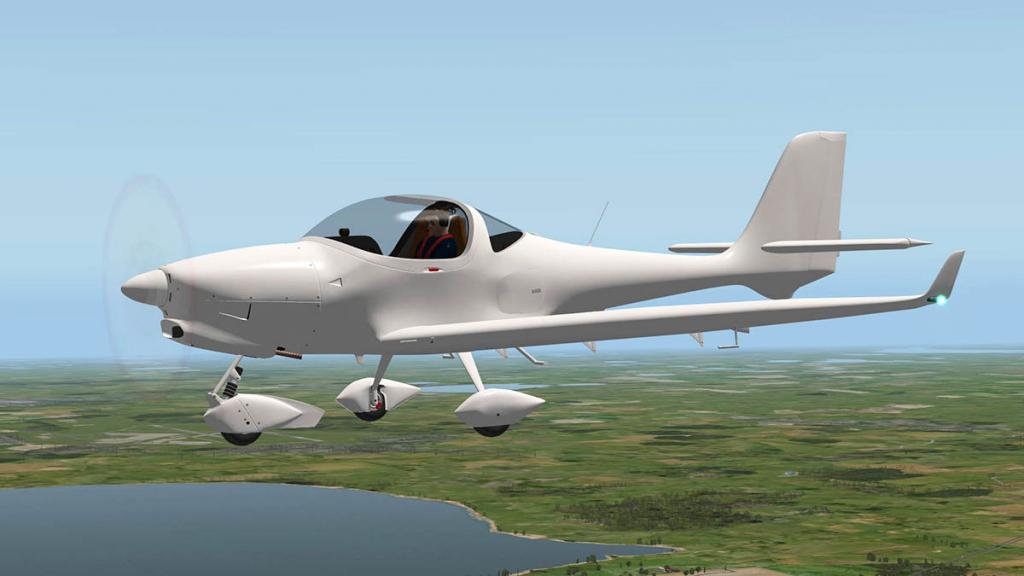
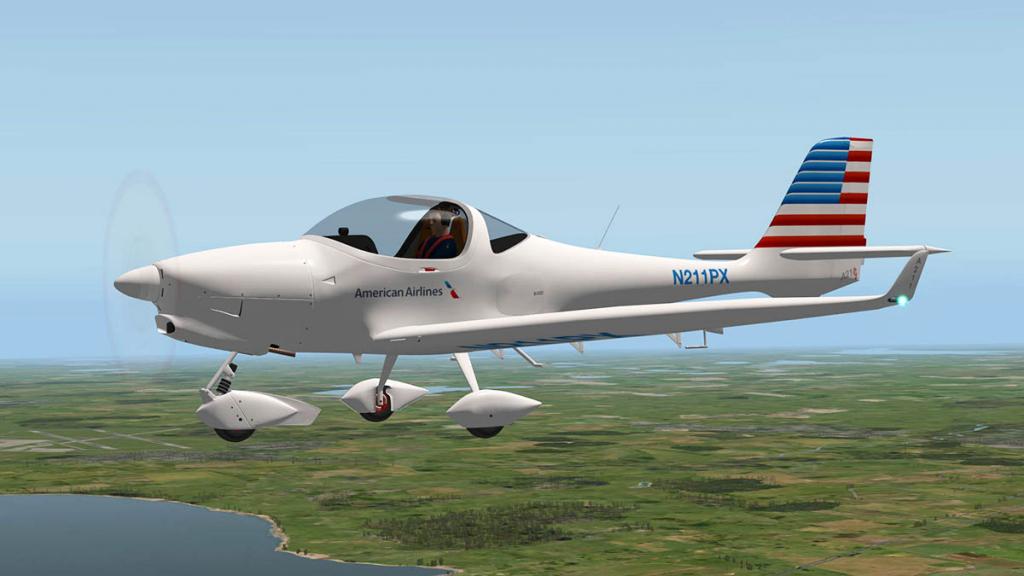
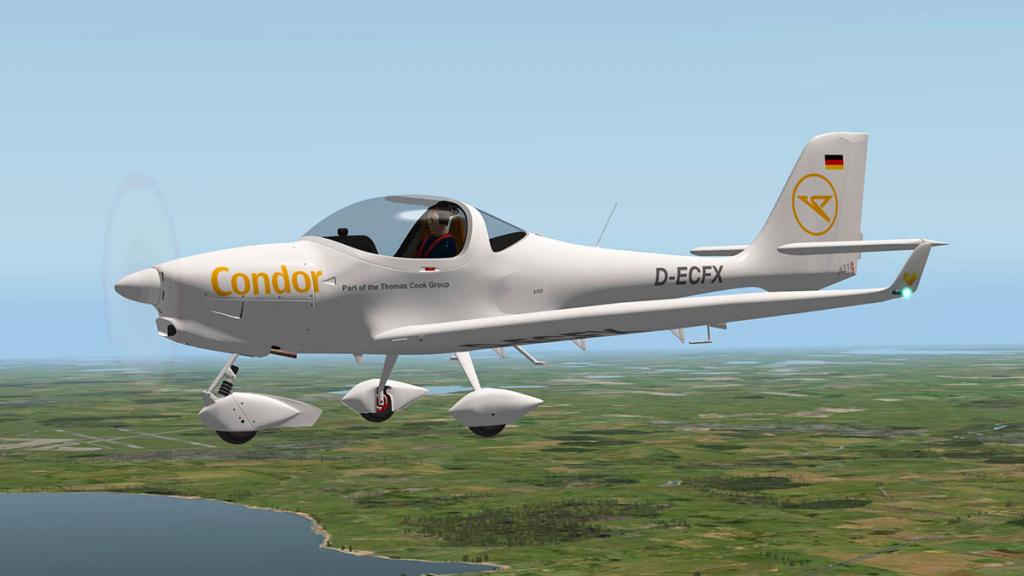
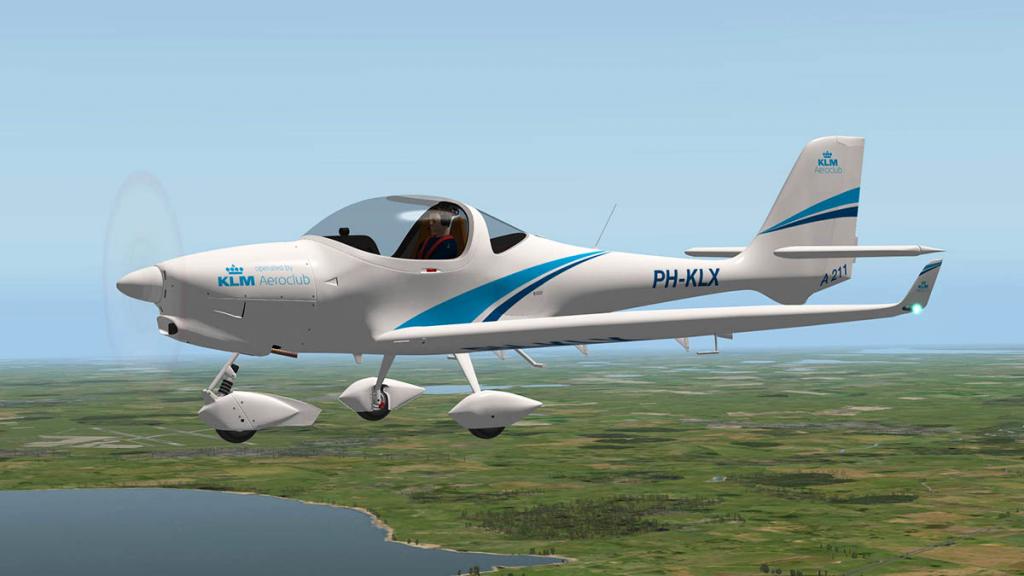
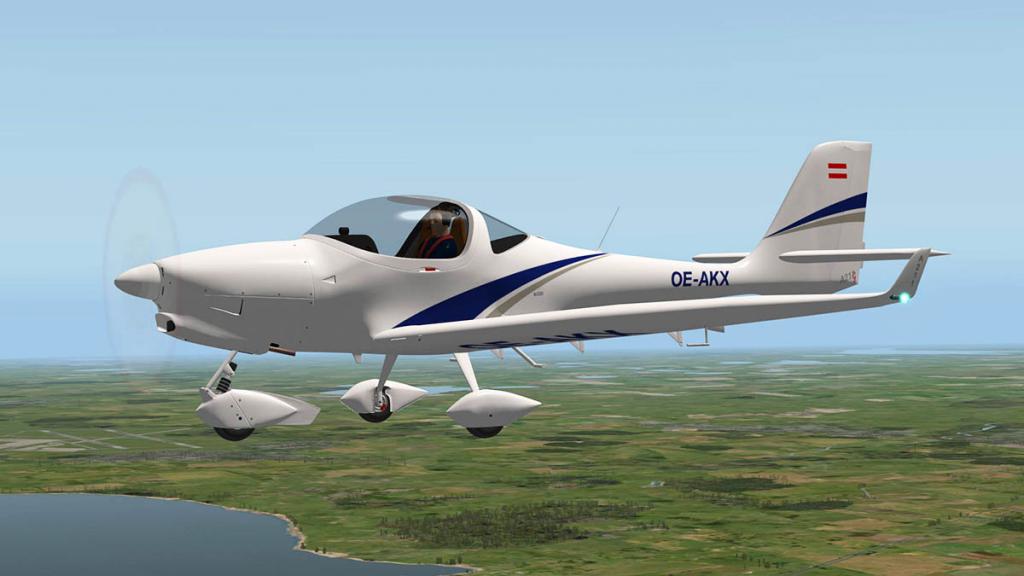
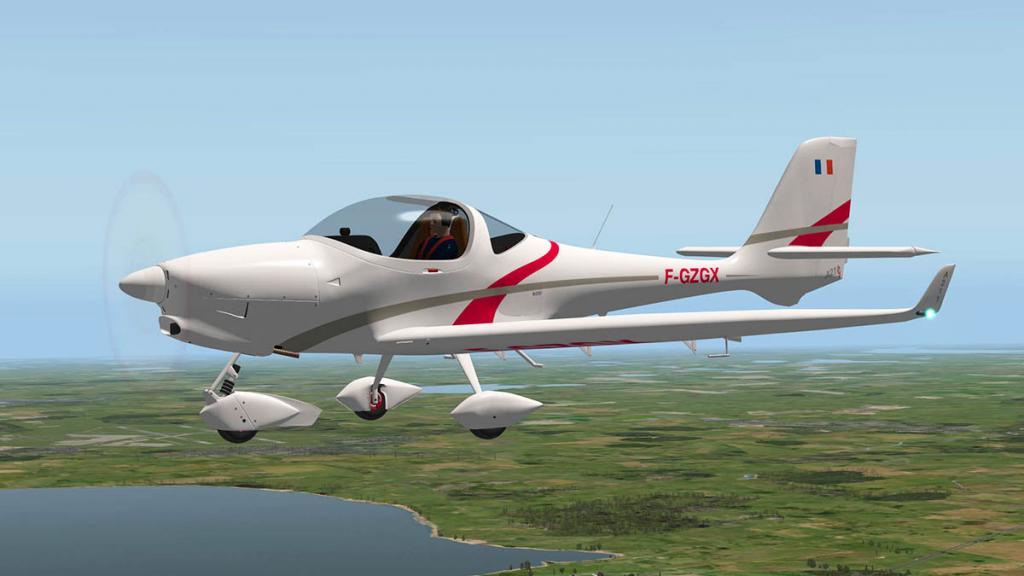
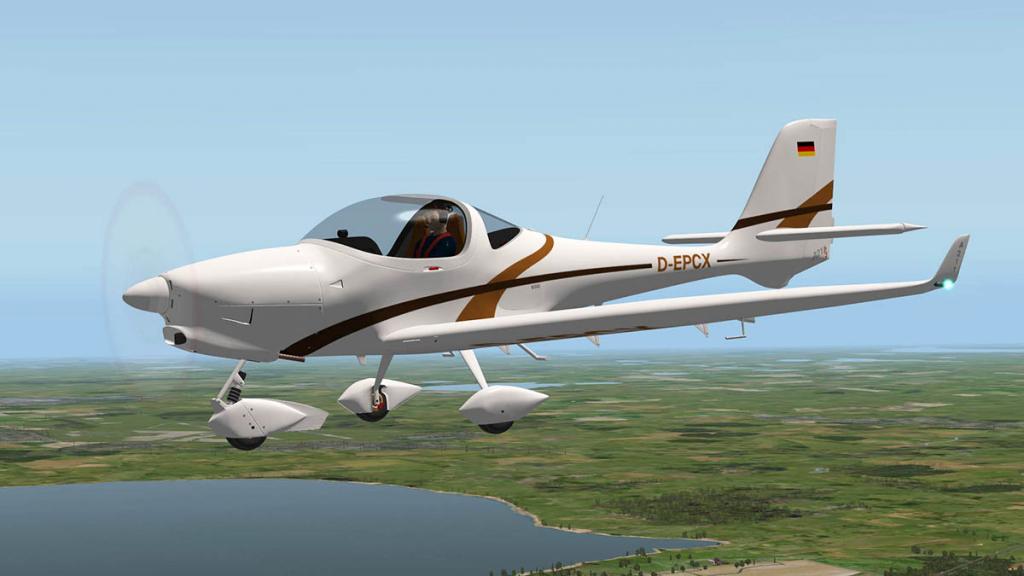


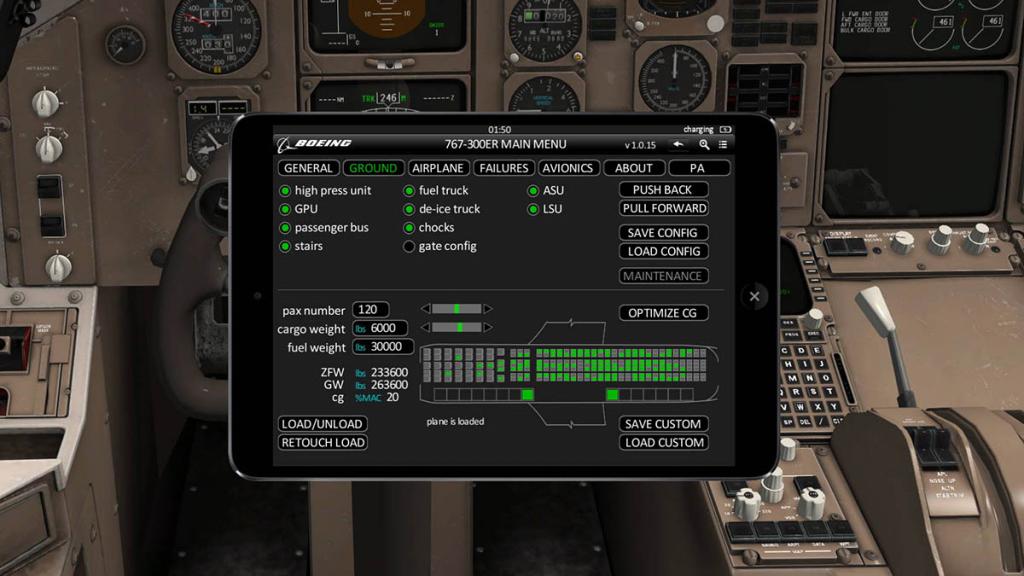
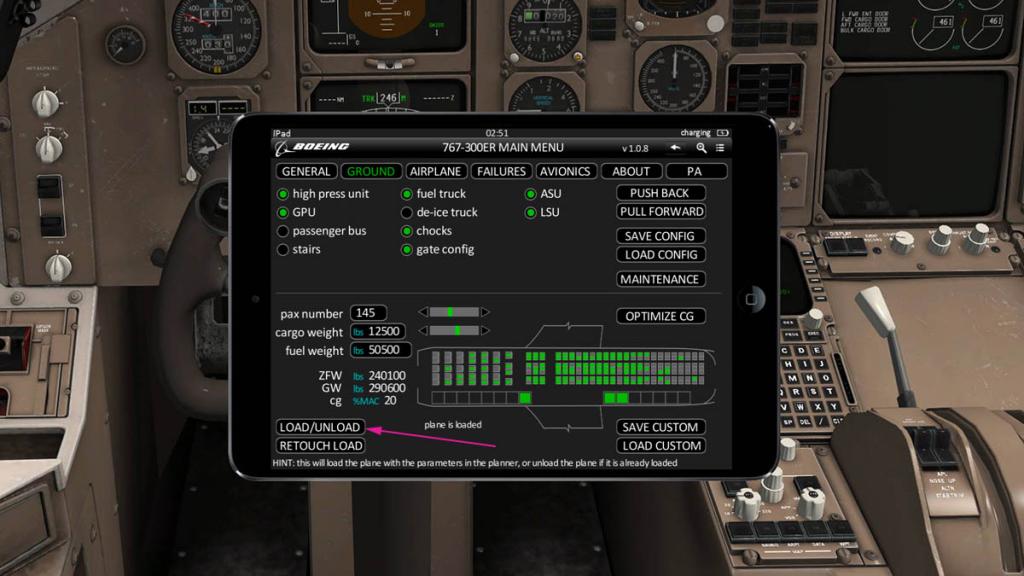
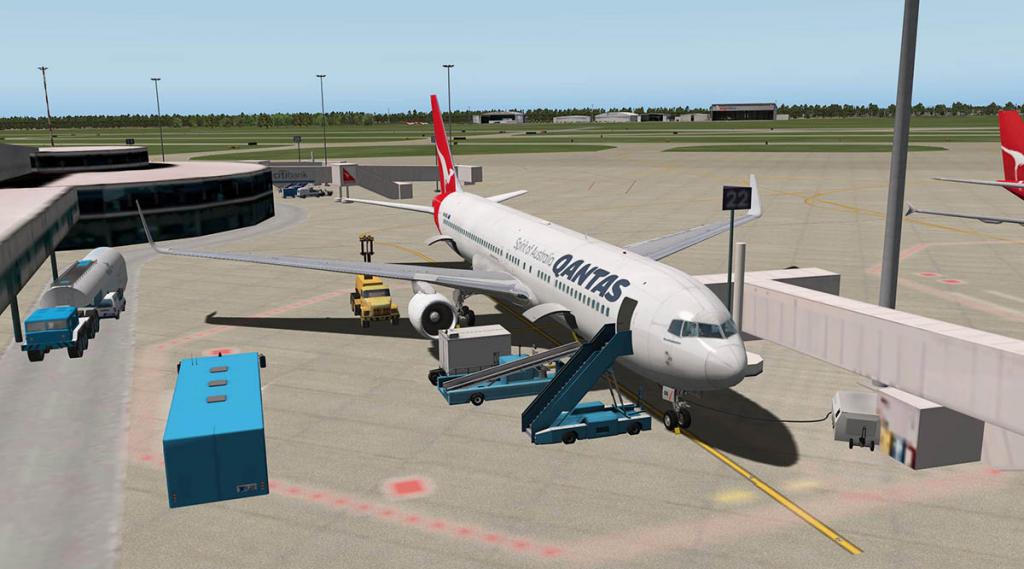
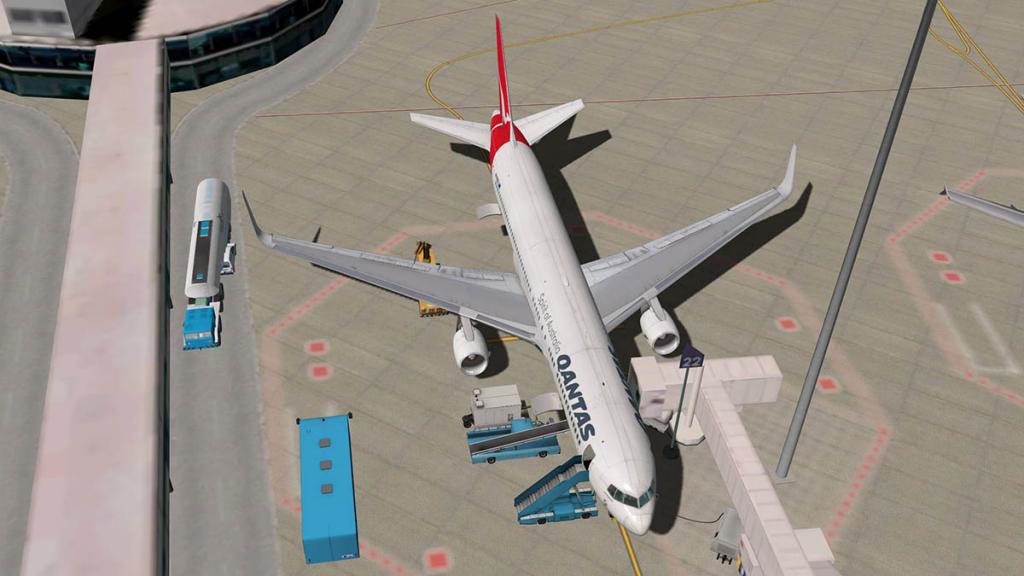
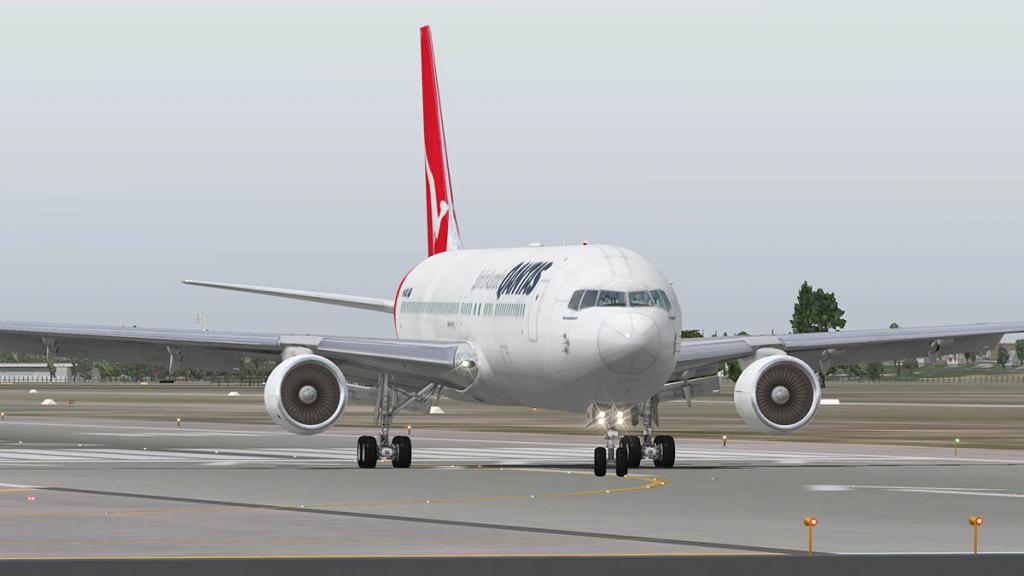
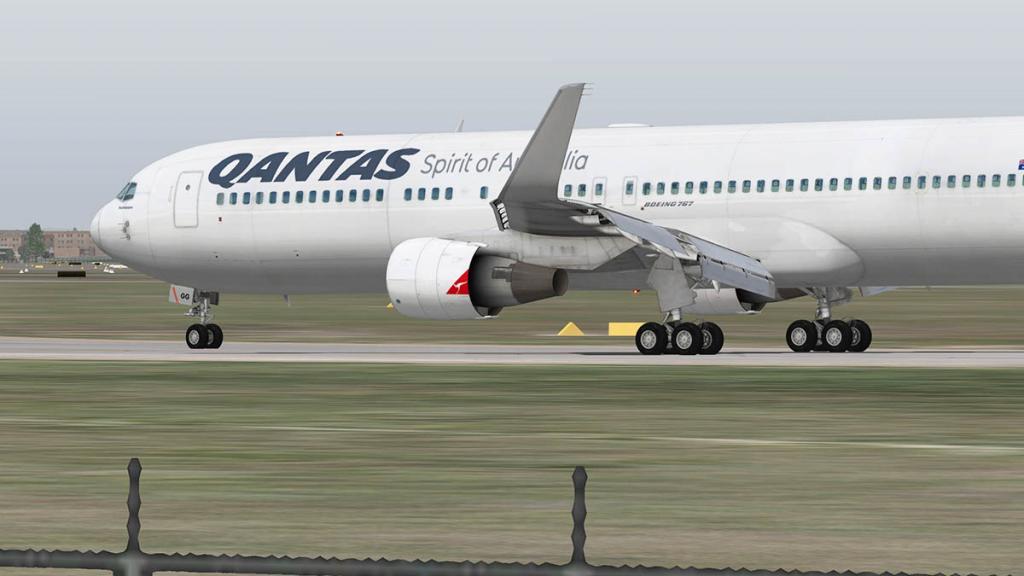
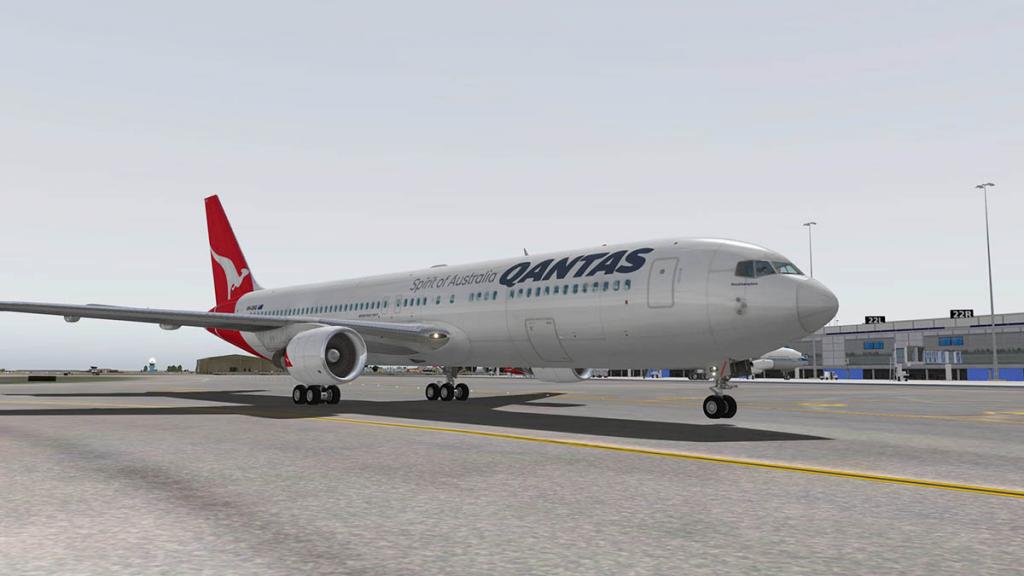
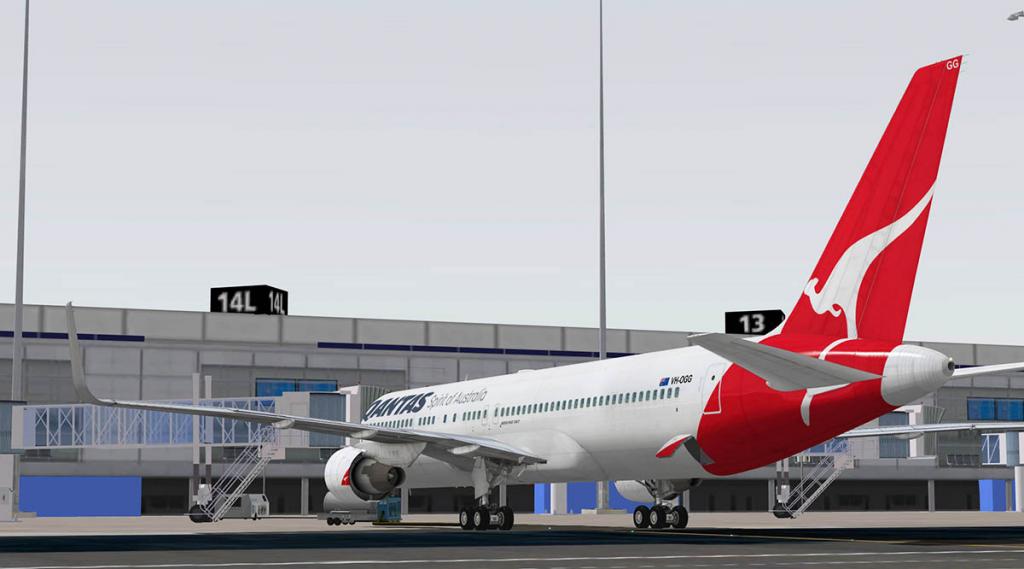
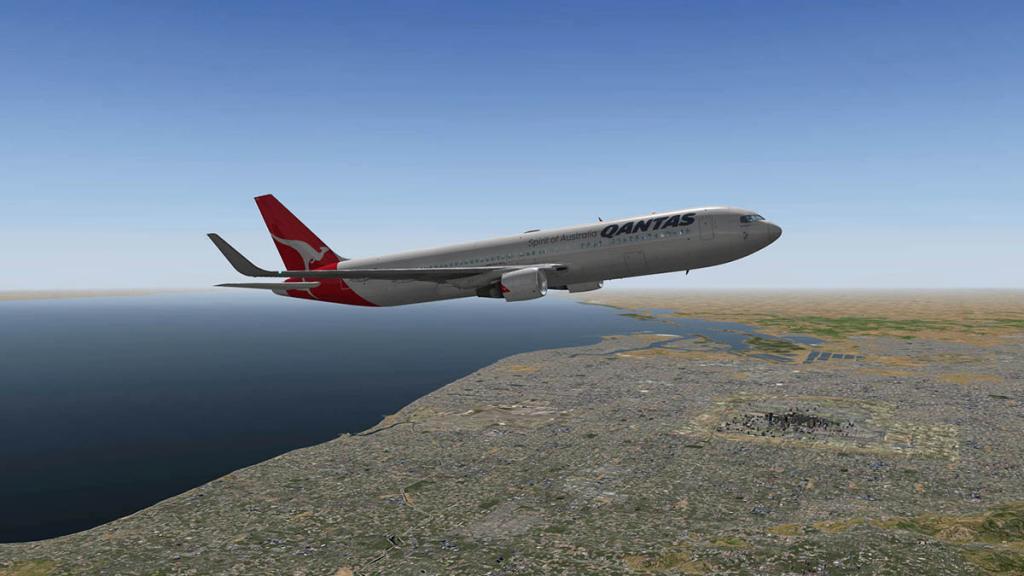
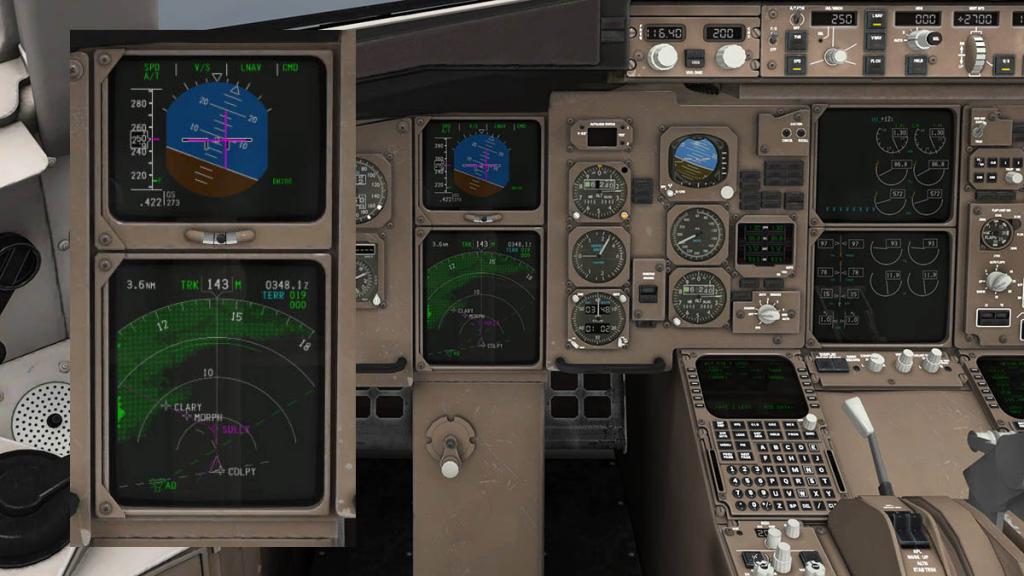
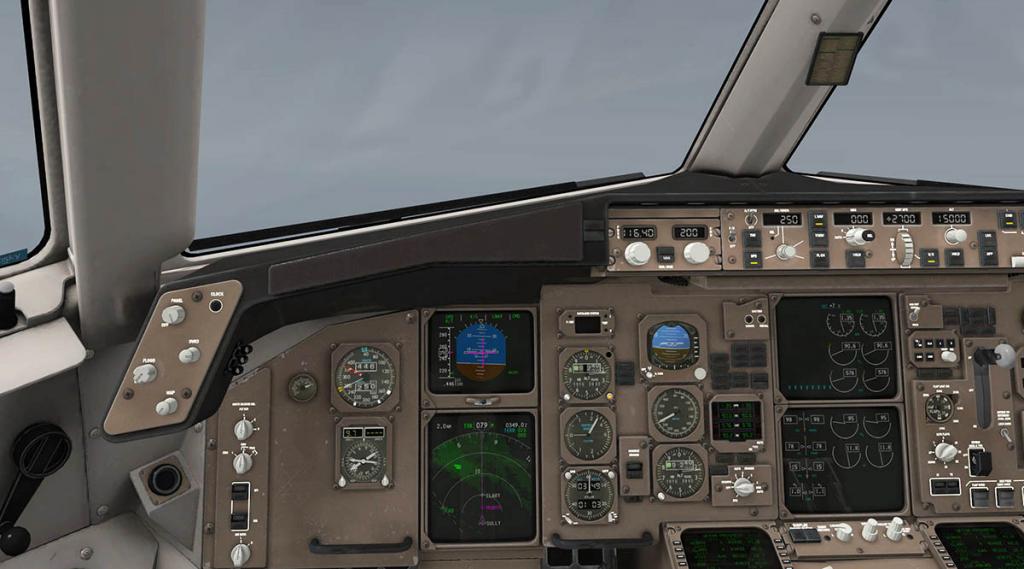
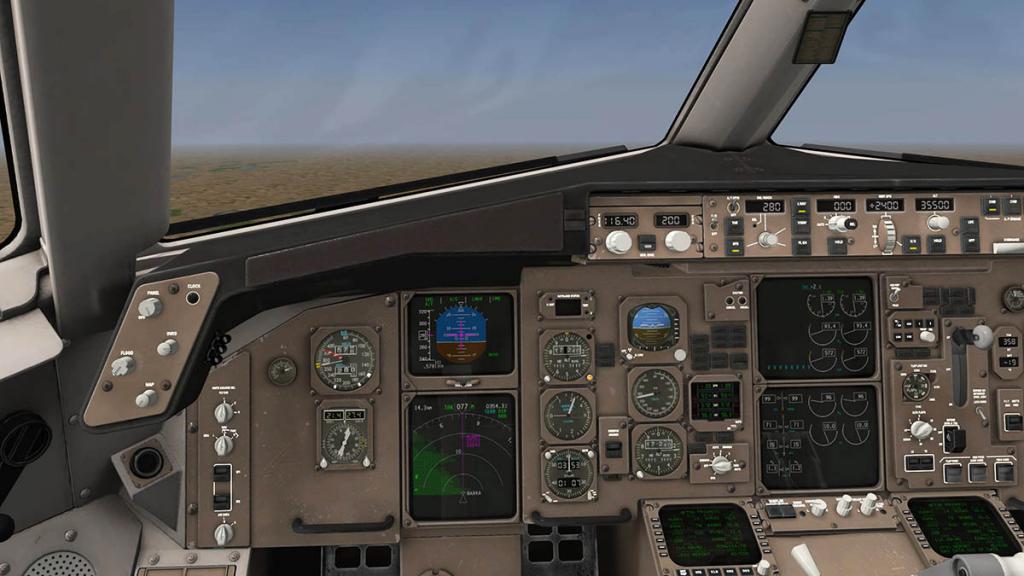
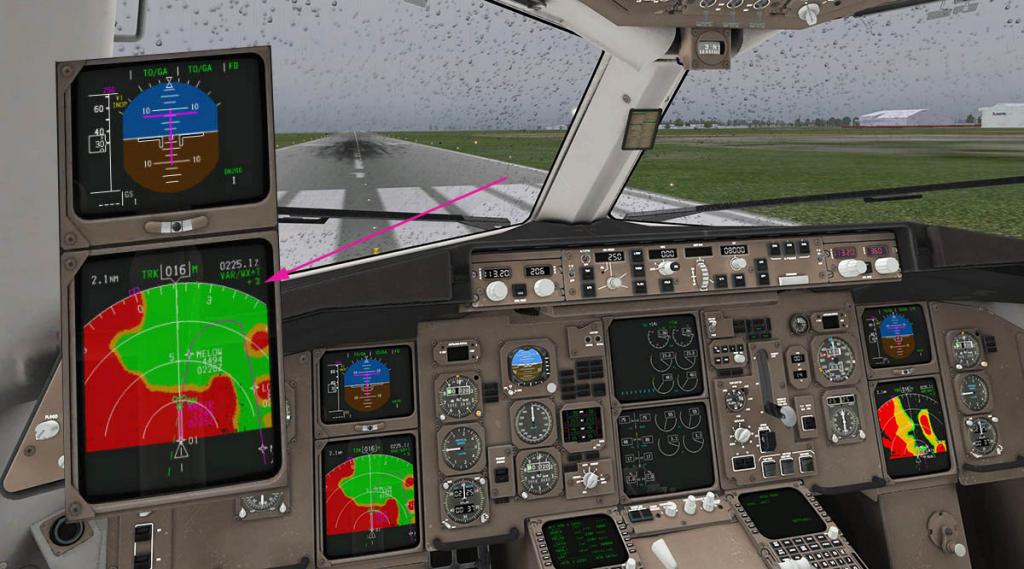
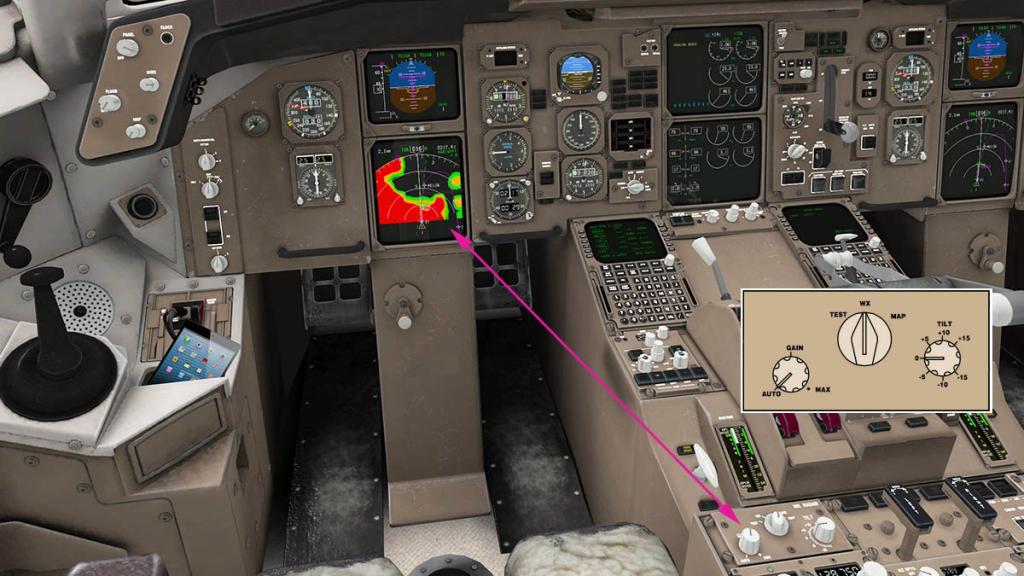
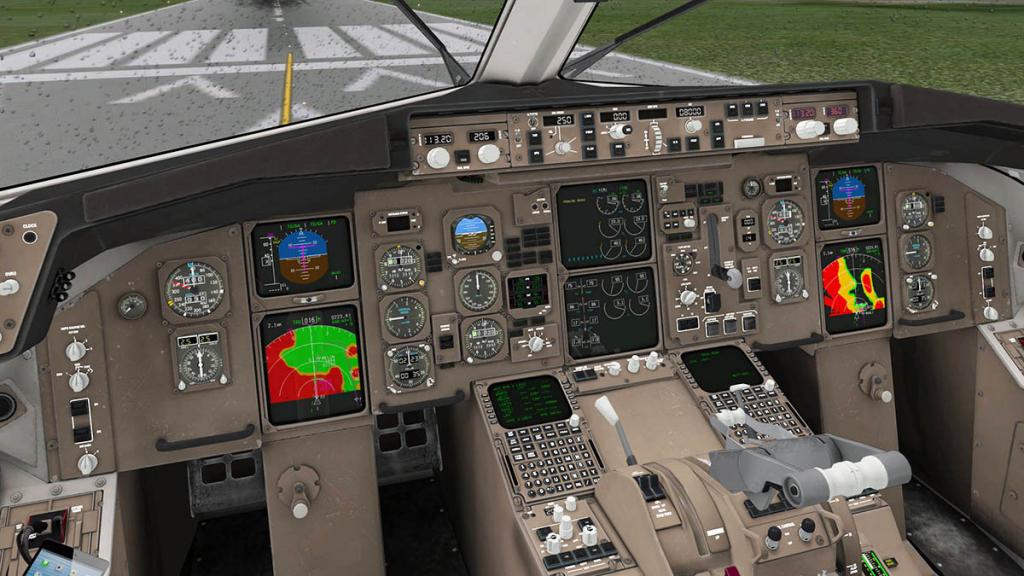
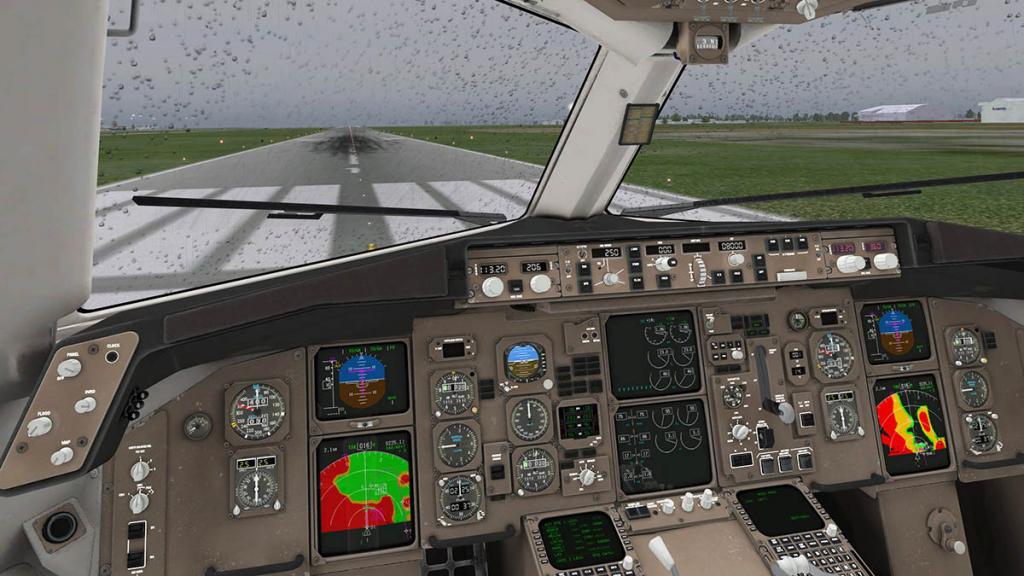
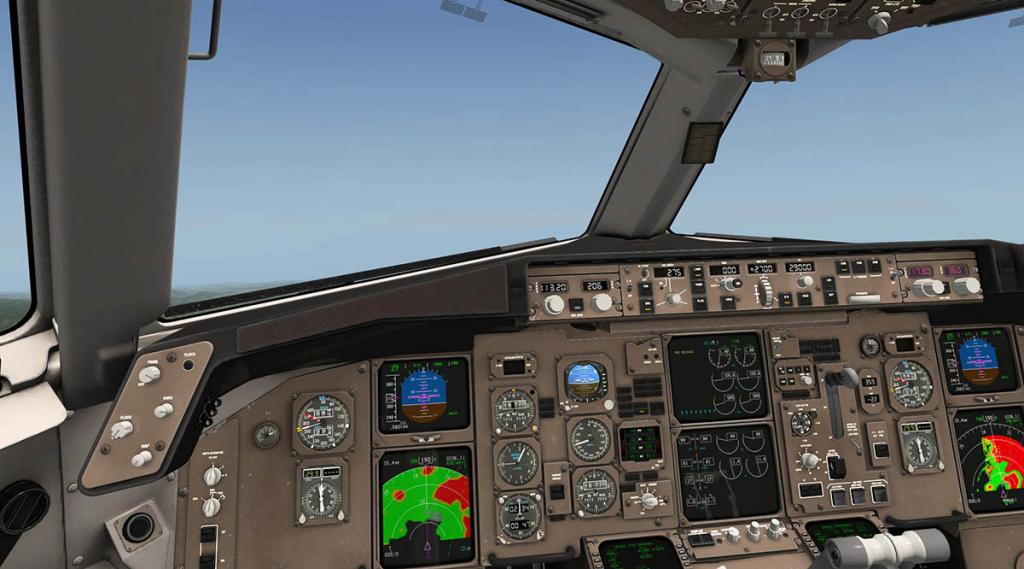
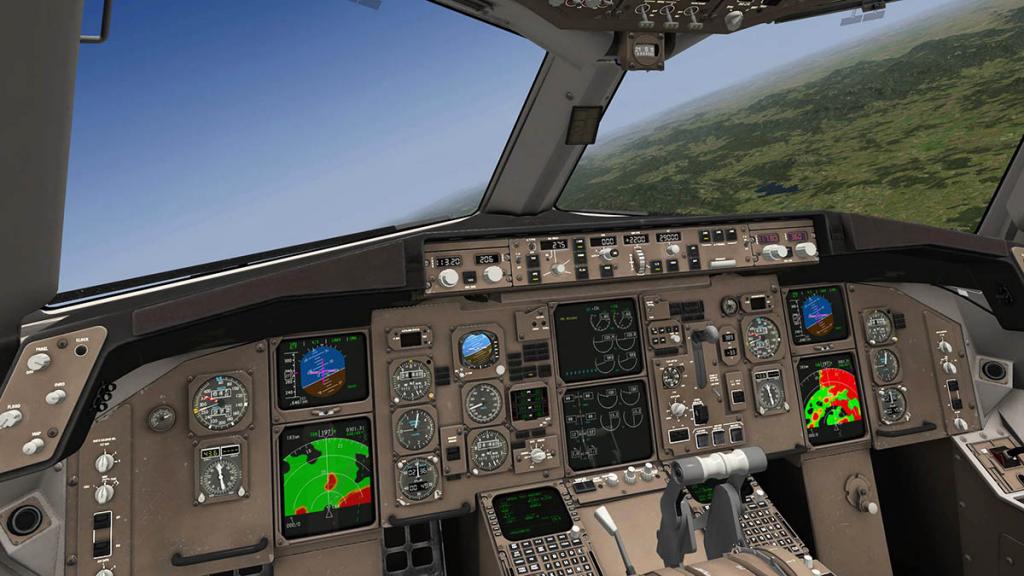
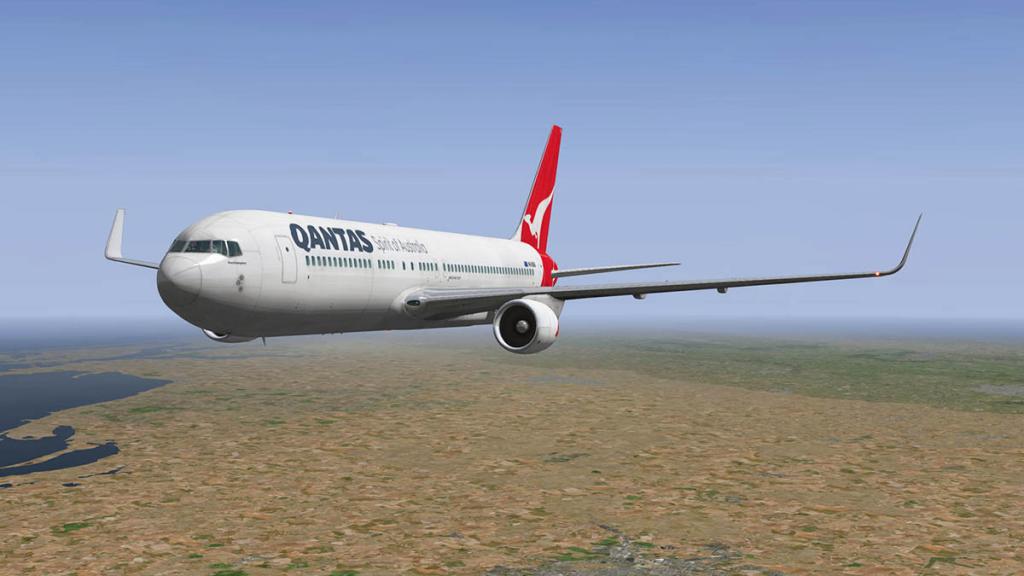
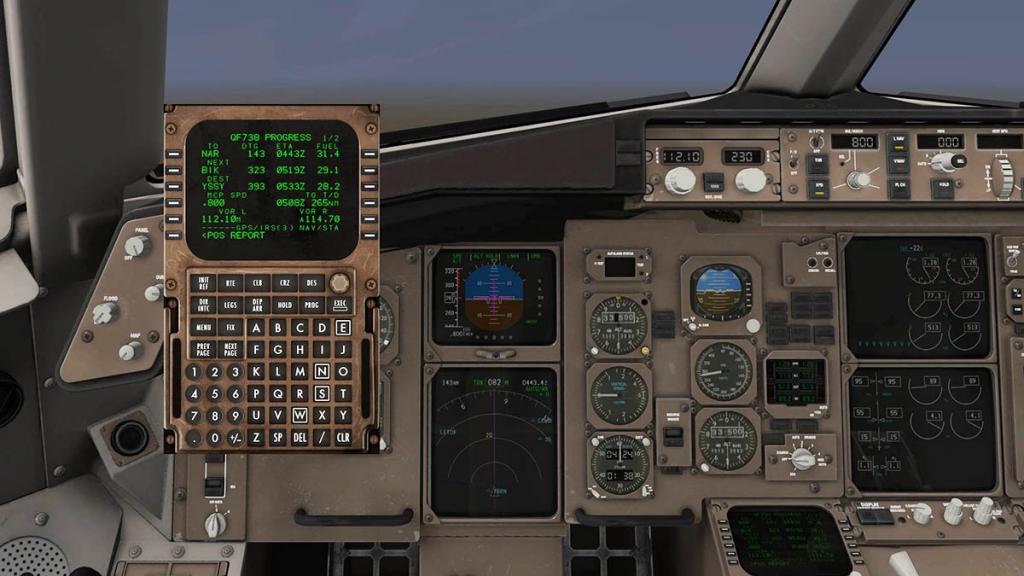
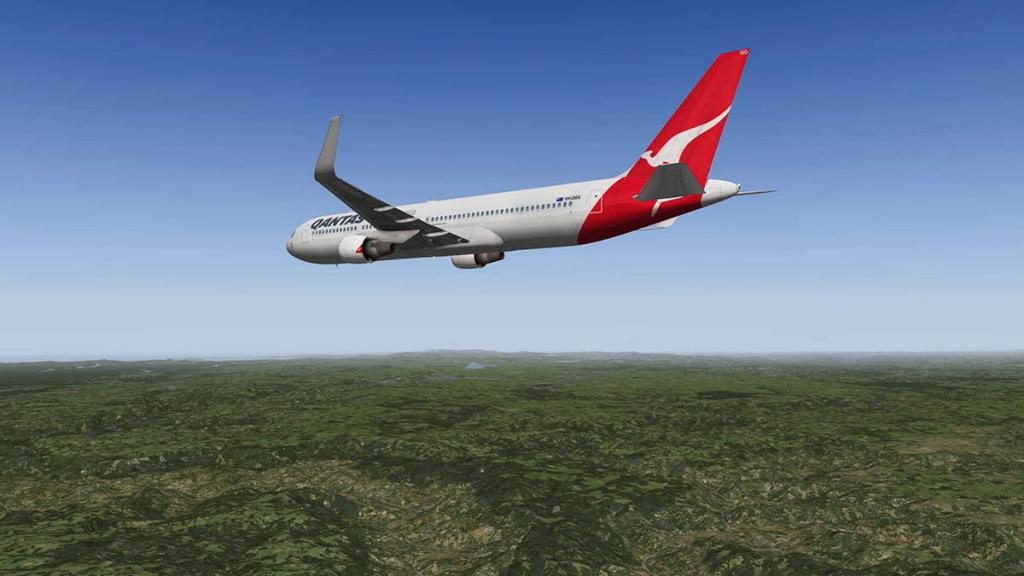
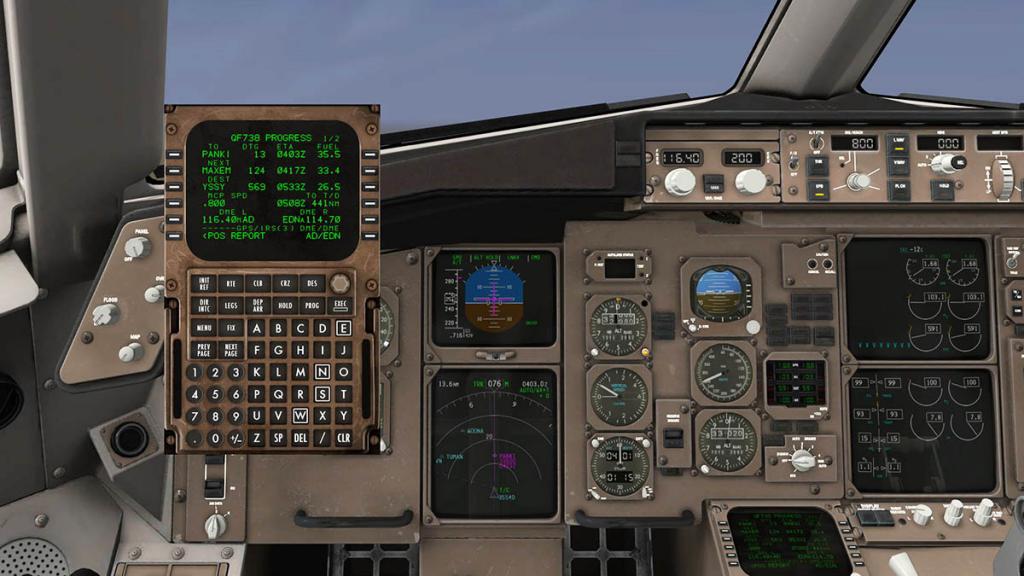
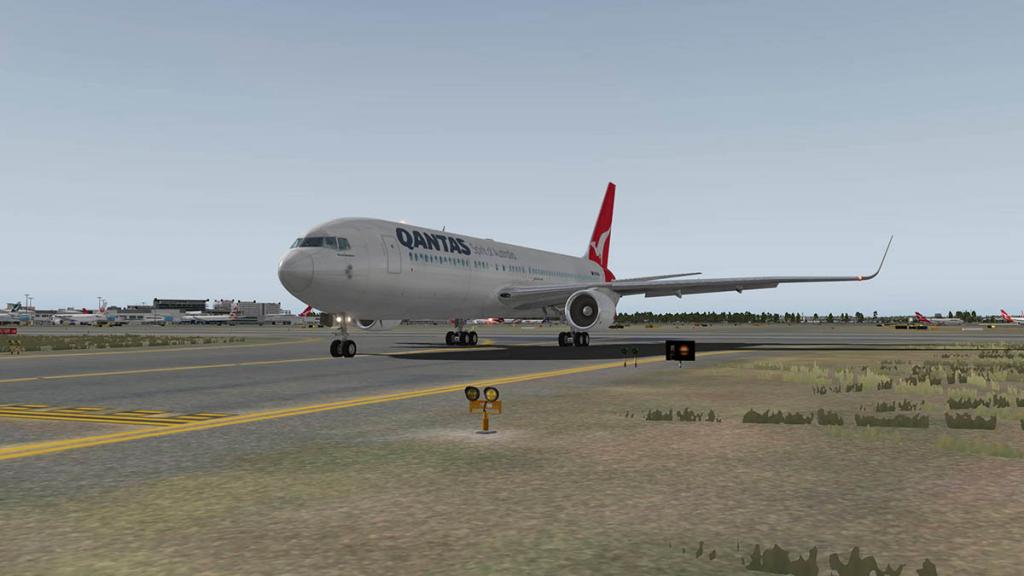
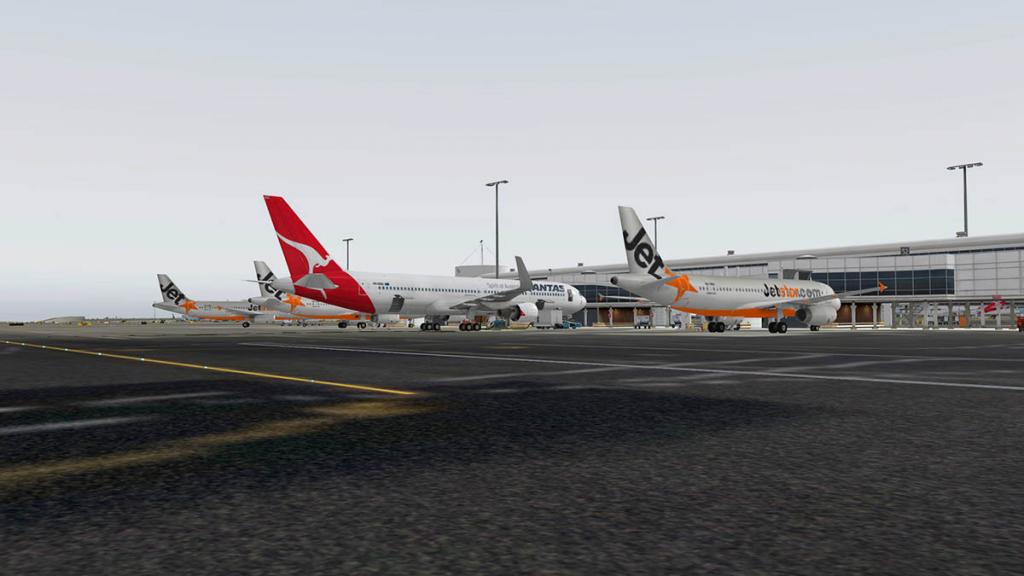
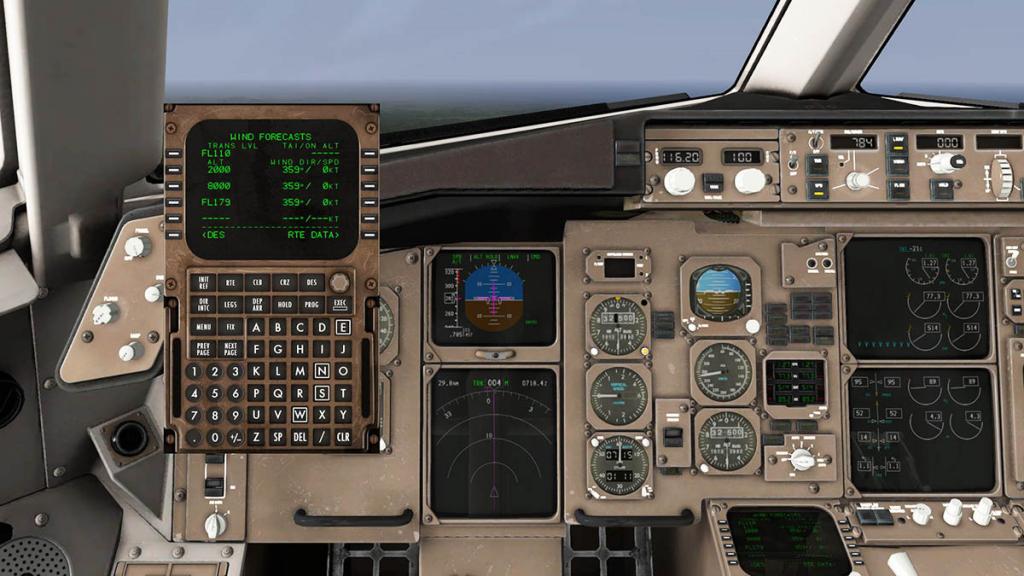
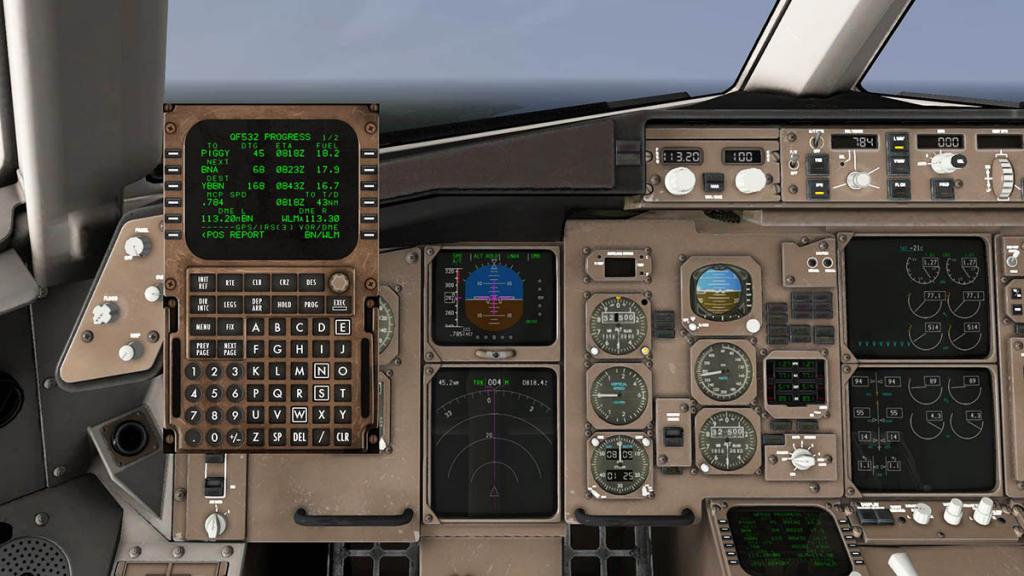
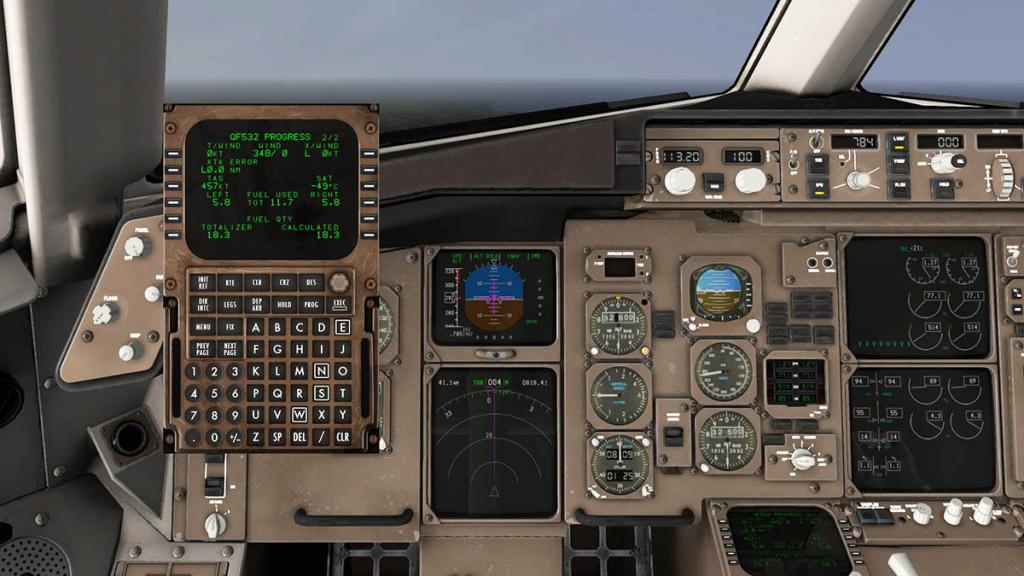
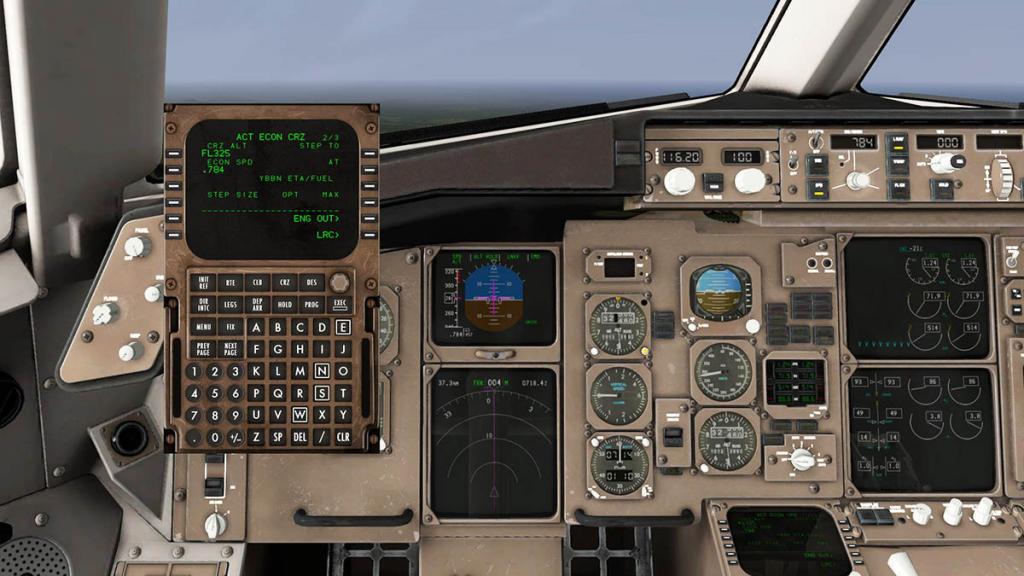
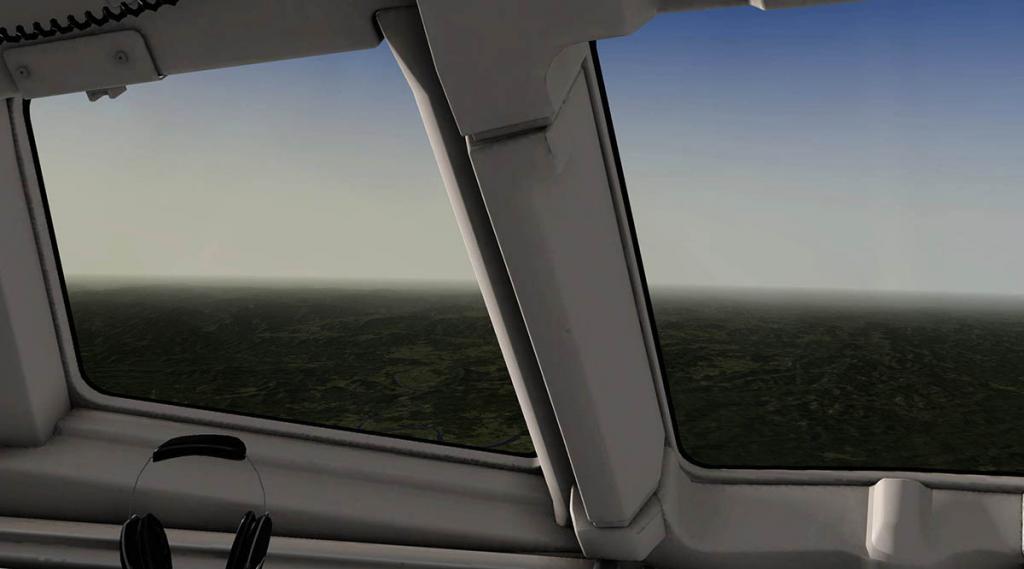
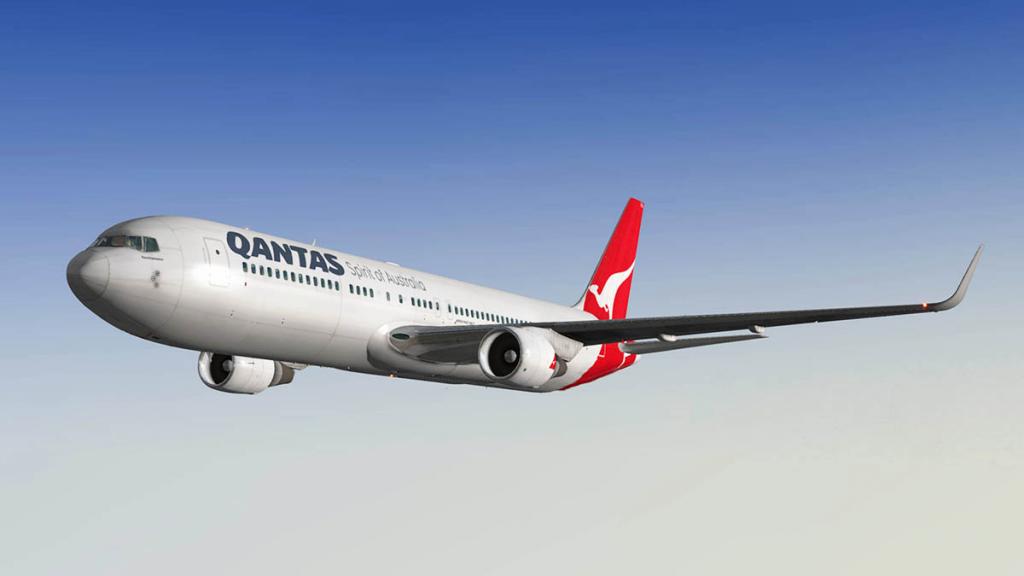
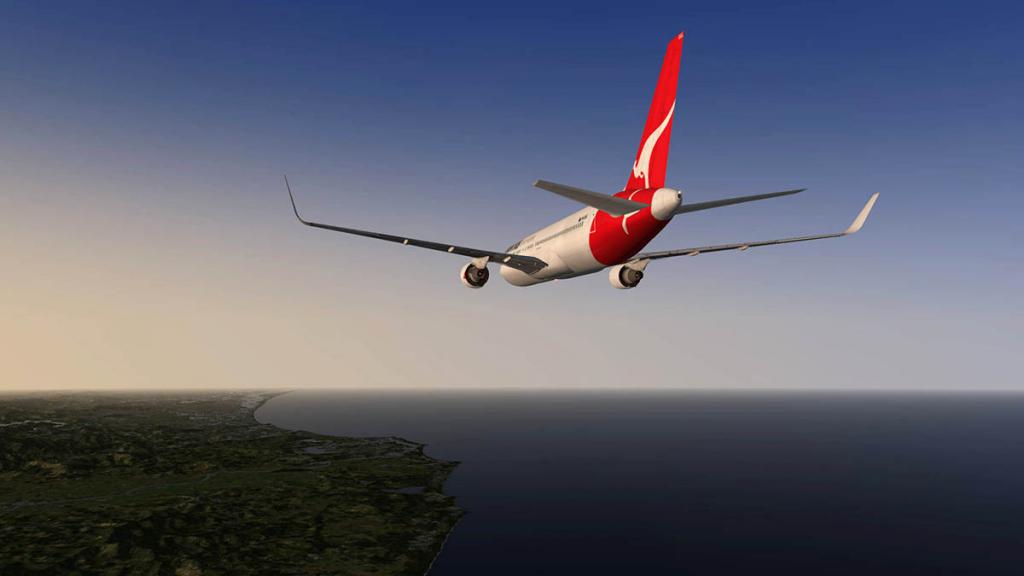
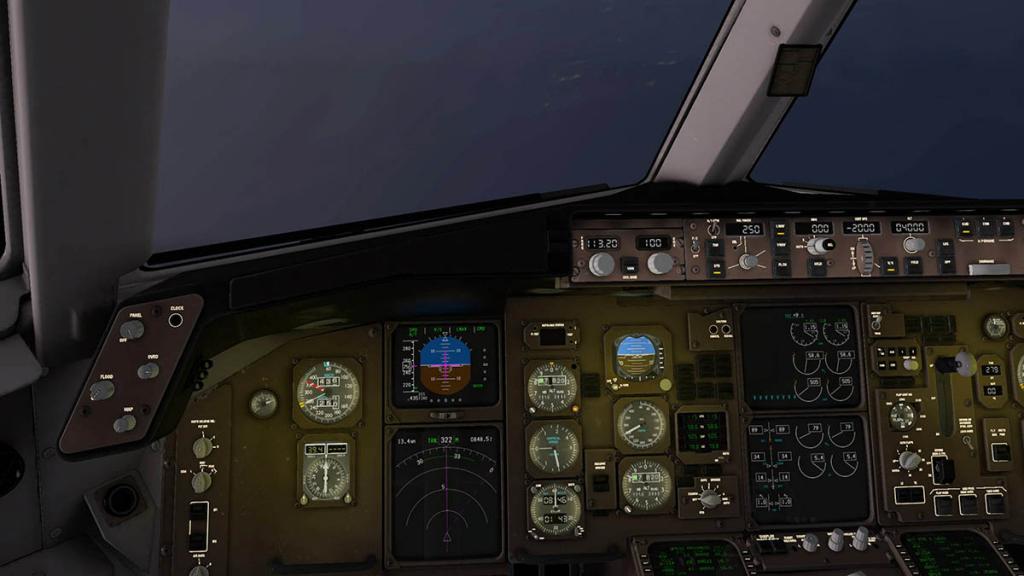
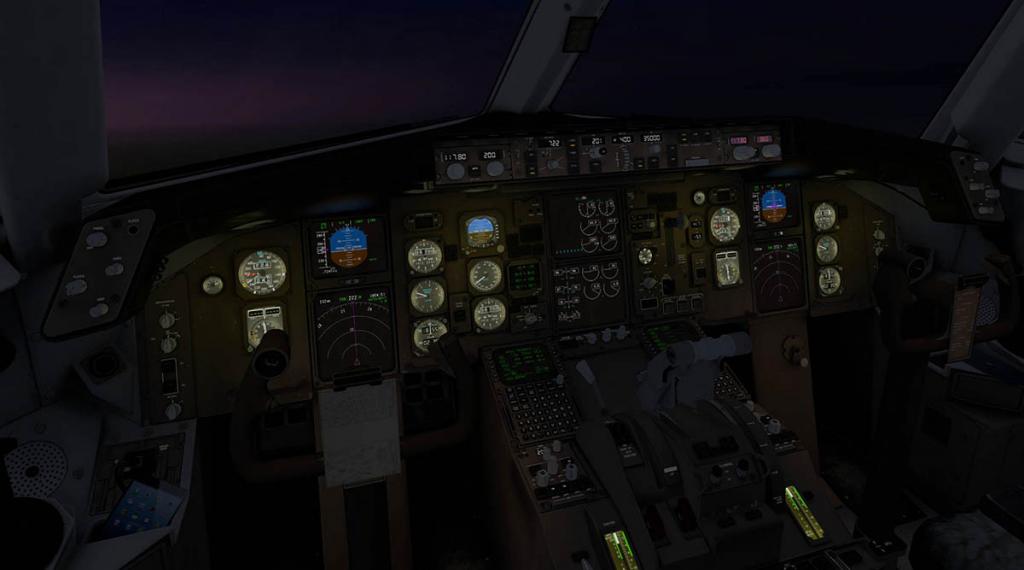
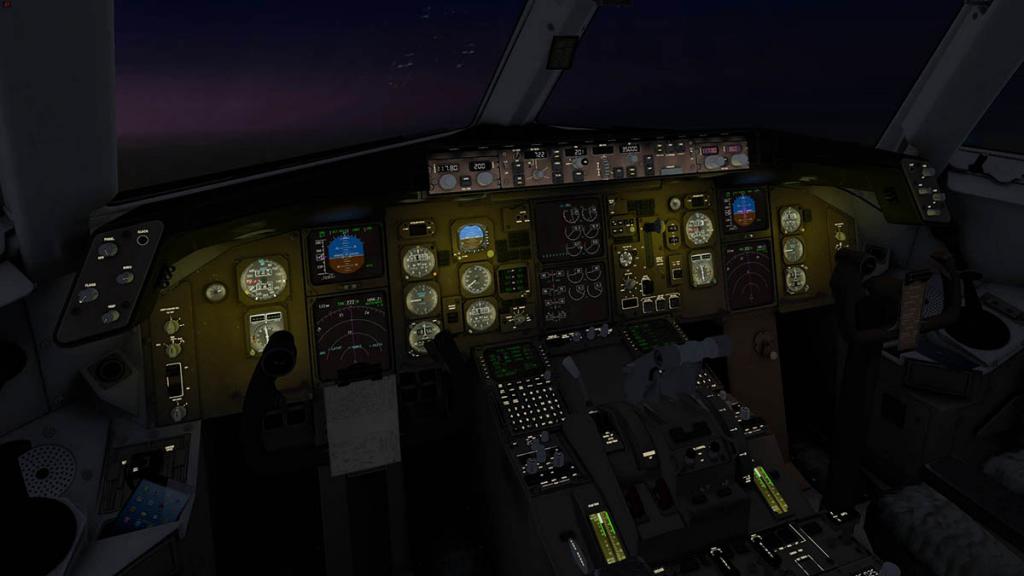
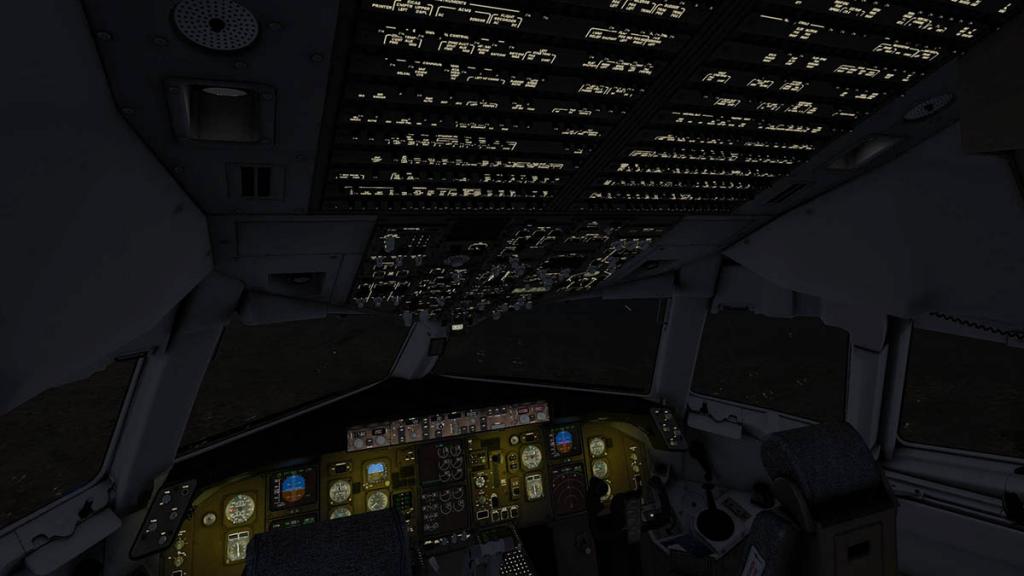
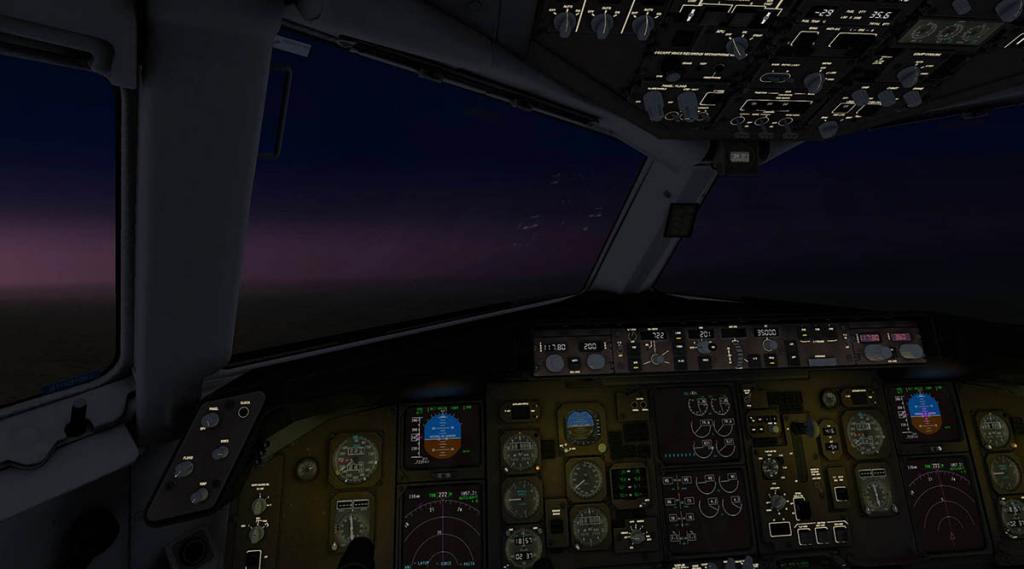
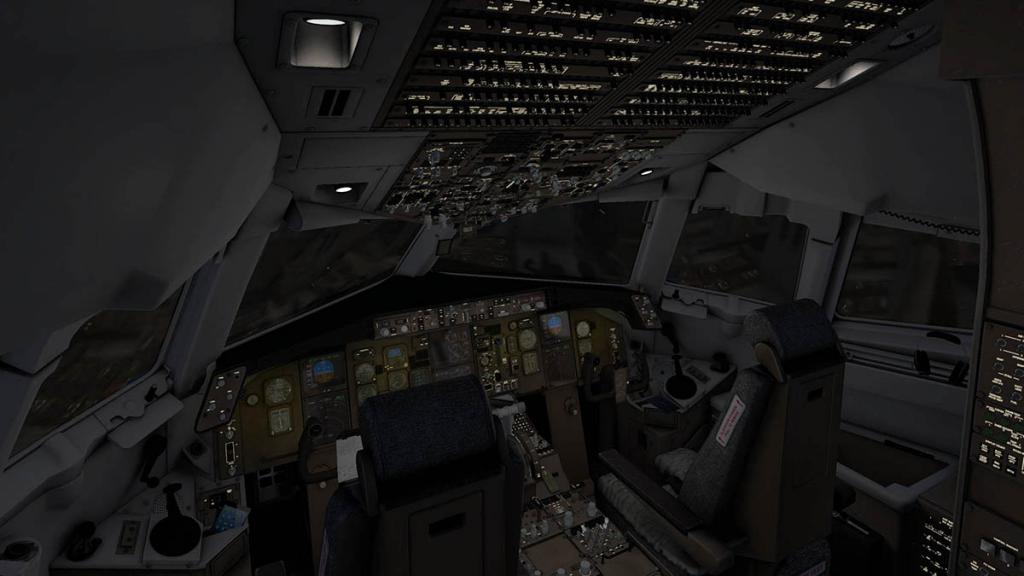
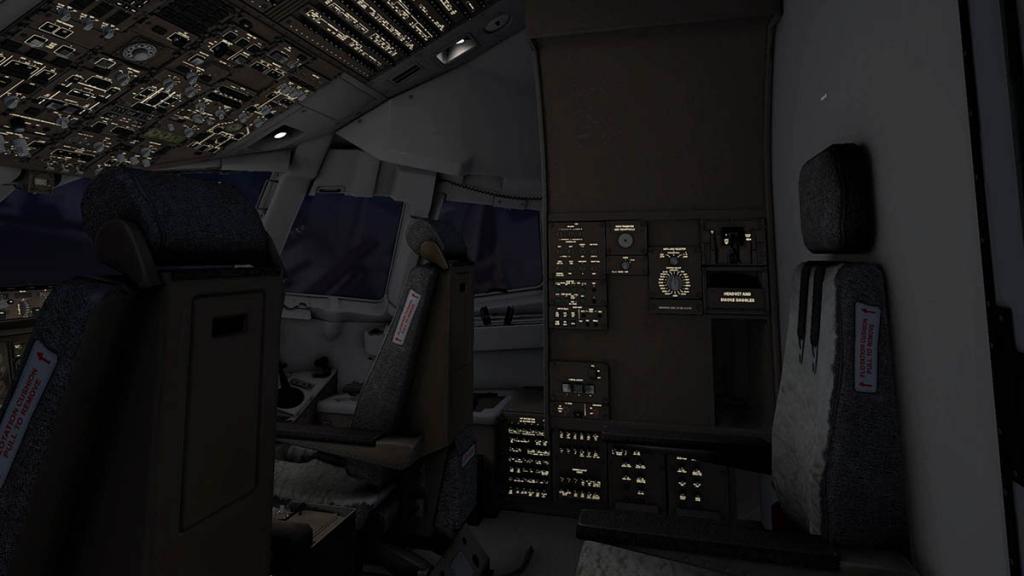
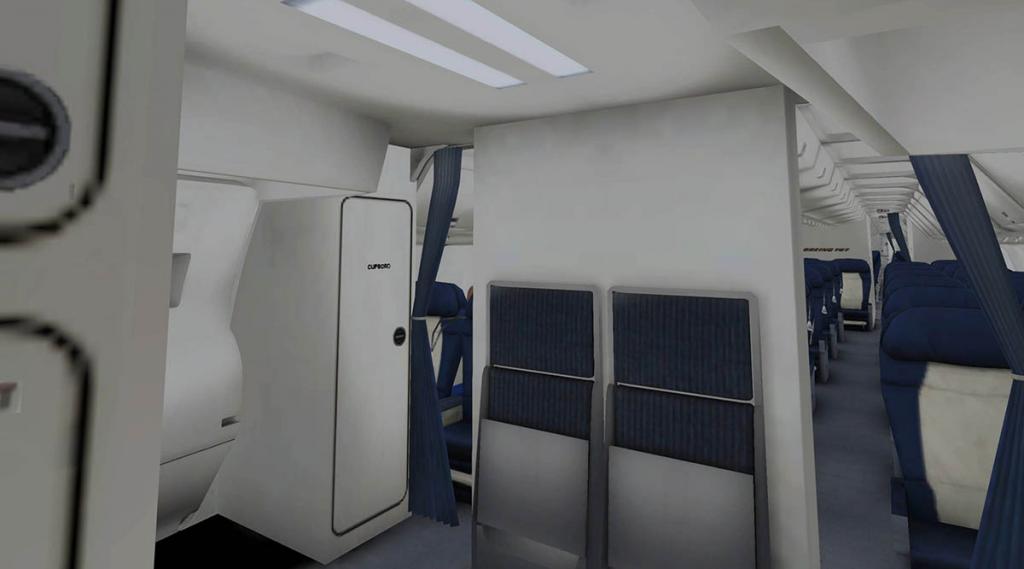
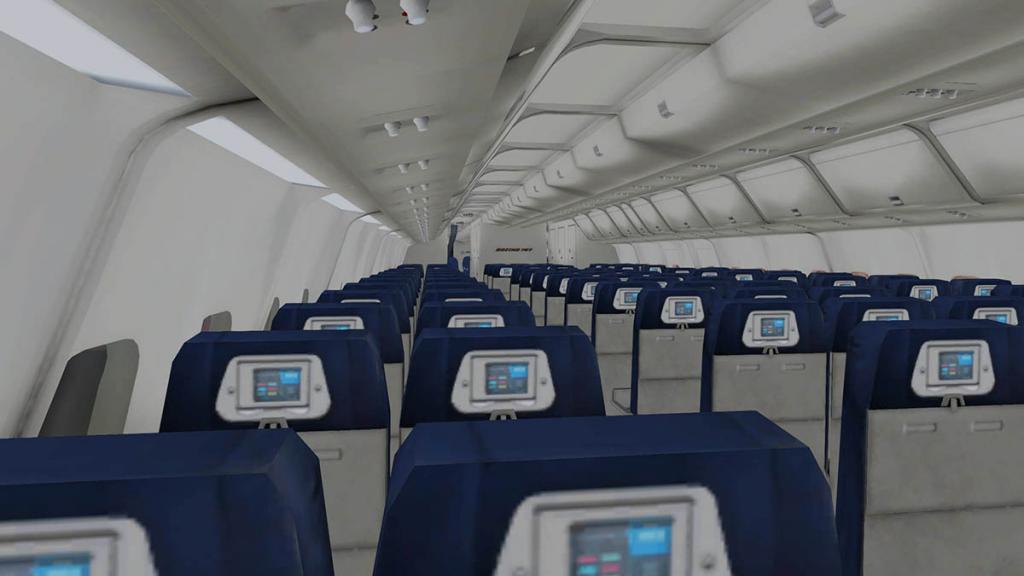
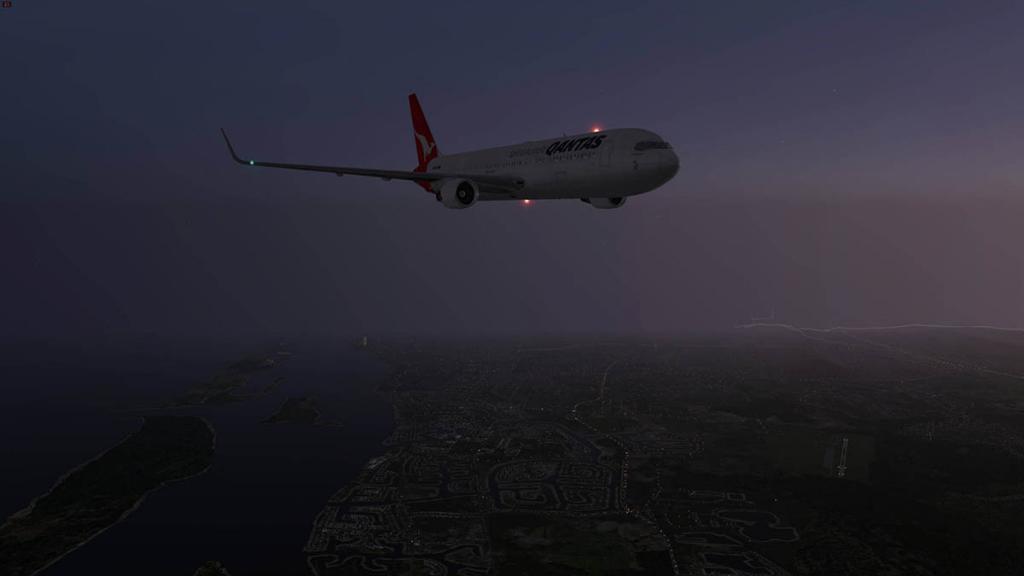
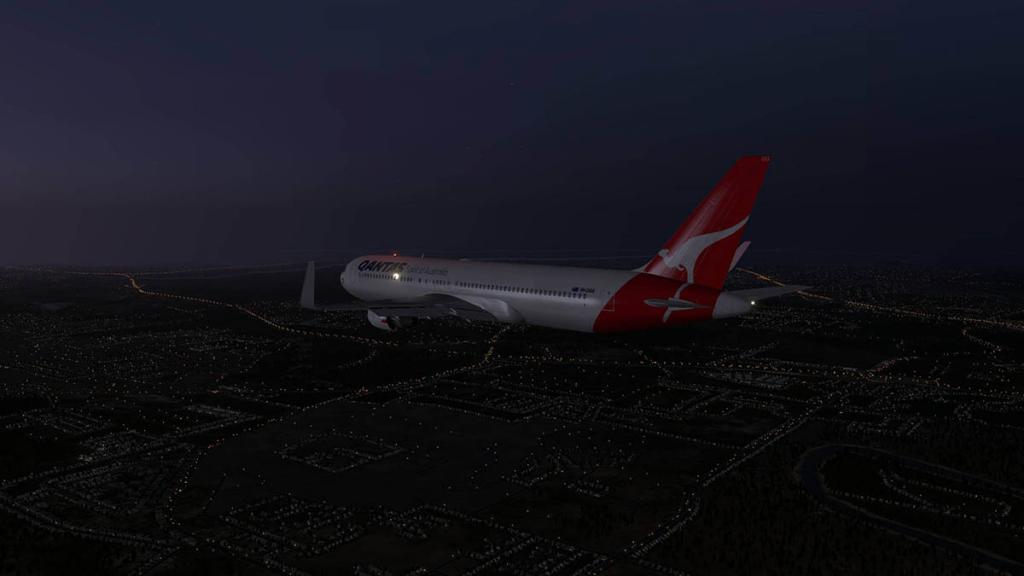
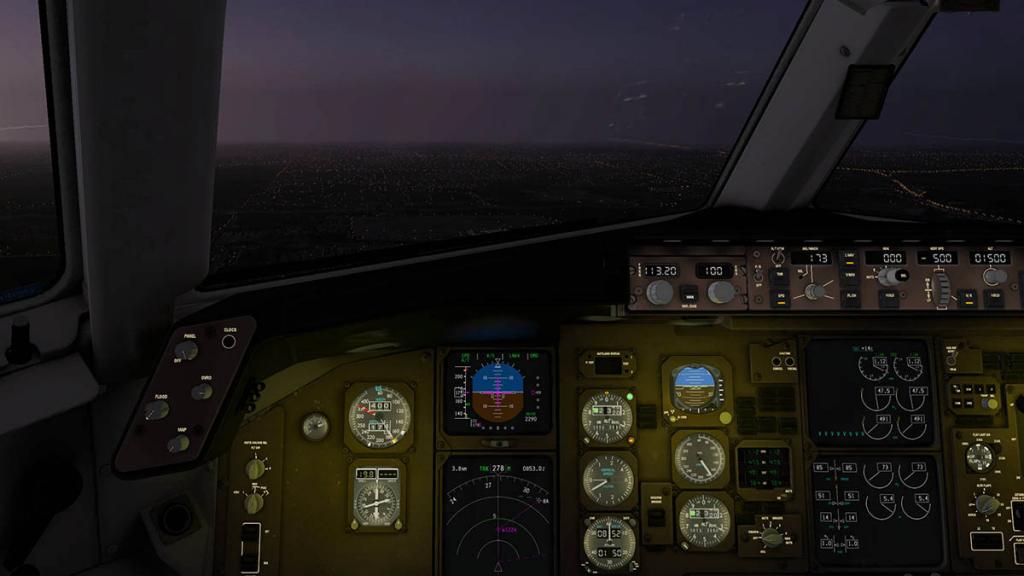
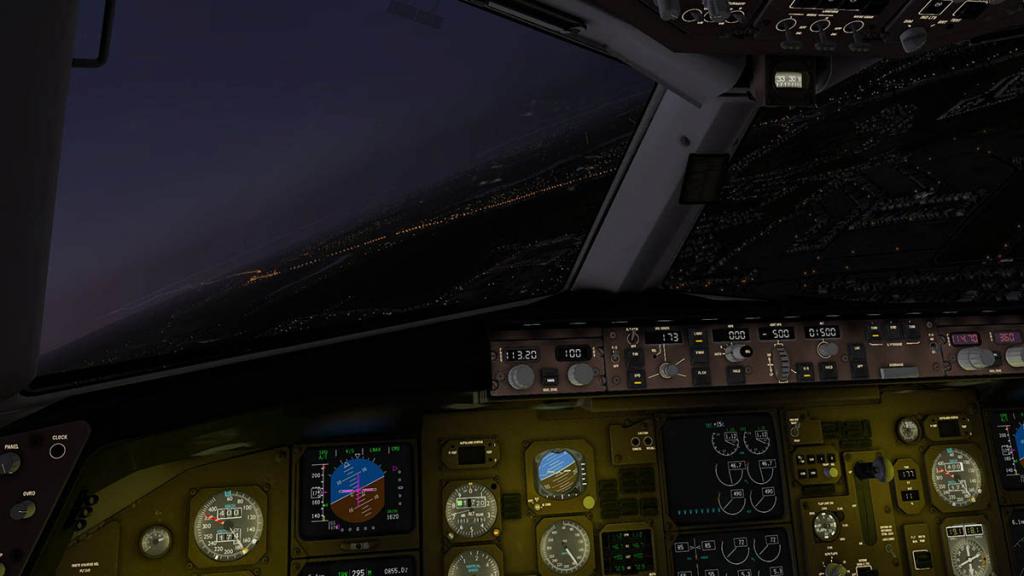
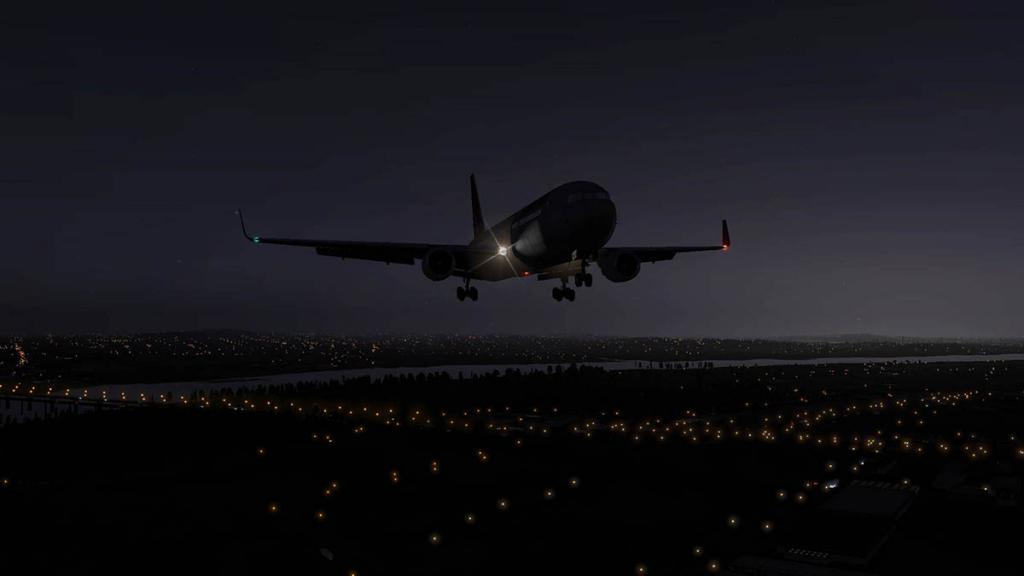
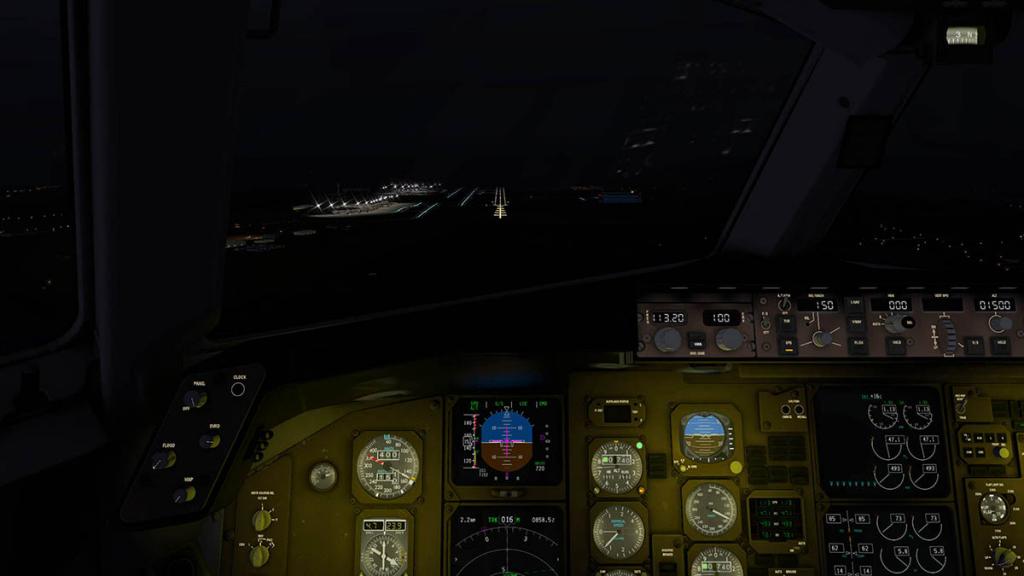
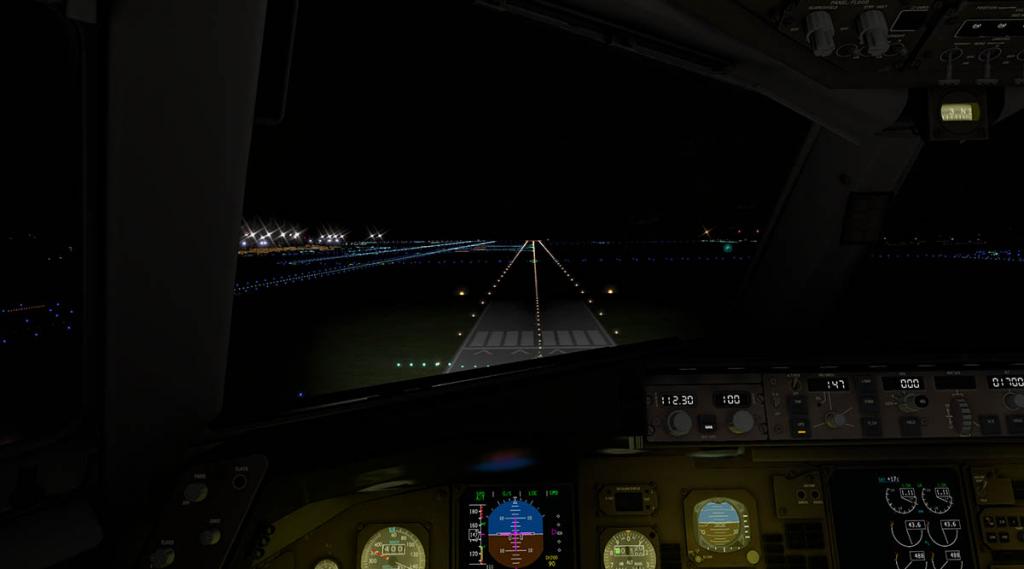
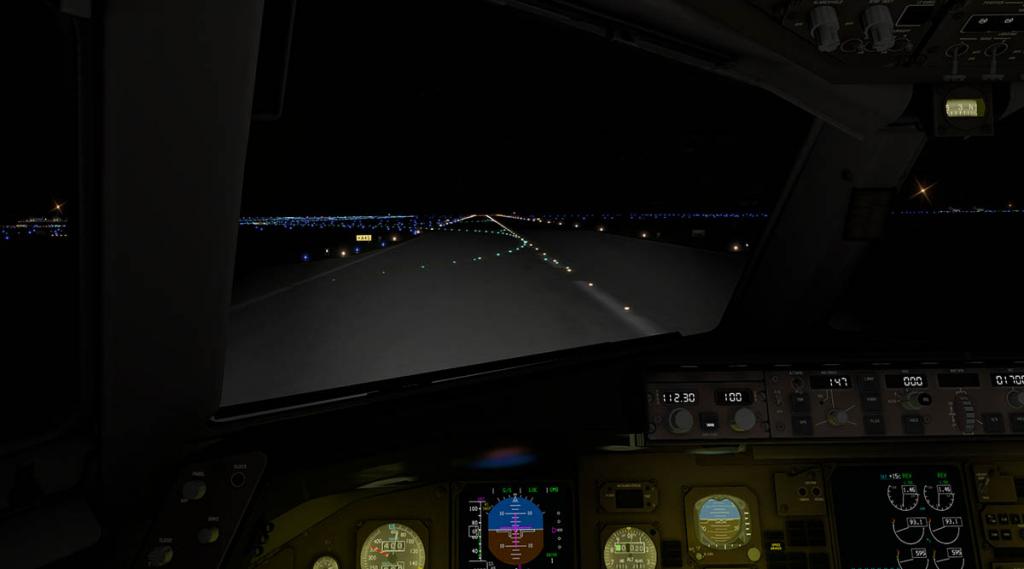
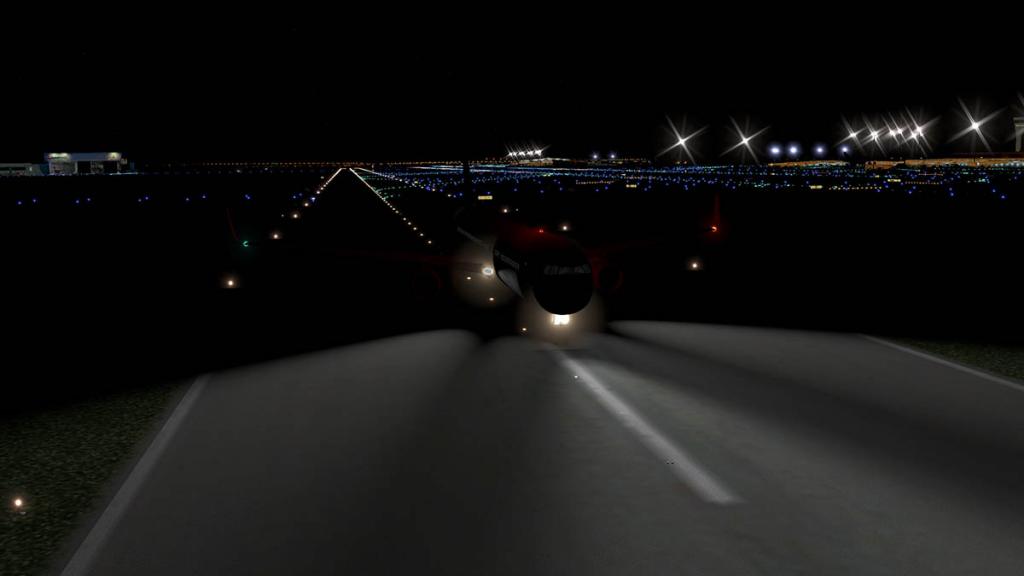
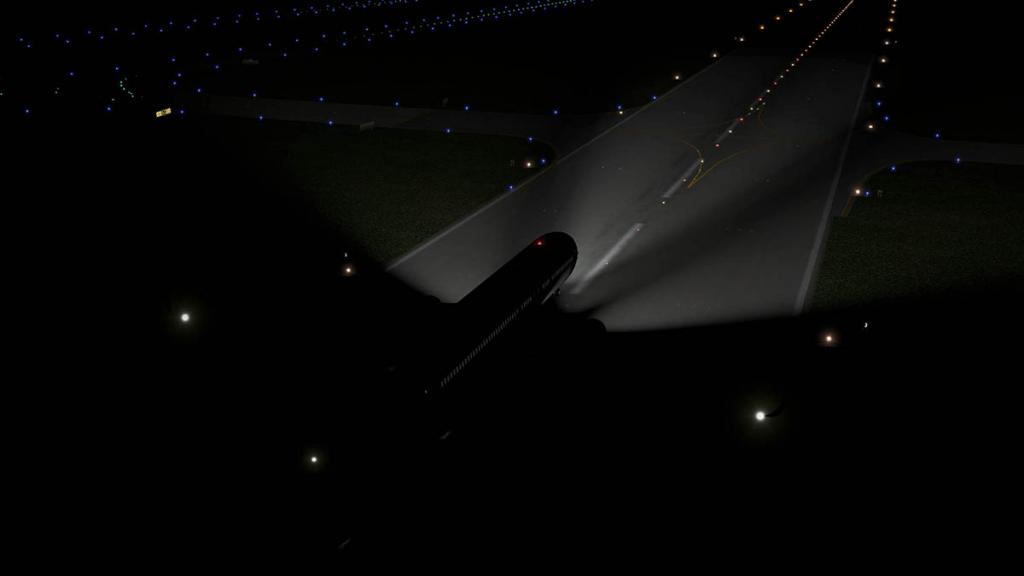
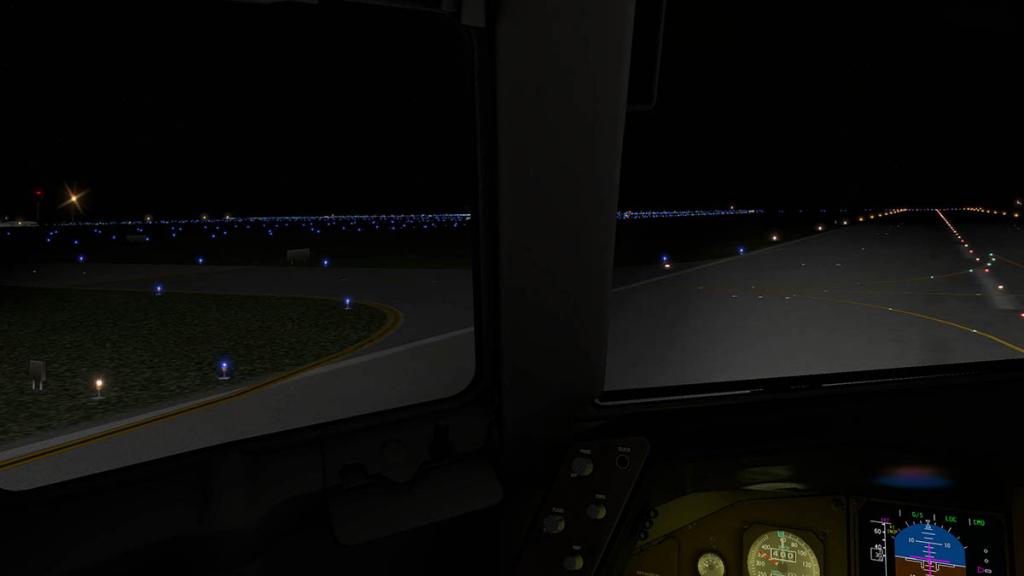
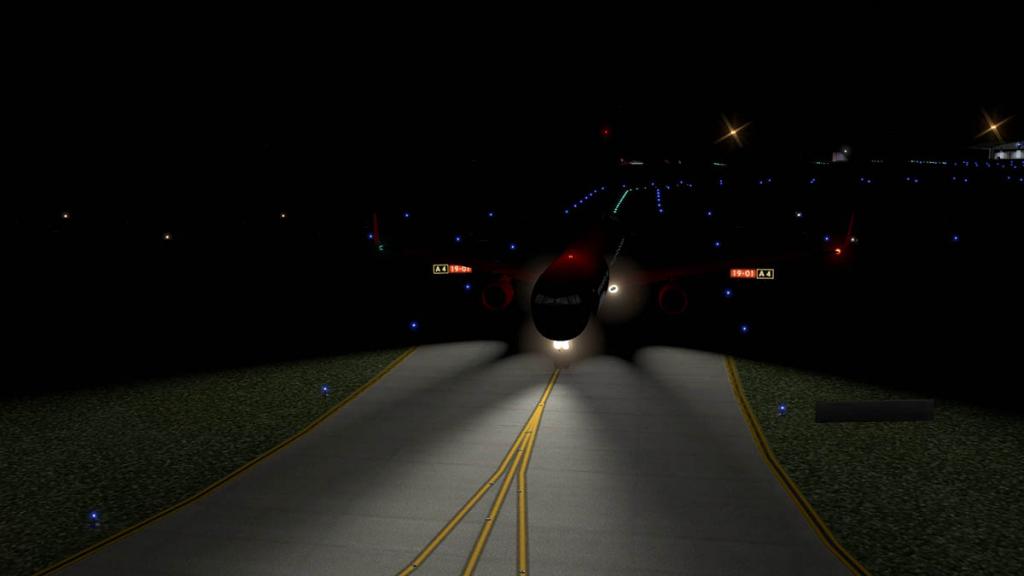
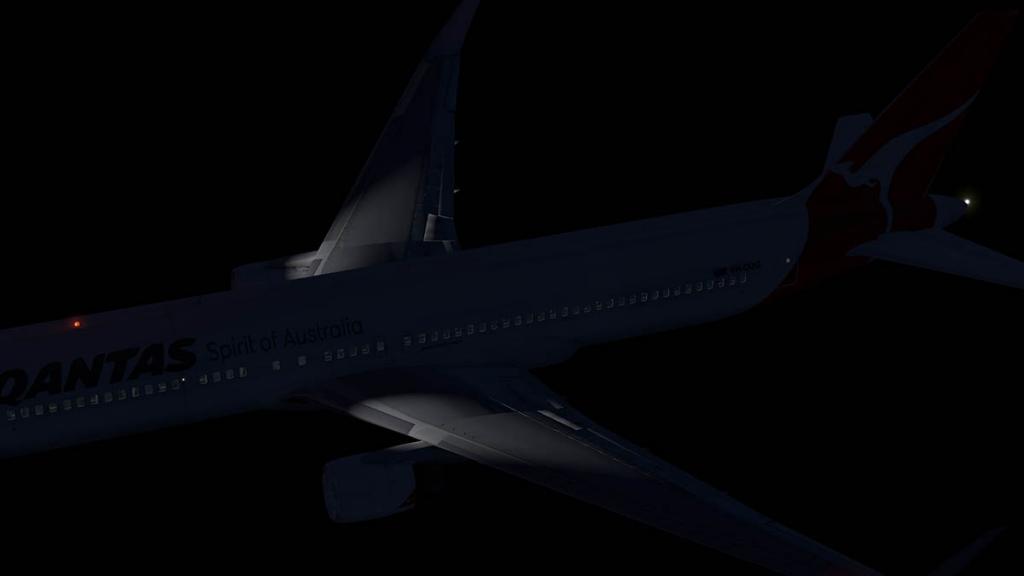
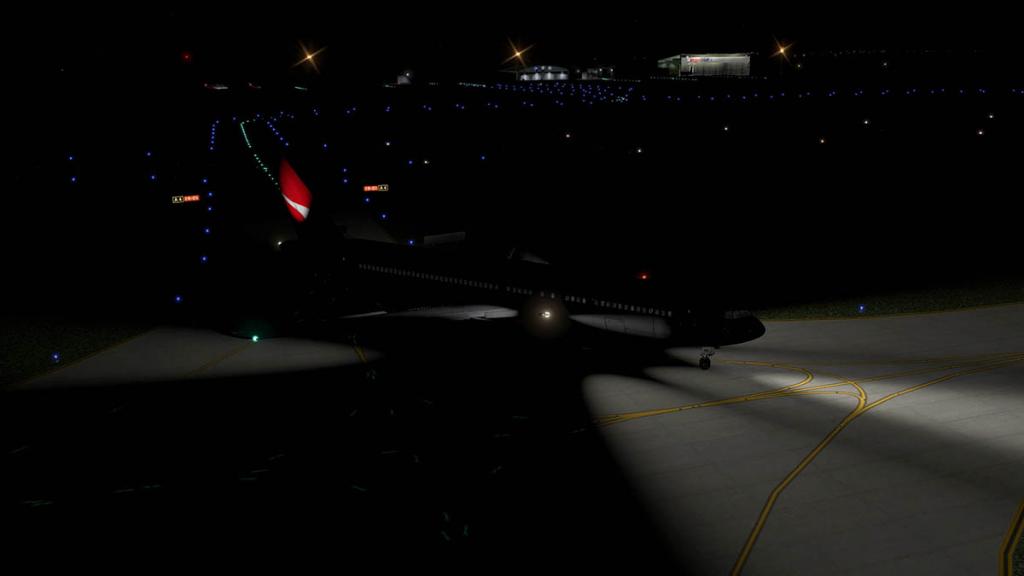
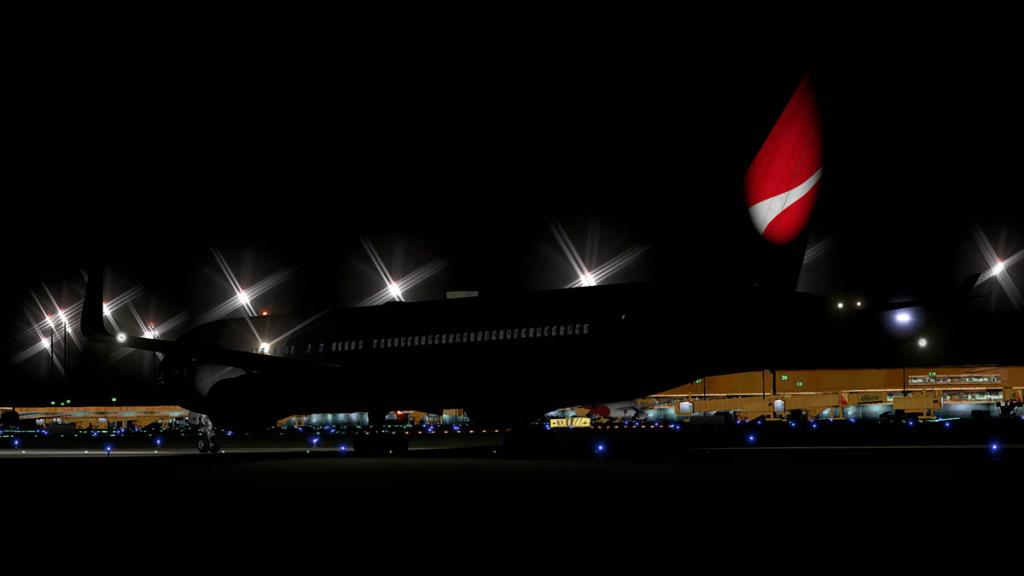
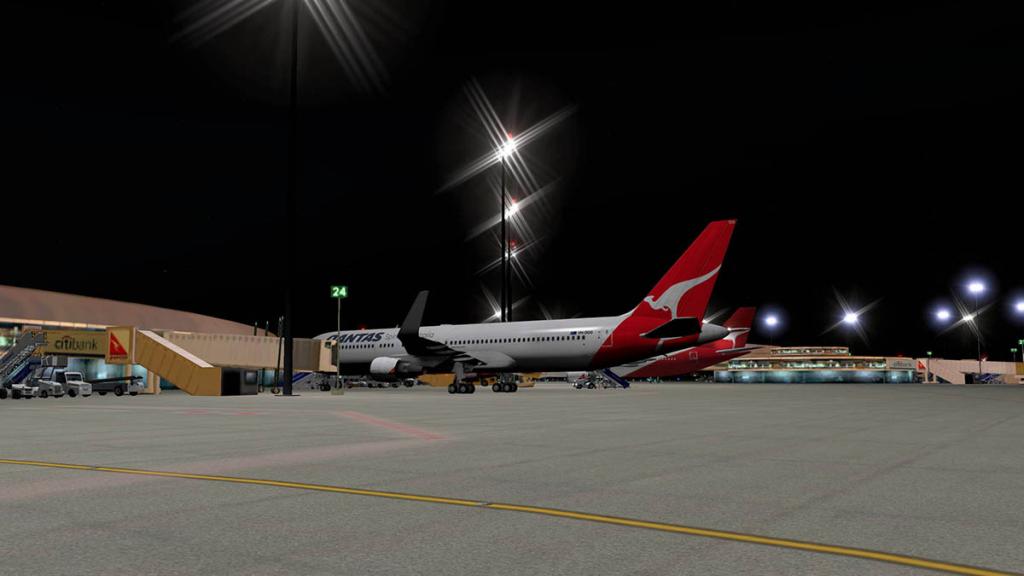
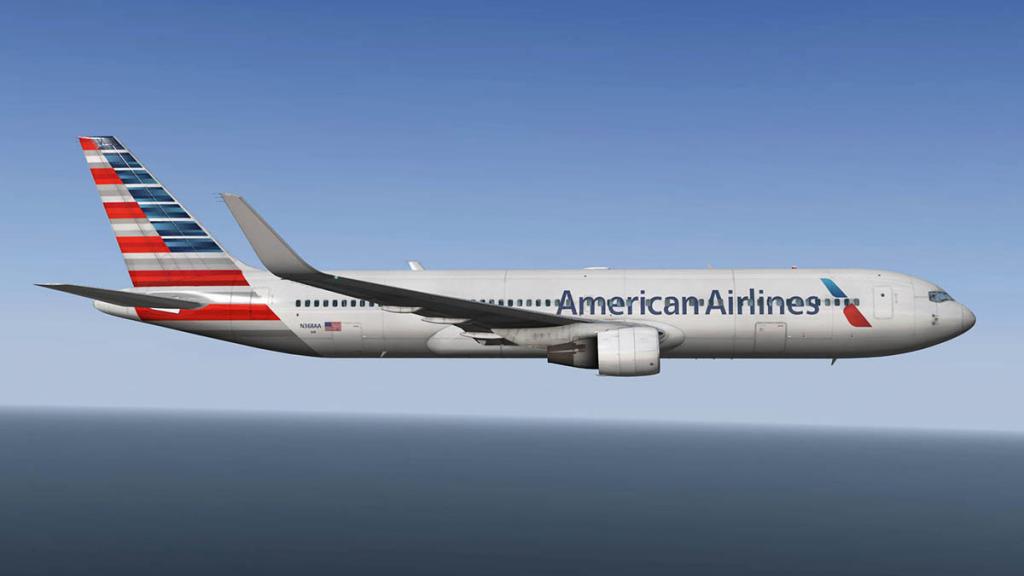
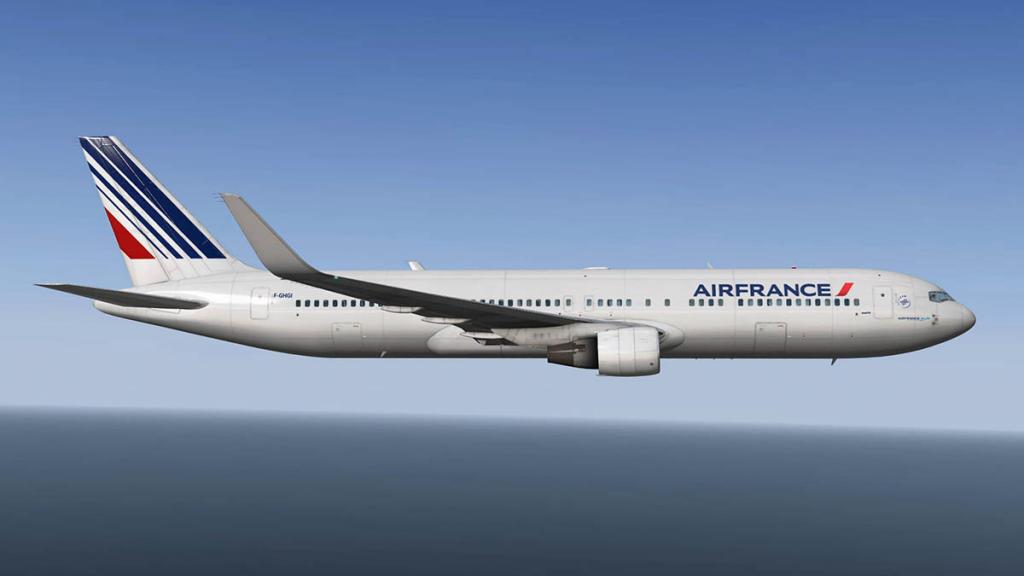
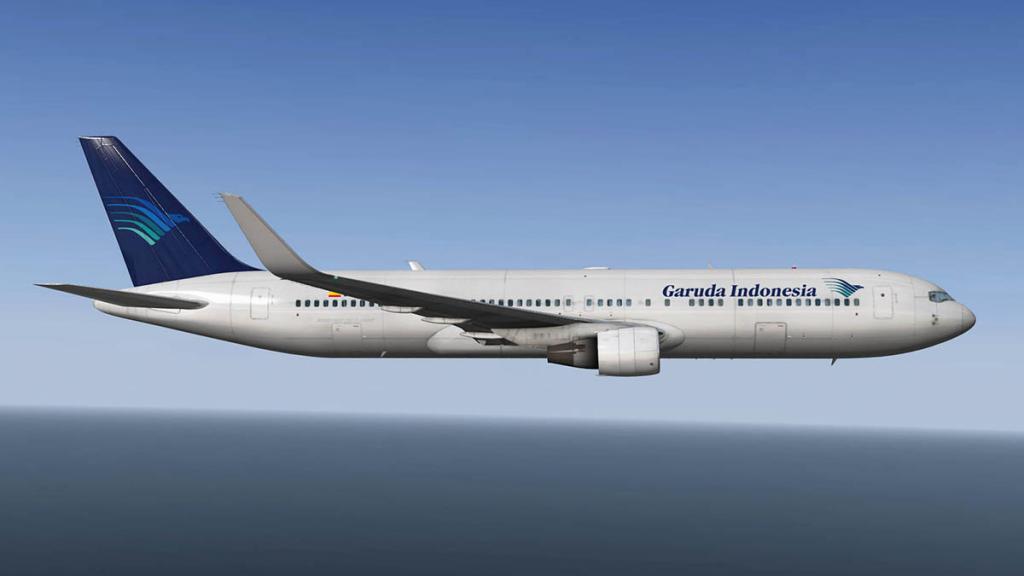
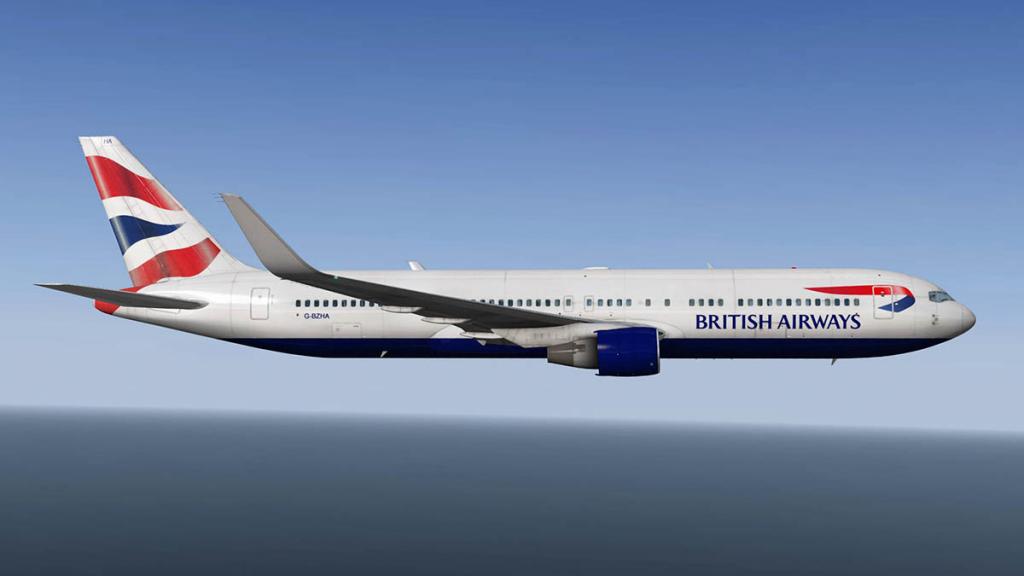
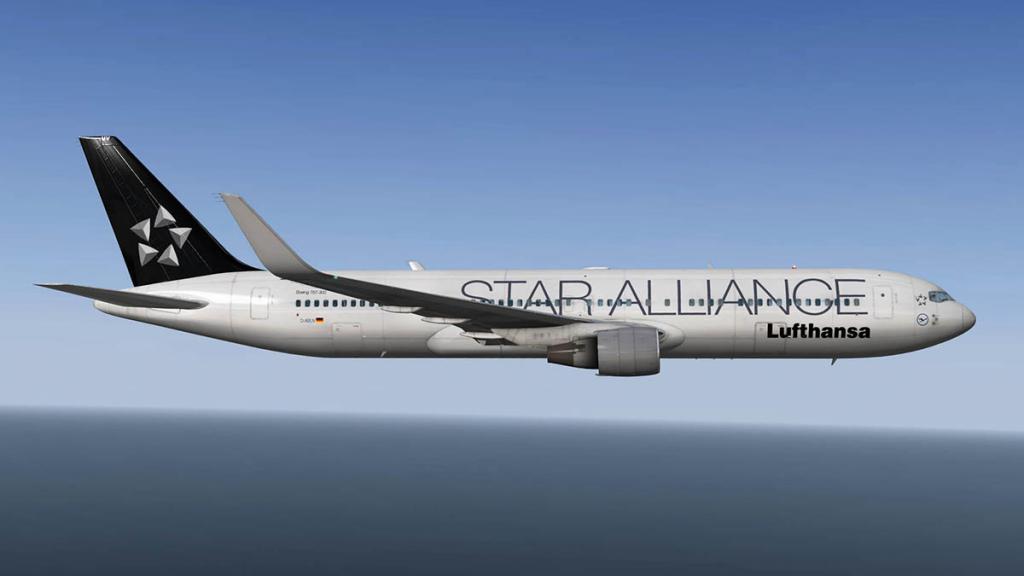
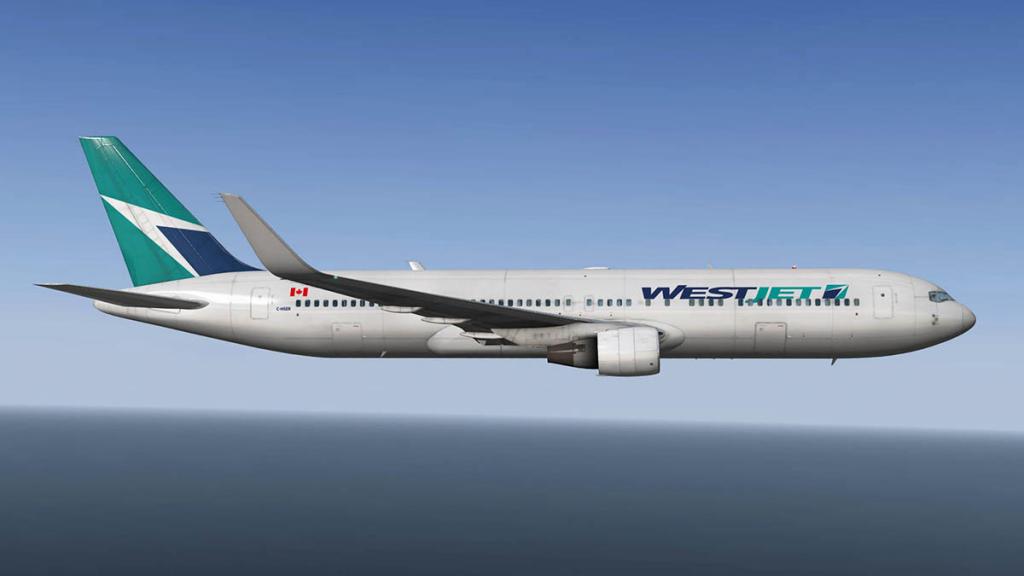

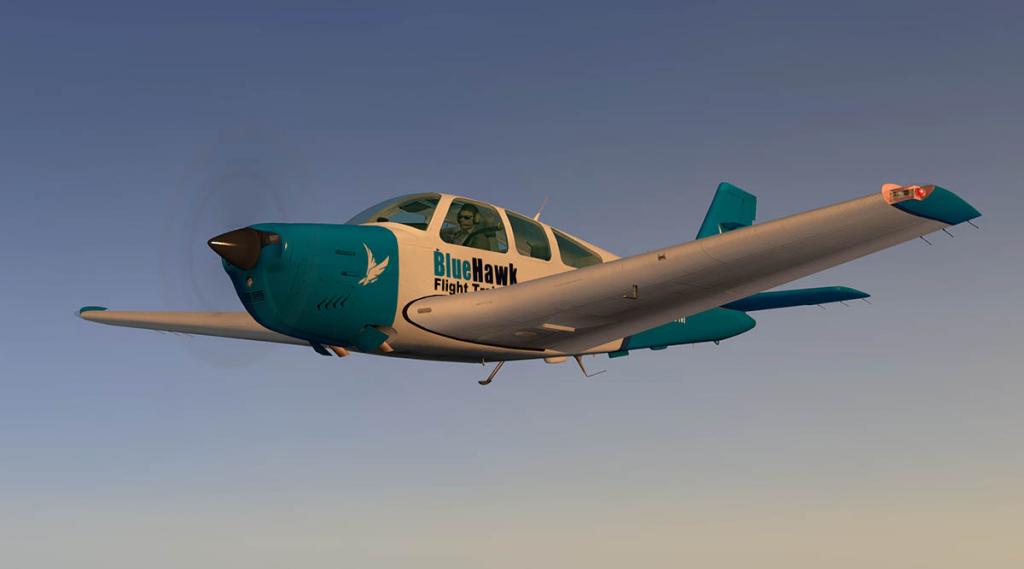
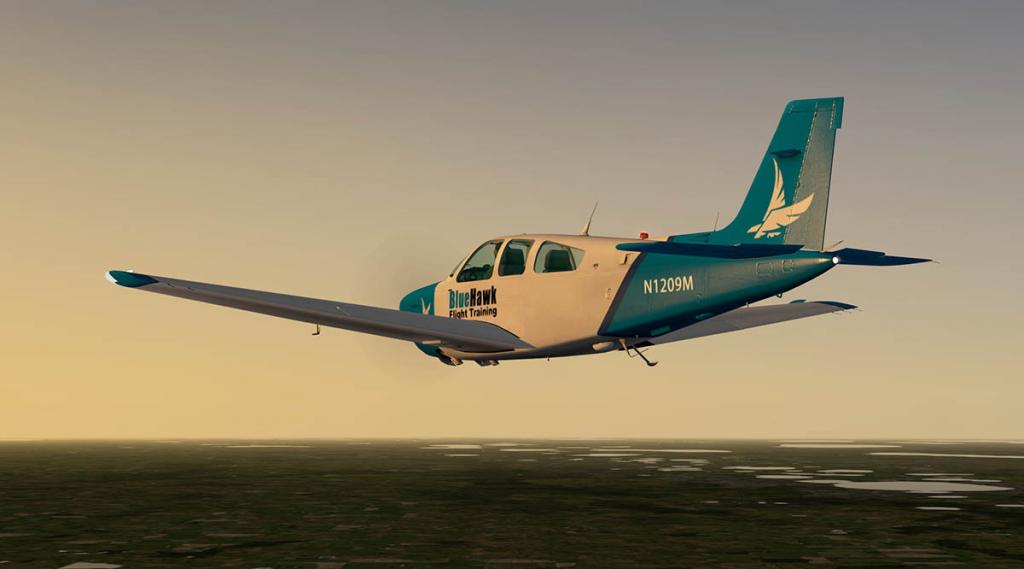

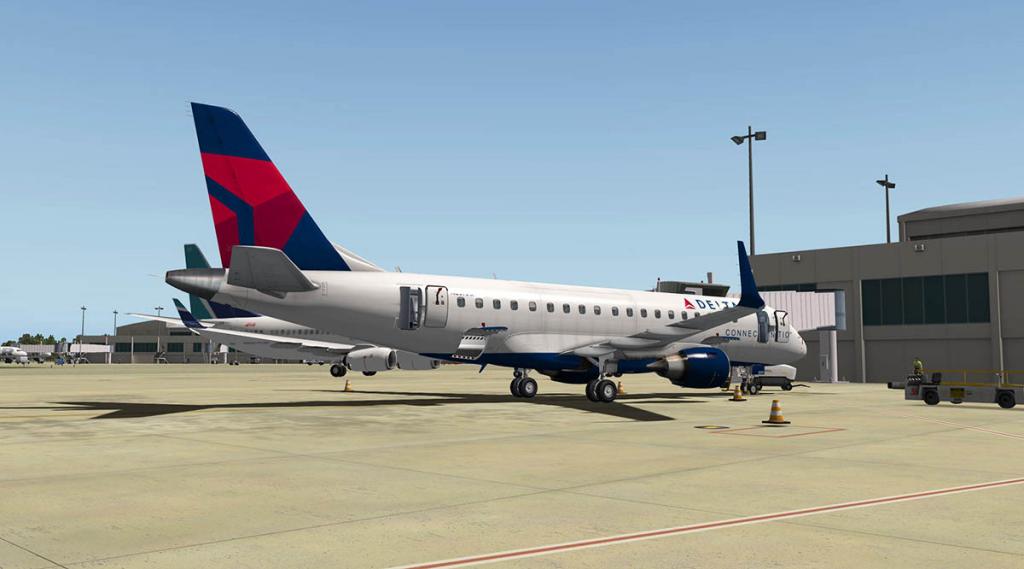
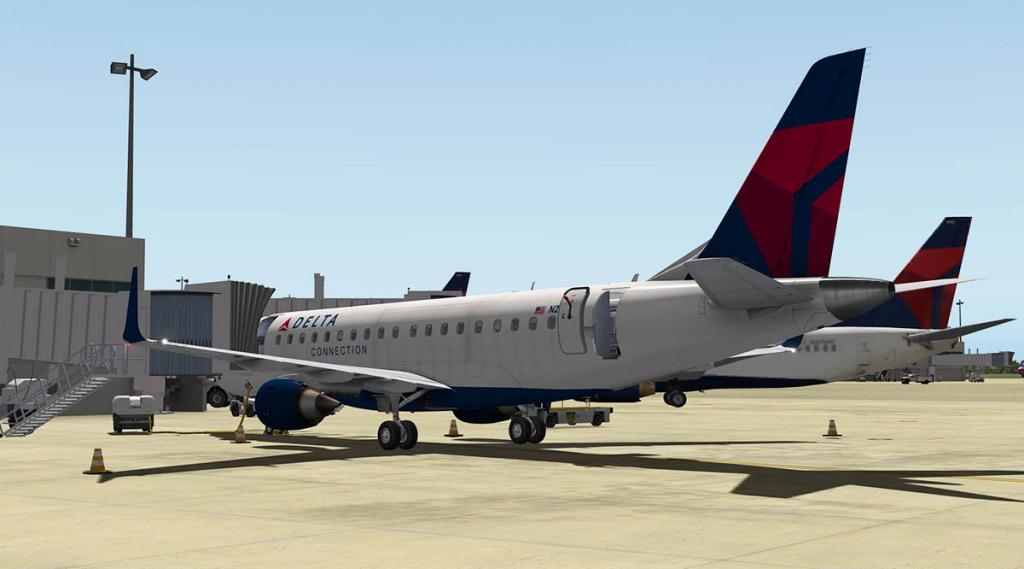


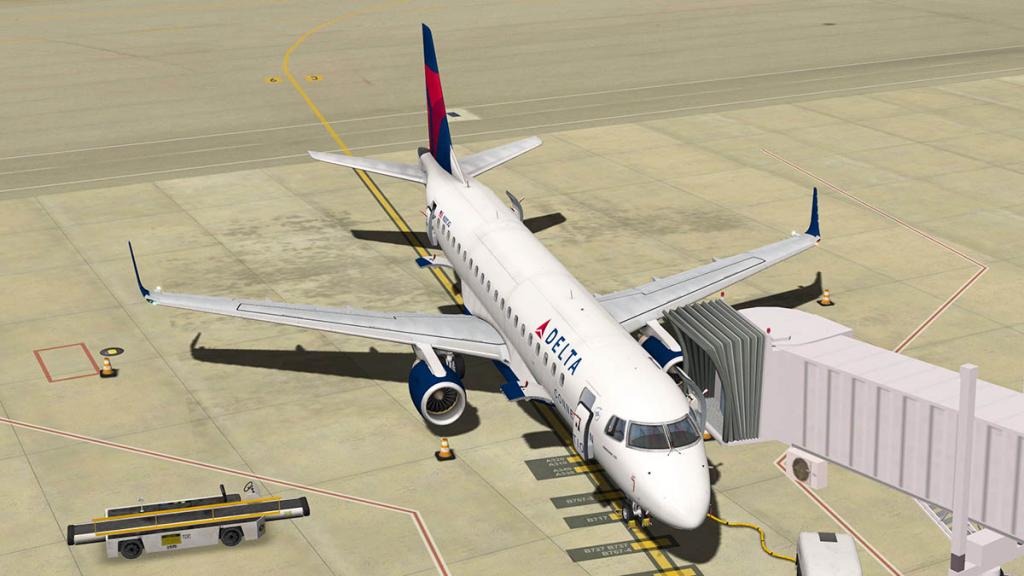
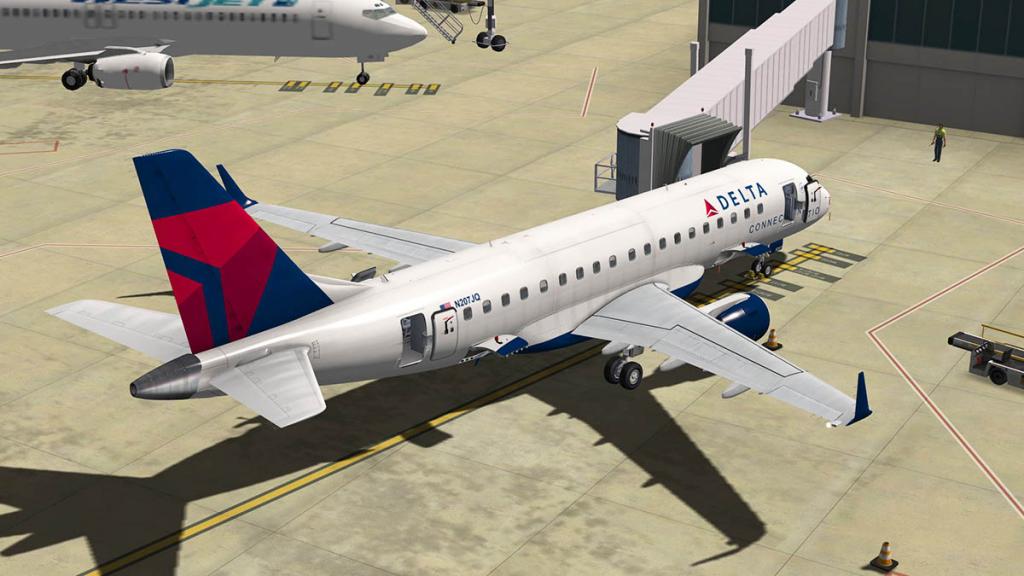
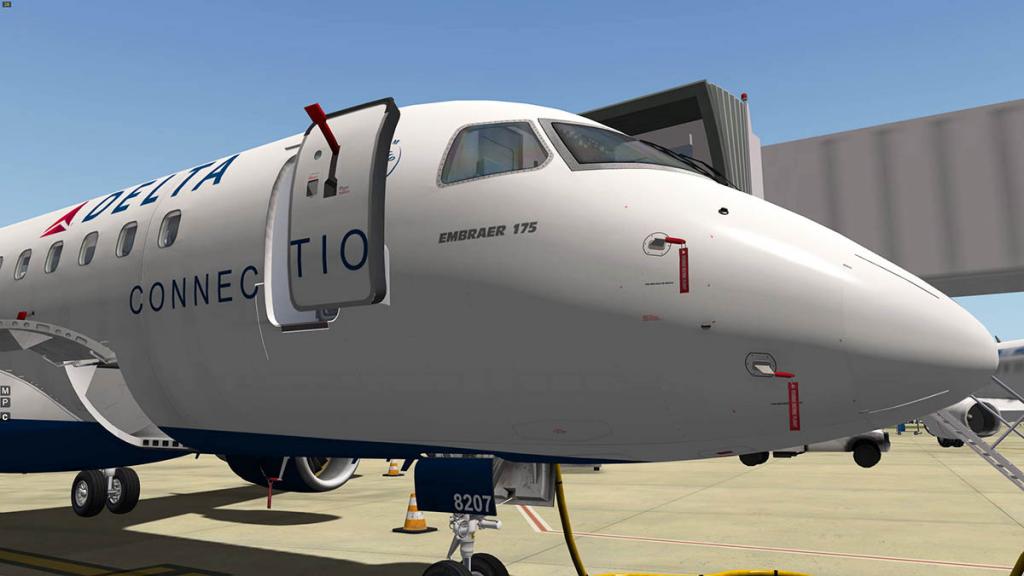
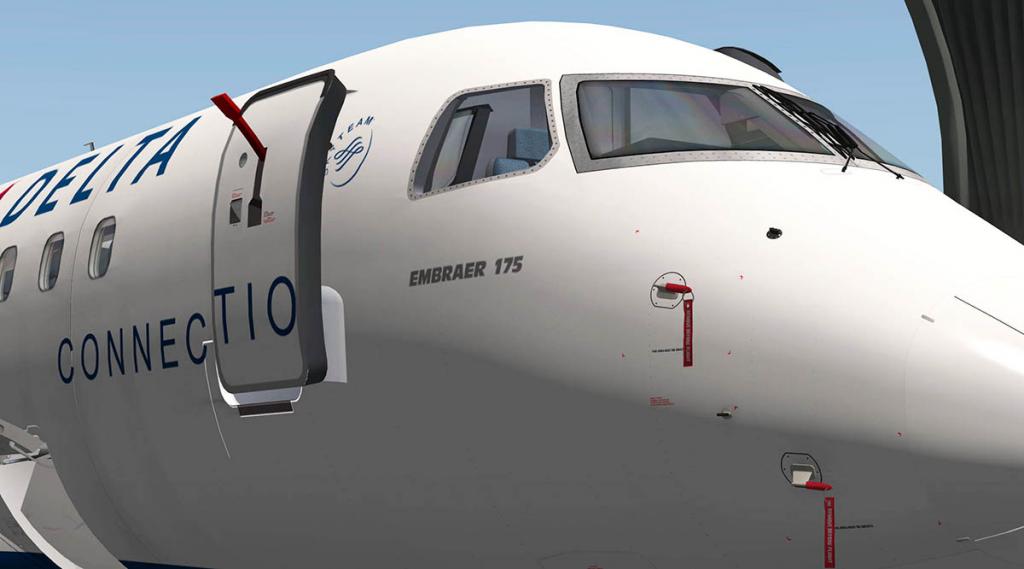
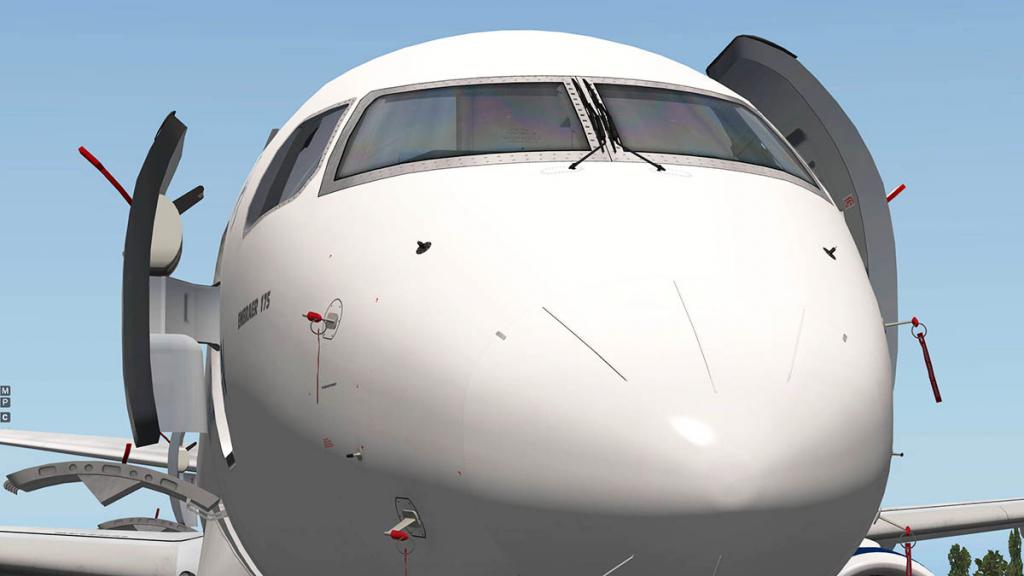
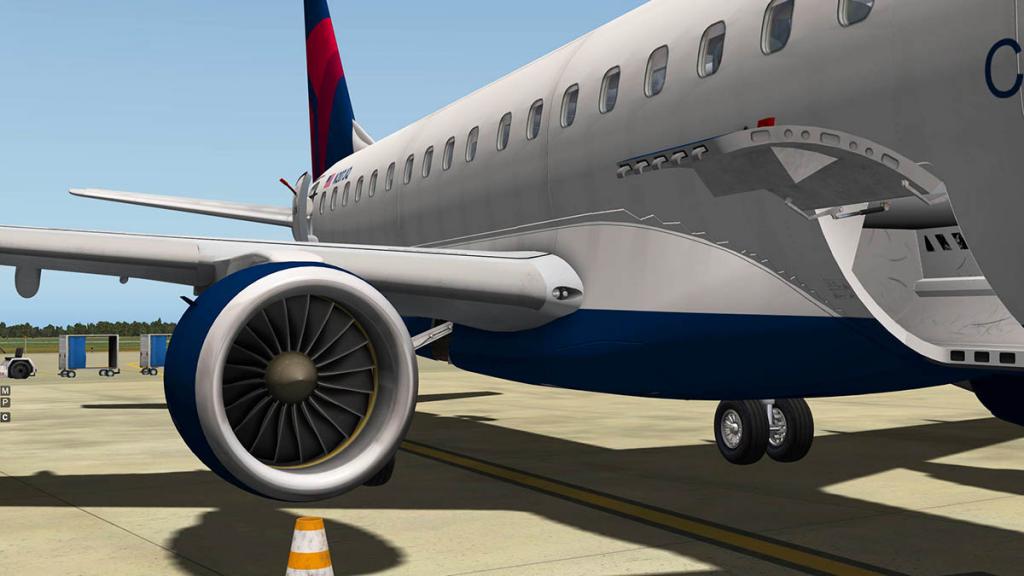
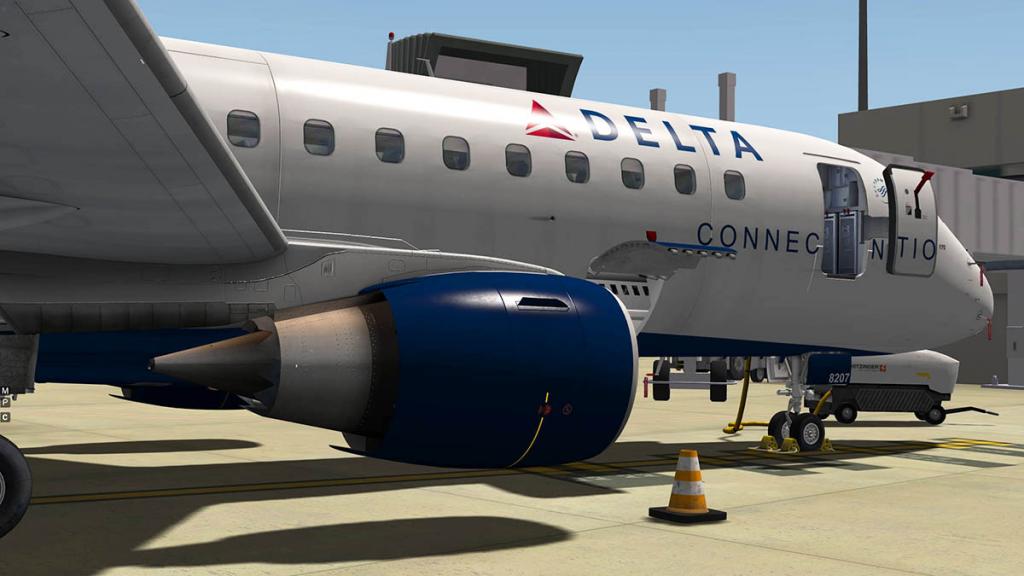
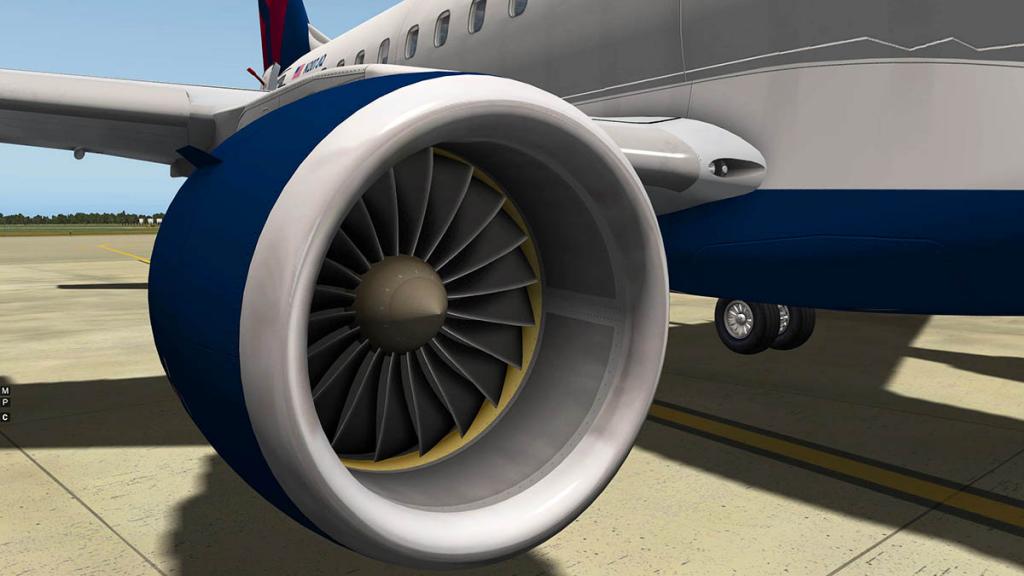
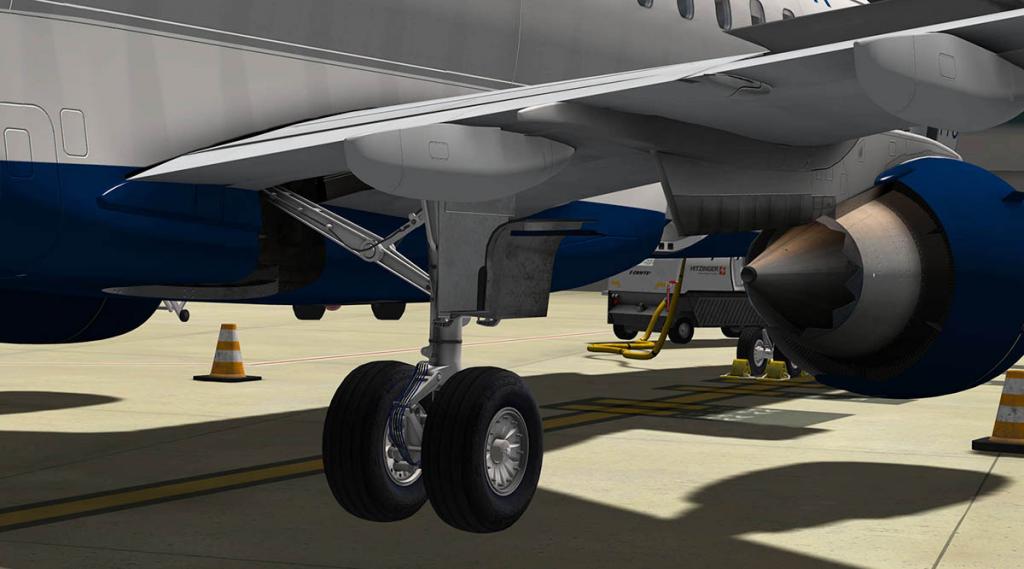

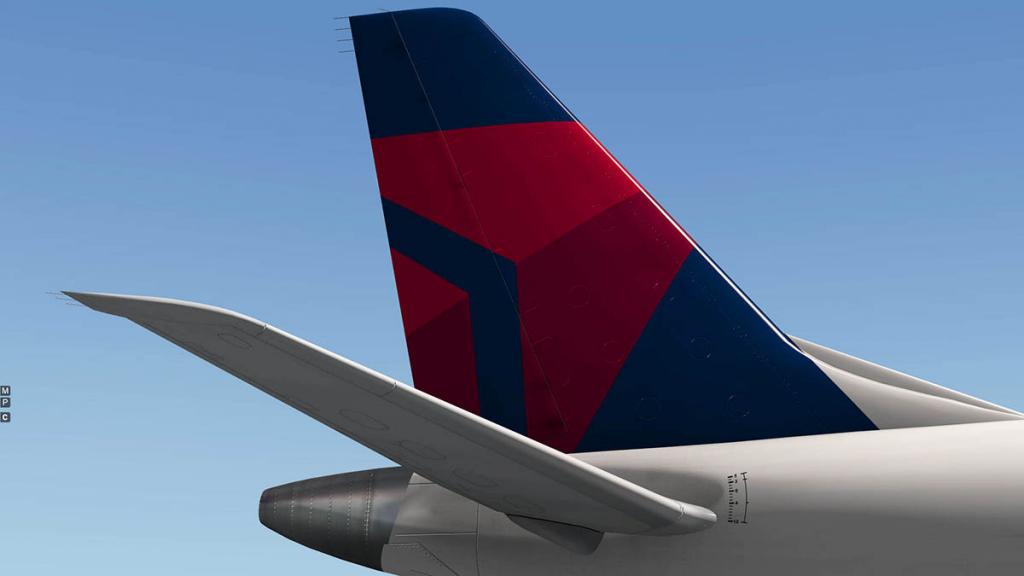
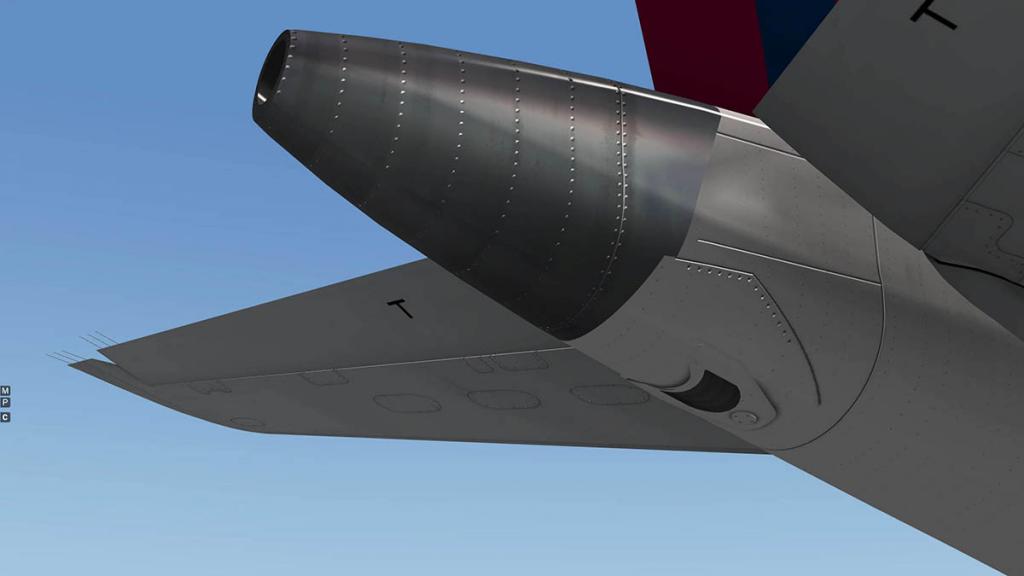

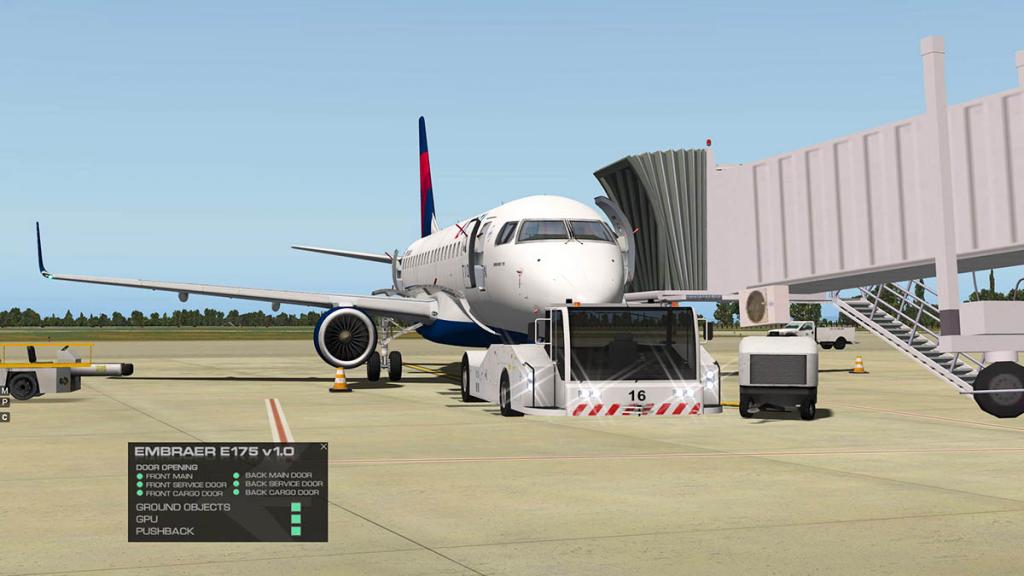
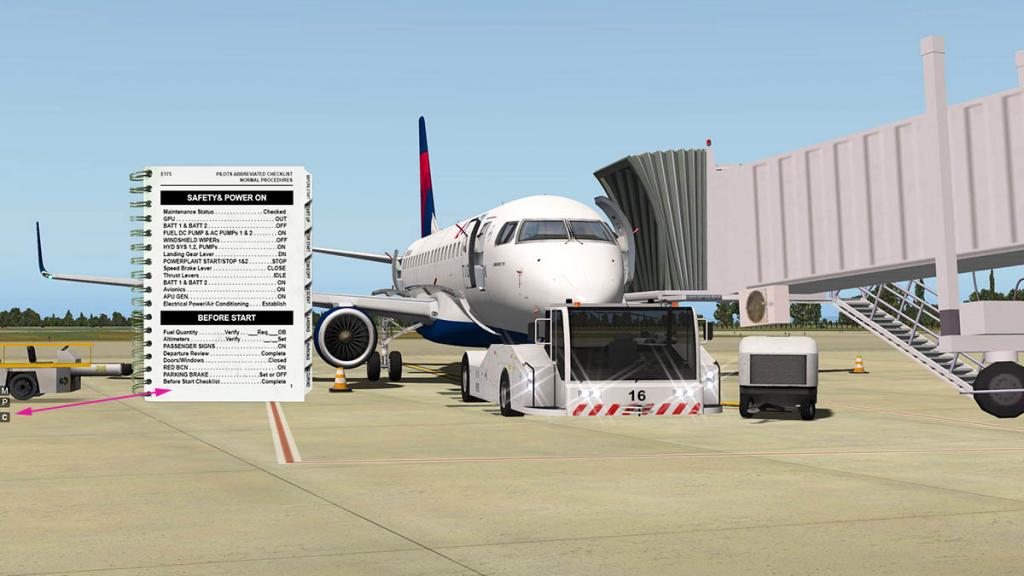
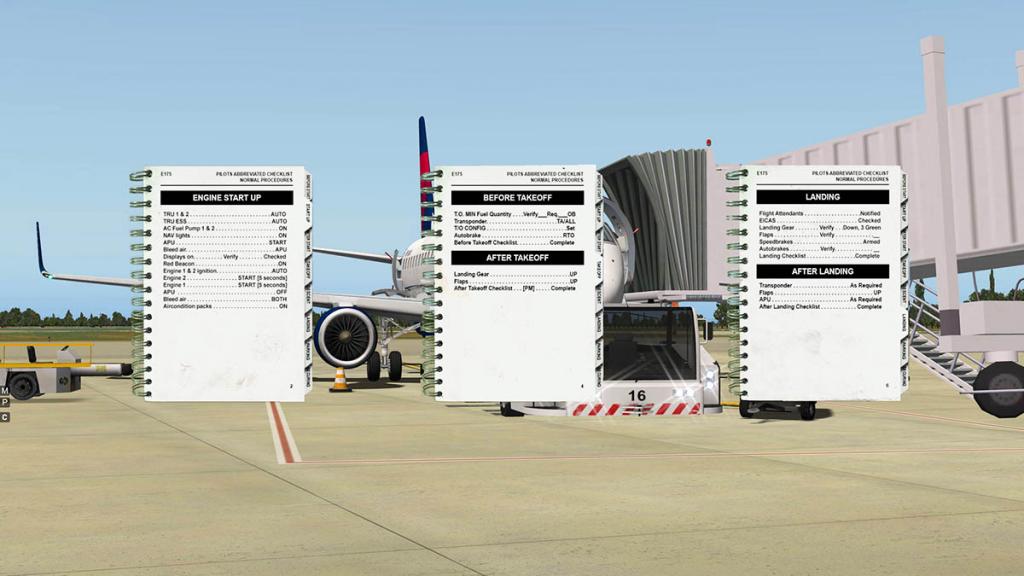







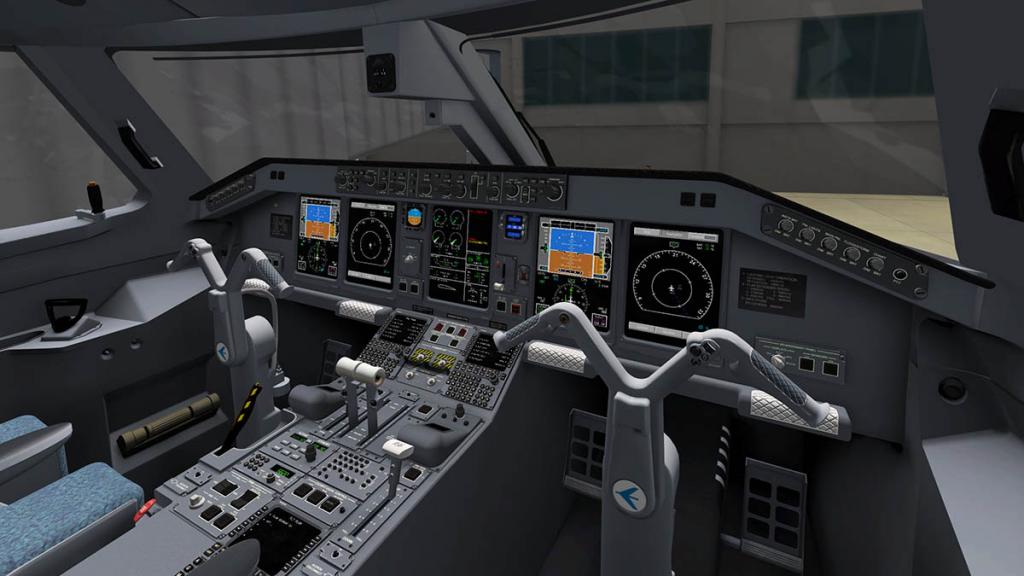












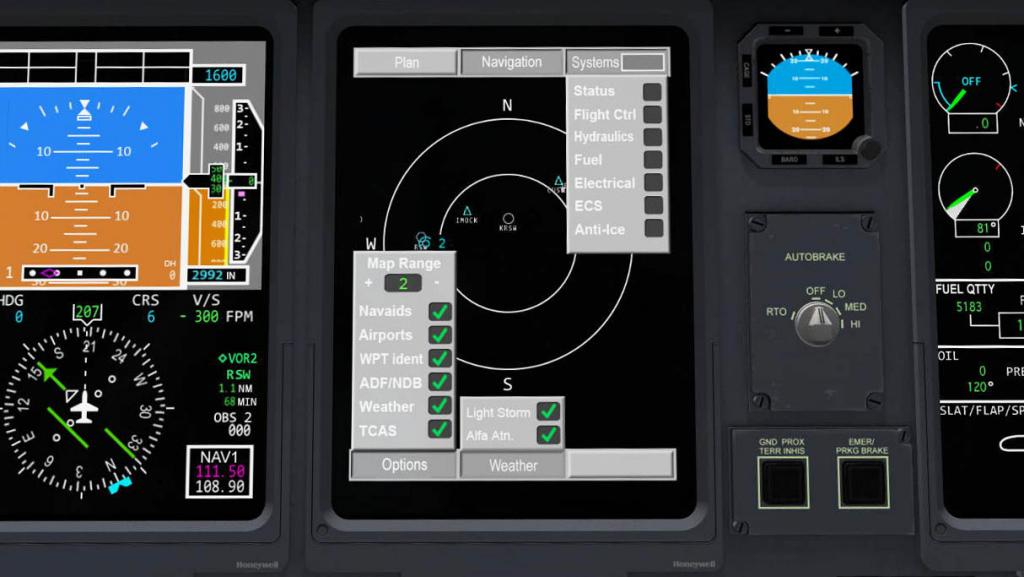


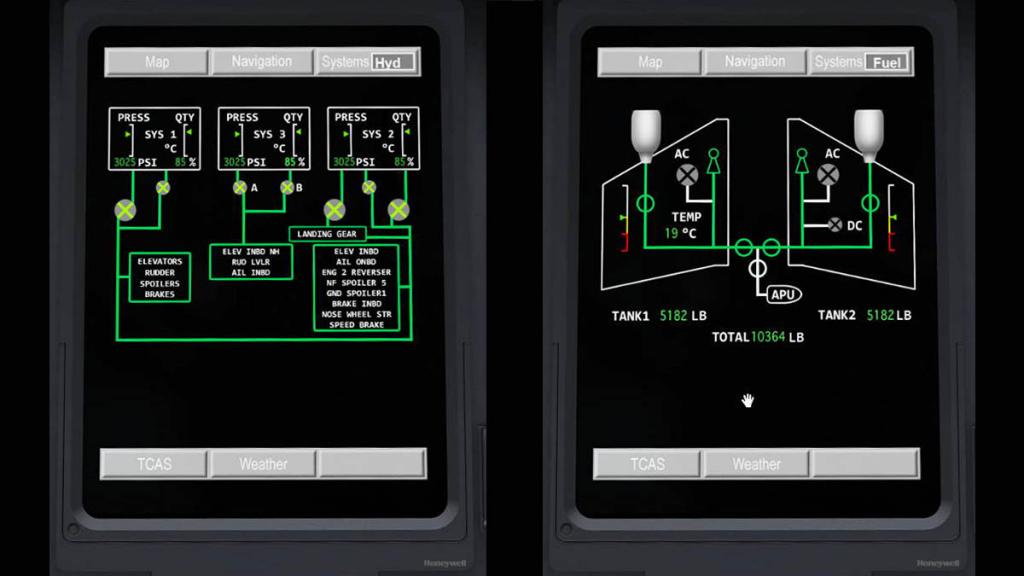
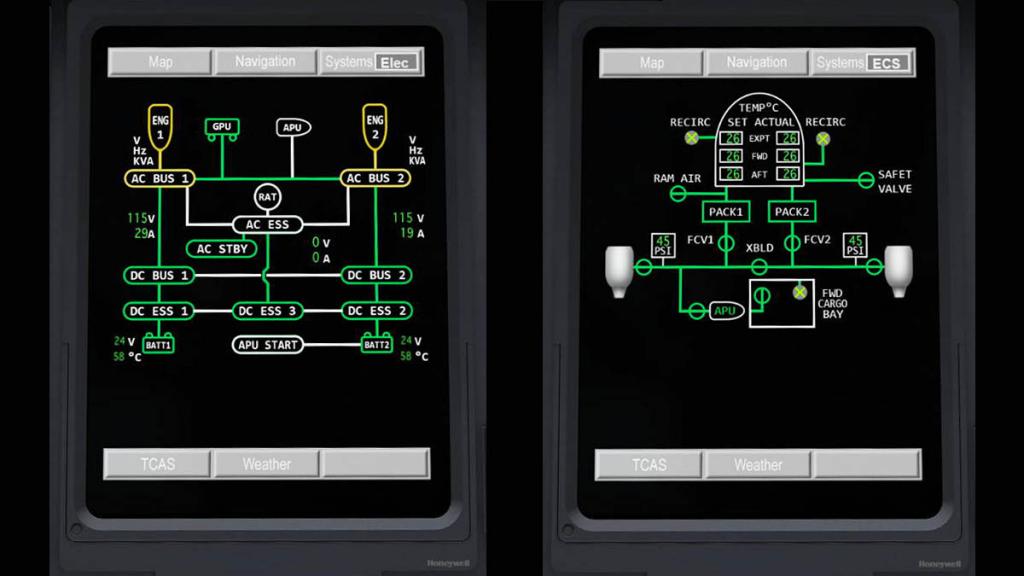
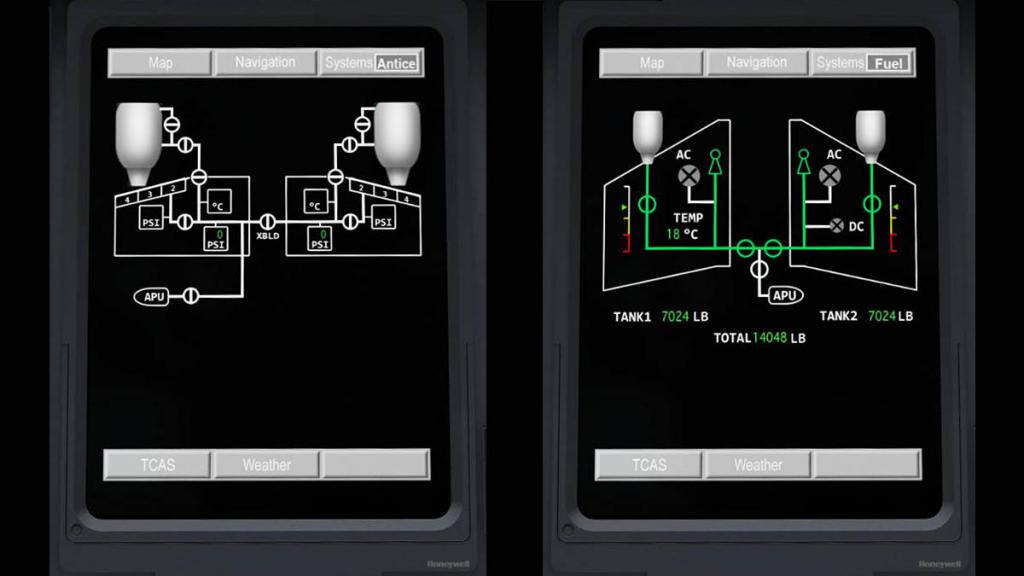

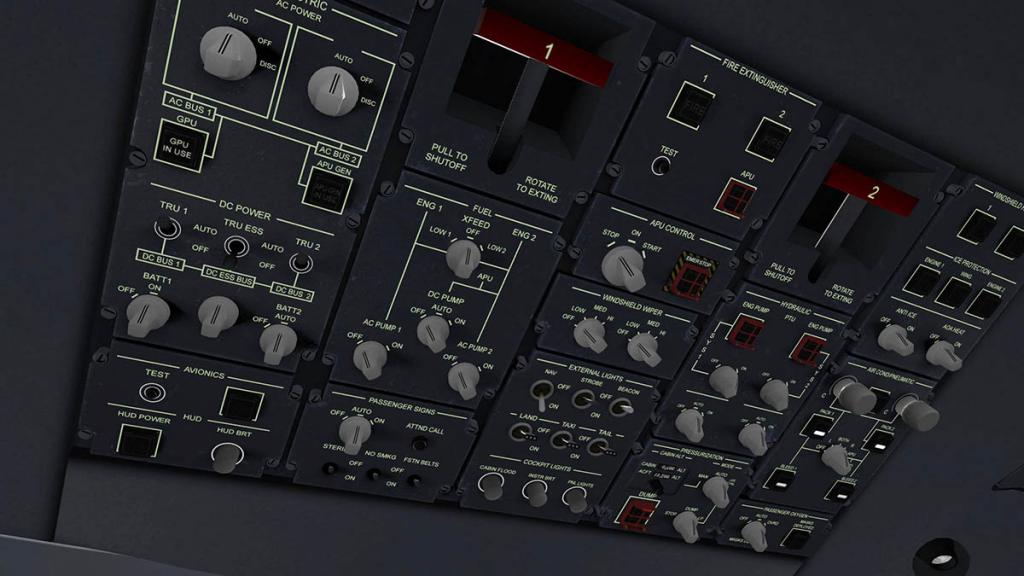
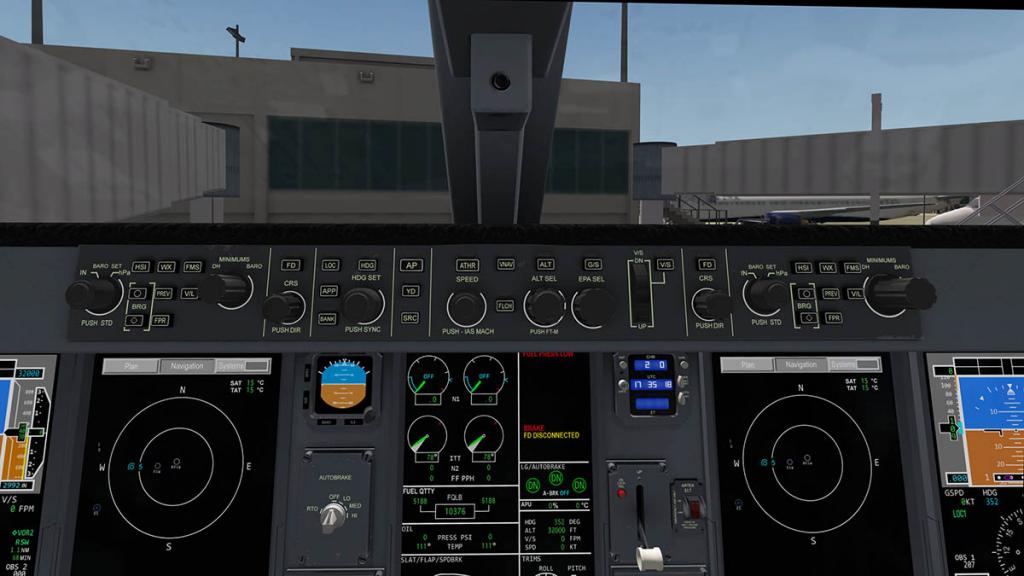




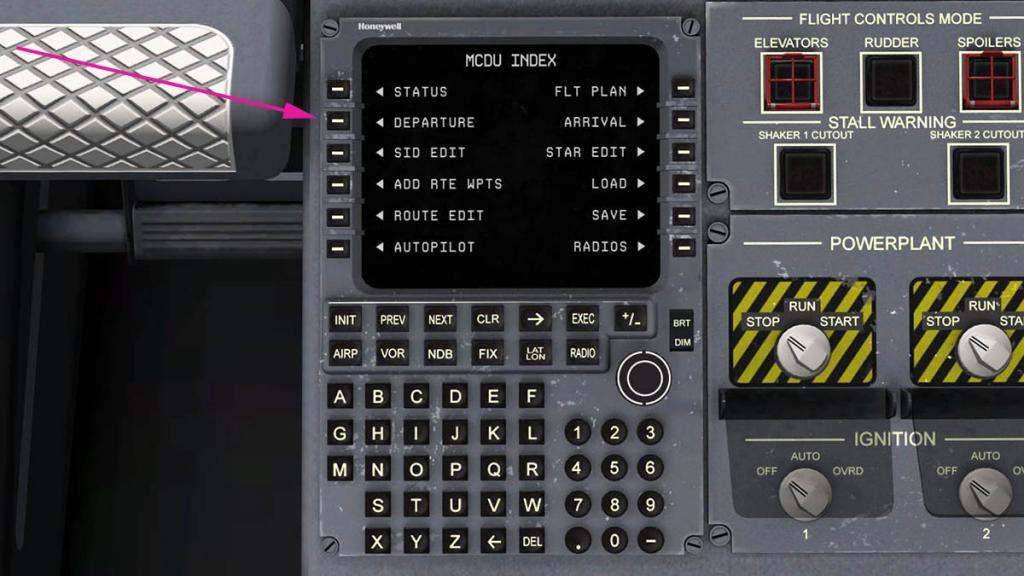




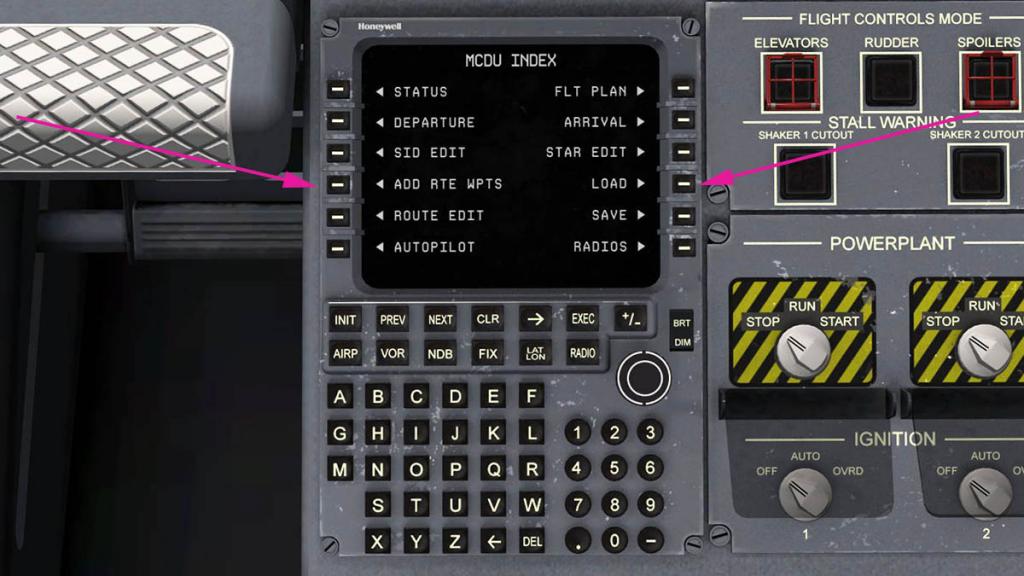

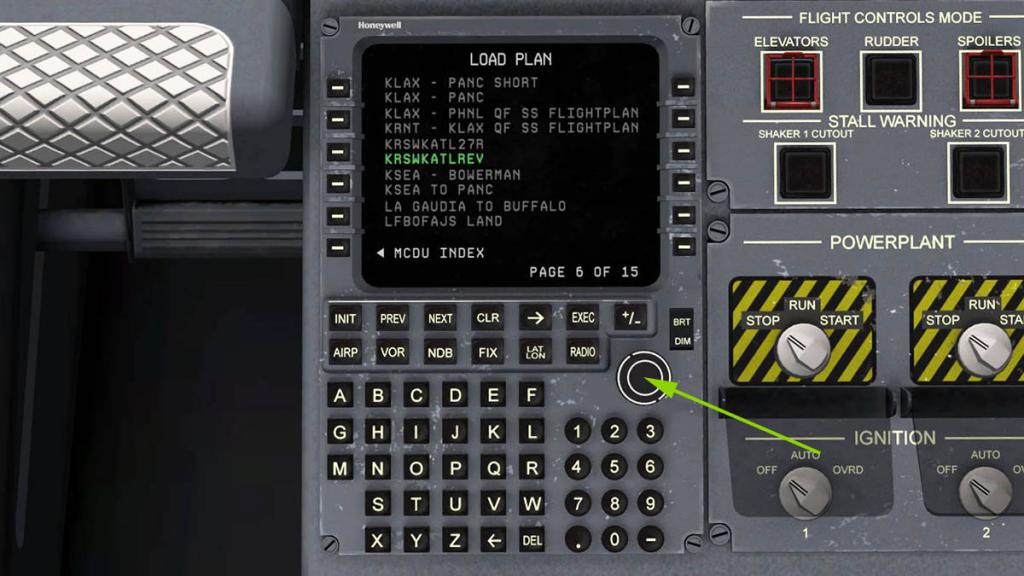
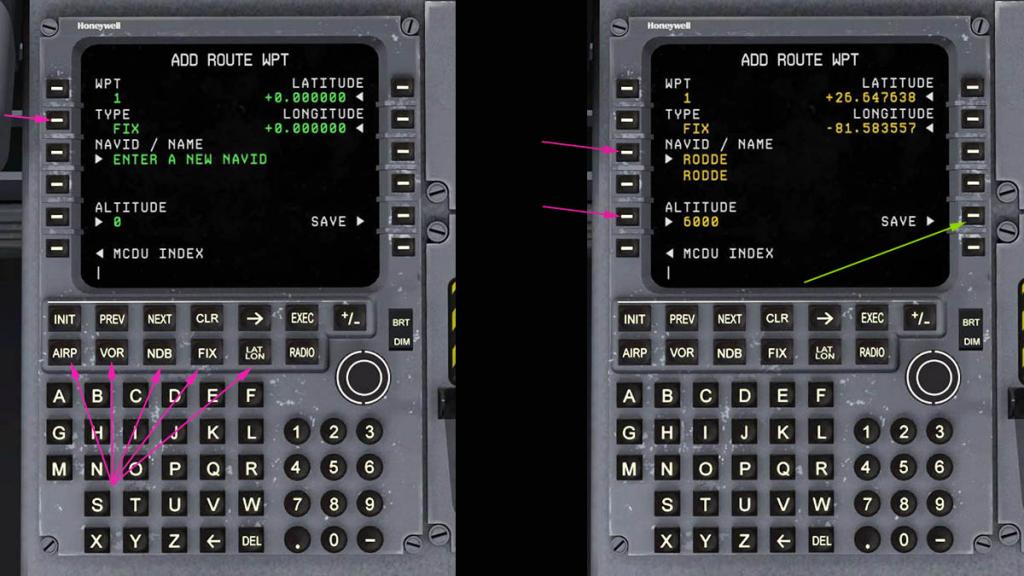




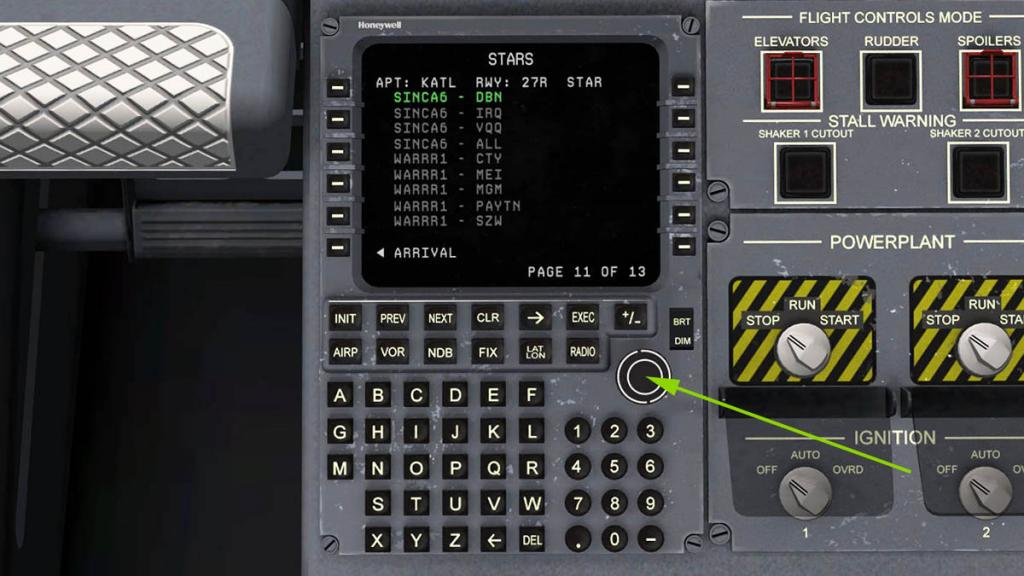

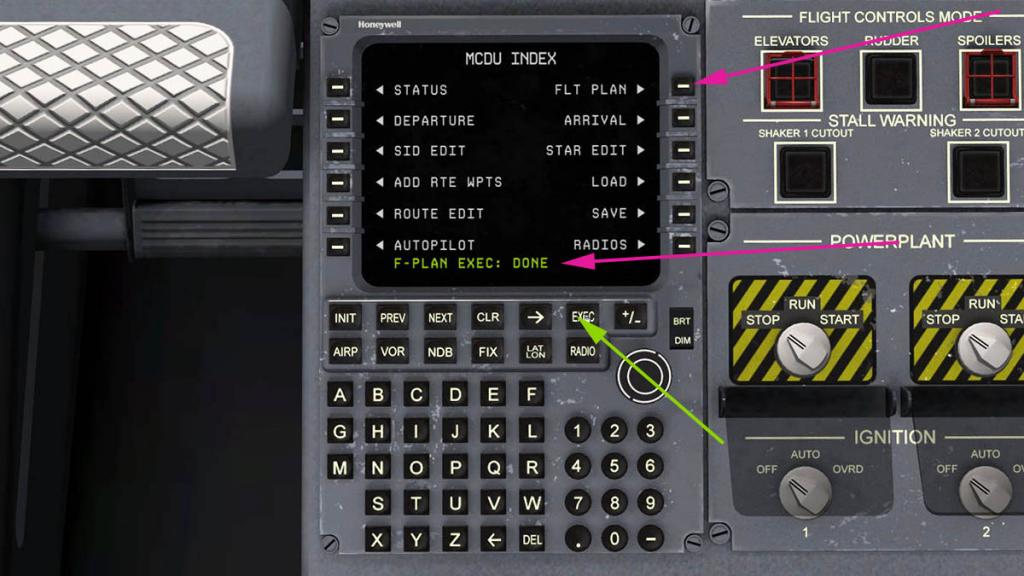




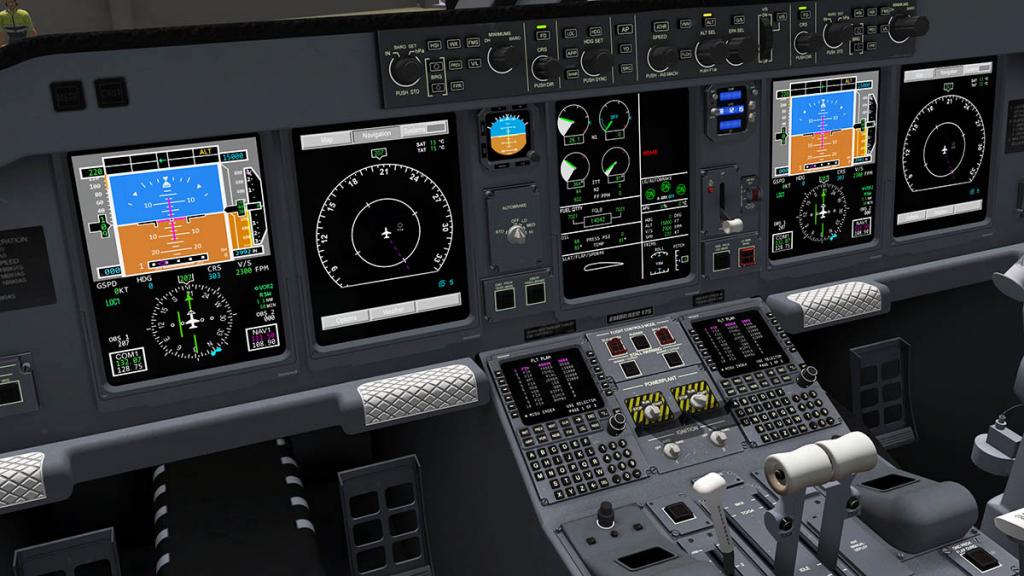
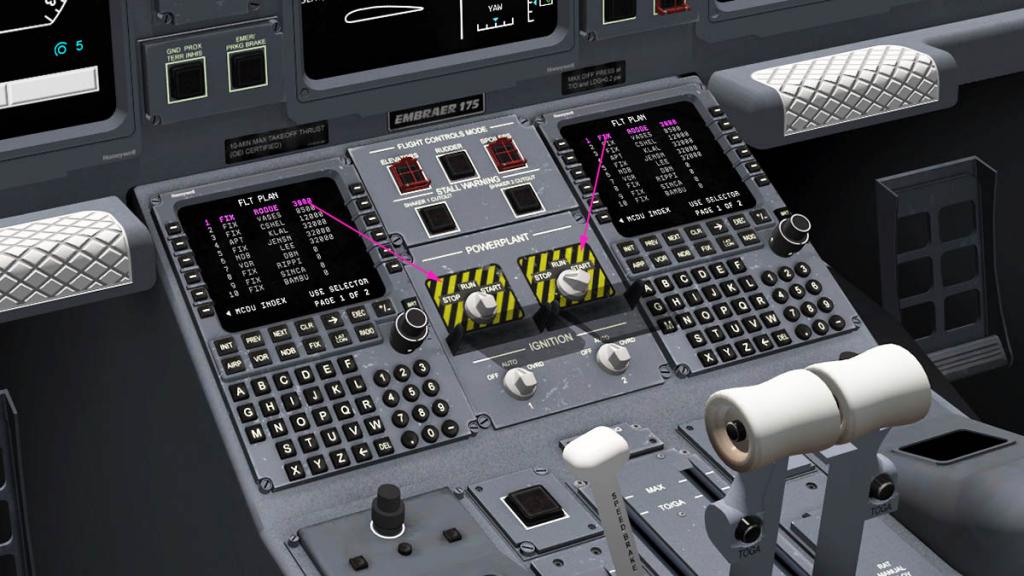

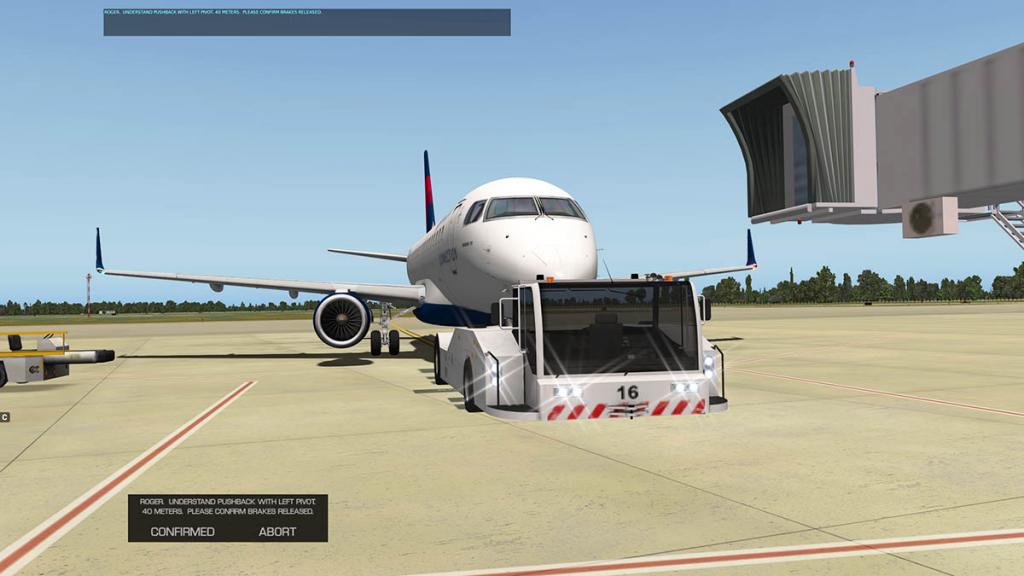
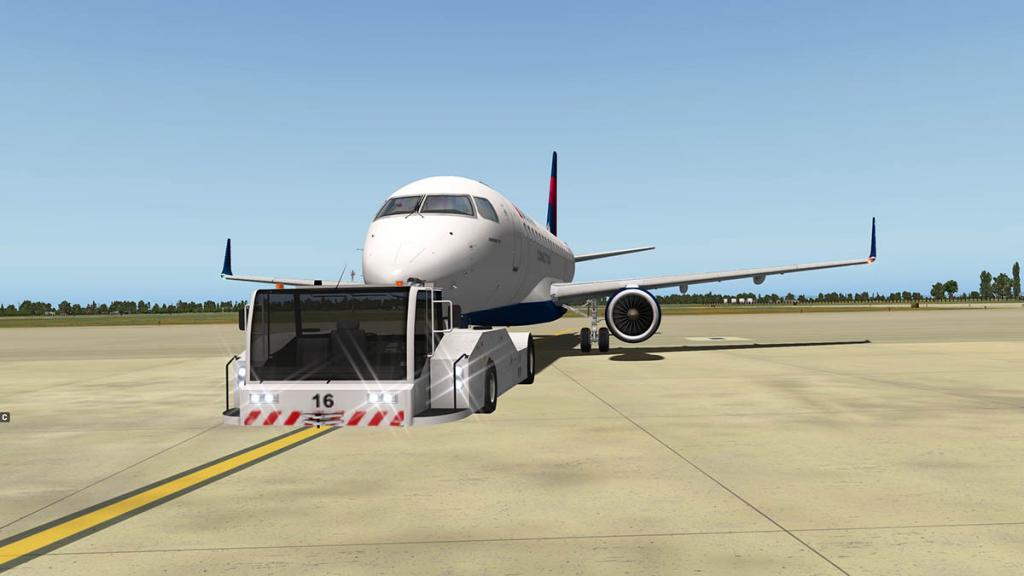
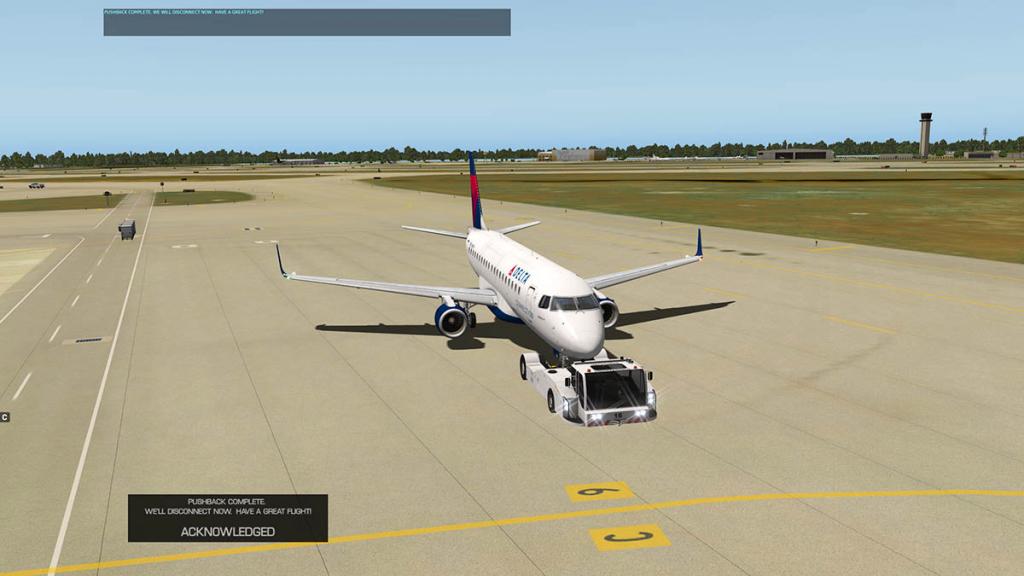
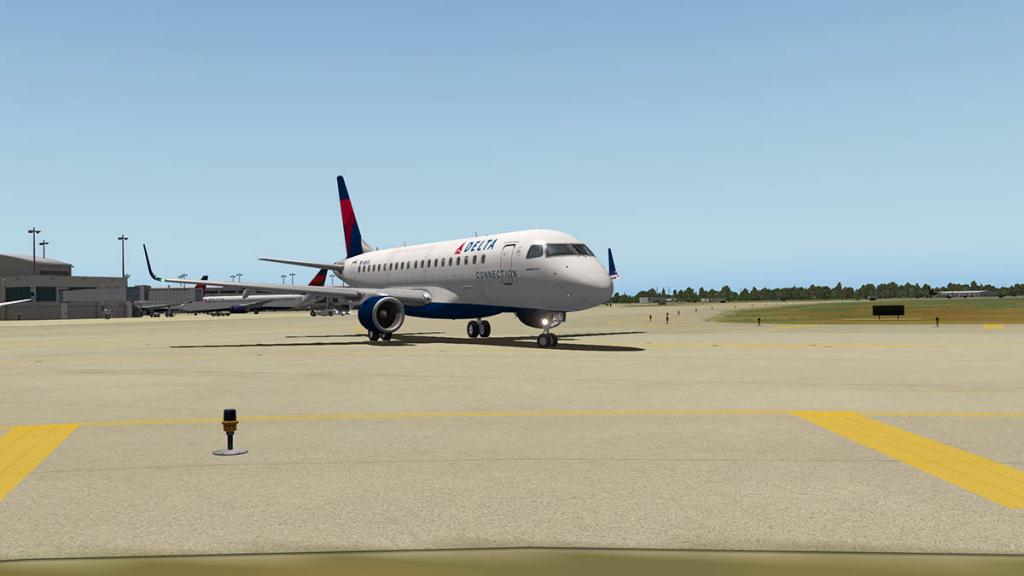

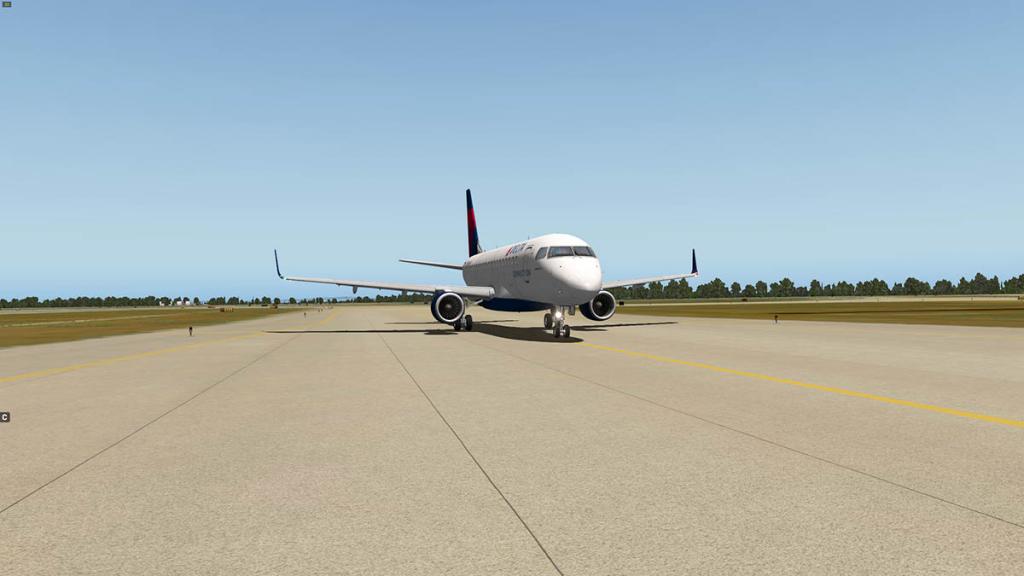
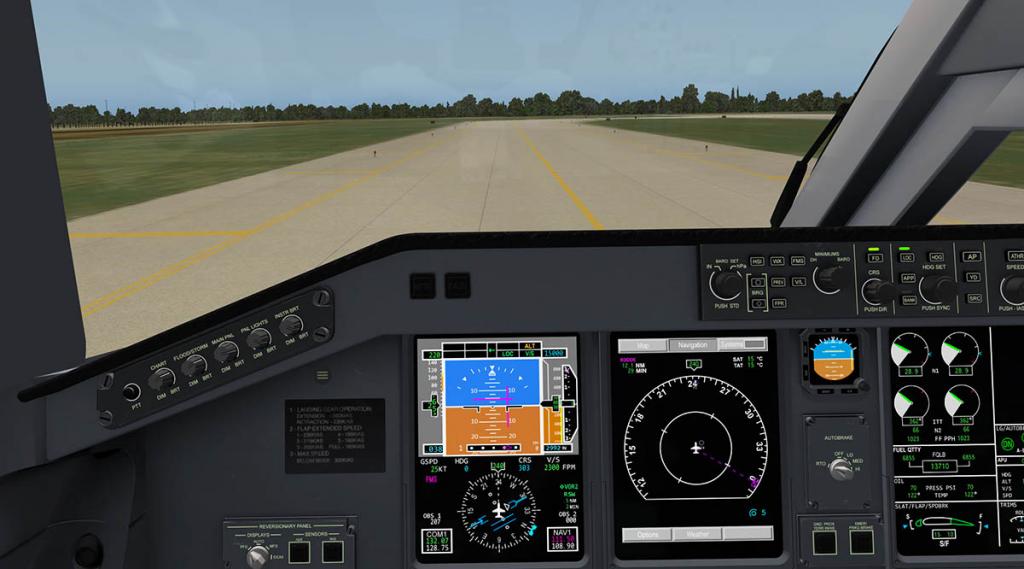
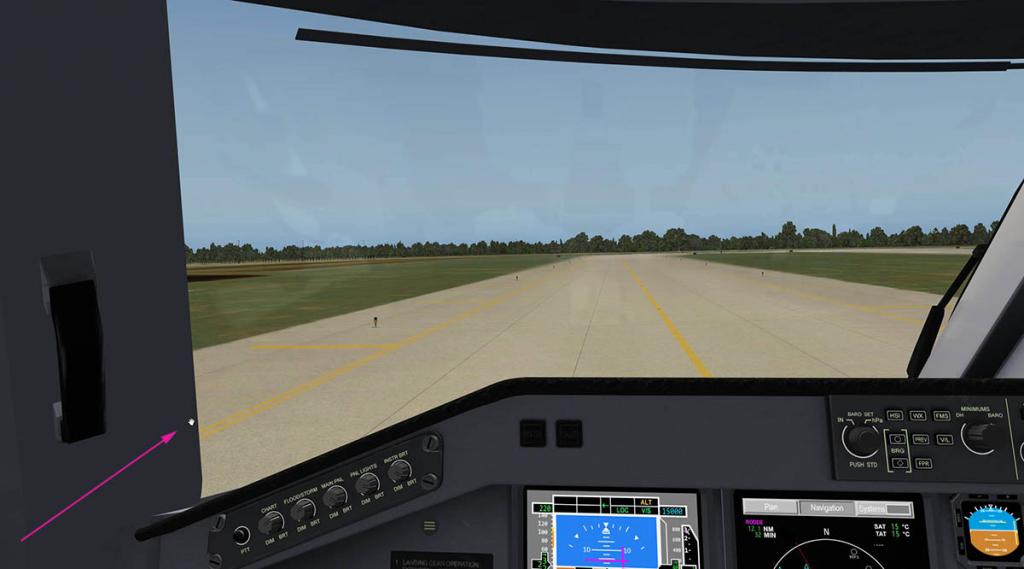
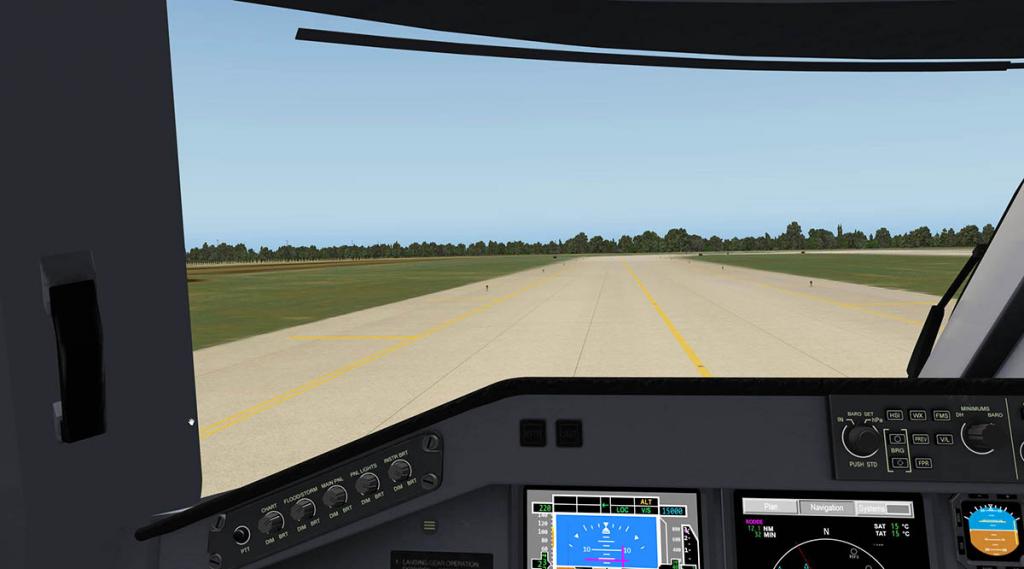



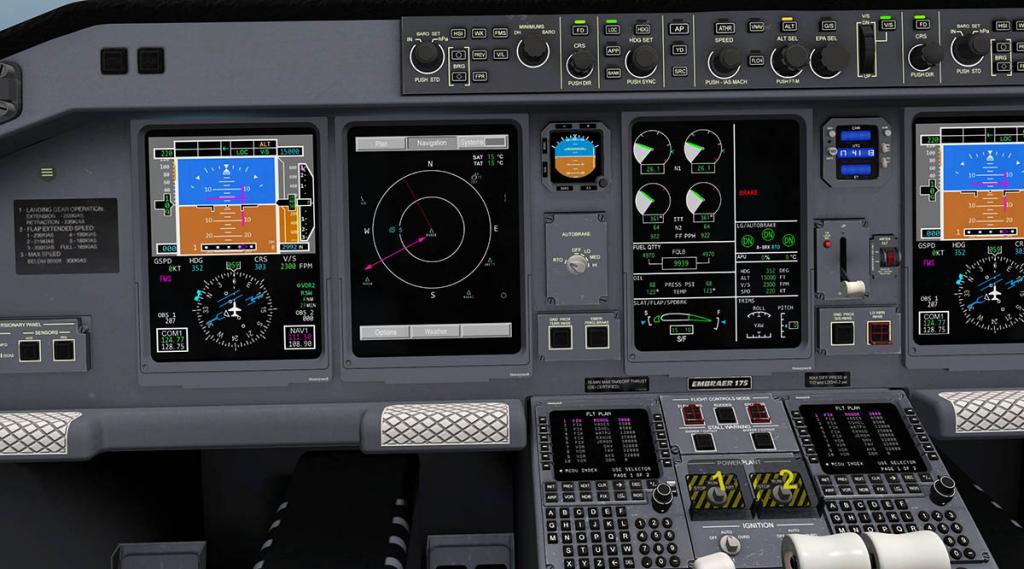
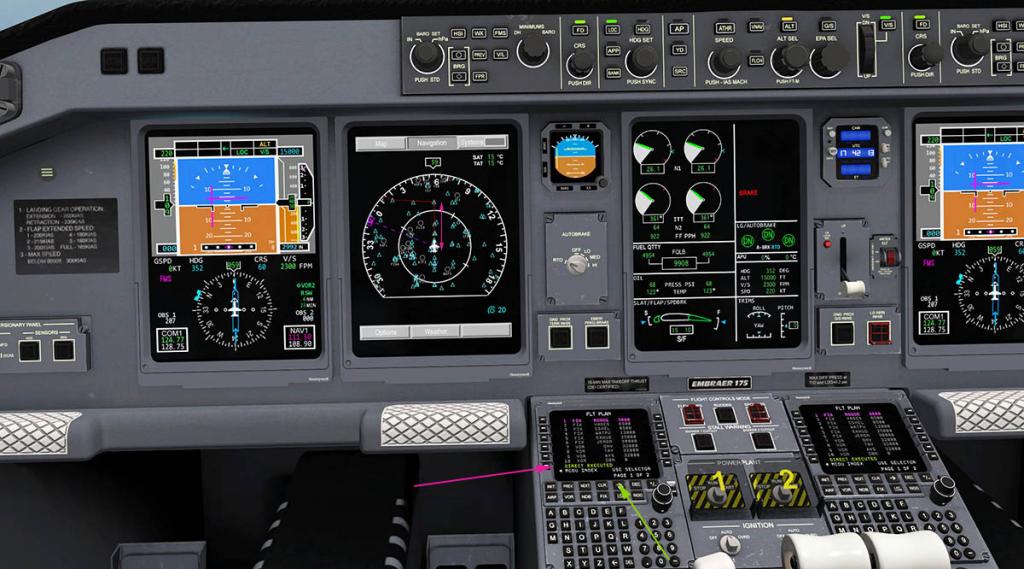
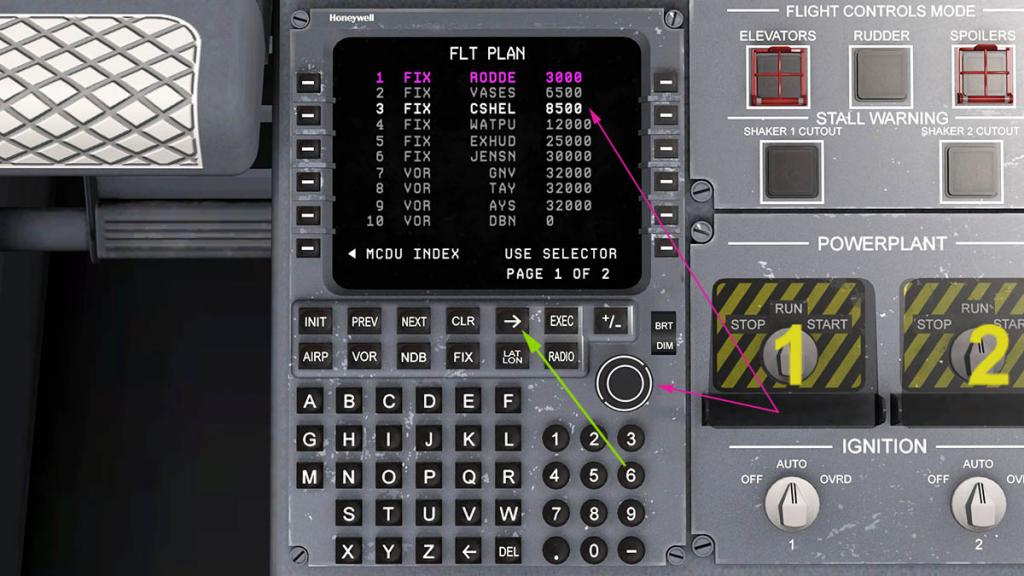









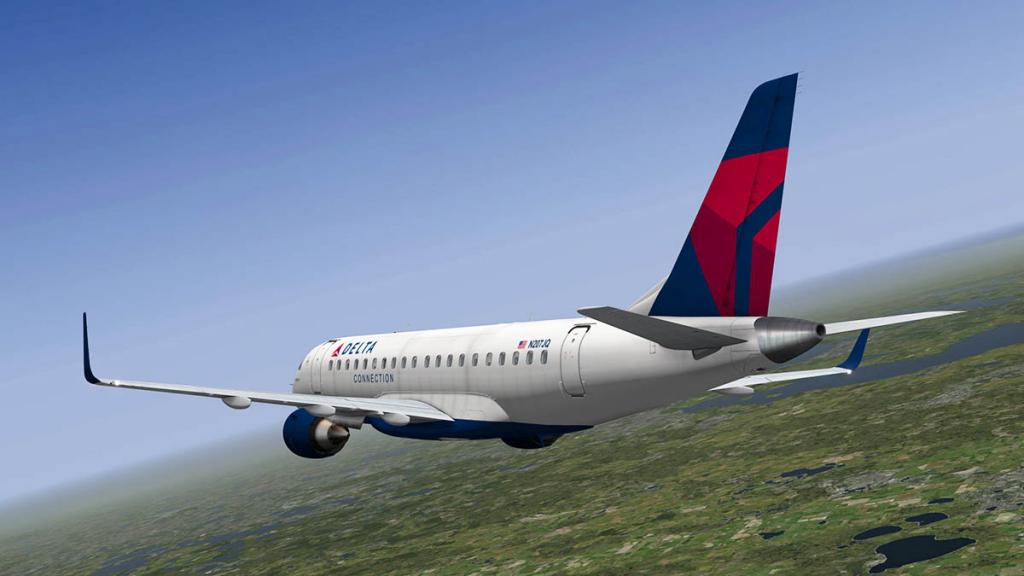

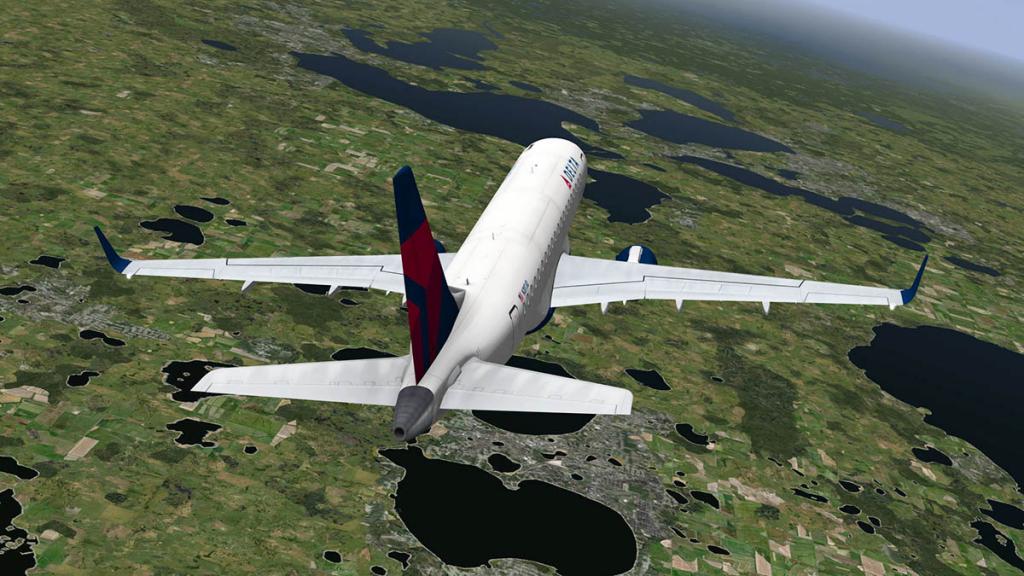



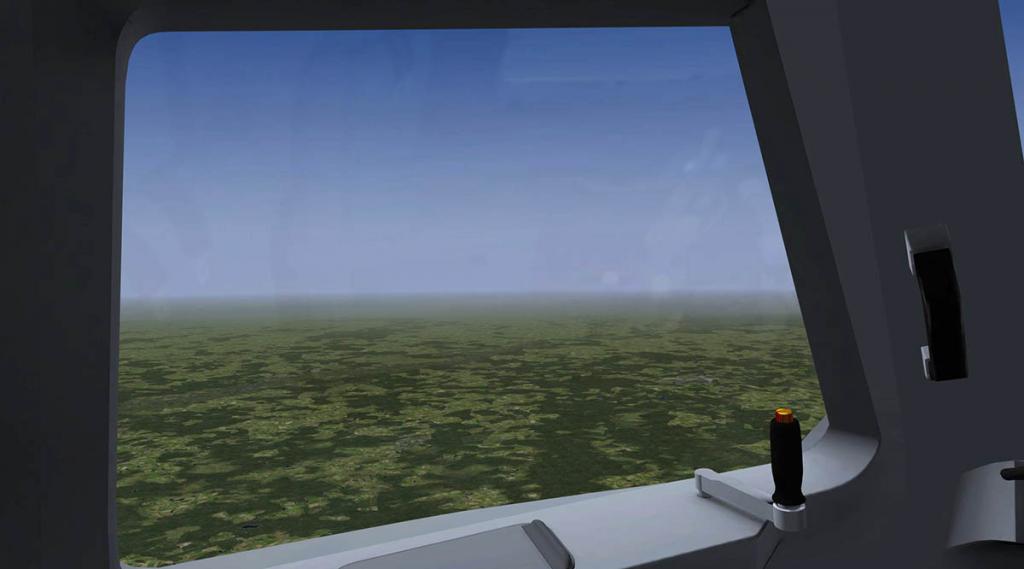
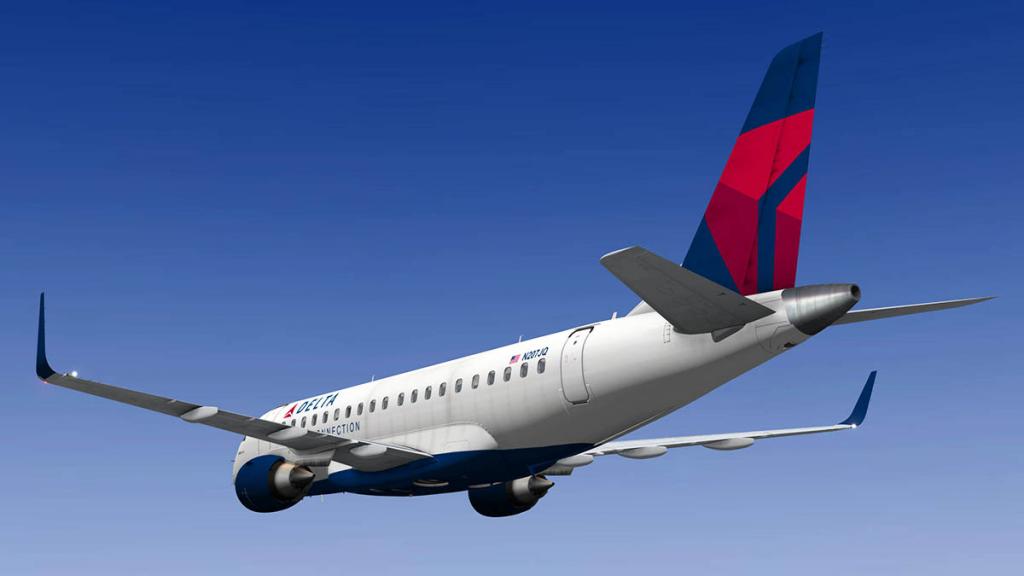
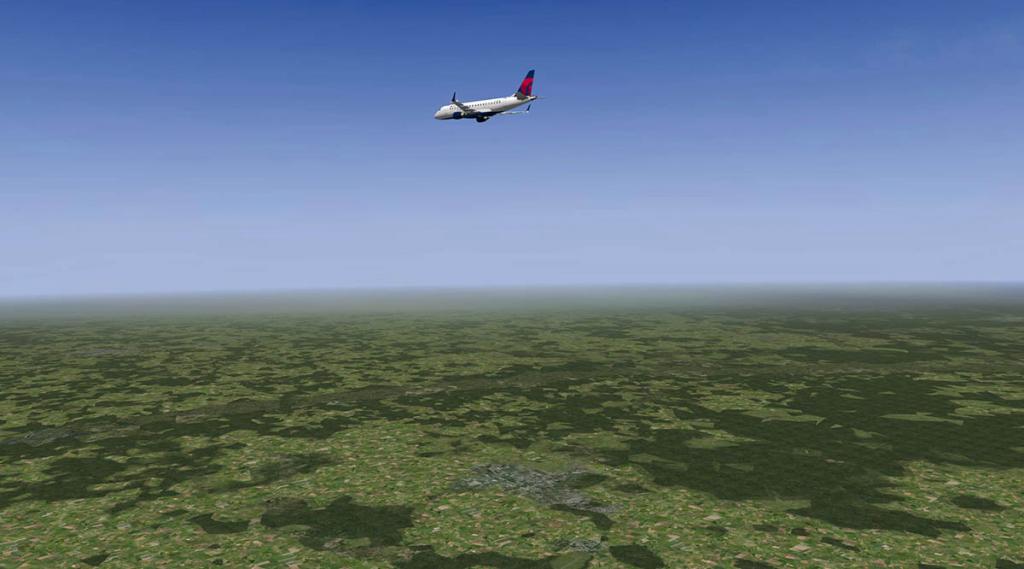

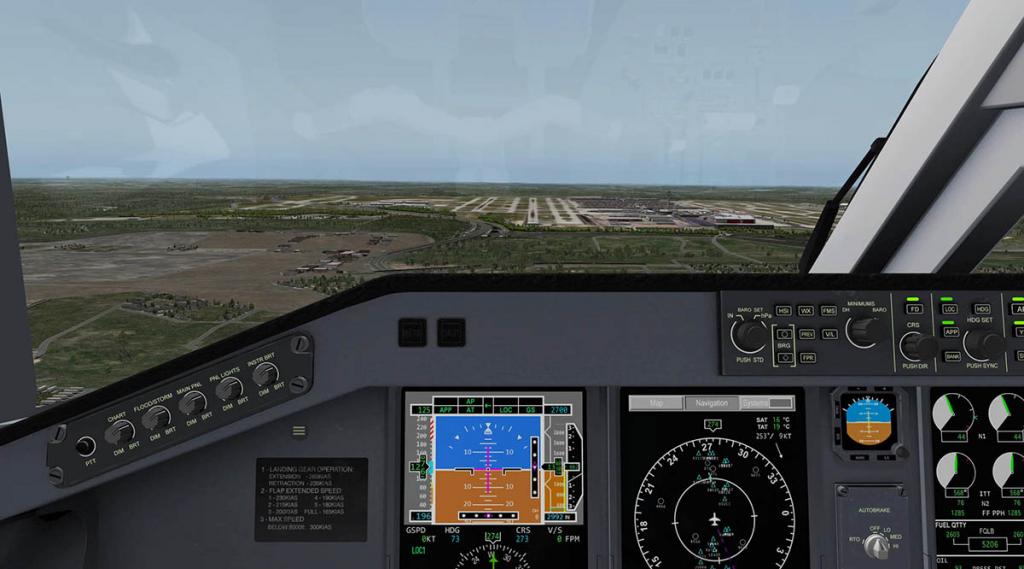
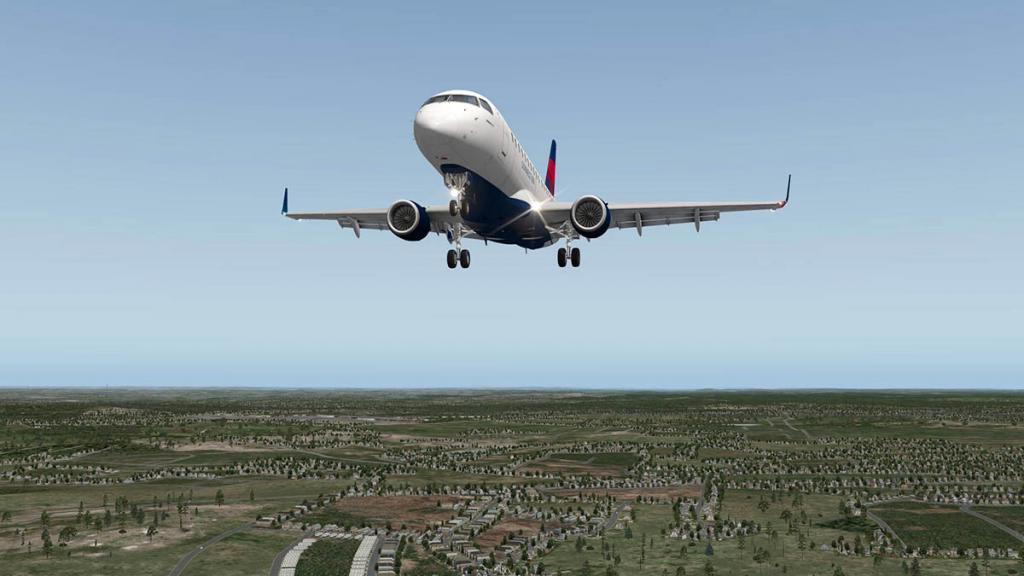



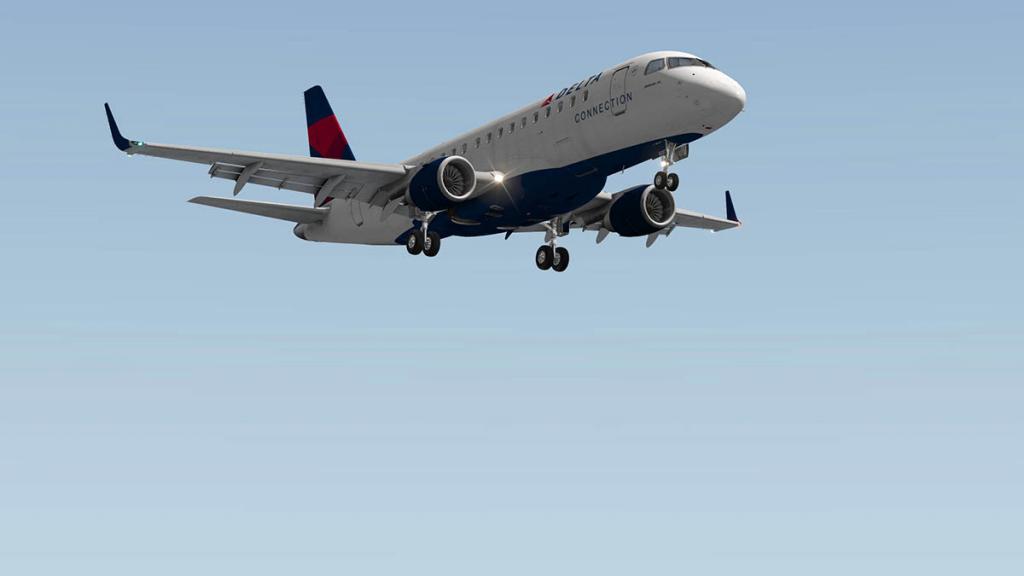



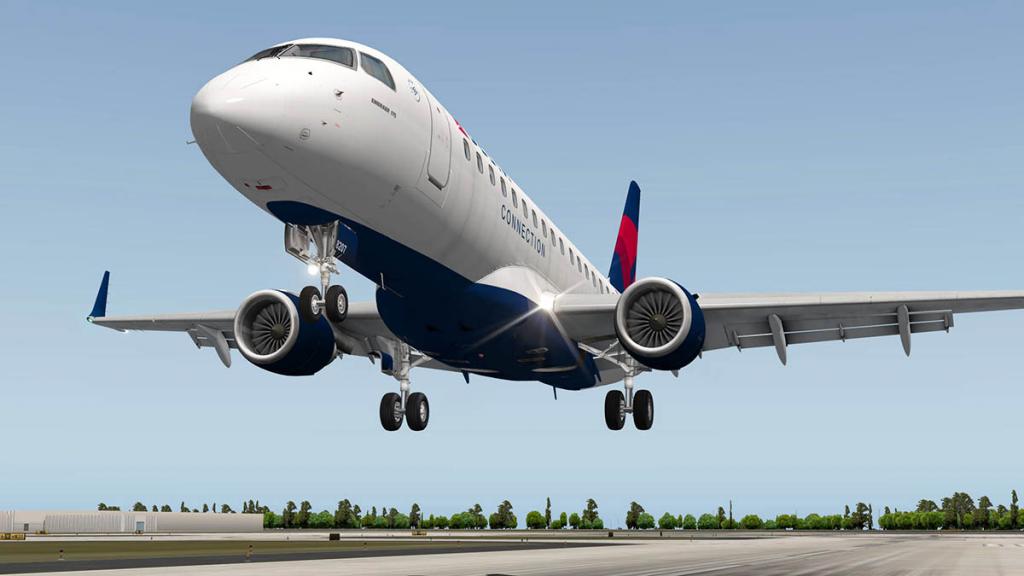
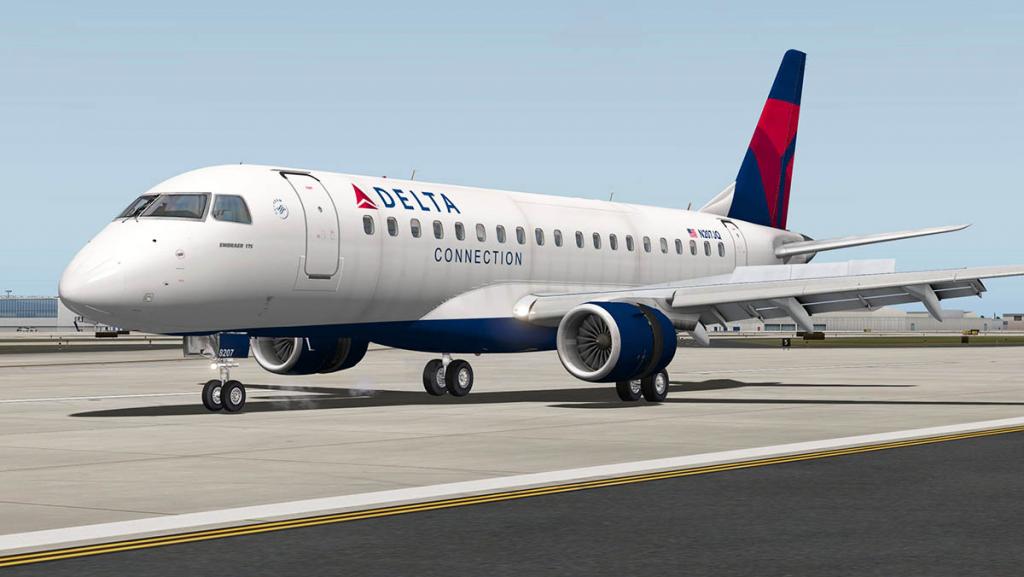
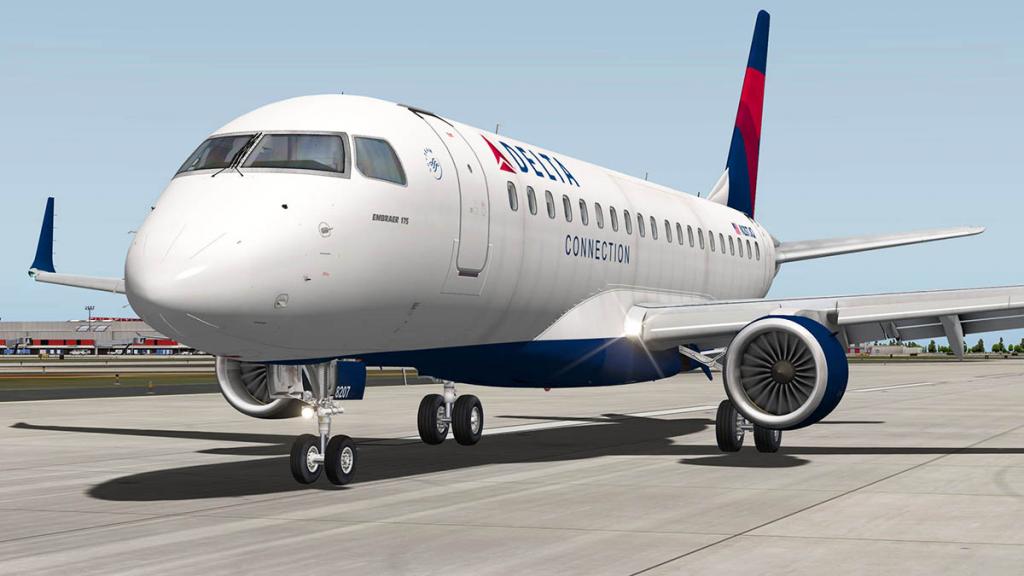
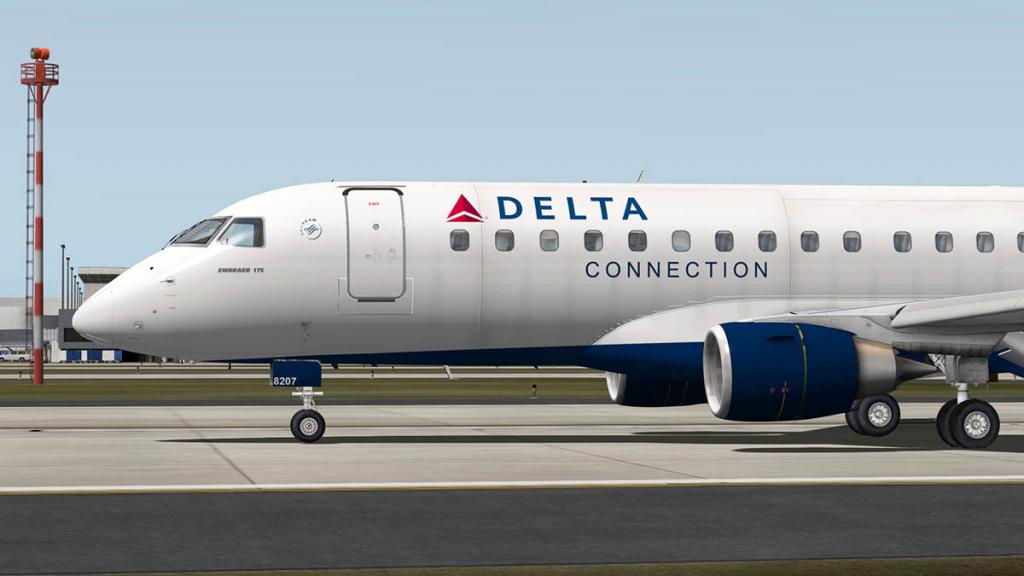



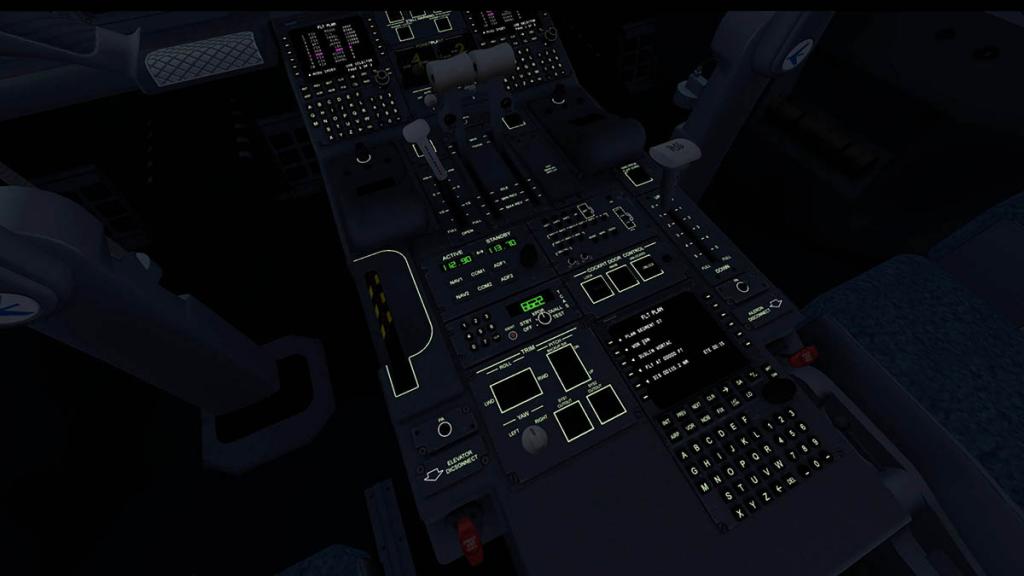
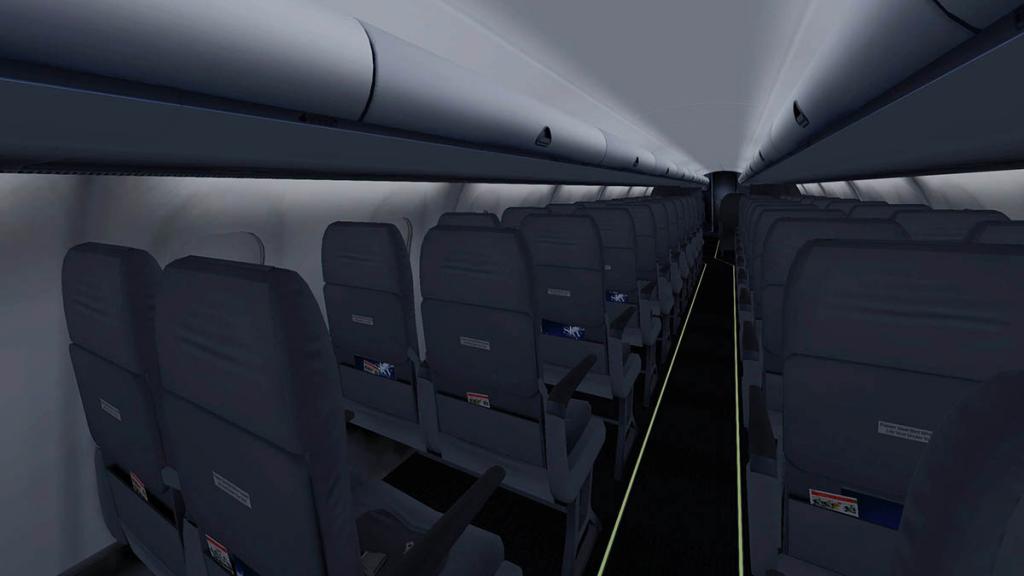
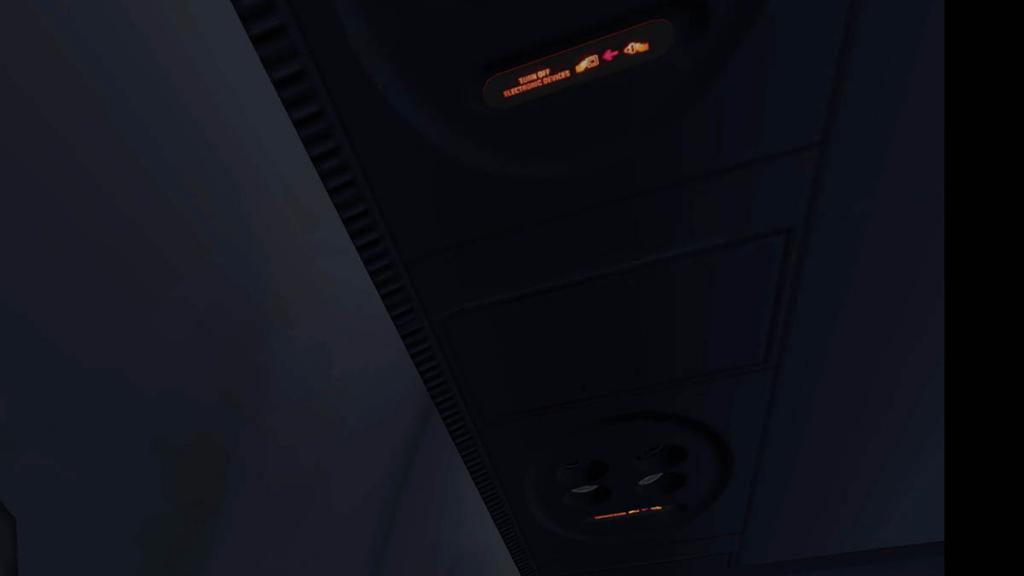
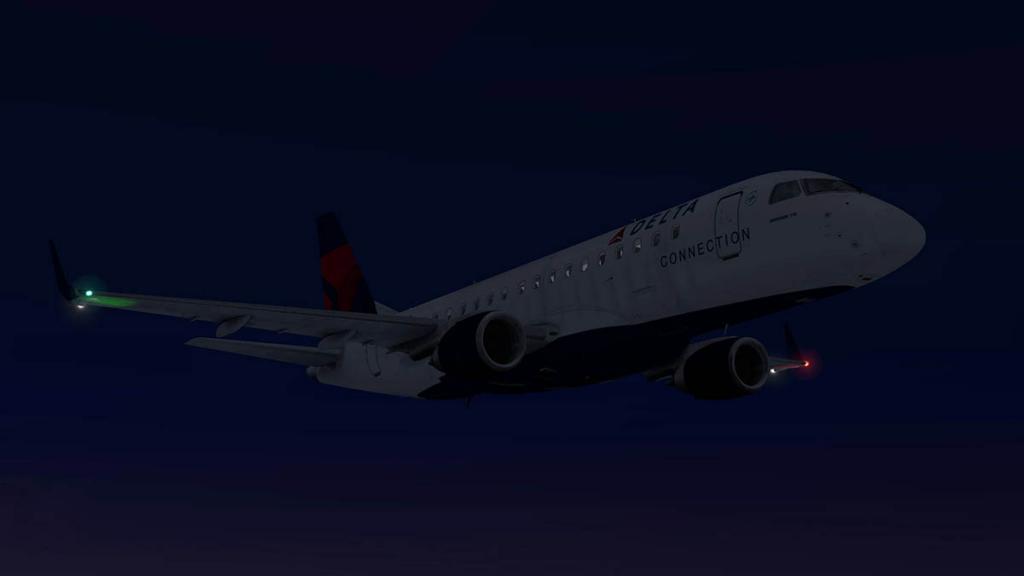

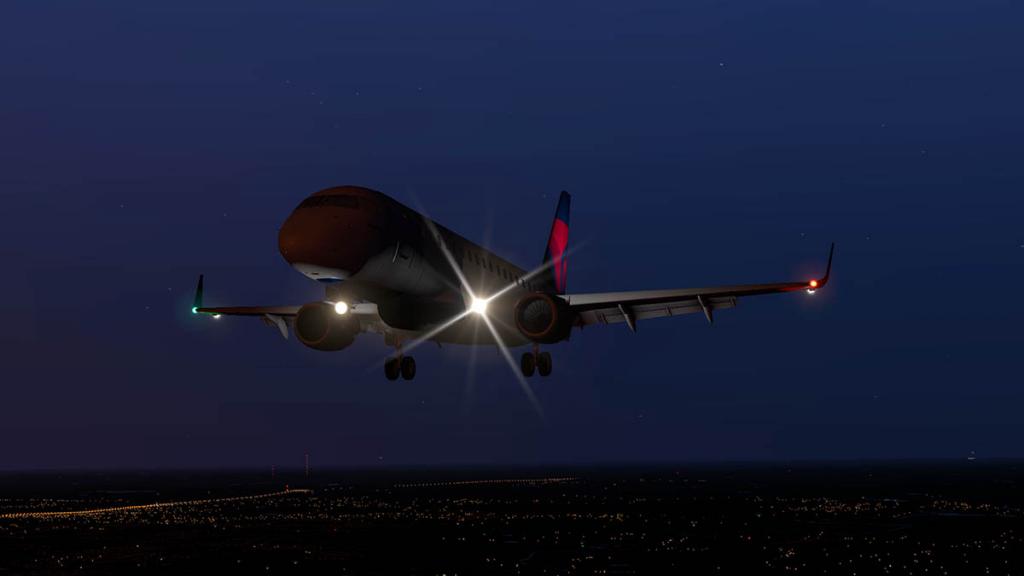
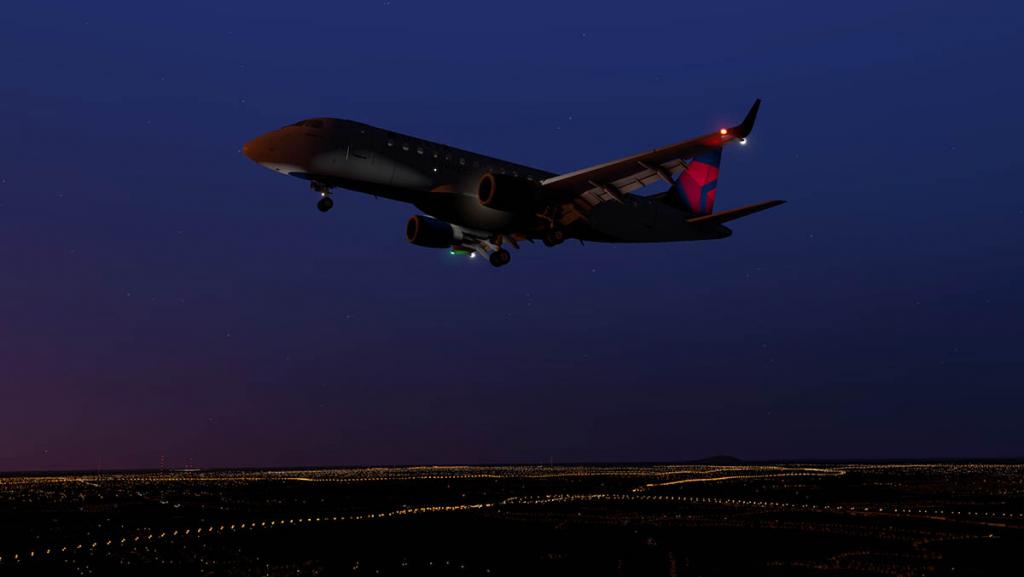
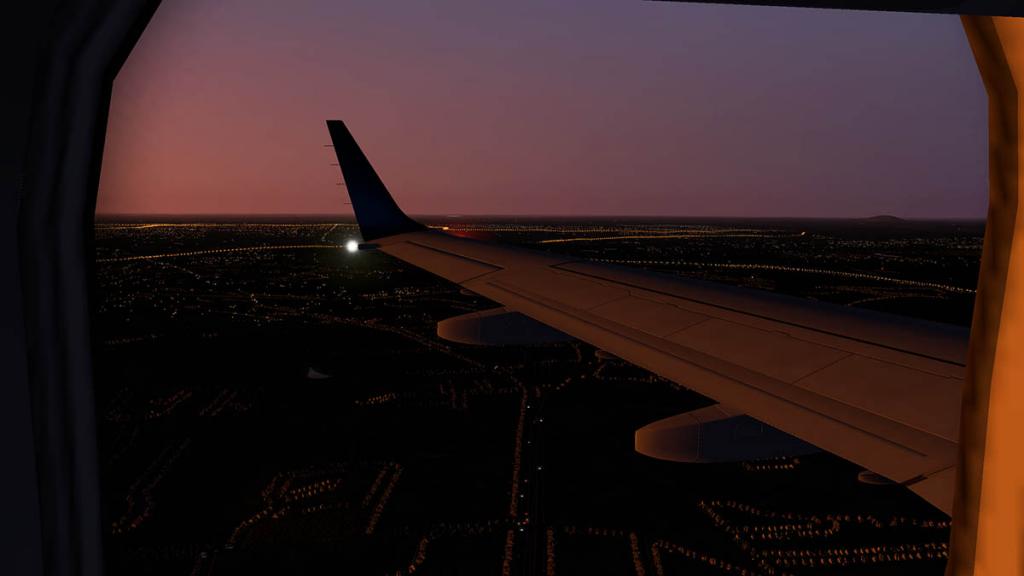

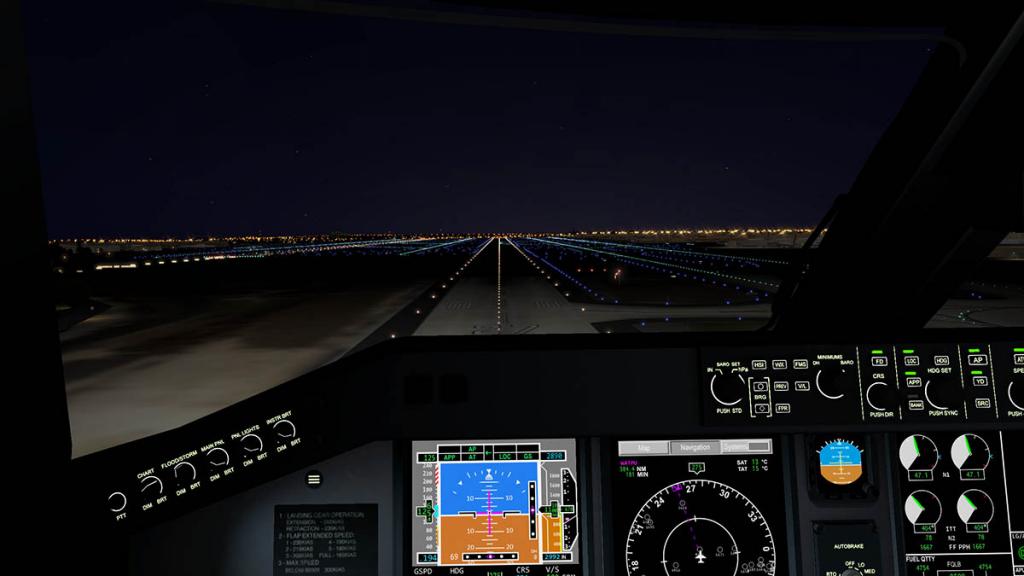
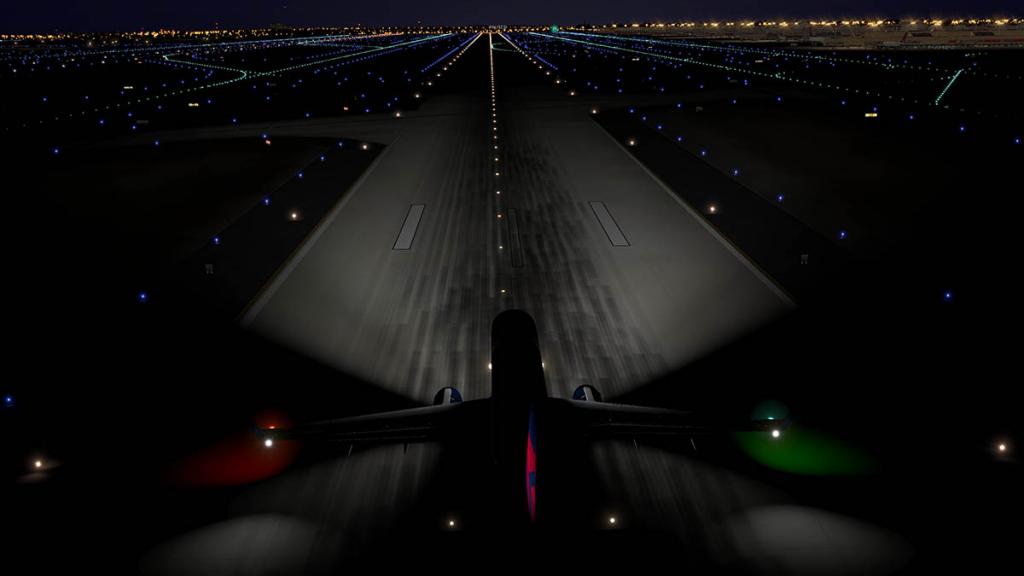
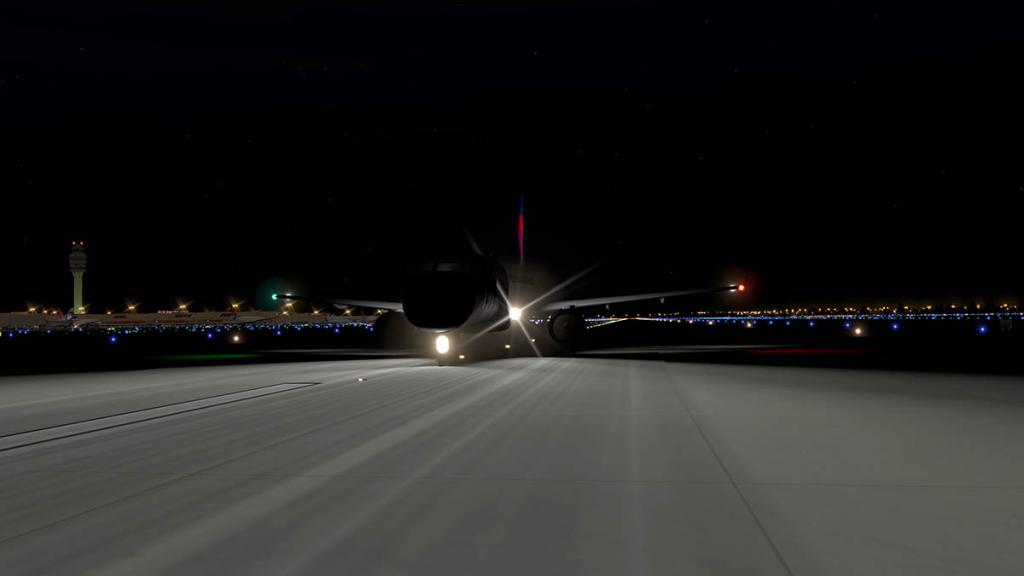
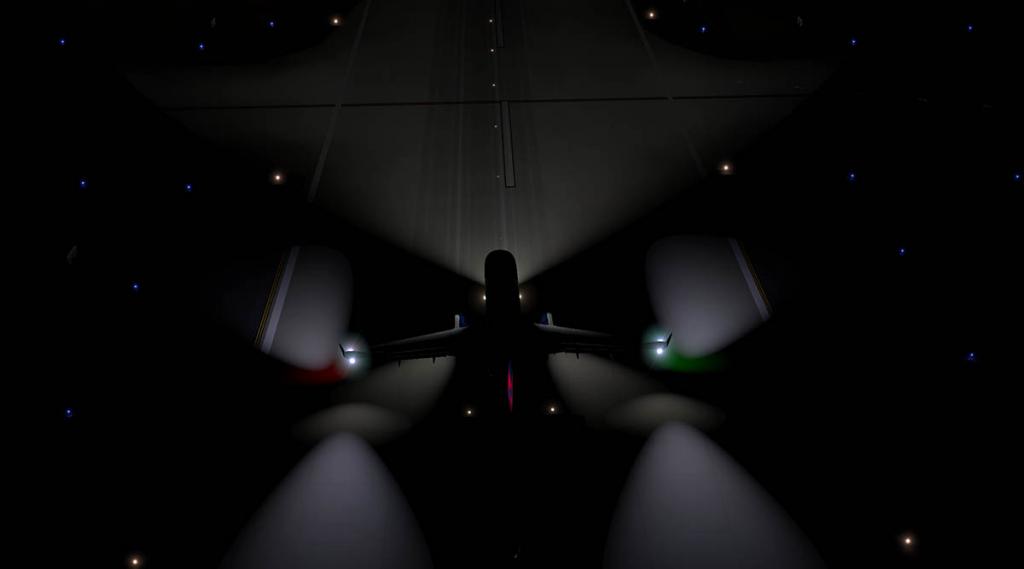
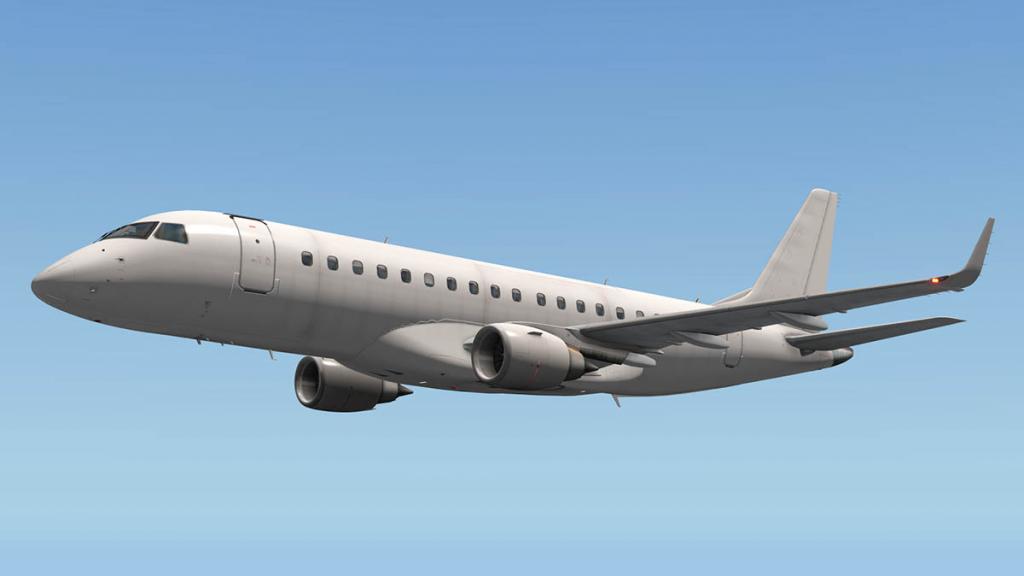
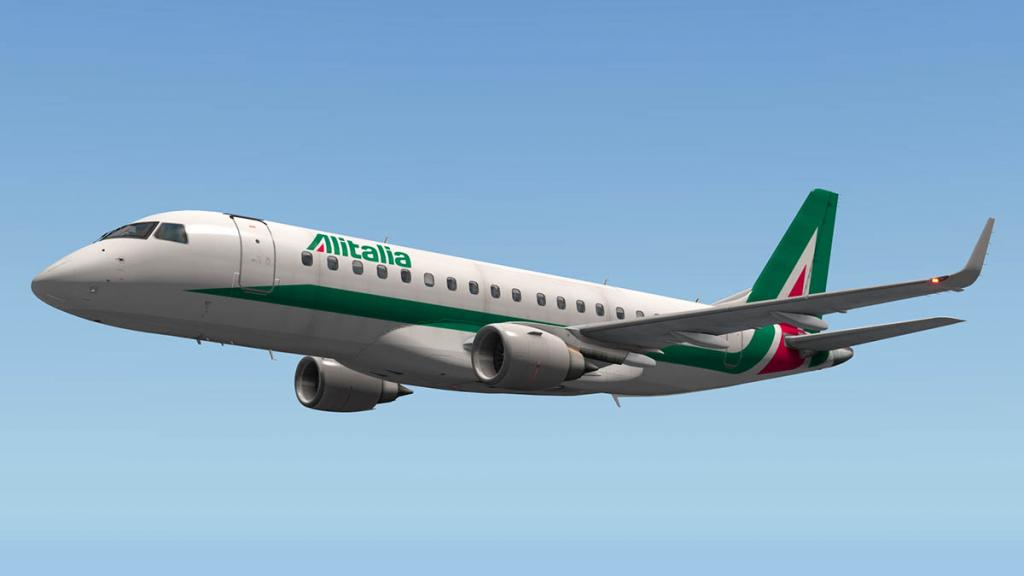
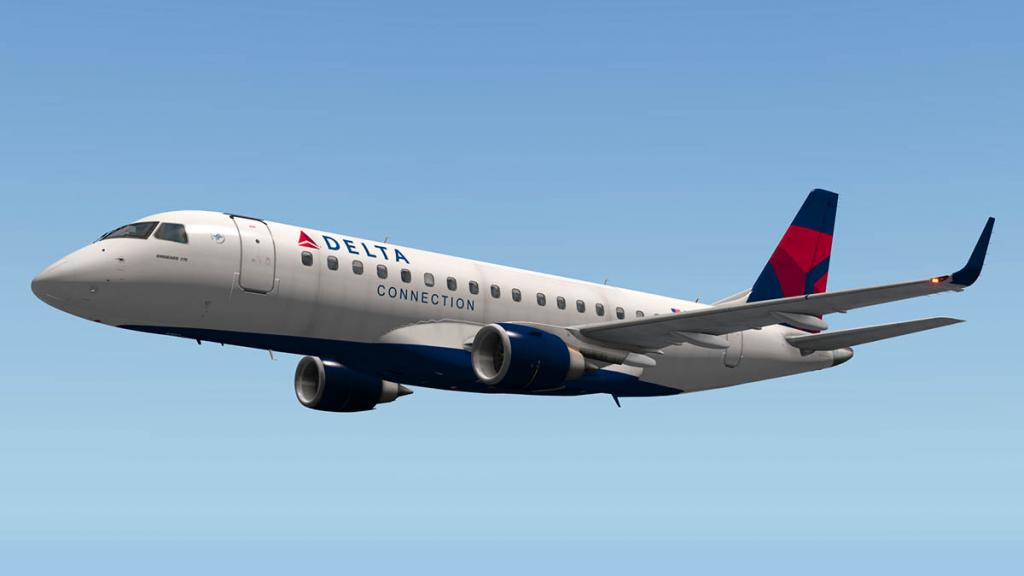
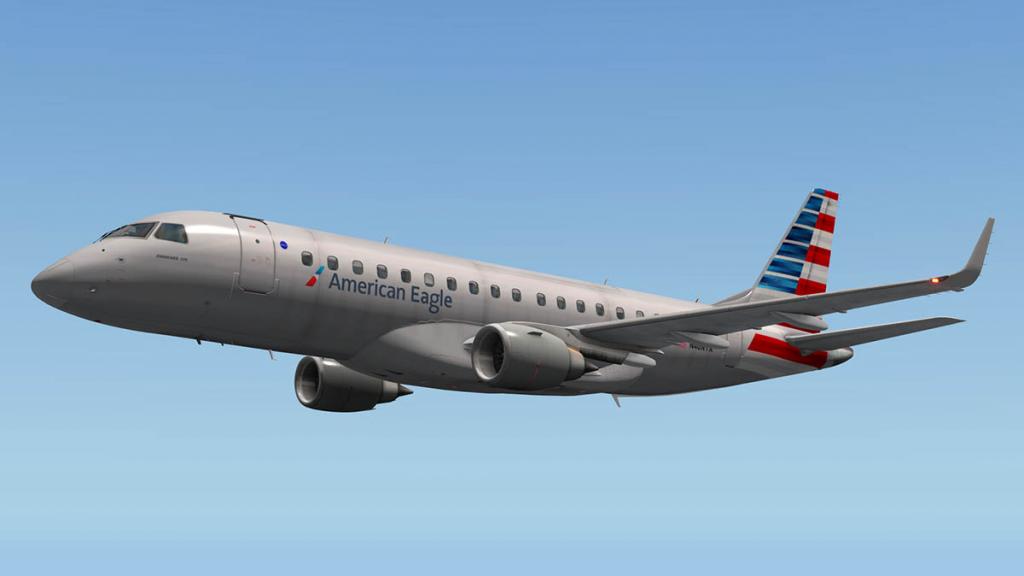
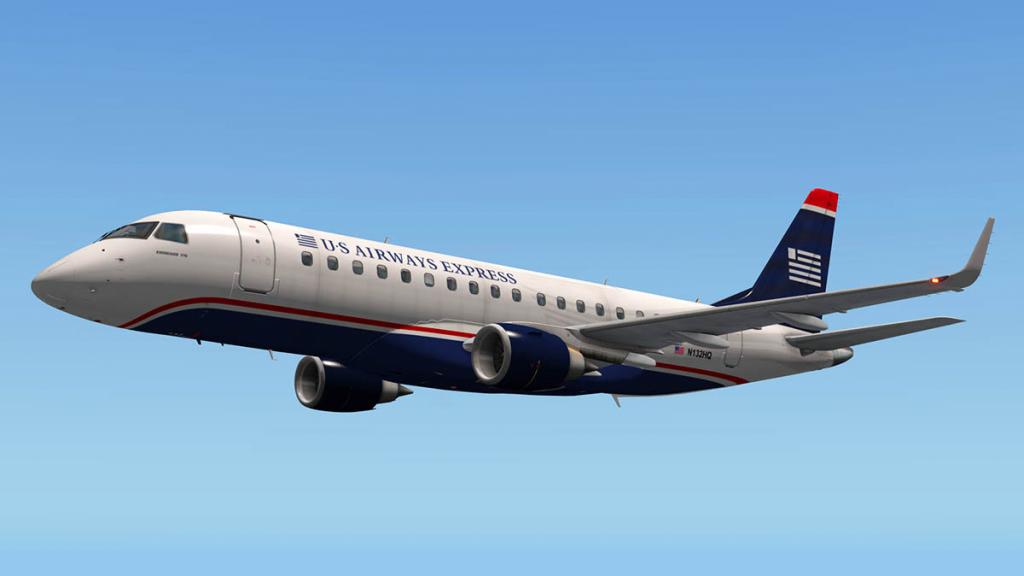
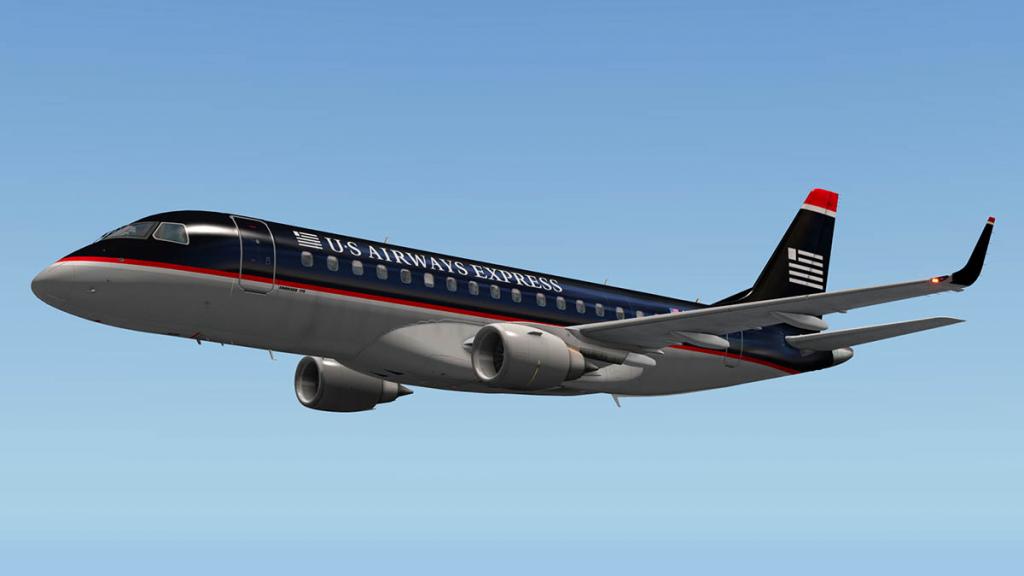
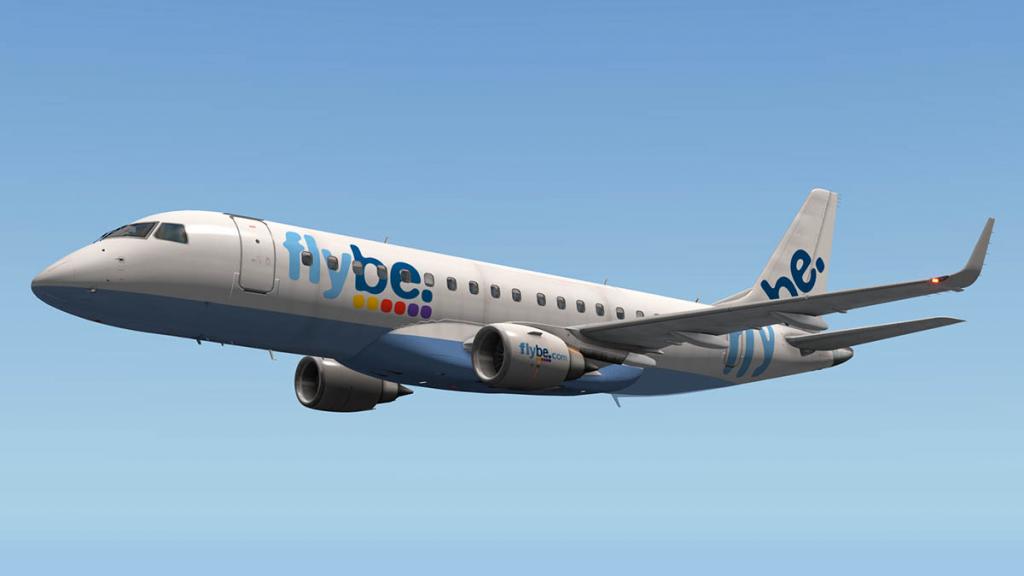
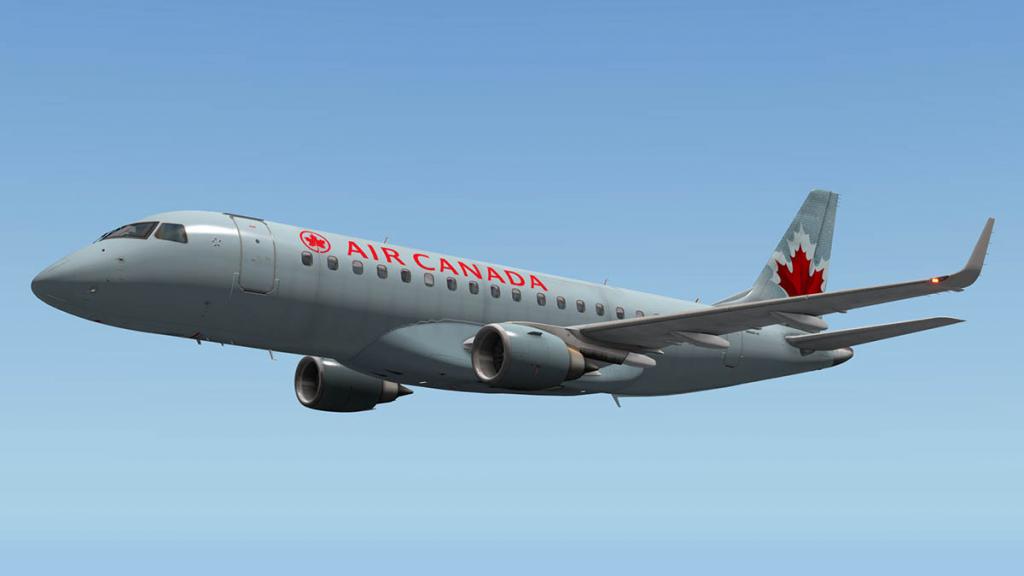

















































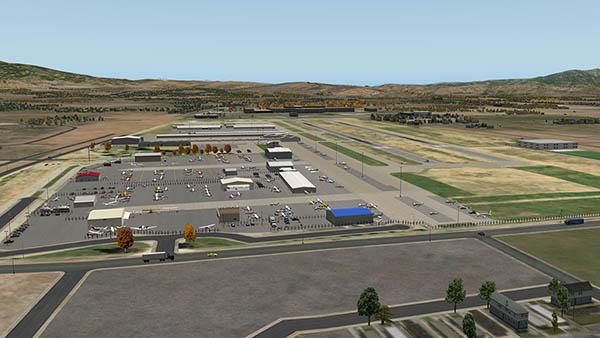
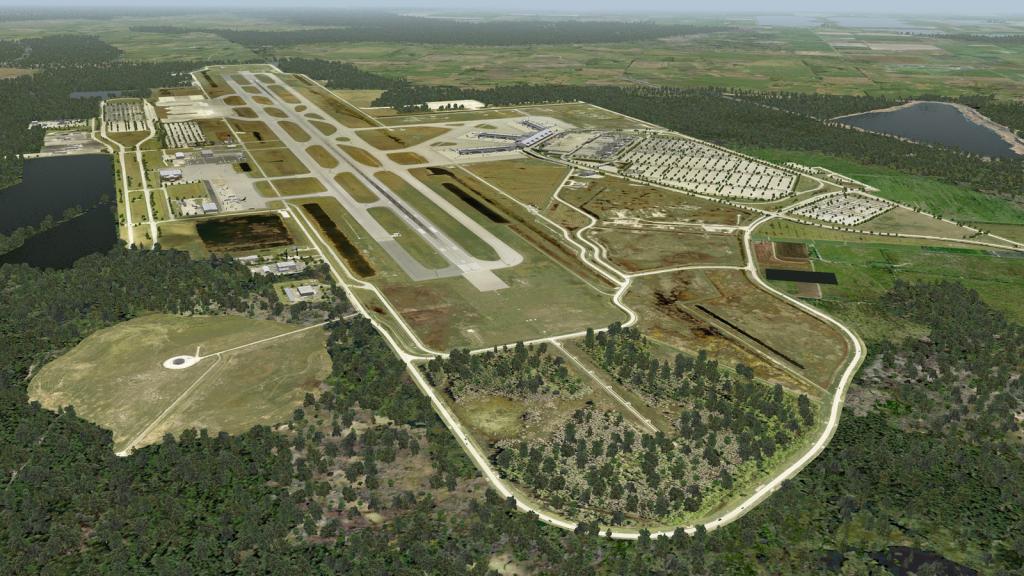
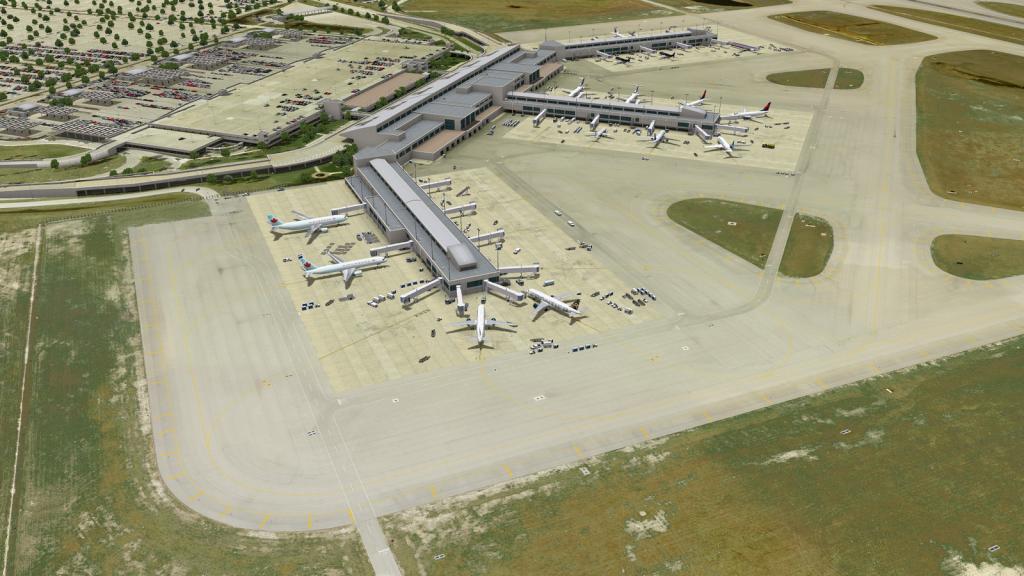
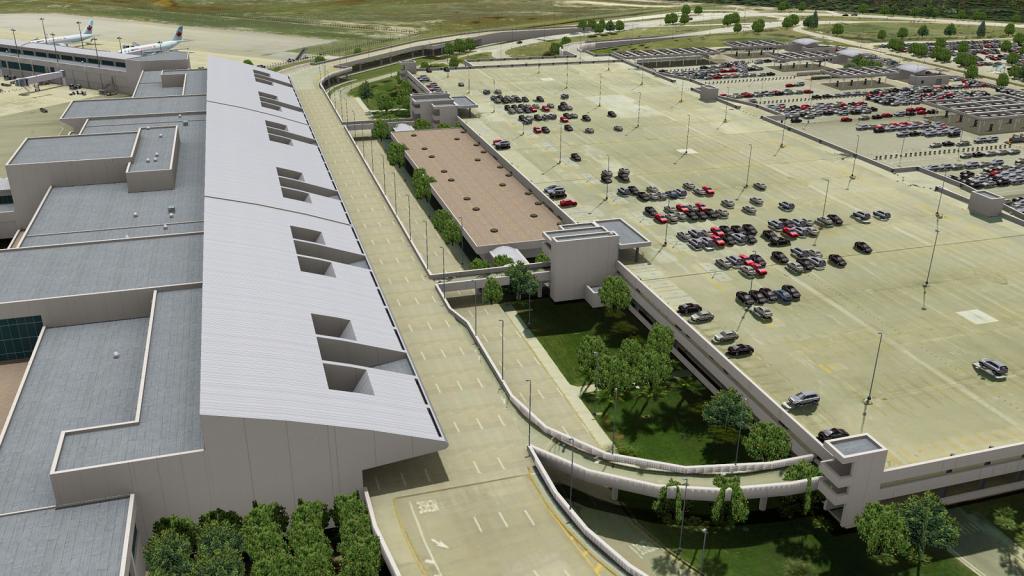
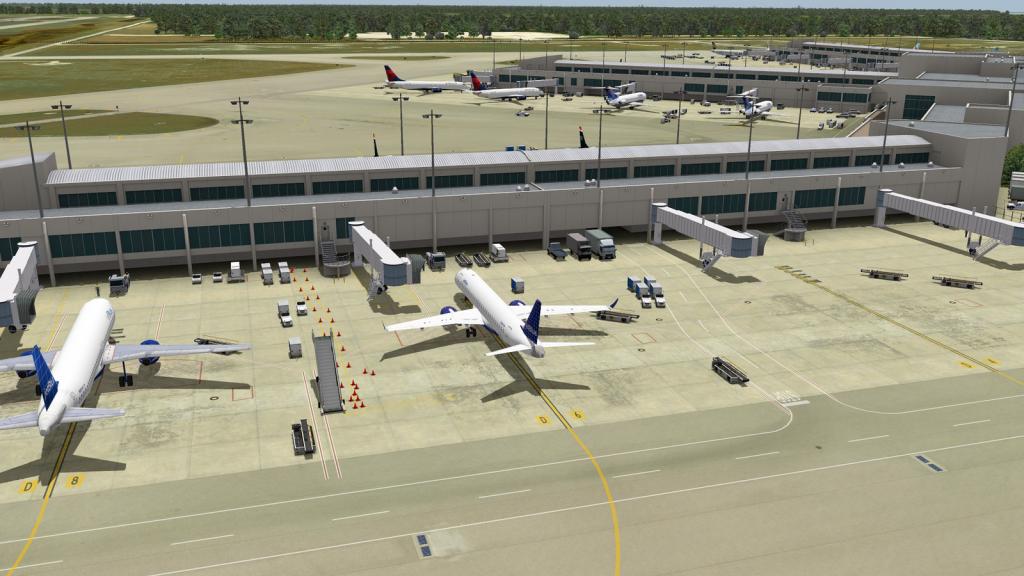
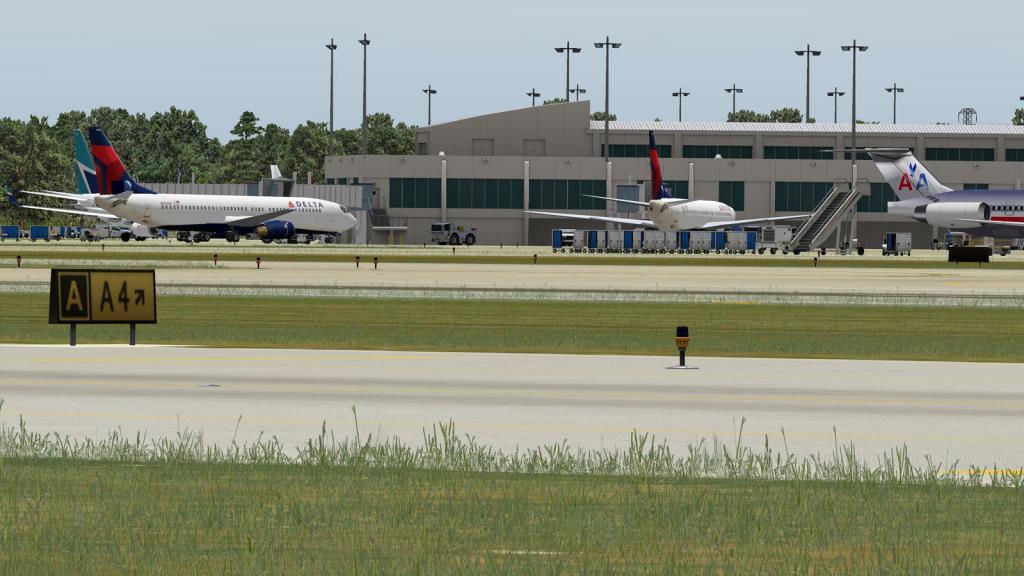
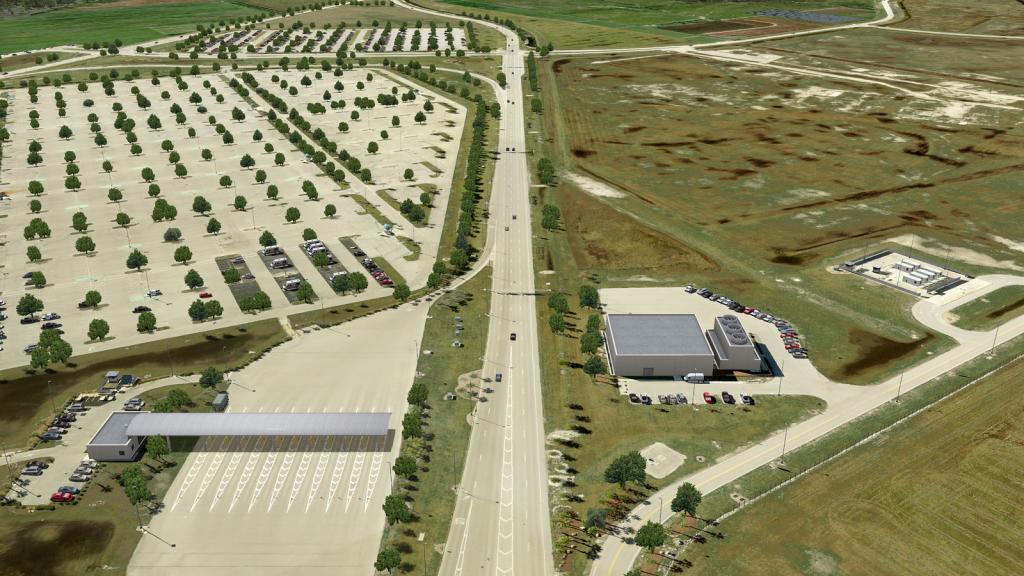
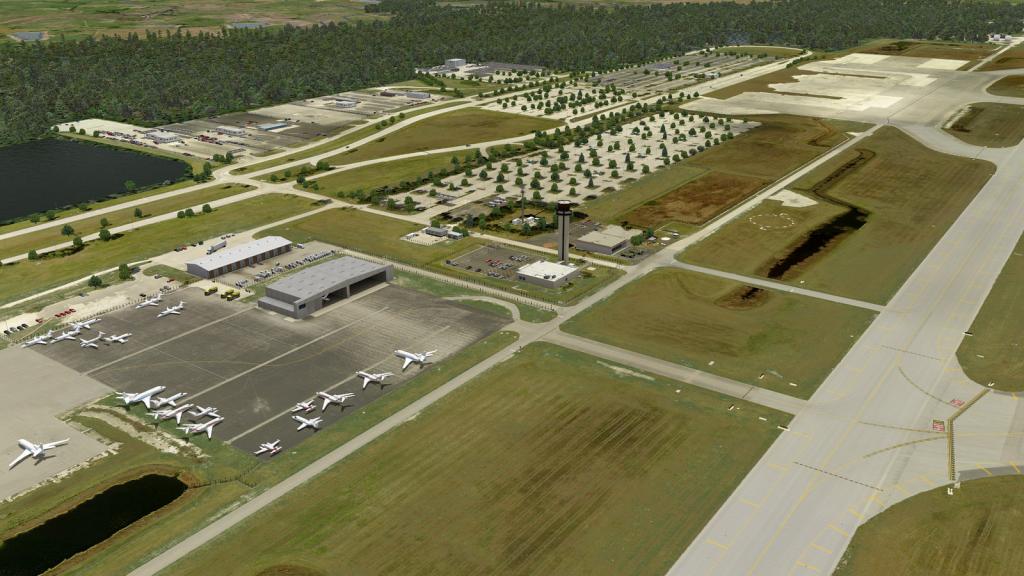
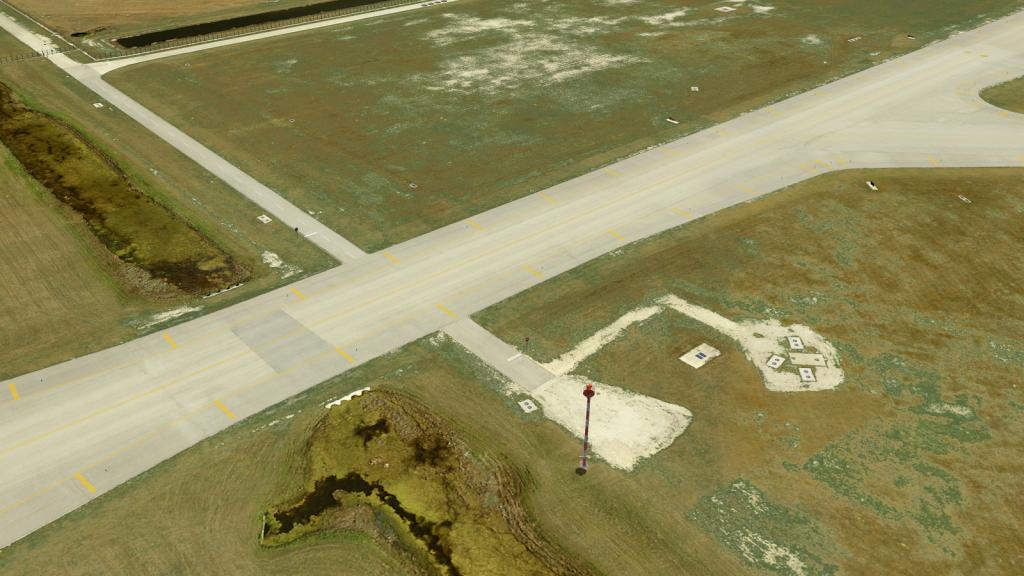
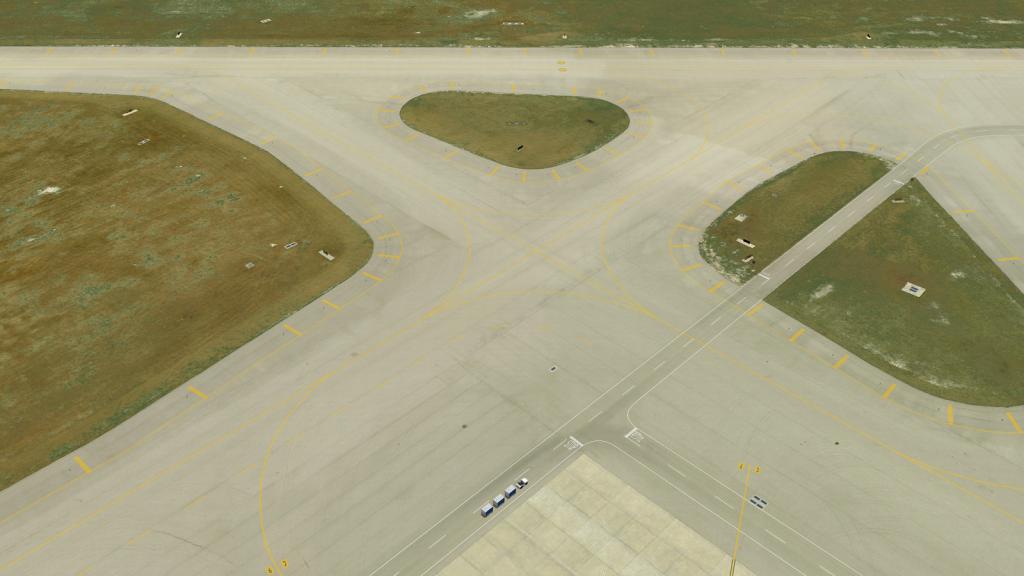
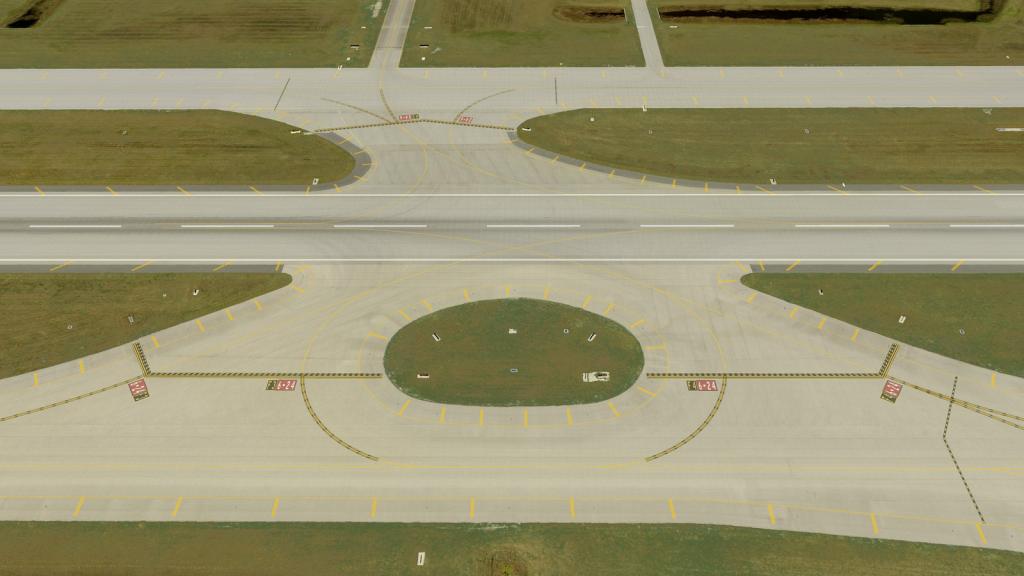
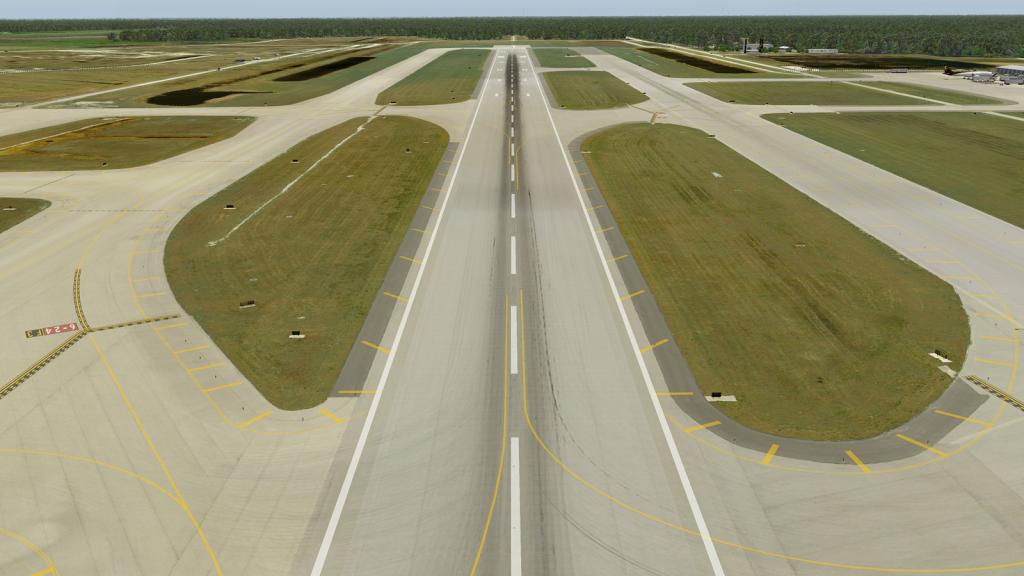
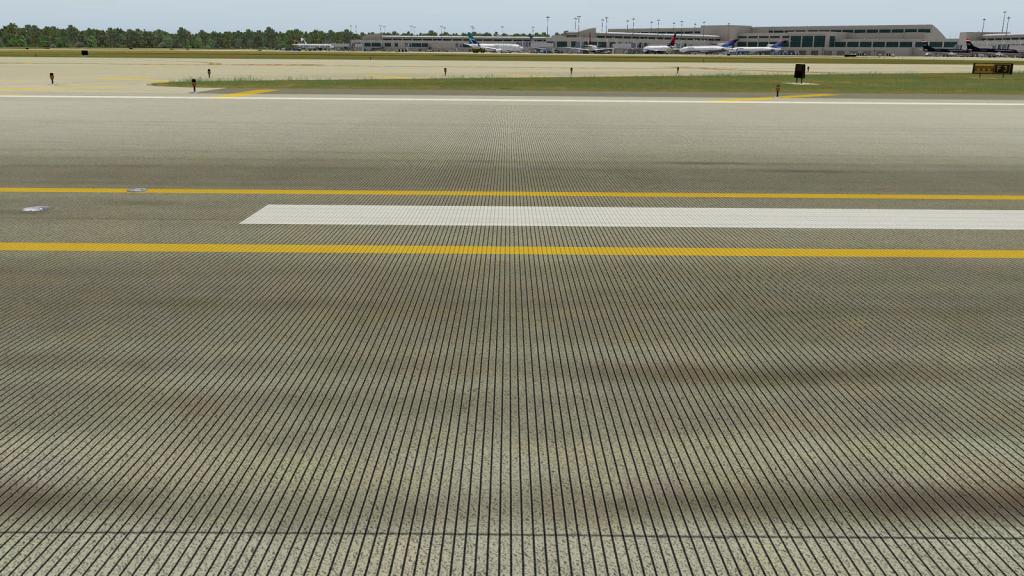
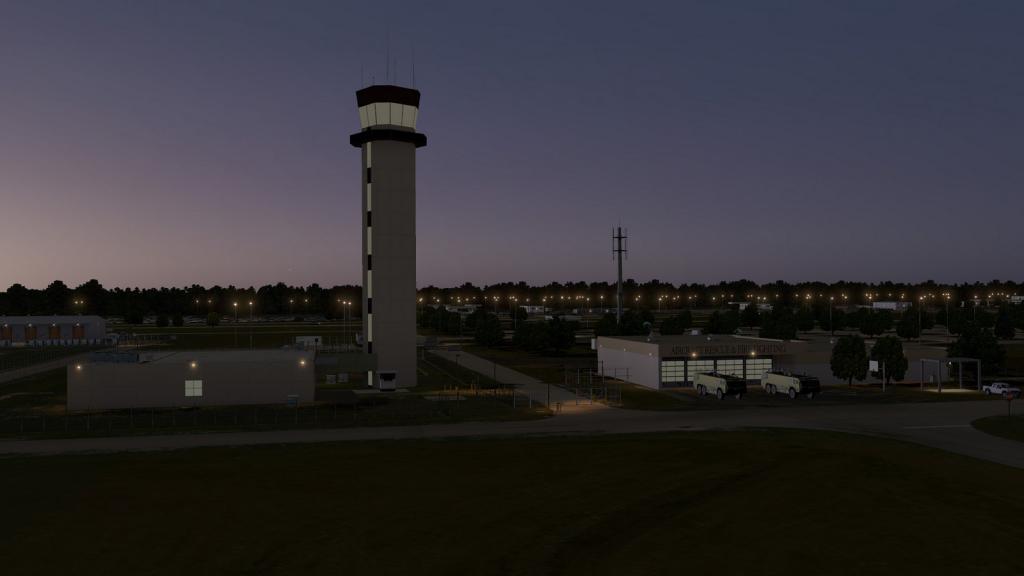
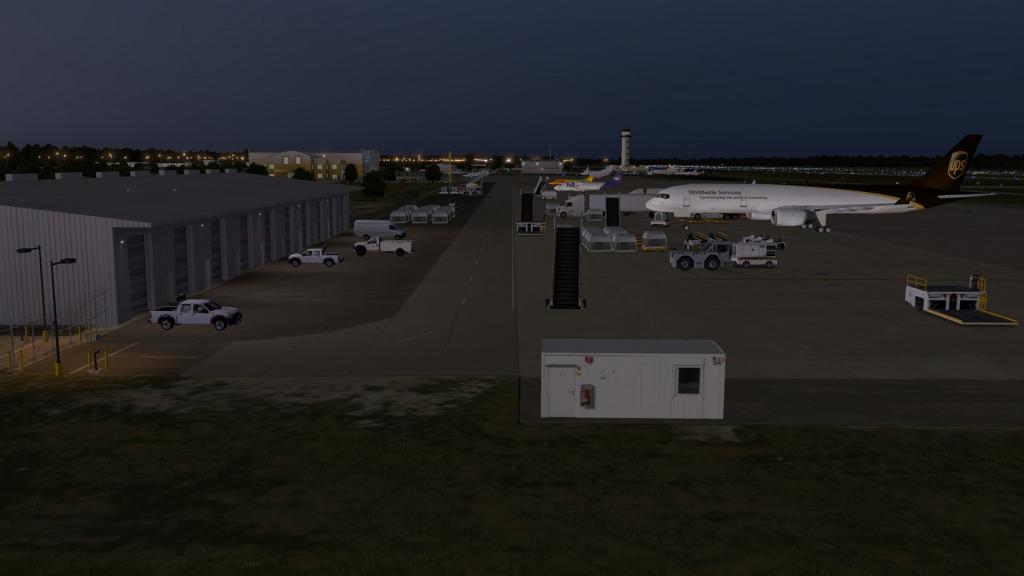
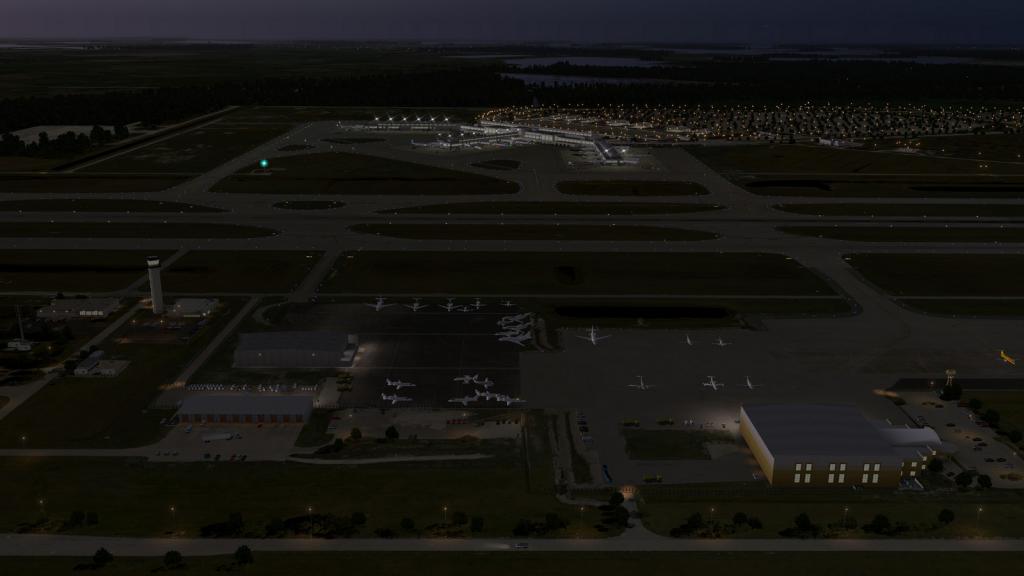
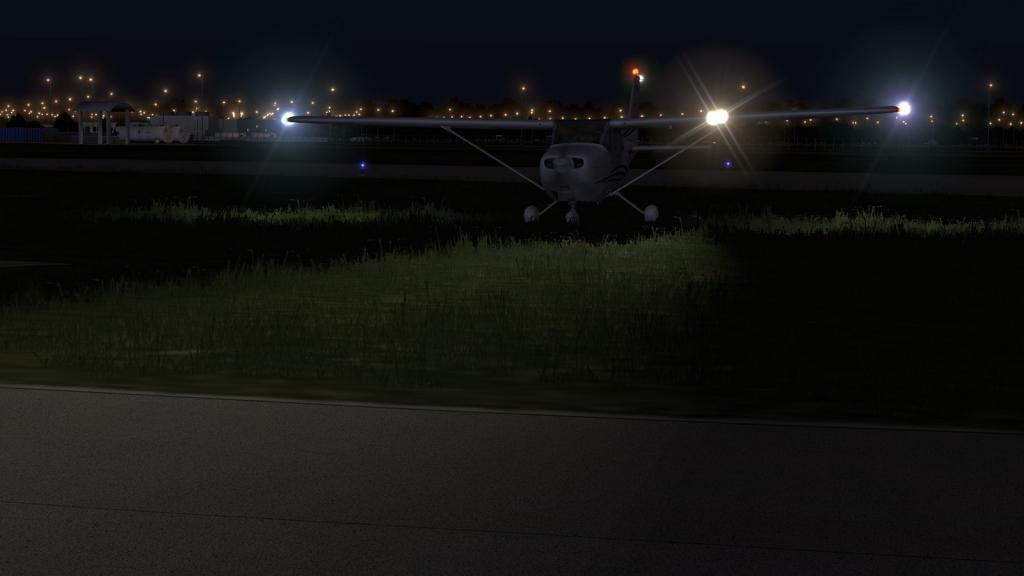
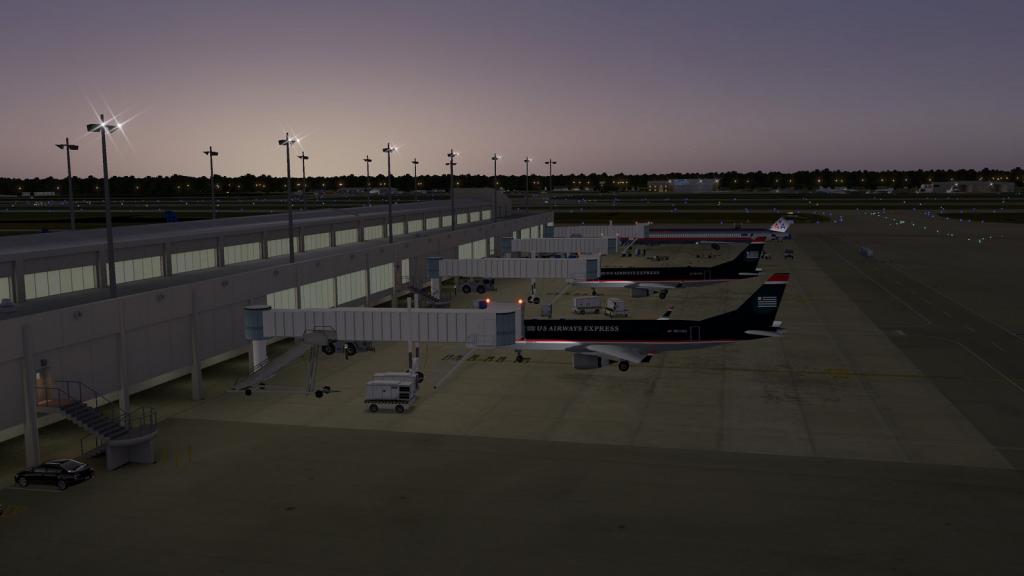
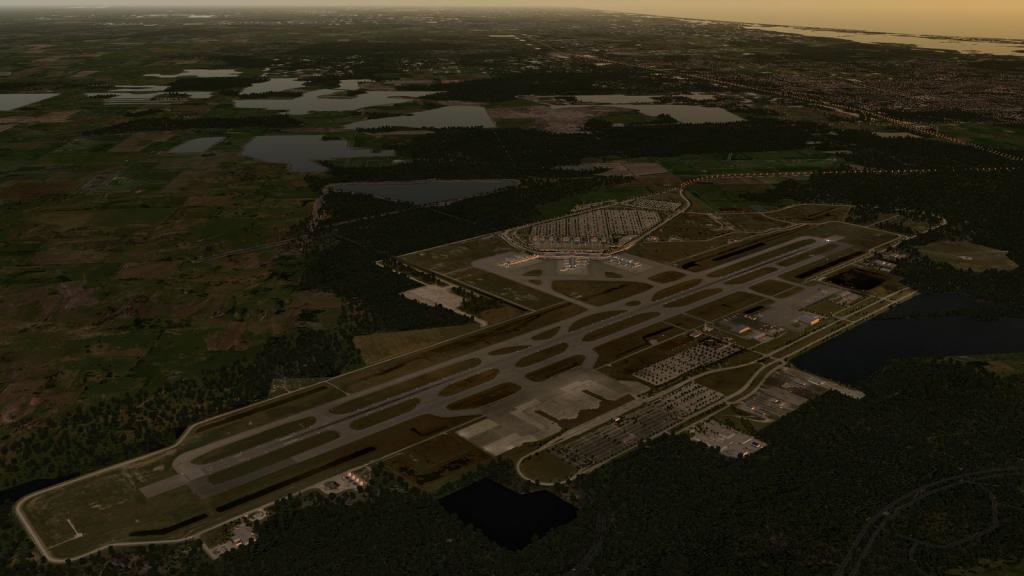
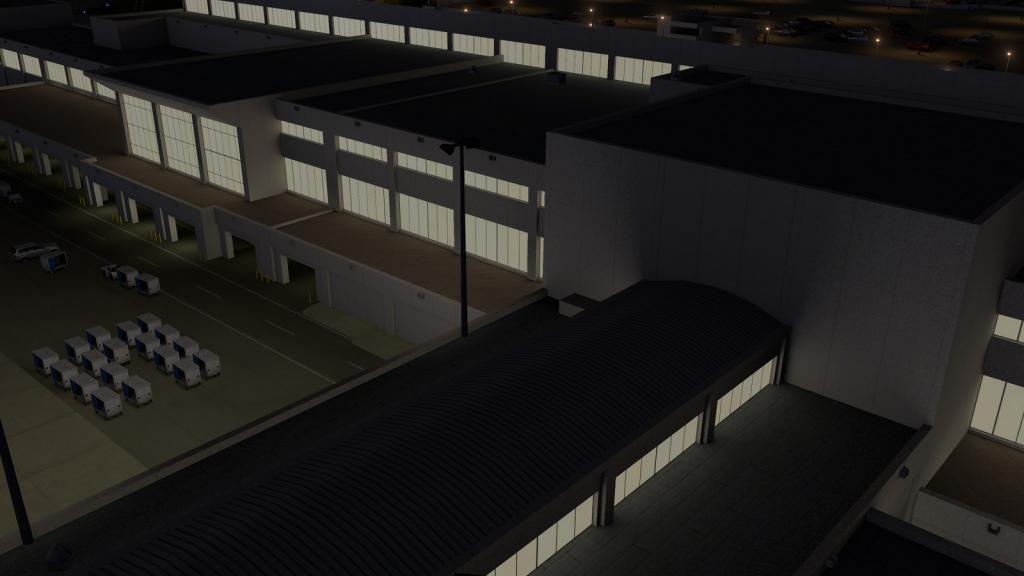
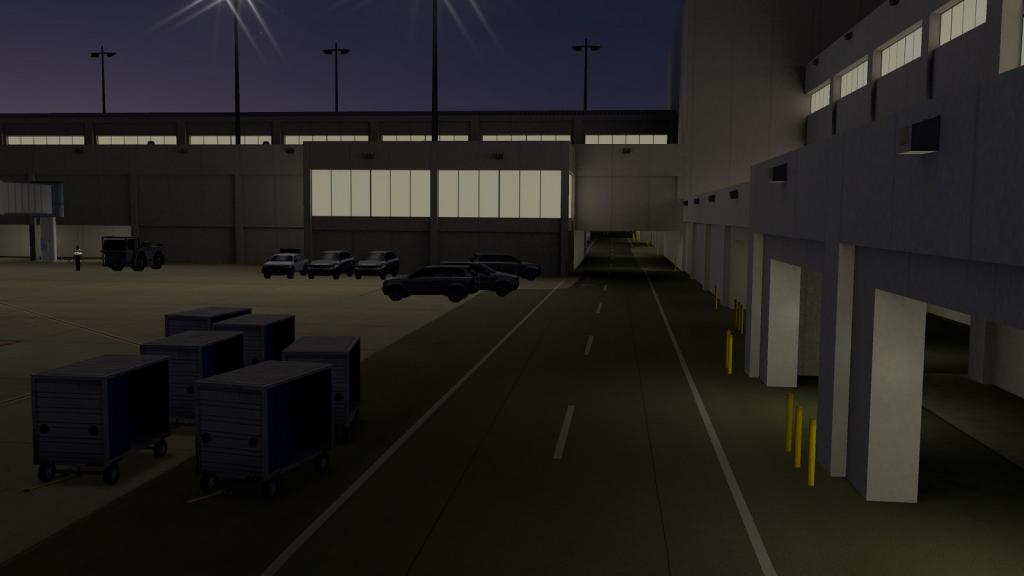
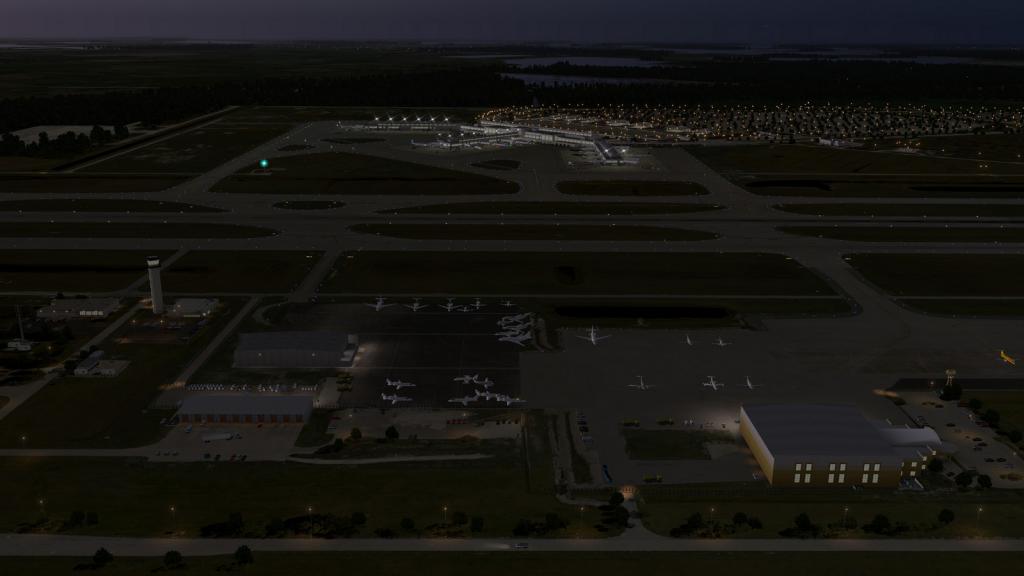
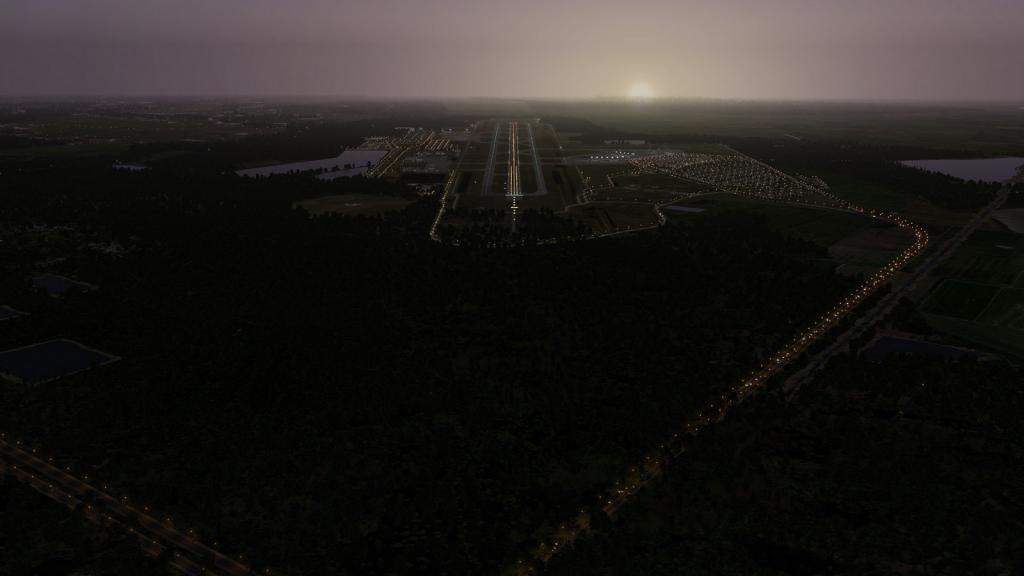

Aircraft Profile : Sud Aviation SE 210 Caravelle by Heinz Dzuirowitz and Michael Wilson
in Classic Aircraft Reviews
Posted
Strangely enough no, Air Inter was the domestic airline in France at the time, so that is the default livery.